TM_F7_01_06Aug2008 TM.F7.01
User Manual: TM.F7.01
Open the PDF directly: View PDF ![]() .
.
Page Count: 255 [warning: Documents this large are best viewed by clicking the View PDF Link!]
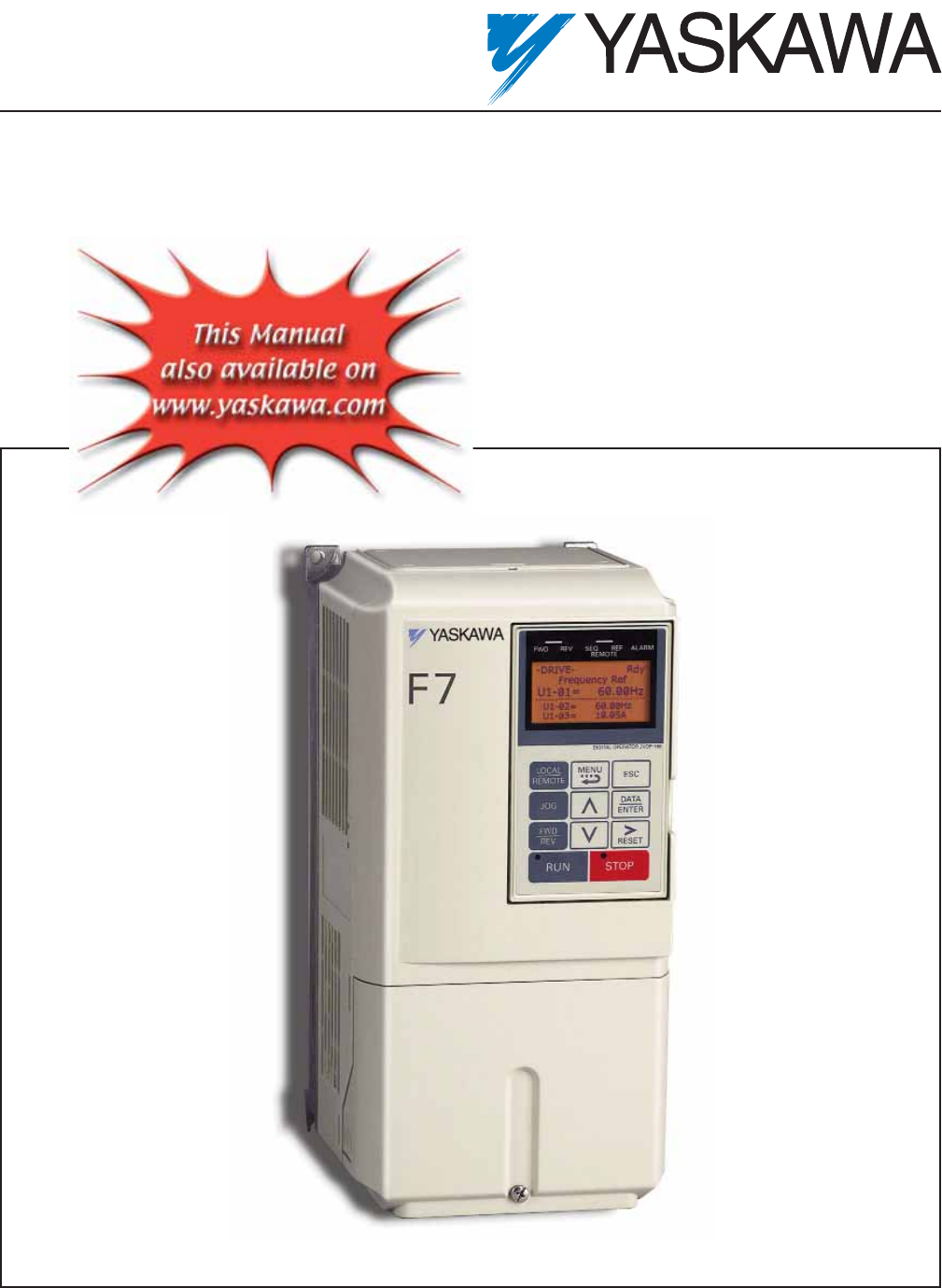
F7 Drive
User Manual
Model: CIMR-F7U Document Number: TM.F7.01
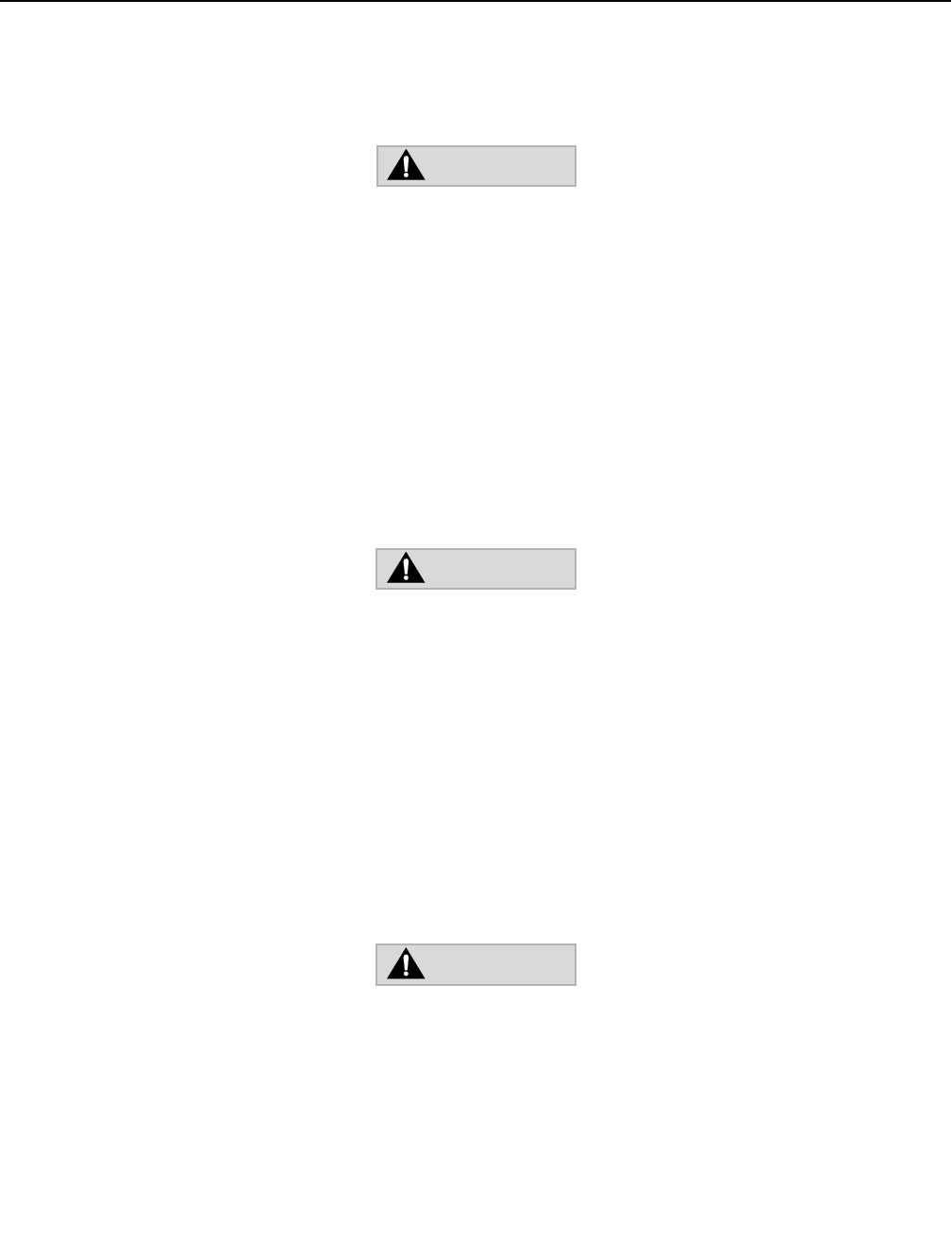
i
Warnings and Cautions
This Section provides warnings and cautions pertinent to this product, that if not
heeded, may result in personal injury, fatality, or equipment damage. Yaskawa is
not responsible for consequences of ignoring these instructions.
YASKAWA manufactures component parts that can be used in a wide variety of industrial applications. The selection and
application of YASKAWA products remain the responsibility of the equipment designer or end user. YASKAWA accepts no
responsibility for the way its products are incorporated into the final system design. Under no circumstances should any
YASKAWA product be incorporated into any product or design as the exclusive or sole safety control. Without exception, all
controls should be designed to detect faults dynamically and fail safely under all circumstances. All products designed to
incorporate a component part manufactured by YASKAWA must be supplied to the end user with appropriate warnings and
instructions as to that part’s safe use and operation. Any warnings provided by YASKAWA must be promptly provided to the
end user. YASKAWA offers an express warranty only as to the quality of its products in conforming to standards and
specifications published in the YASKAWA manual. NO OTHER WARRANTY, EXPRESS OR IMPLIED, IS OFFERED.
YASKAWA assumes no liability for any personal injury, property damage, losses, or claims arising from misapplication of its
products.
•Read and understand this manual before installing, operating, or servicing this Drive. All warnings, cautions, and
instructions must be followed. All activity must be performed by qualified personnel. The Drive must be installed according
to this manual and local codes.
•Do not connect or disconnect wiring while the power is on. Do not remove covers or touch circuit boards while the power is
on. Do not remove or insert the digital operator while power is on.
•Before servicing, disconnect all power to the equipment. The internal capacitor remains charged even after the power supply
is turned off. The charge indicator LED will extinguish when the DC bus voltage is below 50Vdc. To prevent electric shock,
wait at least five minutes after all indicators are OFF and measure DC bus voltage level to confirm safe level.
•Do not perform a withstand voltage test on any part of the unit. This equipment uses sensitive devices and may be damaged
by high voltage.
•The Drive is suitable for circuits capable of delivering not more than 100,000 RMS symmetrical Amperes, 240Vac
maximum (200V Class) and 480Vac maximum (400V Class). Install adequate branch circuit short circuit protection per
applicable codes. Failure to do so may result in equipment damage and/or personal injury. Refer to Appendix E for further
details.
•Do not connect unapproved LC or RC interference suppression filters, capacitors, or overvoltage protection devices to the
output of the Drive. These devices may generate peak currents that exceed Drive specifications.
WARNING
WARNING
WARNING

ii
•To avoid unnecessary fault displays caused by contactors or output switches placed between Drive and motor, auxiliary
contacts must be properly integrated into the control logic circuit.
•YASKAWA is not responsible for any modification of the product made by the user; doing so will void the warranty. This
product must not be modified.
•Verify that the rated voltage of the Drive matches the voltage of the incoming power supply before applying power.
•To meet CE directives, proper line filters and proper installation are required.
•Some drawings in this manual may be shown with protective covers or shields removed, to describe details. These must be
replaced before operation.
•Observe electrostatic discharge procedures when handling circuit boards to prevent ESD damage.
•The equipment may start unexpectedly upon application of power. Clear all personnel from the Drive, motor, and machine
area before applying power. Secure covers, couplings, shaft keys, and machine loads before energizing the Drive.
•Please do not connect or operate any equipment with visible damage or missing parts. The operating company is responsible
for any injuries or equipment damage resulting from failure to heed the warnings in this manual.
Intended Use
Drives are intended for installation in electrical systems or machinery.
The Drives are designed and manufactured in accordance with applicable UL and cUL standards, and CE directives.
For use in the European Union, the installation in machinery and systems must conform to the following product standards of
the Low Voltage Directive:
EN 50178: 1997-10, Electronic Equipment for Use in Power Installations
EN 60201-1: 1997-12 Machine Safety and Equipping with Electrical Devices
Part 1: General Requirements (IEC 60204-1:1997)
EN 61010: 1997-11 Safety Requirements for Information Technology Equipment
(IEC 950:1991 + A1:1992 + A2:1993 + A3:1995 + A4:1996, modified)
The F7 series Drives comply with the provisions of the Low Voltage Directive 73/23/EEC as amended by 93/68/EEC. These
Drives conform to the following standard: EN 50178: 1997-10.
Your supplier or Yaskawa representative must be contacted when using leakage current circuit breaker in conjunction with
frequency inverters.
In certain systems it may be necessary to use additional monitoring and safety devices in compliance with the relevant safety
and accident prevention regulations. The frequency inverter hardware must not be modified.
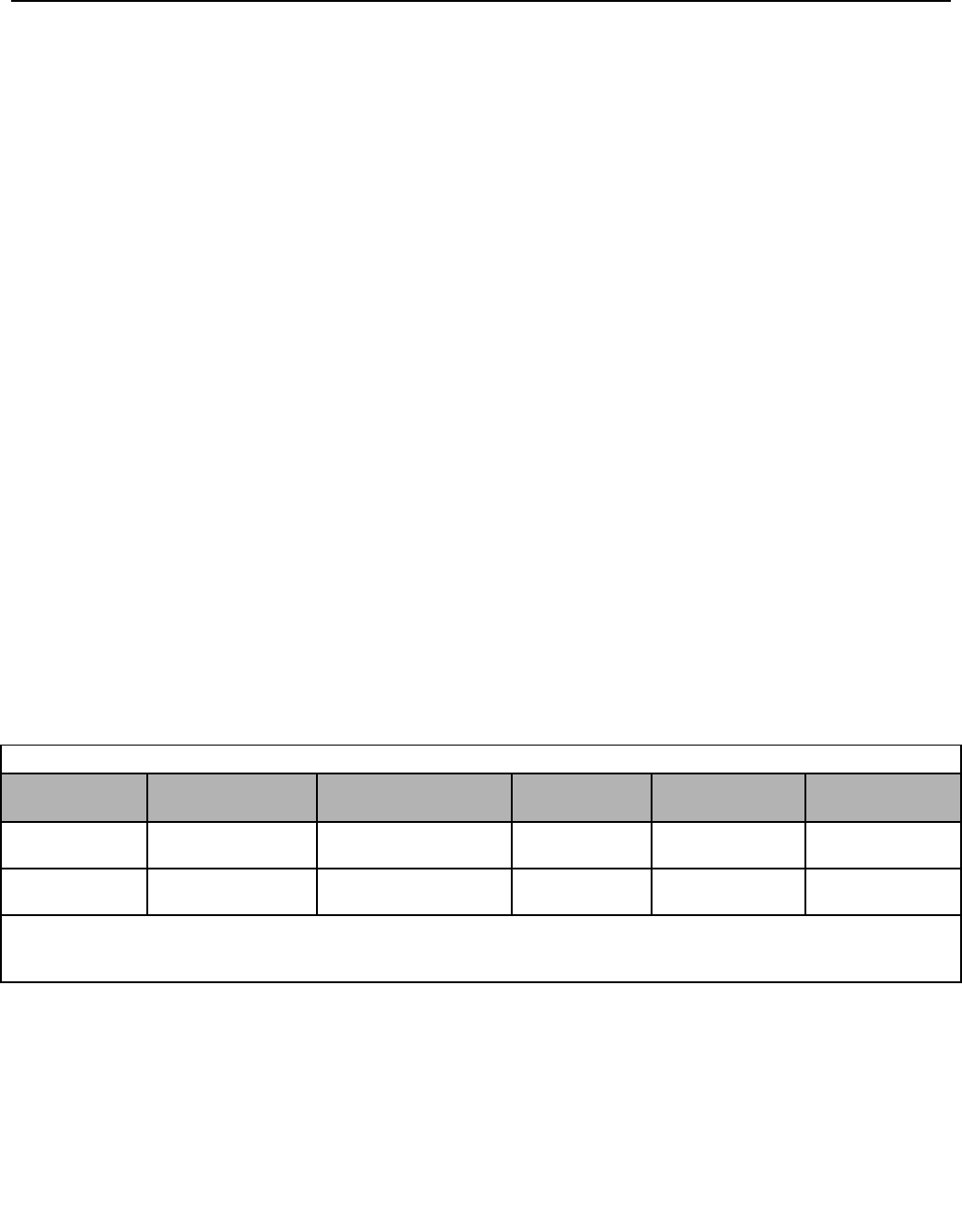
iii
Introduction
This section describes the applicability of the manual.
This manual is applicable to F7 Drives defined by model numbers of CIMR-F7UFFFF. This manual reflects the Software
Version 3020.
The F7 Drive is a Pulse Width Modulated Drive for AC 3-Phase induction motors. This type of Drive is also known as an
Adjustable Frequency Drive, Variable Frequency Drive, AC Drive, AFD, ASD, VFD, VSD, and Inverter. In this manual, the
F7 Drive will be referred to as the “Drive”.
The LCD keypad/operator is equipped with local/remote functions, copy feature, 7 language choices, and 5 lines of display
with 16 characters per line. User parameter settings can be recovered at any time via “user initialization” when enabled.
Optional Drive Wizard software allows upload/download, as well as graphing and monitoring of Drive parameters from a PC
for ease of Drive management.
This manual may describe trademarked equipment, which is the property of other companies, who are the registered owners.
Other Documents and Manuals are available to support special use or installation of this product. These documents may be
provided with the product or upon request. Contact Yaskawa Electric America, Inc. as required. Documents may include the
following:
TM.F7.01…Manual included on CD ROM with product
TM.F7.02…Programming Manual included on CD ROM with product
DriveWizard...Software and Manual…Included on CD ROM with product
Option Instructions… Included on CD ROM with product
This manual is subject to change as product improvements occur. The latest version of the manual can be obtained from the
Yaskawa website: www.yaskawa.com. The date shown on the rear cover is changed when revisions are made. The latest ver-
sion of Drive software is also shown.
The Drive’s capacity is categorized based on two types of load characteristics: Heavy Duty and Normal Duty. See Table i.1
below for the differences between Heavy Duty and Normal Duty.
This manual references the various Drive capacities according to its model number CIMR-F7UFFFF. See Drive
Output Specifications Table i.2 and Table i.3 on the following pages for rated capacities and Drive specifications.
Table i.1 Drive Duty Selection
Parameter
C6-01 Rated Output
Current Overload
Capacity Current Limit Carrier
Frequency Maximum Output
Frequency
0: Heavy Duty
(default)
Standard rating
(varies by model*) 150% for 1 min. 150% Low
(2kHz**) 300Hz
2: Normal Duty Extended rating
(varies by model*)
Approx. 110% for 1 min.
(varies by model*) 120% High
(varies by model*) 400Hz
* See Drive Specifications
** Software version VSF103021 and higher allows the carrier frequency to be increased while in HD (C6-01=0). The continuous current
and overload are automatically reduced to the levels indicated in Table 5.1.
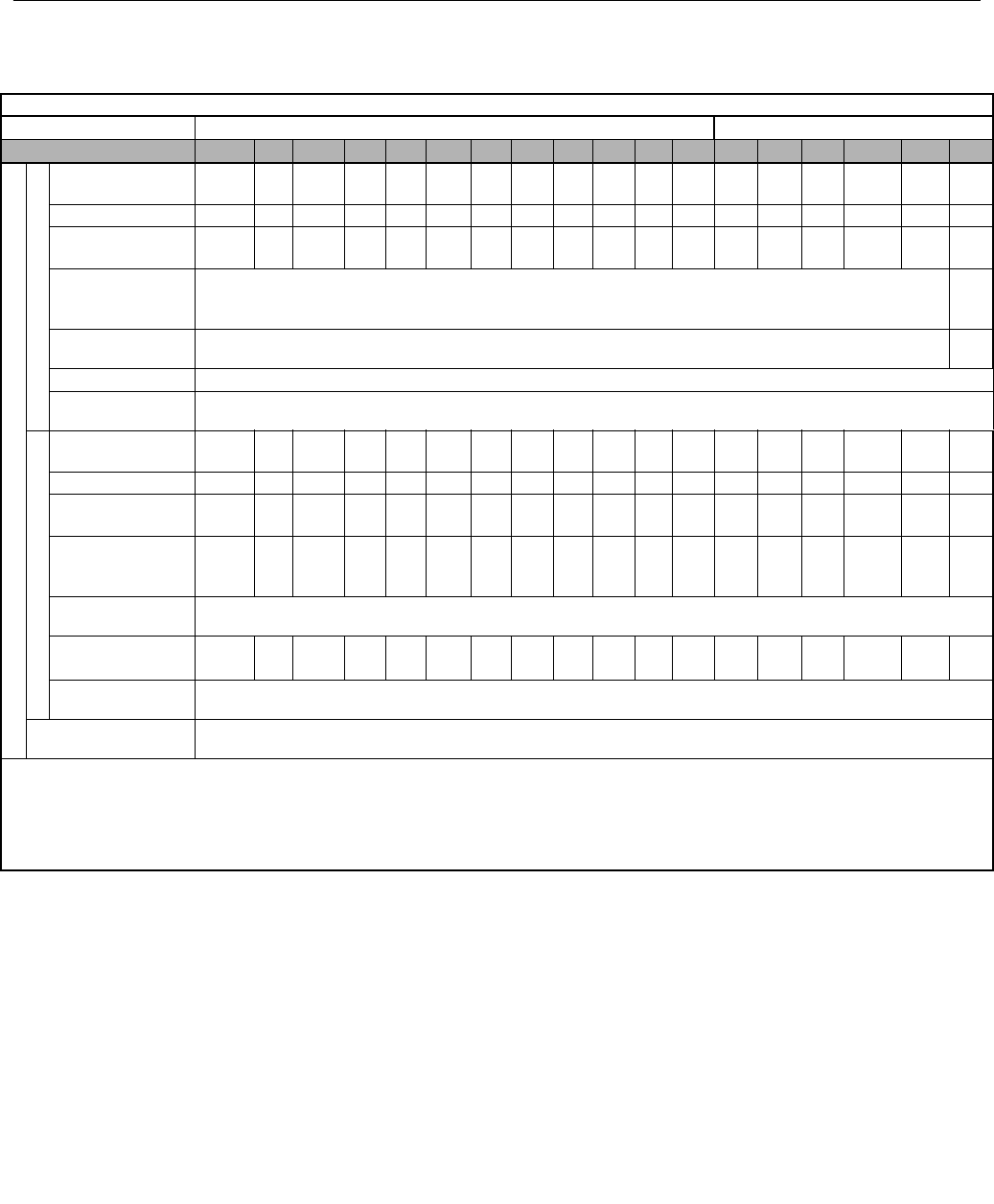
iv
Drive Output Specifications
The standard Drive specifications are listed in the following tables.
208-240Vac
Table i.2 208-240Vac Drive Specifications
208-240Vac 208-230Vac
Model Number CIMR-F7U 20P4 20P7 21P5 22P2 23P7 25P5 27P5 2011 2015 2018 2022 2030 2037 2045 2055 2075 2090 2110*5
Rated output
capacity (kVA) 1.2 1.6 2.7 3.7 5.7 8.8 12.0 17.0 22.0 27.0 32.0 44.0 55.0 69.0 82.0 110.0 130.0 140.0
Horsepower*2 0.5/0.75 1 2 3 5 7.5 10 15 20 25 30 40 50 60 75 100 125 150
Rated output
current (A) 3.2 4.2 7.0 9.6 15.2 23.0 31.0 45.0 58.0 71 85.0 115.0 145.0 180.0 215 283.0 346.0 360.0
Overload capacity*3
(% of rated output
current for 60 sec.)
150 138*3
Current limit (% of
rated output current) 150 138*3
Carrier frequency*4 2kHz
Maximum output
frequency 300.0Hz
Rated output
capacity (kVA) 1.4 1.8 3.0 4.1 6.4 8.8 12.0 18.0 23.0 29.0 34.0 44.0 62.0 73.0 82.0 120.0 140.0 160.0
Horsepower*2 0.5/0.75 1 2 3 5 7.5 10 15 20 25 30 40 50/60 75 75 100/125 150 150
Rated output
current (A) 3.6 4.6 7.8 10.8 16.8 23.0 31.0 46.2 59.4 74.8 88.0 115.0 162.0 192.0 215 312.0 360.0 415.0
Overload capacity*3
(% of rated output
current for 60 sec.)
107 107 108 107 107 120 120 117 117 114 116 120 107 113 120 109 115 120
Current limit (% of
rated output current) 120
Carrier frequency
(kHz)*5 10 1010 81015158101010105 5 8 2 2 2
Maximum output
frequency 400.0Hz
Maximum output voltage 3-phase; 200, 208, 220, 230, or 240Vac
(Proportional to input voltage)
*1 The difference between Heavy Duty ratings and the Normal Duty ratings for the Drive are the rated input and output current, overload capacity, carrier frequency, current limit, and
maximum output frequency. Parameter C6-01 must be set to value of “0” for Heavy Duty ratings and “2” for Normal Duty ratings. Factory default is Heavy Duty (C6-01=0).
*2 Horsepower ratings are based on 230V or 460V NEC Table 430.150. The maximum applicable motor output is given for a standard 4-pole motor. When selecting the actual motor
and Drive, be sure that the Drive's rated output current is appropriate for the motor's rated current.
*3 Model 2110 has an overload rating of 138% of rated output current for 60 seconds and a current limit rating of 138%. Models 4220 and 4300 have an overload rating of 150% of
rated output current for 45 seconds and a current limit rating of 150%.
*4 When setting the carrier frequency above the factory default, the Drive must be derated.
*5 Heavy Duty ratings for models 2110, 4220 and 4300 are effective in software version VSF103021 and higher.
Output ratings
Heavy Duty
*1
Normal Duty
*1
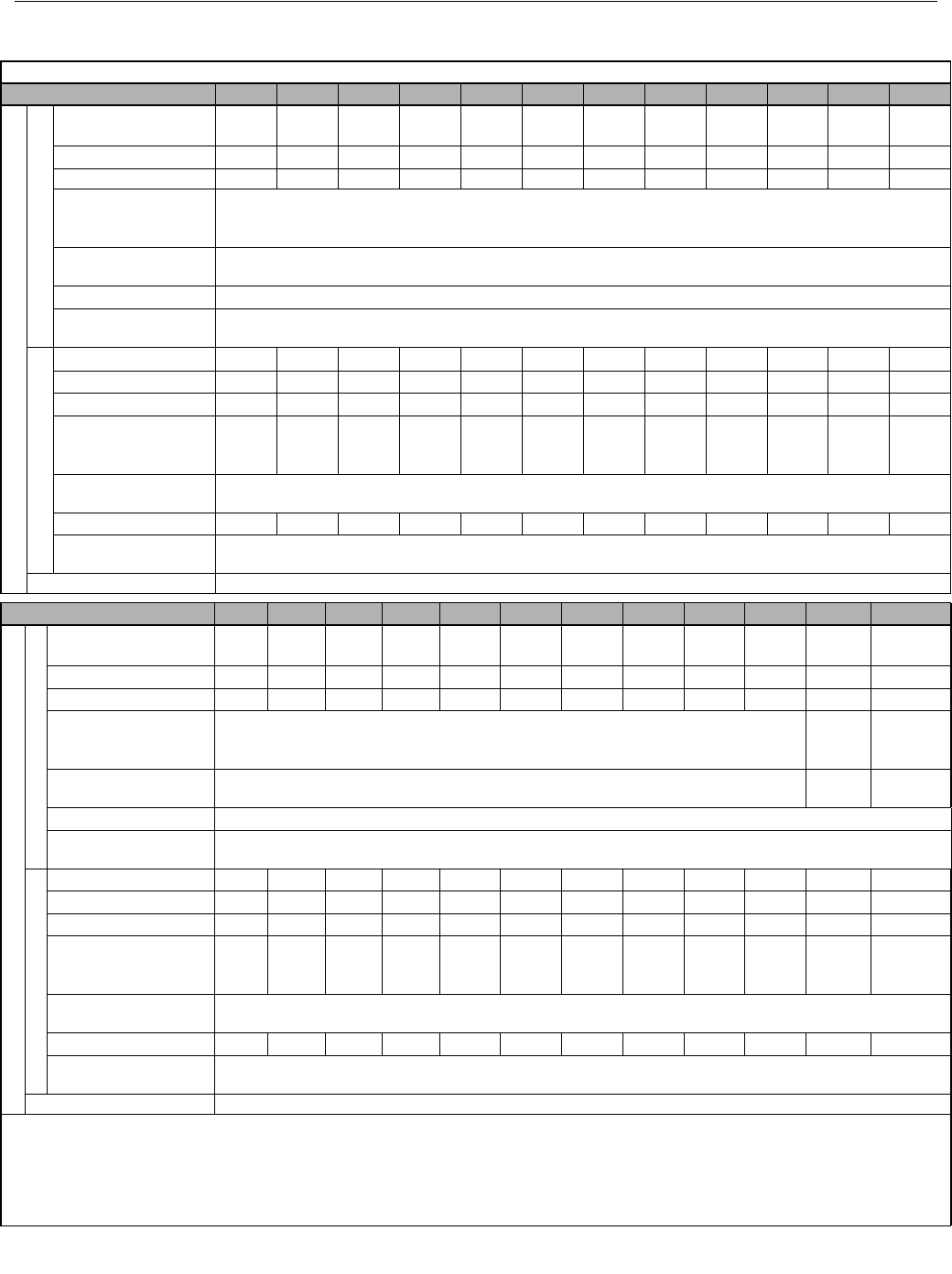
v
480Vac
Table i.3 480Vac Drive Specifications
Model Number CIMR-F7U 40P4 40P7 41P5 42P2 43P7 44P0 45P5 47P5 4011 4015 4018 4022
Rated output
capacity (kVA) 1.4 1.6 2.8 4.0 5.8 6.6 9.5 13.0 18.0 24.0 30.0 34.0
Horsepower*2 0.5/0.75 1 1.5/2 3 5 - 7.5 10 15 20 25 30
Rated output current (A) 1.8 2.1 3.7 5.3 7.6 8.7 12.5 17.0 24.0 31.0 39.0 45.0
Overload capacity*3
(% of rated output
current for 60 sec.)
150
Current limit (% of rated
output current) 150
Carrier frequency*4 2kHz
Maximum output
frequency 300.0Hz
Rated output capacity (kVA) 1.4 1.6 2.8 4.0 5.8 6.6 9.5 13.0 21.0 26.0 30.0 38.0
Horsepower*2 0.5/0.75 1 1.5/2 3 5 - 7.5 10 15/20 25 30 30
Rated output current (A) 1.8 2.1 3.7 5.3 7.6 8.7 12.5 17.0 27.0 34.0 40.0 50.4
Overload capacity*3
(% of rated output
current for 60 sec.)
120 120 120 120 120 120 120 120 107 109 117 107
Current limit (% of rated
output current) 120
Carrier frequency (kHz)*5 15 15 15 15 15 15 15 15 8 10 10 10
Maximum output
frequency 400.0Hz
Maximum output voltage 3-phase; 380, 400, 415, 440, 460, or 480Vac (Proportional to input voltage)
Model Number CIMR-F7U 4030 4037 4045 4055 4075 4090 4110 4132 4160 4185 4220 4300
Rated output capacity
(kVA) 46.0 57.0 69.0 85.0 110.0 140.0 160.0 200.0 230.0 280.0 315.0 450.0
Horsepower*2 40 50 60 75 100 125/150 - 200 250 300 350 500
Rated output current (A) 60.0 75.0 91.0 112.0 150.0 180.0 216.0 260.0 304.0 370.0 414.0 590.0
Overload capacity*3
(% of rated output
current for 60 sec.)
150 150*3 150*3
Current limit (% of rated
output current) 150 150*3 150*3
Carrier frequency*4 2kHz
Maximum output
frequency 300.0Hz
Rated output capacity (kVA) 51.0 59.0 73.0 95.0 120.0 140.0 180.0 200.0 230.0 315.0 390.0 510.0
Horsepower*2 40/50 60 75 100 125 150 200 - 250 300/350 400/450 500+
Rated output current (A) 67.2 77.0 96.0 125.0 156.0 180.0 240.0 260.0 304.0 414.0 515.0 675.0
Overload capacity*3
(% of rated output
current for 60 sec.)
107 117 114 108 115 120 108 120 120 107 118 120
Current limit (% of rated
output current) 120
Carrier frequency (kHz)*5 88855855522 2
Maximum output
frequency 400.0Hz
Maximum output voltage 3-phase, 380, 400, 415, 440, 460 or 480Vac (Proportional to input voltage)
*1 The difference between Heavy Duty ratings and the Normal Duty ratings for the Drive are the rated input and output current, overload capacity, carrier frequency, current limit, and
maximum output frequency. Parameter C6-01 must be set to value of “0” for Heavy Duty ratings and “2” for Normal Duty ratings. Factory default is Heavy Duty (C6-01=0).
*2 Horsepower ratings are based on 230V or 460V NEC Table 430.150. The maximum applicable motor output is given for a standard 4-pole motor. When selecting the actual motor
and Drive, be sure that the Drive's rated output current is appropriate for the motor's rated current.
*3 Model 2110 has an overload rating of 138% of rated output current for 60 seconds and a current limit rating of 138%. Models 4220 and 4300 have an overload rating of 150% of
rated output current for 45 seconds and a current limit rating of 150%.
*4 When setting the carrier frequency above the factory default, the Drive must be derated.
*5 Heavy Duty ratings for models 2110, 4220 and 4300 are effective in software version VSF103021 and higher.
O
utput rat
i
ngs
Heavy Duty
*
1
Normal Duty
*
1
O
utput rat
i
ngs
Heavy Duty
*
1
Normal Duty
*
1

vi
Notes:
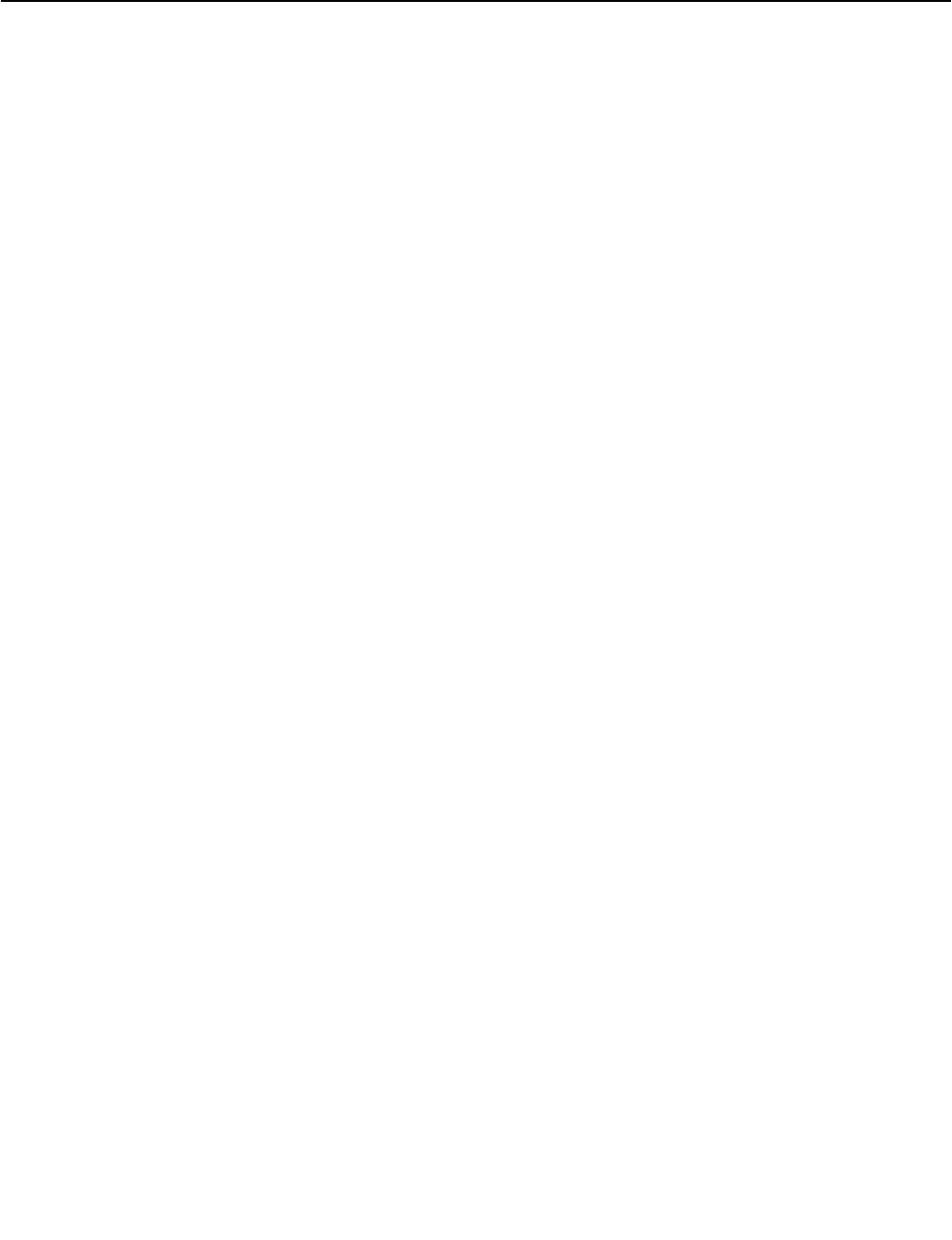
Table of Contents vii
Table of Contents
Warnings and Cautions..................................................................................... i
Introduction ..................................................................................................... iii
Table of Contents........................................................................................... vii
Chapter 1 - Physical Installation ...............................................................................1-1
F7 Model Number, Enclosure, Heat Loss, and Weight.................................1-2
Confirmations upon Delivery.........................................................................1-3
Component Names .......................................................................................1-5
Exterior and Mounting Dimensions ...............................................................1-7
Checking and Controlling the Installation Site ............................................1-11
Installation Orientation and Clearances ......................................................1-12
Removing and Attaching the Terminal Cover .............................................1-13
Removing/Attaching the Digital Operator and Front Cover.........................1-14
Chapter 2 - Electrical Installation..............................................................................2-1
Terminal Block Configuration........................................................................2-2
Wiring Main Circuit Terminals .......................................................................2-3
Control Wiring .............................................................................................2-20
Electromagnetic Compatibility (EMC) .........................................................2-26
Installing and Wiring Option Boards............................................................2-30
Chapter 3 - Digital Operator ......................................................................................3-1
Digital Operator Display ................................................................................3-2
Digital Operator Keys....................................................................................3-3
Drive Mode Indicators ...................................................................................3-4
Drive Main Menus .........................................................................................3-6
Quick Setting Menu (-QUICK-) ...................................................................3-11
Programming Menu (-ADV-) .......................................................................3-12
Example of Changing a Parameter.............................................................3-15

Table of Contents viii
Chapter 4 - Start-Up ................................................................................................... 4-1
Drive Start-Up Preparation ...........................................................................4-2
Drive Start-Up Procedures ...........................................................................4-5
Chapter 5 - Basic Programming ............................................................................... 5-1
Description of Parameter Tables ..................................................................5-2
Control Method .............................................................................................5-2
Speed Command Source .............................................................................5-3
Run Command Source .................................................................................5-4
Stopping Method ..........................................................................................5-5
Accel/Decel Time..........................................................................................5-8
Carrier Frequency.........................................................................................5-9
Preset Reference........................................................................................5-11
Input Voltage Setting ..................................................................................5-12
V/F Pattern .................................................................................................5-12
Motor Setup ................................................................................................5-20
PG Option...................................................................................................5-20
Analog Output Gain ....................................................................................5-21
Motor Overload Fault..................................................................................5-22
Stall Prevention ..........................................................................................5-23
Chapter 6 - Diagnostics & Troubleshooting............................................................ 6-1
Fault Detection .............................................................................................6-2
Alarm Detection ..........................................................................................6-10
Operator Programming Errors (OPE) .........................................................6-15
Auto-Tuning Faults .....................................................................................6-17
Digital Operator COPY Function Faults......................................................6-19
Troubleshooting..........................................................................................6-20
Main Circuit Test Procedure .......................................................................6-28
Drive Date Stamp Information ................................................................... 6-31

Table of Contents ix
Chapter 7 - Maintenance............................................................................................7-1
Periodic Inspection........................................................................................7-2
Preventive Maintenance ...............................................................................7-3
Periodic Maintenance of Parts ......................................................................7-4
Heatsink Cooling Fan Replacement .............................................................7-5
Removing and Mounting the Terminal Card .................................................7-7
Appendix A - Parameters.......................................................................................... A-1
F7 Parameter List ........................................................................................ A-3
F7 Monitor List ........................................................................................... A-38
F7 Fault Trace List ..................................................................................... A-41
F7 Fault History List ................................................................................... A-41
Appendix B - Capacity Related Parameters............................................................ B-1
Drive Capacity Selection.............................................................................. B-2
Parameters Affected by Drive Capacity Setting........................................... B-3
Appendix C - Specifications..................................................................................... C-1
Standard Drive Specifications...................................................................... C-2
Appendix D - Communications ................................................................................ D-1
Using Modbus Communication .................................................................... D-2
Modbus Function Code Details.................................................................... D-8
Modbus Data Tables.................................................................................. D-10
Modbus Self-Diagnosis .............................................................................. D-18

Table of Contents x
Appendix E - Peripheral Devices..............................................................................E-1
Branch Circuit Short Circuit Protection .........................................................E-2
Branch Circuit Overload Protection ............................................................. E-5
Peripheral Devices .......................................................................................E-6
Appendix F - Spare Parts .......................................................................................... F-1
F7 Primary Spare Parts - 208/230/240Vac...................................................F-2
F7 Primary Spare Parts - 480Vac.................................................................F-3
Index...................................................................................................... Index-1
Support Services .................................................................... Inside rear cover

Physical Installation 1 - 1
Chapter 1
Physical Installation
This chapter describes the requirements for receiving and installing the F7 Drive.
F7 Model Number, Enclosure, Heat Loss, and Weight ..... 1-2
Confirmations upon Delivery ............................................. 1-3
Component Names ........................................................... 1-5
Exterior and Mounting Dimensions ................................... 1-7
Checking and Controlling the Installation Site................. 1-11
Installation Orientation and Clearances .......................... 1-12
Removing and Attaching the Terminal Cover.................. 1-13
Removing/Attaching the Digital Operator
and Front Cover .............................................................. 1-14
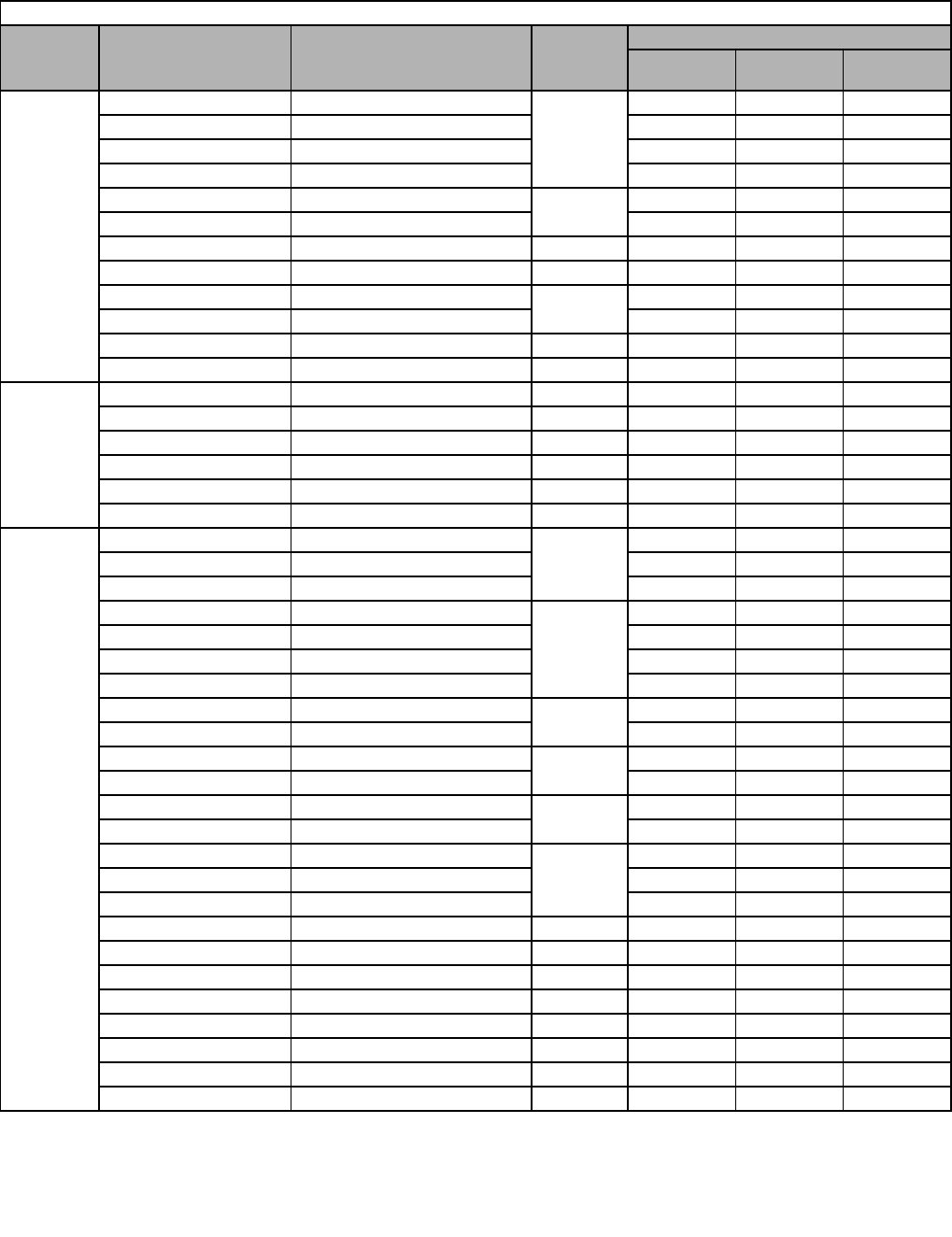
Physical Installation 1 - 2
F7 Model Number, Enclosure, Heat Loss, and Weight
Table 1.1 F7 Model Number and Enclosure Style
Input
Voltage
3-Phase
F7
Model-Number Enclosure Style Weight
lb (kg)
Heat Loss (watts)
Heatsink Internal Total
208-240Vac
CIMR-F7U20P4 NEMA Type 1 (IP20)
6.6 (3.0)
19 39 58
CIMR-F7U20P7 NEMA Type 1 (IP20) 26 42 68
CIMR-F7U21P5 NEMA Type 1 (IP20) 48 50 98
CIMR-F7U22P2 NEMA Type 1 (IP20) 68 59 127
CIMR-F7U23P7 NEMA Type 1 (IP20) 8.8 (4.0) 110 74 184
CIMR-F7U25P5 NEMA Type 1 (IP20) 164 84 248
CIMR-F7U27P5 NEMA Type 1 (IP20) 13.2 (6.0) 219 113 332
CIMR-F7U2011 NEMA Type 1 (IP20) 15.4 (7.0) 357 168 525
CIMR-F7U2015 NEMA Type 1 (IP20) 24.2 (11.0) 416 182 598
CIMR-F7U2018 NEMA Type 1 (IP20) 472 208 680
CIMR-F7U2022 NEMA Type 1 (IP20) 53 (24) 583 252 835
CIMR-F7U2030 NEMA Type 1 (IP20) 59 (27) 883 333 1216
208-230Vac
CIMR-F7U2037 Open Chassis (IP00) 125 (57) 1010 421 1431
CIMR-F7U2045 Open Chassis (IP00) 139 (63) 1228 499 1727
CIMR-F7U2055 Open Chassis (IP00) 189 (86) 1588 619 2207
CIMR-F7U2075 Open Chassis (IP00) 191 (87) 1956 844 2800
CIMR-F7U2090 Open Chassis (IP00) 238 (108) 2194 964 3158
CIMR-F7U2110 Open Chassis (IP00) 330 (150) 2733 1234 3967
480 Vac
CIMR-F7U40P4 NEMA Type 1 (IP20)
6.6 (3.0)
14 39 53
CIMR-F7U40P7 NEMA Type 1 (IP20) 17 41 58
CIMR-F7U41P5 NEMA Type 1 (IP20) 36 48 84
CIMR-F7U42P2 NEMA Type 1 (IP20)
8.8 (4.0)
59 56 115
CIMR-F7U43P7 NEMA Type 1 (IP20) 80 68 148
CIMR-F7U44P0 NEMA Type 1 (IP20) 90 70 160
CIMR-F7U45P5 NEMA Type 1 (IP20) 127 81 208
CIMR-F7U47P5 NEMA Type 1 (IP20) 13.2 (6.0) 193 114 307
CIMR-F7U4011 NEMA Type 1 (IP20) 232 158 390
CIMR-F7U4015 NEMA Type 1 (IP20) 22 (10) 296 169 465
CIMR-F7U4018 NEMA Type 1 (IP20) 389 201 590
CIMR-F7U4022 NEMA Type 1 (IP20) 53 (24) 420 233 653
CIMR-F7U4030 NEMA Type 1 (IP20) 691 298 989
CIMR-F7U4037 NEMA Type 1 (IP20)
88 (40)
801 332 1133
CIMR-F7U4045 NEMA Type 1 (IP20) 901 386 1287
CIMR-F7U4055 NEMA Type 1 (IP20) 1204 478 1682
CIMR-F7U4075 Open Chassis (IP00) 194 (88) 1285 562 1847
CIMR-F7U4090 Open Chassis (IP00) 196 (89) 1614 673 2287
CIMR-F7U4110 Open Chassis (IP00) 224 (102) 1889 847 2736
CIMR-F7U4132 Open Chassis (IP00) 265 (120) 2388 1005 3393
CIMR-F7U4160 Open Chassis (IP00) 352 (160) 2791 1144 3935
CIMR-F7U4185 Open Chassis (IP00) 572 (259) 2636 1328 3964
CIMR-F7U4220 Open Chassis (IP00) 616 (279) 3797 1712 5509
CIMR-F7U4300 Open Chassis (IP00) 891 (404) 5838 2482 8320
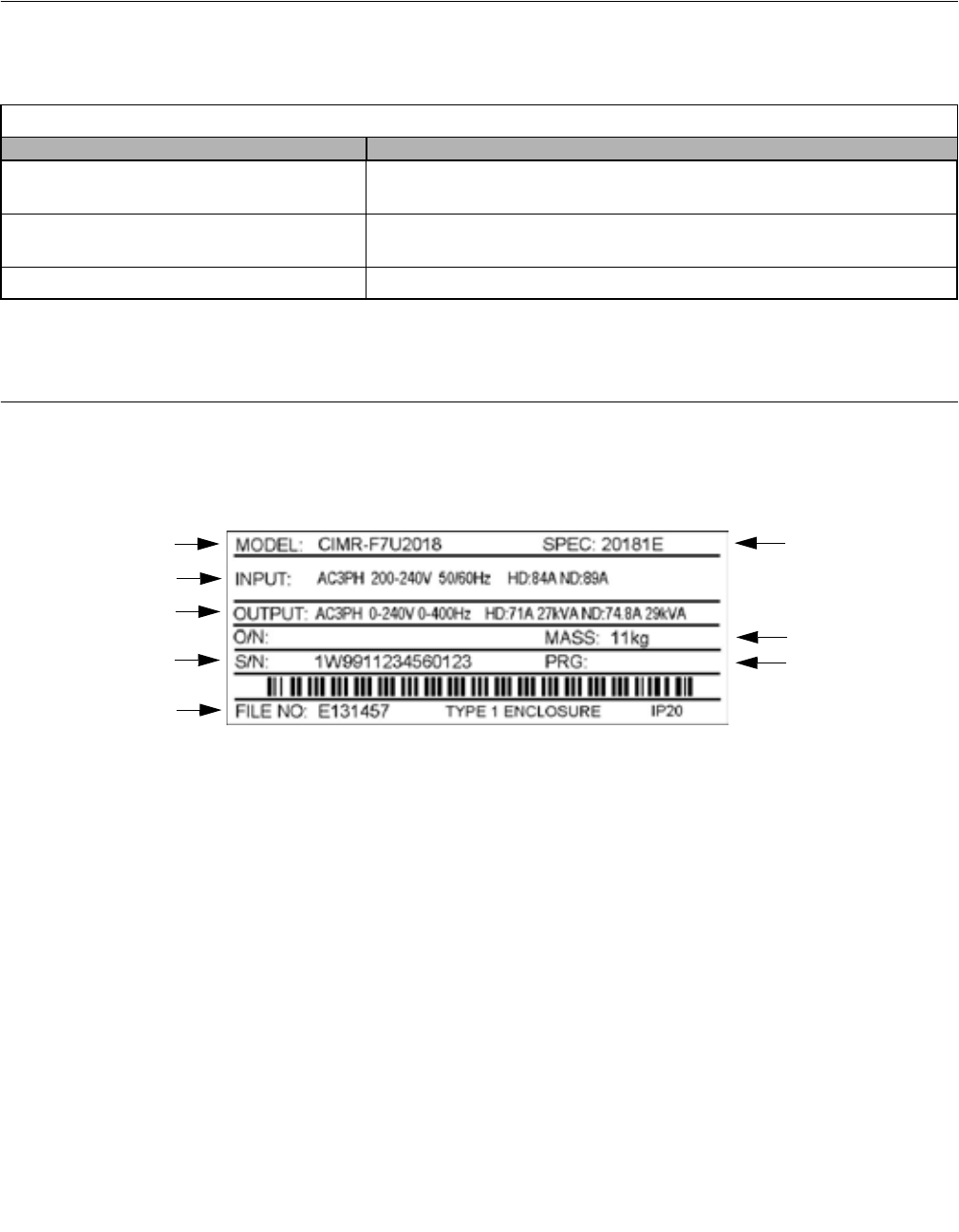
Physical Installation 1 - 3
Confirmations upon Delivery
Receiving Checks
Check the following items as soon as the Drive is received.
If there are any irregularities in the above items, contact the shipping company, or the distributor / representative who sold the
Drive, or a Yaskawa office immediately.
Nameplate Information
A nameplate is attached to the right side of each Drive. The following nameplate is an example for a standard Drive.
Fig 1.1 F7 Drive Nameplate
Table 1.2 Receiving Checks
Item Method
Has the correct model of Drive been delivered? Check the model number on the nameplate on the right side of the Drive.
Reconcile with packing slip and/or order information.
Is the Drive damaged in any way? Inspect the entire exterior of the Drive to see if there are any dents, scratches or other
damage resulting from shipping.
Are any screws or other components loose? Use a screwdriver or other tool to check for tightness.
Input Power Rating
Drive Model Number
Output Power Rating
Serial Number
UL File Number
Drive Spec Number
Weight
HD - Heavy Duty; ND - Normal Duty
Software Number
Note: The Drive Model Number, Drive Spec Number, Software Number, and Serial Number are required to completely identify a Drive.
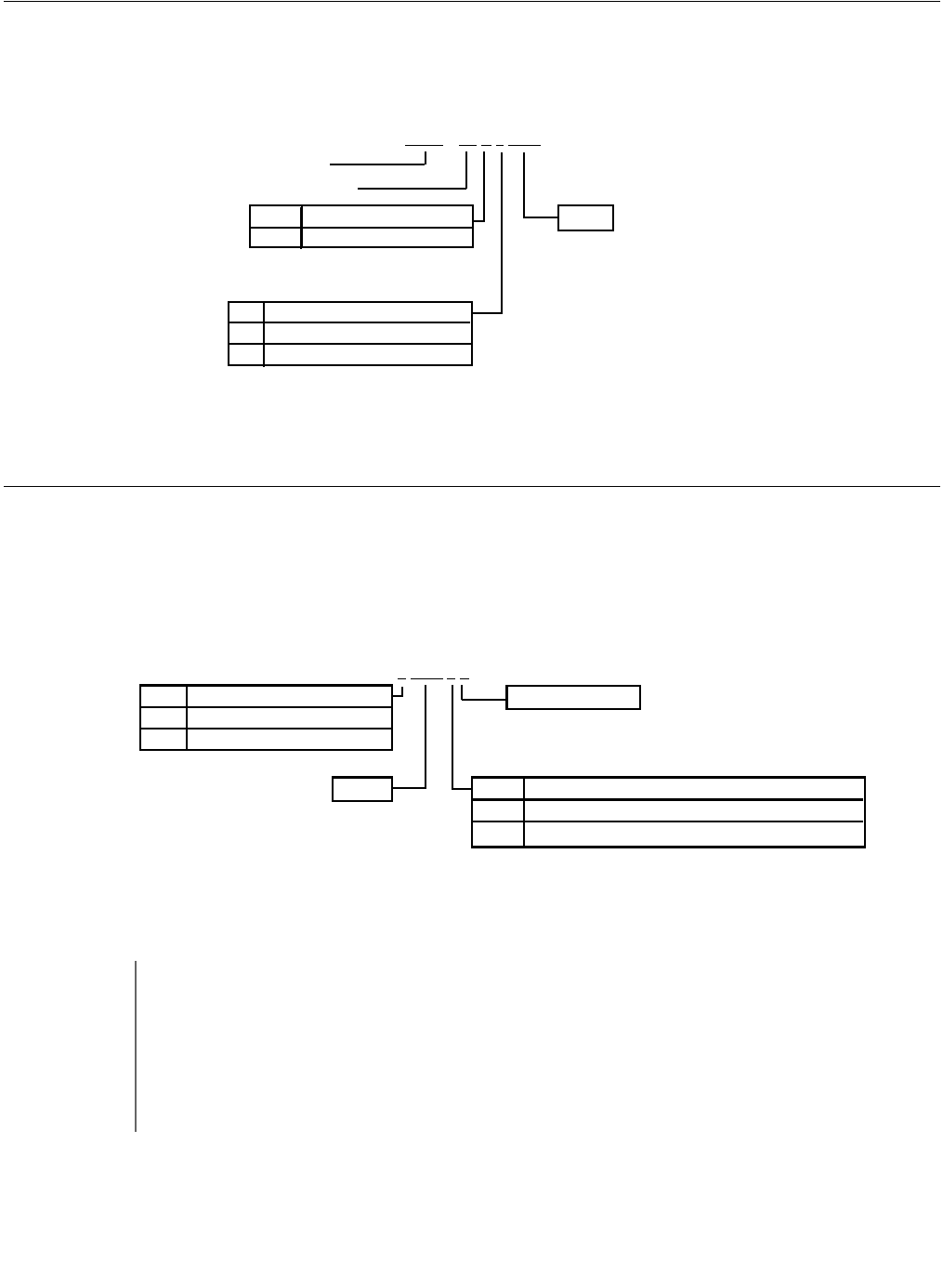
Physical Installation 1 - 4
Drive Model Numbers
The model number on the nameplate indicates the design specification, voltage, and rating of the Drive in alphanumeric codes.
Fig 1.2 Drive Model Number Structure
Drive Enclosure and Revision Code
The SPEC number on the nameplate indicates the voltage, Drive rating, enclosure type, and the revision code of the Drive in
alphanumeric codes. The SPEC number for Drives that have custom features, i.e. CASE software, will have a SPEC number
that indicates the custom features installed.
Fig 1.3 SPEC Number Structure
TERMS
Open Chassis Type (IEC IP00)
Protected so that parts of the human body cannot reach electrically charged parts from the front when the
Drive is mounted in a control panel, also called protected chassis.
NEMA Type 1 (IEC IP20)
The Drive is shielded from the exterior, and can thus be mounted to the interior wall of a building
(not necessarily enclosed in a control panel). The protective structure conforms to the standards of NEMA 1
in the USA. All protective covers (Fig 1.4 and Fig 1.6) must be installed to conform with IEC IP20 and NEMA
Type 1 requirements.
No. Spec
UL Specification
CIMR – F7 U 2 0 2 2
AC Drive
U
No. Voltage
2
4
3-phase, 208-240Vac
3-phase, 480Vac
Rating
F7 Family
2 0 2 2 1 E
No.
2
4
Voltage
3-phase, 208 - 240Vac
3-phase, 480Vac
No. Enclosure Type
0 Open chassis (IEC IP00)
1NEMA Type 1 (IEC IP20)
Hardware Revision
Rating
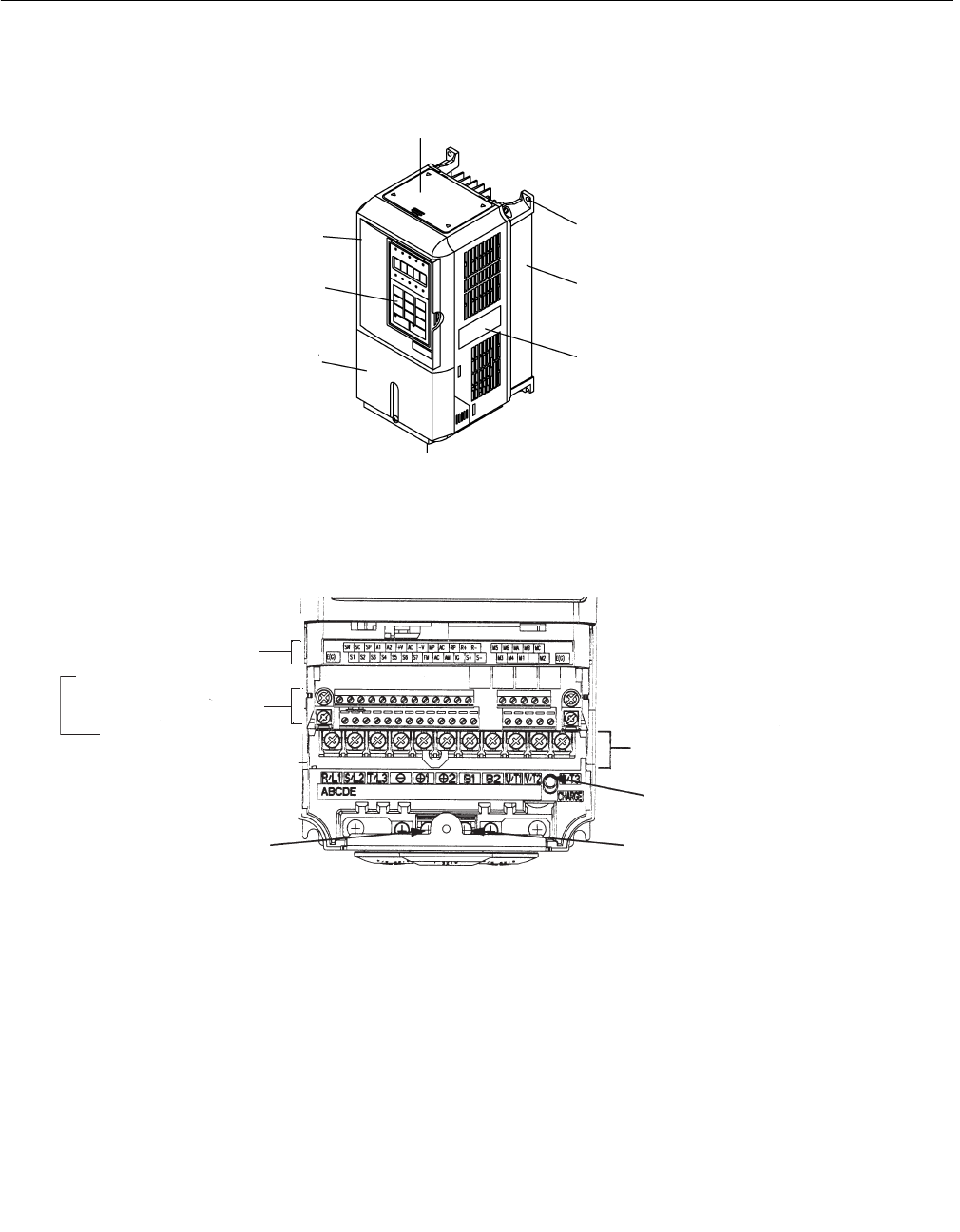
Physical Installation 1 - 5
Component Names
Models CIMR-F7U20P4 thru 2018 and 40P4 thru 4018
The external appearance, component names, and terminal arrangement of the Drive are shown in Fig 1.4 and 1.5.
Fig 1.4 Drive Appearance
Fig 1.5 Terminal Arrangement (Terminal Cover Removed)
Top protective cover
[Required for NEMA Type 1 (IEC IP20)]
Front cover
Digital Operator
Terminal cover
Mounting hole
Die-cast Heat Sink
Nameplate
Bottom protective cover
Ground terminal
Control circuit terminal
layout label
Cont
See Fig. 2.3 for actual
terminal layout
rol circuit terminals
{
Main circuit terminals
Charge indicator
Ground terminal
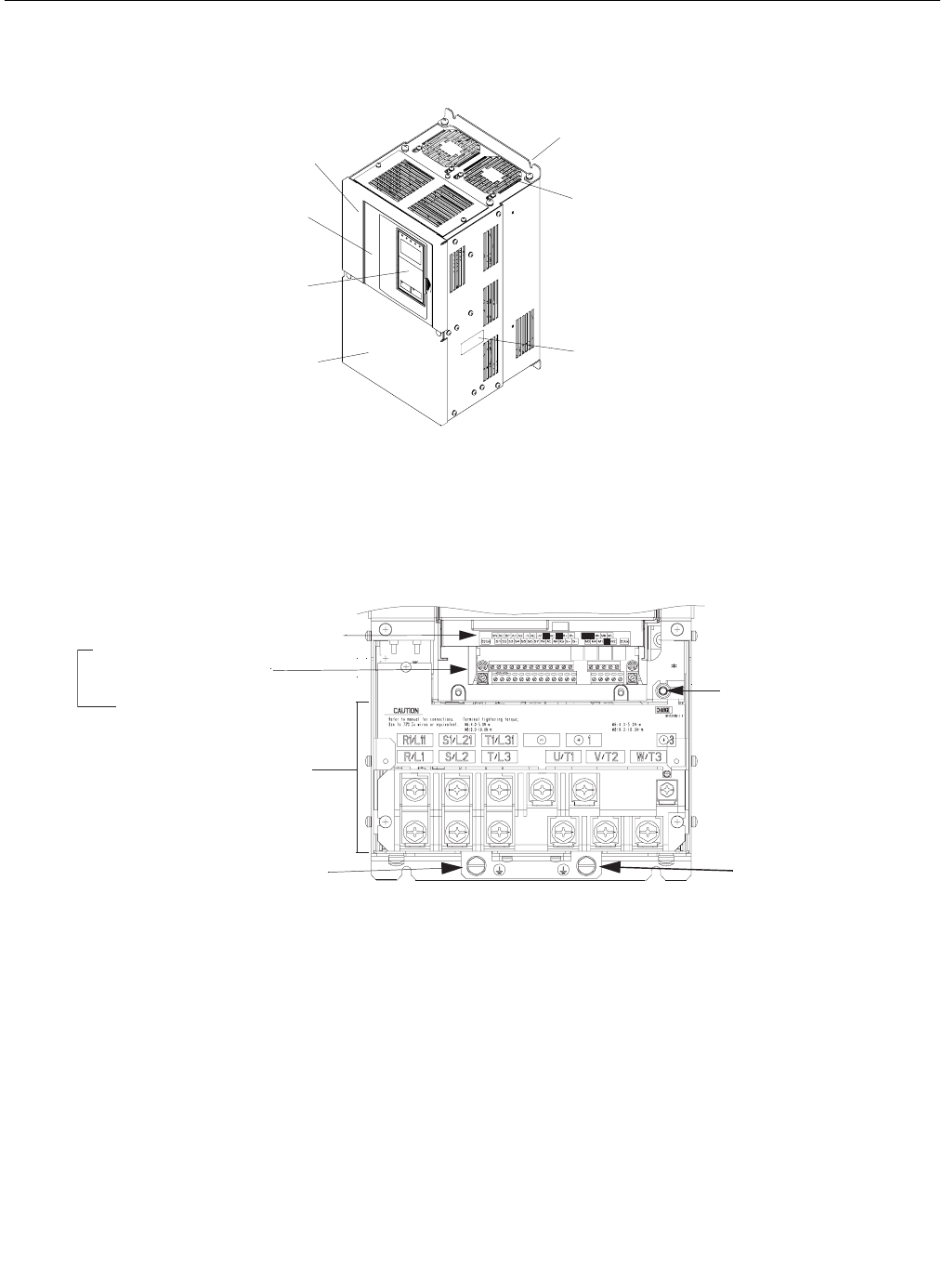
Physical Installation 1 - 6
Models CIMR-F7U2022 thru 2110 and 4030 thru 4300
The external appearance, component names, and terminal arrangement of the Drive are shown in Fig 1.6 and 1.7.
Fig 1.6 Drive Appearance
Fig 1.7 Terminal Arrangement (Terminal Cover Removed)
Mounting holes
Cooling fan
Nameplate
Drive cover
Front cover
Digital Operator
Terminal cover
Mounting holes
Cooling fan
Nameplate
Drive cover
Front cover
Digital Operator
Terminal cover
Charge indicator
Main circuit
terminals
Ground terminal Ground terminal
Control circuit terminal layout label
Control circuit terminals
See Fig. 2.3 for actual
terminal layout
{
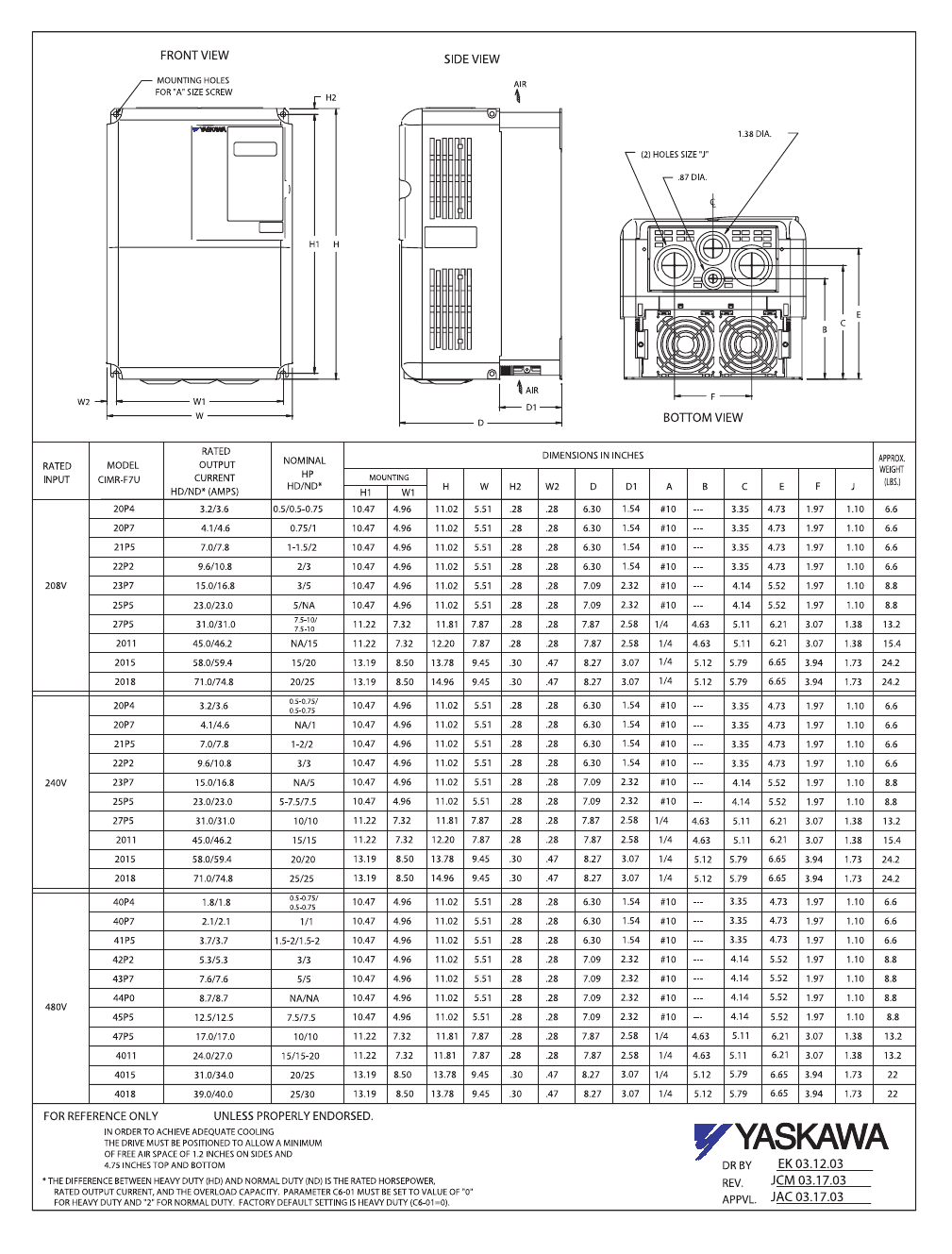
Physical Installation 1 - 7
Exterior and Mounting Dimensions
DIMENSIONS: F7 (NEMA 1) 208-240V (F7U20P4-2018) 480V (F7U40P4-4018)
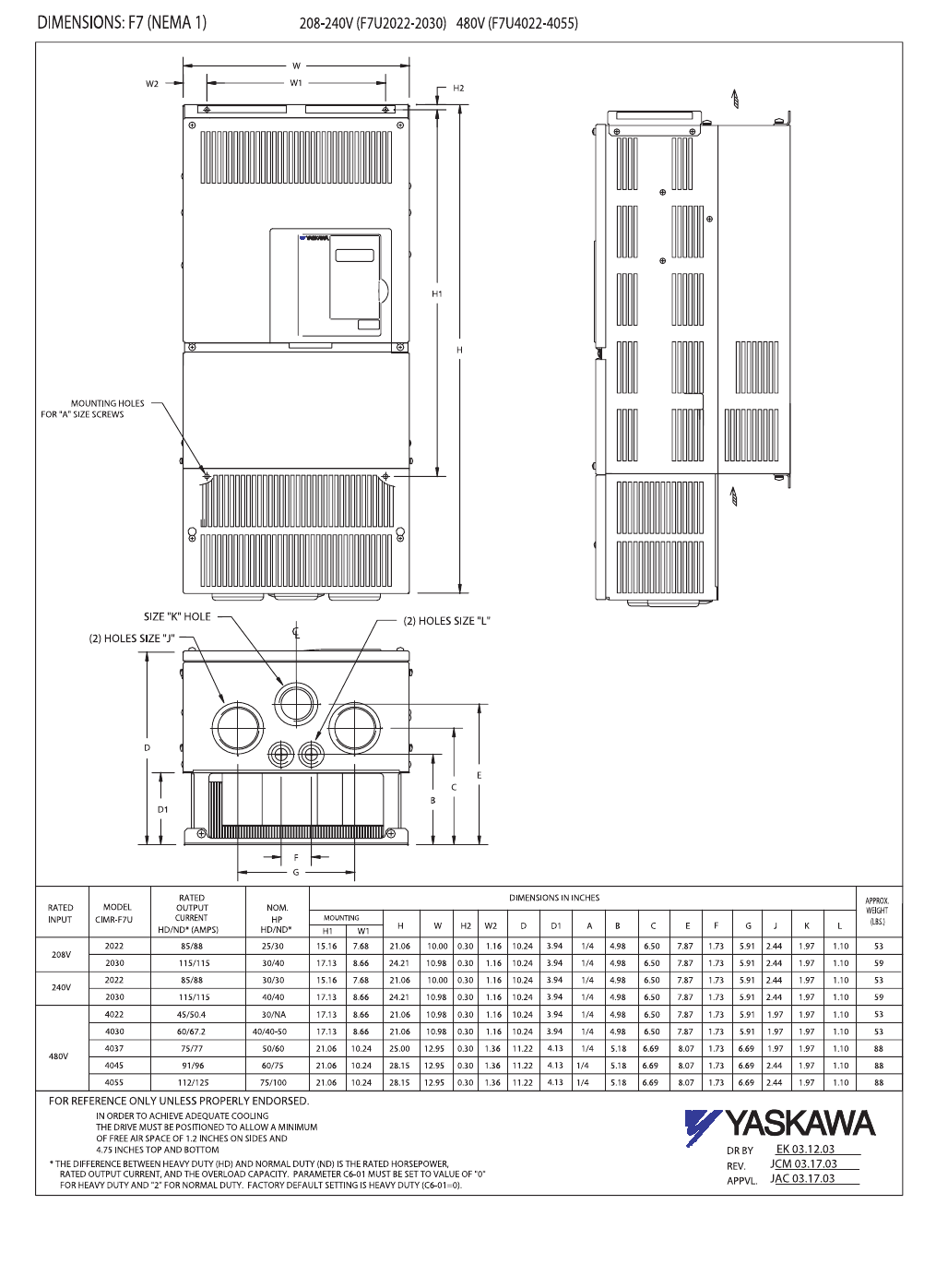
Physical Installation 1 - 8
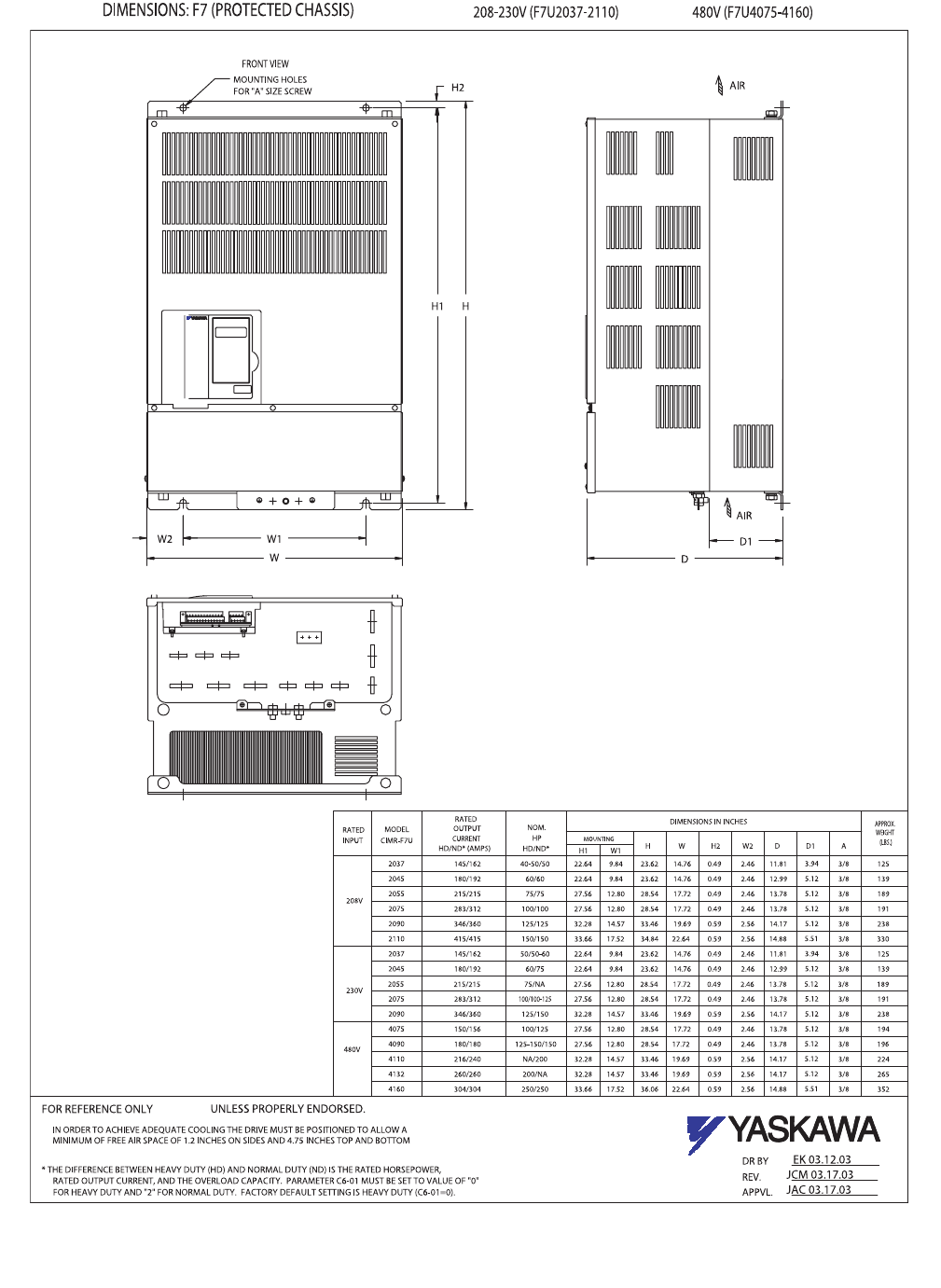
Physical Installation 1 - 9
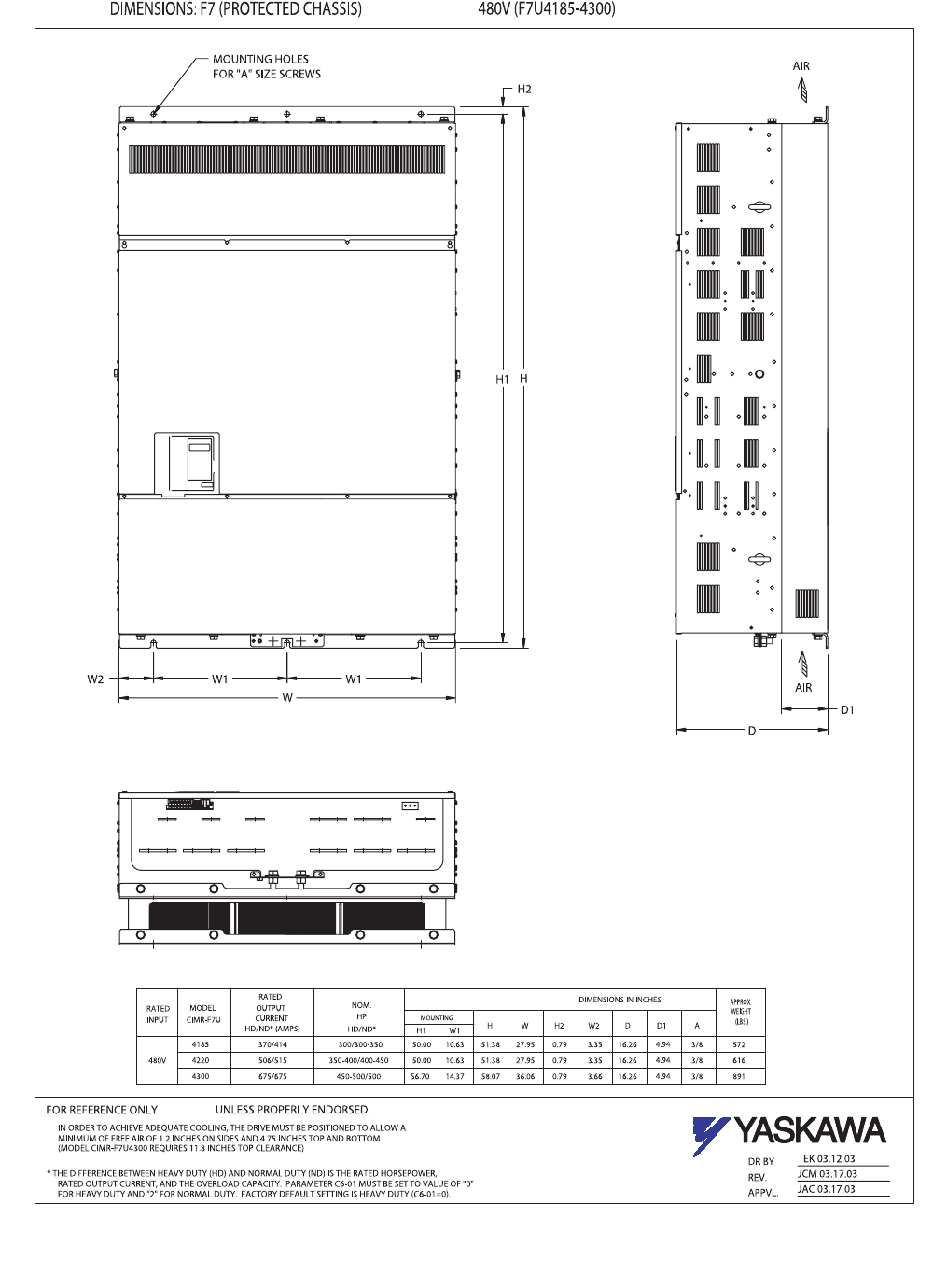
Physical Installation 1 - 10
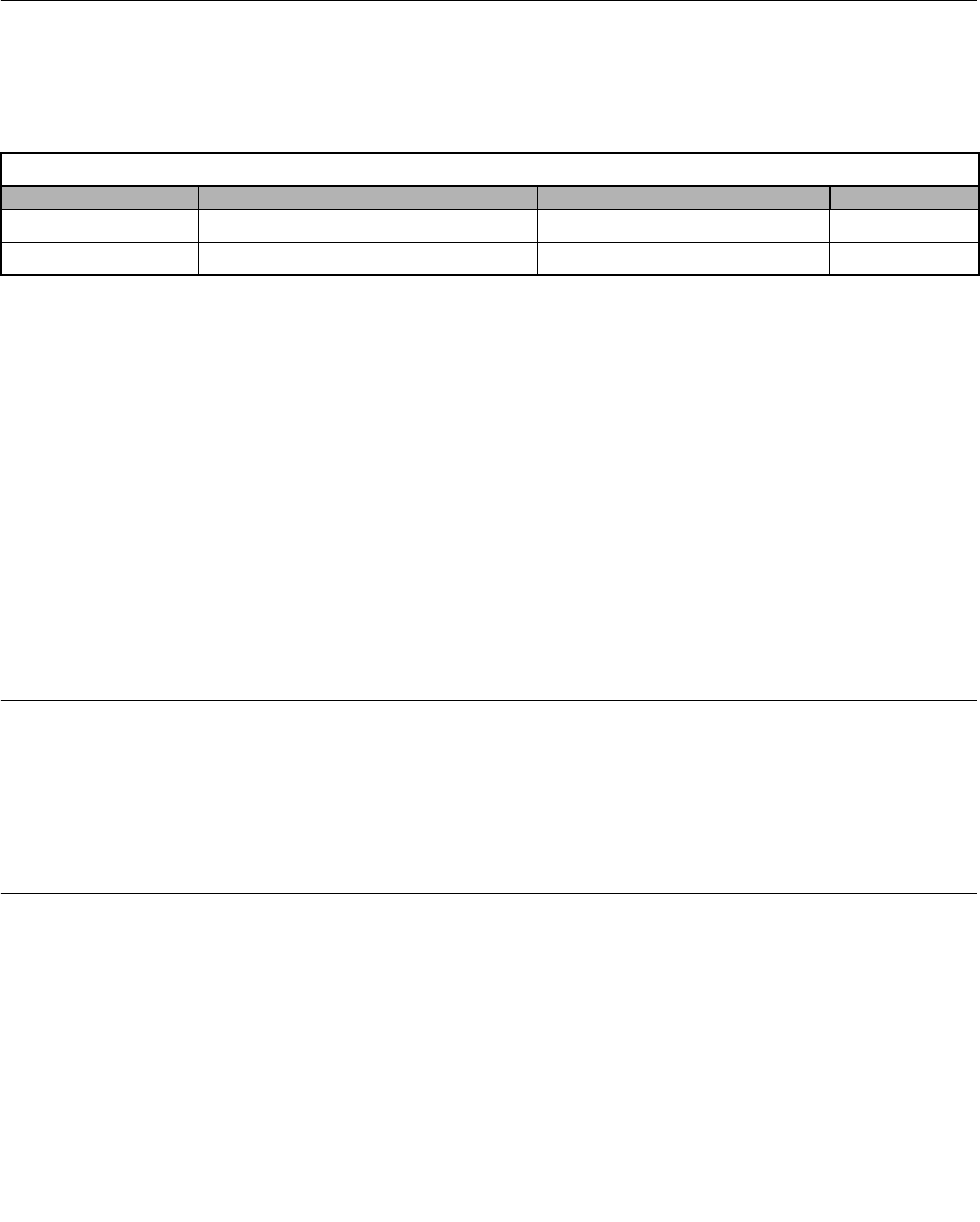
Physical Installation 1 - 11
Checking and Controlling the Installation Site
Install the Drive as described below and maintain optimum conditions.
Installation Site
Install the Drive to a non-combustible surface under the following conditions in UL Pollution Degree 2 environments. This
excludes wet locations where pollution may become conductive due to moisture, and locations containing conductive foreign
matter.
Protective covers are attached to the top and bottom of the Drive. It is recommended to remove the protective covers before
operating a NEMA Type 1 Drive (Models CIMR-F7U2030/4055 and smaller) in a panel to obtain the 113° (45°C) ambient
operating temperature.
Observe the following precautions when installing the Drive. Make sure to install:
• in a clean location which is free from oil mist and dust.
• in an environment where metal shavings, oil, water, or other foreign materials do not get into the Drive.
• in a location free from radioactive materials and combustible materials (e.g. wood).
• in a location free from harmful gases and liquids.
• in a location free from excessive vibration.
• in a location free from chlorides.
• in a location away from direct sunlight.
Controlling the Ambient Temperature
To enhance the reliability of operation, the Drive should be installed in an environment free from extreme temperature
variation. If the Drive is installed in an enclosure, use a cooling fan or air conditioner to maintain the internal air temperature
below 113°F (45°C).
Protecting the Drive from Foreign Matter
During Drive installation and project construction, it is possible to have foreign matter such as metal shavings or wire
clippings fall inside the Drive. To prevent foreign matter from falling into the Drive, place a temporary cover over the Drive.
Always remove the temporary cover from the Drive before start-up. Otherwise, ventilation will be reduced, causing the Drive
to overheat.
Table 1.3 Installation Site Specifications
Type Ambient Operating Temperature Humidity Plenum Rated
NEMA Type 1 14°F-to 104°F (-10-to +40°C) 95%-RH-or-less-(no-condensation) Yes
Open Chassis 14°F-to 113°F (-10-to-+45°C) 95%-RH-or-less-(no-condensation) No
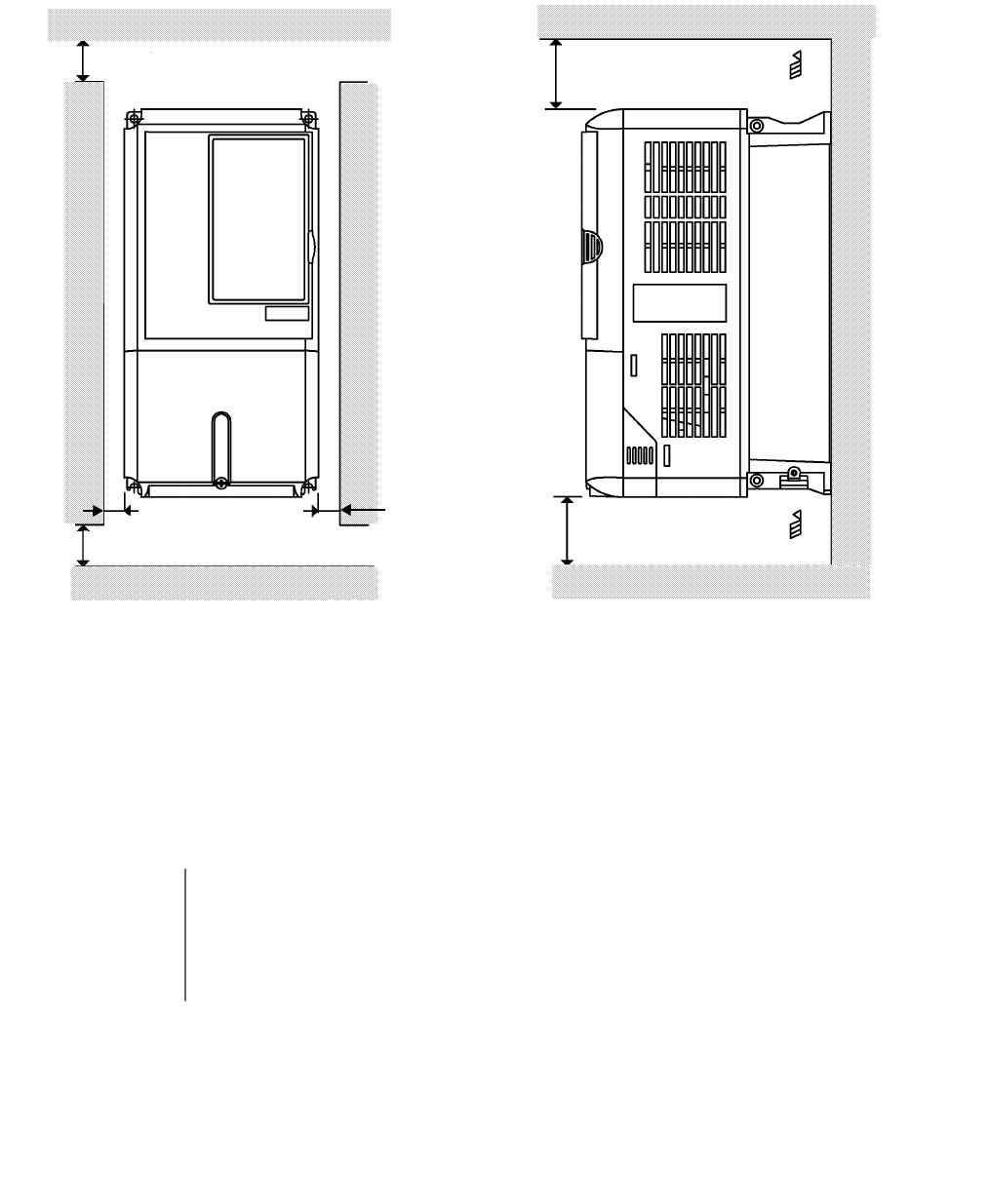
Physical Installation 1 - 12
Installation Orientation and Clearances
Install the Drive vertically so as not to reduce the cooling efficiency. When installing the Drive, always provide the following
installation clearances to allow normal heat dissipation and air flow. Ensure that the heatsink is against a closed surface to
avoid diverting cooling air around the heatsink.
Fig 1.8 Drive Installation Orientation and Clearance
IMPORTANT
1. The same clearance is required horizontally and vertically for both Open Chassis (IP00)
and NEMA Type 1 Drives.
2. Always remove the top and bottom protection covers before installing a CIMR-F7U2018/
4018 and smaller Drive in a panel.
3. Always provide enough clearance for lifting eye bolts and the main circuit wiring when
installing a CIMR-F7U2022/4030 and larger Drive in a panel.
4.75in *2 (120mm) minimum
4.75in (120mm) minimum
Air
Air
Vertical ClearanceHorizontal Clearance
1.2in
(30.5mm) minimum
1.2in
(30.5mm) minimum
1.97in (50mm) minimum
1.97in *1 (50mm) minimum
*1For Drive models F7U2110, F7U4160, and F7U4220, this clearance dimension is 4.75in (120mm) minimum.
For Drive model F7U4300, this clearance dimension is 11.8in (300mm) minimum.
All other models require 1.97in (50mm) minimum.
*2For Drive model F7U4300, this clearance dimension is 11.8in (300mm) minimum. All other models require 4.75in (120mm) minimum.
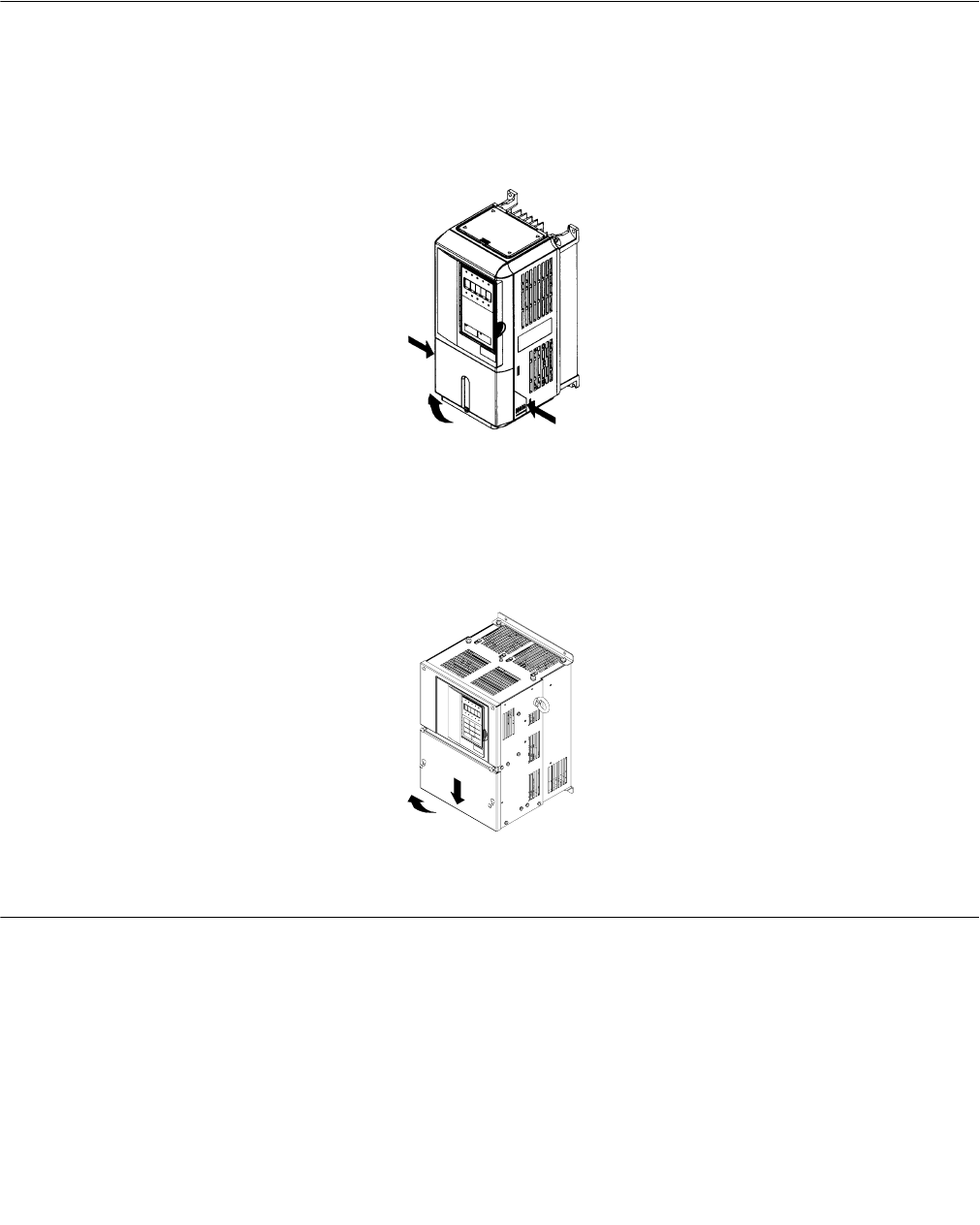
Physical Installation 1 - 13
Removing and Attaching the Terminal Cover
Remove the terminal cover to connect cables to the control circuit and main circuit terminals.
Removing the Terminal Cover
Models CIMR-F7U20P4 thru 2018 and 40P4 thru 4018
Loosen the screw at the bottom of the terminal cover, press in on the sides of the terminal cover in the directions of arrows 1,
and then lift up on the terminal in the direction of arrow 2.
Fig 1.9 Removing the Terminal Cover
Models CIMR-F7U2022 thru 2110 and 4030 thru 4300
Loosen the screws on the left and right at the top of the terminal cover, pull down the terminal cover in the direction of arrow
1, and then lift up on the terminal cover in the direction of arrow 2.
Fig 1.10 Removing the Terminal Cover
Attaching the Terminal Cover
After wiring the terminal block, attach the terminal cover by reversing the removal procedure.
For Models CIMR-F7U2018/4018 and smaller, insert the tab on the top of the terminal cover into the groove on the Drive, and
press in on the bottom of the terminal cover until it clicks into place.
For Drives CIMR-F7U2022/4030 and larger, insert the tab on the top of the terminal cover into the groove on the Drive, and
secure the terminal cover by lifting it up toward the top of the Drive.
1
1
2
1
2
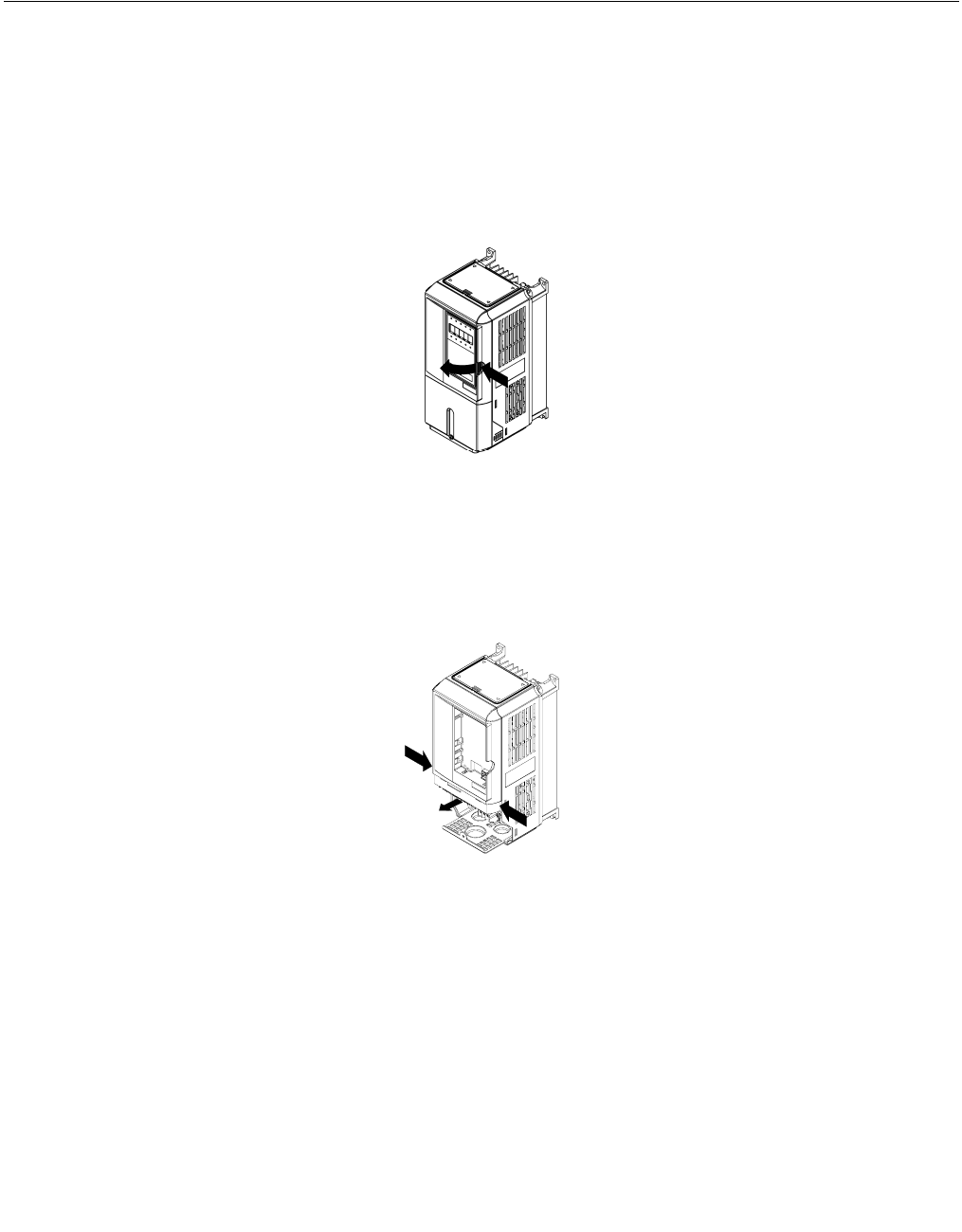
Physical Installation 1 - 14
Removing/Attaching the Digital Operator and Front Cover
Models CIMR-F7U20P4 thru 2018 and 40P4 thru 4018
For Models CIMR-F7U2018/4018 and smaller, remove the terminal cover and then use the following procedures to remove
the Digital Operator and front cover.
Removing the Digital Operator
Press on the side of the Digital Operator in the direction of arrow 1 to unlock, then lift the Digital Operator in the direction of
arrow 2 to remove it as shown in Fig 1.11.
Fig 1.11 Removing the Digital Operator
Removing the Front Cover
Press the left and right sides of the front cover in the direction of arrows 1 and lift the bottom of cover in the direction of arrow
2 to remove it as shown in Fig 1.12.
Fig 1.12 Removing the Front Cover
Mounting the Front Cover
Mount the front cover to the Drive by performing the steps to remove the front cover in reverse order.
1. Do not mount the front cover with the Digital Operator attached as this may cause the Digital Operator to malfunction due
to improper mating with its connector.
2. Insert the tab of the upper part of the front cover into the groove of the Drive and press the lower part of the front cover onto
the Drive until it snaps into place.
21
1
21
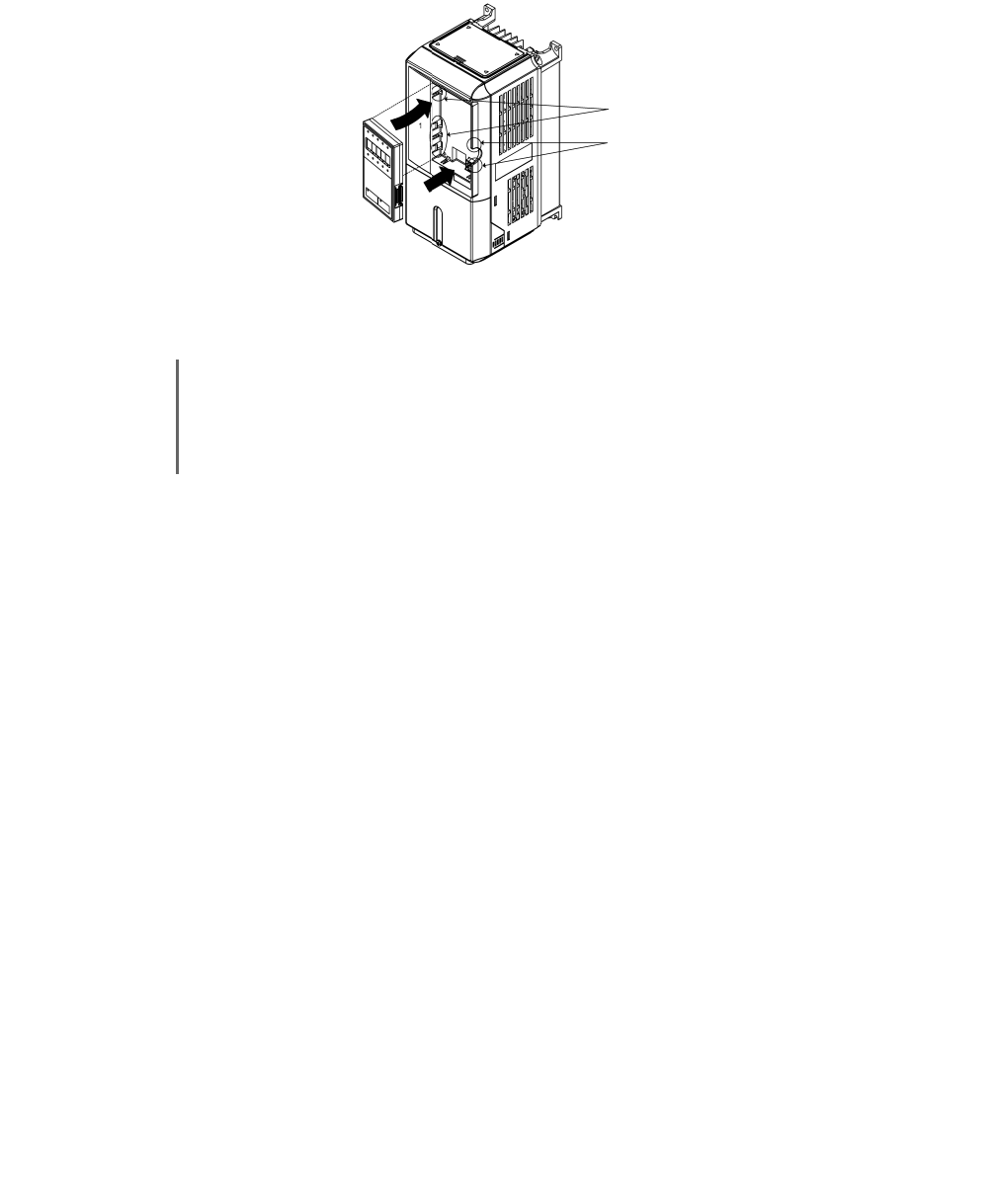
Physical Installation 1 - 15
Mounting the Digital Operator
After attaching the front cover, mount the Digital Operator onto the Drive using the following procedure:
1. Hook the Digital Operator at A (two locations) on the left side of the opening on the front cover by moving in the direction
of arrow 1 as shown in the following illustration.
2. Press the Digital Operator in the direction of arrow 2 until it snaps in place at B (two locations).
Fig 1.13 Mounting the Digital Operator
IMPORTANT
1. Do not remove or attach the Digital Operator and do not mount or remove the front cover using methods
other than those described above, or damage to the Digital Operator or Drive may occur.
2. Never attach the front cover to the Drive with the Digital Operator already attached. Damage to the Digital
Operator may occur. Always attach the front cover to the Drive first, and then attach the Digital Operator
to the front cover.
A
B
1
2
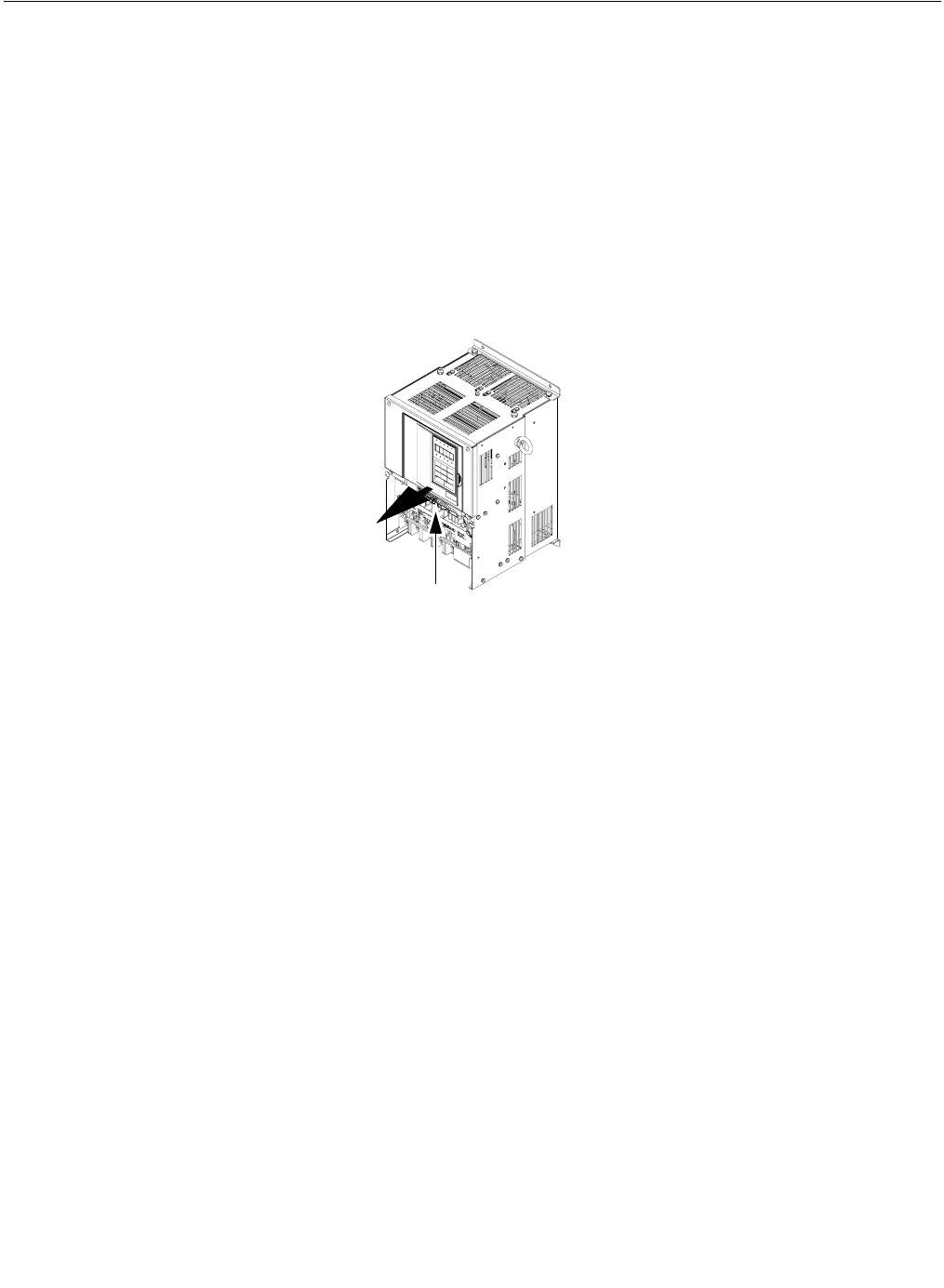
Physical Installation 1 - 16
Models CIMR-F7U2022 thru 2110 and 4030 thru 4300
For Models CIMR-F7U2022/4030 and larger, remove the terminal cover and then use the following procedures to remove the
Digital Operator and front cover.
Removing the Digital Operator
Use the same procedure for Models CIMR-F7U20P4 thru 2018 and 40P4 thru 4018.
Removing the Front Cover
Loosen all screws on the front cover. Lift up at the location labelled 1 at the top of the control circuit terminal card and move
in the direction of arrow 2.
Fig 1.14 Removing the Front Cover
Mounting the Front Cover
Attach the front cover by reversing the procedure to remove it.
1. Confirm that the Digital Operator is not mounted on the front cover. If the cover is attached while the Digital Operator is
mounted to it, the Digital Operator may malfunction due to improper mating with its connector.
2. Insert the tab on the top of the front cover into the slot on the Drive and press in on the cover until it clicks into place on the
Drive.
Mounting the Digital Operator
Use the same procedure for Models CIMR-F7U20P4 thru 2018 and 40P4 thru 4018.
1
2
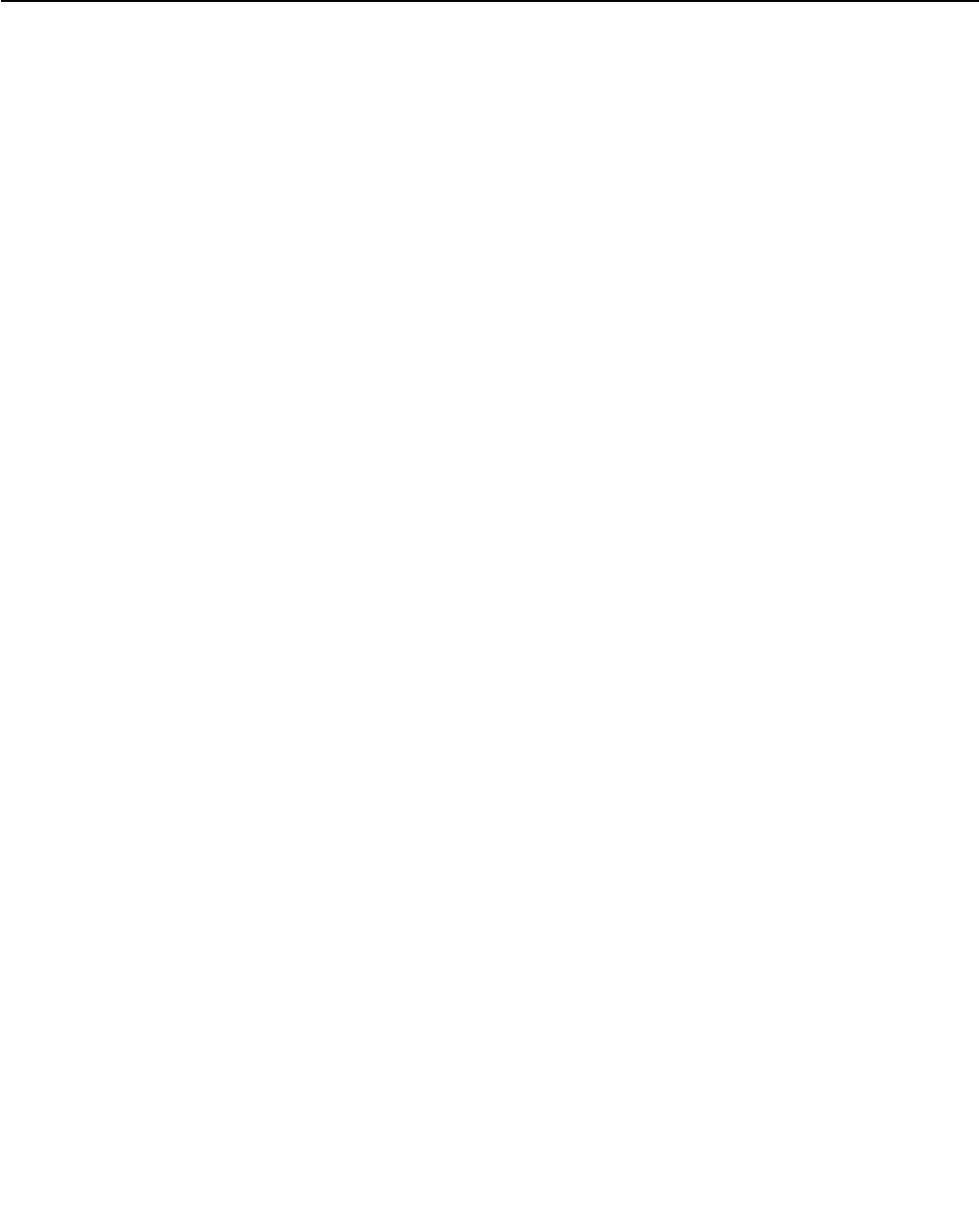
Electrical Installation 2 - 1
Chapter 2
Electrical Installation
This chapter describes wiring terminals, main circuit terminal connections, main
circuit terminal wiring specifications, control circuit terminals, and control circuit
wiring specifications.
Terminal Block Configuration ............................................ 2-2
Wiring Main Circuit Terminals ........................................... 2-3
Control Wiring ................................................................. 2-20
Electromagnetic Compatibility (EMC) ............................. 2-26
Installing and Wiring Option Boards................................ 2-30
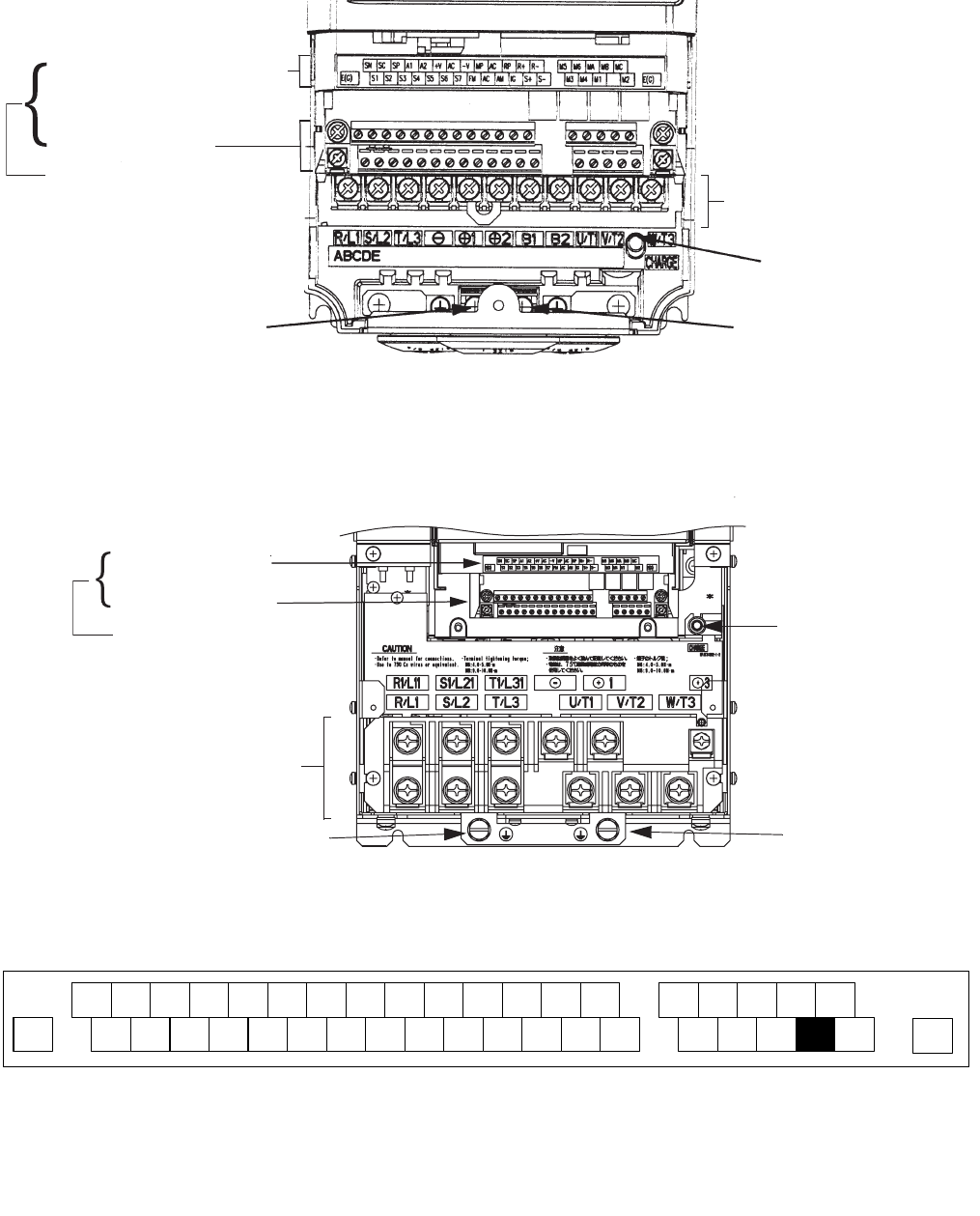
Electrical Installation 2 - 2
Terminal Block Configuration
The wiring terminals are shown in Fig 2.1, Fig 2.2 and Fig 2.3.
Fig 2.1 Terminal Configuration for Models CIMR-F7U2018/4018 and Smaller
Fig 2.2 Terminal Configuration for Models CIMR-F7U2022/4022 and Larger
Fig 2.3 Control Circuit Terminal Layout
Ground terminal
Control circuit terminal layout label
Charge indicator
Ground terminal
Main circuit terminals
Ground terminal
Control circuit terminals
See Fig. 2.3 below for
actual terminal layout
Charge indicator
Control circuit terminal
Ground terminal
Main circuit terminals
Ground terminal
layout label
Control circuit terminals
See Fig. 2.3 below for
actual terminal layout
SN SC SP A1 A2 +V AC -V A3 MP AC RP R+ R- MCM5 M6 MA MB
S1 S2 S3 S4 S5 S6 S7 S8 FM AC AM IG S+ S- M2M3 M4 M1 E(G)
E(G)
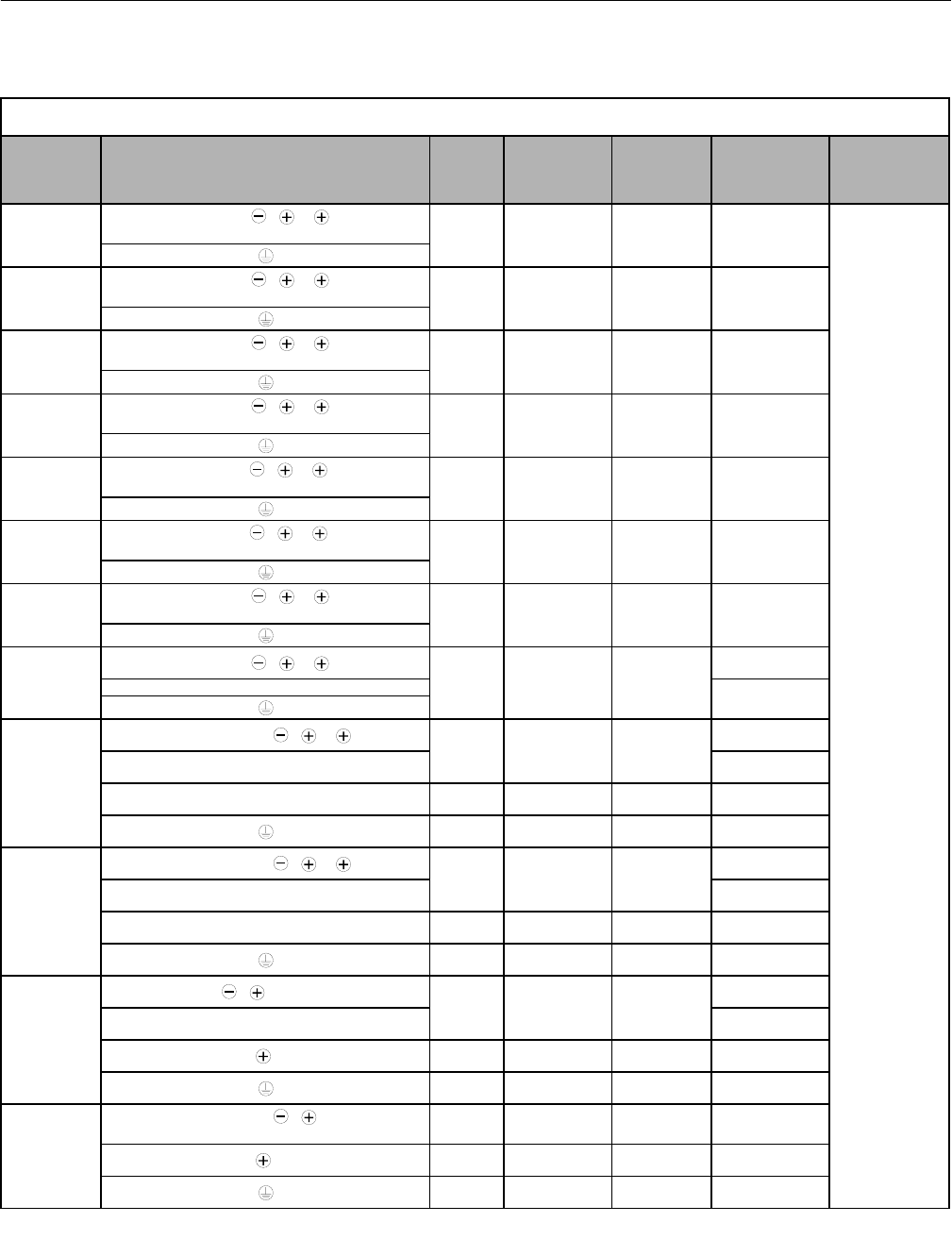
Electrical Installation 2 - 3
Wiring Main Circuit Terminals
Applicable Wire Sizes and Closed-loop Connectors
Select the appropriate wires and crimp terminals from Table 2.1 and Table 2.2. Refer to instruction manual TOE-C726-2 for
Braking Resistor Unit and Braking Unit wire sizes.
Table 2.1 208-240Vac Wire Sizes and Connector Specifications
Drive Model
CIMR-F7U Terminal Symbol Terminal
Screws
Clamping
Torque
lb. in.
(N•m)
Possible Wire
Sizes AWG
(mm2)
*1
Recommended
Wire Size AWG
(mm2)
*2
Wire
Type
20P4 R/L1, S/L2, T/L3, , 1, 2, B1, B2
U/T1, V/T2, W/T3 M4 10.6 to 13.2
(1.2 to 1.5) 14 to 10
(2 to 5.5) 14
(2)
600Vac
UL Approved
vinyl-sheathed
or equivalent
20P7 R/L1, S/L2, T/L3, , 1, 2, B1, B2
U/T1, V/T2, W/T3 M4 10.6 to 13.2
(1.2 to 1.5) 14 to 10
(2 to 5.5) 14
(2)
21P5 R/L1, S/L2, T/L3, , 1, 2, B1, B2
U/T1, V/T2, W/T3 M4 10.6 to 13.2
(1.2 to 1.5) 14 to 10
(2 to 5.5) 14
(2)
22P2 R/L1, S/L2, T/L3, , 1, 2, B1, B2
U/T1, V/T2, W/T3 M4 10.6 to 13.2
(1.2 to 1.5) 14 to 10
(2 to 5.5) 14
(2)
23P7 R/L1, S/L2, T/L3, , 1, 2, B1, B2
U/T1, V/T2, W/T3 M4 10.6 to 13.2
(1.2 to 1.5) 12 to 10
(3.5 to 5.5) 12
(3.5)
25P5 R/L1, S/L2, T/L3, , 1, 2, B1, B2
U/T1, V/T2, W/T3 M4 10.6 to 13.2
(1.2 to 1.5) 12 to 10
(3.5 to 5.5) 10
(5.5)
27P5 R/L1, S/L2, T/L3, , 1, 2, B1, B2
U/T1, V/T2, W/T3 M5 21.99
(2.5) 8 to 6
(8 to 14) 8
(8)
2011
R/L1, S/L2, T/L3, , 1, 2, B1, B2
M5 21.99
(2.5) 6 to 4
(14 to 22)
4
(22)
U/T1, V/T2, W/T3 6
(14)
2015
R/L1, S/L2, T/L3, , 1, 2 M6 35.2 to 43.99
(4.0 to 5.0) 4 to 2
(22 to 38)
3
(30)
U/T1, V/T2, W/T3 4
(22)
B1, B2 M5 21.99
(2.5) 8 to 6
(8 to 14) Application
Dependent
M6 35.2 to 43.99
(4.0 to 5.0) 4
(22) 4
(22)
2018
R/L1, S/L2, T/L3, , 1, 2 M8 79.2 to 87.97
(9.0 to 10.0) 3 to 2
(30 to 38)
2
(38)
U/T1, V/T2, W/T3 3
(30)
B1, B2 M5 21.99
(2.5) 8 to 6
(8 to 14) Application
Dependent
M6 35.2 to 43.99
(4.0 to 5.0) 4
(22) 4
(22)
2022
R/L1, S/L2, T/L3, , 1, R1/L11, S1/L21, T1/L31 M8 79.2 to 87.97
(9.0 to 10.0) N/A
1
(50)
U/T1, V/T2, W/T3, 2
(38)
3M6 35.2 to 43.99
(4.0 to 5.0) N/A Application
Dependent
M8 79.2 to 87.97
(9.0 to 10.0) N/A 4
(22)
2030
R/L1, S/L2, T/L3, , 1 U/T1,
V/T2, W/T3, R1/L11, S1/L21, T1/L31 M8 79.2 to 87.97
(9.0 to 10.0) N/A 1/0
(60)
3M6 35.2 to 43.99
(4.0 to 5.0) N/A Application
Dependent
M8 79.2 to 87.97
(9.0 to 10.0) N/A 4
(22)
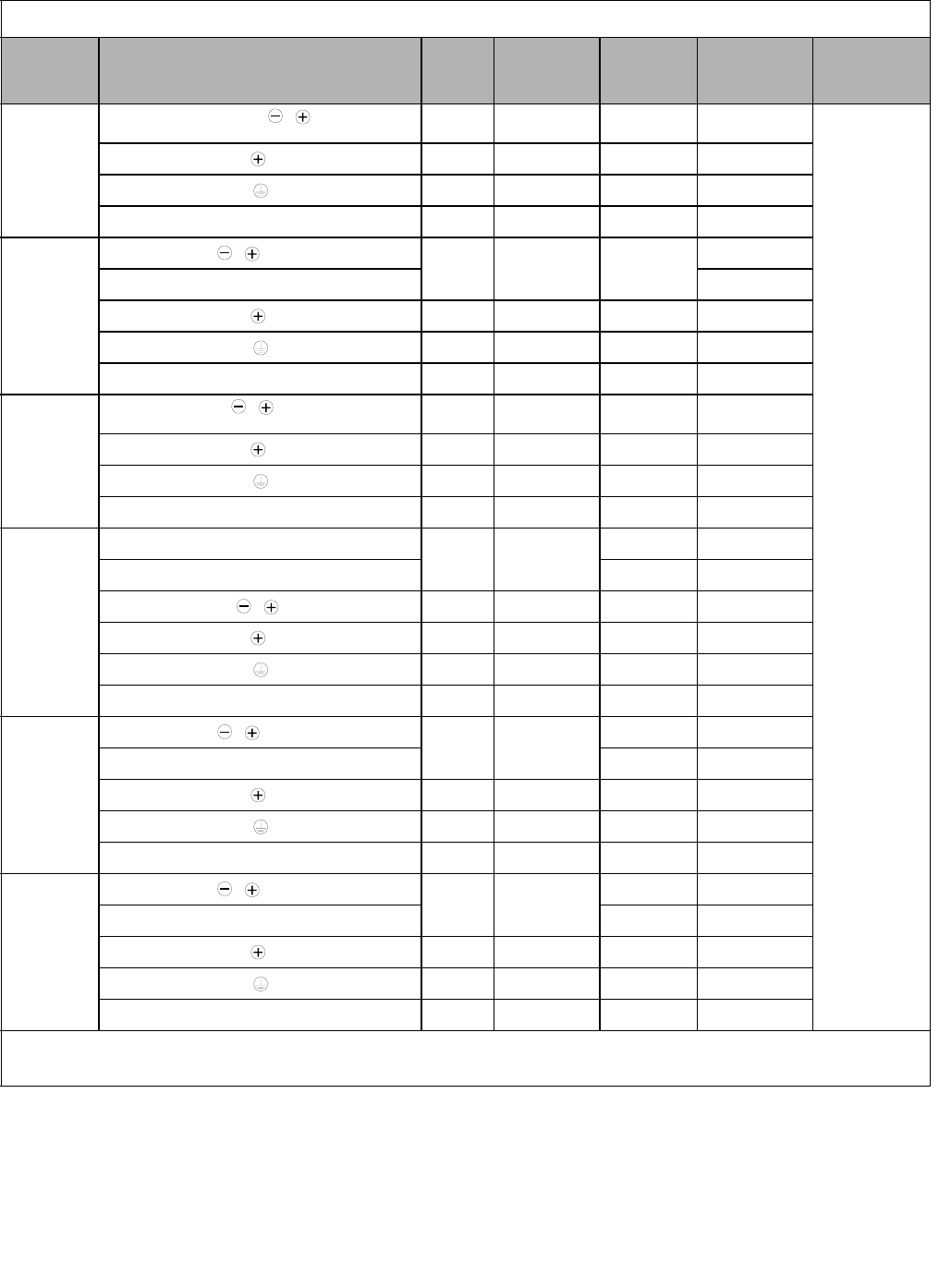
Electrical Installation 2 - 4
2037
R/L1, S/L2, T/L3, , 1 U/T1,
V/T2, W/T3, R1/L11, S1/L21, T1/L31 M10 154.8 to 197.9
(17.6 to 22.5) N/A 4/0
(100)
600Vac
UL Approved
vinyl-sheathed
or equivalent
3M8 77.4 to 95.0
(8.8 to 10.8) N/A Application
Dependent
M10 154.8 to 197.9
(17.6 to 22.5) N/A 2
(38)
r/l1, s/l2M4 11.4 to 12.3
(1.3 to 1.4) N/A 16
(1.25)
2045
R/L1, S/L2, T/L3, , 1, R1/L11, S1/L21, T1/L31 M10 154.8 to 197.9
(17.6 to 22.5) N/A
300
(150)
U/T1, V/T2, W/T3 250
(125)
3M8 77.4 to 95.0
(8.8 to 10.8) N/A Application
Dependent
M10 154.8 to 197.9
(17.6 to 22.5) N/A 1
(50)
r/l1, s/l2M4 11.4 to 12.3
(1.3 to 1.4) N/A 16
(1.25)
2055
R/L1, S/L2, T/L3, , 1, U/T1, V/T2, W/T3,
R1/L11, S1/L21, T1/L31 M10 154.8 to 197.9
(17.6 to 22.5) N/A 1/0 X 2P
(60 X 2P)
3M8 77.4 to 95.0
(8.8 to 10.8) N/A Application
Dependent
M10 154.8 to 197.9
(17.6 to 22.5) N/A 1/0
(60)
r/l1, s/l2M4 11.4 to 12.3
(1.3 to 1.4) N/A 16
(1.25)
2075
R/L1, S/L2, T/L3, R1/L11, S1/L21, T1/L31
M10 154.8 to 197.9
(17.6 to 22.5)
N/A 4/0 X 2P
(100 X 2P)
U/T1, V/T2, W/T3 N/A 3/0 X 2P
(80 X 2P)
, 1 M12 276.2 to 344.8
(31.4 to 39.2) N/A 3/0 X 2P
(80 X 2P)
3M8 77.4 to 95.0
(8.8 to 10.8) N/A Application
Dependent
M12 276.2 to 344.8
(31.4 to 39.2) N/A 3/0
(80)
r/l1, s/l2M4 11.4 to 12.3
(1.3 to 1.4) N/A 16
(1.25)
2090
R/L1, S/L2, T/L3, , 1, R1/L11, S1/L21, T1/L31 M12 276.2 to 344.8
(31.4 to 39.2)
N/A 250 X 2P
(125 X 2P)
U/T1, V/T2, W/T3 N/A 4/0 X 2P
(100 X 2P)
3M8 77.4 to 95.0
(8.8 to 10.8) N/A Application
Dependent
M12 276.2 to 344.8
(31.4 to 39.2) N/A 2/0 X 2P
(70 X 2P)
r/l1, s/l2M4 11.4 to 12.3
(1.3 to 1.4) N/A 16
(1.25)
2110
R/L1, S/L2, T/L3, , 1, R1/L11, S1/L21, T1/L31 M12 276.2 to 344.8
(31.4 to 39.2)
N/A 350 X 2P
(200 X 2P)
U/T1, V/T2, W/T3 N/A 300 X 2P
(150 X 2P)
3M8 77.4 to 95.0
(8.8 to 10.8) N/A Application
Dependent
M12 276.2 to 344.8
(31.4 to 39.2) N/A 300 X 2P
(150 X 2P)
r/l1, s/l2M4 11.4 to 12.3
(1.3 to 1.4) N/A 16
(1.25)
*1 Wire size range provided for Drives using insulated screw-type terminal blocks. All other models require the use of UL listed connectors. Refer to Table 2.3.
*2 Recommended wire sizes are based on the normal duty (ND) current ratings and NEC Article 310 Table 310.16, 75 degree Celsius copper or equivalent.
When sizing wiring based on the heavy duty (HD) current ratings, consult NEC Article 430 and any other applicable codes.
Table 2.1 208-240Vac Wire Sizes and Connector Specifications (Continued)
Drive Model
CIMR-F7U Terminal Symbol Terminal
Screws
Clamping
Torque
lb. in.
(N•m)
Possible Wire
Sizes AWG
(mm2)
*1
Recommended
Wire Size AWG
(mm2)
*2
Wire
Type
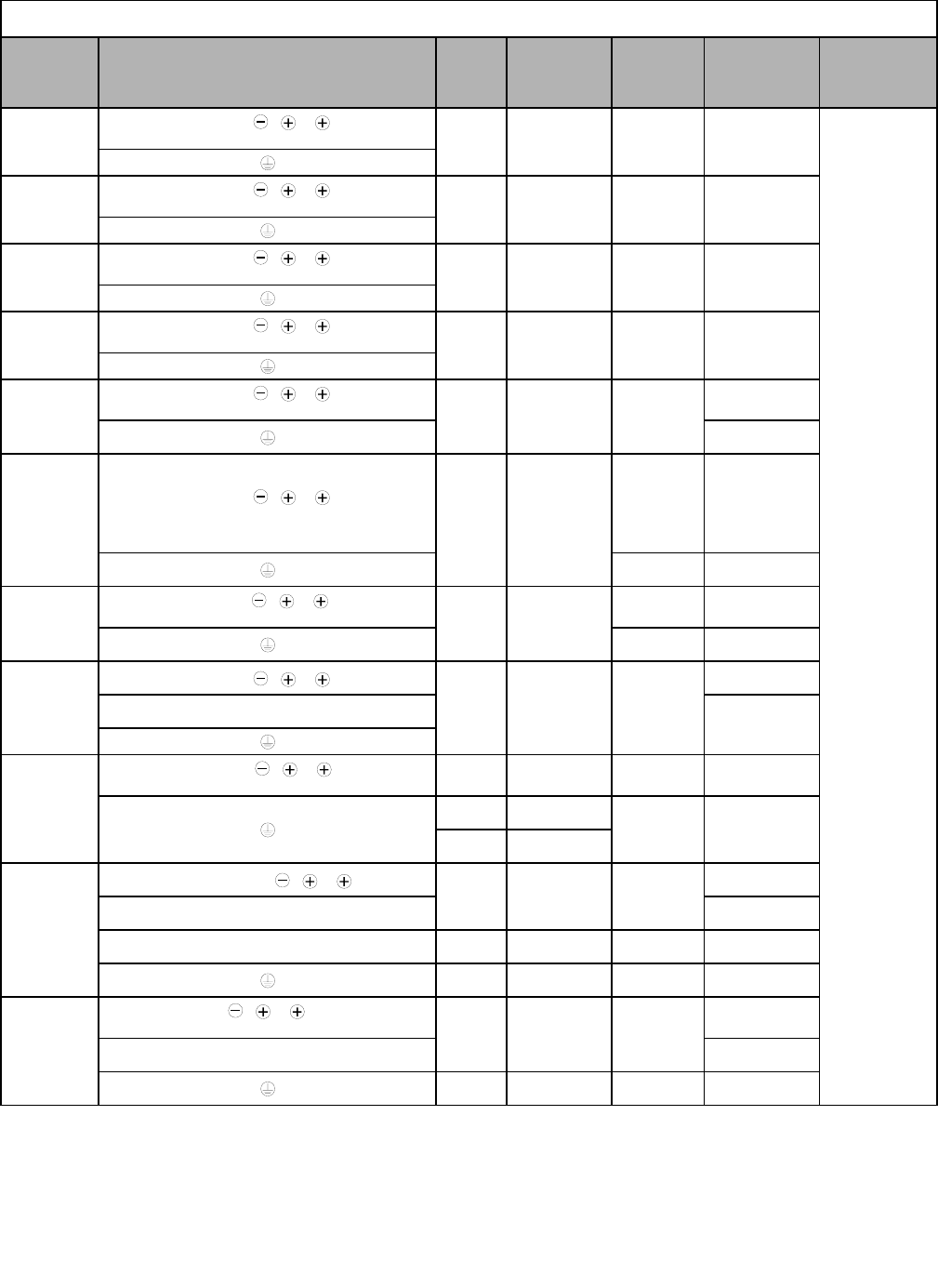
Electrical Installation 2 - 5
Table 2.2 480Vac Wire Sizes and Connector Specifications
Drive Model
CIMR-F7U Terminal Symbol Terminal
Screws
Clamping
Torque
lb. in.
(N•m)
Possible Wire
Sizes AWG
(mm2)
*1
Recommended
Wire Size AWG
(mm2)
*2
Wire Type
40P4
R/L1, S/L2, T/L3, , 1, 2, B1, B2
U/T1, V/T2, W/T3 M4 10.6 to 13.2
(1.2 to 1.5) 14 to 10
(2 to 5.5) 14
(2)
600Vac
UL Approved
vinyl-sheathed
or equivalent
40P7
R/L1, S/L2, T/L3, , 1, 2, B1, B2
U/T1, V/T2, W/T3 M4 10.6 to 13.2
(1.2 to 1.5) 14 to 10
(2 to 5.5) 14
(2)
41P5
R/L1, S/L2, T/L3, , 1, 2, B1, B2
U/T1, V/T2, W/T3 M4 10.6 to 13.2
(1.2 to 1.5) 14 to 10
(2 to 5.5) 14
(2)
42P2
R/L1, S/L2, T/L3, , 1, 2, B1, B2
U/T1, V/T2, W/T3 M4 10.6 to 13.2
(1.2 to 1.5) 14 to 10
(2 to 5.5) 14
(2)
43P7
44P0
R/L1, S/L2, T/L3, , 1, 2, B1, B2
U/T1, V/T2, W/T3 M4 10.6 to 13.2
(1.2 to 1.5) 14 to 10
(2 to 5.5)
12
(3.5)
14
(2)
45P5
R/L1, S/L2, T/L3, , 1, 2, B1, B2
U/T1, V/T2, W/T3 M4 10.6 to 13.2
(1.2 to 1.5)
12 to 10
(3.5 to 5.5) 12
(3.5)
14 to 10
(2 to 5.5) 14
(2)
47P5
R/L1, S/L2, T/L3, , 1, 2, B1, B2
U/T1, V/T2, W/T3 M4 15.6
(1.8)
10
(5.5) 10
(5.5)
12 to 10
(3.5 to 5.5) 12
(3.5)
4011
R/L1, S/L2, T/L3, , 1, 2, B1, B2
M5 21.99
(2.5) 10 to 6
(5.5 to 14)
8
(8)
U/T1, V/T2, W/T3 10
(5.5)
4015
R/L1, S/L2, T/L3, , 1, 2,B1, B2
U/T1, V/T2, W/T3 M5 21.99
(2.5) 8 to 6
(8 to 14) 8
(8)
M5 21.99
(2.5) 10 to 6
(5.5 to 14) 10
(5.5)
M6 35.2 to 43.99
(4.0 to 5.0)
4018
R/L1, S/L2, T/L3, , 1, 2 M6 35.2 to 43.99
(4.0 to 5.0) 8 to 2
(8 to 38)
6
(14)
U/T1, V/T2, W/T3 8
(8)
B1, B2 M5 21.99
(2.5) 8
(8) 8
(8)
M6 35.2 to 43.99
(4.0 to 5.0) 8 to 4
(8 to 22) 8
(8)
4022
R/L1, S/L2, T/L3, , 1, 3, R1/L11, S1/L21,
T1/L31 M6 35.2 to 43.99
(4.0 to 5.0) N/A
4
(22)
U/T1, V/T2, W/T3 6
(14)
M8 79.2 to 87.97
(9.0 to 10.0) N/A 6
(14)
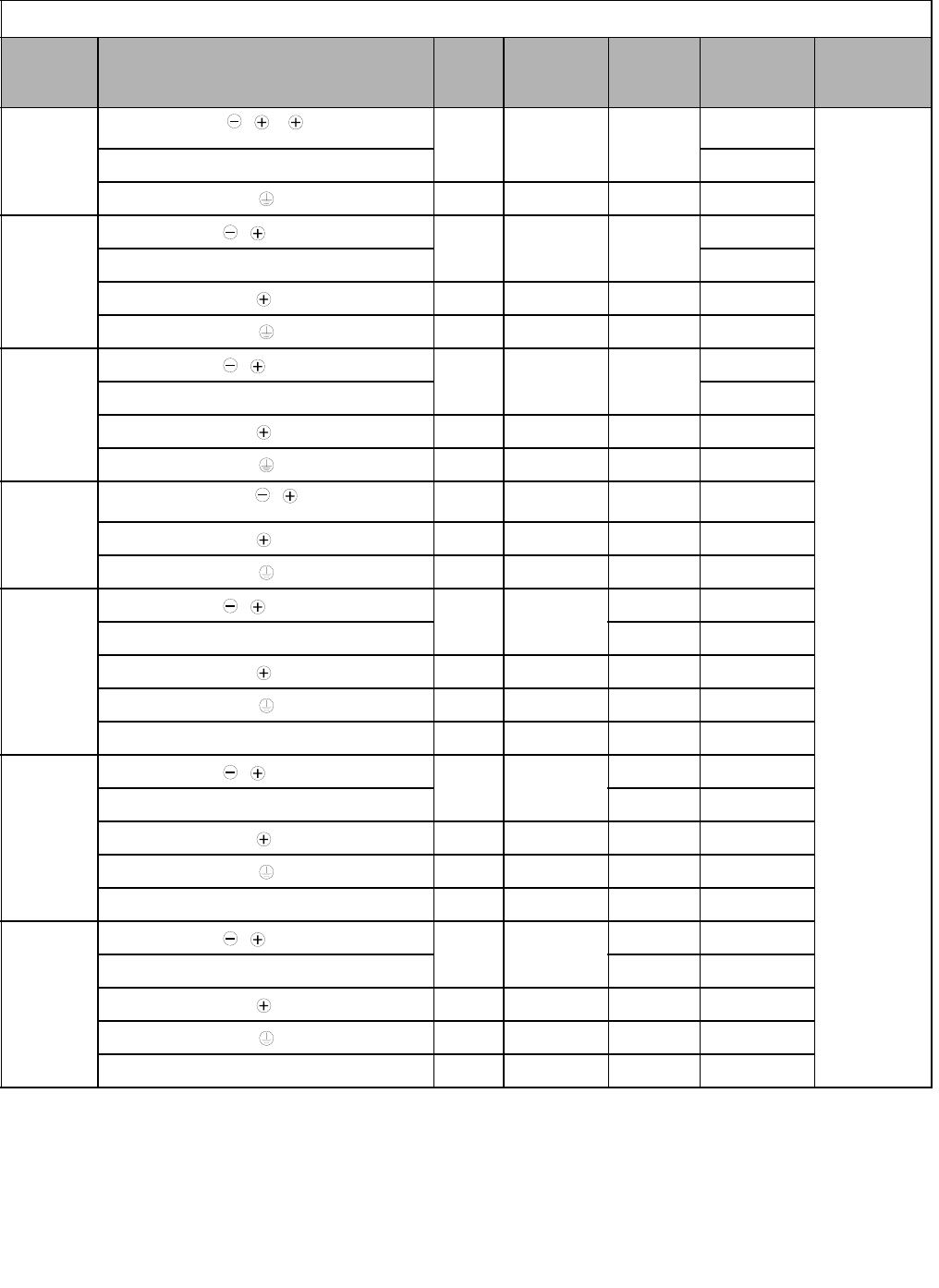
Electrical Installation 2 - 6
4030
R/L1, S/L2, T/L3, , 1, 3, R1/L11, S1/L21,
T1/L31 M6 35.2 to 43.99
(4.0 to 5.0) N/A
3
(30)
600Vac
UL Approved
vinyl-sheathed
or equivalent
U/T1, V/T2, W/T3 4
(22)
M8 79.2 to 87.97
(9.0 to 10.0) N/A 4
(22)
4037
R/L1, S/L2, T/L3, , 1, R1/L11, S1/L21, T1/L31 M8 79.2 to 87.97
(9.0 to 10.0) N/A
2
(38)
U/T1, V/T2, W/T3 3
(30)
3M6 35.2 to 43.99
(4.0 to 5.0) N/A Application
Dependent
M8 79.2 to 87.97
(9.0 to 10.0) N/A 4
(22)
4045
R/L1, S/L2, T/L3, , 1, R1/L11, S1/L21, T1/L31 M8 79.2 to 87.97
(9.0 to 10.0) N/A
1/0
(60)
U/T1, V/T2, W/T3 1
(50)
3M6 35.2 to 43.99
(4.0 to 5.0) N/A Application
Dependent
M8 79.2 to 87.97
(9.0 to 10.0) N/A 4
(22)
4055
R/L1, S/L2, T/L3, , 1, U/T1, V/T2,
W/T3, R1/L11, S1/L21, T1/L31 M8 79.2 to 87.97
(9.0 to 10.0) N/A 2/0
(70)
3M6 35.2 to 43.99
(4.0 to 5.0) N/A Application
Dependent
M8 79.2 to 87.97
(9.0 to 10.0) N/A 4
(22)
4075
R/L1, S/L2, T/L3, , 1, R1/L11, S1/L21, T1/L31 M10 154.8 to 197.5
(17.6 to 22.5)
N/A 4/0
(100)
U/T1, V/T2, W/T3 N/A 3/0
(80)
3M8 77.4 to 95.0
(8.8 to 10.8) N/A Application
Dependent
M10 154.8 to 197.5
(17.6 to 22.5) N/A 2
(38)
r/l1, s200/l2200, s400/l2400 M4 11.4 to 12.3
(1.3 to 1.4) N/A 16
(1.25)
4090
R/L1, S/L2, T/L3, , 1, R1/L11, S1/L21, T1/L31 M10 154.8 to 197.5
(17.6 to 22.5)
N/A 250
(125)
U/T1, V/T2, W/T3 N/A 4/0
(100)
3M8 77.4 to 95.0
(8.8 to 10.8) N/A Application
Dependent
M10 154.8 to 197.5
(17.6 to 22.5) N/A 1
(50)
r/l1, s200/l2200, s400/l2400 M4 11.4 to 12.3
(1.3 to 1.4) N/A 16
(1.25)
4110
R/L1, S/L2, T/L3, , 1, R1/L11, S1/L21, T1/L33 M10 154.8 to 197.5
(17.6 to 22.5)
N/A 2/0 × 2P
(70 × 2P)
U/T1, V/T2, W/T3 N/A 1/0 × 2P
(60 × 2P)
3M8 77.4 to 95.0
(8.8 to 10.8) N/A Application
Dependent
M12 276.2 to 344.8
(31.4 to 39.2) N/A 2/0
(70)
r/l1, s200/l2200, s400/l2400 M4 11.4 to 12.3
(1.3 to 1.4) N/A 16
(1.25)
Table 2.2 480Vac Wire Sizes and Connector Specifications (Continued)
Drive Model
CIMR-F7U Terminal Symbol Terminal
Screws
Clamping
Torque
lb. in.
(N•m)
Possible Wire
Sizes AWG
(mm2)
*1
Recommended
Wire Size AWG
(mm2)
*2
Wire Type
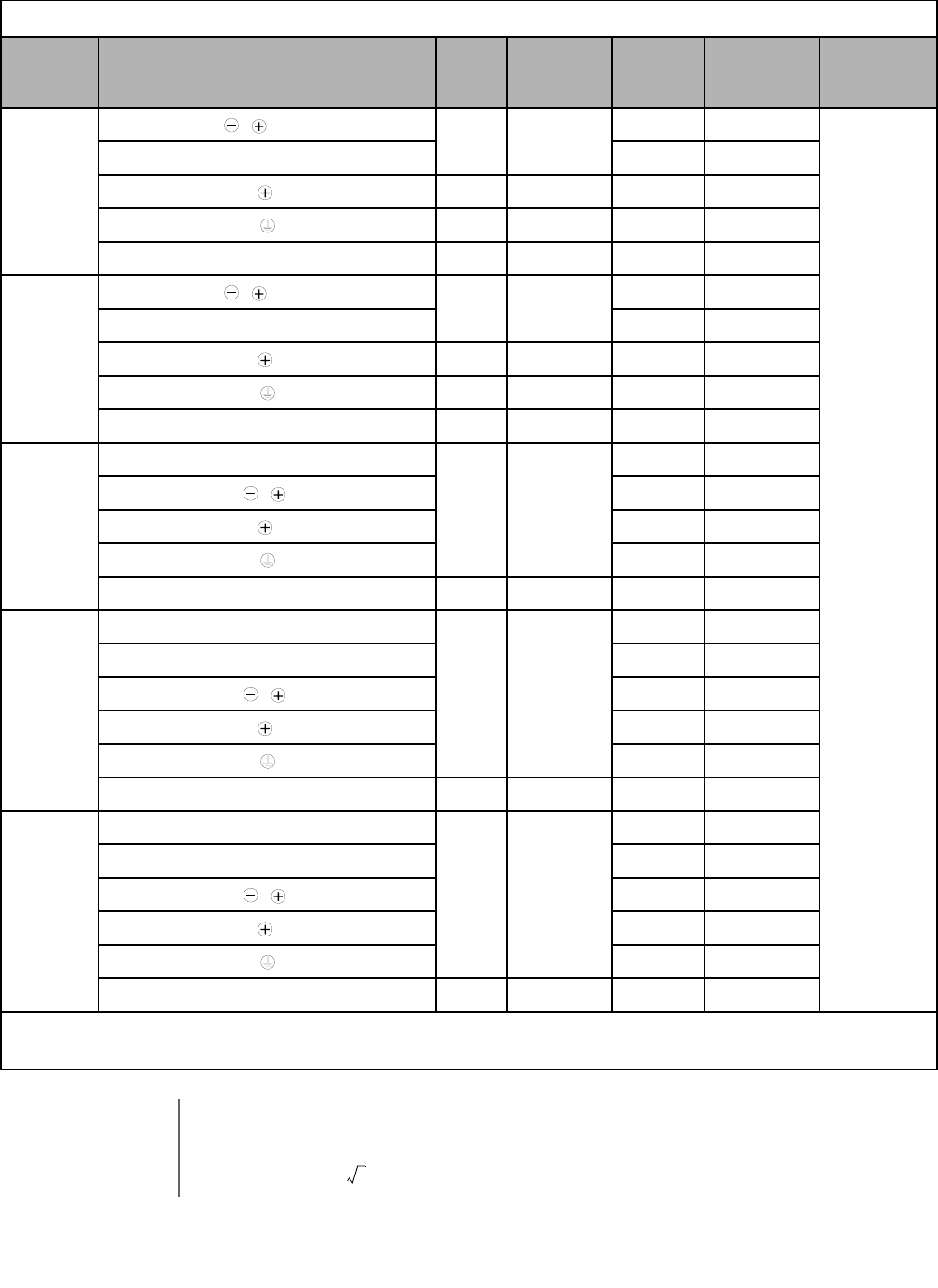
Electrical Installation 2 - 7
4132
R/L1, S/L2, T/L3, , 1, R1/L11, S1/L21, T1/L33 M10 154.8 to 197.5
(17.6 to 22.5)
N/A 3/0 × 2P
(80 × 2P)
600Vac
UL Approved
vinyl-sheathed
or equivalent
U/T1, V/T2, W/T3 N/A 2/0 × 2P
(70 × 2P)
3M8 77.4 to 95.0
(8.8 to 10.8) N/A Application
Dependent
M12 276.2 to 344.8
(31.4 to 39.2) N/A 4/0
(100)
r/l1, s200/l2200, s400/l2400 M4 11.4 to 12.3
(1.3 to 1.4) N/A 16
(1.25)
4160
R/L1, S/L2, T/L3, , 1, R1/L11, S1/L21, T1/L33 M12 276.2 to 344.8
(31.4 to 39.2)
N/A 4/0 × 2P
(100 × 2P)
U/T1, V/T2, W/T3 N/A 3/0 × 2P
(80 × 2P)
3M8 77.4 to 95.0
(8.8 to 10.8) N/A Application
Dependent
M12 276.2 to 344.8
(31.4 to 39.2) N/A 1/0 × 2P
(60 × 2P)
r/l1, s200/l2200, s400/l2400 M4 11.4 to 12.3
(1.3 to 1.4) N/A 16
(1.25)
4185
R/L1, S/L2, T/L3,
U/T1, V/T2, W/T3, R1/L11, S1/L21, T1/L33
M16 693.9 to 867.4
(78.4 to 98.0)
N/A 300 x 2P
(150 x 2P)
, 1 N/A 600 X 2P
(325 X 2P)
3N/A Application
Dependent
N/A 3/0 x 2P
(80 x 2P)
r/l1, s200/l2200, s400/l2400 M4 11.4 to 12.3
(1.3 to 1.4) N/A 16
(1.25)
4220
R/L1, S/L2, T/L3, R1/L11, S1/L21, T1/L33
M16 693.9 to 867.4
(78.4 to 98.0)
N/A 500 x 2P
(325 x 2P)
U/T1, V/T2, W/T3 N/A 400 x 2P
(200 x 2P)
, 1 N/A 250 X 4P
(125 X 4P)
3N/A Application
Dependent
N/A 250 x 2P
(125 x 2P)
r/l1, s200/l2200, s400/l2400 M4 11.4 to 12.3
(1.3 to 1.4) N/A 16
(1.25)
4300
R/L1, S/L2, T/L3, R1/L11, S1/L21, T1/L33
M16 693.9 to 867.4
(78.4 to 98.0)
N/A 250 x 4P
(125 x 4P)
U/T1, V/T2, W/T3 N/A 4/0 x 4P
(100 x 4P)
, 1 N/A 400 X 4P
(200 X 4P)
3N/A Application
Dependent
N/A 400 x 2P
(203 x 2P)
r/l1, s200/l2200, s400/l2400 M4 11.4 to 12.3
(1.3 to 1.4) N/A 16
(1.25)
*1 Wire size range provided for Drives using insulated screw-type terminal blocks. All other models require the use of UL listed connectors. Refer to Table 2.3.
*2 Recommended wire sizes are based on the normal duty (ND) current ratings and NEC Article 310 Table 310.16, 75 Degree Celsius copper or
equivalent. When sizing wiring based on the heavy duty (HD) current ratings, consult NEC Article 430 and any other applicable codes.
IMPORTANT
Determine the wire size for the main circuit so that line voltage drop is within 2% of the rated voltage. Line
voltage drop is calculated as follows:
Line voltage drop (V) = x wire resistance (Ω/km) x wire length (m) x current (A) x 10-3
Table 2.2 480Vac Wire Sizes and Connector Specifications (Continued)
Drive Model
CIMR-F7U Terminal Symbol Terminal
Screws
Clamping
Torque
lb. in.
(N•m)
Possible Wire
Sizes AWG
(mm2)
*1
Recommended
Wire Size AWG
(mm2)
*2
Wire Type
3
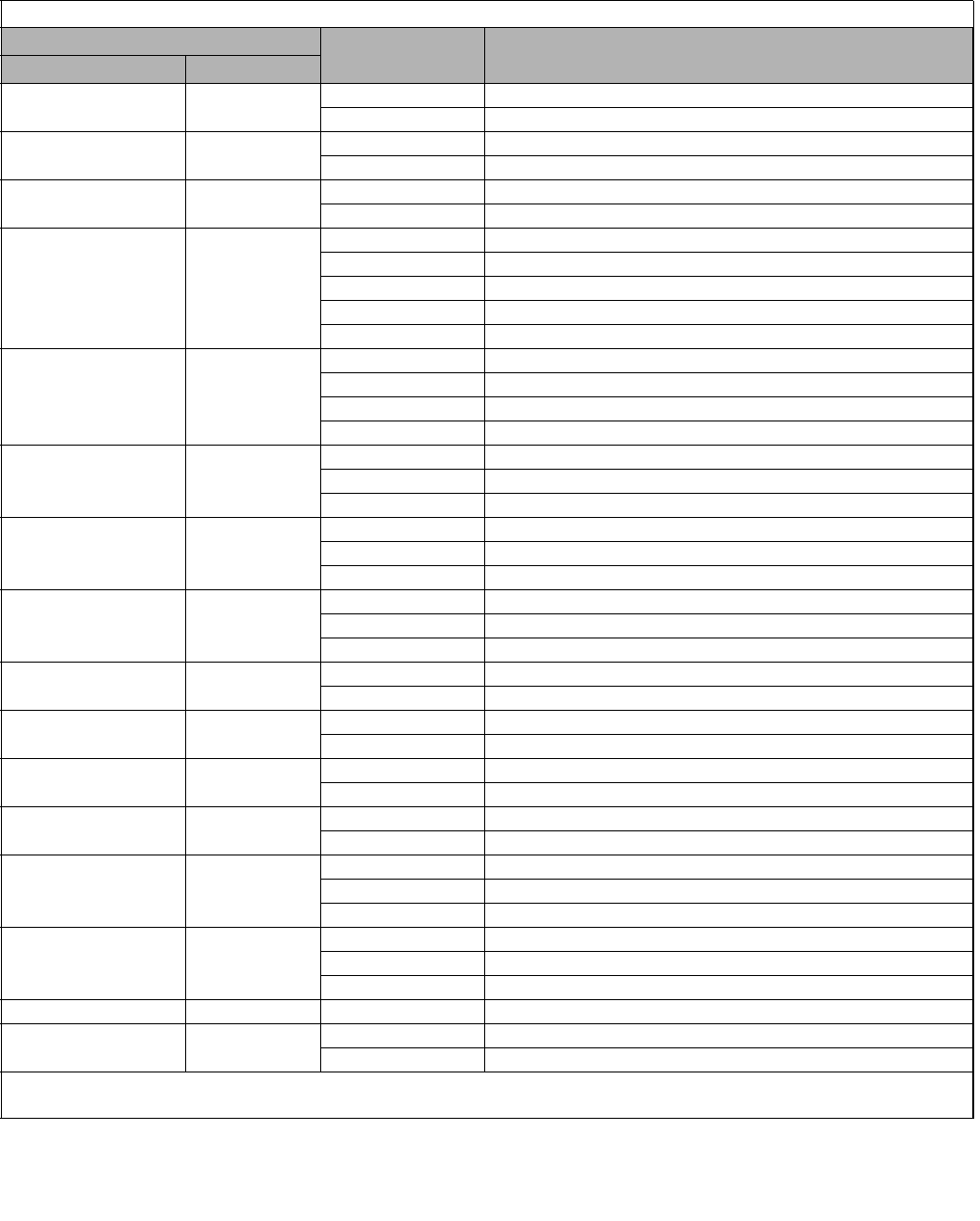
Electrical Installation 2 - 8
The use of UL listed closed-loop connectors or CSA certified ring connectors sized for the selected wire gauge is
recommended to maintain proper clearances when wiring the Drive. Install connectors per manufacturer recom-
mendation using the correct crimp tool. Table 2.3 lists a suitable closed-loop connector manufactured by JST Cor-
poration.
Table 2.3 Recommended Connectors for Terminal Connections
Wire Size * Terminal Screw Ring Tongue (R-Type) Closed-Loop Connectors (Lugs)
JST Corporation Part Numbers **
AWG mm2
20 0.5 M3.5 1.25 - 3.7
M4 1.25 - 4
18 0.75 M3.5 1.25 - 3.7
M4 1.25 - 4
16 1.25 M3.5 1.25 - 3.7
M4 1.25 - 4
14 2
M3.5 2 - 3.7
M4 2 - 4
M5 2 - 5
M6 2 - 6
M8 2 - 8
12 / 10 3.5 / 5.5
M4 5.5 - 4
M5 5.5 - 5
M6 5.5 - 6
M8 5.5 - 8
88
M5 8 - 5
M6 8 - 6
M8 8 - 8
614
M5 14 - 5
M6 14 - 6
M8 14 - 8
422
M5 22 - 5
M6 22 - 6
M8 22 - 8
3 / 2 30 / 38 M6 38 - 6
M8 38 - 8
1 / 1/0 50 / 60 M8 60 - 8
M10 60 - 10
2/0 70 M8 70 - 8
M10 70 - 10
3/0 80 M10 80 - 10
M16 80 - 16
4/0 100
M10 100 - 10
M12 100 - 12
M16 100 - 16
250 / 300MCM 125 / 150
M10 150 - 10
M12 150 - 12
M16 150 - 16
400MCM 200 M12 200 - 12
650MCM 325 M12 x 2 325 - 12
M16 325 - 16
* Wire sizes are based on 75 degrees Celsius copper wire.
** Equivalent connector can be used.
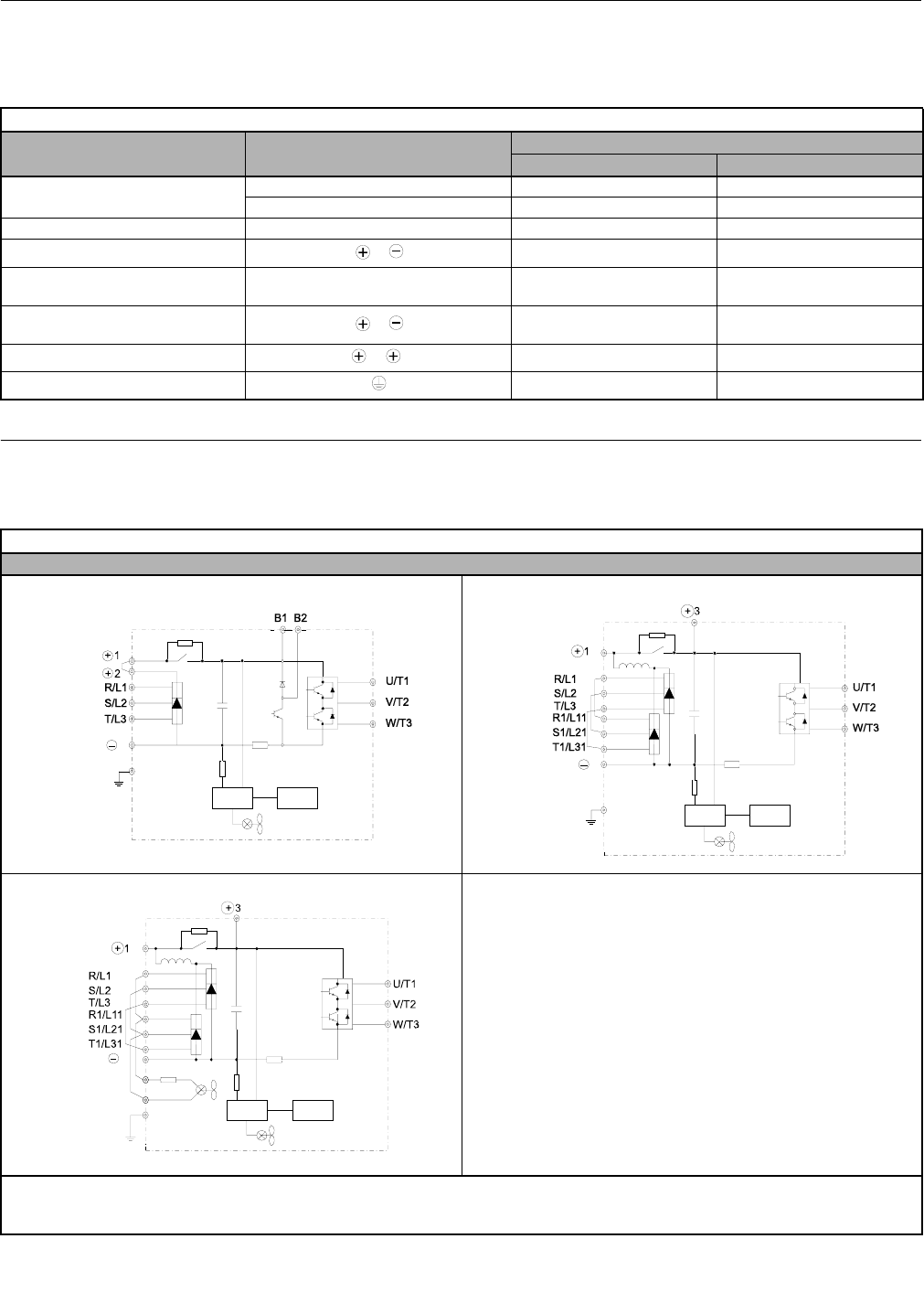
Electrical Installation 2 - 9
Main Circuit Terminal Functions
Main circuit terminal functions are summarized according to terminal symbols in Table 2.4. Wire the terminals correctly for
the desired purpose.
Main Circuit Configurations 208-240Vac
The 208-240Vac main circuit configurations of the Drive are shown in Table 2.5.
Table 2.4 Main Circuit Terminal Functions (208-240Vac and 480Vac)
Purpose Terminal Designation Model: CIMR-F7UFFFF
208-240Vac 480Vac
Main circuit power input R/L1, S/L2, T/L3 20P4 to 2110 40P4 to 4300
R1/L11, S1/L21, T1/L31 2022 to 2110 4030 to 4300
Drive outputs U/T1, V/T2, W/T3 20P4 to 2110 40P4 to 4300
DC power input 1, 20P4 to 2110 40P4 to 4300
Braking Resistor
Unit Connection B1, B2 20P4 to 2018 40P4 to 4018
Braking Transistor
Unit Connection 3, 2022 to 2110 4022 to 4300
DC link choke connection 1, 2 20P4 to 2018 40P4 to 4018
Ground 20P4 to 2110 40P4 to 4300
Table 2.5 Drive Main Circuit Configurations
208-240Vac
-
*1 Input fuses or molded case circuit breakers are required for proper branch circuit protection for all Drives. Failure to use
recommended fuses/circuit breakers (See Appendix E) may result in damage to the Drive and/or personal injury.
*2 Consult your Yaskawa representative before using 12-pulse rectification circuit configuration.
Power
supply Control
circuits
CIMR-F7U20P4 to 2018
{
* 1
CIMR-F7U2022 and 2030
Power
supply Control
circuits
{
*1, 2
CIMR-F7U2037 to 2110
Power
supply Control
circuits
{
*1, 2
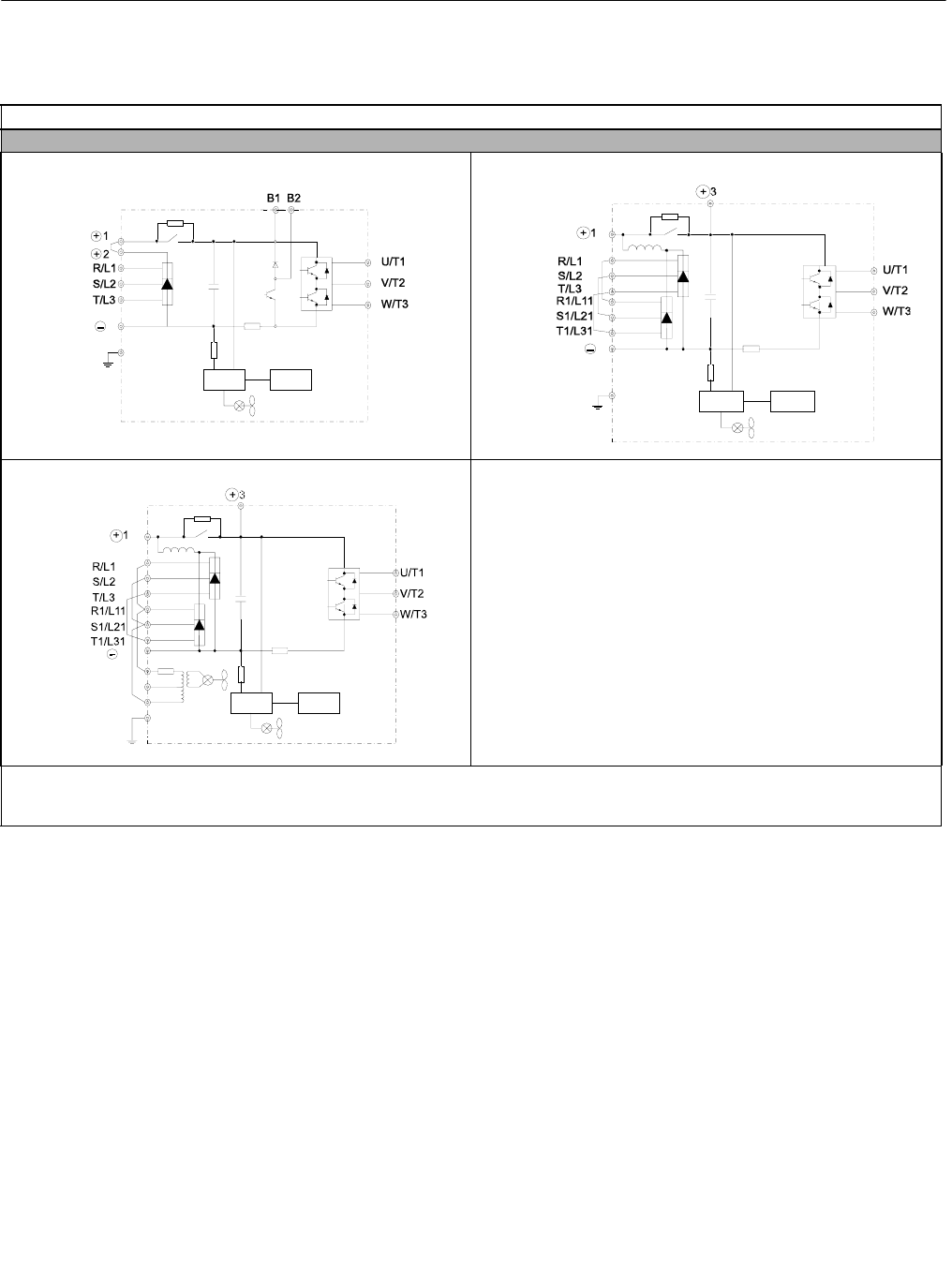
Electrical Installation 2 - 10
Main Circuit Configurations 480Vac
The 480Vac main circuit configurations of the Drive are shown in Table 2.6.
Table 2.6 Drive Main Circuit Configurations
480Vac
-
*1 Input fuses or molded case circuit breakers are required for proper branch circuit protection for all Drives. Failure to use recommended fuses/circuit
breakers (See Appendix E) may result in damage to the Drive and/or personal injury.
*2 Consult your Yaskawa representative before using 12-pulse rectification circuit configuration.
Power
supply Control
circuits
CIMR-F7U40P4 to 4018
{
*1
CIMR-F7U4022 to 4055
Power
supply Control
circuits
{
*1, 2
CIMR-F7U4075 to 4300
Power
supply Control
circuits
{
*1, 2
3
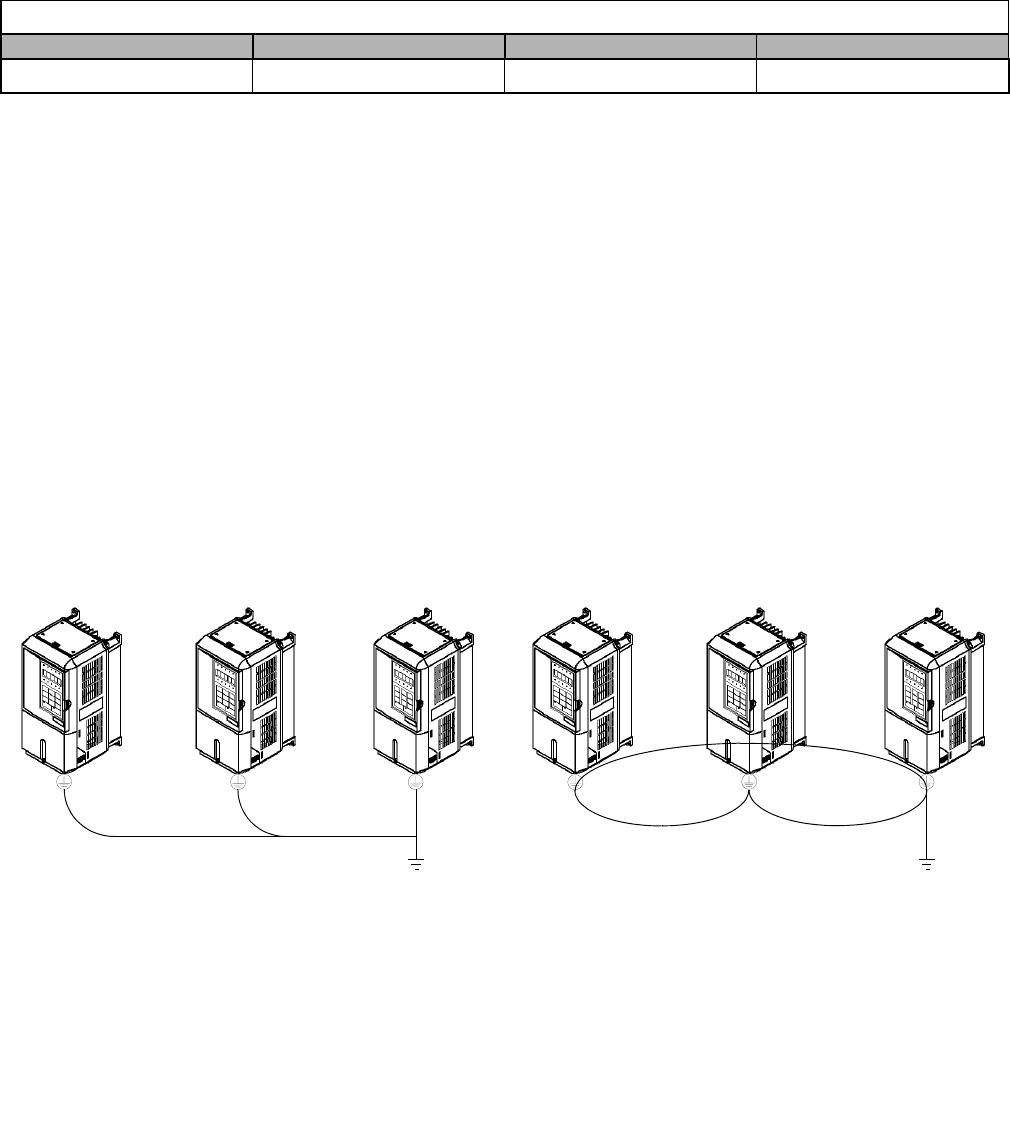
Electrical Installation 2 - 11
Cable Length between Drive and Motor
The F7 should be installed as close as possible to the motor to minimize the length of the load side power cable needed
between the Drive and motor.
If the cable between the Drive and the motor is long, the high-frequency leakage current will increase, causing the Drive
output current to increase as well. This may affect peripheral devices. To prevent this, reduce cable length, or if necessary,
adjust the carrier frequency (set in parameter C6-02) as shown in Table 2.7.
The line side power cables, load side power cables and control wiring should be run in seperate conduit. Careful attention to
this recommended design practice will avoid many potential motor and Drive related problems.
Ground Wiring
Observe the following precautions when connecting the ground wire:
1. 208-240Vac Drives should have a ground connection with resistance of less than 100Ω .
2. 480Vac Drives should have a ground connection with resistance of less than 10Ω .
3. Do not share the ground wire with other devices, such as welding machines or large-current electrical equipment.
4. Always use a ground wire that complies with technical standards on electrical equipment and minimize the length of the
ground wire. Leakage current flows through the Drive. Therefore, if the distance between the ground rod and the ground
terminal is too long, potential on the ground terminal of the Drive could develop.
5. When using more than one Drive, be careful not to loop the ground wire. See Fig 2.4.
Fig 2.4 Ground Wiring Examples
Table 2.7 Motor Cable Length vs. Carrier Frequency
Motor Cable Length 164 ft. (50m) maximum 328 ft. (100m) maximum More than 328 ft.(100m)
Carrier Frequency 15kHz maximum 10kHz maximum 5kHz maximum
OK NOT OK
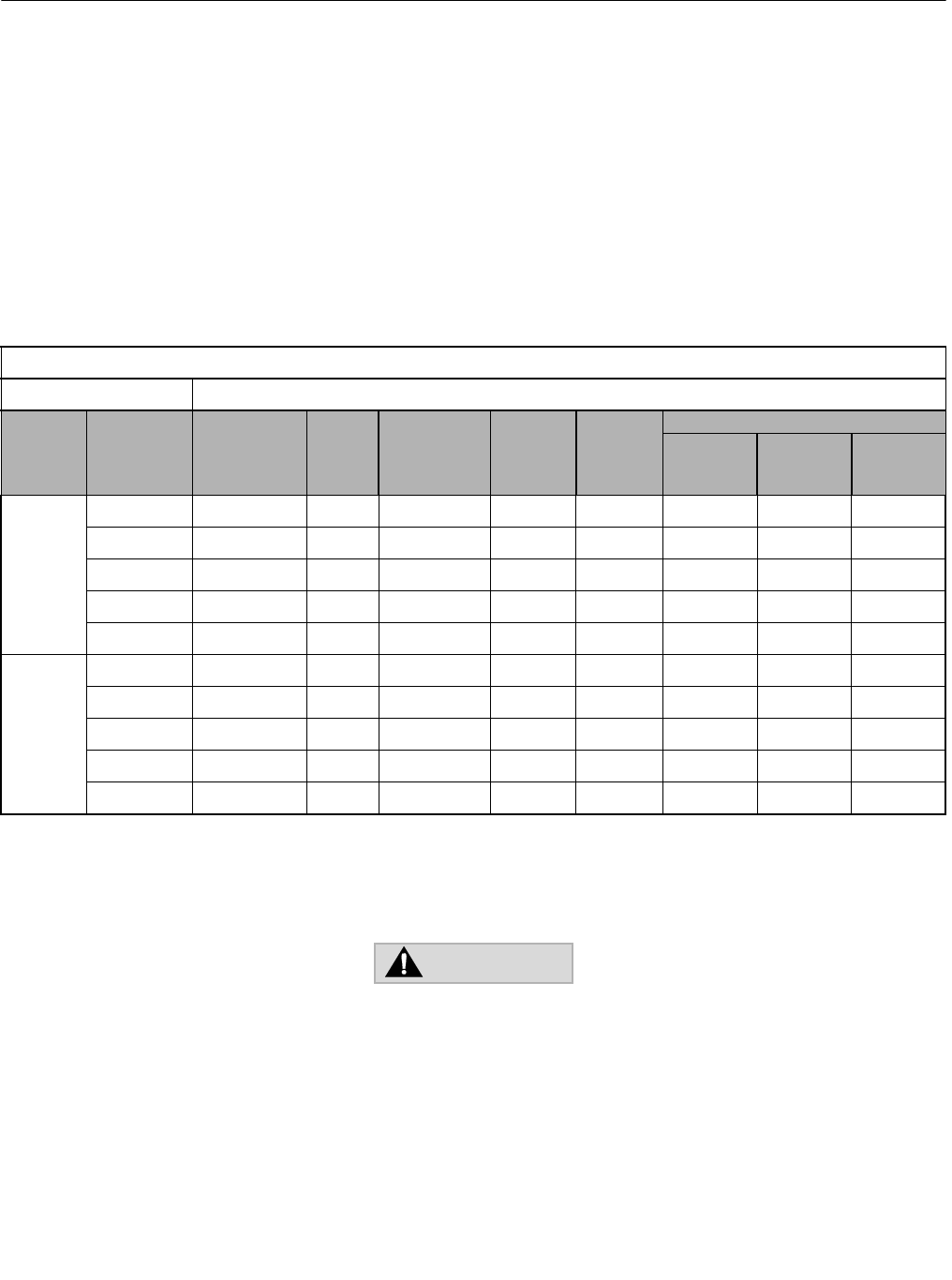
Electrical Installation 2 - 12
Dynamic Braking Connections
General
Dynamic braking (DB) enables the motor to be brought to a smooth and rapid stop. This is achieved by dissipating the
regenerative energy of the AC motor across the resistive components of the Dynamic Braking option. For further details on
dynamic braking operation, see the instruction sheet shipped with dynamic braking components.
Drives F7U20P4 thru F7U2018 and F7U40P4 thru F7U4018 have an integral braking transistor and require the addition of a
Remote Mounted Resistor Unit or a Heat Sink Mount Resistor (ERF). All higher rated Drives require the use of a Braking
Transistor Unit (CDBR) and a Remote Mount Resistor Unit.
Remote Mount Resistor Units typically mount outside of the electrical enclosure. Braking Transistor Units mount inside of the
electrical enclosure. Heat Sink Mount Resistors mount to the back of the Drive, attaching directly to the heat sink.
Installation
This option should only be installed by a technically qualified individual who is familiar with this type of equipment and the
hazards involved.
Hazardous voltages can cause severe injury or death. Lock all power sources feeding the Drive in the “OFF” position.
Failure to follow these installation steps may cause equipment damage or personal injury.
Preliminary Procedures
1. Disconnect all electrical power to the Drive.
2. Remove Drive front cover.
3. Use a voltmeter to verify that voltage is disconnected from incoming power terminals and that the DC bus has dissipated.
Table 2.8 Heat Sink Mount Dynamic Braking Resistor - 3% Duty Cycle
Drive Heat Sink Mount Resistor
Rated
Input
Vac
Drive Model
No. F7U Part No. Qty.
Reqd. Resistance
(Ohms) Power
(Watts)
Approx.
Braking
Torque
(%)
Dimensions (Inches)
Height Width Depth
208-240
20P4 R7505 1 200 150 220 7.16 1.73 0.51
20P7 R7505 1 200 150 125 7.16 1.73 0.51
21P5 R7504 1 100 150 125 7.16 1.73 0.51
22P2 R7503 1 70 150 120 7.16 1.73 0.51
23P7 R7510 1 62 150 100 7.16 1.73 0.51
480
40P4 R7508 1 750 150 230 7.16 1.73 0.51
40P7 R7508 1 750 150 130 7.16 1.73 0.51
41P5 R7507 1 400 150 125 7.16 1.73 0.51
42P2 R7506 1 300 150 115 7.16 1.73 0.51
43P7 R7505 1 200 150 110 7.16 1.73 0.51
WARNING
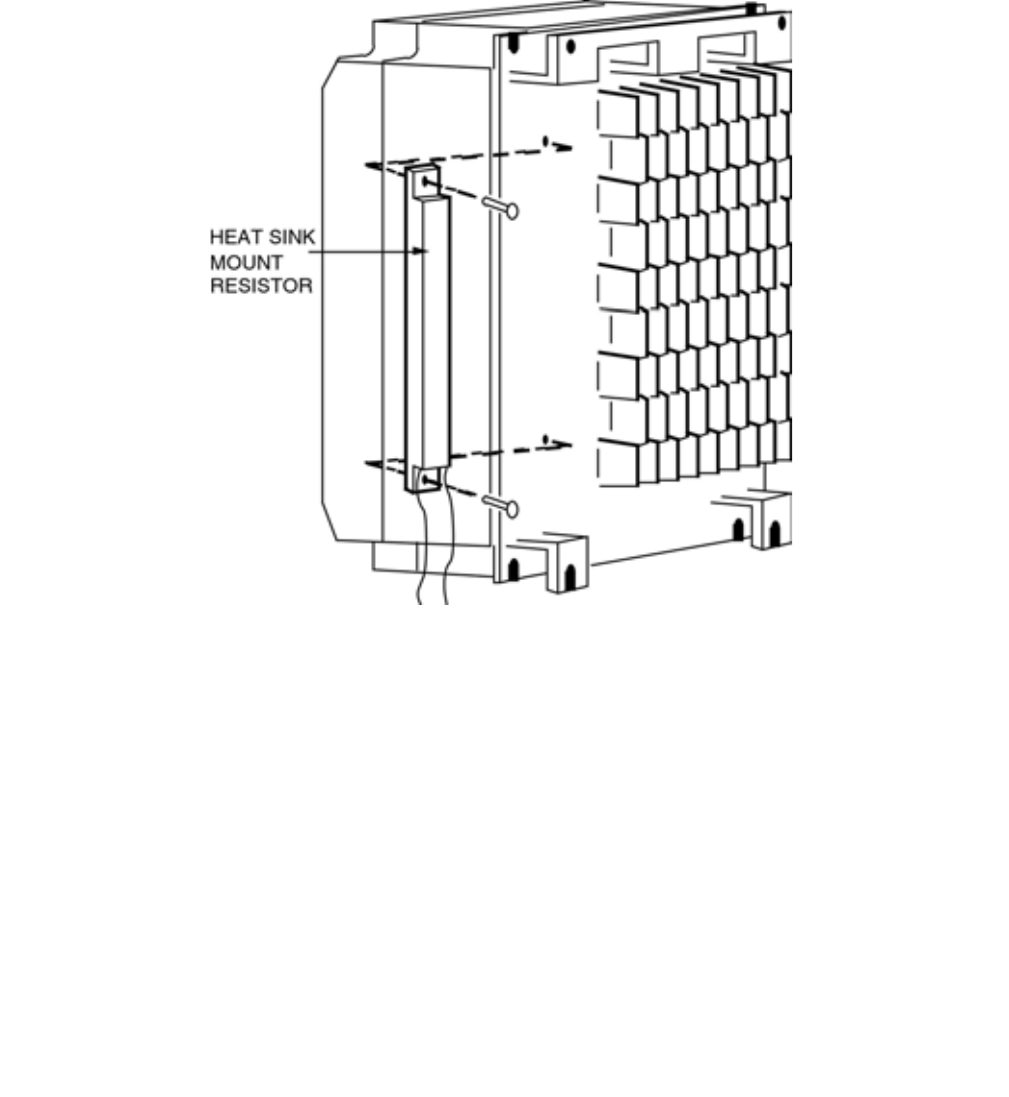
Electrical Installation 2 - 13
Heat Sink Mount Resistor Installation
1. Remove the Drive from its mounting for access to the rear of the heat sink.
2. Attach the Heat Sink Mount Resistor on the back of the Drive’s heat sink with screws M4 x 10mm (0.7mm pitch), as shown
in figure below.
3. Remove the rubber plug and run the braking resistor wires into the hole that leads to the terminal block.
4. Reinstall the Drive in its mounting position.
5. Connect the leads from the Heat Sink Mount Resistor to the Drive terminals B1 and B2.
6. Proceed to “Adjustments” section on page 2-18.
Fig 2.5 Attaching Heat Sink Mount Resistor on Heat Sink
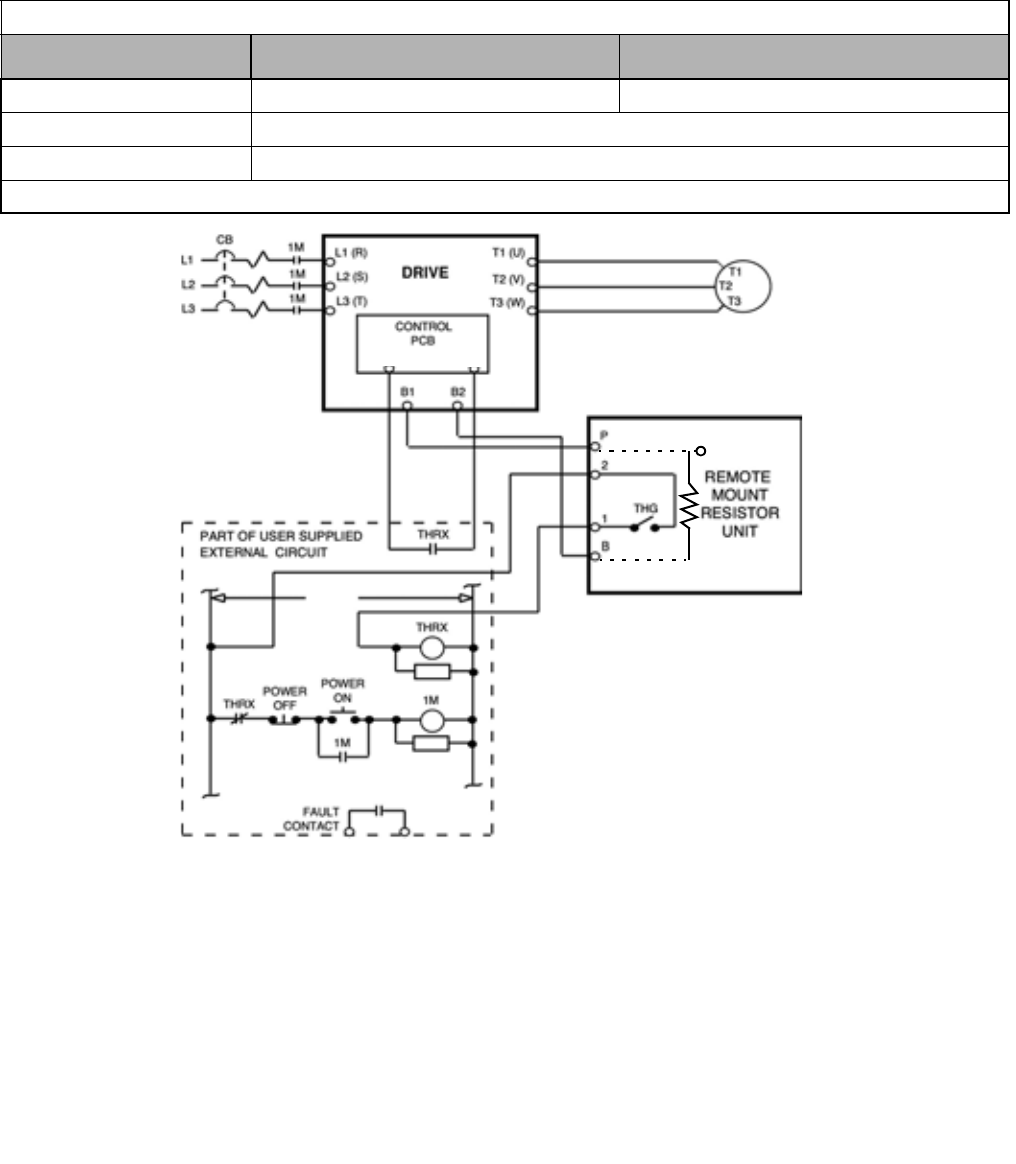
Electrical Installation 2 - 14
Remote Mount Resistor Unit Installation Using Internal Braking Transistor
(for F7U20P4 thru F7U2018 and F7U40P4 thru F7U4018)
Since the Remote Mount Resistor Unit generates heat during dynamic braking operation, install it in a location away from
other equipment.
1. Install the Remote Mount Resistor Unit to a noncombustible surface, maintaining a minimum 1.97 inches (50mm)
clearance on each side and a minimum 7.87 inches (200mm) clearance on top.
2. Remove the Remote Mount Resistor Unit cover to access its terminal block. Connect the Remote Mount Resistor Unit to
the Drive and to external control circuitry according to the figure below.
Fig 2.6 Wiring Remote Mount Resistor Unit (for F7U20P4 thru F7U2018 and F7U40P4 thru F7U4018)
3. Reinstall and secure Remote Mount Resistor Unit cover and Drive front cover.
4. Proceed to “Adjustments” section on Page 2-18.
Table 2.9 Wire Size for Remote Mount Resistor Unit
Terminals B, P, R1, R2 1, 2*
Wire Size (AWG) 12-10 18-14*
Wire Type 600V Ethylene propylene rubber insulated, or equivalent
Terminal Screw M4
* Power Leads for the Remote Mount Resistor Unit generate high levels of electrical noise - these signal leads must be grouped separately.
IM
S3 SN
‡
(R2)*
(R1)*
3% DUTY CYCLE
RESISTOR ASSEM-
*Terminal markings in parentheses
are for resistors manufactured by
Powerohm Resistors Inc.
‡Applies when SC is jumpered to SP
and S3 is programmed as External
Fault.
120 VAC
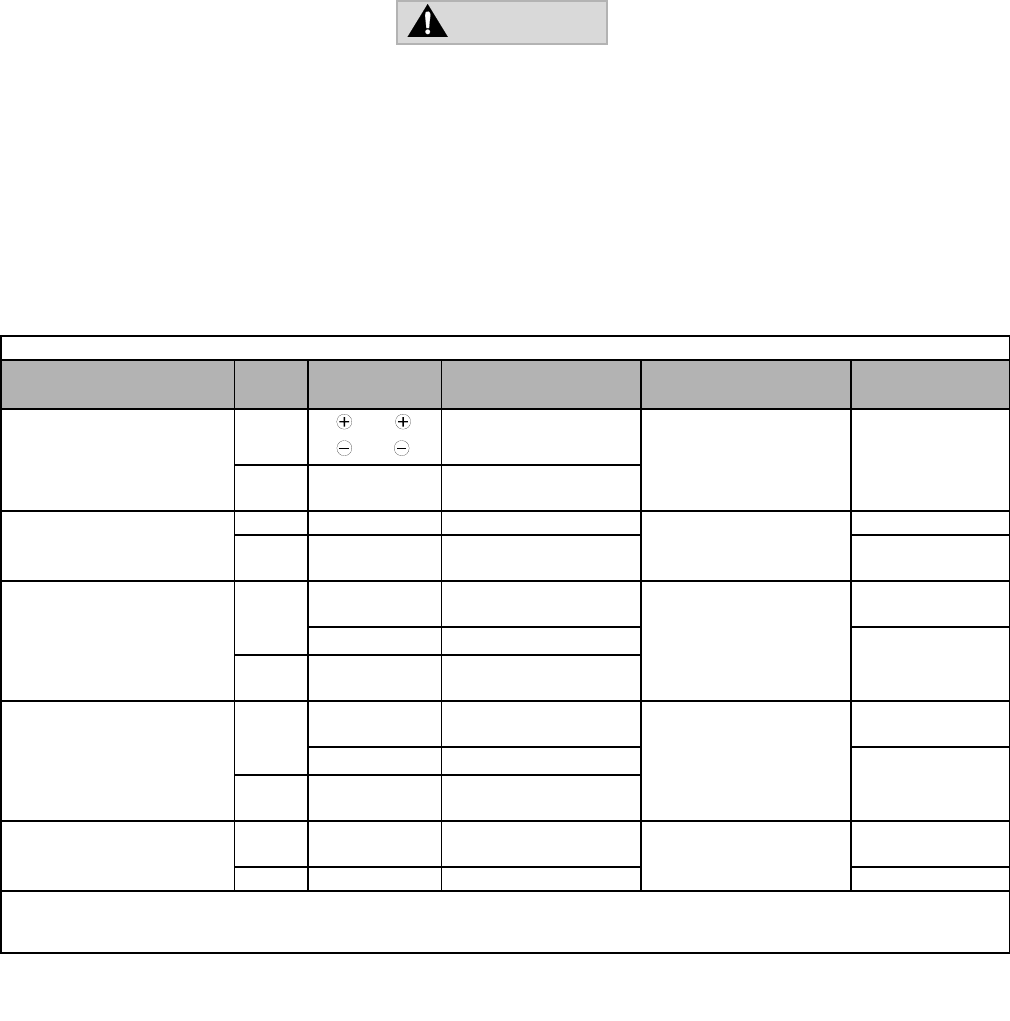
Electrical Installation 2 - 15
Braking Transistor Unit(s) and Remote Mount Resistor Unit(s) Installation
(for F7U2022 thru F7U2110 and F7U4022 thru F7U4300)
Since the Remote Mount Resistor Unit generates heat during dynamic braking operation, install it to a noncombustible surface
in a location away from other equipment.
Select mounting locations for Braking Transistor Unit(s) and Remote Mount Resistor Unit(s) so that wiring between the Drive
and the Braking Transistor Unit is 16 feet (5m) or less, and the wiring between each Braking Transistor Unit and its associated
Remote Mount Resistor Unit, is less than 33 feet (10m).
1. Mount the Braking Transistor Unit(s) on a vertical surface. The Braking Transistor Unit requires a minimum of 1.18 inches
(30mm) clearance on each side and a minimum 3.94 inches (100mm) clearance top and bottom. Attach the Remote Mount
Resistor Unit maintaining a minimum 1.97 inches (50mm) clearance on each side and a minimum 7.87 inches (200mm)
clearance on top.
2. In each Braking Transistor Unit, set the nominal line voltage jumper plug to the correct setting for the installation; this is
factory set at the 220V/440V/575V position. To access jumper plugs, remove the plastic cover.
3. If multiple Braking Transistor Units are being installed, the unit closest to the Drive should have the Slave/Master jumper
plug set to the “Master” position (factory setting); all others must have this jumper plug set to the “Slave” position.
4. If a single Braking Transistor Unit and Remote Mount Resistor Unit are being installed, connect them to the Drive and
external control circuitry according to the chart below and Fig 2.7.
5. Power leads for the Remote Mount Resistor Unit generate high levels of electrical noise - these power leads must be
grouped separately from all other leads.
Table 2.10 Wire Size for Remote Mount Resistor Unit and Braking Transistor Unit
Name Circuit Terminals Wire Size AWG (mm2)Wire Type Terminal Screw
Braking Transistor Unit
(Models CDBR-2015B,
-2022B, -4030B, -4045B)
Main 0
0 12-10 (3.5-5.5) 600V vinyl sheathed wire
or equivalent M4
Control 1 2 3
4 5 6 18-14 (0.75-2)
Braking Transistor Unit
(Model CDBR-2045, -4090)
Main P, Po, N, B 12-10 (3.5-5.5) 600V vinyl sheathed wire
or equivalent
M5
Control 1 2 3
4 5 6 18-14 (0.75-2) M4
Braking Transistor Unit
(Model CDBR-2110)
Main P, Po, N, B 4 (22)
8-6 (8-14) *1 600V vinyl sheathed wire
or equivalent
M6
r s12-10 (3.5-5.5)
M4
Control 1 2 3
4 5 6 18-14 (0.75-2)
Braking Transistor Unit
(Model CDBR-4220)
Main P, Po, N, B 4 (22)
8-6 (8-14) *1 600V vinyl sheathed wire
or equivalent
M6
r s12-10 (3.5-5.5)
M4
Control 1 2 3
4 5 6 18-14 (0.75-2)
Braking Resistor Unit
(Model LKEB-F)
Main B P 12-10 (3.5-5.5) 600V vinyl sheathed wire
or equivalent
M4
(M5) *2
Control 1 2 18-14 (0.75-2) M4
*1 For wire size of 8-6 (8-14), use UL1283 heat-resistant vinyl-insulated wire or equivalent.
*2 M4 for Models LKEB-20P7 to -27P5 or -40P7 to -4015.
M5 for Models LKEB-2011 to -2022 or -4018 to -4045.
WARNING
• Be sure to set the nominal line voltage selection jumper to match the level of the AC supply being applied to the Drive.
• Failure to do so may result in improper operation.
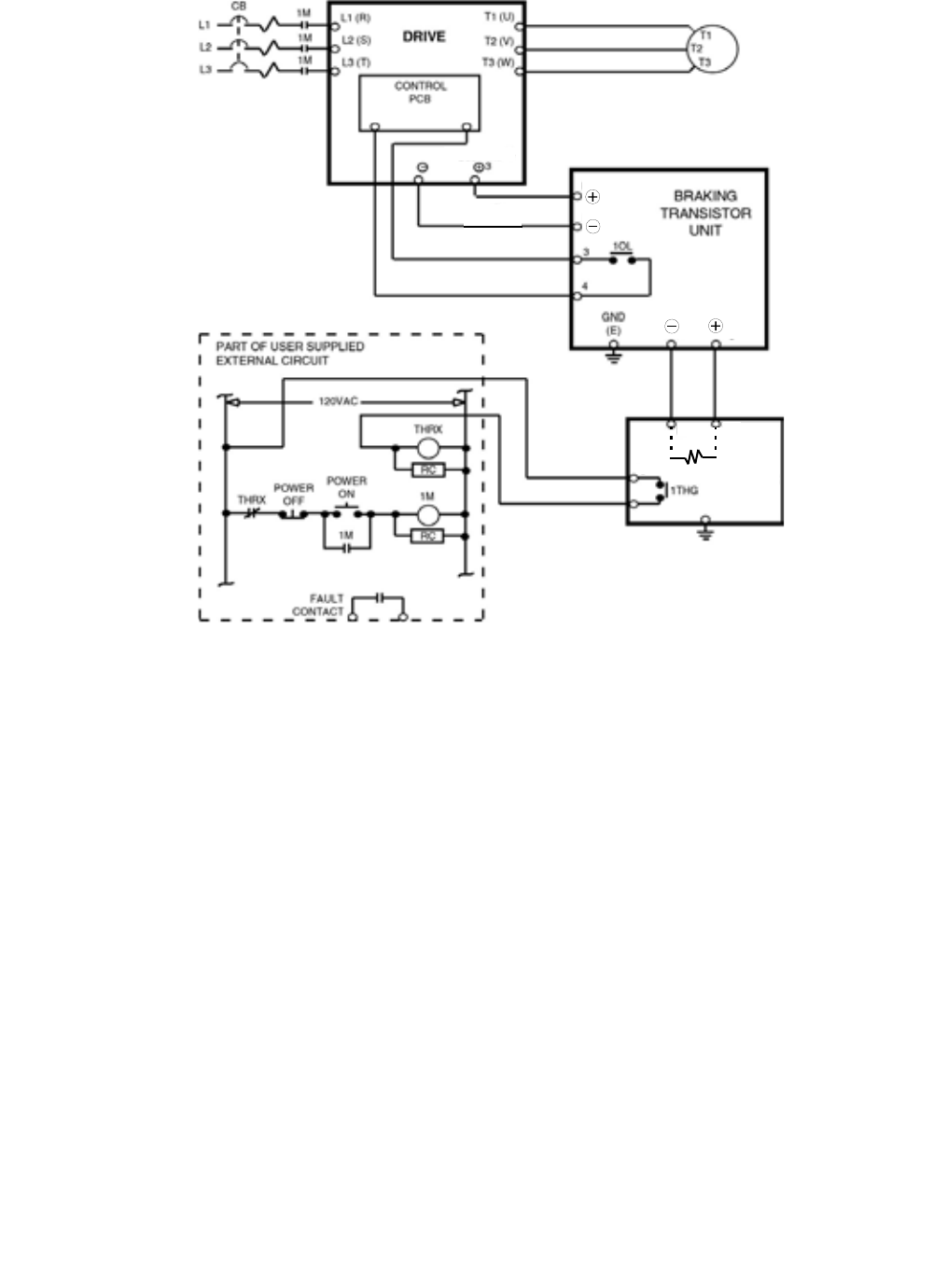
Electrical Installation 2 - 16
Fig 2.7 Wiring Single Braking Transistor Unit and Remote Mount Resistor Unit to Drive
(F7U2022 thru F7U2110 and F7U4022 thru F7U4300)
IM
S3 SN
‡
00
REMOTE
MOUNT
RESISTOR
UNIT
R2
R1
‡Applies when SC is jumpered to
SP and S3 is programmed as
External Fault.
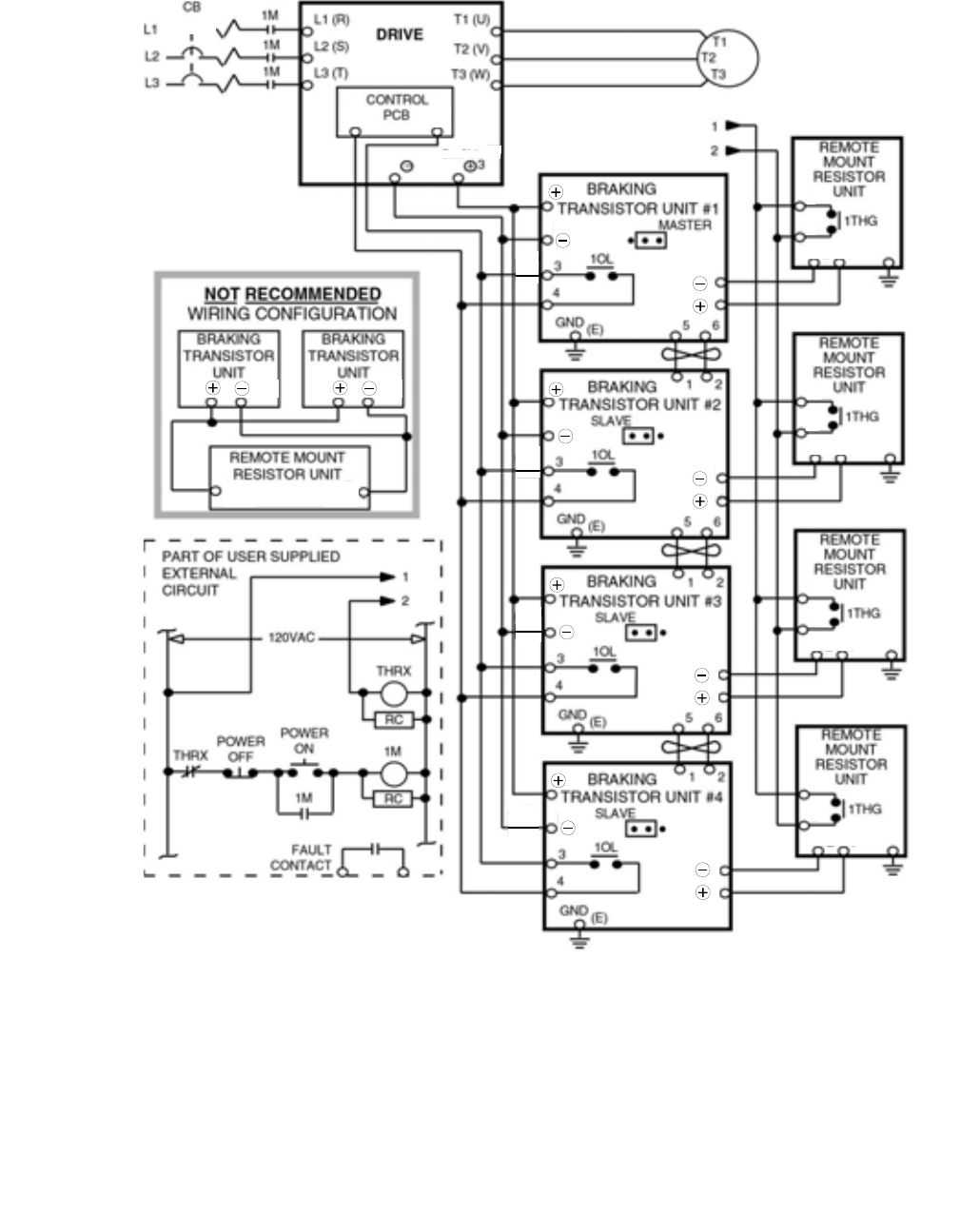
Electrical Installation 2 - 17
6. If two or more Braking Transistor Units and Remote Mount Resistor Units are being installed, connect them to the Drive
and to external circuitry according to Fig 2.8.
Fig 2.8 Wiring Multiple Braking Transistor Units and Remote Mount Resistor Units to Drive
(F7U2022 thru F7U2110 and F7U4022 thru F7U4300)
IM
Note: Connect only the number of braking transistor units and remote mount resistor units required for the application.
S3 SN‡
0
0
0
0
0
0
0
0
R1 R2
R1 R2
R1 R2
R1 R2
0000
R2 R1
‡Applies when SC is jumpered to SP and
S3 is programmed as External Fault.

Electrical Installation 2 - 18
Adjustments
7. All Drives: Program Parameter L3-04 to “0” or “3” to disable stall prevention during deceleration.
8. Heat Sink Mount Resistor Only: Program L8-01 to “1” to enable overheat protection for heat sink mount braking resistor.
Operation Check
9. During dynamic braking, verify that the “BRAKE” lamp inside the Braking Unit is lit. This lamp illuminates only when
dynamic braking is activating (during quick deceleration).
10.During dynamic braking, ensure that the required deceleration characteristic is obtained. If not, contact Yaskawa for
assistance.
11.Reinstall and secure covers on the Braking Transistor Units, Remote Mount Resistor Units, and the Drive.
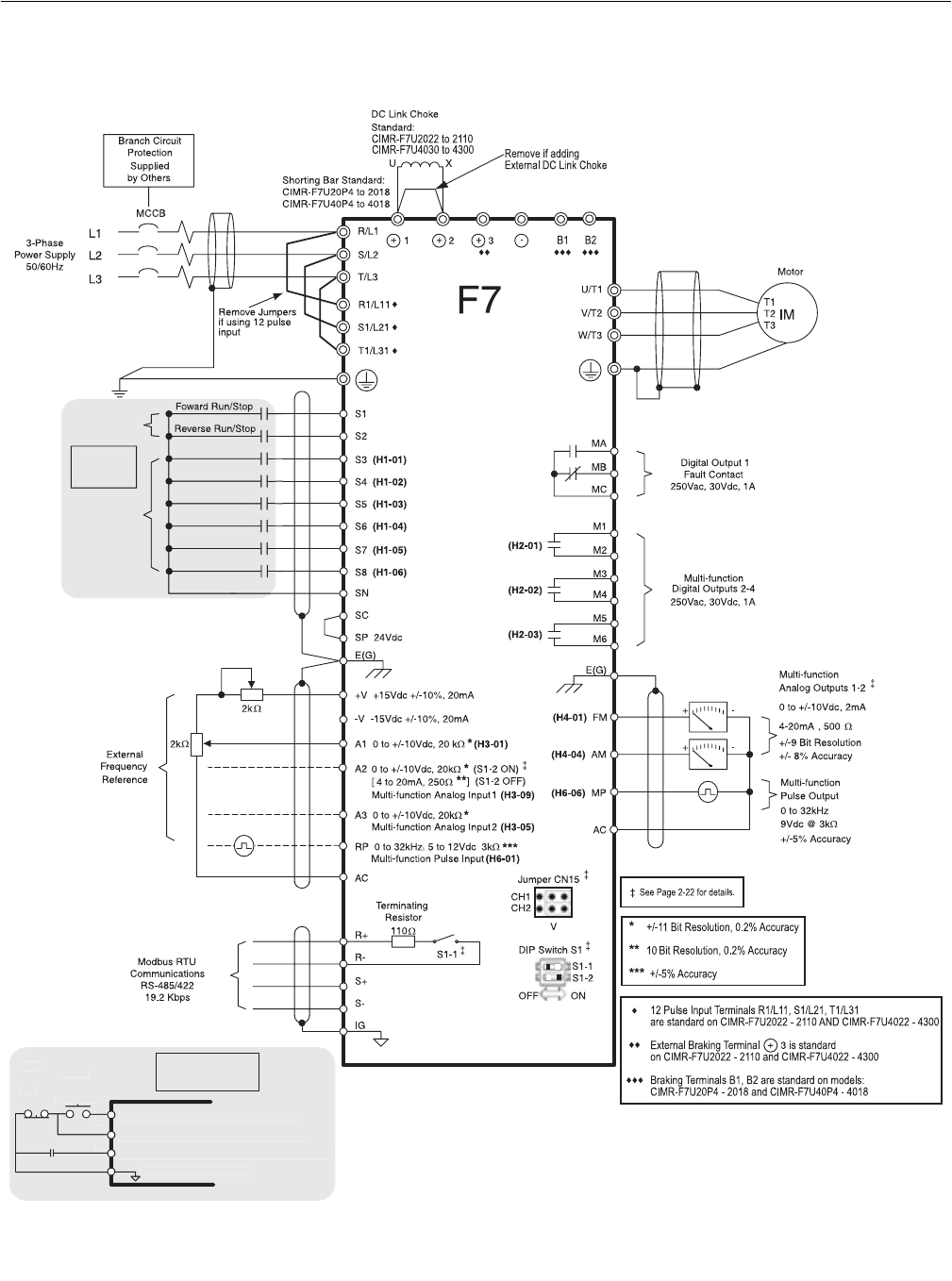
Electrical Installation 2 - 19
Terminal Connections
Connections to Drive terminals are shown in Fig 2.9.
External Fault
Fault Reset
Multi-Step Ref 1
Multi-Step Ref 2
Jog Reference
Baseblock
2-Wire
Control
Run command (run on momentary close)
Stop command (stop on momentary open)
Forward/reverse command (multi-function input)
Sequence input common
Fwd/Rev
S1
S2
S5
Stop
switch
(NC
contact)
Operation
switch
(NO
contact)
R
un command (run on momentary close
)
S
top command (stop on momentary open)
Forward
/
reverse command
(
multi-
f
unction input
)
S
equence input commo
n
Fwd
/
Re
v
S
1
S
2
S5
S
to
p
s
witc
h
(
N
C
c
ontact
)
Op
eratio
n
s
w
i
t
ch
(
N
O
contact
)
3-Wire Control
SN
Digital Inputs 1-2
24Vdc, 8mA
Multi-function
Digital Inputs 3-8
24Vdc, 8mA
Fig 2.9 Terminal Connections
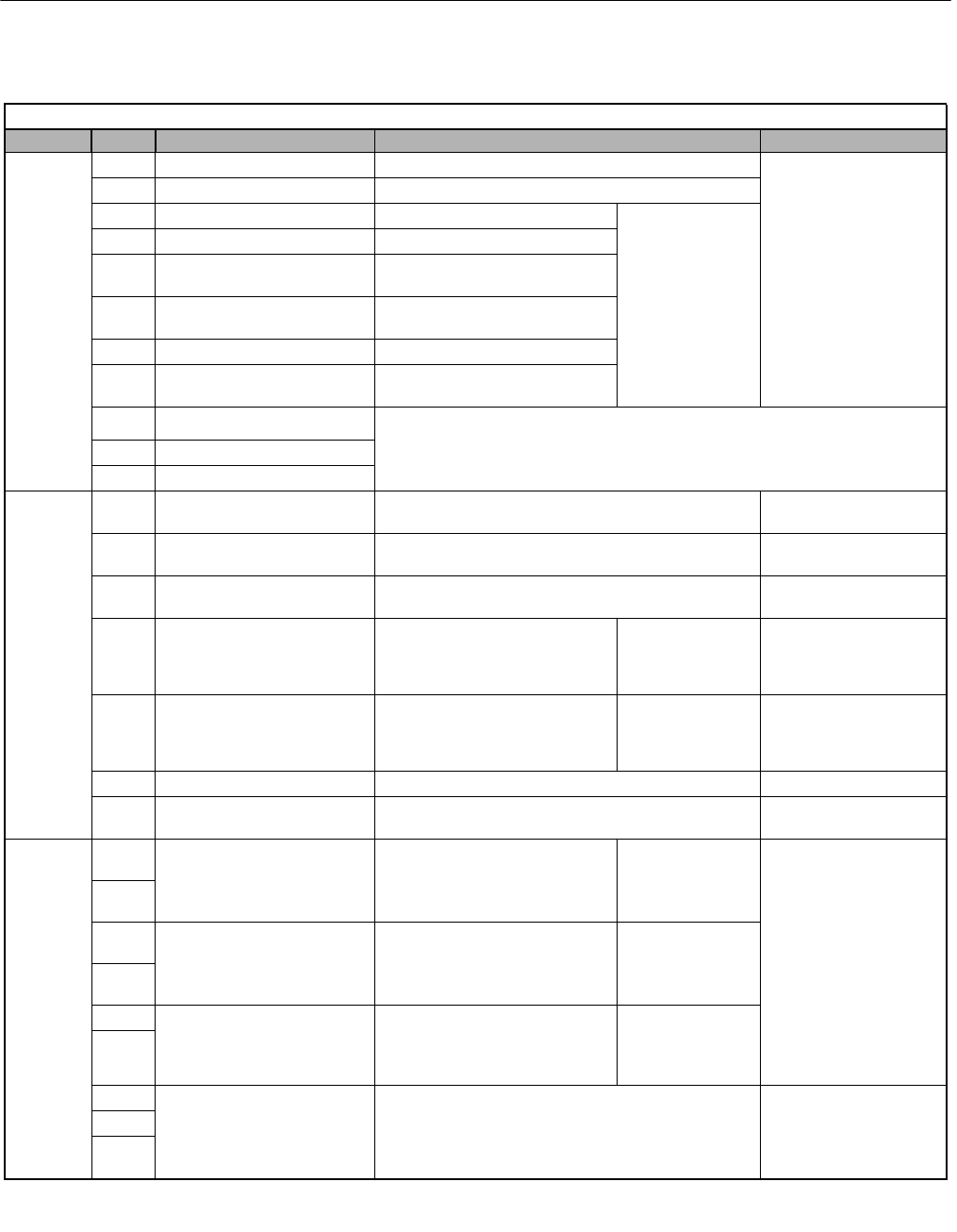
Electrical Installation 2 - 20
Control Wiring
Control Circuit Terminal Functions
The factory default functions of the control circuit terminals for 2-wire control are shown in Table 2.11.
Table 2.11 Control Circuit Terminals
Type No. Default Function Description Signal Level
Digital
Input
Signals
S1 Forward run/stop command Forward run when CLOSED; stopped when OFF.
24Vdc, 8mA
Photocoupler isolation
S2 Reverse run/stop command Reverse run when CLOSED; stopped when OFF.
S3 External fault input Fault when CLOSED.
Multi-function
digital inputs.
Functions set by
H1-01 to H1-06.
S4 Fault reset Reset when CLOSED.
S5 Multi-step speed reference 1
(Master/auxiliary switch) Auxiliary frequency reference
when CLOSED.
S6 Multi-step speed reference 2 Multi-step setting 2 when
CLOSED.
S7 Jog frequency reference Jog frequency when CLOSED.
S8 External baseblock N.O. Shuts off Drive’s output when
CLOSED.
SN Digital input supply common Refer to Table 2.15 for connection details.
SC Digital input photocoupler
SP Digital input supply +24Vdc
Analog
Input
Signals
+V +15Vdc power output +15Vdc power supply for analog inputs or transmitters. +15Vdc
(Max. current: 20mA)
-V -15Vdc power output -15Vdc power supply for analog inputs or transmitters. -15Vdc
(Max. current: 20mA)
A1 Analog input or
speed command 0 to +10Vdc/100%
0 to +/-10Vdc / 100% (H3-01) 0 to +10V(20kΩ)
A2 Add to terminal A1 4 to 20mA/100%
0 to +10Vdc / 100% (H3-08)
Multi-function
analog input 2.
Function set by
H3-09.
4 to 20mA(250Ω)
0 to +/-10V(20kΩ)
A3 Aux. frequency reference 1 0 to +10Vdc/100%
0 to +/-10Vdc / 100% (H3-04)
Multi-function
analog input 3.
Function set by
H3-05
0 to +/-10V(20kΩ)
AC Analog common – –
E(G) Shield wire, optional ground
line connection point ––
Digital
Output
Signals
M1 During run
(N.O. contact) CLOSED during operation.
Multi-function
digital output.
Function set by
H2-01. Form A
Dry contacts
capacity:
1A max. at 250Vac
1A max. at 30Vdc
M2
M3 Zero Speed
(N.O. contact) CLOSED when below minimum
frequency.
Multi-function
digital output.
Function set by
H2-02.
M4
M5 Frequency agree
(N.O. contact) CLOSED when set frequency
matches output frequency.
Multi-function
digital output.
Function set by
H2-03.
M6
MA
Fault output signal
(SPDT) MA/MC: CLOSED during fault condition
MB/MC: OPEN during fault condition
Form C
Dry contacts
capacity:
1A max. at 250Vac
1A max. at 30Vdc
MB
MC
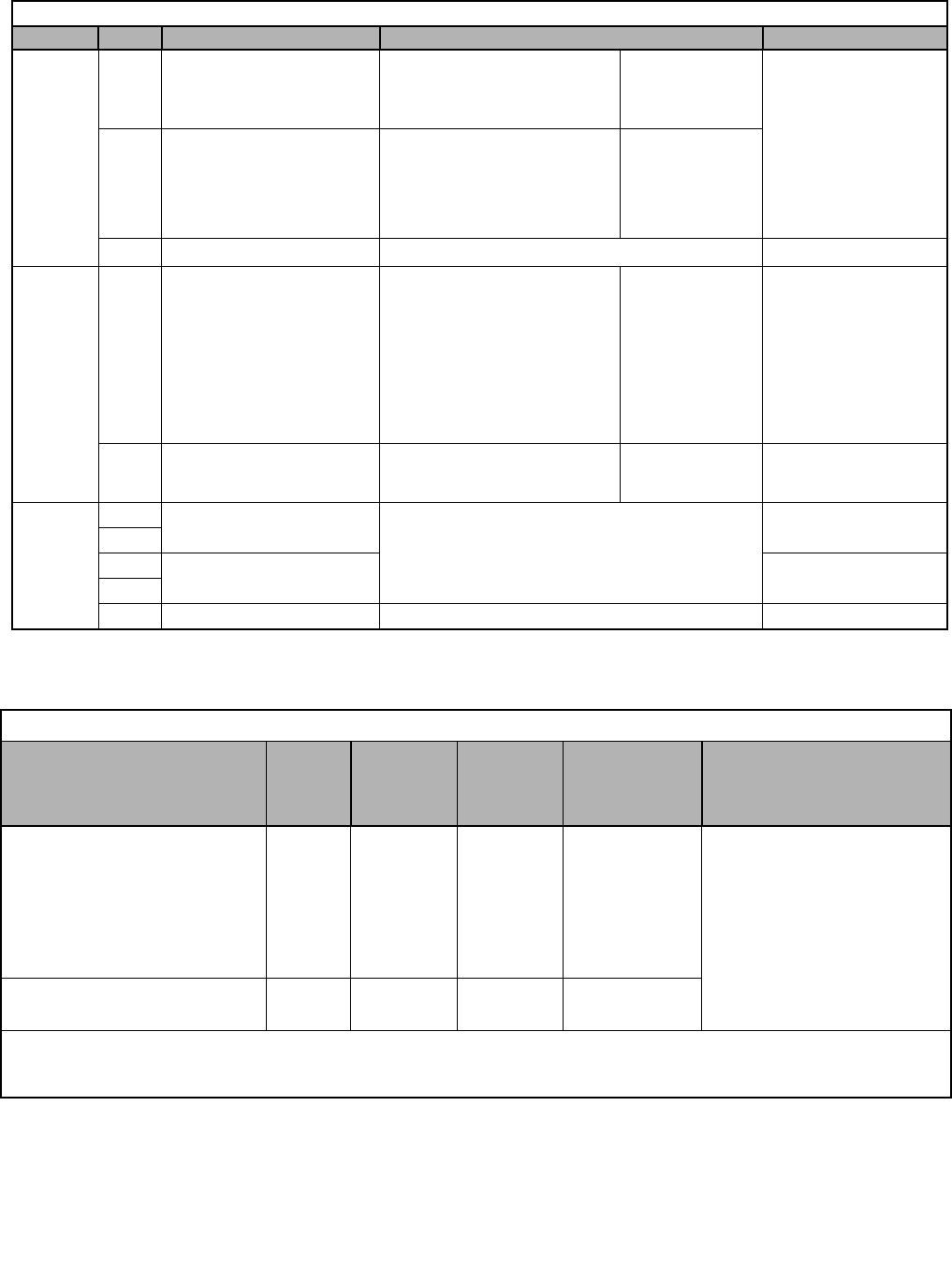
Electrical Installation 2 - 21
Analog
Output
Signals
FM Output frequency 0 to +10Vdc / 100% frequency
-10 to +10Vdc / 100% frequency
4 to 20mA / 100% frequency
Multi-function
analog output 1.
Function set by
H4-01. 0 to +10Vdc
-10 to +10Vdc
(Max current 2mA)
4 to 20mA, 500Ω
AM Output current
0 to +10Vdc / 100% Drive's rated
output current
-10 to +10Vdc / 100% Drive's
rated output current
4 to 20mA / 100% Drive's rated
output current
Multi-function
analog output 2.
Function set by
H4-04.
AC Analog common – -
Pulse I/O
RP Pulse input Pulse input frequency reference Function set by
H6-01.
0 to 32kHz (3kΩ) ±5%
High level voltages
3.5 to 13.2
Low level voltages
0.0 to 0.8
Duty Cycle (on/off)
30% to 70%
MP Pulse monitor Pulse output frequency Function set by
H6-06.
0 to 32kHz
+5V output
(Load: 1.5kΩ)
RS-485/
422
R+ Modbus
communication input For 2-wire RS-485, jumper R+ and S+ and
jumper R- and S-.
Differential input,
PHC isolation
R-
S+ Modbus
communication output Differential output,
PHC isolation
S-
IG Signal common – –
Table 2.12 Terminal Numbers and Wire Sizes (Same for all Drives)
Terminals Terminal
Screws
Tightening
Torque
lb-in
(N•m)
Possible
Wire Sizes
AWG (mm2)
Recommended
Wire Size AWG
(mm2)
Wire Type
S1, S2, S3, S4, S5, S6, S7, S8, SN,
SC, SP, +V, -V, A1, A2, A3, AC, RP,
M1, M2, M3, M4, M5, M6, MA, MB,
MC, FM, AC, AM, MP, R+, R-, S+,
S-, IG
Phoenix
type *3 4.2 to 5.3
(0.5 to 0.6)
Stranded
wire:
26 to 16
(0.14 to 1.5)
18
(0.75) • Shielded, twisted-pair wire*1
• Shielded, polyethylene-covered,
vinyl sheath cable*2
E(G) M3.5 7.0 to 8.8
(0.8 to 1.0)
20 to 14
(0.5 to 2)
12
(1.25)
*1 Use shielded twisted-pair cables to wire an external speed command.
*2 Yaskawa recommends using straight solderless terminals on digital inputs to simplify wiring and improve reliability.
*3 Yaskawa recommends using a thin-slot screwdriver with a 3.5mm blade width.
Table 2.11 Control Circuit Terminals (Continued)
Type No. Default Function Description Signal Level
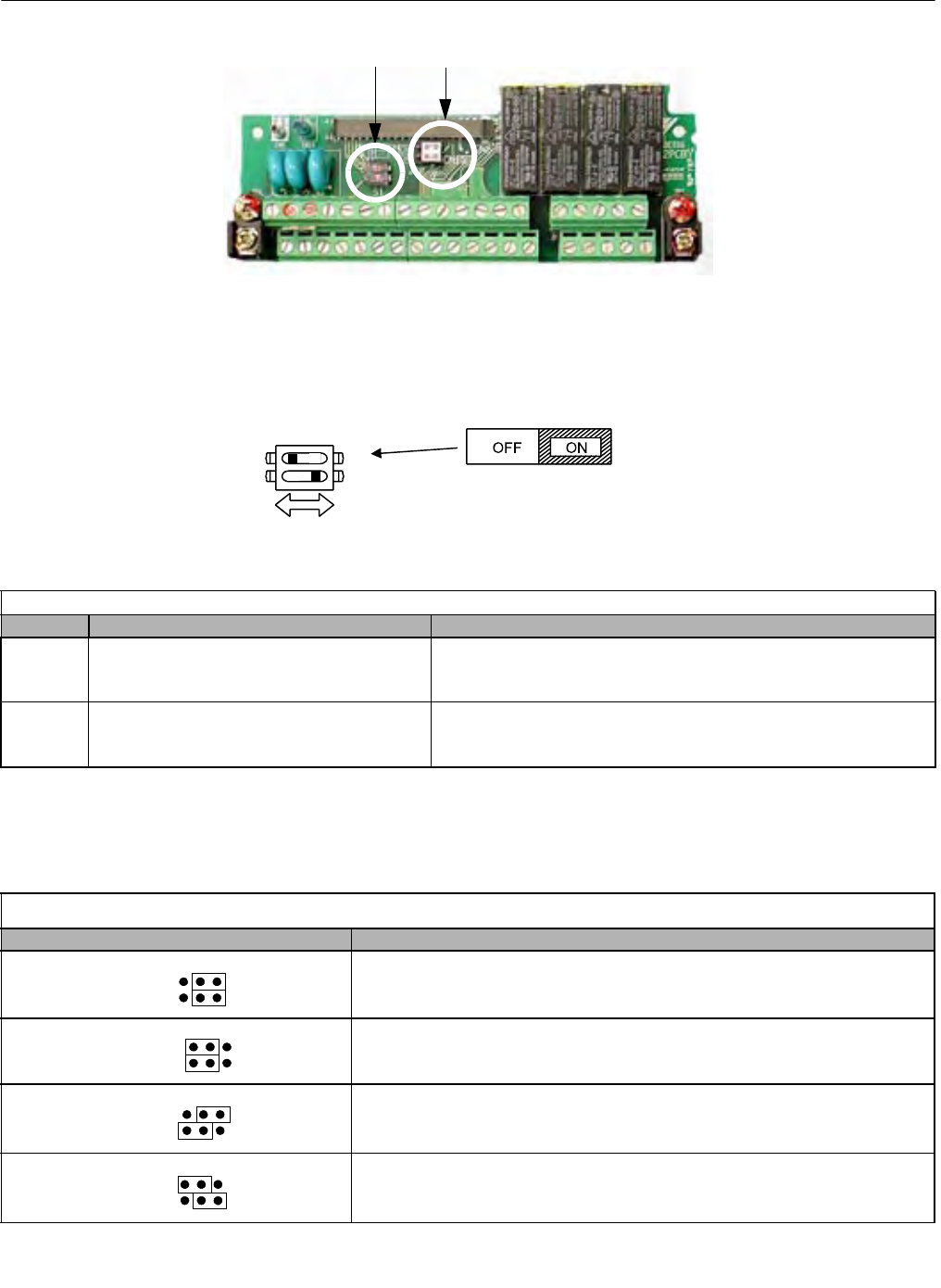
Electrical Installation 2 - 22
DIP Switch S1 and Jumper CN15
Fig 2.10 DIP Switch S1 and Jumper CN15 Location
Dip Switch S1
DIP Switch S1 is described in this section. The functions of DIP switch S1 are shown in Table 2.13.
Fig 2.11 DIP Switch S1 Function
Jumper CN15
Jumper CN15 is described in this section. The jumper position of CH1 and CH2 determines the signal level of the
multi-function analog output FM and AM, respectively. The functions and positions of CN15 are shown in Table 2.14.
Table 2.13 DIP Switch S1
Name Function Setting
S1-1 RS-485 and RS-422 terminating resistance
OFF: No terminating resistance
ON: Terminating resistance of 110Ω
Factory Default = OFF
S1-2 Input method for analog input A2
OFF: 0 to 10Vdc or -10 to 10Vdc (internal resistance: 20KΩ)
ON: 4-20mA (internal resistance: 250Ω)
Factory Default = ON
Table 2.14 Jumper CN15 Configuration Options
Jumper CN15 Configuration Analog Output Monitor Configuration
Voltage Output (0-10Vdc) for terminals FM-AC (CH1) and AM-AC (CH2)
Current Output (4-20mA) for terminals FM-AC (CH1) and AM-AC (CH2)
Voltage Output (0-10Vdc) for terminals FM-AC (CH1)
Current Output (4-20mA) for terminals AM-AC (CH2)
Current Output (4-20mA) for terminals FM-AC (CH1)
Voltage Output (0-10Vdc) for terminals AM-AC (CH2)
S1
S1 ON/OFF
position
DIP Switch S1 located on
terminal board.
2
1
CH1
CH2
CH1
CH2
CH1
CH2
CH1
CH2
CN15
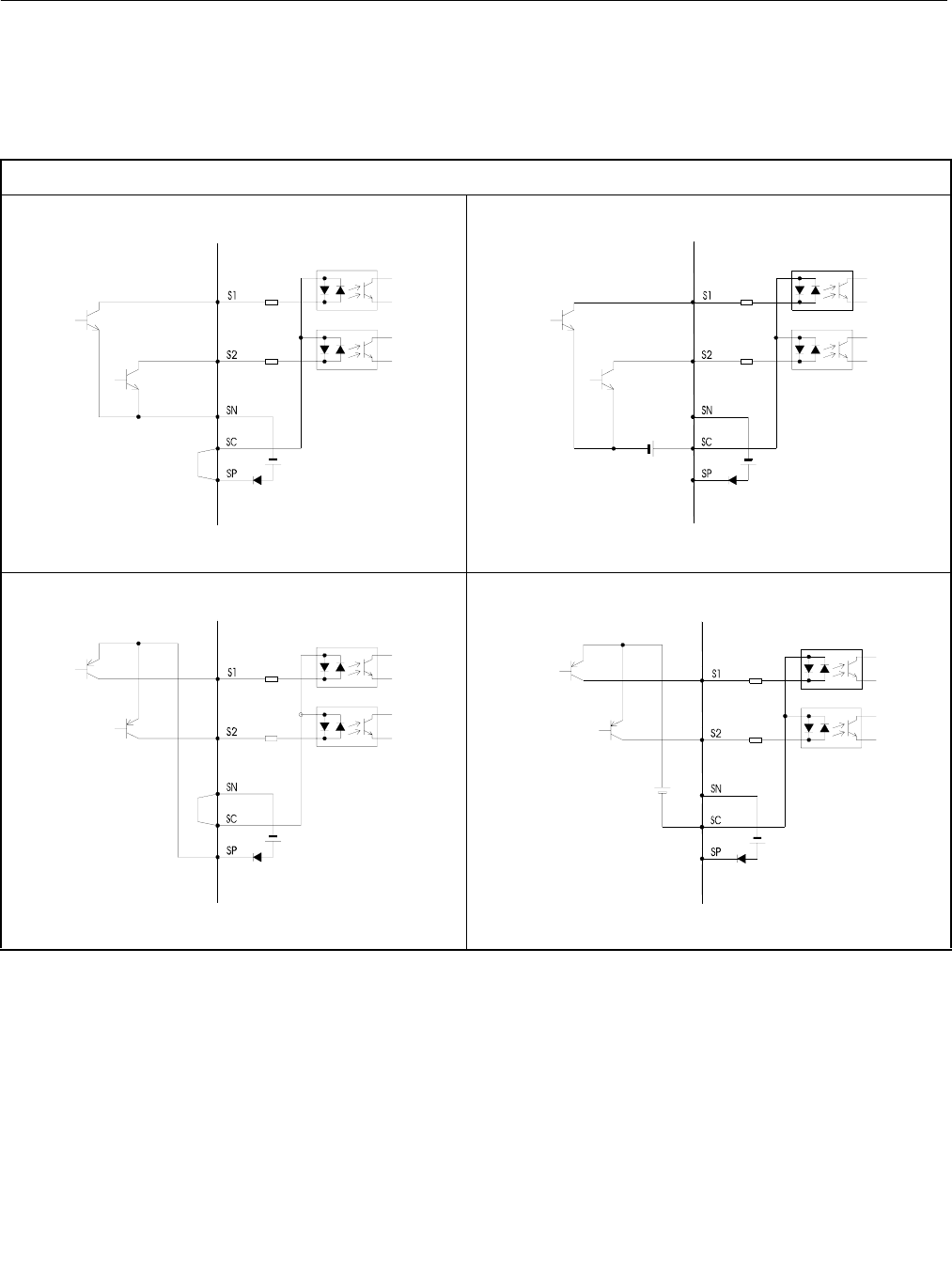
Electrical Installation 2 - 23
Sinking/Sourcing Mode
The multi-function digital input terminal logic can be switched between sinking mode (0Vdc common) and sourcing mode
(+24Vdc common) by using the terminals SN, SC, and SP. An external power supply can also be connected, providing more
freedom in signal input methods.
Table 2.15 Sinking/Sourcing Mode and Input Signals
Internal Power Supply – Sinking Mode
(Factory Default)
IP24V (+24Vdc)
External Power Supply – Sinking Mode
External +24Vdc IP24V (+24Vdc)
Internal Power Supply – Sourcing Mode
IP24V (+24Vdc)
External Power Supply – Sourcing Mode
External +24Vdc
IP24V (+24Vdc)
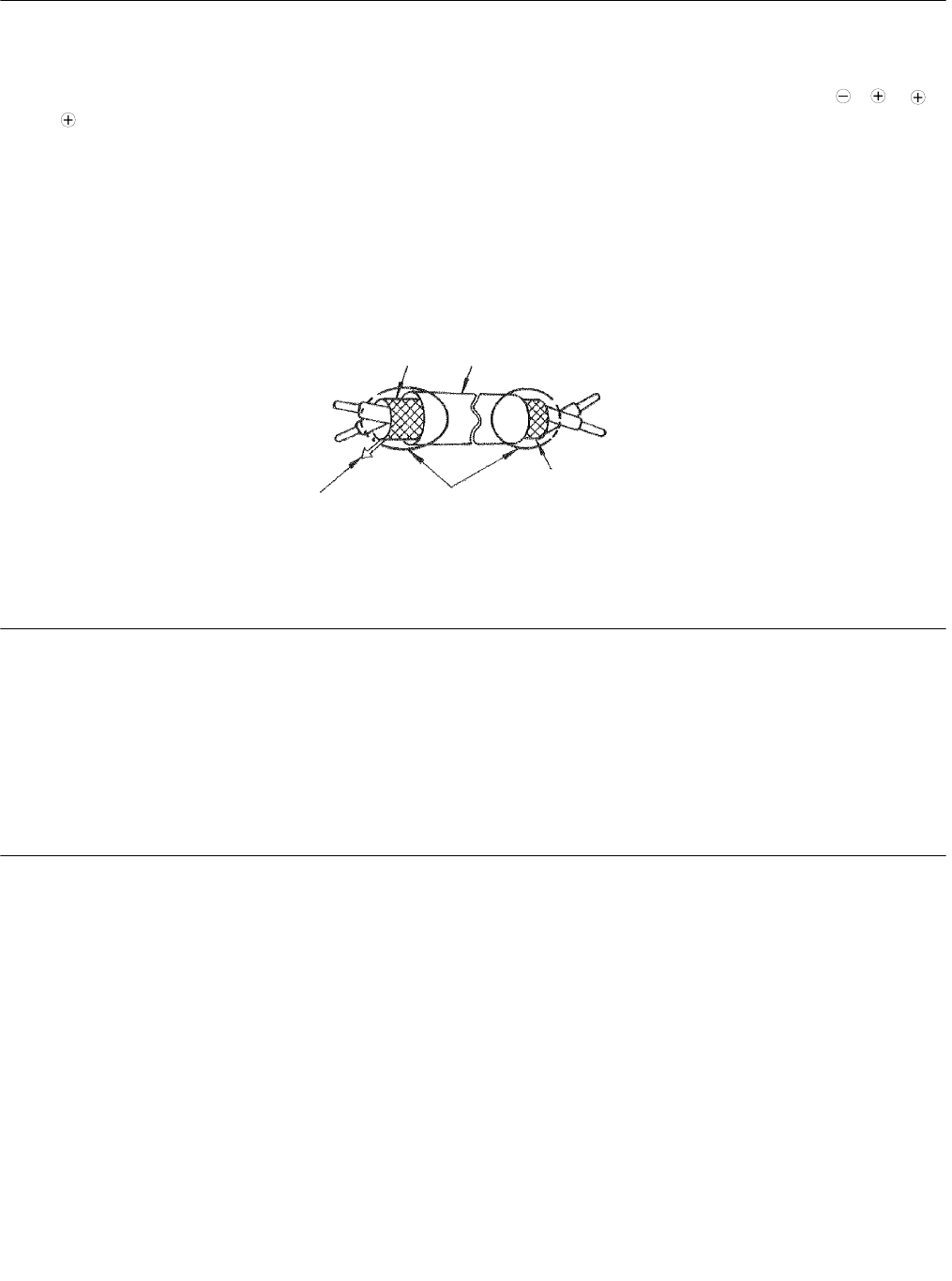
Electrical Installation 2 - 24
Control Circuit Wiring Precautions
Observe the following precautions when wiring control circuits:
1. Separate control wiring from power/motor wiring (terminals R/L1, S/L2, T/L3, U/T1, V/T2, W/T3, B1, B2, , 1, 2,
and 3) and other high-power lines.
2. Separate wiring for control circuit terminals MA, MB, MC, M1, M2, M3, M4, M5, and M6 (digital outputs) from wiring to
other control circuit terminals.
3. If using an optional external power supply, ensure it is a UL Listed Class 2 power supply source.
4. Use twisted-pair or shielded twisted-pair cables for control circuits to prevent operating faults. Prepare cable ends as shown
in Fig 2.12.
5. Connect the shield wire to terminal E(G).
6. Insulate the shield with tape to prevent contact with other signal lines and equipment.
Fig 2.12 Preparing the Ends of Twisted-pair Cables
Control Circuit Wire Sizes
For remote operation, keep the length of the control wiring to 50m or less. Separate the control wiring from high-power lines
(input power, motor leads or relay sequence circuits) to reduce noise induction from peripheral devices.
When setting speed commands from an external speed potentiometer, use shielded twisted-pair wires and ground the shield to
terminal E(G), as shown above. Terminal numbers and wire sizes are shown in Table 2.12.
Wiring Checks
After all wiring is completed, perform the following checks:
1. Is all wiring correct?
2. Have all wire clippings, screws or other foreign material been removed from the Drive enclosure?
3. Are all terminal screws tight?
Shield sheath Insulation
Connect to shield sheath
terminal E(G) at Drive Insulate with tape
Do not connect here.
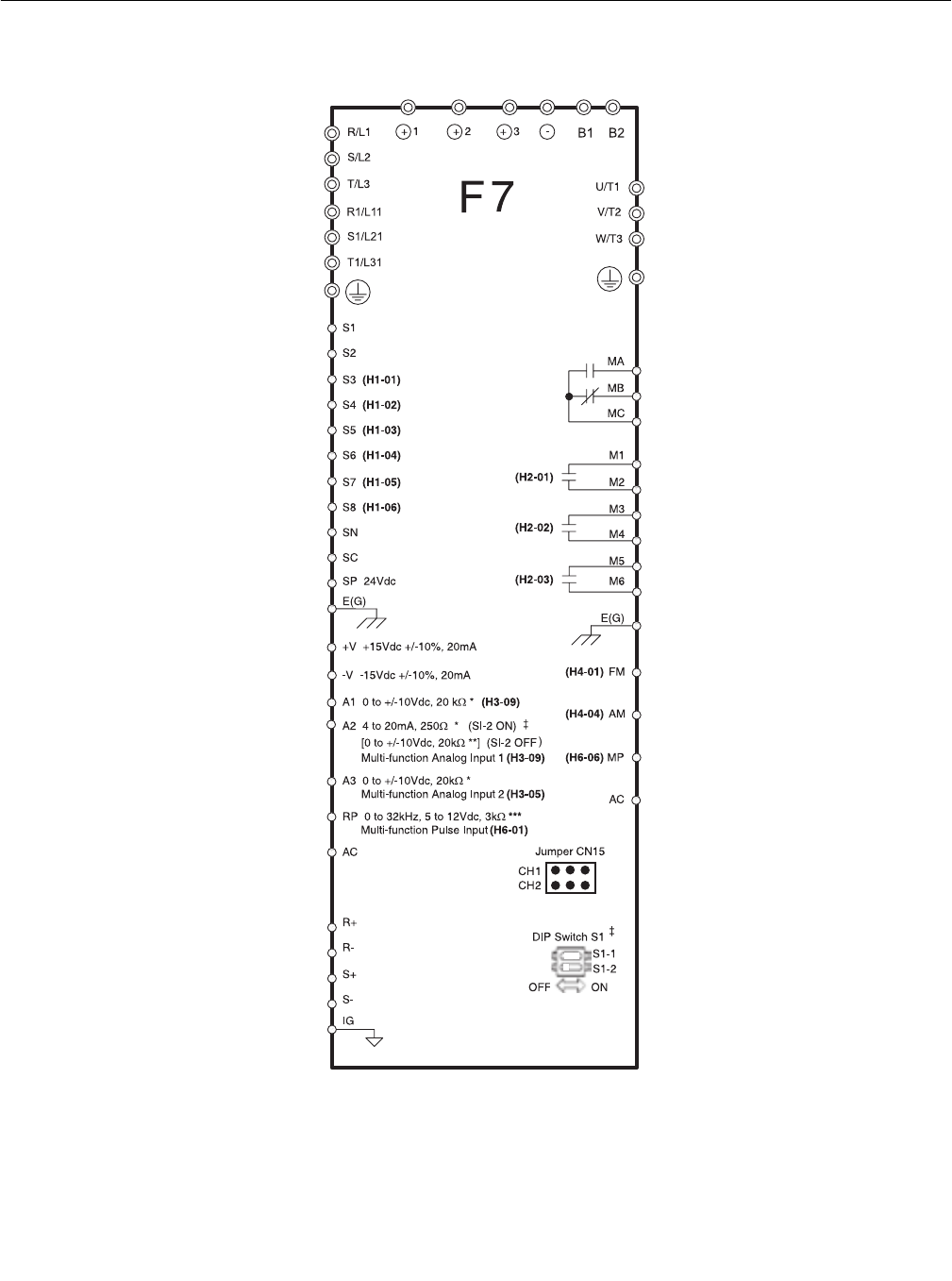
Electrical Installation 2 - 25
Field Wiring Diagram
Use this diagram to document field wiring. It may be helpful to copy this page.
Fig 2.13 Field Wiring Diagram
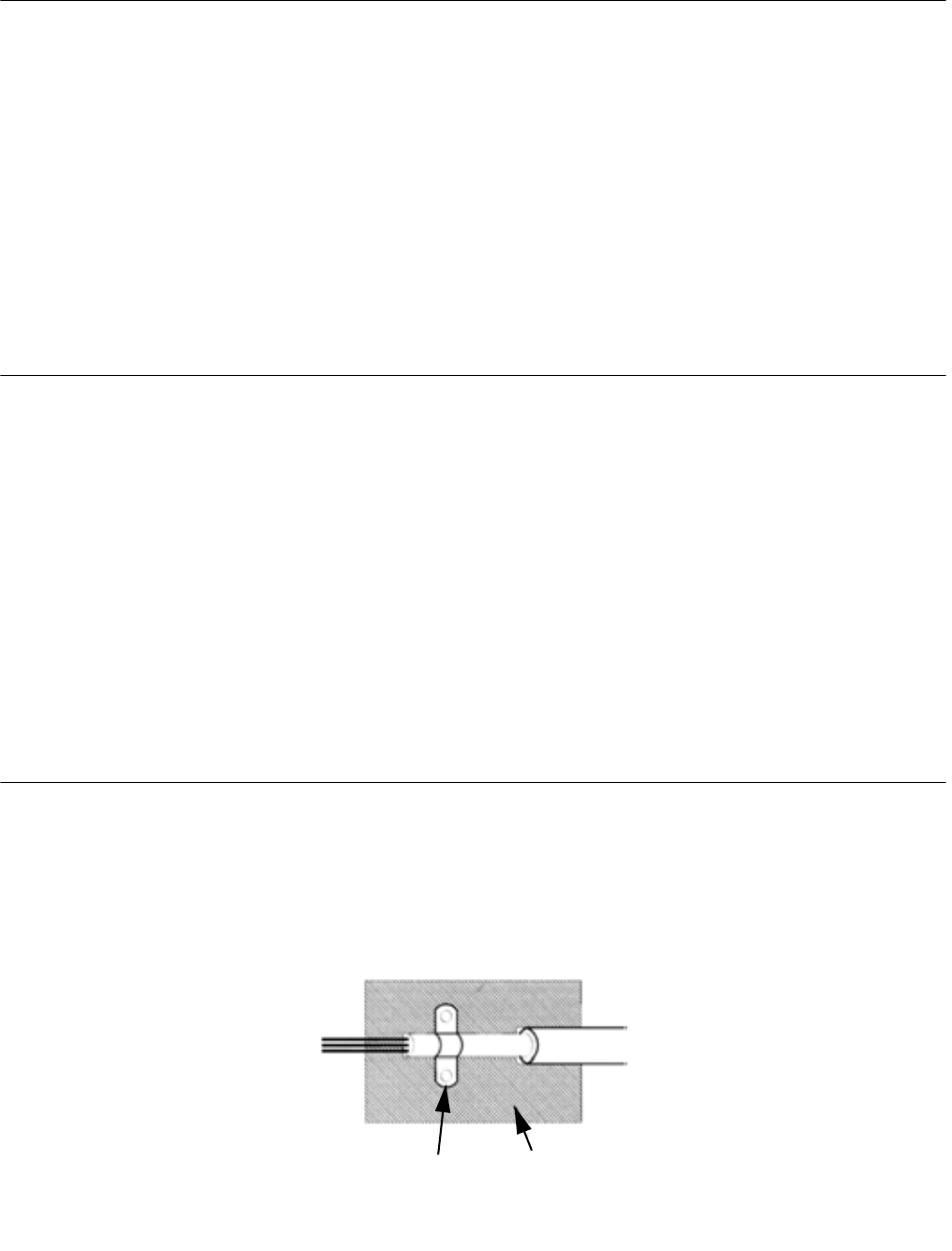
Electrical Installation 2 - 26
Electromagnetic Compatibility (EMC)
Introduction
This section describes the measures necessary to comply with the EMC (Electro Magnetic Compatibility) Directive.
The manual's installation and wiring instructions must be followed for compliance.
Yaskawa products are tested by certified independent test laboratories for compliance toward the EMC Directive 89/336/EEC
as amended by 91/263/EEC, 92/31/EEC, 93/68/EEC.
The F7 series Drives meet/conform to the following standards:
EN 61800-3: 1996, A11: 2000-01 EN 61000-4-5: 1995-03 VDE0847 Part 4-13: 1996
EN55011: 2000-05 EN 61000-4-6: 1996-97 IEC 61000-2-1: 1994
EN 61000-4-2: 1995-03 EN 61000-4-11: 1994 IEC 1000-4-27: 1997
EN 61000-4-3: 1997 CISPR 11: 1997
EN 61000-4-4: 1995-03 VDE0847 Part 4-28: 1997
Measures to Ensure Conformity of Installed Yaskawa Drives to EMC Directive
Yaskawa Drives are not required to be installed in an EMC compatible enclosure.
It is not possible to give detailed instructions for all possible types of installations; therefore, this manual provides general
guidelines.
All electrical equipment produces radio and line-borne interference at various frequencies. The power leads pass this on to the
surrounding environment like an antenna. Connecting an item of electrical equipment (e.g. Drive) to a supply without a line
filter can allow High Frequency (HF) or Low Frequency (LF) interference to penetrate the power distribution system. The
basic countermeasures are isolation of the wiring of control and power components, proper grounding, and shielding of cables.
A large contact area is necessary for low-impedance grounding of HF interference. The use of grounding straps, instead of
cables, is therefore highly recommended.
Cable shields must be connected with ground clips.
CE certification for EMC can be achieved using the line filters specified in this manual and following the appropriate installa-
tion instructions.
Cable Installation
Measures against line-borne interference:
Use a power cable with a well-grounded shield. Use a shielded motor cable not exceeding 82 feet (25m) in length. Arrange all
grounds to maximize the end of the lead area in contact with ground (e.g. metal plate).
Use a shielded cable with braided shield and ground the maximum possible area of the shield. It is advisable to ground the
shield by connecting the cable to the ground plate with metal clips (see Fig 2.14).
Fig 2.14 Grounding Surface Layout
Ground clip Ground plate
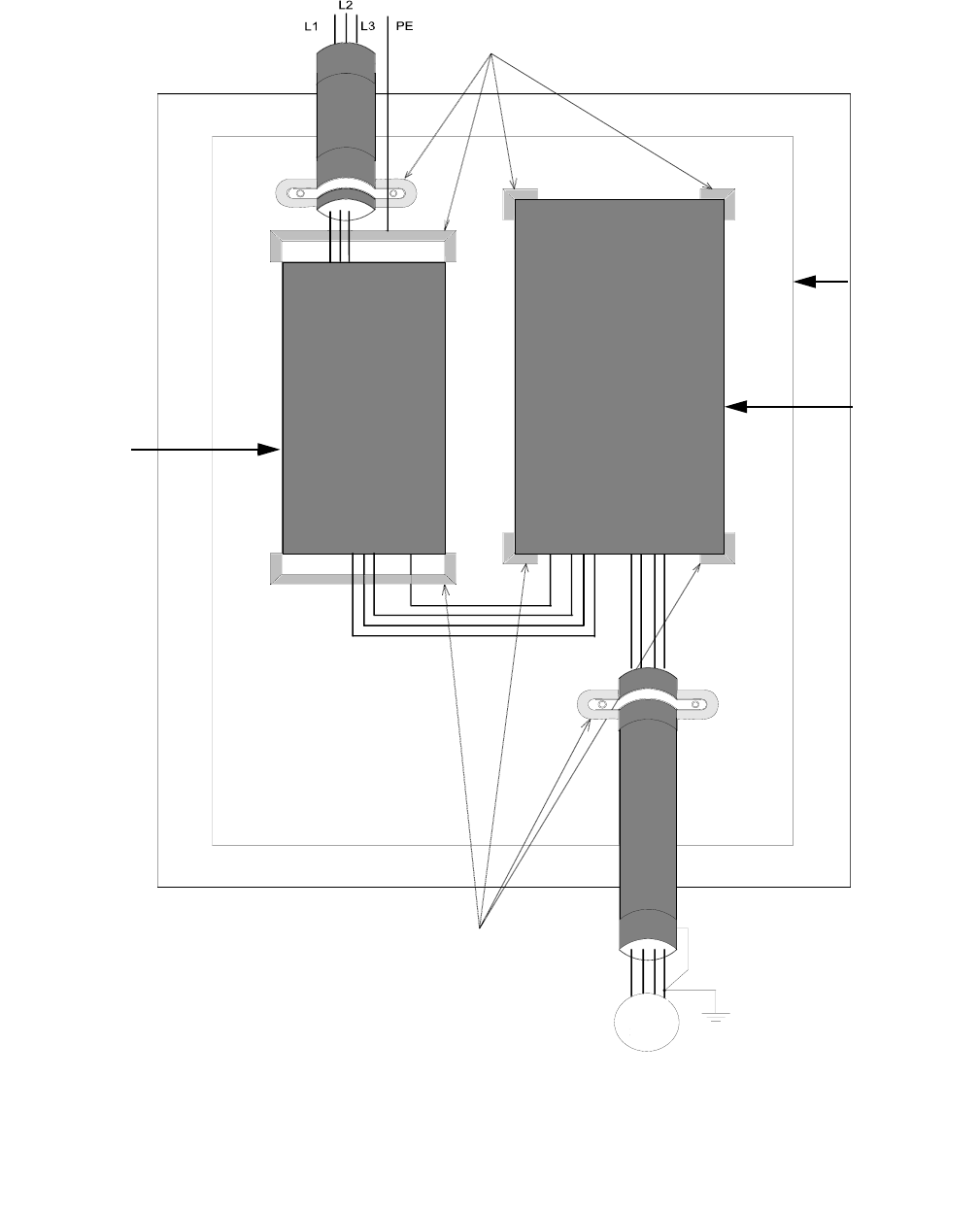
Electrical Installation 2 - 27
The grounding surfaces must be highly conductive bare metal. Remove any varnish or paint from grounding surfaces. Be sure
to ground the motor of the machine/application. Line filter and Drive must be mounted on the same metal plate. Mount the two
components as close to each other as possible, with cables kept as short as possible, not exceeding 15.75” (see Fig 2.15). See
Table 2.16 for recommended filters.
Fig 2.15 EMC Filter Layout
Metal plate
Grounding (Remove varnish or paint)
Grounding
(Remove varnish or paint)
Motor Cable
Cable
IM
EMC Filter
F7 Drive
Max. Length: 82 feet
Max. Length: 15.75”
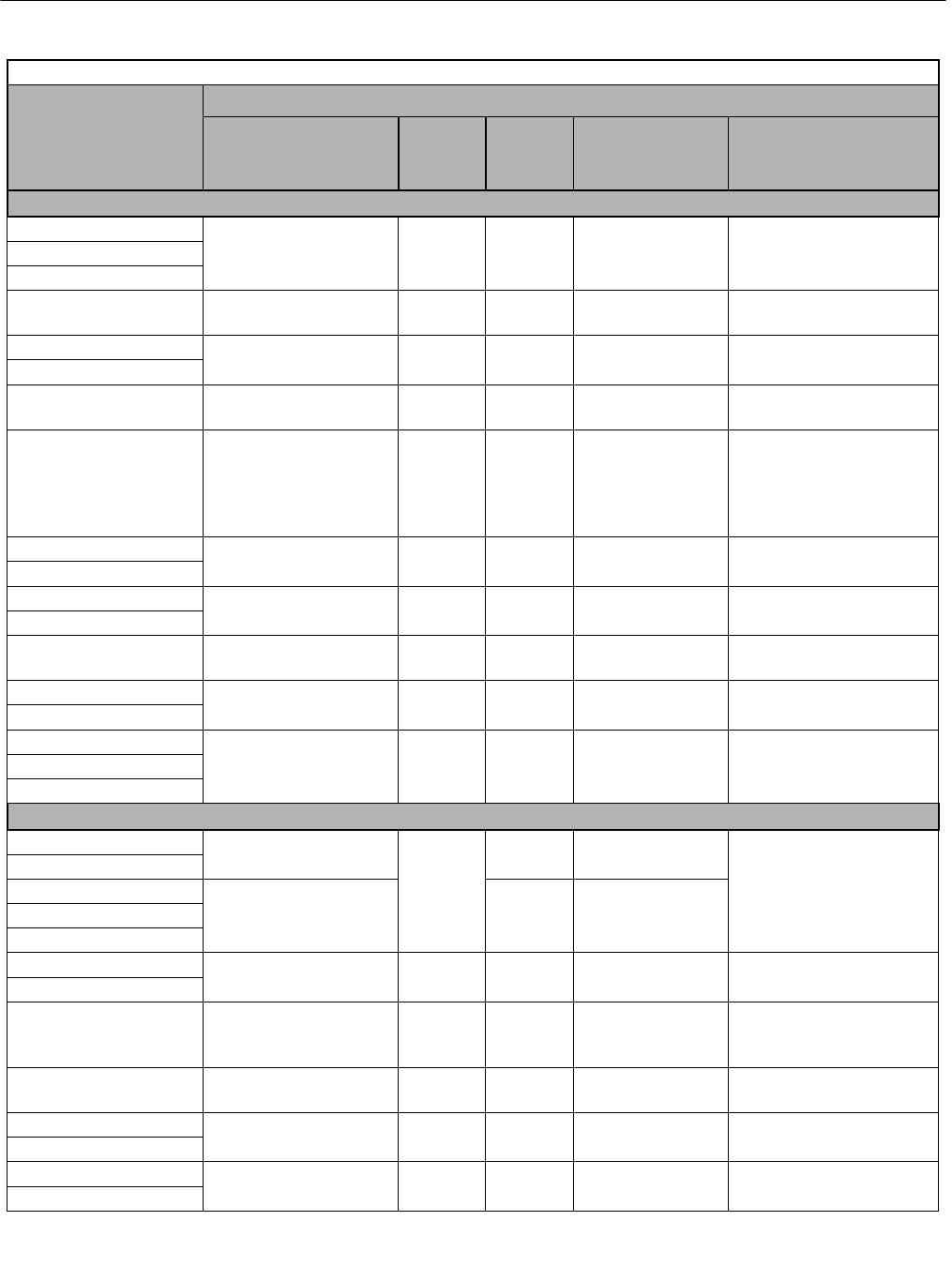
Electrical Installation 2 - 28
Recommended EMC Filters
Table 2.16 Recommended EMC Filters
Drive Model
CIMR-F7U
EMC Filter
Model Number EN
55011
Class*
Current
Rating
Weight
lb.
(kg)
Dimensions
inches
(mm)
200Vac Class
20P4
FS5972-10-07 B 10A 2.43
(1.1)
5.500 x 13 x 1.875
(141 x 330 x 46)
20P7
21P5
22P2 FS5972-18-07 B 18A 2.87
(1.3)
5.500 x 13 x 1.875
(141 x 330 x 46)
23P7 FS5973-35-07 B 35A 3.09
(1.4)
5.500 x 13 x 1.875
(141 x 330 x 46)
25P5
27P5 FS5973-60-07 B 60A 6.61 (3) 8 x 14 x 2.375
(206 x 355 x 60)
2011
FS5973-60-07
or
FS5973-100-07
B
60A
or
100A
6.61 (3)
or
10.8 (4.9)
8 x 14 x 2.375
(206 x 355 x 60)
or
9.3125 x 16 x 3.125
(236 x 408 x 80)
2015 FS5973-100-07 A 100A 10.8
(4.9)
9.3125 x 16 x 3.125
(236 x 408 x 80)
2018
2022 FS5973-130-35 A 130A 9.48
(4.3)
3.5315 x 14.40625 x 7
(90 x 366 x 180)
2030
2037 FS5973-160-40 A 160A 13.23
(6)
4.750 x 17.750 x 6.6875
(120 x 451 x 170)
2045 FS5973-240-37 A 240A 24.25
(11)
5.125 x 24 x 9.4375
(130 x 610 x 240)
2055
2075
FS5973-500-37 A 500A 42.99
(19.5)
11.81 x 22.20 x 6.30
(300 x 564 x 160)
2090
2110
400Vac Class
40P4 FS5972-10-07
B
10A 2.43
(1.1) 5.500 x 13 x 1.875
(141 x 330 x 46)
40P7
41P5 FS5972-10-07
or
FS5972-18-07
10A
or
18A
2.43 (1.1)
or
2.87 (1.3)
42P2
43P7
44P0 FS5972-18-07 B 18A 2.87
(1.3)
5.50 x 13 x 1.875
(141 x 330 x 46)
45P5
47P5
FS5972-21-07
or
FS5972-35-07
B
21A
or
35A
3.97 (1.8)
or
4.63 (2.1)
8.11 x 13.98 x 1.97
(206 x 355 x 50)
4011 FS5972-35-07 B 35A 4.63
(2.1)
8.11 x 13.98 x 1.97
(206 x 355 x 50)
4015 FS5972-60-07 B 60A 8.82
(4)
9.250 x 16 x 2.50
(236 x 408 x 65)
4018
4022 FS5972-70-52 B 70A 7.5
(3.4)
3 x 13 x 7.250
(80 x 329 x 185)
4030
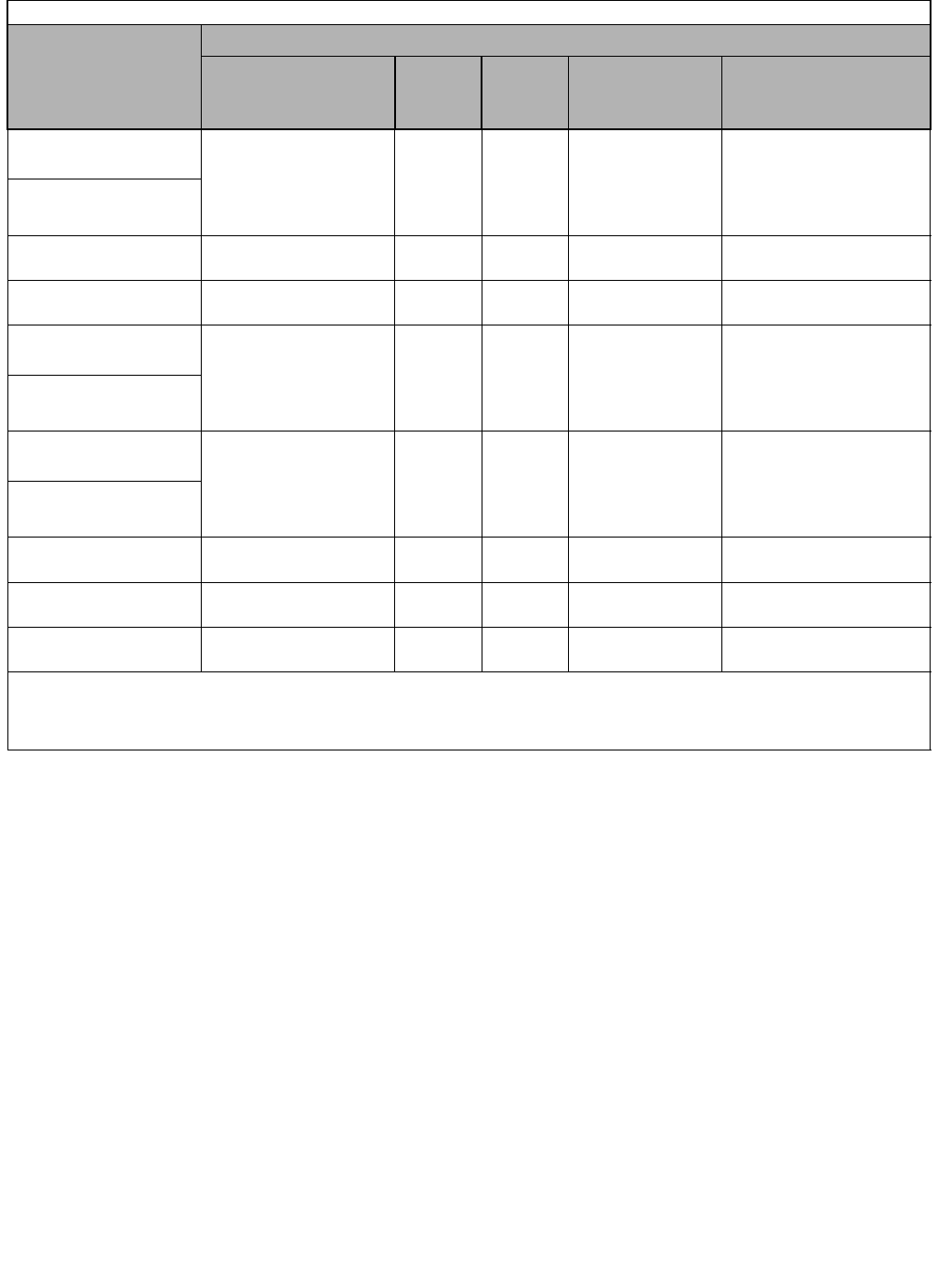
Electrical Installation 2 - 29
4037 FS5972-100-35
or
FS5972-130-35
B
100A
or
130A
9.92 (4.5)
or
10.36 (4.7)
3.54 x 12.83 x 5.9
(90 x 326 x 150)
or
3.54 x 14.375 x 7
(90 x 366 x 180)
4045
4055 FS5972-130-35 B 130A 10.36
(4.7)
3.54 x 14.375 x 7
(90 x 366 x 180)
4075 FS5972-170-40 B 170A 13.23
(6)
4.75 x 17.75 x 6.6675
(120 x 451 x 170)
4090 FS5972-250-37
or
FS3359-250-28
A 250A
24.25 (11)
or
15.43 (7)
5.125 x 24 x 9.475
(130 x 610 x 240)
or
9.05 x 11.80 x 4.92
(230 x 300 x 125)
4110
4132 FS5972-400-99
or
FS3359-400-99
A 400A
23.15 (10.5)
or
40.78 (18.5)
10.24 x 15.20 x 4.53
(260 x 386 x 115)
or
11.81 x 24.01 x 6.30
(300 x 610 x 160)
4160
4185 FS5972-410-99 A 410A 23.15 (10.5) 10.24 x 15.20 x 4.53
(260 x 386 x 115)
4220 FS5972-600-99 A 600A 24.25
(11)
10.24 x 15.20 x 5.31
(260 x 386 x 135)
4300 FS5972-800-99 A 800A 68.34
(31)
11.81 x 28.19 x 6.30
(300 x 716 x 160)
* Maximum Voltage: 480Vac 3-phase
Ambient Temperature: 45 Degrees Celsius (maximum)
Maximum motor cable length: 50m Class B, 50m Class A
Permissible emission of power drive systems for commercial and light environment (EN61800-3, A11) (General availability, 1st environment)
Table 2.16 Recommended EMC Filters (Continued)
Drive Model
CIMR-F7U
EMC Filter
Model Number EN
55011
Class*
Current
Rating
Weight
lb.
(kg)
Dimensions
inches
(mm)
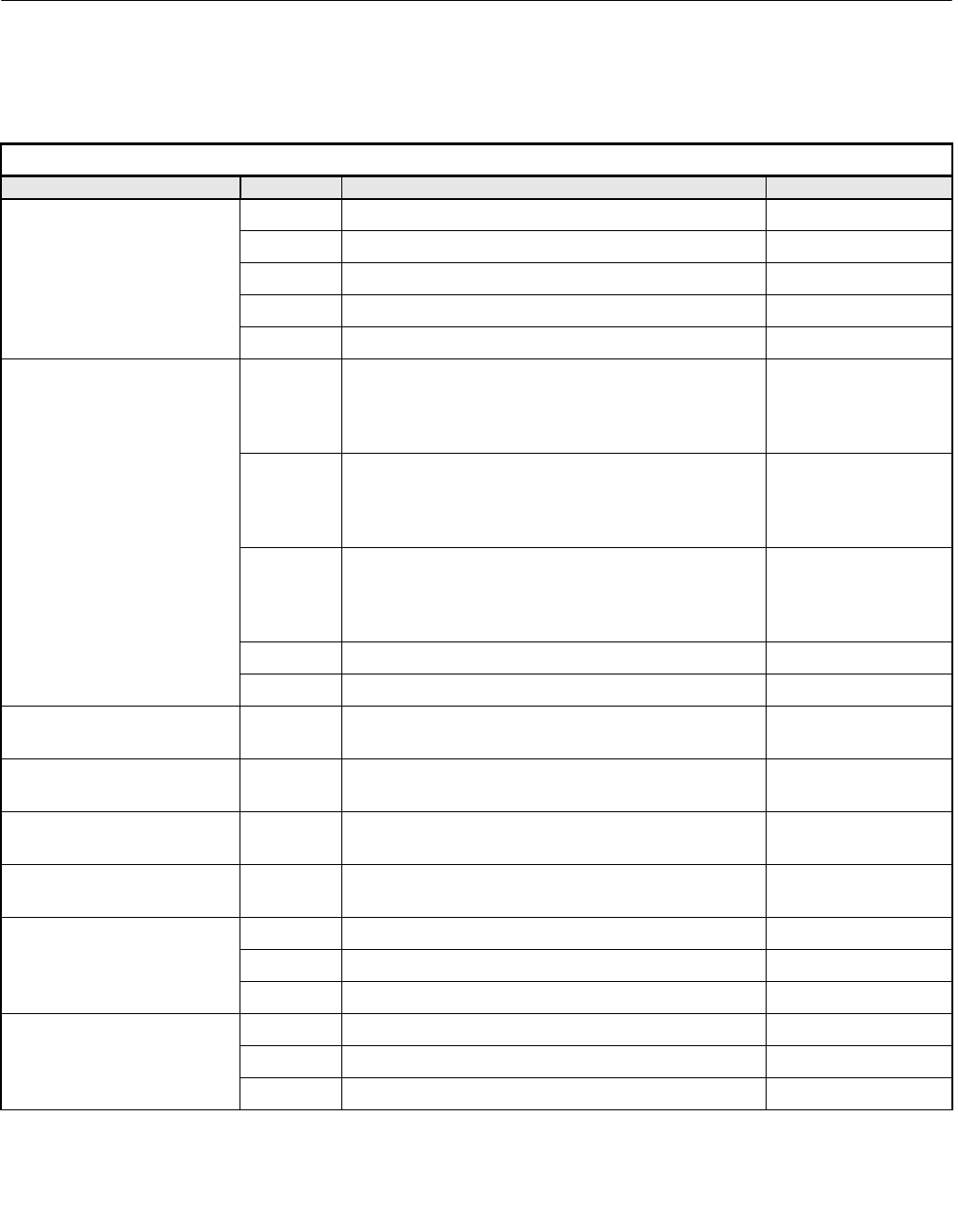
Electrical Installation 2 - 30
Installing and Wiring Option Boards
Option Board Models and Specifications
Up to three Option Boards can be mounted in the Drive. You can mount one board into each of the three option slots on the
control board (A, C, and D) shown in Fig 2.16. The following Table 2.17 lists the type of Option Boards and their specifications.
Table 2.17 Option Board Specifications
Option Board Model Specifications Mounting Location
PG Speed Control Boards
PG-A2 Single open-collector feedback A (4CN)
PG-B2 Single A/B open collector encoder feedback A (4CN)
PG-D2 Single line-driver feedback A (4CN)
PG-X2 Single A/B/Z line-driver encoder feedback A (4CN)
PG-W2 Dual A/B/Z line-driver encoder feedback A (4CN)
Speed Reference Boards
AI-14U
Analog input
0 to 10Vdc (20kΩ), 1 channel
4 to 20mA (250Ω), 1 channel
Input resolution: 14-bit
C (2CN)
AI-14B
Analog input
0 to 10Vdc (20kΩ)
4 to 20mA (250Ω), 3 channels (V or I)
Input resolution: 13-bit plus sign bit
C (2CN)
AI-14B2
Isolated analog input
0 to 10Vdc (20kΩ)
4 to 20mA (250Ω), 3 channels (V or I)
Input resolution: 13-bit plus sign bit
C (2CN)
DI-08 8-bit digital input C (2CN)
DI-16H2 16-bit digital input C (2CN)
DeviceNet
Communications Board SI-NX DeviceNet communications C (2CN)
Profibus-DP
Communications Board SI-PX Profibus-DP communications C (2CN)
InterBus-S
Communications Board SI-RX InterBus-S communications C (2CN)
CANopen
Communications Board SI-SX CANopen communications C (2CN)
Analog Monitor Boards
AO-08 Analog output, 8-bit 2 channels D (3CN)
AO-12 Analog output, 11-bit plus sign bit, 2 channels D (3CN)
AO-12B Isolated analog output, 11-bit plus sign bit, 2 channels D (3CN)
Digital Output Boards
DO-08 Six photocoupler outputs and 2 relay outputs D (3CN)
DO-02C 2 relay outputs D (3CN)
PO-36F Pulse-train output D (3CN)
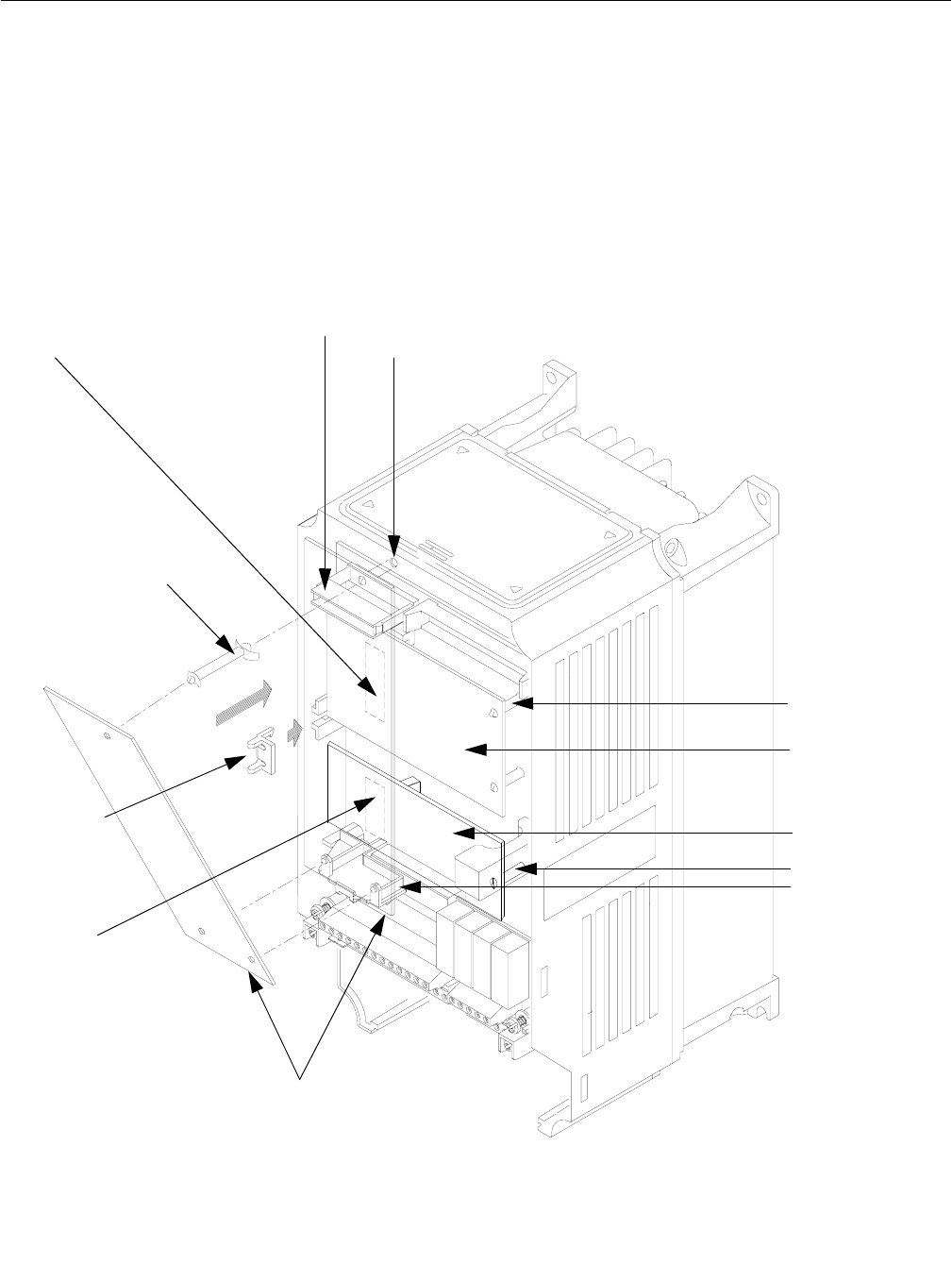
Electrical Installation 2 - 31
Installation
Before mounting an Option Board, remove power from the Drive and wait for the CHARGE LED to go out. Remove the
Digital Operator, front cover, and option clip. Option Clip can be easily removed by squeezing the protruding portions of the
clip and then pulling it out. Then, mount the Option Board(s).
The A Option Board uses a mounting spacer to secure the board to the control board. Insert the mounting spacer as shown in
Fig 2.16.
After installing an Option Board into slot C or D, insert the Option Clip to prevent the side with the connector from rising.
Refer to documentation provided with the Option Board for detailed mounting instructions for option slots A, C, and D.
Fig 2.16 Mounting Option Boards
4CN (A Option Board connector)
C Option Board
3CN
Mounting spacer
D Option Board
Mounting spacer
A Option Board
Mounting spacer
A Option Board
A Option Board mounting spacer hole
2CN (C Option Board connector)
A Option Board
mounting spacer
(Provided with
A Option Board)
(D Option
Board
connector)
(Note: C or D Option Board
must be mounted before mounting
A Option Board)
Option Clip
(To prevent
raising of
C or D
Option Board)
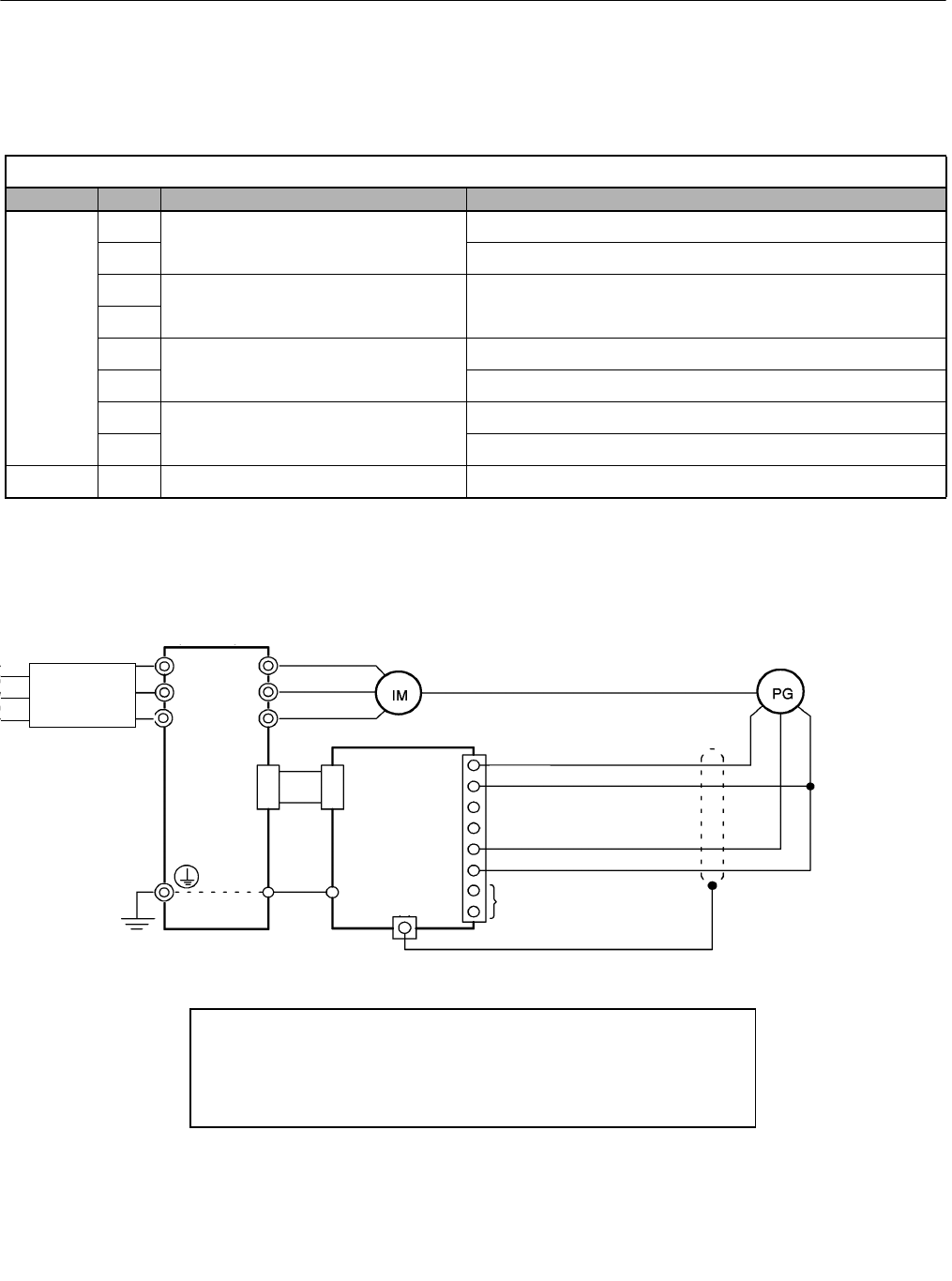
Electrical Installation 2 - 32
PG (Encoder) Feedback Board Terminal Specifications and Wiring Examples
PG-A2
The terminal specifications for the PG-A2 are given in Table 2.18.
Wiring the PG-A2
Wiring examples are provided in the following figures for the PG-A2.
Fig 2.17 PG-A2 Open-Collector Input Wiring - Sourcing PG
Table 2.18 PG-A2 Terminal Specifications
Terminal No. Contents Specifications
TA1
1Power supply for pulse generator 12Vdc (±5%), 200mA max.
2 0Vdc (GND for power supply)
3+12V/open collector switching terminals Terminals for switching between12Vdc voltage input and open
collector input. For open collector input, short across 3 and 4.
4
5A-phase pulse input terminals H: +4 to 12V; L: +1V max. (Maximum response frequency: 30kHz)
6 Pulse input common
7A-phase pulse monitor output terminals 12Vdc (±10%), 20mA max.
8 Pulse monitor output common
TA2 (E) Shield connection terminal -
+12Vdc power supply
0Vdc power supply
12Vdc voltage input (A phase)
Pulse 0Vdc
Pulse monitor output
R/L1
V/L2
W/L3
U/T1
V/T2
W/T3
4CN 4CN
EE
1
2
3
4
5
6
7
8
TA1
TA2 (E)
PG-A2
Branch
Circuit
Protection
Drive
•Shielded twisted-pair wires must be used for signal lines.
•Do not use the PG-A2's power supply for anything other than the pulse generator (encoder).
Using it for another purpose can cause malfunctions due to noise.
•The length of the pulse generator's wiring must not be more than 100 meters.
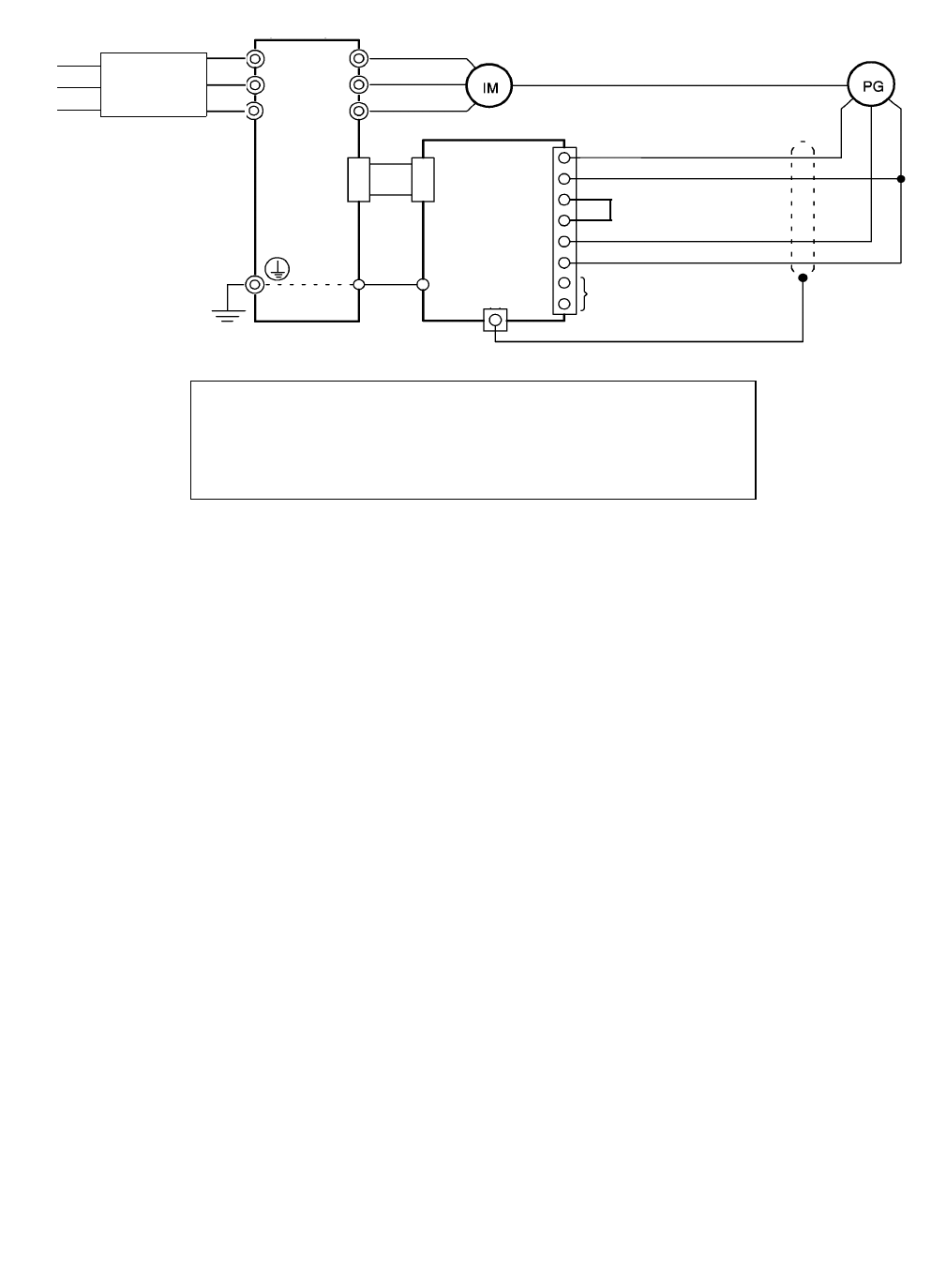
Electrical Installation 2 - 33
Fig 2.18 PG-A2 Open-Collector Input Wiring - Sinking PG
+12Vdc power supply
0Vdc power supply
Open collector input (A phase)
Pulse 0Vdc
Pulse monitor output
R/L1
V/L2
W/L3
U/T1
V/T2
W/T3
4CN 4CN
EE
1
2
3
4
5
6
7
8
TA1
TA2 (E)
PG-A2
Drive
Branch
Circuit
Protection
•Shielded twisted-pair wires must be used for signal lines.
•Do not use the PG-A2's power supply for anything other than the pulse generator (encoder).
Using it for another purpose can cause malfunctions due to noise.
•The length of the pulse generator's wiring must not be more than 100 meters.
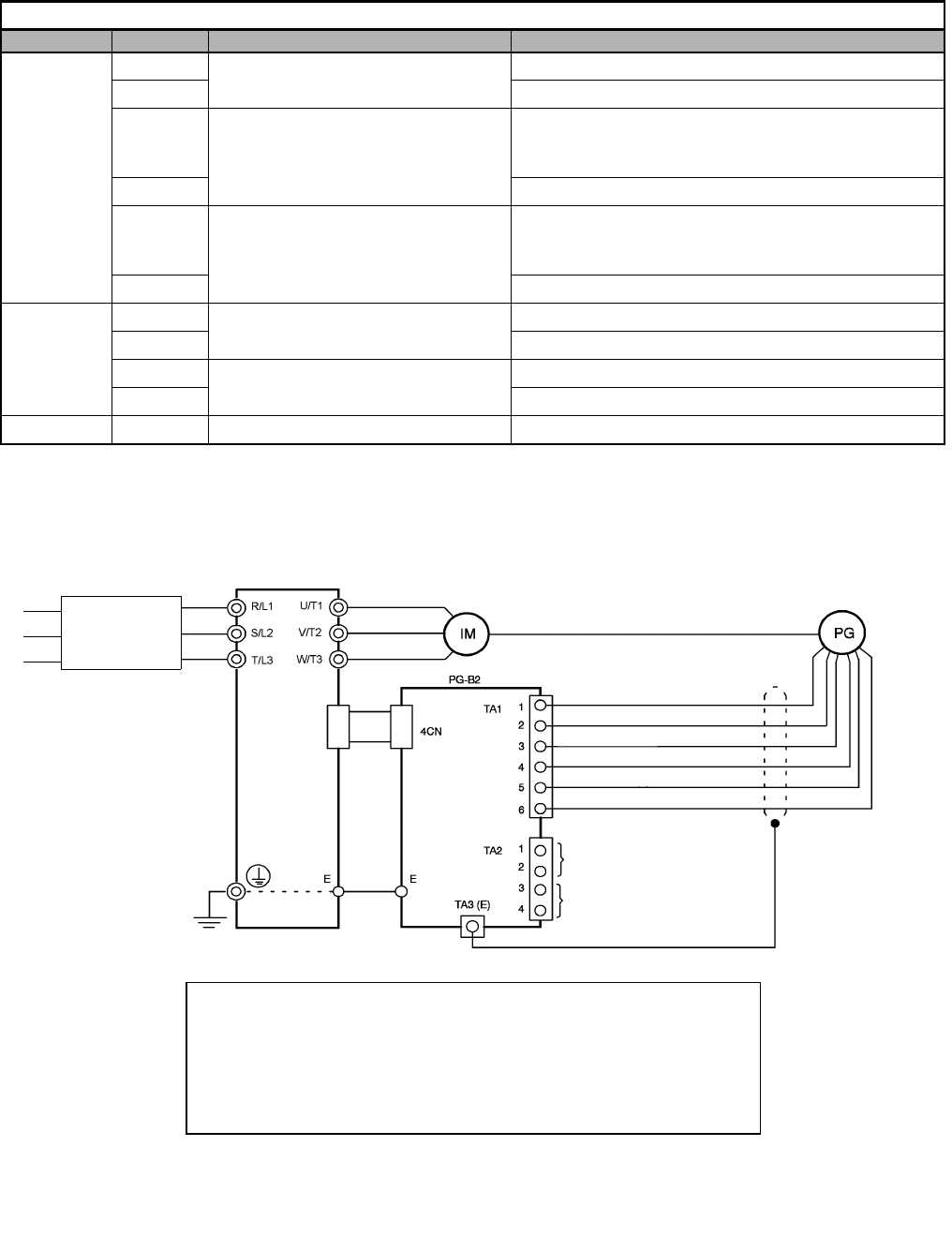
Electrical Installation 2 - 34
PG-B2
The terminal specifications for the PG-B2 are given in Table 2.19.
Wiring the PG-B2
Wiring examples are provided in Fig 2.19 and Fig. 2.20 for the PG-B2.
Fig 2.19 PG-B2 Open-Collector Input Wiring - Sourcing PG
Table 2.19 PG-B2 Terminal Specifications
Terminal No. Contents Specifications
TA1
1Power supply for pulse generator 12Vdc (±5%), 200mA max.
2 0Vdc (GND for power supply)
3A-phase pulse input terminals
H: +8 to 12Vdc
L: +1Vdc max.
(Maximum response frequency: 30 kHz)
4 Pulse input common
5B-phase pulse input terminals
H: +8 to 12Vdc
L: +1Vdc max.
(Maximum response frequency: 30 kHz)
6 Pulse input common
TA2
1A-phase monitor output terminals Open collector output, 24Vdc, 30mA max.
2 A-phase monitor output common
3B-phase monitor output terminals Open collector output, 24Vdc, 30mA max.
4 B-phase monitor output common
TA3 (E) Shield connection terminal -
Drive
Power supply +12Vdc
Power supply 0Vdc
A-phase pulse input (+)
A-phase pulse input (–)
B-phase pulse input (+)
B-phase pulse input (–)
A-phase pulse monitor output
B-phase pulse monitor output
4CN
R/L1
S/L2
T/L3
Branch
Circuit
Protection
•Shielded twisted-pair wires must be used for signal lines.
•Do not use the PG-B2's power supply for anything other than the pulse generator (encoder).
Using it for another purpose can cause malfunctions due to noise.
•The length of the pulse generator's wiring must not be more than 100 meters.
•The direction of rotation of the PG can be set in parameter F1-05 (PG Rotation).
The factory preset is for forward rotation, A-phase advancement.
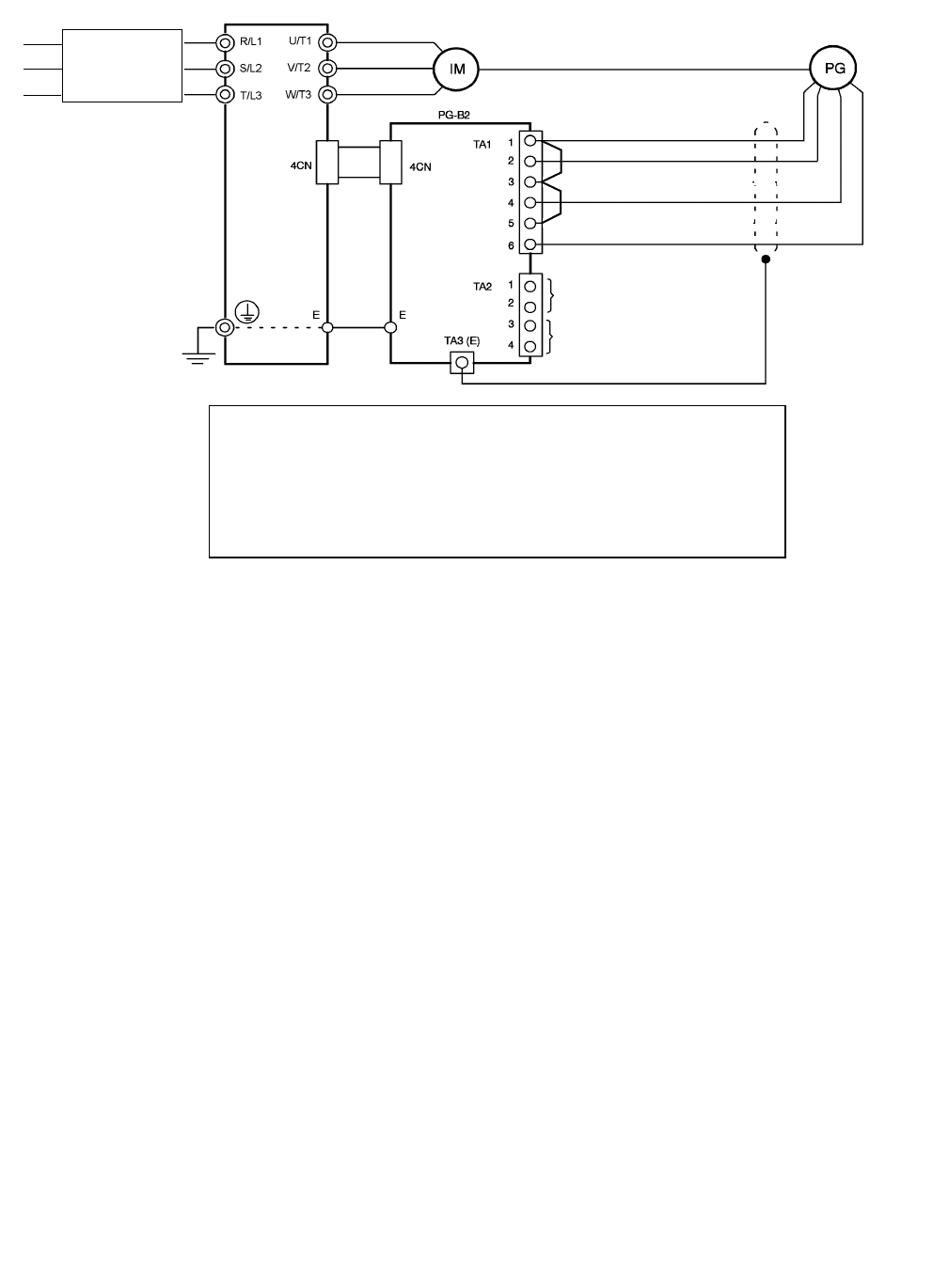
Electrical Installation 2 - 35
Fig 2.20 PG-B2 Open-Collector Input Wiring - Sinking PG
Drive
Power supply +12 V
Power supply 0 V
A-phase pulse open-collector input
B-phase pulse open-collector input
A-phase pulse monitor output
B-phase pulse monitor output
Branch
Circuit
Protection
•Shielded twisted-pair wires must be used for signal lines.
•Do not use the PG-B2's power supply for anything other than the pulse generator (encoder).
Using it for another purpose can cause malfunctions due to noise.
•The length of the pulse generator's wiring must not be more than 100 meters.
•The direction of rotation of the PG can be set in parameter F1-05 (PG Rotation).
The factory preset is for forward rotation, A-phase advancement.
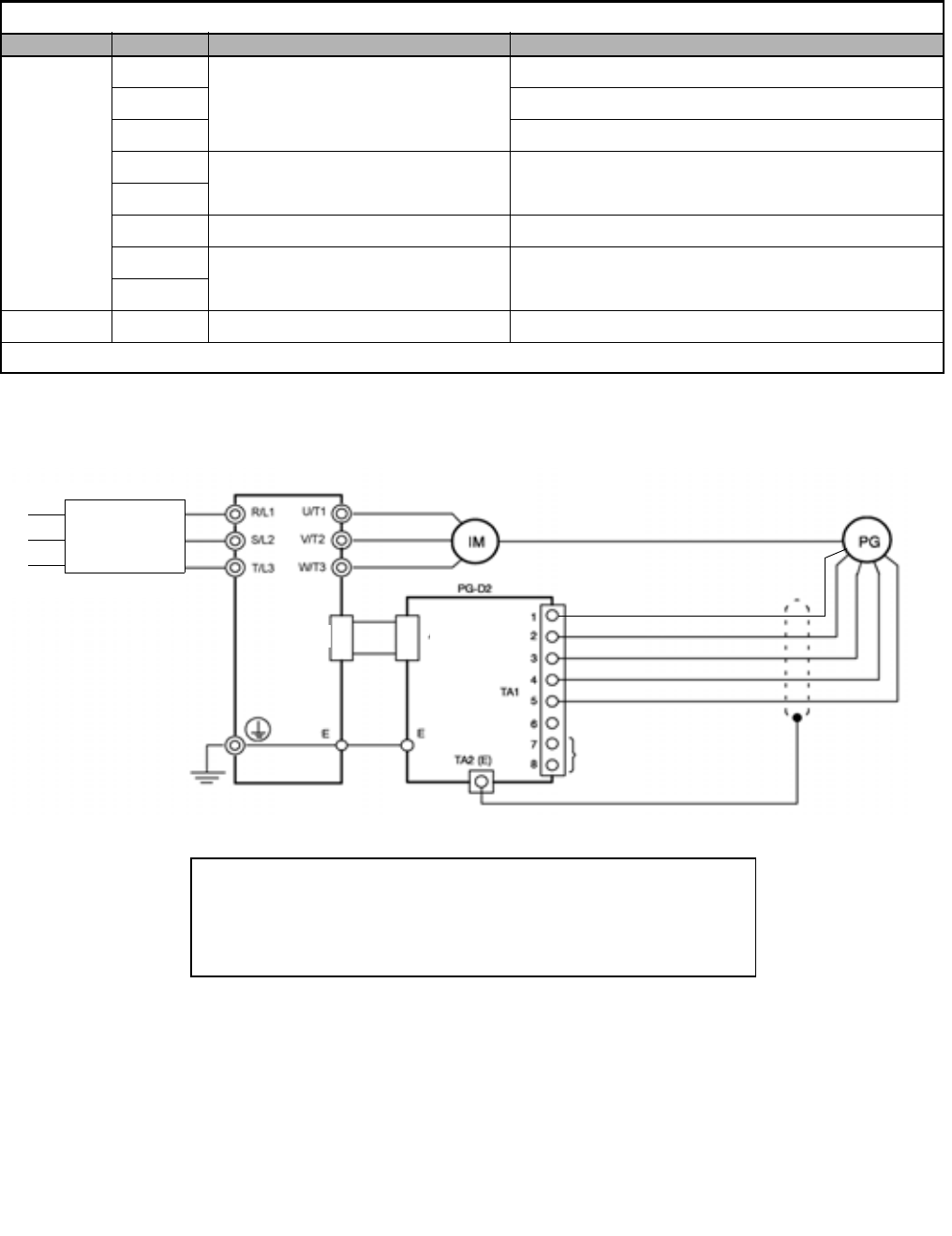
Electrical Installation 2 - 36
PG-D2
The terminal specifications for the PG-D2 are given in Table 2.20.
Wiring the PG-D2
Wiring examples are provided in Fig 2.21 for the PG-D2.
Fig 2.21 PG-D2 Wiring
Table 2.20 PG-D2 Terminal Specifications
Terminal No. Contents Specifications
TA1
1
Power supply for pulse generator
12Vdc (±5%), 200mA max.*
2 0Vdc (GND for power supply)
3 5Vdc (±5%), 200mA max.*
4Pulse input terminals Line driver input (RS-422 level)
Maximum response frequency: 300kHz
5
6 Common terminal -
7Pulse monitor output terminals Line driver output (RS-422 level)
8
TA2 (E) Shield connection terminal -
* 5Vdc and 12Vdc cannot be used at the same time.
Drive
Power supply 0Vdc
Power supply +5Vdc
Pulse input + (A phase)
Pulse input - (A phase)
Pulse monitor output
R/L1
S/L2
T/L3
Branch
Circuit
Protection
Power supply +12Vdc
4CN 4CN
•Shielded twisted-pair wires must be used for signal lines.
•Do not use the PG-D2's power supply for anything other than the pulse generator (encoder).
Using it for another purpose can cause malfunctions due to noise.
•The length of the pulse generator's wiring must not be more than 100 meters.
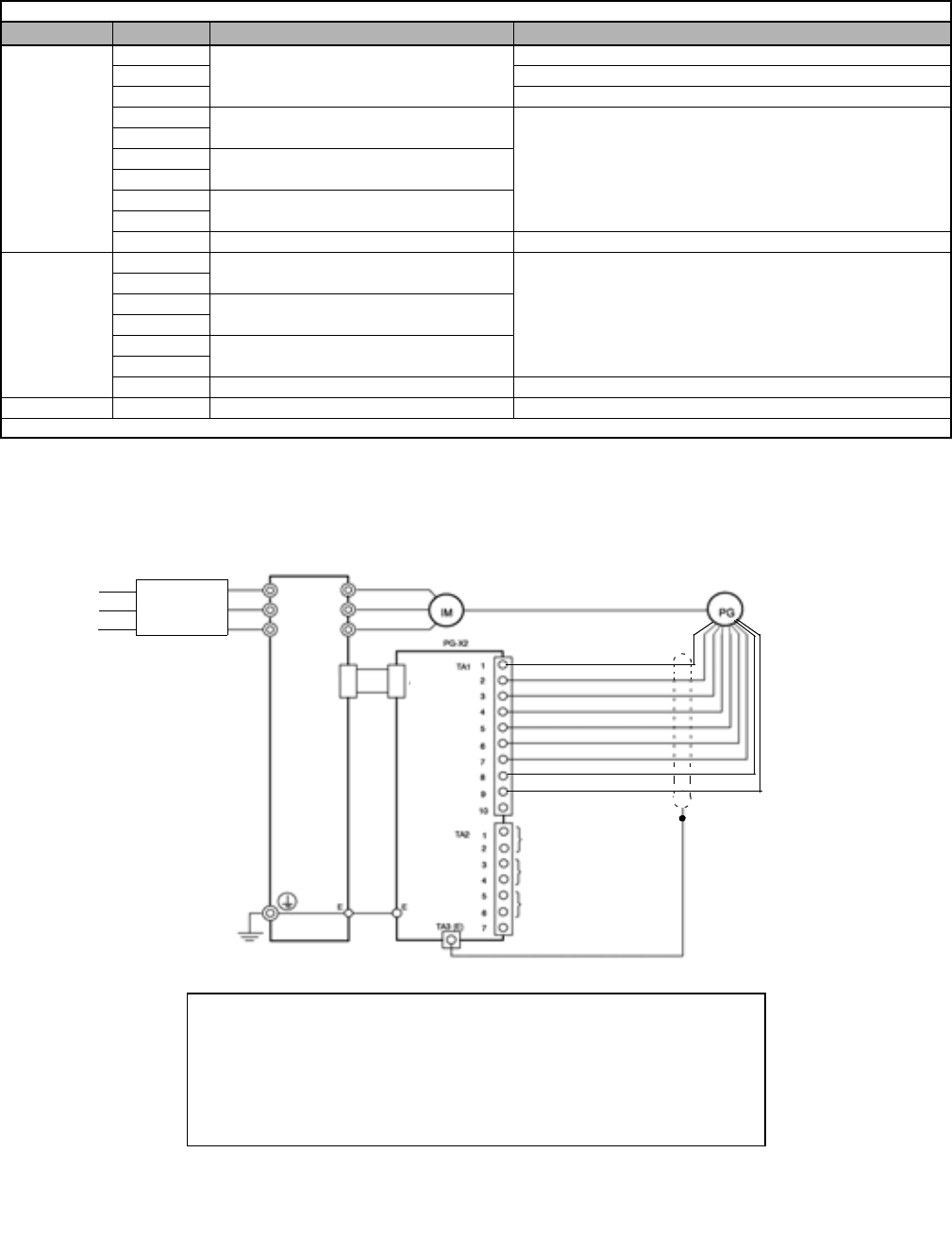
Electrical Installation 2 - 37
PG-X2
The terminal specifications for the PG-X2 are given in Table 2.21.
Wiring the PG-X2
Wiring examples are provided in Fig 2.22 for the PG-X2.
Fig 2.22 PG-X2 Wiring
Table 2.21 PG-X2 Terminal Specifications
Terminal No. Contents Specifications
TA1
1
Power supply for pulse generator
12Vdc (±5%), 200mA max.*
2 0Vdc (GND for power supply)
3 5Vdc (±5%), 200mA max.*
4A-phase input terminals
Line driver input (RS-422 level)
Maximum response frequency: 300kHz
5
6B-phase input terminals
7
8Z-phase input terminals
9
10 Common terminal 0Vdc (GND for power supply)
TA2
1A-phase output terminals
Line driver output (RS-422 level)
2
3B-phase output terminals
4
5Z-phase output terminals
6
7 Control circuit common Isolated control circuit GND
TA3 (E) Shield connection terminal -
* 5Vdc and 12Vdc cannot be used at the same time.
Drive
Power supply +12Vdc
Power supply +5Vdc
A-phase pulse input (+)
A-phase pulse input (-)
B-phase pulse input (+)
B-phase pulse input (-)
A-phase pulse monitor output
B-phase pulse monitor output
Z-phase pulse monitor output
R/L1
S/L2
U/T1
V/T2
W/T3
T/L3
4CN
4CN
R/L1
S/L2
T/L3
Branch
Circuit
Protection
Power supply 0Vdc
Z-phase pulse input (+)
Z-phase pulse input (-)
•Shielded twisted-pair wires must be used for signal lines.
•Do not use the PG-X2's power supply for anything other than the pulse generator (encoder).
Using it for another purpose can cause malfunctions due to noise.
•The length of the pulse generator's wiring must not be more than 100 meters.
•The direction of rotation of the PG can be set in parameter F1-05 (PG Rotation).
The factory preset is for motor forward rotation, A-phase advancement.
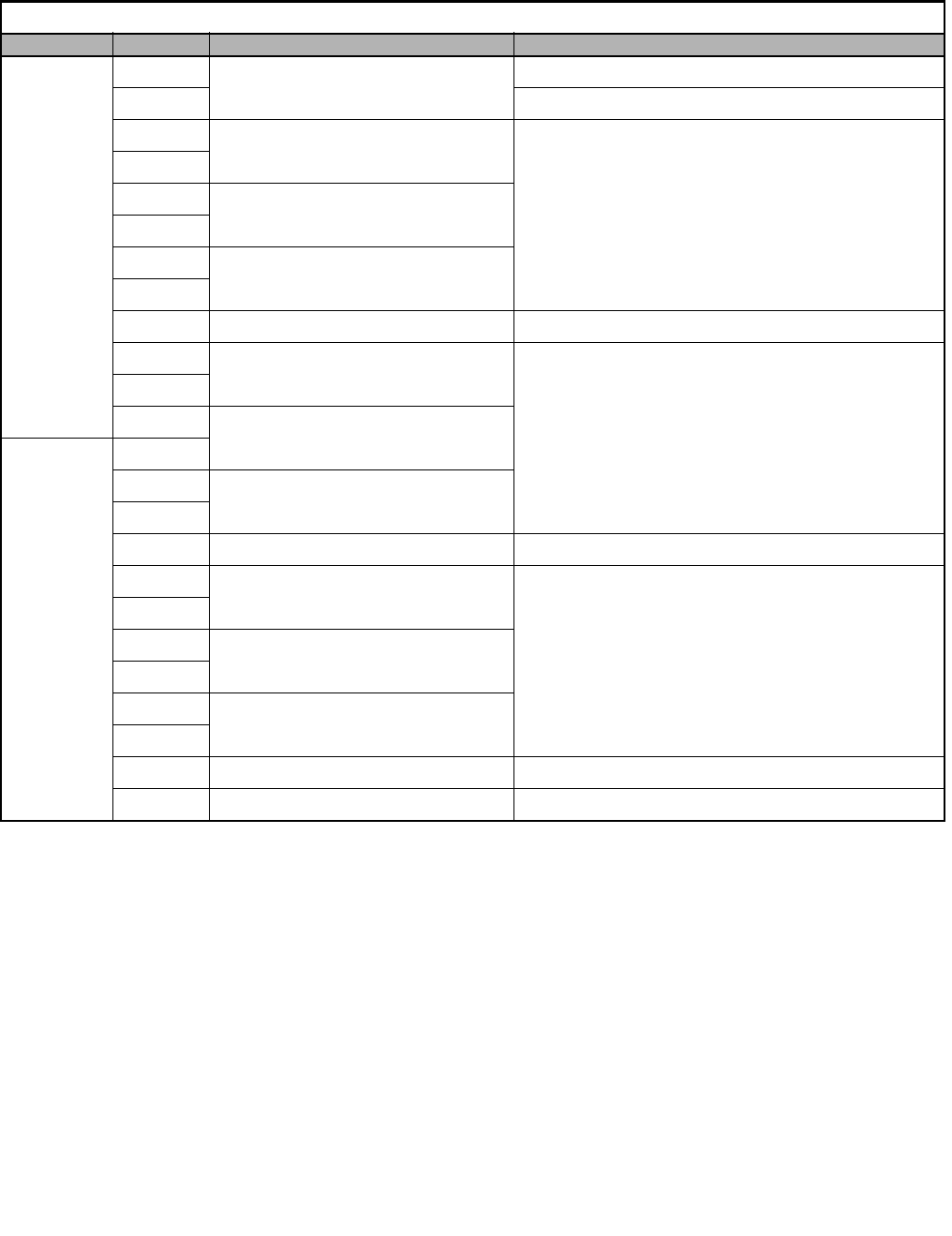
Electrical Installation 2 - 38
PG-W2
The terminal specifications for the PG-W2 are given in Table 2.22.
Table 2.22 PG-W2 Terminal Specifications
Terminal No. Contents Specifications
J2
1Power supply for Pulse Generator 12Vdc (±5%), 200mA max.
2 0Vdc (GND for power supply)
3A1-phase input terminals
Pulse generator 1 input
Line driver input
(RS-422 level input)
4
5B1-phase input terminals
6
7Z1-phase input terminals
8
9Shield -
10 A2-phase input terminals
Pulse generator 2 input
Line driver input
(RS-422 level input)
11
12 B2-phase input terminals
J1
13
14 Z2-phase input terminals
15
16 Shield connection terminal -
17 A-phase output terminals
Pulse monitor output.
Source depends on software parameter
Line driver output
(RS-422 level output)
18
19 B-phase output terminals
20
21 Z-phase output terminals
22
23 Shield connection terminal -
24 0Vdc For pulse monitor terminals 17-22
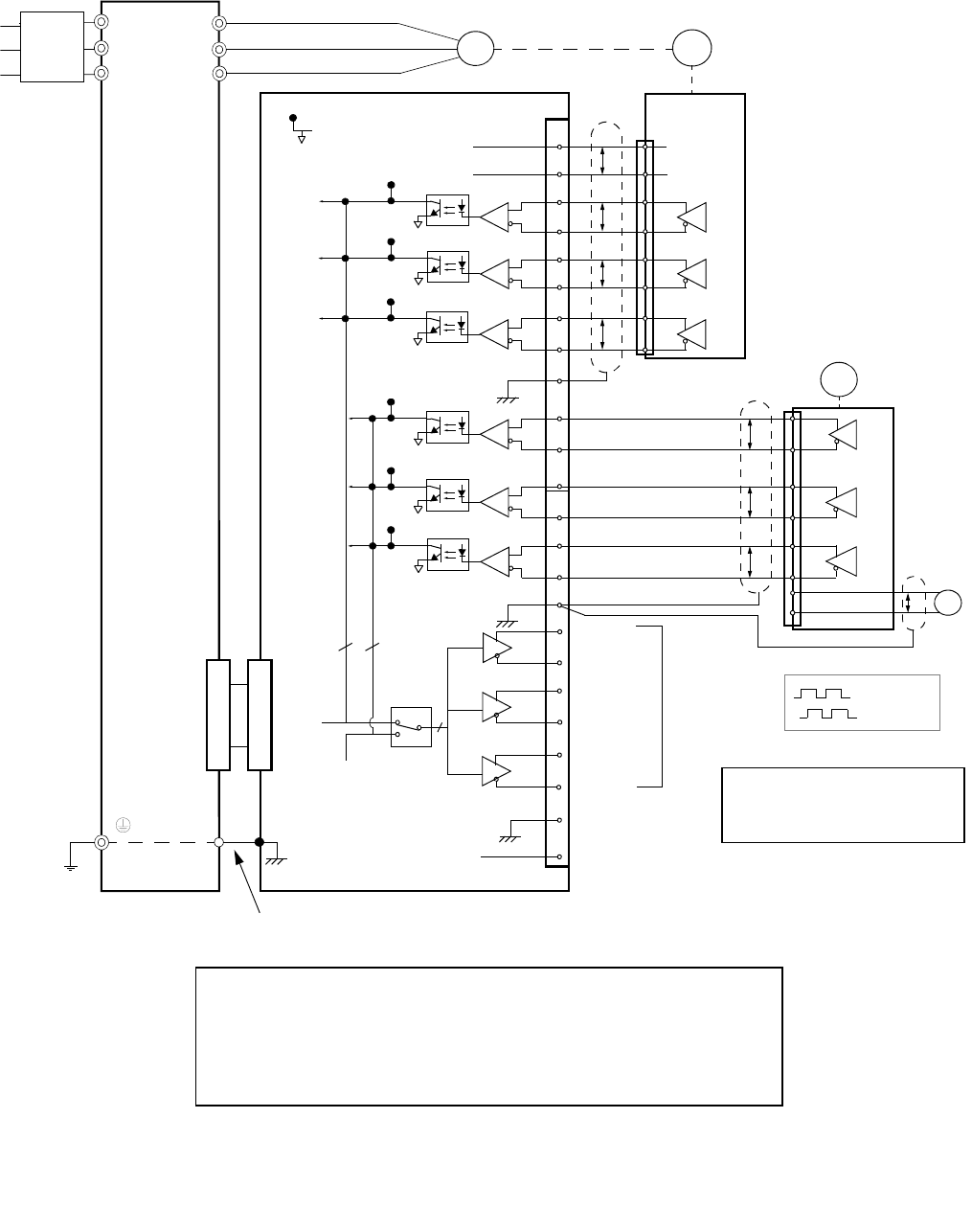
Electrical Installation 2 - 39
Wiring the PG-W2
Wiring examples are provided in Fig 2.23 for the PG-W2.
Fig 2.23 PG-W2 Wiring
R/L1
S/L2
T/L3
M
U/T1
V/T2
W/T3
Drive
PG-1
1
2
3
4
5
6
7
8
9
10
11
12
13
14
15
16
17
18
19
20
21
22
23
24
IP12*
IG12
(+12V)
(0V)
12V
0V
P
P
P
P
P
P
P
TP1
(E)
12V
0V P+
Pulse A
Pulse B
Pulse Z
Pulse
IG5 (0V)
PG-2
4CN4CN
12
TP3
TP7
TP6
TP5
TP4
TP8
3
Pulse
Out 1
3
Pulse A1
Pulse B1
Pulse Z1
Pulse A2
Pulse B2
Pulse Z2
TP2
Notes:
* Power supply for PG-1 (from PG-W2).
** PG-2 requires external power supply.
Pulse A
Pulse B
Ground wire
**
3
Pulse
Out 2
(E)
-
12V
Monitor
Outputs
(E)
(E)
PG-W2
Branch
Circuit
Protection
•Shielded twisted-pair wires must be used for signal lines.
•Do not use the PG-W2's power supply for anything other than the pulse generator (encoder).
Using it for another purpose can cause malfunctions due to noise.
•The length of the pulse generator's wiring must not be more than 100 meters.
•Do not use PG-W2 to supply both PG units.
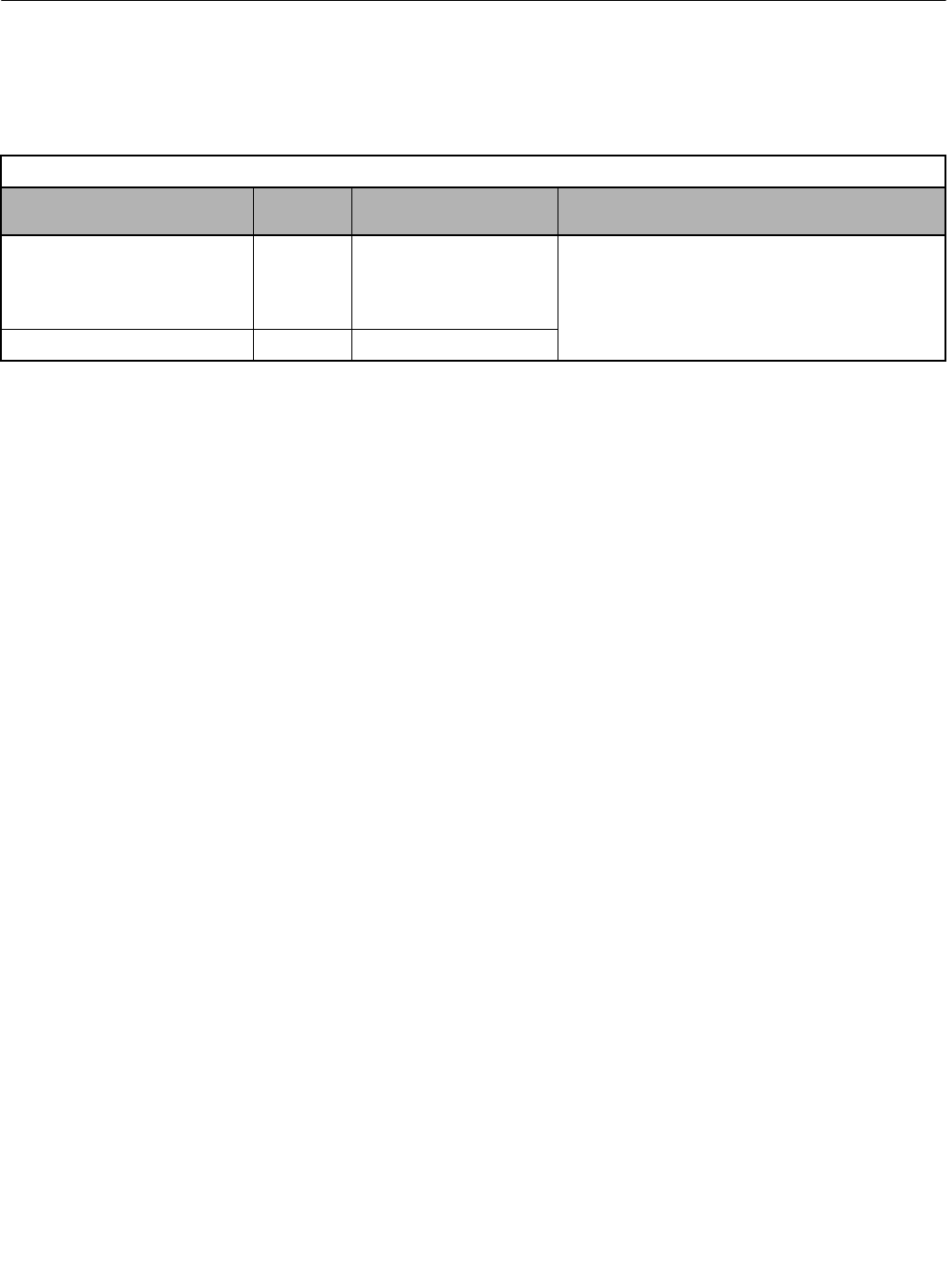
Electrical Installation 2 - 40
Wiring Terminal Blocks
Wire Sizes (Same for All Models)
Terminal wire sizes are shown in Table 2.23.
Wiring Method and Precautions
Observe the following precautions when wiring.
•Separate the control signal lines for the PG (Encoder) Feedback Board from main circuit lines and power lines.
•Connect the shield when connecting a PG (Encoder). The shield must be connected to prevent operational errors
caused by noise. Also, do not use any lines that are more than 100m long. Refer to Fig 2.12 for details on
connecting the shield.
•Do not solder the ends of wires. Doing so may cause contact faults.
•When straight solderless terminals are not used, strip the wires to a length of approximately 5.5mm.
•Use shielded, twisted-pair wires for pulse inputs and pulse output monitor wires, and connect the shield to the shield
connection terminal.
Table 2.23 Wire Sizes
Terminal Terminal
Screws
Wire Thickness
AWG (mm2)Wire Type
Pulse generator power supply
Pulse input terminal
Pulse monitor output terminal
-
Stranded wire:
24 to 17 (0.2 to 1.0)
Single wire:
24 to 17 (0.2 to 1.0)
• Shielded, twisted-pair wire
• Shielded, polyethylene-covered, vinyl sheath cable
• Belden 9504, Hitachi KPEV-S, or equivalent
Shield connection terminal M3.5 20 to 16 (0.5 to 1.3)
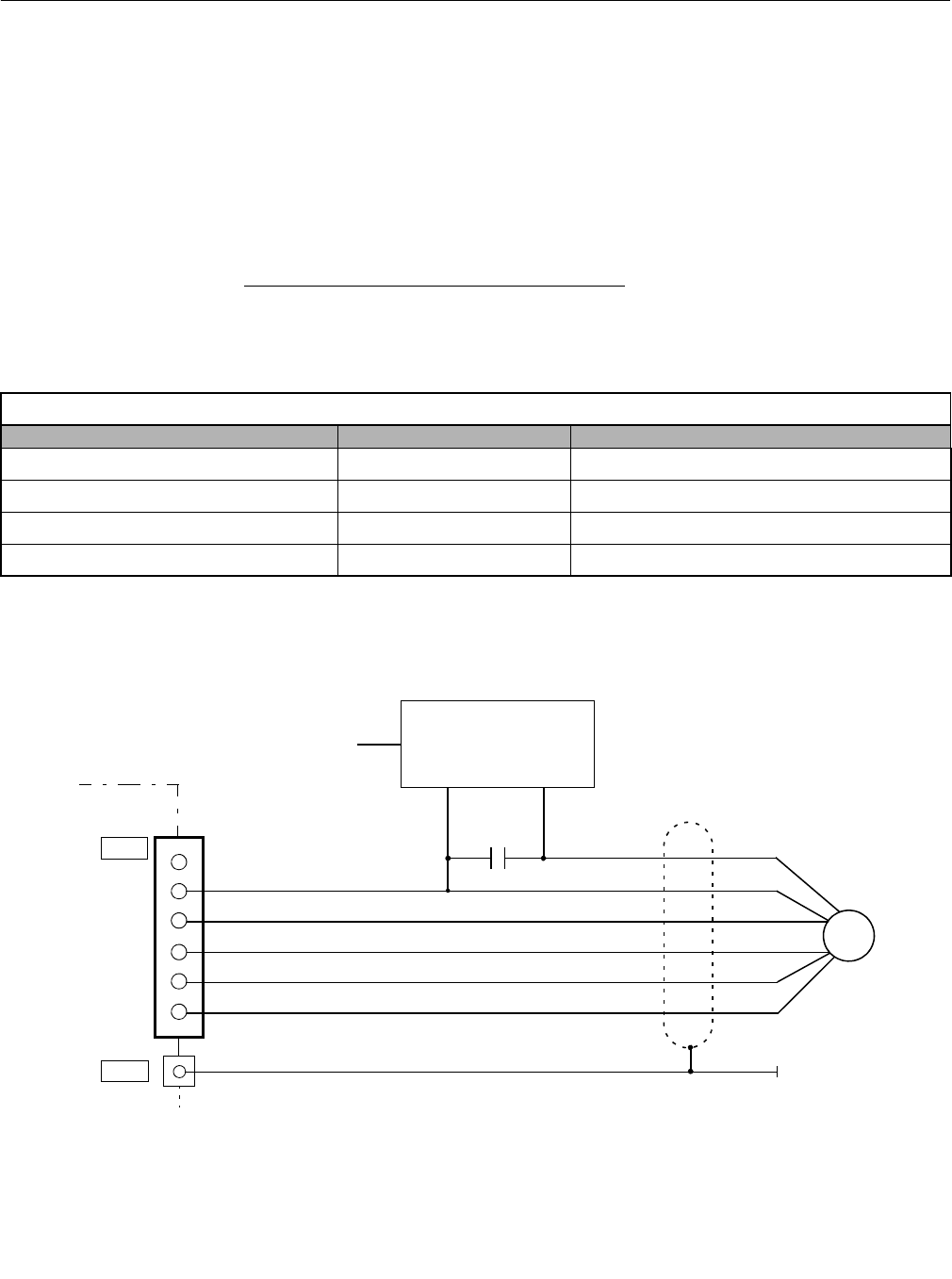
Electrical Installation 2 - 41
Selecting the Number of PG (Encoder) Pulses
The setting for the number of PG pulses depends on the model of PG Speed Control Board being used. Set the correct number
for your model.
PG-A2/PG-B2
The maximum response frequency is 32,767Hz.
Use a PG that outputs a maximum frequency of approximately 20kHz for the rotational speed of the motor.
Some examples of PG output frequency (number of pulses) for the maximum frequency output are shown in Table 2.24.
A separate power supply is required if the PG power supply capacity is greater than 200mA. (If momentary power loss must
be handled, use a backup capacitor or other method). See Fig 2.24.
Fig 2.24 PG-B2 Connection Example For External +12Vdc PG Power Supply
Table 2.24 PG Pulse Selection Examples
Motor's Maximum Speed (RPM) PG Rating (PPR) PG Output Frequency (Hz)
1800 600 18,000
1500 800 20,000
1200 1000 20,000
900 1200 18,000
Motor speed at maximum frequency output (RPM)
60 × PG rating (PPR)fPG (Hz) =
1
2
3
4
5
6
TA1
TA3
+12Vdc
0Vdc
+
+
_
_
0Vdc
+
+
_
_
0Vdc +12Vdc
+
_
PG power supply
PG
Signals
PG Capacitor for
momentary power loss
AC
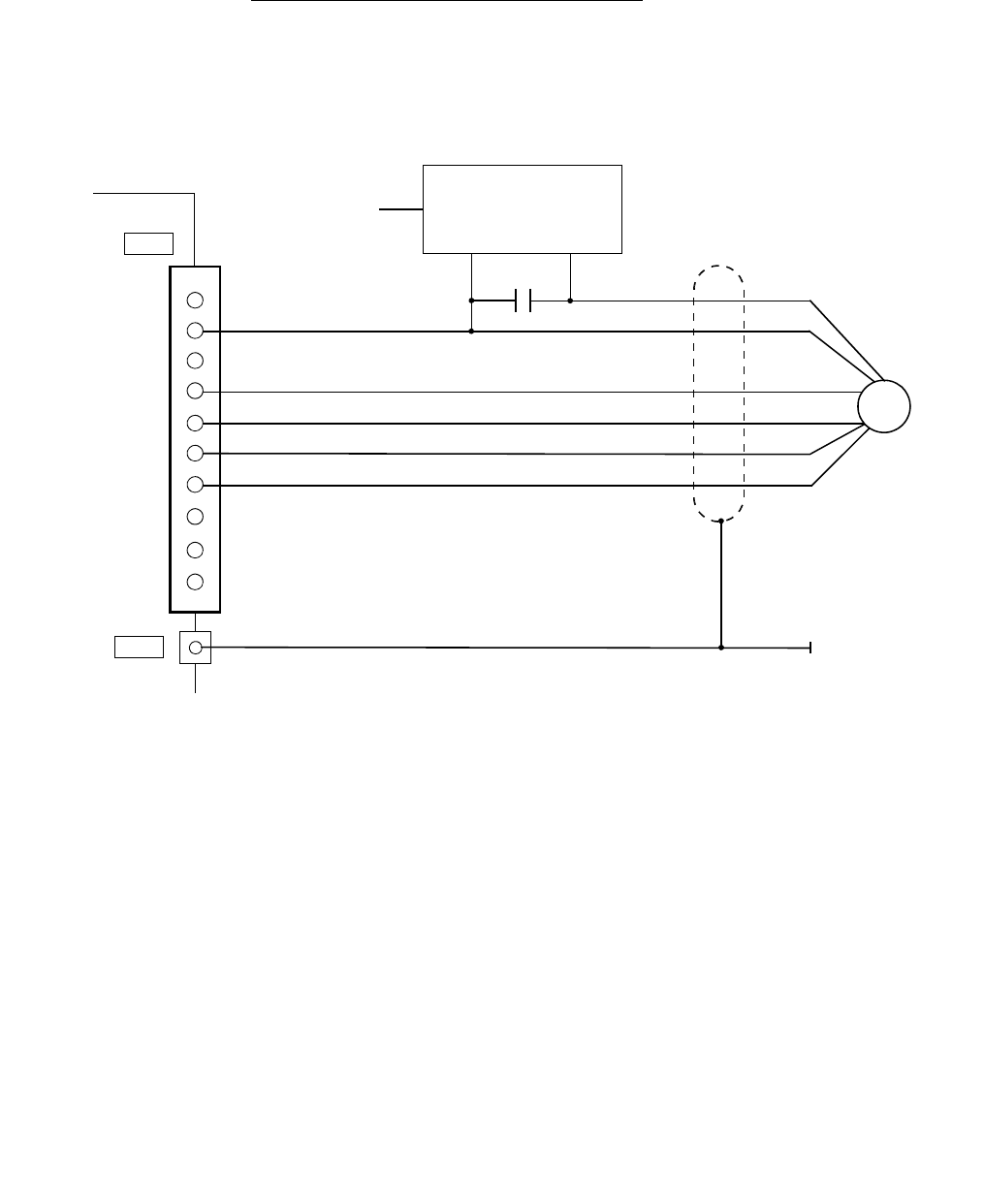
Electrical Installation 2 - 42
PG-D2/PG-X2/PG-W2
The maximum response frequency is 300kHz.
Use the following equation to computer the output frequency of the PG (fPG).
A separate power supply is required if the PG power supply capacity is greater than 200mA. (If momentary power loss must be
handled, use a backup capacitor or other method). See Fig 2.25.
Fig 2.25 PG-X2 Connection Example For External +12V PG Power Supply
Motor speed at maximum frequency output (RPM)
60 × PG rating (PPR)fPG (Hz) =
2
3
4
5
6
7
TA1
TA3
+12Vdc
0Vdc
+
+
_
_
0Vdc +12Vdc
PG power supply
PG
Capacitor for
momentary power loss
PG-X2
8
9
10
1IP12
IG
IP5
A(+)
A(-)
B(+)
B(-)
Z(+)
Z(-)
IG
AC
+
_
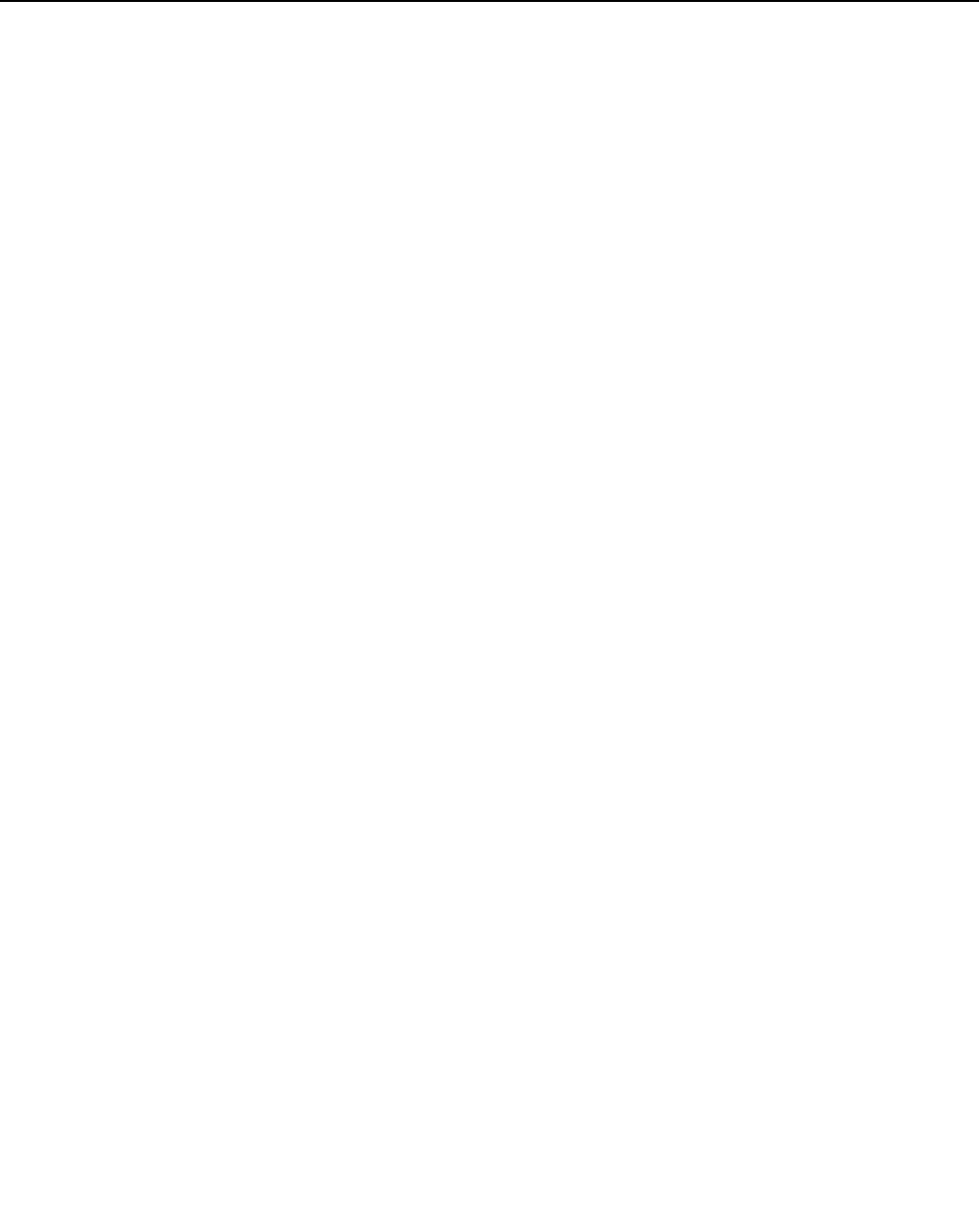
Digital Operator 3 - 1
Chapter 3
Digital Operator
This chapter describes the displays and functions of the Digital Operator.
Digital Operator Display .................................................... 3-2
Digital Operator Keys ........................................................ 3-3
Drive Mode Indicators ....................................................... 3-4
Drive Main Menus ............................................................. 3-6
Quick Setting Menu (-QUICK-)........................................ 3-11
Programming Menu (-ADV-)............................................ 3-12
Example of Changing a Parameter ................................. 3-15
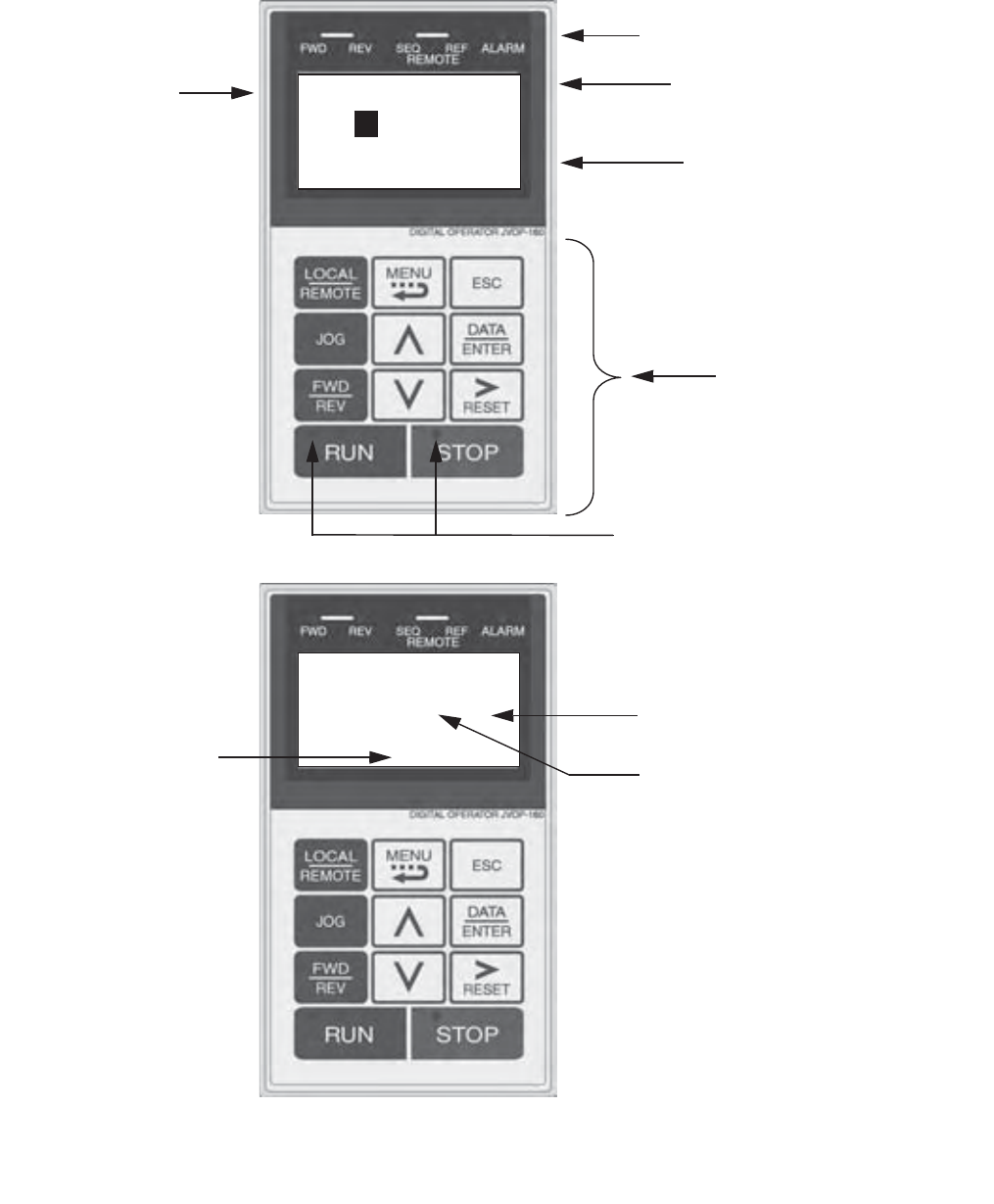
Digital Operator 3 - 2
Digital Operator Display
The Digital Operator is used for programming, operating, monitoring, and copying the Drive’s parameters. To copy parameters,
F7 Drives must have the same software version, model, and control method. The various items included on the Digital
Operator are described below.
Fig 3.1 Digital Operator Component Names and Functions
-DRIVE- Rdy
Frequency Ref
U1-01= 60.00Hz
- - - - - - - - - - - - - - - - - - - - - - - - - - - - -
U1-02= 60.00Hz
U1-03= 10.05A
Drive Mode Indicators
See Table 3.2
Data Display
Displays monitor data, parameter data and settings
RUN & STOP Indicators
See Tables 3.5 and 3.6
Ready Display
Drive can operate when a Drive command is input
1 line x 13 characters
3 lines x 16 characters
Menu Display
Key Descriptions
See Table 3.1
-QUICK-
Control Method
A1-02= 3 *3*
Flux Vector
“2”
Currently Programmed Value
Present Selection (User adjusts)
DATA DISPLAY EXAMPLE
Factory Default
Setting
-------- ---- --- ---- --- ---- -
------
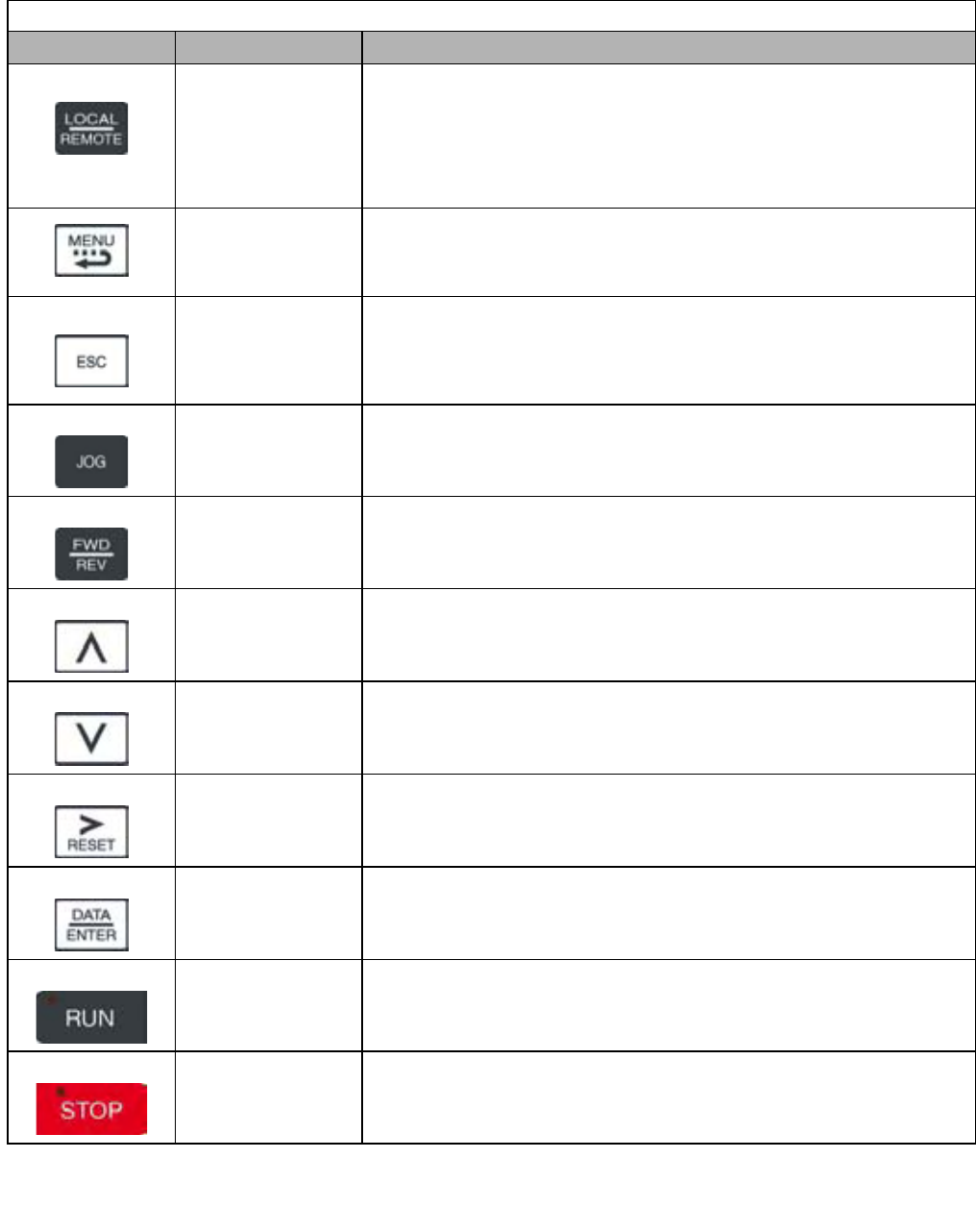
Digital Operator 3 - 3
Digital Operator Keys
The names and functions of the Digital Operator Keys are described in Table 3.1.
Table 3.1 Digital Operator Keys
Key Name Function
LOCAL / REMOTE
• Switches between operation via the Digital Operator (LOCAL) and the settings in
parameter b1-01 (Frequency Reference Selection) and b1-02 (Run Command
Selection) (REMOTE).
• This key can be enabled or disabled by the setting in parameter o2-01.
• The Drive must be in a stopped condition before it can be transferred to “LOCAL”
or “REMOTE” mode.
MENU
•Scrolls through the five main menus:
•Operation (-DRIVE-), Quick Setting (-QUICK-), Programming (-ADV-),
Modified Constants (-VERIFY-), and Auto-Tuning (-A.TUNE-).
ESCAPE •Returns to the previous display, before the DATA/ENTER key was
pressed.
JOG •Enables jog operation when the Drive is being operated from the Digital
Operator (LOCAL).
FWD / REV •Selects the rotation direction of the motor when the Drive is being operated
from the Digital Operator (LOCAL).
INCREASE •Increases parameter numbers and set values.
•Used to move to the next item or data value.
DECREASE •Decreases parameter numbers and set values.
•Used to move to the previous item or data value.
SHIFT / RESET
•Selects the digit to be changed. The selected digit will blink.
•Also resets the Drive when a fault has occurred. The run command must be
removed before the reset command will be accepted.
DATA / ENTER •Enter menus and parameters as well as to set values.
RUN •Starts Drive operation when the Drive is being controlled by the Digital Operator
(LOCAL).
STOP Key
• Stops Drive operation.
•This key can be enabled or disabled when operating from the external
terminal or communications by setting user parameter o2-02.
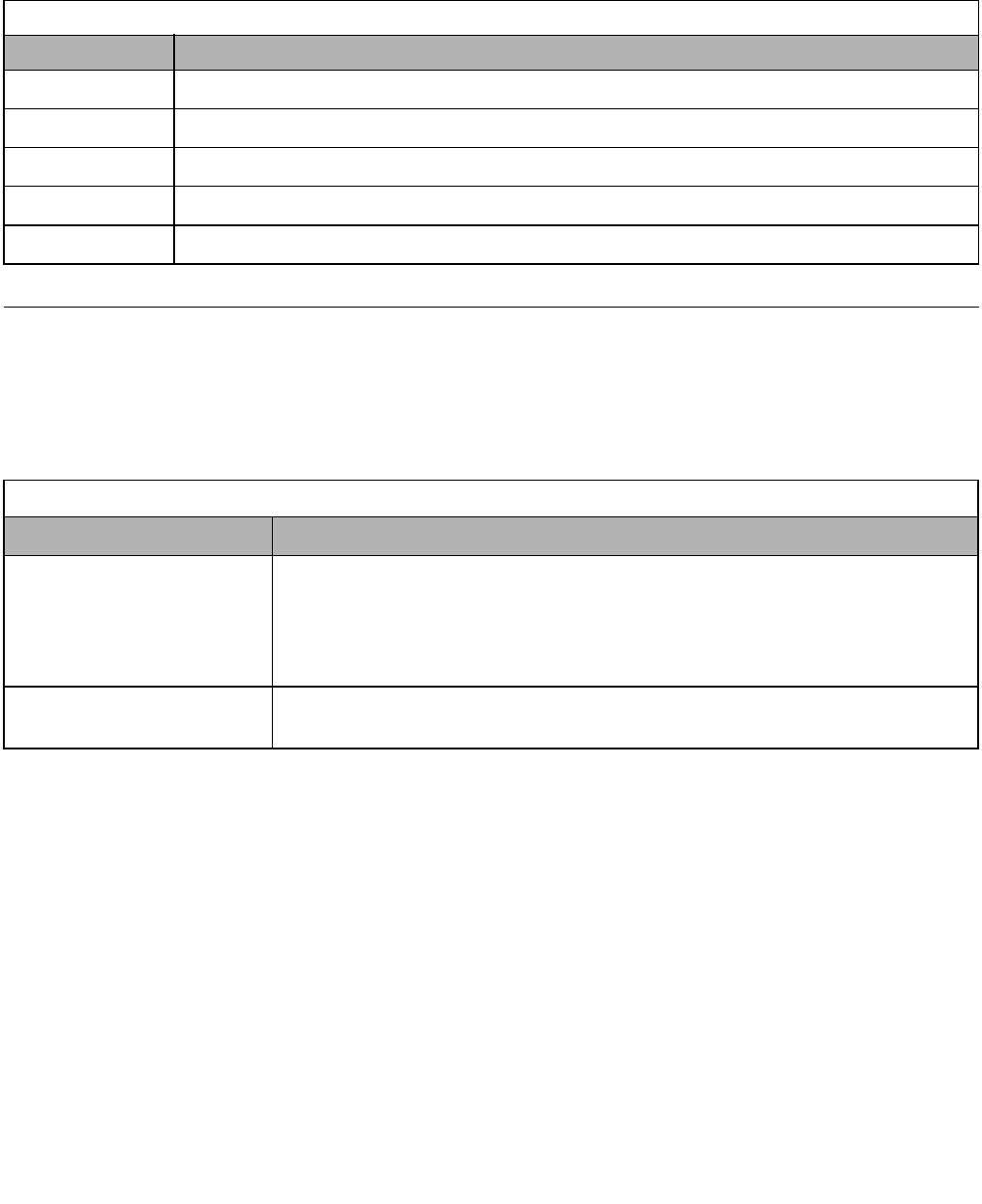
Digital Operator 3 - 4
Drive Mode Indicators
The definition of the Drive mode indicators are shown in Table 3.2.
REMOTE Sequence (SEQ) Indicator
The status of the “REMOTE” Sequence (SEQ) indicator is shown in Table 3.3. This indicator is always “Off” when the Drive
is in the “LOCAL” mode. When the Drive is in the “REMOTE” mode, the SEQ indicator status is dependent on the setting of
parameter b1-02 (Run Command Selection). See Table 3.3.
Table 3.2 Drive Mode Indicators
Indicator Definition
FWD Lit when a forward run command is input.
REV Lit when a reverse run command is input.
REMOTE SEQ See Table 3.3.
REMOTE REF See Table 3.4.
ALARM Lit when a fault has occurred. Flashes when an Alarm has occurred.
Table 3.3 REMOTE Sequence (SEQ) Indicator
Indicator Status Condition
On
Parameter b1-02 (Run Command Selection) is set to terminal strip, communications, or an option
board as indicated below:
b1-02=1 (Terminals)
=2 (Communications)
=3 (Option PCB)
Off Parameter b1-02 (Run Command Selection) is set to Digital Operator as indicated below:
b1-02=0 (Operator)
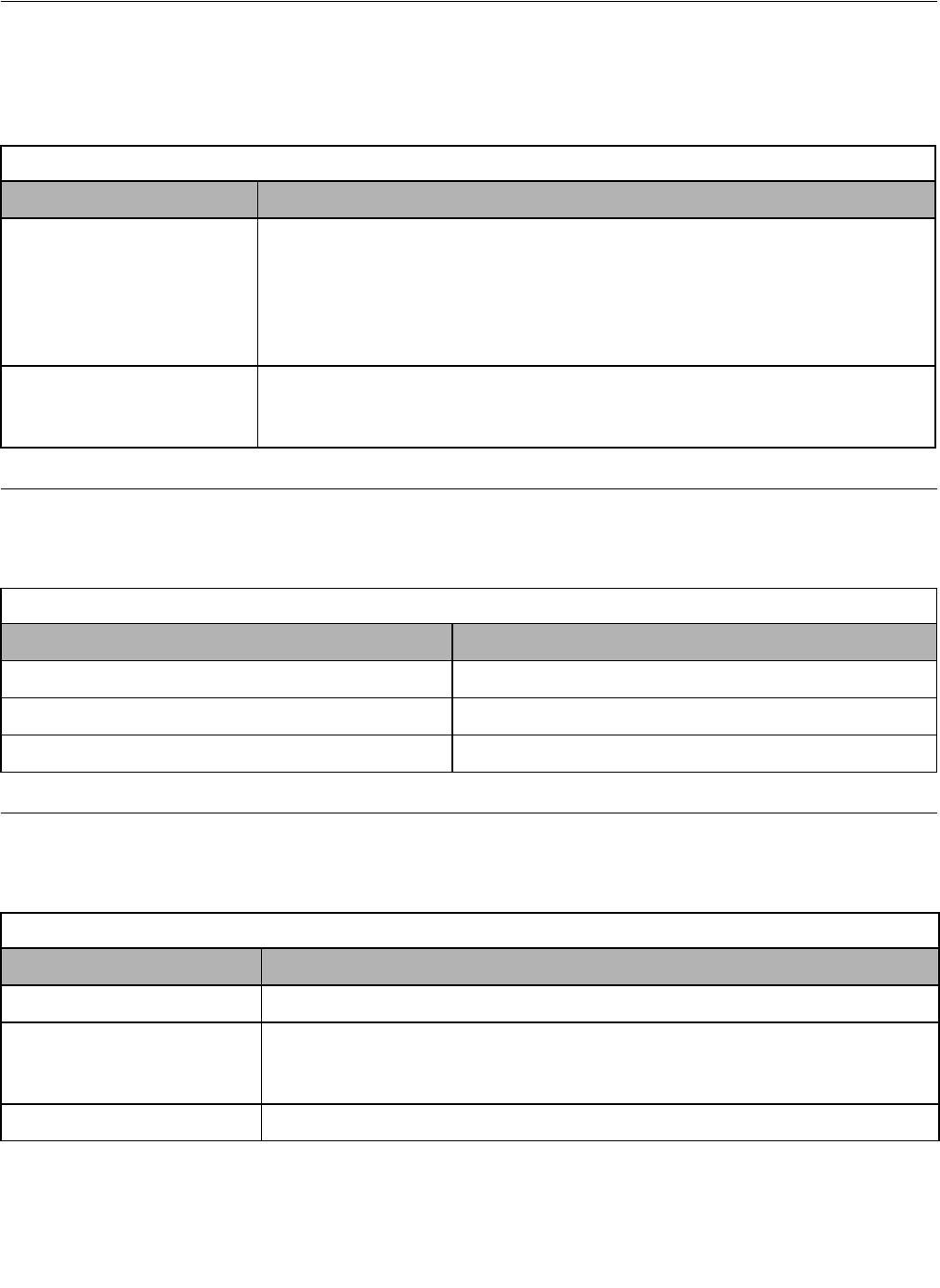
Digital Operator 3 - 5
REMOTE Reference (REF) Indicator
The status of the “REMOTE” Reference (REF) indicator is shown in Table 3.4. This indicator is always “Off” when the Drive
is in the “LOCAL” mode. When the Drive is in the “REMOTE” mode, the REF indicator status is dependent on the setting of
parameter b1-01 (Frequency Reference Selection). See Table 3.4.
Run Indicator
The status of the “RUN” indicator is shown in Table 3.5 when the Drive is in either the “LOCAL” or “REMOTE” mode.
Stop Indicator
The status of the “STOP” indicator is shown in Table 3.6 when the Drive is in either the “LOCAL” or “REMOTE” mode.
Table 3.4 REMOTE Reference (REF) Indicator
Indicator Status Condition
On
Parameter b1-01 (Frequency Reference Selection) is set to terminal strip, communications, option
board, or pulse train as indicated below:
b1-01=1 (Terminals)
=2 (Communications)
=3 (Option PCB)
=4 (Pulse Train)
Off Parameter b1-01 (Frequency Reference Selection) is set to digital
operator as indicated below:
b1-01=0 (Operator)
Table 3.5 RUN Indicator
Indicator Status Condition
On Drive is running.
Blinking Drive is decelerating to a stop.
Off Drive is stopped.
Table 3.6 STOP Indicator
Indicator Status Condition
On Drive is decelerating to a stop or stopped.
Blinking Drive is in a run condition but the frequency reference is less than the
minimum output frequency E1-09, or the Drive is running in “REMOTE” mode and the “STOP”
key on has been pressed.
Off Drive is running.
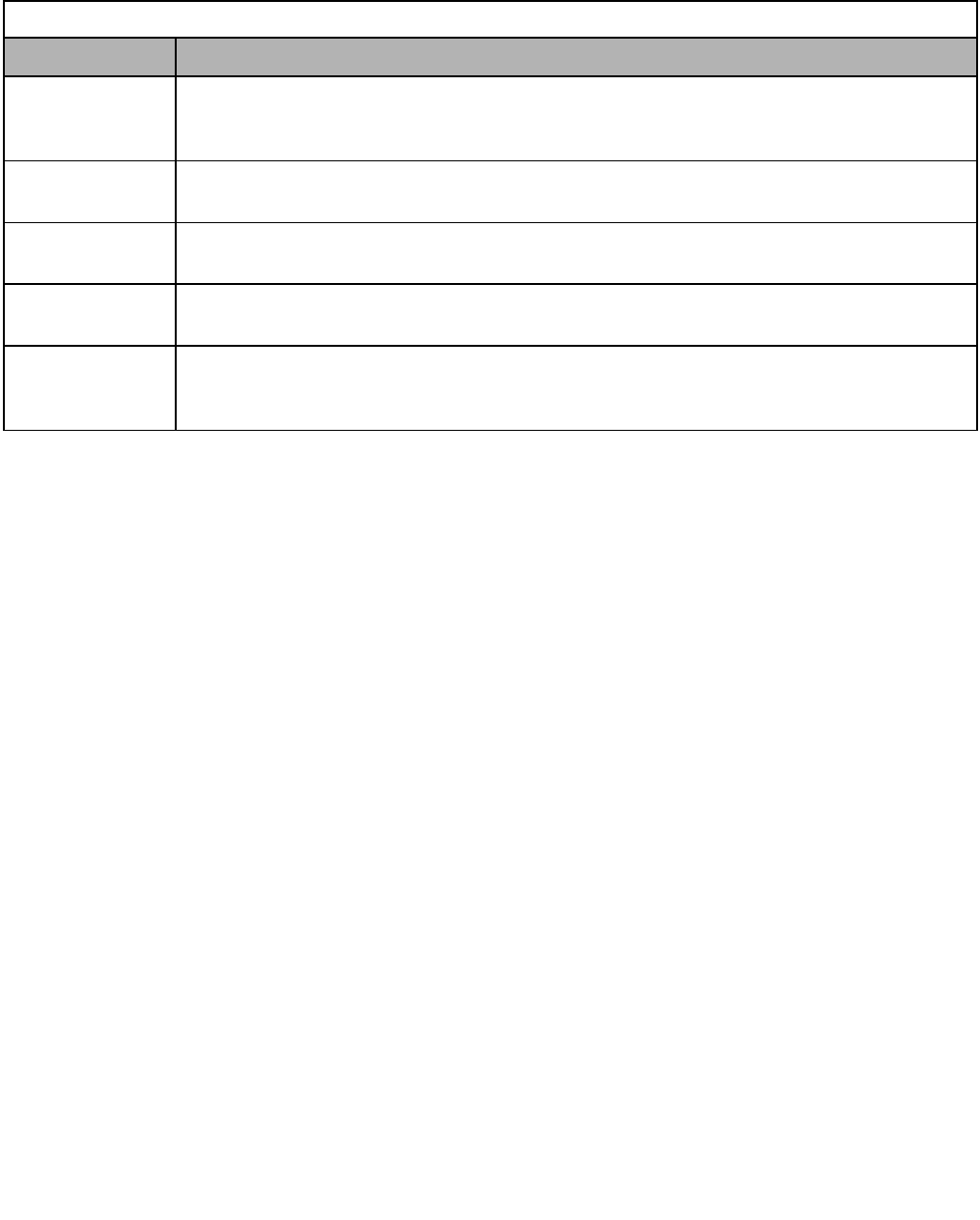
Digital Operator 3 - 6
Drive Main Menus
The Drive’s parameters and monitoring functions are organized into groups called menus that make it easier to read and set
parameters. The Drive is equipped with five menus. The five menus and their primary functions are shown in Table 3.7.
Table 3.7 Drive Main Menus
Main Menu Primary Functions
Operation
- DRIVE -
The Drive can run in this menu.
Use this menu for monitoring values such as frequency reference or output current, displaying fault
history or displaying the fault traces.
Quick Setting
- QUICK - The Drive can be programmed in this menu.
Use this menu to set/read the most commonly used parameters.
Programming
- ADV - The Drive can be programmed in this menu or parameters can be copied into the Digital Operator.
Use this menu to set/read every parameter.
Modified Constants
- VERIFY - The Drive can be programmed in this menu.
Use this menu to set/read the parameters that have been modified from their factory default settings.
Auto-Tuning
- A.TUNE -
The Drive can be programmed in this menu.
Use this menu to Auto-Tune the Drive in order to optimize motor control.
The motor parameters are calculated and set automatically after successfully completing Auto-Tuning.
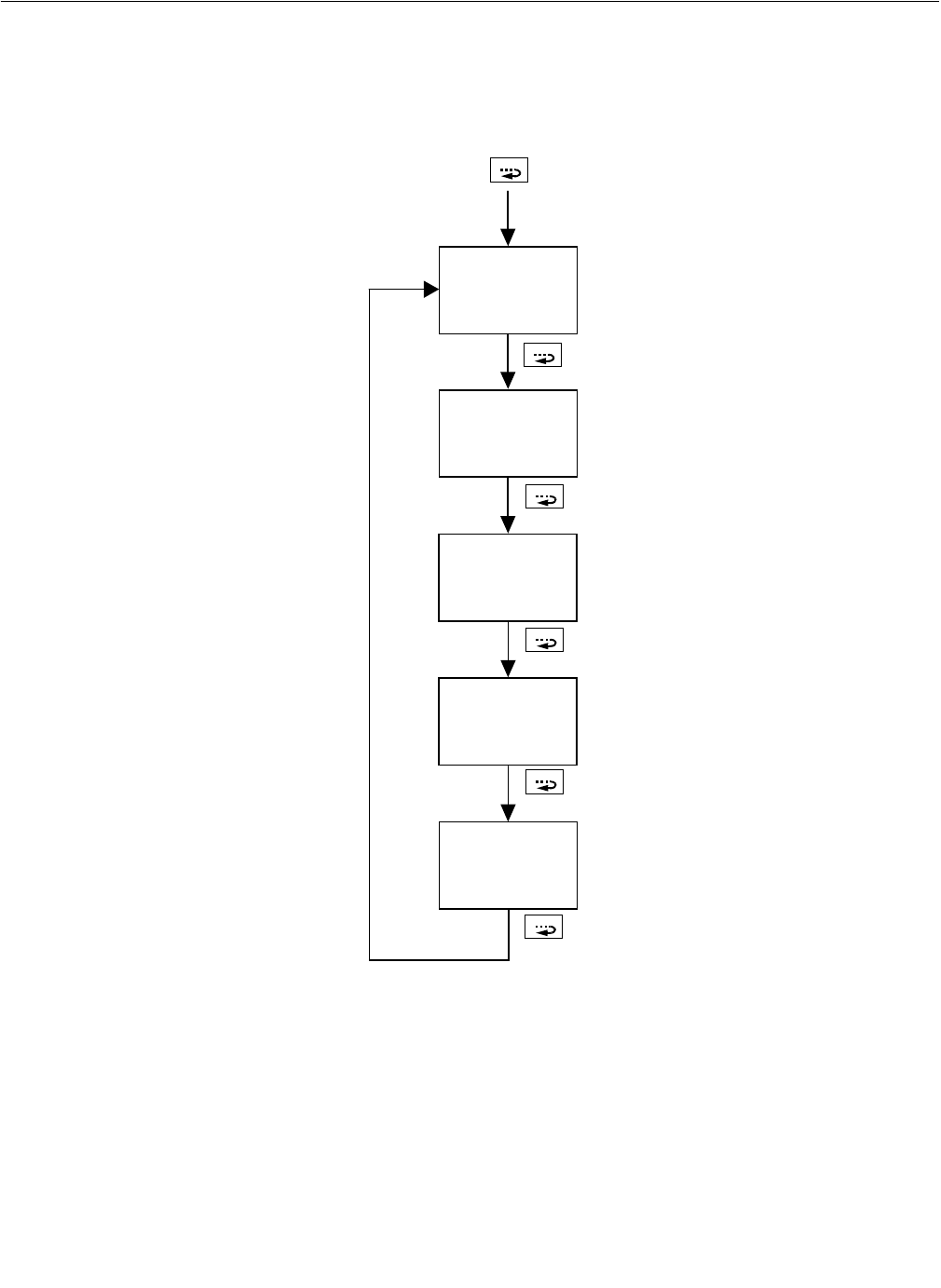
Digital Operator 3 - 7
Main Menu Structure
The menu selection display will appear when the MENU key is pressed from a monitor or setting display. While viewing the
menu selection display, press the MENU key repeatedly to scroll between the menu selections. Press the DATA/ENTER key to
enter the desired menu selection.
Fig 3.2 Main Menu Structure
-DRIVE-
** Main Menu **
- - - - - - - - - - - - - -
Operation
-DRIVE-
** Main Menu **
- - - - - - - - - - - - - -
Quick Setting
-DRIVE-
** Main Menu **
- - - - - - - - - - - - - -
Programming
-DRIVE-
** Main Menu **
- - - - - - - - - - - - - -
Modified Consts
-DRIVE-
** Main Menu **
- - - - - - - - - - - - - -
Auto-Tuning
-QUICK-
-ADV-
-VERIFY-
-A.TUNE-
MENU
MENU
MENU
MENU
MENU
MENU
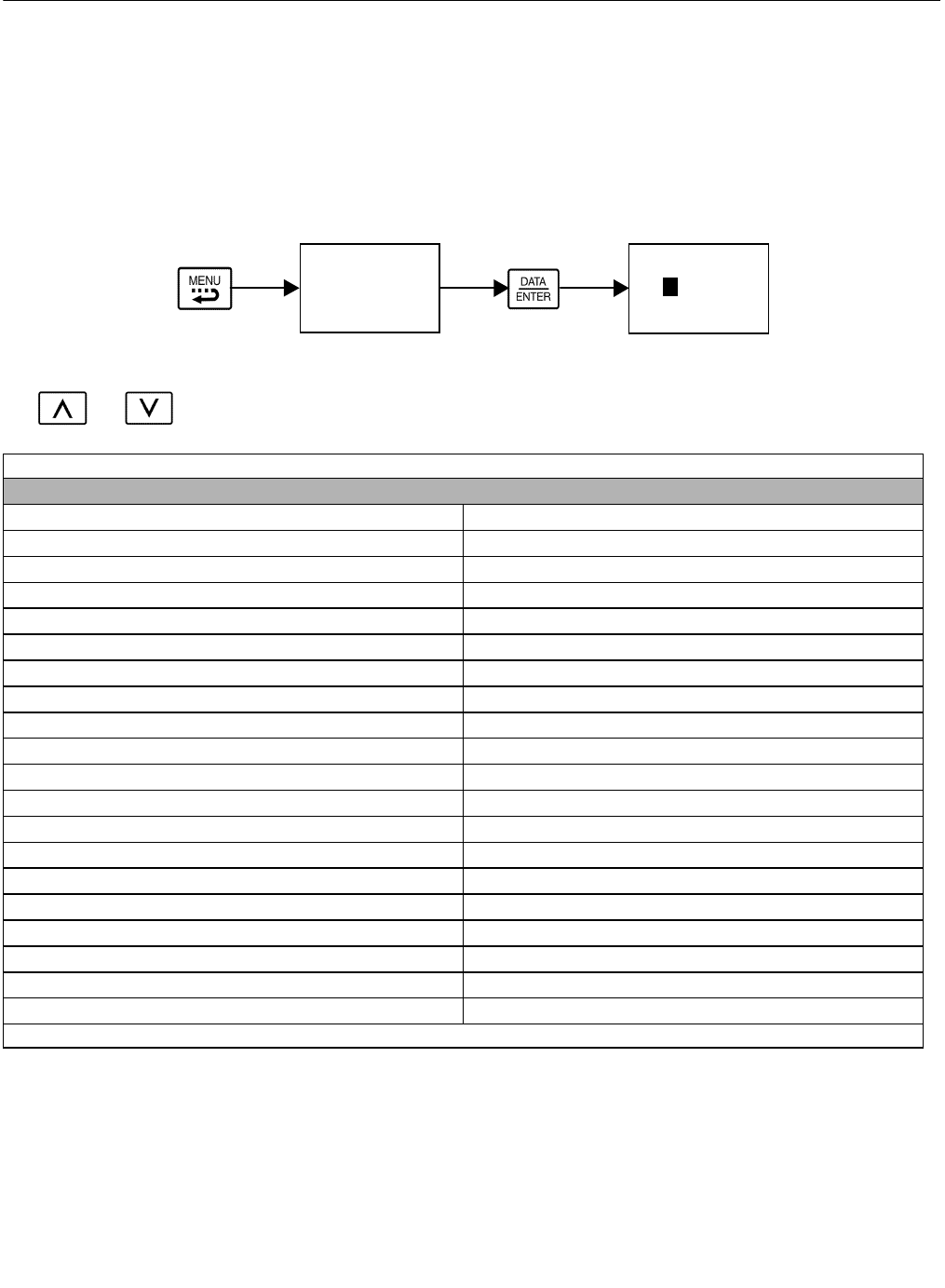
Digital Operator 3 - 8
Operation Menu (-DRIVE-)
This menu is used for setting the frequency reference (Local Mode) or monitoring values such as output frequency and output
current. It is also used for displaying the fault history and the fault traces. The Drive must be in this menu in order to run. See
parameter b1-08 (Run Command Selection During Program).
U1 Monitor List
Follow the key operations below (Fig 3.3) to access the Operation Menu:
Fig 3.3 U1 Monitor List Access Procedure
Use and keys to scroll through the U1 “Monitor” parameter list. See Appendix A for functional description.
Table 3.8 U1 Monitor List
Monitors
U1-01 Frequency Reference U1-21 ASR Input
U1-02 Output Frequency U1-22 ASR Output
U1-03 Output Current U1-24 PI Feedback Value
U1-04 Control Method U1-25 DI-16 H2 Input Status
U1-05 Motor Speed U1-26 Output Voltage Reference (Vq)
U1-06 Output Voltage U1-27 Output Voltage Reference (Vd)
U1-07 DC Bus Voltage U1-28 CPU Number
U1-08 Output Power U1-29 kWh (Lower 4 digits)
U1-09 Torque Reference U1-30 MWh (Upper 5 digits)
U1-10 Input Terminal Status U1-32 ACR(q) Output
U1-11 Output Terminal Status U1-33 ACR(d) Output
U1-12 Drive Operation Status U1-34 OPE Detected
U1-13 Cumulative Operation Time U1-35 Zero Servo Pulse Count
U1-14 Software Number U1-36 PID Input
U1-15 Terminal A1 Input Voltage U1-37 PID Output
U1-16 Terminal A2 Input Voltage U1-38 PID Setpoint
U1-17 Terminal A3 Input Voltage U1-39 Modbus Error Code
U1-18 Motor Secondary Current (Iq) U1-40 Cooling Fan Elapsed Time
U1-19 Motor Excitation Current (Id) U1-44 ASR Output with or without Filter
U1-20 Output Frequency after Soft-start U1-45 Feed Forward Control Output
Note: Some monitors are not available for all Control Modes (A1-02).
-DRIVE-
** Main Menu **
- - - - - - - - - - - - - -
Operation
-DRIVE- Rdy
Frequency Ref
U1-01= 0.00Hz
- - - - - - - - - - - - - - - - - - - -
U1-02= 0.00Hz
U1
-
03= 0.00A
x1
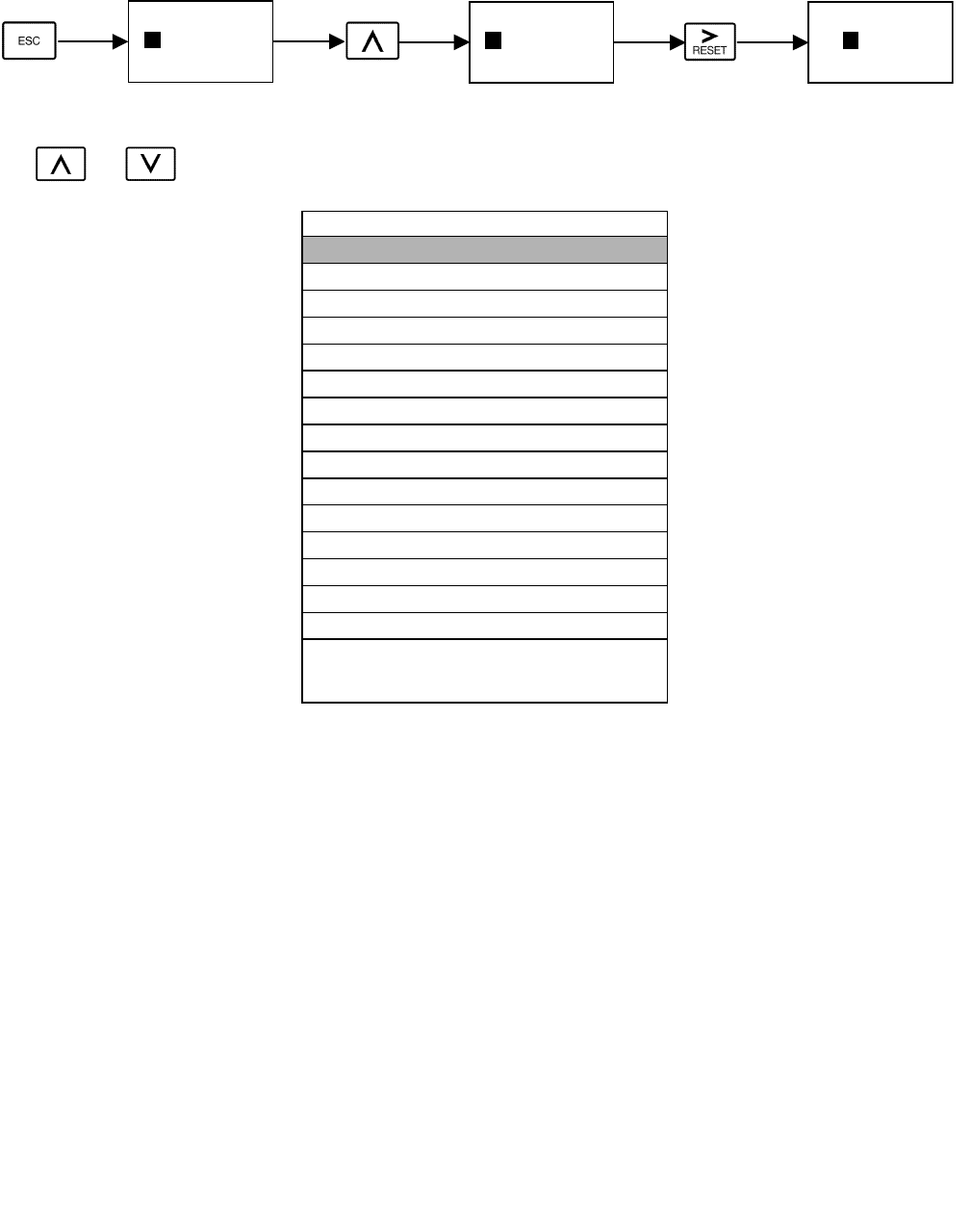
Digital Operator 3 - 9
U2 Fault Trace List
After viewing the “Monitor” parameter list, follow the key operations below (Fig 3.4) to access the “Fault Trace” parameter
list.
Fig 3.4 U2 Fault Trace List Access Procedure
Use and keys to scroll through the U2 “Fault Trace” parameter list.
Table 3.9 U2 Fault Trace List
Fault Trace Parameters
U2-01 Current Fault
U2-02 Previous Fault
U2-03 Frequency Reference at Fault*
U2-04 Output Frequency at Fault*
U2-05 Output Current at Fault*
U2-06 Motor Speed at Fault*
U2-07 Output Voltage at Fault*
U2-08 DC Bus Voltage at Fault*
U2-09 Output Power at Fault*
U2-10 Torque Reference at Fault
U2-11 Input Terminal Status at Fault*
U2-12 Output Terminal Status at Fault*
U2-13 Drive Operation Status at Fault*
U2-14 Cumulative Operation Time at Fault*
* Represents fault condition prior to current fault state.
Note: Fault trace is not executed at CPF00, CPF01,
CPF03, UV1, and UV2.
-DRIVE- Rdy
Monitor
U1-01= 0.00Hz
- - - - - - - - - - - - - - - - - - - -
U1-02= 0.00Hz
U1-03= 0.00A
-DRIVE- Rdy
Fault Trace
U2-01= None
- - - - - - - - - - - - - - - - - - - -
U2-02= None
U2-03= 0.00Hz
-DRIVE- Rdy
Current Fault
U2-01= None
- - - - - - - - - - - - - - - - - - - -
U2-02= None
U2-03= 0.00Hz
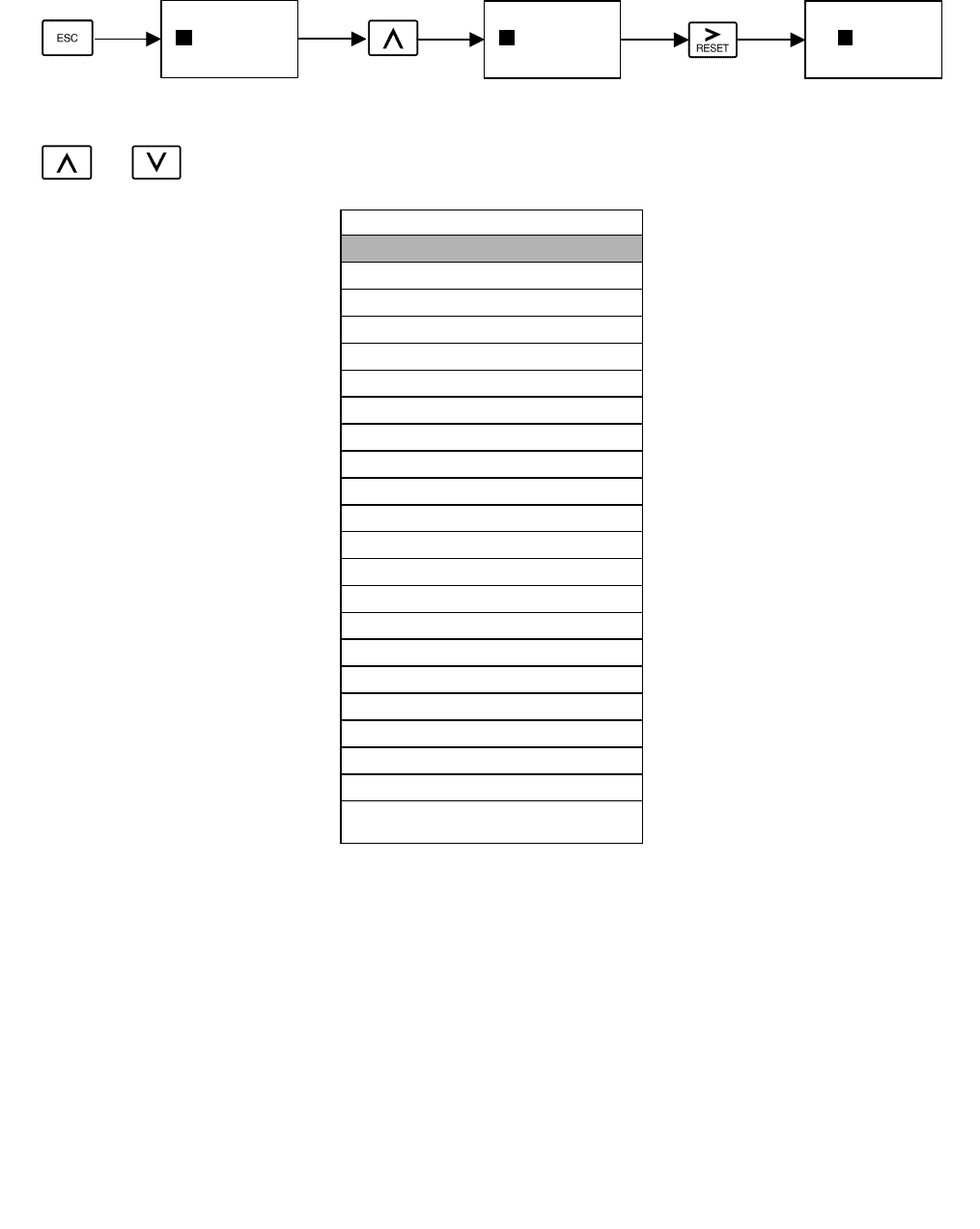
Digital Operator 3 - 10
U3 Fault History List
After viewing the “Fault Trace” parameter list, follow the key operations below (Fig 3.5) to access the “Fault History”
parameter list.
Fig 3.5 U3 Fault History Access Procedure
Use and keys to scroll through the U3 “Fault History” parameter list.
Table 3.10 Fault History List
Fault History Parameters
U3-01 Last Fault
U3-02 Fault Message 2
U3-03 Fault Message 3
U3-04 Fault Message 4
U3-05 Elapsed Time 1
U3-06 Elapsed Time 2
U3-07 Elapsed Time 3
U3-08 Elapsed Time 4
U3-09 Fault Message 5
U3-10 Fault Message 6
U3-11 Fault Message 7
U3-12 Fault Message 8
U3-13 Fault Message 9
U3-14 Fault Message 10
U3-15 Elapsed Time 5
U3-16 Elapsed Time 6
U3-17 Elapsed Time 7
U3-18 Elapsed Time 8
U3-19 Elapsed Time 9
U3-20 Elapsed Time 10
Note: Fault trace is not executed at CPF00,
CPF01, CPF03, UV1, and UV2.
-DRIVE- Rdy
Fault Trace
U2-01= None
- - - - - - - - - - - - - - - - - - - -
U2-02= None
U2-03= 0.00
A
-DRIVE- Rdy
Fault History
U3-01= None
- - - - - - - - - - - - - - - - - - - -
U3-02= None
U3-03= None
-DRIVE- Rdy
Last Fault
U3-01= None
- - - - - - - - - - - - - - - - - - - -
U3-02= None
U3-03= None
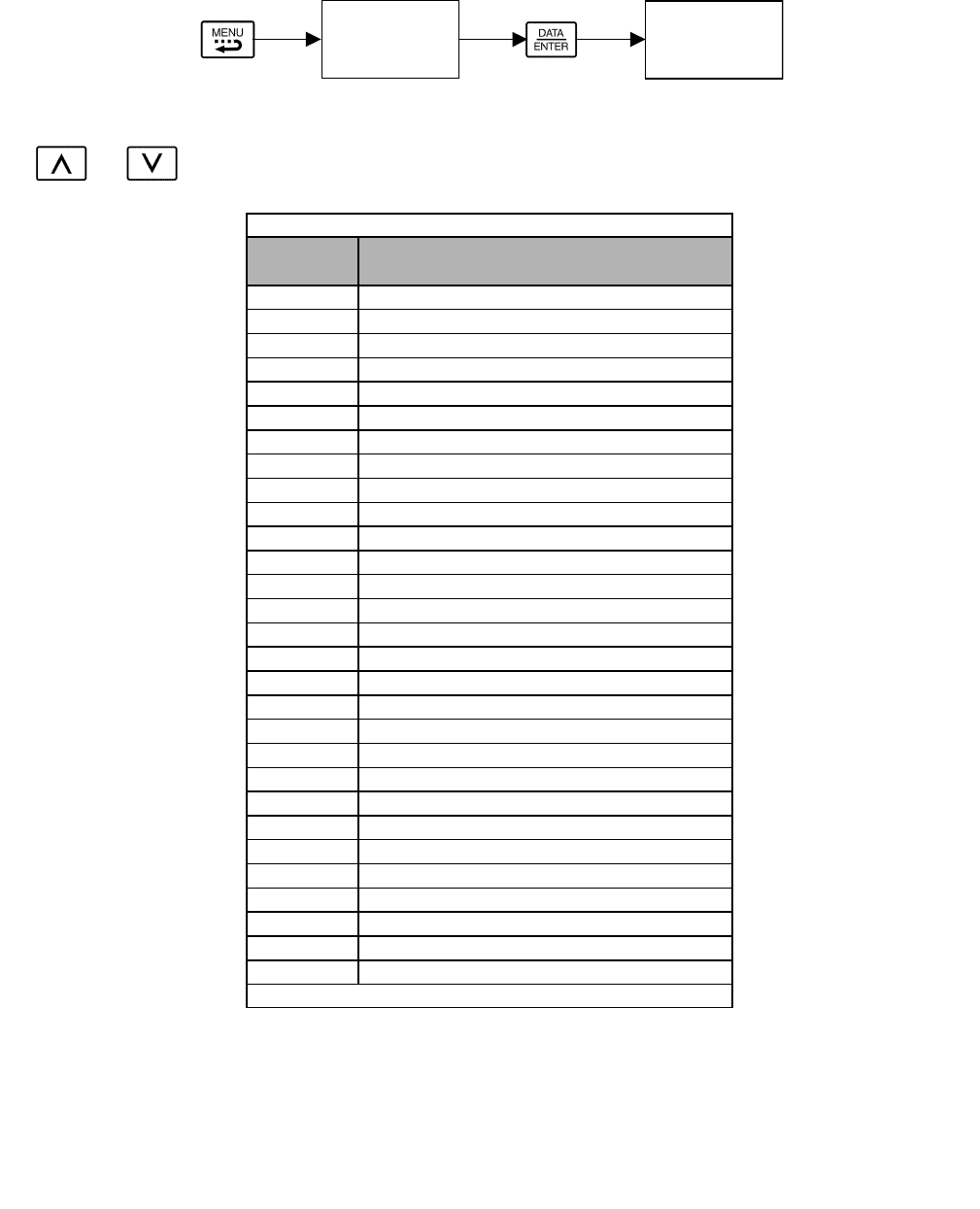
Digital Operator 3 - 11
Quick Setting Menu (-QUICK-)
This menu is used to set/read the most commonly used parameters in the Drive. Follow the key operations in Fig 3.6 to access
the Quick Setting Menu:
Fig 3.6 Quick Setting Parameter Access Procedure
Use and keys to scroll through the “Quick Setting” parameter list.
Table 3.11 Quick Setting Parameter List
Parameter
Number Parameter Name
A1-02 Control Method Selection
b1-01 Frequency Reference Selection
b1-02 Run Command Selection
b1-03 Stopping Method Selection
C1-01 Acceleration Time 1
C1-02 Deceleration Time 1
C6-02 Carrier Frequency Selection
d1-01 Frequency Reference 1
d1-02 Frequency Reference 2
d1-03 Frequency Reference 3
d1-04 Frequency Reference 4
d1-17 Jog Reference
E1-01 Input Voltage Setting
E1-03 V/F Pattern Selection
E1-04 Maximum Output Frequency
E1-05 Maximum Output Voltage
E1-06 Base Frequency
E1-09 Minimum Output Frequency
E1-13 Base Voltage
E2-01 Motor Rated Current
E2-04 Number of Motor Poles
E2-11 Motor Rated Output
F1-01 PG Pulses / Revolution
F1-21<3021> PG Pulse / Revolution 2
F1-22 <3021> PG Rotation Selection
H4-02 Terminal FM Gain Setting
H4-05 Terminal AM Gain Setting
L1-01 Motor Overload Protection Selection
L3-04 Stall Prevention Selection During Decel
Note: Refer to Appendix A for control method dependent parameters.
-QUICK-
** Main Menu **
- - - - - - - - - - - - - -
Quick Setting
-QUICK-
Reference Source
- - - - - - - - - - - - - - - - - - - -
B1-01= 1 *1*
Terminals
“1”
x2
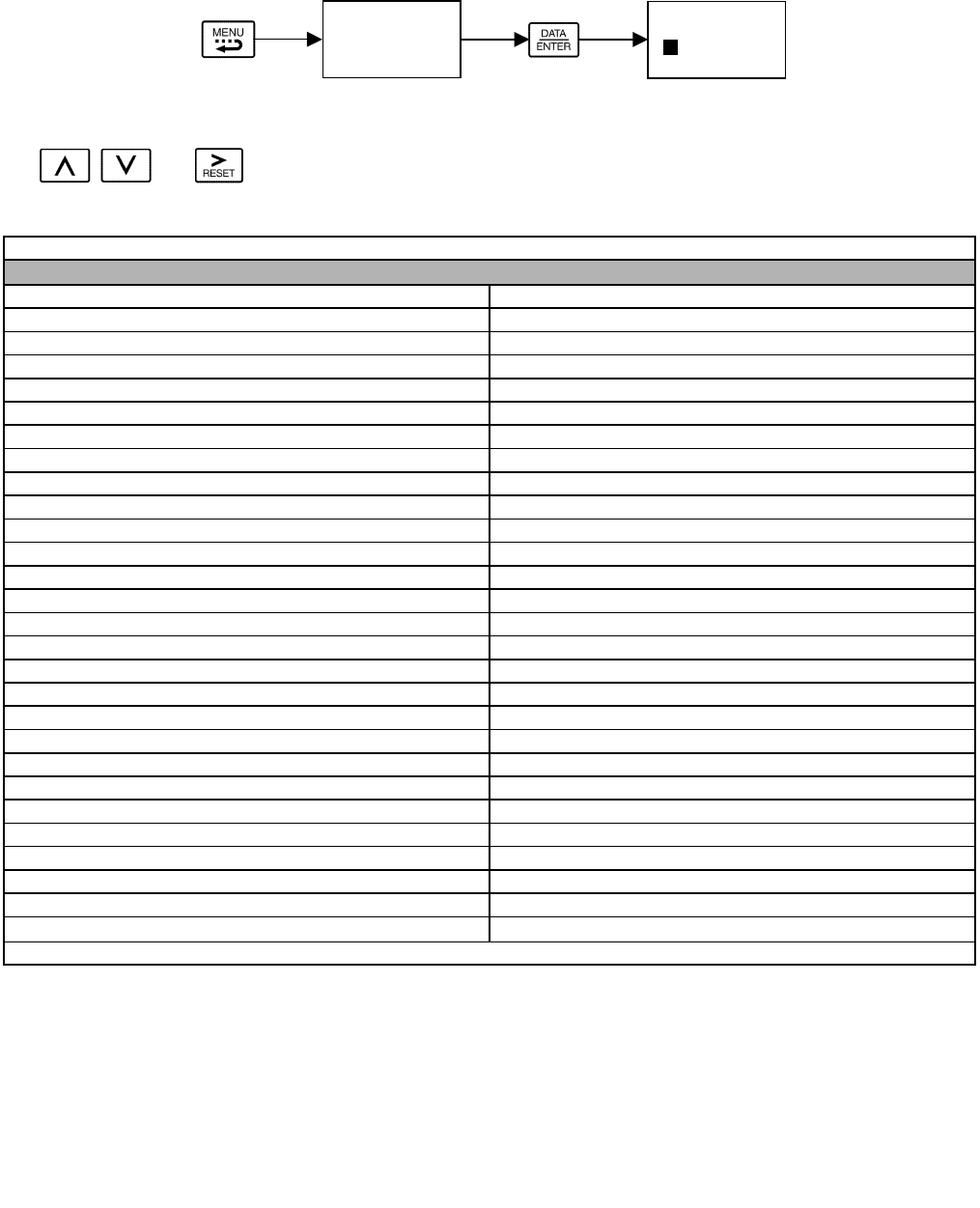
Digital Operator 3 - 12
Programming Menu (-ADV-)
This menu is used to set/read every parameter in the Drive. Follow the key operations below (Fig 3.7) to access the
Programming Menu.
Fig 3.7 Programming Menu Access Procedure
Use , , and keys to scroll through the “Programming” parameter group list. For complete parameter listing
see Appendix A.
Table 3.12 Programming Parameter Group List
Parameter Group Functions
A1 Initialization F2 AI-14 Setup
A2 User Parameters F3 DI-08, 16 Setup
b1 Sequence F4 AO-08, 12 Setup
b2 DC Injection Braking F5 DO-02, 08 Setup
b3 Speed Search F6 Communications Option Setup
b4 Delay Timers H1 Digital Inputs
b5 PID Control H2 Digital Outputs
b6 Reference Hold H3 Analog Inputs
b7 Droop control H4 Analog Outputs
b8 Energy Saving H5 Serial Communications Setup
b9 Zero Servo H6 Pulse I/O Setup
C1 Accel/Decel L1 Motor Overload
C2 S-Curve Accel/Decel L2 Power Loss Ridethru
C3 Motor-Slip Compensation L3 Stall Prevention
C4 Torque Compensation L4 Reference Detection
C5 ASR Tuning L5 Fault Restart
C6 Carrier Frequency L6 Torque Detection
d1 Preset Reference L7 Torque Limit
d2 Reference Limits L8 Hardware Protection
d3 Jump Frequencies n1 Hunting Prevention
d4 Sequence (MOP & Trim Control) n2 AFR Tuning
d5 Torque Control n3 High Slip Braking
d6 Field-Weakening n5 Feed Forward
E1 V/F Pattern o1 Monitor Select
E2 Motor Setup o2 Key Selections
E3 V/F Pattern 2 o3 COPY Function
E4 Motor Setup 2 T1 Auto-Tuning
F1 PG Option Setup -
Note: Refer to Appendix A for control method dependent programming parameter groups.
-ADV-
** Main Menu **
- - - - - - - - - - - - - -
Programming
-ADV-
Initialization
- - - - - - - - - - - - - - - - - - - -
A1-00= 0
Select Language
x3
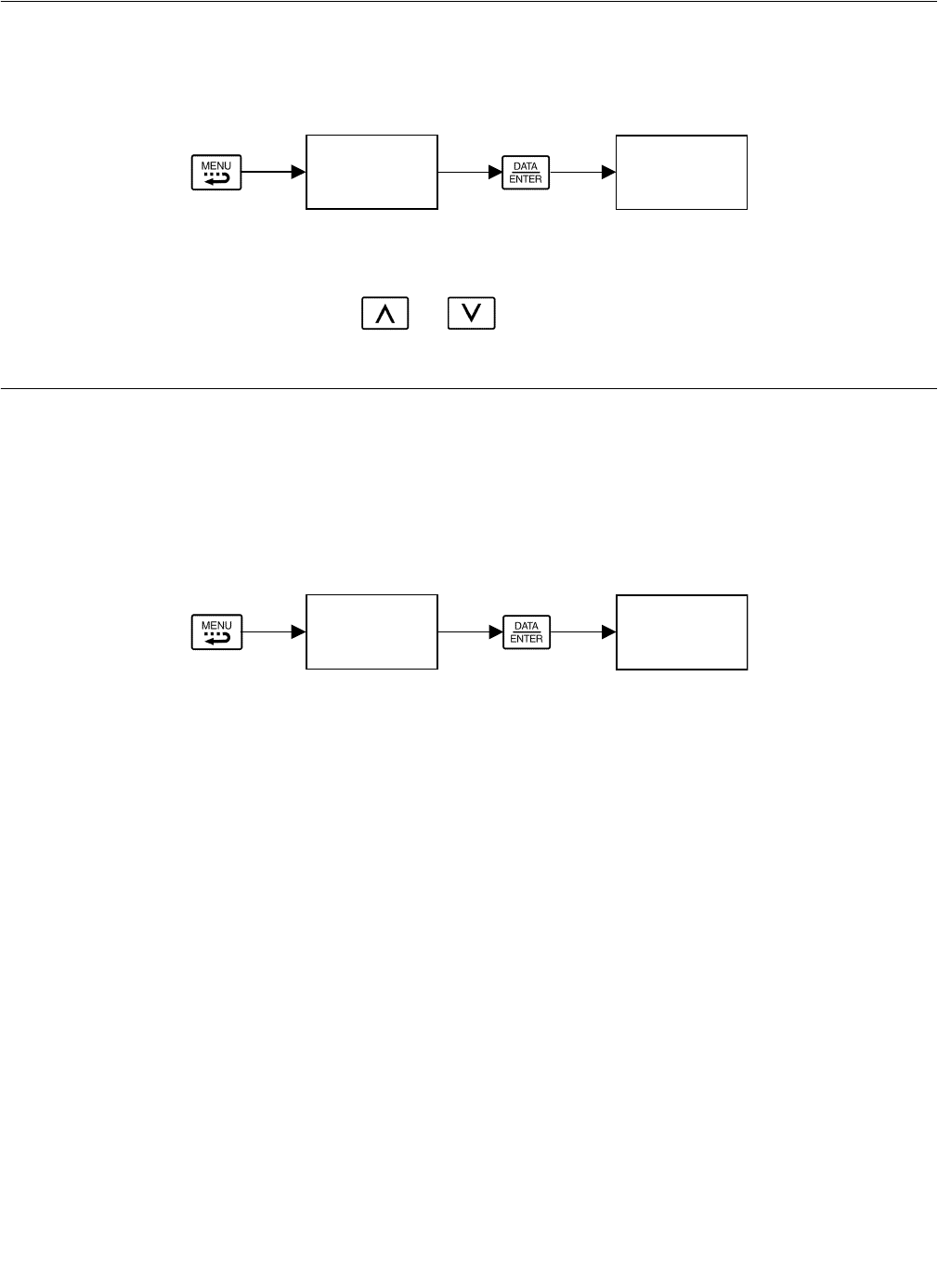
Digital Operator 3 - 13
Modified Constants Menu (-VERIFY-)
This menu is used to set/read the parameters that have been modified from their original factory default settings. Follow the
key operations below (Fig 3.8) to access the Modified Constants Parameter Menu.
Fig 3.8 Modified Constants Menu Access Procedure
Note 1: If there are no parameters that have been modified from their original factory default settings, then the display will
state “None Modified”. Otherwise, use and keys to scroll through the “Modified Constants” list.
Auto-Tuning Menu (-A.TUNE-)
This menu is used to Auto-Tune the Drive in order to calculate the required motor parameters to optimize motor performance.
Ideally, perform Auto-Tuning with the motor uncoupled from the load.
When the motor cannot be disconnected from the load, perform static or terminal resistance Auto-Tuning. To set motor
parameters by hand calculation, contact your Yaskawa representative. Follow the key operations below (Fig 3.9) to access the
Auto-Tuning Menu.
Fig 3.9 Auto-Tuning Menu Access Procedure
-VERIFY-
** Main Menu **
- - - - - - - - - - - - - -
Modified Consts
See Note 1
x4
See Note 1
-A.TUNE-
** Main Menu **
- - - - - - - - - - - - - -
Auto-Tuning
-A.TUNE-
Mtr Rated Power
- - - - - - - - - - - - - - - - - - - -
T
1-02= 0.40kW
(0.00~650.00)
“0.40kW”
x5
-A.TUNE-
Tuning Mode Sel
- - - - - - - - - - - - - - - - - - - - - - - - - - - - -
T1-01= 2 *2*
Term Resistance
“2”
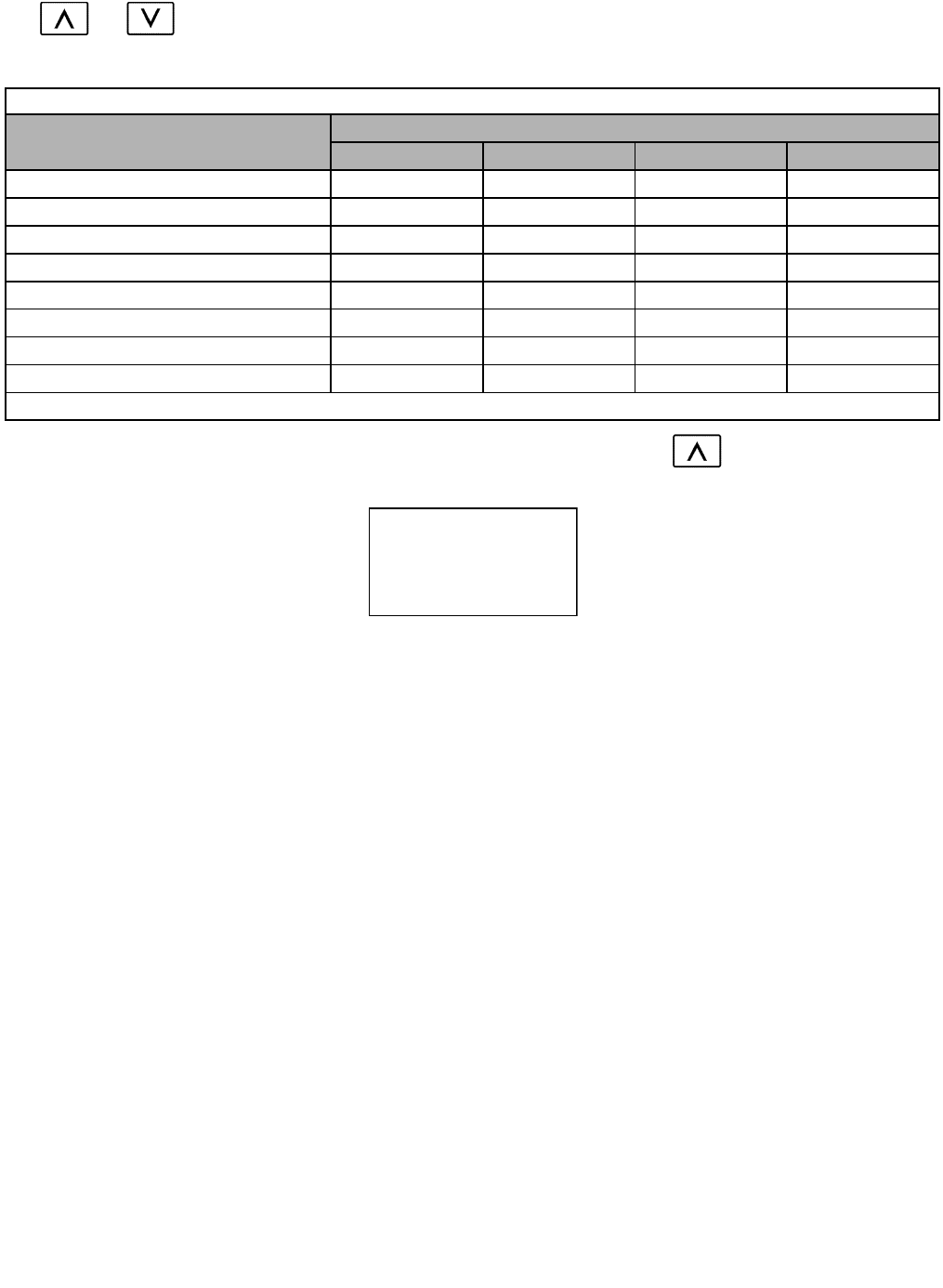
Digital Operator 3 - 14
Use and keys to scroll through the “Auto-Tuning” parameter list. Depending on the Control Method (A1-02)
setting, only certain Auto-Tuning parameters will be accessible. See table below.
After setting Auto-Tuning parameters according to motor nameplate specifications, press so that the following screen
appears on the Digital Operator.
Press the RUN key on the Digital Operator to start Auto-Tuning. The motor will automatically run. During this process the
motor parameters will be automatically set in the Drive according to the measured values.
Table 3.13 Auto-Tuning Parameter List
Auto-Tuning Parameters Control Method
V/F V/F w/PG OLV Flux Vector
T1-01 Tuning Mode Selection O O O O
T1-02 Motor Rated Power O O O O
T1-03 Rated Voltage X X O O
T1-04 Rated Current O O O O
T1-05 Rated Frequency X X O O
T1-06 Number of Poles X X O O
T1-07 Rated Speed X X O O
T1-08 PG Pulses/Rev X X X O
O = Accessible
-A.TUNE- Rdy
Auto-Tuning
- - - - - - - - - - - - - - - - - - - - - - - - - - - - -
0Hz/ 0.00A
Tuning Ready ?
Press RUN key
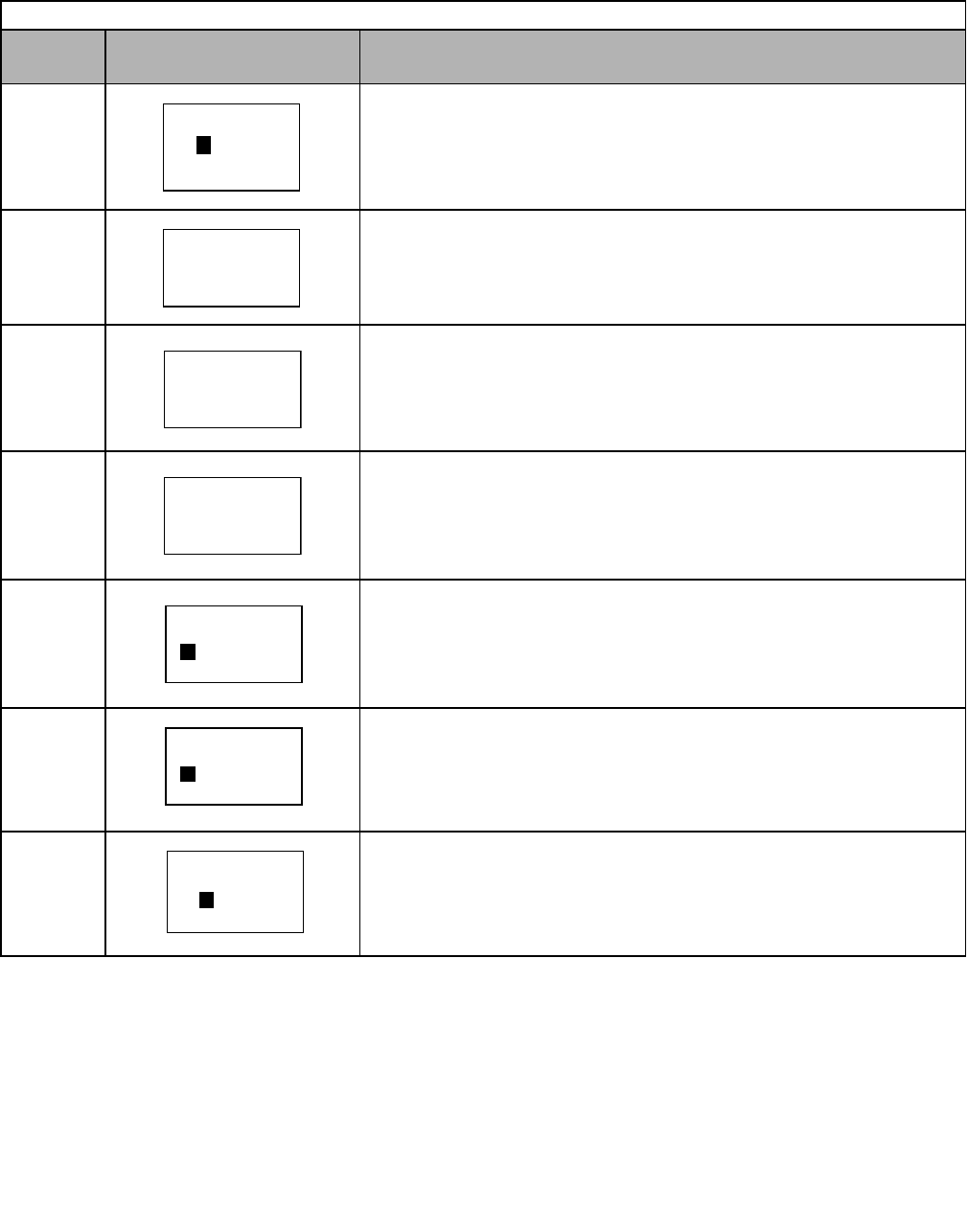
Digital Operator 3 - 15
Example of Changing a Parameter
Table 3.14 provides an example of how to change parameter “C1-02” (Deceleration Time 1) from 30 seconds to 40 seconds.
Table 3.14 Changing a Parameter in the Programming Menu
Step
Number Digital Operator Display Description
1 The Drive is first powered up.
2 Press the MENU key to scroll to “Operation” menu.
3 Press the MENU key to scroll to “Quick Setting” menu.
4 Press the MENU key to scroll to “Programming” menu.
5 Press the DATA/ENTER key to enter “Programming” menu.
6 Press the INCREASE key until C1-01 (Accel/Decel) is displayed.
7 Press the SHIFT/RESET key to move flashing digit to the right.
-DRIVE- Rdy
Frequency Ref
U1-01= 0.00Hz
- - - - - - - - - - - - - - - - - - - -
U1-02= 0.00Hz
U1-03= 0.00A
-DRIVE-
** Main Menu **
- - - - - - - - - - - - - -
Operation
-QUICK-
** Main Menu **
- - - - - - - - - - - - - -
Quick Setting
-ADV-
** Main Menu **
- - - - - - - - - - - - - -
Programming
-ADV-
Initialization
- - - - - - - - - - - - - - - - - - - -
A1-01= 0
Select Language
-ADV-
Accel/Decel
- - - - - - - - - - - - - - - - - - - -
C1-01= 1.0sec
Accel Time 1
-ADV-
Accel Time 1
- - - - - - - - - - - - - - - - - - - -
C1-01= 30.0sec
(0.0~6000.0)
“30.0sec”
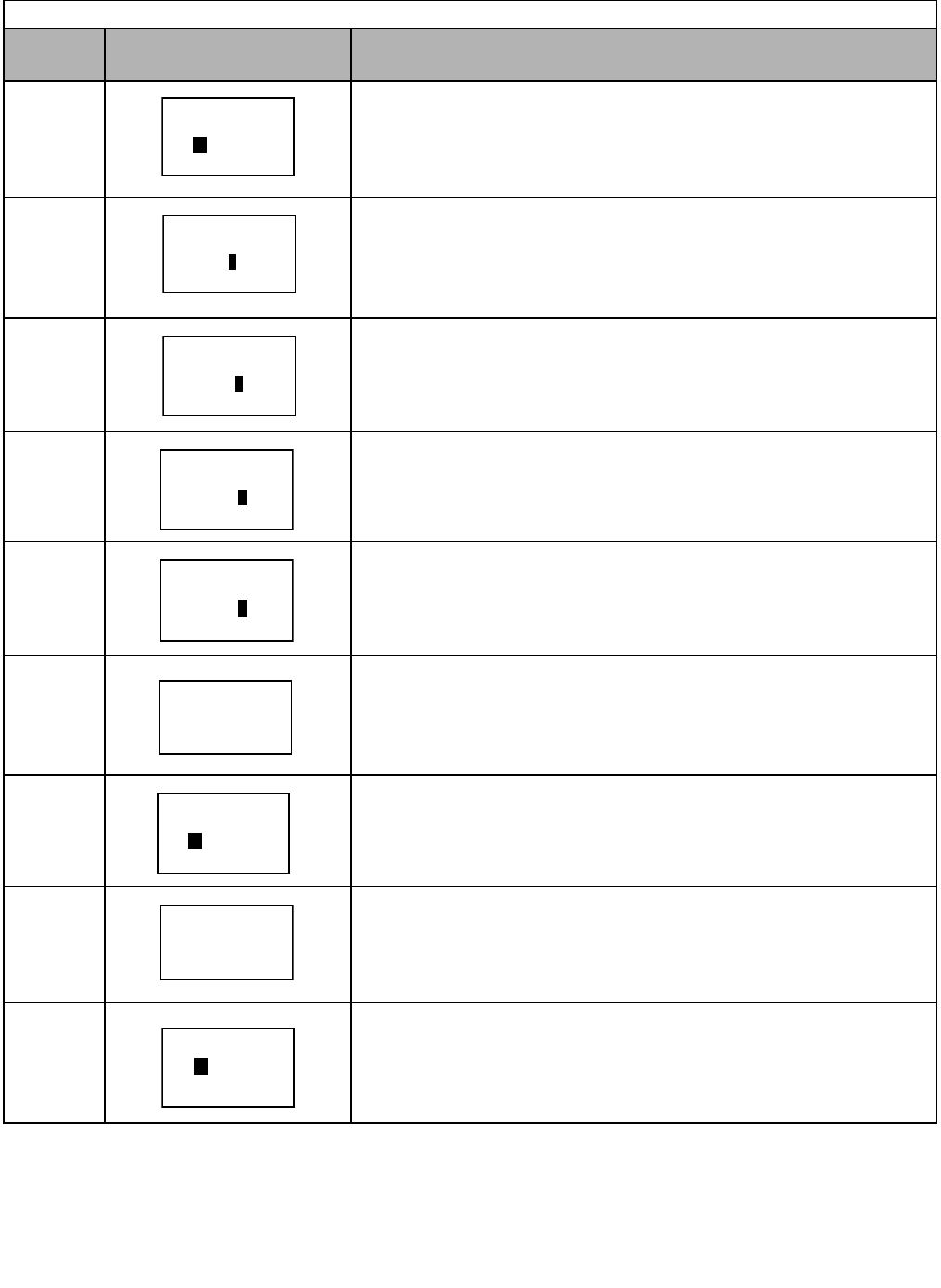
Digital Operator 3 - 16
Table 3.14 Changing a Parameter in the Programming Menu (continued)
Step
Number Digital Operator Display Description
8 Press the INCREASE key to display C1-02 (Decel Time 1).
9 Press the DATA/ENTER key to access setting display.
10 Press the SHIFT/RESET key to move the flashing digit to the right.
11 Press the SHIFT/RESET key to move the flashing digit to the right.
12 Press the INCREASE key to increase the set data.
13 Press the DATA/ENTER key to enter the set data. “Entry Accepted” is displayed for
1.0 sec after the data setting has been confirmed.
14 The screen returns to the C1-02 display.
15 Press the MENU key to scroll to “Operation” menu.
16 Press the DATA/ENTER key to enter “Operation” menu.
-ADV-
Decel Time 1
- - - - - - - - - - - - - - - - - - - -
C1-02= 30.0sec
(0.0~6000.0)
“30.0sec”
-ADV-
Decel Time 1
- - - - - - - - - - - - - - - - - - - -
C1-02= 0030.0sec
(0.0~6000.0)
“30.0sec”
-ADV-
Decel Time 1
- - - - - - - - - - - - - - - - - - - -
C1-02= 0030.0sec
(0.0~6000.0)
“30.0sec”
-ADV-
Decel Time 1
- - - - - - - - - - - - - - - - - - - -
C1-02= 0030.0sec
(0.0~6000.0)
“30.0sec”
-ADV-
Decel Time 1
- - - - - - - - - - - - - - - - - - - -
C1-02= 0040.0sec
(0.0~6000.0)
“30.0sec”
-ADV-
Entry Accepted
-ADV-
Decel Time 1
- - - - - - - - - - - - - - - - - - - -
C1-02= 30.0sec
(0.0~6000.0)
“30.0sec”
4
-DRIVE-
** Main Menu **
- - - - - - - - - - - - - -
Operation
-DRIVE- Rdy
Frequency Ref
U1-01= 0.00Hz
- - - - - - - - - - - - - - - - - - - -
U1-02= 0.00Hz
U1-03= 0.00
A
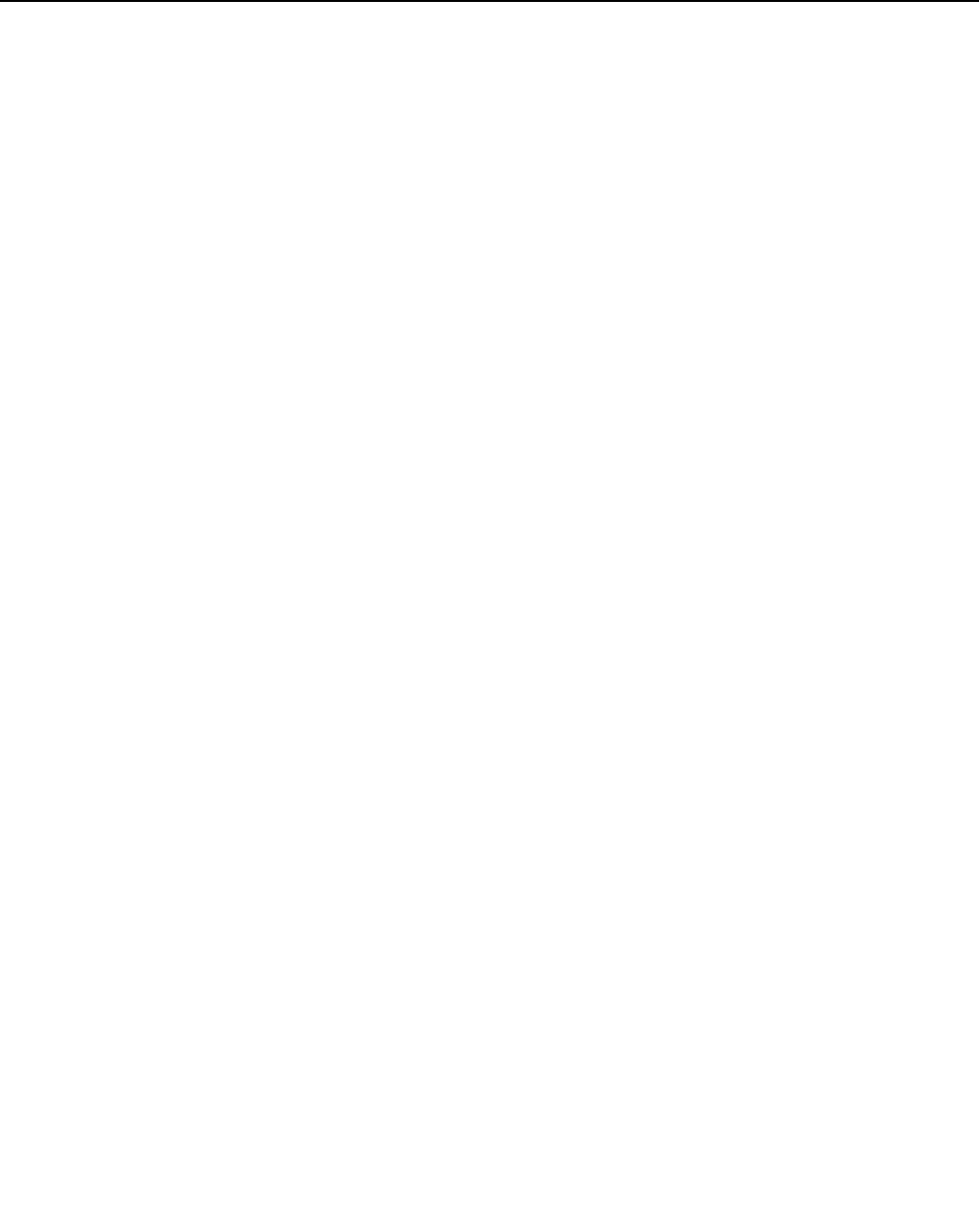
Start-Up 4 - 1
Chapter 4
Start-Up
This chapter describes the procedures to prepare the Drive for start-up and the
procedures to conduct a Drive start-up.
Drive Start-Up Preparation................................................ 4-2
Drive Start-Up Procedures ................................................ 4-5
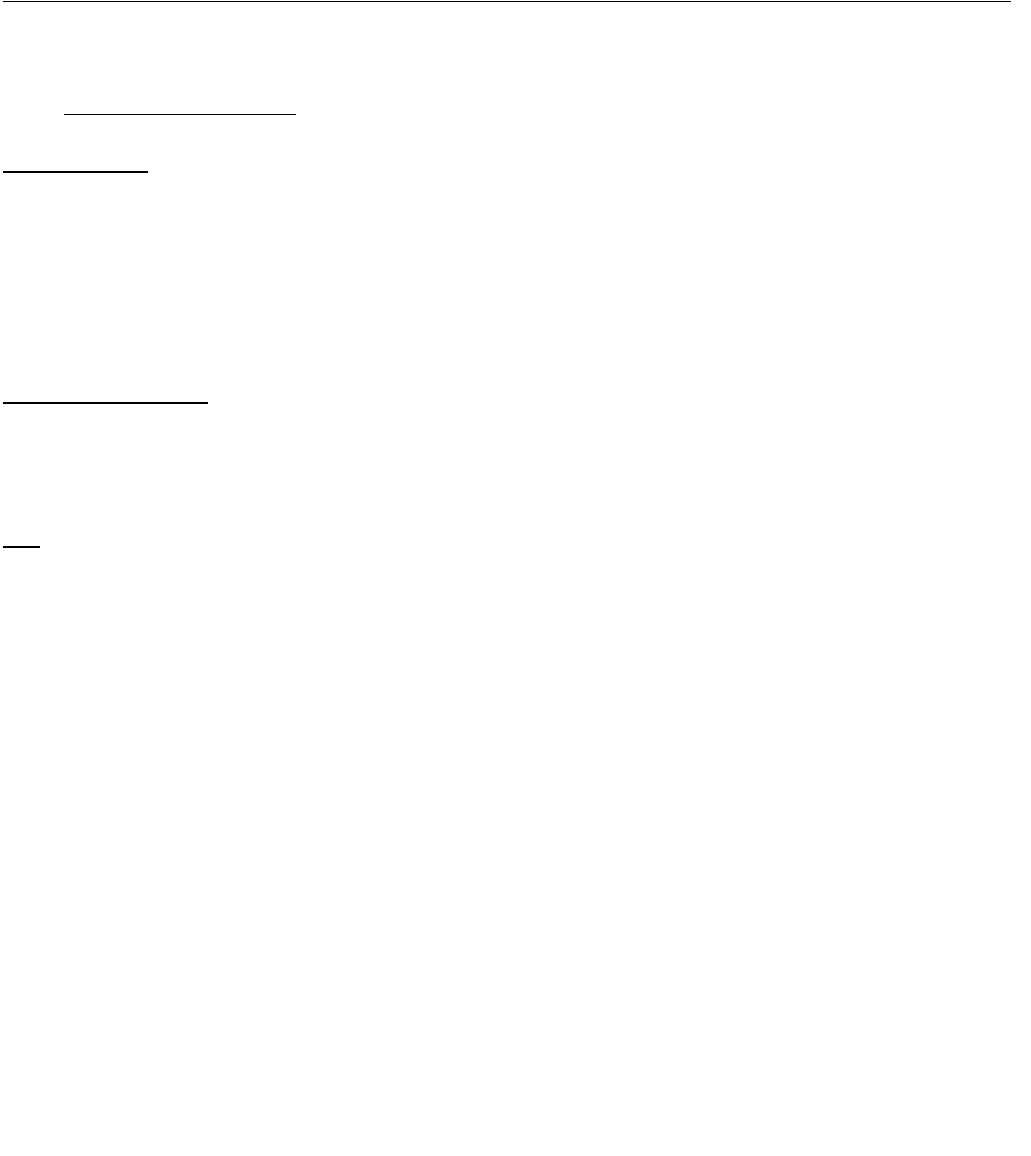
Start-Up 4 - 2
Drive Start-Up Preparation
In order to provide the most reliable Drive available and to avoid any extra costs related to loss or reduction of warranty
coverage, an authorized Yaskawa service representative should complete this start-up procedure. Please complete the
following checklist and maintain it in a secure location as technical service personnel may request information from this
checklist.
Drive Start-Up Preparation
Date:
Start-Up Person:
Company Name: _________________________________ Start-Up Location: _________________________________
Sales Order #: ___________________________________ Serial #: ________________________________________
Printed Name: ___________________________________ Drive Location: ___________________________________
Phone #: _______________________________________ Signature: ________________________________________
Owners Representative:
Printed Name: ___________________________________ Phone #: _________________________________________
Company: ______________________________________ Signature: ________________________________________
Step
1. The Drive is thoroughly tested at the factory. The start-up person should verify that the Drive is free of shipping and
installation damage. Shipping damage is not covered by the Yaskawa warranty. Claims must be filed with the
shipping company as soon as possible for any potential recovery via insurance.
2. Review the F7 User Manual (TM.F7.01) shipped with the Drive.
3. Verify that the model number and voltage ratings in the purchase order match the nameplate data for each unit.
4. Location of the Drive is important to achieve proper performance and normal operating life. The unit should be
installed in an area where it is protected from:
Direct sunlight, rain or moisture
Corrosive gases or liquids
Vibration, airborne dust or metallic particles
5. Ensure the Drive is on a vertical surface with adequate space for air circulation (4.75” above and below, 1.2” on each
side). Refer to Fig 1-8.
6. Verify that the proper branch circuit protection is installed in front of the Drive. Refer to Appendix E - Peripheral
Devices for proper input fuse or circuit breaker sizing.
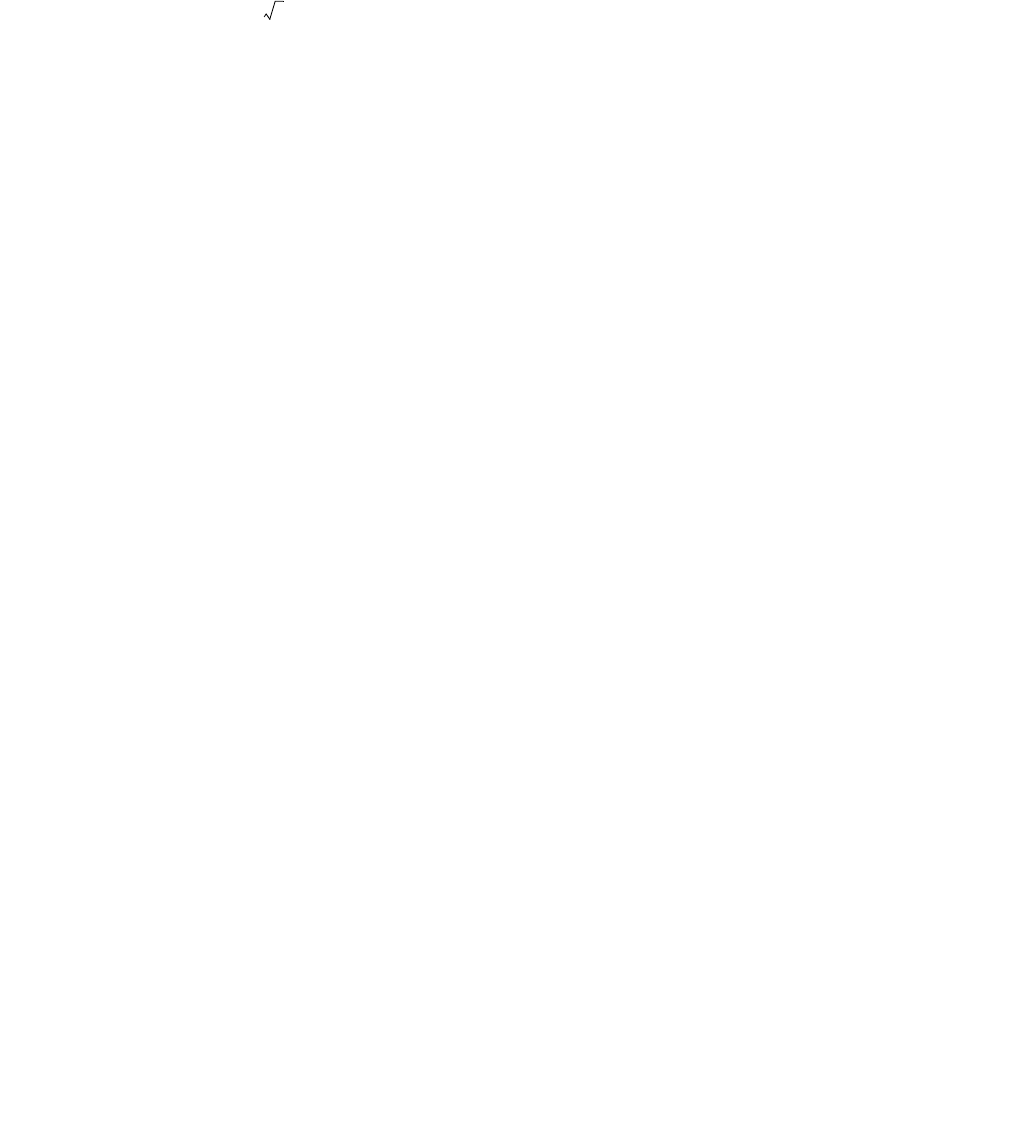
Start-Up 4 - 3
7. Avoid running input and output wiring in the same conduit.
8. Avoid routing power wiring near equipment sensitive to electrical noise.
9. Never allow wire leads to touch metal surfaces. Short-circuit may result.
10. Never connect AC main power to output terminals U/T1, V/T2 and W/T3.
11. Never connect power factor correction capacitors or noise filters to the Drive output.
12. Use 600Vac vinyl-sheathed wire or equivalent. Wire size should be determined considering voltage drop of leads.
Line voltage drop (V) = x wire resistance (Ω/km) x wire length (m) x current (A) x 10-3
13. It is recommended that the motor lead length not exceed 164 feet (50 meters) and motor wiring be run in a separate
conduit from the power wiring. If lead length must exceed this distance, reduce the carrier frequency (See Table 2.7)
and consult Yaskawa toll free at 1-800-YASKAWA (927-5292) for other motor protection measures.
14. Signal and control leads must be separated from main circuit leads (R/L1, S/L2, T/L3, U/T1, V/T2, W/T3).
15. Determine proper wire size for power and motor leads. Refer to Tables 2.1 and 2.2 for details.
16. Review proper ground connections for the Drive. Refer to Chapter 2 – Electrical Installation for details. The Drive
must be solidly grounded using the main circuit ground terminal. Ground resistance should be less than 100Ω for a
208-240Vac Drive. Ground resistance should be less than 10Ω for a 480Vac Drive. Select wire size suitable for the
size of terminal screw. Make the length as short as possible. Never ground the Drive in common with welding
machines, other motors, or other large-current electrical equipment. Where several Drives are used, ground each
Drive directly or daisy-chain to the ground pole(s). DO NOT FORM A LOOP WITH THE GROUND LEADS.
See Fig 2.4.
17. Review terminal functions of signal and control circuits. Refer to Table 2.11.
18. Verify if any customer safety devices are required (e.g. firestat, freezestat, high static pressure).
19. Record the following motor nameplate information:
Motor Rated Power (KW): _________Voltage: _______________Full Load Amps: ________________
Rated Frequency:________________ Number of Poles: ________Rated Speed (RPM): _____________
20. Verify that the commercial power supply is within the rated Drive input voltage:
Power Supply: ____________________VAC Drive Input Voltage: _____________________VAC
21. Verify that the leads in the 3-Phase electric motor conduit box are configured for the proper voltage.
22. Ensure Motor Rated Current is less than or equal to Drive Output Amps. If multiple motors are being used, make sure
that the Motor Rated Current sum is less than or equal to Drive Output Amp rating. Please note that if multiple
motors are being operated from one Drive, each motor must have its own overload and short circuit protection.
23. Wire all necessary input power leads to the Drive. DO NOT CONNECT MOTOR TO DRIVE YET.
24. Wire all necessary ground wires to the Drive.
25. Wire all necessary control wires to the Drive.
26. Ensure that the power leads are connected to the R/L1, S/L2 and T/L3 terminals in the Drive.
3
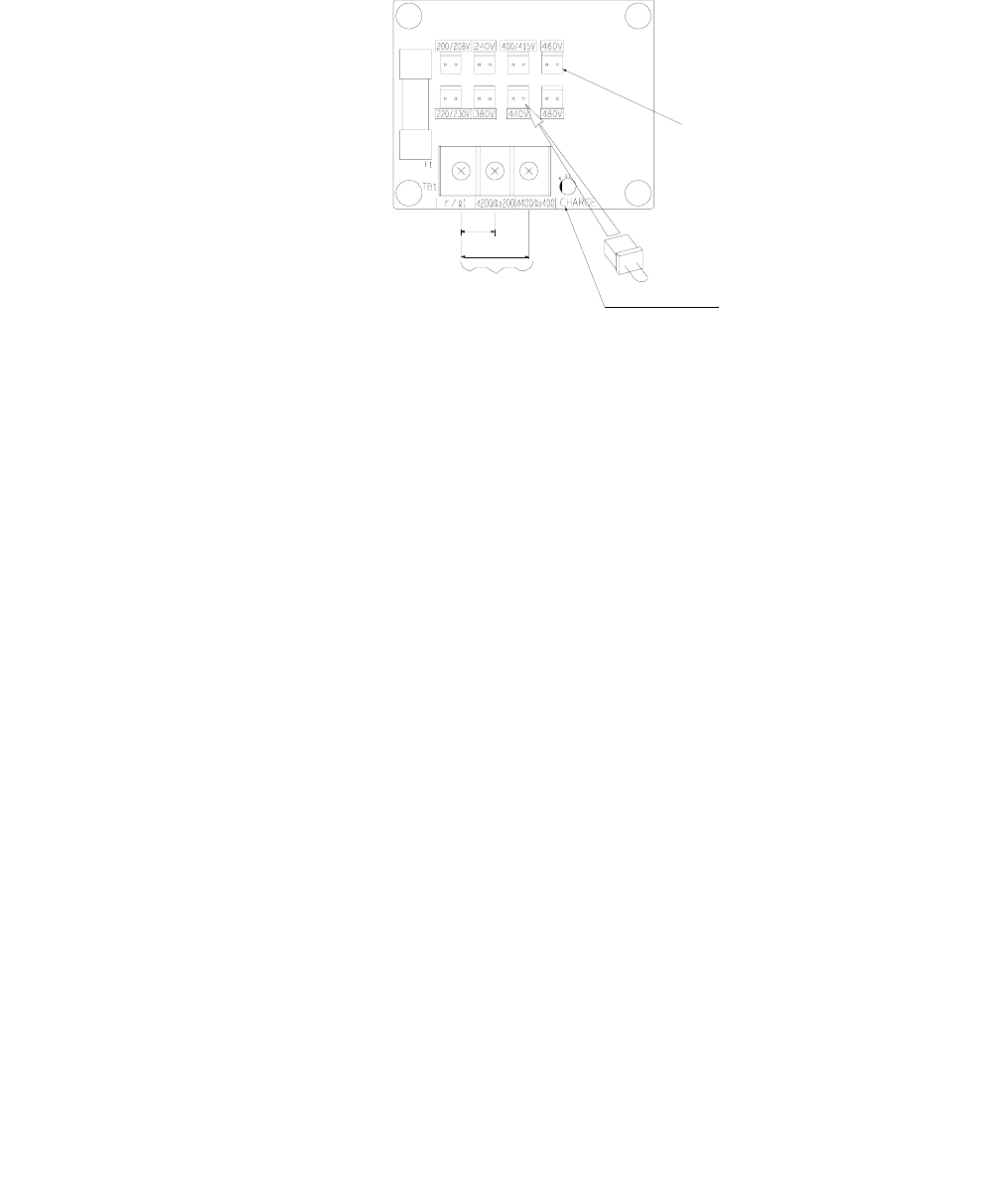
Start-Up 4 - 4
27. Tighten all of the three-phase power and ground connections. Please check that all control and signal terminations
are tight.
28. For Drive models F7U4075 thru F7U4300, set the power supply voltage jumper. Insert the jumper into the voltage
connector nearest to the actual power supply voltage. The jumper is factory-set to 460Vac when shipped. Be sure the
power is off and the CHARGE indicator is gone out before changing the jumper setting.
Figure 4.1 Power Supply Voltage Jumper
29. Inspect the control circuit connections (including the shield) and determine if a motor “safety circuit” is connected.
If normally closed, these contacts may be wired in series with the RUN command contacts, which are between
terminals S1 and SN of the Drive. No special programming is required. Refer to Chapter 2 – Electrical Installation
(Fig 2.10). Alternately, these contacts could be wired between terminals S3 and SN as External Fault Inputs, and
may be either normally closed or normally open contacts.
30. Inspect any option cards for proper installation and wiring. Refer to Chapter 2 - Option Cards.
31. If Braking Resistors and/or Braking Transistor Units are used, check the terminal connections. Refer to Chapter 2 -
Braking Resistors.
32. If a contactor is used between the Drive and motor, wire the contactor so that the Drive controls the pull-in and drop-
out of the contactor. Use the “Run” multi-function output and necessary auxiliary circuitry to energize the contactor
coil. Consult the factory for wiring details.
33. Record any other connections to the Drive using the blank terminal connection drawing in Chapter 2 – Electrical
Installation (Fig 2.13) to determine if special programming is required for the following: (refer to Appendix A).
Multi-function Inputs, Outputs, Digital Inputs, and Analog Outputs
Serial Communications
THIS COMPLETES THE DRIVE START-UP PREPARATION.
Power tab
Jumper (factory-set position)
CHARGE indicator
200V class power supply
400V class power supply
Power supply
input terminals
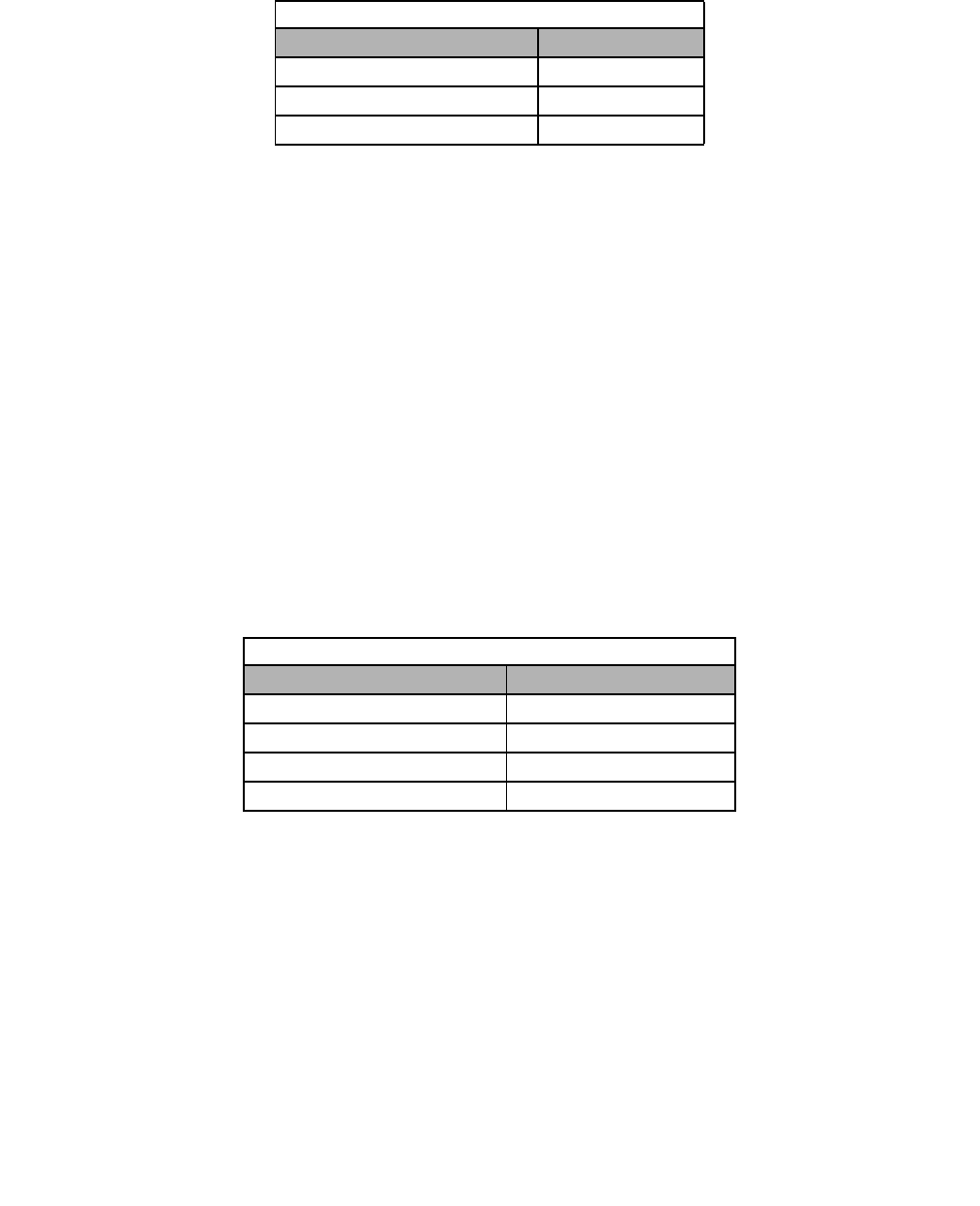
Start-Up 4 - 5
Drive Start-Up Procedures
1. Confirm that all three phases are present and that the input voltage is correct for the Drive being set up.
Measure the voltage on the line side of the Drive’s Molded Case Circuit Breaker/disconnect and record below.
2. If the voltage level is within the Drive’s specification, APPLY POWER to energize the Drive. The STOP, AUTO
SEQ and AUTO REF indicators should be lit on the keypad.
3. REMOVE POWER from the Drive. Wait for the Red CHARGE LED (near the power terminals)
to go out.
4. Connect the motor leads to the Drive at terminals U/T1, V/T2 and W/T3.
5. APPLY POWER to the Drive.
6. Determine the proper control method for the application: V/F Control, V/F with PG Control, Open Loop Vector, or
Flux Vector Control.
7. If the selected control method requires a PG encoder on the motor (V/F with PG Control and Flux Vector Control),
verify that the proper PG card is installed in the Drive and that all encoder wiring is correct. Check the line driver type
(8830, 88C30), output levels, quadrature (A+, A-, B+, B-, etc.), and encoder PPR (pulses per revolution). Refer to
Chapter 2 - Electrical Installation for details.
8. Proceed to the correct Control Method Start-Up Procedure:
Table 4.1 Input Voltage Check
Measurement Location Voltage (Vac)
L1 – L2
L2 – L3
L1 – L3
Table 4.2 Control Method Start-Up Procedure
Control Method Section
V/F V/F Start-Up
V/F w/ PG Feedback V/F w/ PG Start-Up
Open Loop Vector Open Loop Vector Start-Up
Flux Vector Flux Vector Start-Up
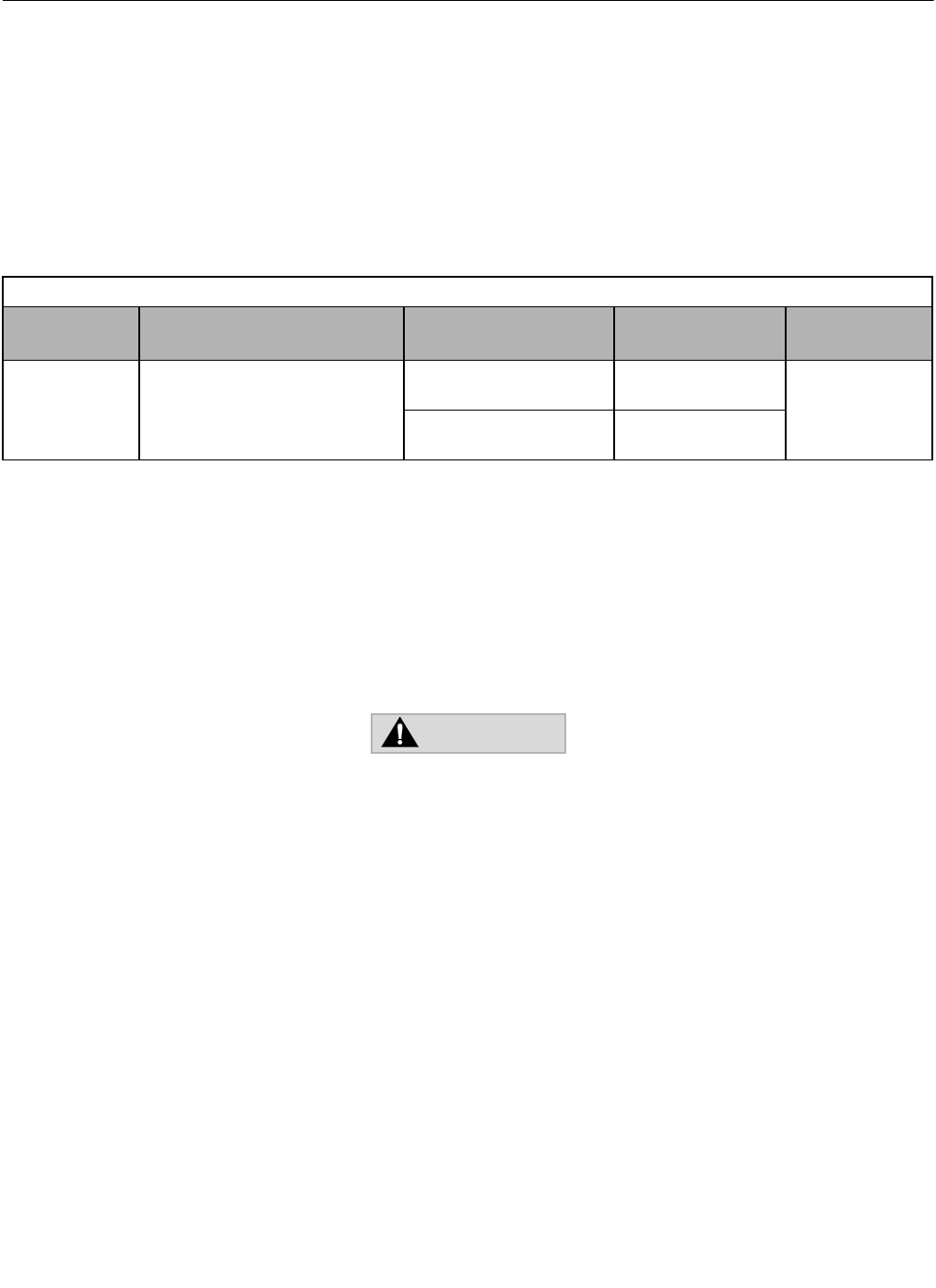
Start-Up 4 - 6
V/F Start-Up
9. Apply input power to the Drive.
10. Set the control method of the Drive to V/F Control by pressing the MENU key twice for the Quick Setting menu.
Press the ENTER key to display A1-02 “Control Method”. Use the UP and DOWN keys and the DATA/ENTER
key to set this parameter to “0: V/F Control”. Ensure the DATA/ENTER key is pressed to enter the selection in the
Drive. “Entry Accepted” will briefly appear.
11. Set the Drive input voltage measured in Step 1. In the Quick Setting menu, go to parameter E1-01 “Input Voltage”.
This parameter sets the nominal input voltage the Drive will receive.
12. Select an appropriate V/F pattern per the application. Go to parameter E1-03 “V/F Selection” and set this parameter
per the application. A standard V/F pattern for a 60Hz motor is “1: 60Hz Saturation”.
13. Set the Drive to Local control. Press the MENU key once to display the Operation menu. Then, press DATA/
ENTER to display “Frequency Reference”. Press the LOCAL/REMOTE key once. This puts the Drive in the Local
Mode, allowing run/stop and speed commands by the Digital Operator. The AUTO SEQ and AUTO REF indicators
turn off, and the FWD light turns on.
14. Check the motor rotation. Press and hold the JOG key to check motor rotation. The RUN light turns on and the
STOP light is off. “Frequency Ref” (U1-01) now displays 6.00Hz on the Digital Operator. The frequency reference
for this operation comes from parameter d1-17 “Jog Reference” with factory default setting of 6.00Hz. The motor
should ramp up to speed. If the motor rotation is incorrect, swap any two motor leads (U/T1, V/T2, W/T3) on the
Drive terminal, and repeat the motor rotation check.
15. Proceed to the Auto-Tuning section.
Table 4.3 Input Voltage Setting
Parameter
No.
Parameter Name
Digital Operator Display Setting Range Factory Setting Menu Location
E1-01 Input Voltage Setting
Input Voltage
155.0 to 255.0
(208-240Vac)
240.0
(208-240Vac) Quick Setting
or
Programming
310.0 to 510.0
(480Vac)
480.0
(480Vac)
THE NEXT KEY-PRESS WILL CAUSE THE MOTOR TO ROTATE.
TAKE APPROPRIATE PRECAUTIONS.
WARNING
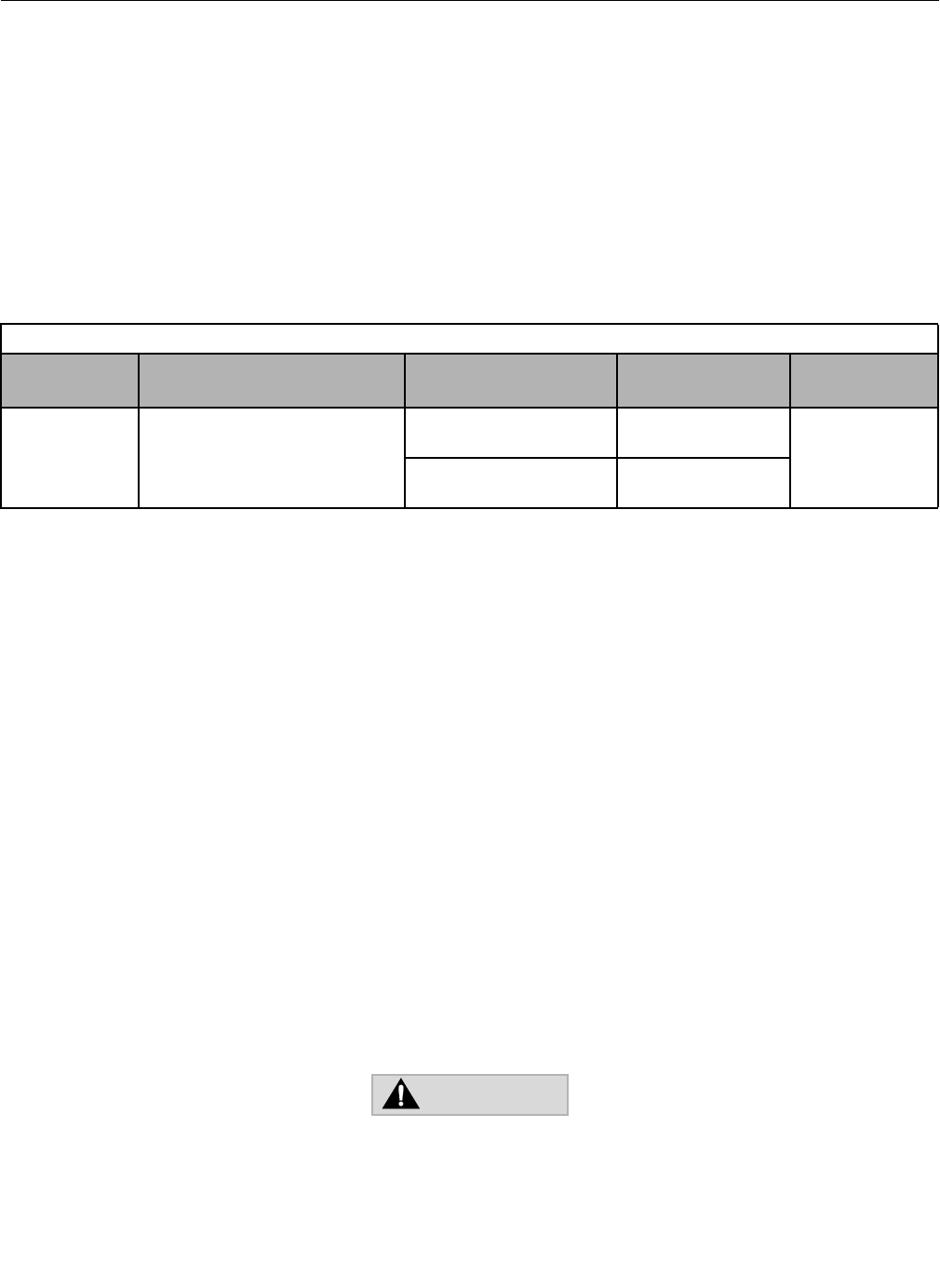
Start-Up 4 - 7
V/F w/ PG Start-Up
1-8. See Drive Start-Up Procedures on Page 4-5.
9. Apply input power to the Drive.
10. Set the control method of the Drive to V/F w/ PG Feedback Control by pressing the MENU key twice for the Quick
Setting menu. Press the ENTER key to display A1-02 “Control Method”. Use the UP and DOWN keys and the
DATA/ENTER key to set this parameter to “1: V/F w/PG Fdbk”. Ensure the DATA/ENTER key is pressed to enter
the selection in the Drive. “Entry Accepted” will briefly appear.
11. Set the Drive input voltage measured in Step 1. In the Quick Setting menu, go to parameter E1-01“Input Voltage”.
This parameter sets the nominal input voltage the Drive will receive.
12. Select an appropriate V/F pattern per the application. Press the UP key once to display parameter E1-03
“V/F Selection”. To set this parameter press the DATA/ENTER key once. Use the UP and DOWN keys and the
DATA/ENTER key to set this parameter per the application. A standard V/F pattern for a 60Hz motor is “1: 60Hz
Saturation”.
13. Set the PG Pulses/Rev of the PG (Encoder) to the correct value. In the Quick Setting menu, go to parameter F1-01
“PG Pulses/Rev”. Use the UP, DOWN, and RESET keys and the DATA/ENTER key to set the encoder PPR.
14. Display motor speed monitor U1-05 “Motor Speed” in the Operation menu.
15. Rotate the motor shaft by hand in the forward direction for the machine. A low positive speed should be displayed
(PG-B2, PG-X2, PG-W2). As the shaft is turned in reverse, a low negative speed should be displayed. If the speed
doesn’t change when the motor shaft is rotated, check the encoder wiring and connections. If the polarity is wrong,
swap A+ and A- wires (terminals 4 and 5 on the PG-X2).
16. Set the Drive to Local control. Press the MENU key once to display the Operation menu. Then, press DATA/
ENTER to display “Frequency Reference”. Press the LOCAL/REMOTE key once. This puts the Drive in the Local
Mode, allowing run/stop and speed commands by the Digital Operator. The AUTO SEQ and AUTO REF indicators
turn off, and the FWD light turns on.
17. Display monitor U1-01 “Frequency Ref” in the Operation menu.
Table 4.4 Input Voltage Setting
Parameter
No.
Parameter Name
Digital Operator Display Setting Range Factory Setting Menu Location
E1-01 Input Voltage Setting
Input Voltage
155.0 to 255.0
(208-240Vac)
240.0
(208-240Vac) Quick Setting
or
Programming
310.0 to 510.0
(480Vac)
480.0
(480Vac)
THE NEXT KEY-PRESS WILL CAUSE THE MOTOR TO ROTATE.
TAKE APPROPRIATE PRECAUTIONS.
WARNING
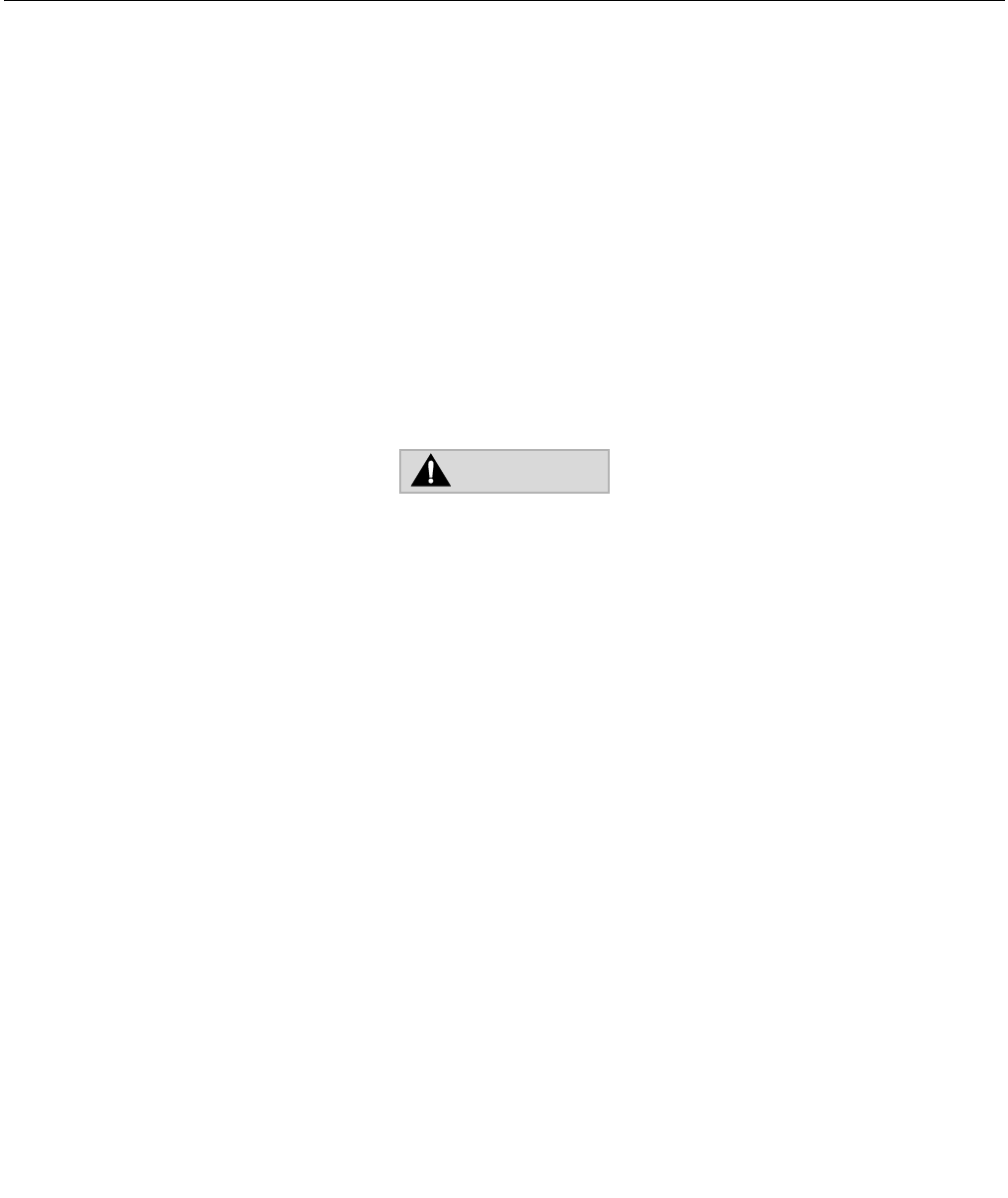
Start-Up 4 - 8
18. Check the motor rotation. Press and hold the JOG key to check motor rotation. The RUN light turns on and the
STOP light is off. U1-01 “Frequency Ref” now displays 6.00Hz on the Digital Operator. The frequency reference for
this operation comes from parameter d1-17 “Jog Reference” with factory default setting of 6.00Hz. The motor should
ramp up to speed. If the motor rotation is incorrect, swap any two motor leads (U/T1, V/T2, W/T3) on the Drive ter-
minal, and repeat the motor rotation check. The encoder phasing (polarity) may also need to be reversed.
19. Proceed to the Auto-Tuning section.
Open Loop Vector Start-Up
1-8. See Drive Start-Up Procedures on Page 4-5.
9. Apply input power to the Drive.
10. Set the control method of the Drive to Open Loop Vector Control by pressing the MENU key twice for the Quick
Setting menu. Press the ENTER key to display A1-02 “Control Method”. Use the UP and DOWN keys and the
DATA/ENTER key to set this parameter to “2: Open Loop Vector”. Ensure the DATA/ENTER key is pressed to
enter the selection in the Drive. “Entry Accepted” will briefly appear.
11. Set the Drive to Local control. Press the MENU key once to display the Operation menu. Then, press DATA/
ENTER to display “Frequency Reference”. Press the LOCAL/REMOTE key once. This puts the Drive in the Local
Mode, allowing run/stop and speed commands by the Digital Operator. The AUTO SEQ and AUTO REF indicators
turn off. The FWD light turns on.
12. Check the motor rotation. Press and hold the JOG key to check motor rotation. The RUN light turns on and the
STOP light is off. “Frequency Ref” (U1-01) now displays 6.00Hz on the Digital Operator. The frequency reference
for this operation comes from parameter d1-17 “Jog Reference” with a factory default setting of 6.00Hz. The motor
should ramp up to speed. If the motor rotation is incorrect, swap any two motor leads (U/T1, V/T2, W/T3) on the
Drive terminal, and repeat the motor rotation check.
13. Proceed to the Auto-Tuning section.
THE NEXT KEY-PRESS WILL CAUSE THE MOTOR TO ROTATE.
TAKE APPROPRIATE PRECAUTIONS.
WARNING
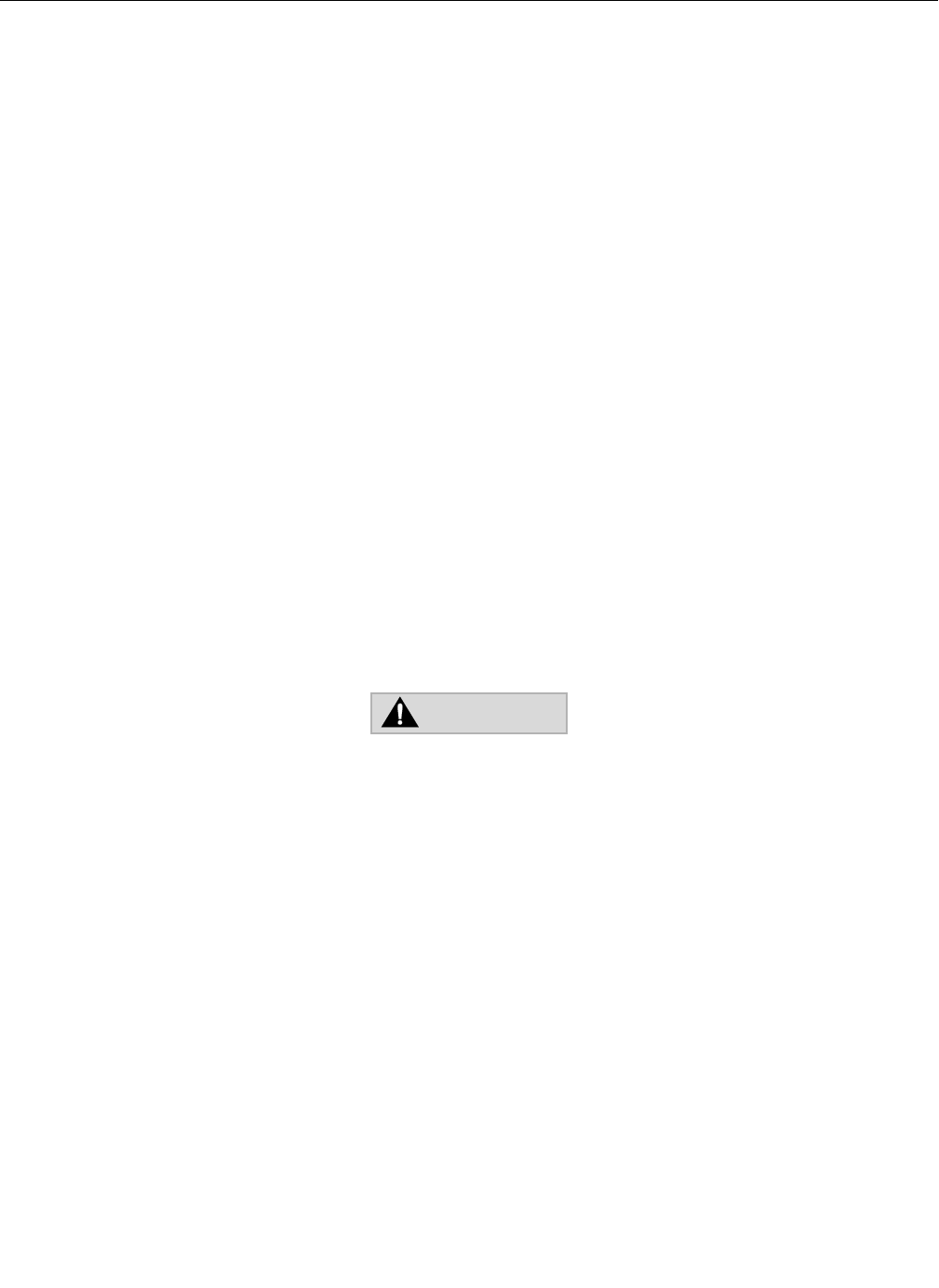
Start-Up 4 - 9
Flux Vector Start-Up
1-8. See Drive Start-Up Procedures on Page 4-5.
9. Apply input power to the Drive.
10. Set the control method of the Drive to Flux Vector Control by pressing the MENU key twice for the Quick Setting
menu. Press the ENTER key to display A1-02 “Control Method”. Use the UP and DOWN keys and the DATA/
ENTER key to set this parameter to “3: Flux Vector”. Ensure the DATA/ENTER key is pressed to enter the selection
in the Drive. “Entry Accepted” will briefly appear.
11. Set the PG Pulses/Rev of the PG (Encoder) to the correct value. In the Quick Setting menu, go to parameter F1-01
“PG Pulses/Rev”. Use the UP, DOWN, and RESET keys and the DATA/ENTER key to set the encoder PPR.
12. Display motor speed monitor U1-05 “Motor Speed” in the Operation menu.
13. Rotate the motor shaft by hand in the forward direction of the machine. A low positive speed should be displayed
(PG-B2, PG-X2, PG-W2). As the shaft is turned in reverse, a low negative speed should be displayed. If the speed
doesn’t change when the motor shaft is rotated, check the encoder wiring and connections. If the polarity is wrong,
swap A+ and A- wires (terminals 4 and 5 on the PG-X2).
14. Set the Drive to Local control. Press the MENU key once to display the Operation menu. Then, press DATA/
ENTER to display “Frequency Reference”. Press the LOCAL/REMOTE key once. This puts the Drive in the Local
Mode, allowing run/stop and speed commands by the Digital Operator. The AUTO SEQ and AUTO REF indicators
turn off, and the FWD light turns on.
15. Display monitor U1-01 “Frequency Ref” in the Operation menu.
16. Check the motor rotation. Press and hold the JOG key to check motor rotation. The RUN light turns on and the
STOP light is off. U1-01 “Frequency Ref” displays 6.00Hz on the Digital Operator. The frequency reference for this
operation comes from parameter d1-17 “Jog Reference” with a factory default setting of 6.00Hz. The motor should
ramp up to speed. If the motor rotation is incorrect, swap any two motor leads (U/T1, V/T2, W/T3) on the Drive
terminal, and repeat the motor rotation check. The encoder polarity may need to be reversed.
17. Proceed to the Auto-Tuning section.
THE NEXT KEY-PRESS WILL CAUSE THE MOTOR TO ROTATE.
TAKE APPROPRIATE PRECAUTIONS.
WARNING
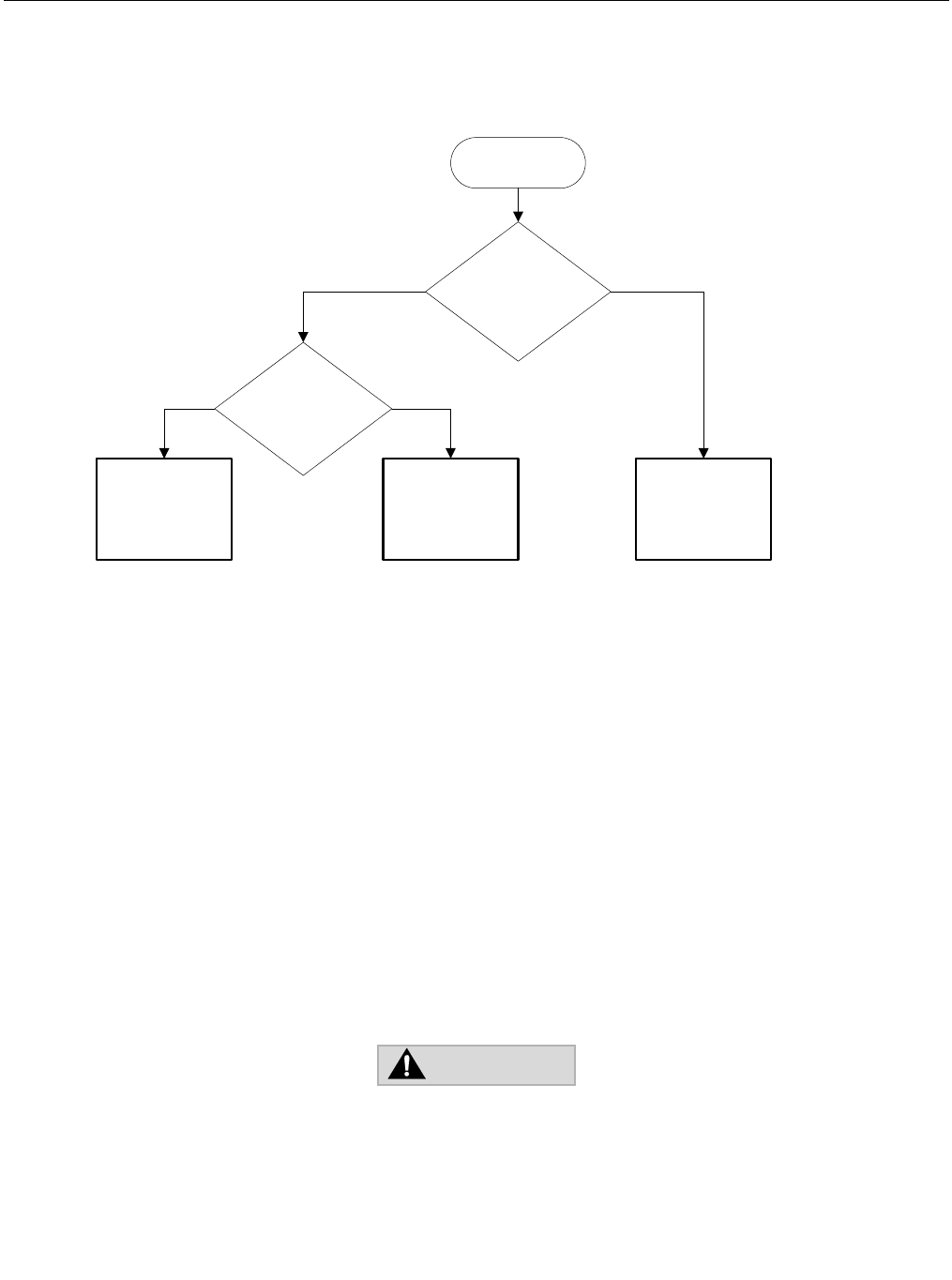
Start-Up 4 - 10
Auto-Tuning
Auto-Tuning the motor is required for optimum performance. Use the following flow chart to determine which one of the three
Auto-Tuning Mode Selections to use.
Figure 4.2 Auto-Tuning Selection Flow Chart
Note: Performing Auto-Tuning energizes the motor so that identification of key motor characteristics can be determined. Out-
put filters may affect the accurancy of the measured characteristics and/or result in drive damage. Therefore, it may be nece-
sary to remove the filters completely prior to executing the following tuning procedure. Consult the factory with questions
regarding filter compatibility.
Standard Tuning
Always use Standard Tuning (rotational) when operating in Open Loop Vector or Flux Vector (A1-02 = 2 or 3) and it is possi-
ble to run the motor uncoupled from the load.
1. Select the Auto-Tuning Menu. Then, select “Standard Tuning” in the “Tuning Mode Sel” parameter (T1-01 = 0).
2. Set the motor output power (T1-02), motor rated voltage (T1-03), motor rated current (T1-04), motor base frequency
(T1-05), number of motor poles (T1-06), motor rated speed (T1-07) obtained from the motor nameplate information.
If the Control Method is Flux Vector (A1-02 = 3), be sure to set the encoder pulses per revolution (PPR) (T1-08).
After entering all of the motor parameters press the UP key to display “0Hz/ 0.00A Tuning Ready?”.
START
Use "Tune - No
Rotate"
(T1-01 = 1)
Use "Standard
Tuning"
(T1-01 = 0)
Use "Term
Resistance"
(T1-01 = 2)
Open-loop Vector
or
Flux Vector
V/F Control
or
V/F w/PG Fdbk
NO YES
NO YES
V/F Control Method
(A1-02 = 0 or 1)?
Motor is uncoupled
from the load?
THE NEXT KEY-PRESS WILL CAUSE THE MOTOR TO ROTATE.
TAKE APPROPRIATE PRECAUTIONS.
WARNING

Start-Up 4 - 11
3. Confirm that the motor is uncoupled from the load and make sure it is safe to rotate the motor. Press the RUN key to
start Auto-Tuning. The Drive will energize the motor without rotating it for approximately 1 minute. Then, the Drive
will set the required motor parameters automatically while rotating the motor for approximately 1 minute. If the
Auto-Tuning was successful, the operator keypad will display “Tune Successful”.
4. Proceed to the Quick Setting Parameters section.
No Rotate Tuning
Use No Rotate Tuning when operating in Open Loop Vector or Flux Vector control (A1-02 = 2 or 3) and it is impossible to
uncouple the load from the motor.
1. Select the Auto-Tuning Menu. Then, select “Tune-No Rotate” in the “Tuning Mode Sel” parameter (T1-01 = 1).
2. Set the motor output power (T1-02), motor rated voltage (T1-03), motor rated current (T1-04), motor base frequency
(T1-05), number of motor poles (T1-06), and motor rated speed (T1-07) obtained from the motor nameplate
information. After entering all of the motor parameters press the UP key to display “0Hz/0.00A Tuning Ready?”.
3. Press the RUN key to start Auto-Tuning. The Drive will set the required motor parameters automatically while
energizing the motor (without rotation) for approximately 1 minute. If the Auto-Tuning is successful, the operator
keypad will display “Tune Successful”.
4. Proceed to the Quick Setting Parameters section.
Terminal Resistance Tuning
Terminal Resistance Tuning is the only Auto-Tuning method available when using V/F or V/F w/ Feedback control
(A1-02 = 0 or 1).
1. Select the Auto-Tuning Menu. Then, select “Term Resistance” in the “Tuning Mode Sel” parameter (T1-01 = 2).
2. Set the motor output power (T1-02) and motor rated current (T1-04) obtained from the motor nameplate information.
After entering all of the motor parameters press the UP key to display “0Hz/ 0.00A Tuning Ready?”.
3. Press the RUN key to start Auto-Tuning. The Drive will set the required motor parameter automatically while
energizing the motor (without rotation) for approximately 30 seconds. If the Auto-Tuning is successful, the Digital
Operator keypad will display “Tune Successful”.
4. Proceed to the Quick Setting Parameters section.
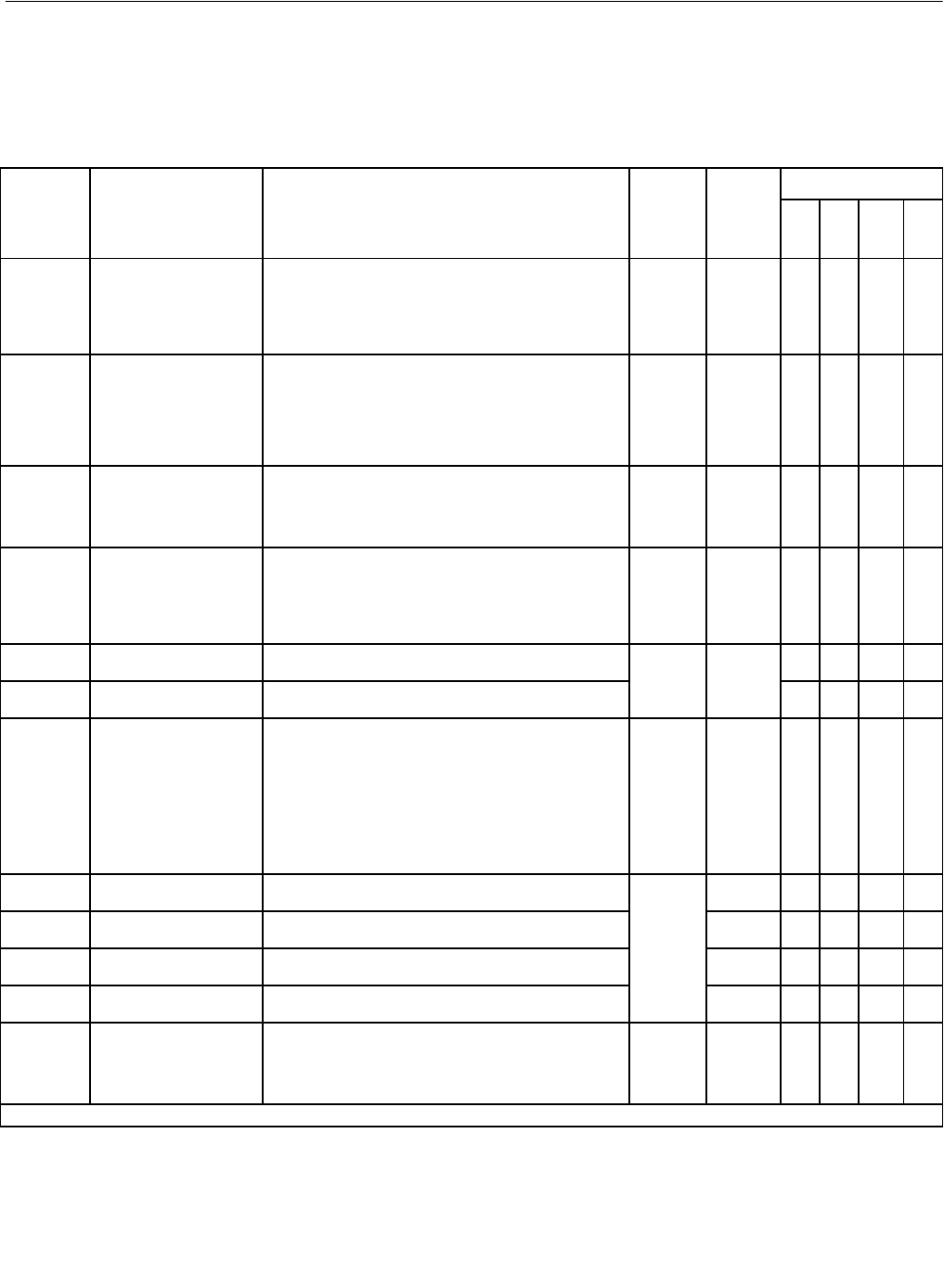
Start-Up 4 - 12
Quick Setting Parameters
The following Drive parameters located in the Quick Setting menu need to be set according to the application. Refer to
Chapter 5 Basic Programming section for more details on each parameter.
Note: Not all parameters are available for all Control Methods. See Control Method column.
Parameter
No. Parameter Name
Digital Operator Display Description Setting
Range
Factory
Setting
Control Method
V/F V/F
w/
PG OLV FV
A1-02 Control Method Selection
Control Method
Selects the Control Method of the Drive.
0: V/F control without PG
1: V/F control with PG
2: Open Loop Vector
3: Flux Vector (Closed Loop Vector)
0 to 3 0 Q Q Q Q
b1-01 Frequency Reference
Selection
Reference Source
Selects the frequency reference input source.
0: Operator - Digital preset speed U1-01 or d1-01 to d1-17.
1: Terminals - Analog Input Terminal A1 (Terminal A2 sums
together with terminal A1 when H3-09=0)
2: Serial Com - Modbus RS-422/485 terminals R+, R-, S+ and S-
3: Option PCB - Option board connected on 2CN
4: Pulse Input
0 to 4 1 Q Q Q Q
b1-02 Run Command Selection
Run Source
Selects the run command input source.
0: Operator - RUN and STOP keys on Digital Operator
1: Terminals - Contact closure on terminals S1 or S2
2: Serial Com - Modbus RS-422/485 terminals R+, R-, S+ and S-
3: Option PCB - Option board connected on 2CN
0 to 3 1 Q Q Q Q
b1-03 Stopping Method Selection
Stopping Method
Selects the stopping method when the run command is removed.
0: Ramp to Stop
1: Coast to Stop
2: DC Injection to Stop
3: Coast with Timer (A new run command is ignored if input
before the timer expires.)
0 to 3 0 Q Q Q Q
C1-01
Acceleration Time 1
Accel Time 1 Sets the time to accelerate from zero to maximum frequency
(E1-04). 0.0
to
6000.0 10.0sec QQ Q Q
C1-02
Deceleration Time 1
Decel Time 1 Sets the time to decelerate from maximum frequency to zero
(E1-04). QQ Q Q
C6-02 Carrier Frequency Selection
CarrierFreq Sel
Selects the number of pulses per second of the output voltage
waveform. Setting range determined by C6-01 setting.
0: Low noise
1: Fc = 2.0 kHz
2: Fc = 5.0 kHz
3: Fc = 8.0 kHz
4: Fc = 10.0 kHz
5: Fc = 12.5 kHz
6: Fc = 15.0 kHz
F: Program (Determined by the settings of C6-03 thru C6-05)
Va ri es
by
kVA
Va ri es
by
kVA QQ Q Q
d1-01
Frequency Reference 1
Reference 1 Setting units are affected by o1-03.
0.00
to
E1-04
Value
0.00Hz Q Q Q Q
d1-02
Frequency Reference 2
Reference 2 Frequency reference when multi-function input “Multi-step speed
reference 1” is ON. Setting units are affected by o1-03. 0.00Hz Q Q Q Q
d1-03
Frequency Reference 3
Reference 3 Frequency reference when multi-function input “Multi-step speed
reference 2” is ON. Setting units are affected by o1-03. 0.00Hz Q Q Q Q
d1-04
Frequency Reference 4
Reference 4 Frequency reference when multi-function input “Multi-step speed
reference 1,2” is ON. Setting units are affected by o1-03. 0.00Hz Q Q Q Q
d1-17
Jog Frequency Reference
Jog Reference
Frequency reference when:
“Jog Frequency Reference”, “Forward Jog”, or “Reverse Jog” is
selected via multi-function input terminals or JOG key is pressed
on the operator keypad. Jog reference has priority over frequency
reference 1 to 4. Setting units are affected by o1-03.
6.00Hz Q Q Q Q
Denotes that parameter can be changed when the Drive is running.
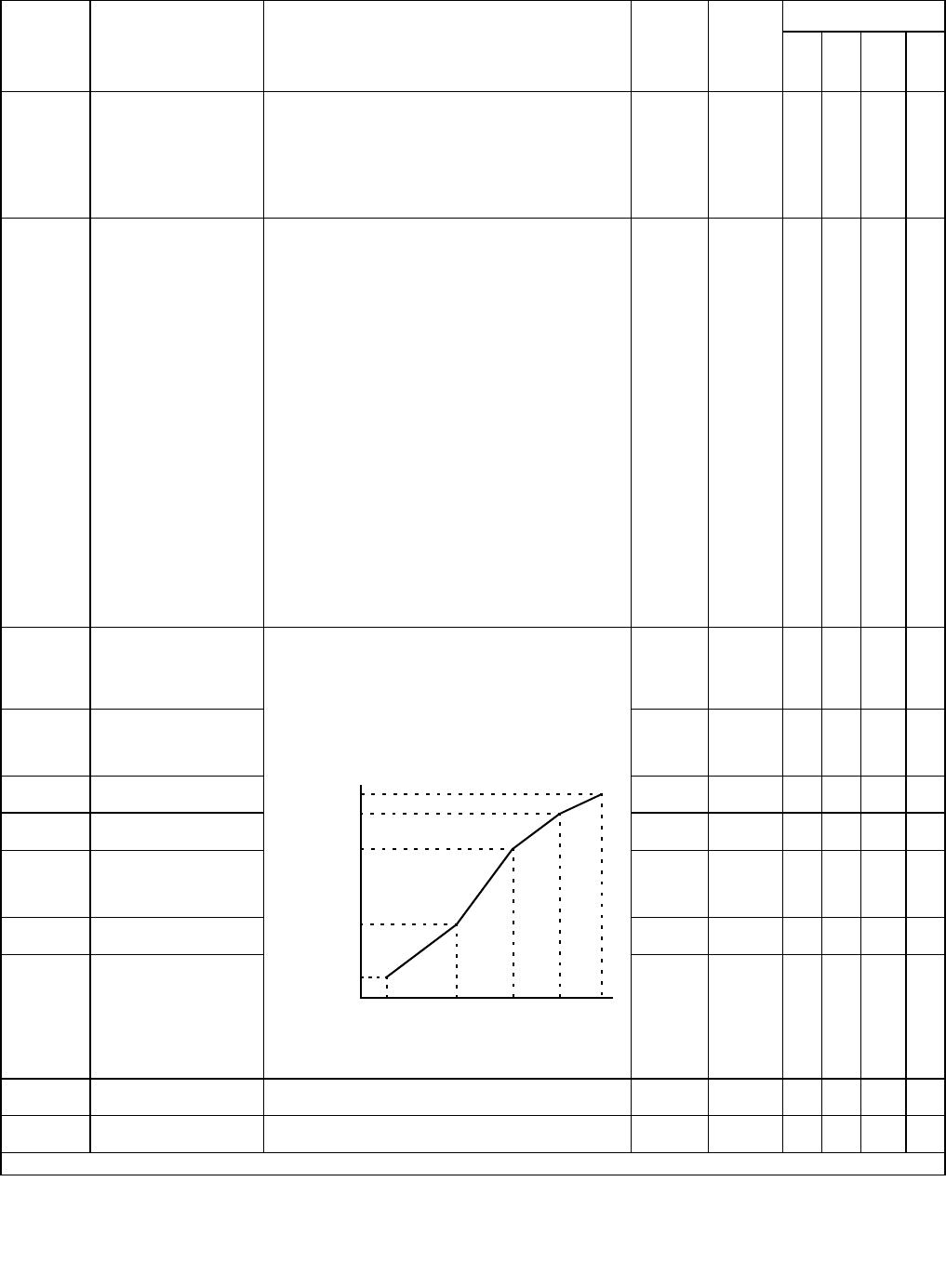
Start-Up 4 - 13
Parameter
No. Parameter Name
Digital Operator Display Description Setting
Range
Factory
Setting
Control Method
V/F V/F
w/
PG OLV FV
E1-01 Input Voltage Setting
Input Voltage
Set to the nominal voltage of the incoming line, sets maximum/
base voltage used by preset V/F patterns (E1-03 = 0 to E), adjusts
the levels of Drive protective features (i.e. Overvoltage, braking
resistor turn-on, stall prevention, etc.).
155 to
255.0
(240V)
310 to
510.0
(480V)
240V
480V QQ Q Q
E1-03 V/F Pattern Selection
V/F Selection
Set to the type of motor being used and the type of application.
The Drive operates utilizing a set V/F pattern to determine the
appropriate output voltage level for each commanded speed. There
are 15 different preset V/F patterns to select from (E1-03 = 0 to E)
with varying voltage profiles, base levels (base level = frequency
at which maximum voltage is reached), and maximum frequencies.
There are also settings for Custom V/F patterns that will use the
settings of parameters E1-04 through E1-13. E1-03 = F selects a
custom V/F pattern with an upper voltage limit and E1-03 = FF selects
a custom V/F pattern without an upper voltage limit.
0: 50Hz
1: 60Hz
2: 60Hz (50Hz Base)
3: 72Hz (60Hz Base)
4: 50Hz VT1
5: 50Hz VT2
6: 60Hz VT1
7: 60Hz VT2
8: 50Hz HST1
9: 50Hz HST2
A: 60Hz HST1
B: 60Hz HST2
C: 90Hz (60Hz Base)
D: 120Hz (60Hz Base)
E: 180Hz (60Hz Base)
F: Custom V/F
FF:Custom w/o limit
0 to FF F Q Q - -
E1-04 Maximum Output Frequency
Max Frequency
These parameters are only applicable when V/F Pattern Selection
is set to Custom (E1-03 = F or FF). To set V/F characteristics in a
straight line, set the same values for E1-07 and E1-09. In this case,
the setting for E1-08 will be disregarded. Always ensure that the
four frequencies are set in the following manner:
E1-04 ≥ E1-12 ≥ E1-06 > E1-07 ≥ E1-09
E2-04 is automatically set during Auto-Tuning.
HD: 40.0
to 300.0
ND2: 40.0
to 400.0
60.0Hz Q Q Q Q
E1-05 Maximum Output Voltage
Max Voltage
0 to 255.0
(240V)
0 to 510.0
(480V)
240V
480V QQ Q Q
E1-06 Base Frequency
Base Frequency 0.0 to
200.0 60.0Hz Q Q Q Q
E1-09 Minimum Output Frequency
Min Frequency 0.0 to
200.0 1.5Hz Q Q Q A
E1-13 Base Voltage
Base Voltage
0 to 255.0
(240V)
0 to 510.0
(480V)
0.0VAC A A Q Q
E2-01 Motor Rated Current
Motor Rated FLA Varies by
kVA Varies by
kVA QQ Q Q
E2-04 Number of Motor Poles
Number of Poles 2 to 48 4 - Q - Q
E2-11 Motor Rated Output
Motor Rated Power Set to the motor rated power in KW.
This value is automatically set during Auto-Tuning. 0.00 to
650.00 Varies by
kVA QQ Q Q
F1-01 PG Parameter
PG Pulse/Rev Sets the number of pulses per revolution of the encoder (pulse
generator). This value is automatically set during Auto-Tuning. 0 to 60000 1024 - Q - Q
Denotes that parameter can be changed when the Drive is running.
Output voltage (V)
Frequency (Hz)
E1-09 E1-07 E1-06 E1-11 E1-04
E1-05
E1-12
E1-13
E1-08
E1-10
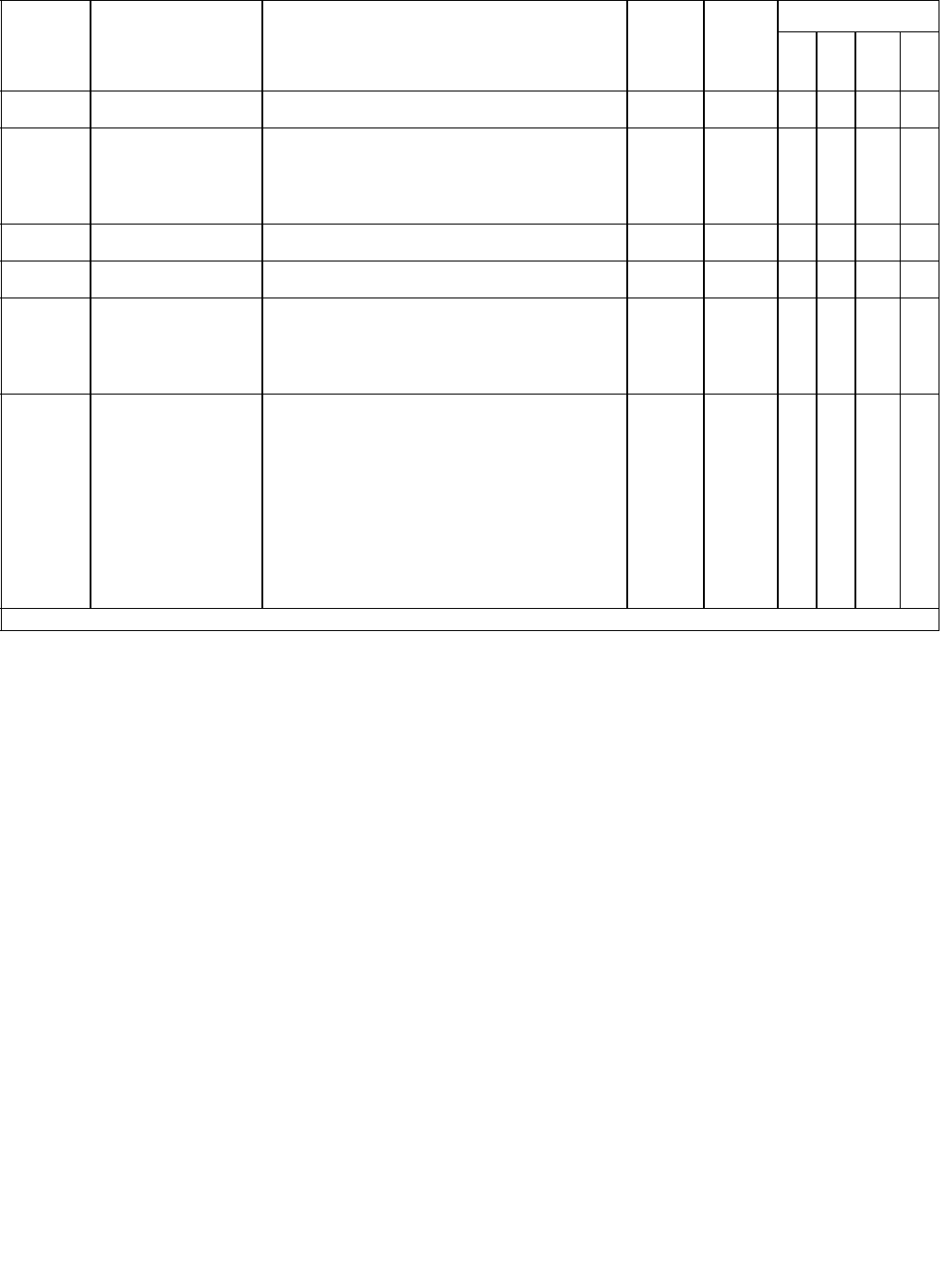
Start-Up 4 - 14
Parameter
No. Parameter Name
Digital Operator Display Description Setting
Range
Factory
Setting
Control Method
V/F V/F
w/
PG OLV FV
F1-21
<3021> PG Constant 2
PG Pulse / Rev 2 Sets the number of pulses for the encoder (pulse generator) for
each full rotation of Motor 2. 0 to 60000 1024 No Q No Q
F1-22
<3021> PG Rotation 2
PG Rotation Sel 2
Determines the direction of rotation for the encoder (PG) con-
nected to Motor 2.
0: Phase A leads with Forward Run Command.
(Phase B leads with Reverse Run Command.)
1: Phase B leads with Forward Run Command.
(Phase A leads with Reverse Run Command.)
0, 1 0 No Q No Q
H4-02
Terminal FM Gain Setting
Terminal FM Gain Sets terminal FM output voltage (in percent of 10Vdc) when
selected monitor is at 100% output. 0.0 to
1000.0 100.0% Q Q Q Q
H4-05
Terminal AM Gain Setting
Terminal AM Gain Sets terminal AM output voltage (in percent of 10Vdc) when
selected monitor is at 100% output. 0.0 to
1000.0 50.0% Q Q Q Q
L1-01 Motor Overload Protection
Selection
MOL Fault Select
Sets the motor thermal overload protection (OL1) based on the
cooling capacity of the motor.
0: Disabled
1: Standard Fan Cooled (<10:1 motor)
2: Standard Blower Cooled (10:1 motor)
3: Vector Motor (1000:1 motor)
0 to 1 1 Q Q Q Q
L3-04 Stall Prevention Selection
During Decel
StallP Decel Sel
When using a braking resistor, use setting “0”. Setting “3” is used
in very specific applications.
0: Disabled - The Drive decelerates at the active deceleration rate.
If the load is too large or the deceleration time is too short, an
OV fault may occur.
1: General Purpose - The Drive decelerates at the active
deceleration rate, but if the main circuit DC bus voltage reaches
the stall prevention level (380/760 Vdc), deceleration will stop.
Deceleration will continue once the DC bus level drops below
the stall prevention level.
2: Intelligent - The active deceleration rate is ignored and the Drive
decelerates as fast as possible w/o hitting OV fault level.
Range: C1-02/10.
3: Stall Prevention w/ Braking Resistor
0 to 3 1 Q Q Q Q
Denotes that parameter can be changed when the Drive is running.
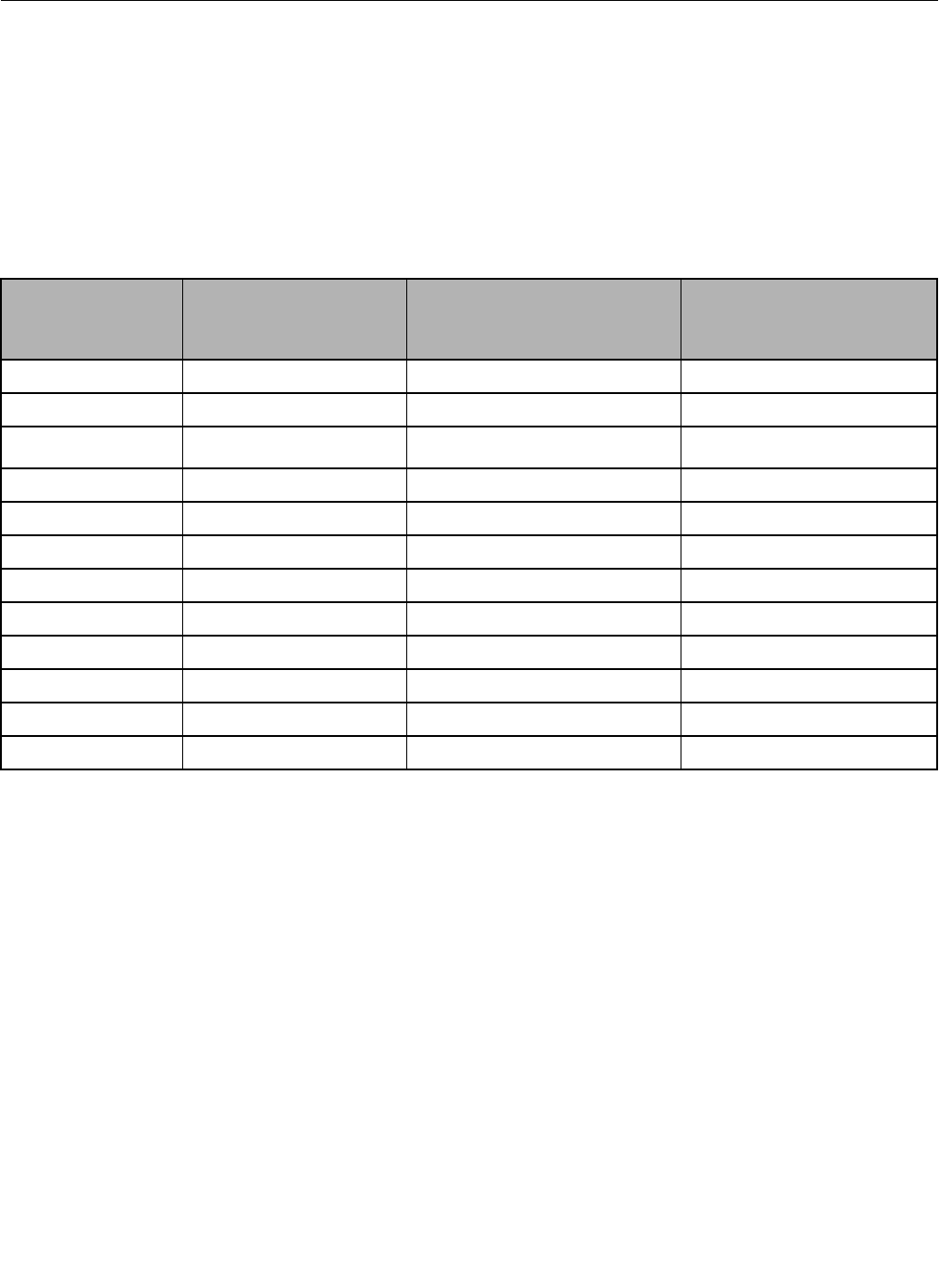
Start-Up 4 - 15
Trial Run
1. Press the LOCAL/REMOTE key once. This puts the Drive in the Local Mode, allowing run/stop and speed commands
by the Digital Operator. The AUTO SEQ and AUTO REF indicators turn off, and the FWD light turns on.
2. Run the Drive at different frequencies and record monitor values. With the Drive in Local Mode, press the ENTER
key at Frequency Reference Monitor (U1-01). Use the UP, DOWN, and RESET keys to set the frequency reference.
Then, press the DATA/ENTER key to accept the frequency reference entered. Run the Drive at the set frequency
reference by pressing the RUN key. Use the UP and DOWN keys to view Output Current (U1-03), Output Voltage
(U1-06), and DC Bus Voltage (U1-07) while running the Drive throughout its entire speed range. Record the
following information at each speed:
When this table is complete, press the STOP key. The Drive will stop and the FWD light remains on. This step
provides benchmark data for the application from the initial start-up.
3. Press the MENU key once to display “Operation”. Press the DATA/ENTER key to display “Frequency Ref”.
If using a remote speed command, press the LOCAL/REMOTE key so the REMOTE SEQ and REMOTE REF
indicators are on. This puts the Drive in REMOTE mode.
4. If using an external speed command, determine whether the speed command is a 0-10Vdc or a 4-20mA signal.
Connect the positive side of a 0-10Vdc signal to terminal A1. Connect the positive side of a 4-20mA signal to
terminal A2. Connect the COMMON of the speed command to terminal AC.
Note: Connect only one input. The factory default is 0-10Vdc. To change to 4-20mA, adjust parameter H3-08
to “2: 4 – 20mA” and ensure DIP Switch S1-2 (located on the terminal board) is in the ON position.
Frequency
(Hz)
Monitor U1-01
Output Current
(A)
Monitor U1-03
Output Voltage
(Vac)
Monitor U1-06
DC Bus Voltage
(Vdc)
Monitor U1-07
6.0
10.0
15.0
20.0
25.0
30.0
35.0
40.0
45.0
50.0
55.0
60.0

Start-Up 4 - 16
5. Check the signal for proper polarity. Observe if the speed command can achieve the minimum and maximum speeds
desired. If not, perform the following:
For 0-10Vdc input (Terminal A1)
1. With no input, adjust Bias (H3-03 setting) until an output of “0.0Hz” is obtained.
2. With full-scale input, adjust Gain (H3-02 setting) until an output of “60.0Hz” (or other desired maximum
frequency) is obtained.
For 4-20mA input (Terminal A2)
1. With 4mA input, adjust Bias (H3-11 setting) until an output of “0.0Hz” is obtained.
2. With 20mA input, adjust Gain (H3-10 setting) until an output of “60.0Hz”
(or other desired maximum frequency) is obtained.
THIS COMPLETES THE DRIVE START-UP PROCEDURES.
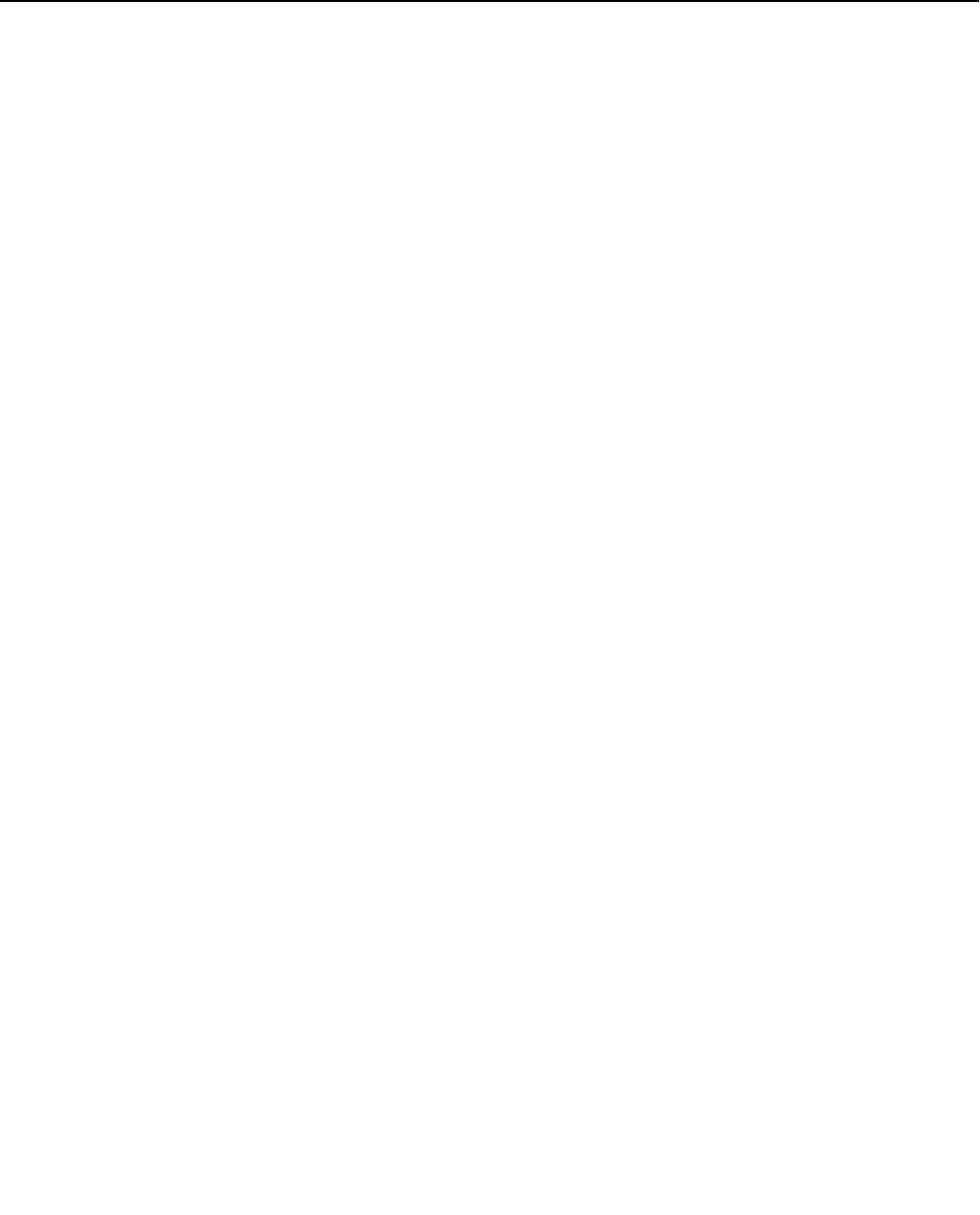
Basic Programming 5 - 1
Chapter 5
Basic Programming
This chapter describes basic programming for the Drive.
Description of Parameter Tables....................................... 5-2
Control Method.................................................................. 5-2
Speed Command Source .................................................. 5-3
Run Command Source...................................................... 5-4
Stopping Method ............................................................... 5-5
Accel/Decel Time .............................................................. 5-8
Carrier Frequency ............................................................. 5-9
Preset Reference ............................................................ 5-11
Input Voltage Setting ....................................................... 5-12
V/F Pattern ...................................................................... 5-12
Motor Setup..................................................................... 5-20
PG Option........................................................................ 5-20
Analog Output Gain......................................................... 5-21
Motor Overload Fault....................................................... 5-22
Stall Prevention ............................................................... 5-23
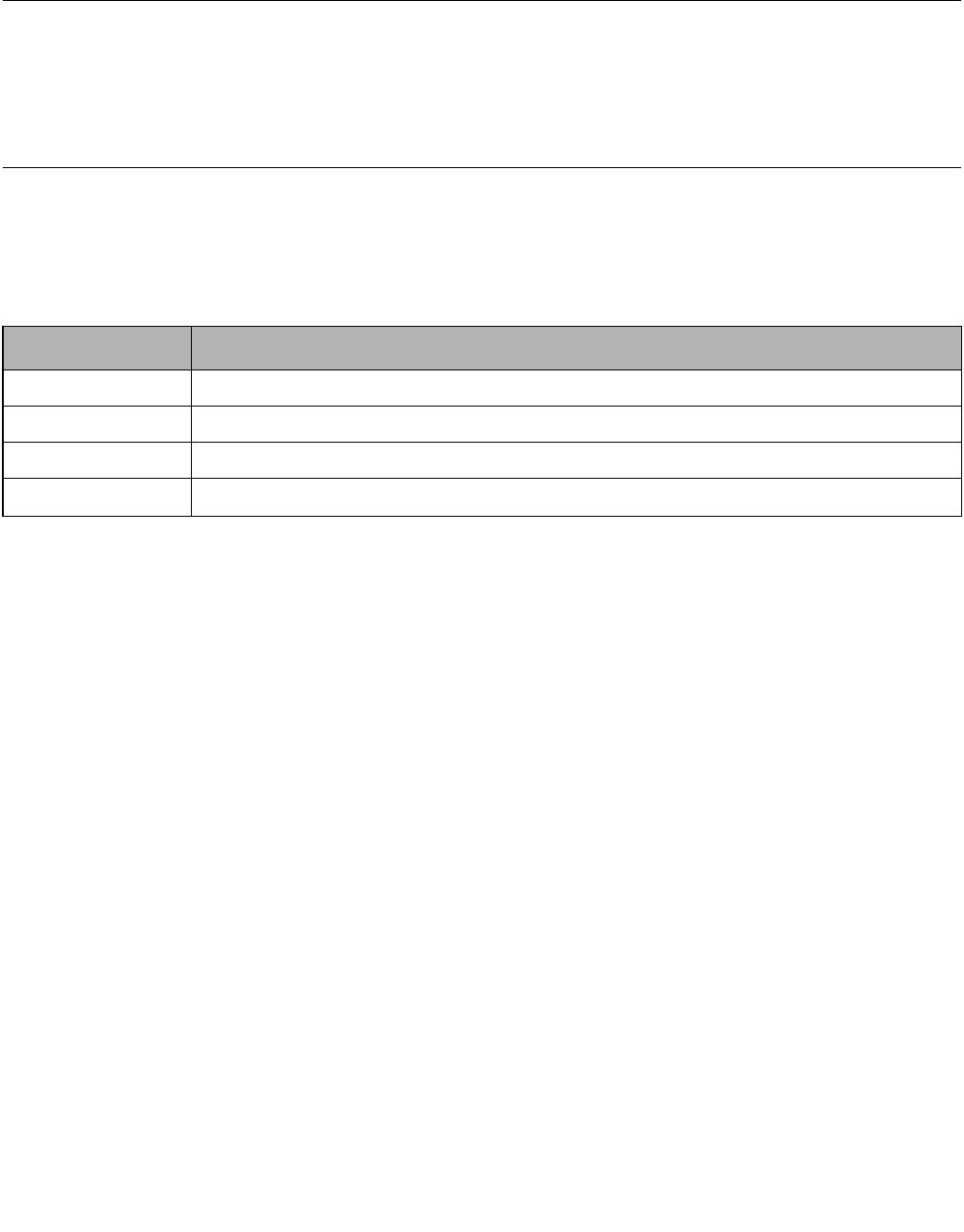
Basic Programming 5 - 2
F7 Basic Programming Parameters
Description of Parameter Tables
This chapter details all of the parameters in the Quick Setting Menu (-QUICK-). Some parameters are not available for all
Control Methods. See Appendix A for details. Setting range and factory default value of the parameter follows the control
method table for each parameter.
Control Method
A1-02 Control Method Selection
The setting of parameter A1-02 determines which control method the Drive will use for operation. Select the control method
best suited for the application:
V/F Control is for general purpose and multiple motor applications.
V/F with PG Feedback is for general purpose applications requiring closed loop speed control.
Open Loop Vector is for applications requiring precise speed control, quick response, and higher torque at low speeds
(150% torque below 1Hz).
Flux Vector Control is for applications requiring very precise speed and torque control at a wide speed range including zero
speed. It requires encoder feedback.
Setting Description
0 V/F Control (factory default)
1 V/F with PG Feedback
2 Open Loop Vector
3Flux Vector
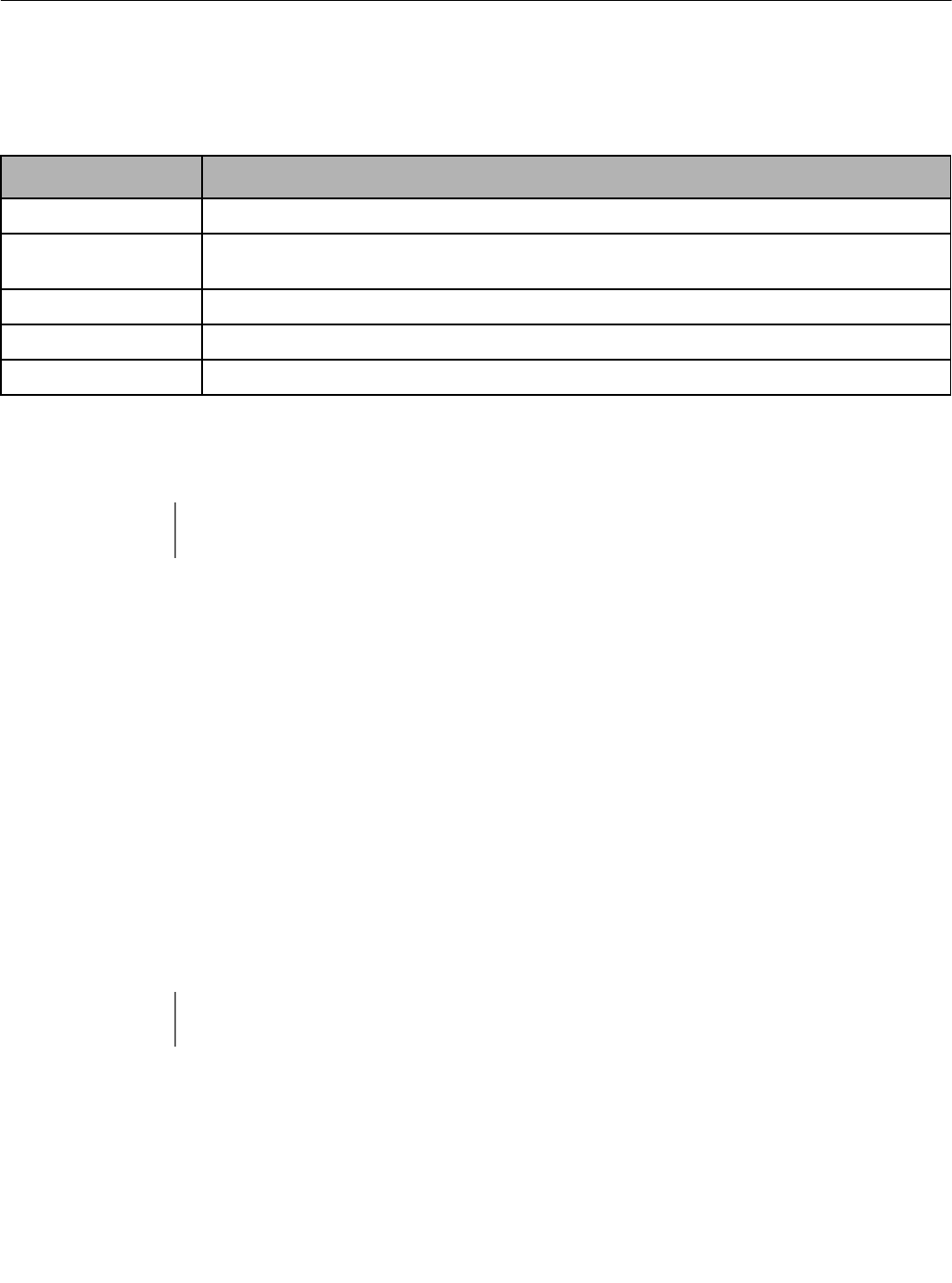
Basic Programming 5 - 3
Speed Command Source
b1-01 Reference Source Selection
In order to run the Drive and motor in REMOTE mode, the Drive must receive a run command and a speed command from an
external source. Parameter b1-01 specifies from where the speed command will be accepted. To switch into the “REMOTE”
mode press the LOCAL/REMOTE button on the Digital Operator while the Drive is stopped.
To have the Drive follow the speed command set by the Digital Operator:
Set b1-01=0. The speed command can then be entered into the U1-01 monitor or in parameter d1-01.
To have the Drive follow an analog speed command:
Set b1-01 = 1 and connect a 0 to 10Vdc or -10 to +10Vdc signal to terminals A1 and AC. Be sure to set parameter H3-01 to the
proper setting. Or, connect a 4 – 20mA signal to terminals A2 and AC. Make sure the S1-2 switch and corresponding parameter
H3-08 is properly set up when using terminal A2
To have the Drive receive the speed command from Modbus serial communication:
Set b1-01 = 2 and connect the RS-485/422 serial communications cable to terminals R+, R-, S+, and S- on the removable
terminal block. Make sure the S1-1 switch and the Modbus H5 parameters are properly set.
To use an option board to input the speed command:
Set b1-01 = 3 and install a communications analog input, or digital input option board into the 2CN port on the Drive control
board. Consult the manual supplied with the option board for instructions on integrating the Drive and communications option
board.
To use pulse train to input a speed command:
Set b1-01 = 4 and connect the pulse train signal to terminals RP and AC. Make sure the H6 parameters are properly set.
Setting Description
0 Operator - Monitor U1-01 or parameter d1-01
1Terminals - Analog input terminal A1 (Terminal A2 sums together with terminal A1 when H3-09=0)
(factory default)
2 Modbus Serial Communication - RS-422/485 terminals R+, R-, S+, and S-
3 Option Board - Option board connected on 2CN
4 Pulse Train Input - Terminal RP and AC
IMPORTANT If the set speed command is less than the minimum output frequency (E1-09) with a run command input, the
RUN indicator on the Digital Operator will turn on and the STOP indicator on the Digital Operator will blink.
IMPORTANT If b1-01=3 but an option board is not installed in 2CN, an OPE05 Fault will be displayed on the digital
operator and the Drive will not run.
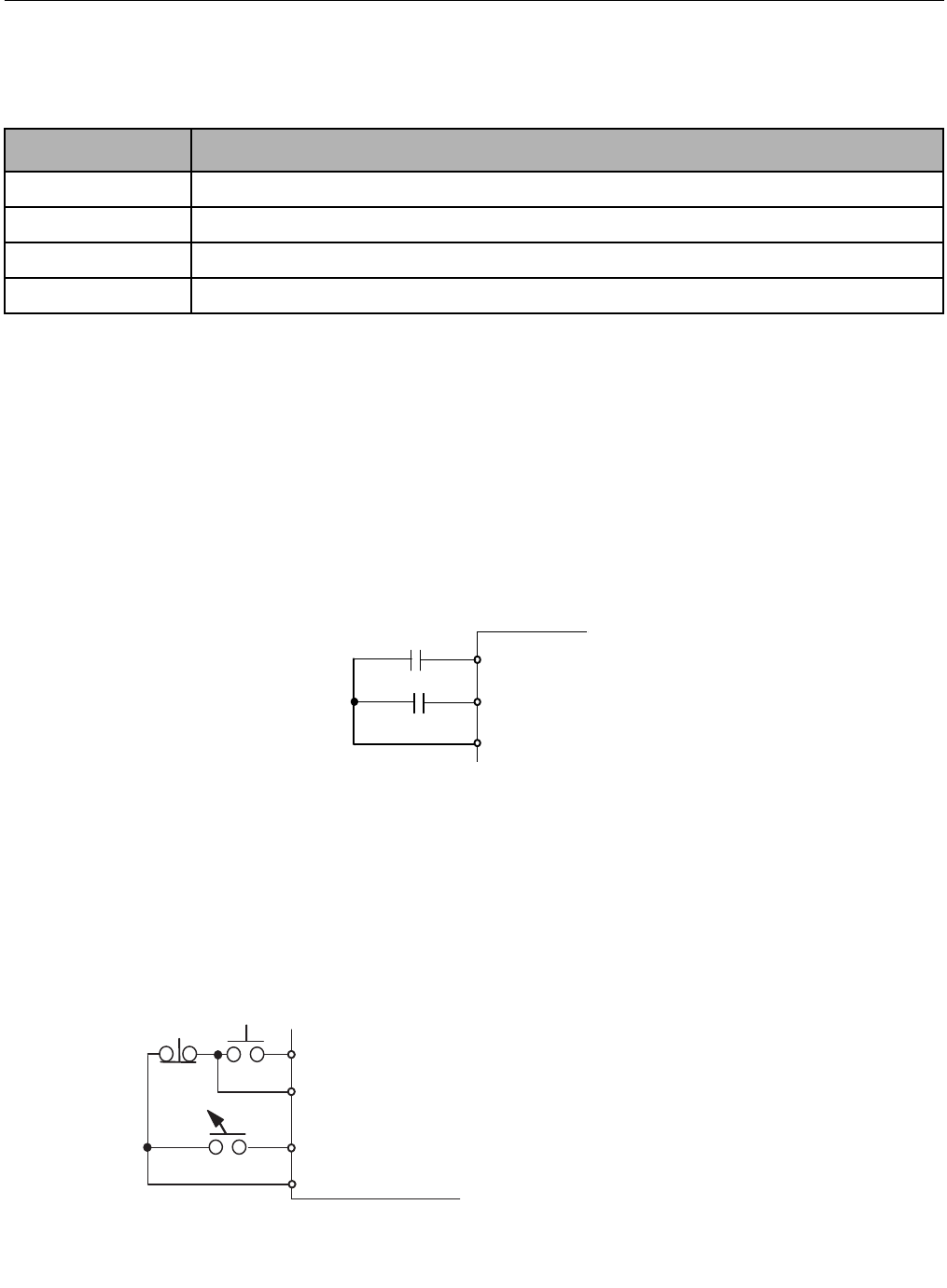
Basic Programming 5 - 4
Run Command Source
b1-02 Run Source Selection
In order to run the Drive and motor in REMOTE mode, the Drive must receive a run command and a speed command from an
external source. Parameter b1-02 specifies from where the RUN command will be accepted.
To issue a run command from the Digital Operator:
Set b1-02=0 and use the RUN and STOP keys on the Digital Operator to start and stop the Drive.
To issue the run command from the terminals:
Set b1-02=1 and select between 2-wire and 3-wire operation according to the following:
2-Wire Control: The factory setting is for 2-wire operation. In the 2-wire configuration, a closure between S1 and SN will be
interpreted as a Forward run command by the Drive. A closure between S2 and SN will be interpreted as a Reverse run
command. If both S1 and S2 are closed, the Drive will alarm and the Digital Operator will flash an EF fault. The Drive will not
run in this condition.
Fig 5.1 2-Wire Control
3-Wire Control: When any of the multi-function digital input parameters, H1-01 through H1-05, is set to 0, terminals S1 and
S2 become Run and Stop, respectively. The multi-function digital input that was set to 0 will function as a Forward/Reverse
input for the Drive. When the Forward/Reverse input is open the Drive will run in the Forward direction and when the input is
closed, the Drive will run in the Reverse direction.
In 3-wire operation, a momentary closure (> 50mS) between S1 and SN will cause the Drive to run provided that S2 and SN is
held closed. The Drive will stop any time the S2-SN connection is broken. If the 3-wire configuration is implemented via a
3-wire Initialization (A1-03=3330), terminal S5 becomes the Forward/Reverse input.
Fig 5.2 3-Wire Control
Setting Description
0 Operator - RUN and STOP keys on Digital Operator
1 Terminals - Contact closure between terminal S1 and SN (factory default)
2 Modbus Serial Communication - RS-422/485 terminals R+, R-, S+, and S-
3 Option Board - Option board connected to 2CN
S1
S2
SN
FWD Run/Stop
REV Run/Stop
Run Command (Run on momentary “Close”)
Stop Command (Stop on momentary “Open”)
FWD/REV Run Selection (FWD Run when “Open” Rev Run when “Closed”
)
S1
S2
SN
S5
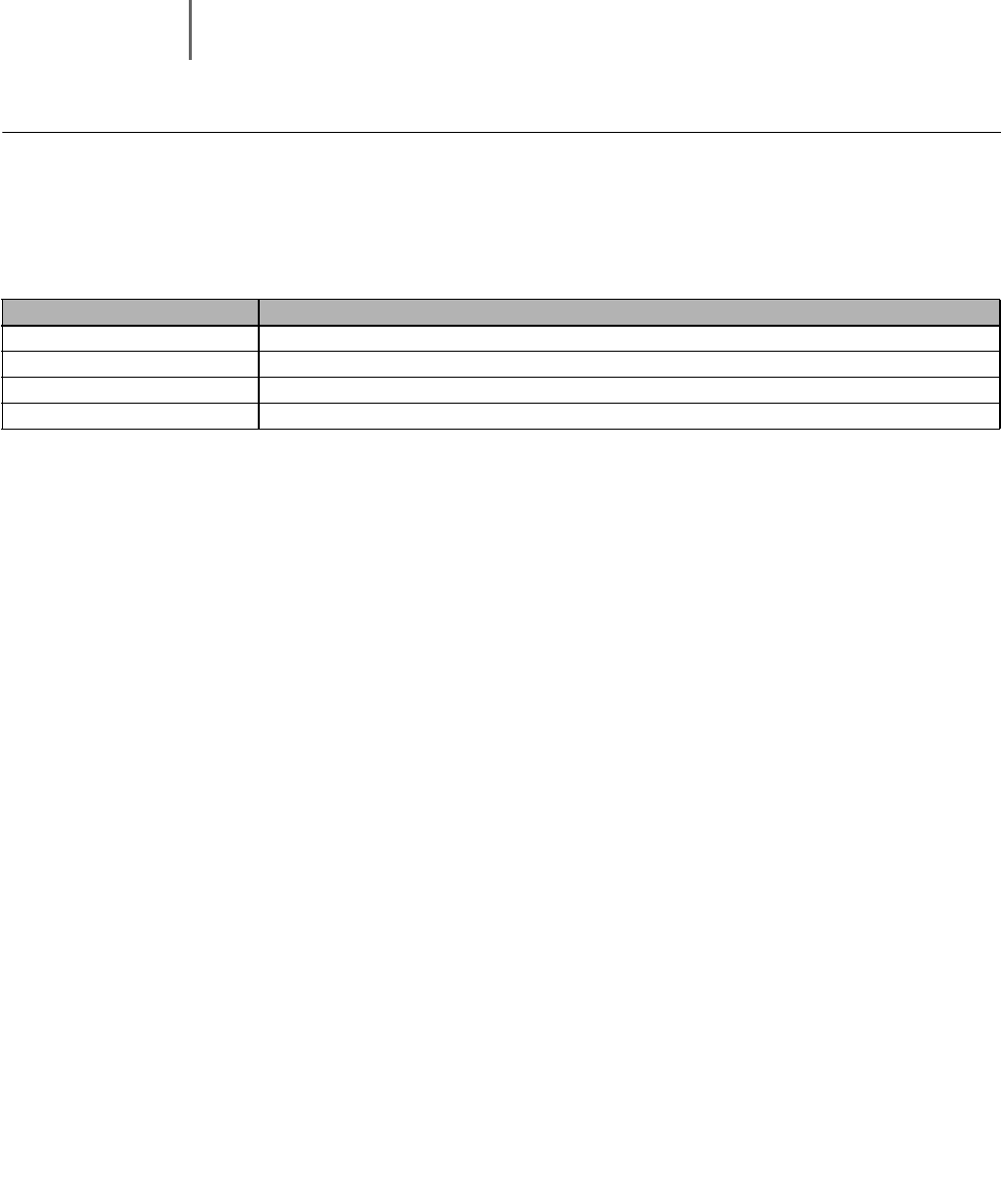
Basic Programming 5 - 5
To issue a run command via Modbus serial communication:
Set b1-02=2 (Modbus communication) and connect the Modbus RS-485/422 serial communication cable to R+, R-, S+, and
S- on the removable terminal block. Make sure the S1-1 switch and the Modbus H5 parameters are properly set.
To issue the RUN command via an option card:
Set b1-02=3 and install an option board into the 2CN port on the control board. Consult the manual supplied with the option
board for instructions on integrating the Drive and communication option board.
Stopping Method
b1-03 Stopping Method Selection
There are four methods of stopping the Drive when the RUN command is removed.
0: Ramp to stop: When the run command is removed, the Drive will decelerate the motor to minimum output frequency
(E1-09) and then shut off. The rate of deceleration is determined by the active deceleration time. The factory
default Decel Time is parameter C1-02.
IMPORTANT If b1-01=3 but an option board is not installed in 2CN, an OPE05 operator programming error will be
displayed on the Digital Operator and the Drive will not run.
Setting Description
0 Ramp to Stop (factory default)
1 Coast to Stop
2 DC Injection to Stop
3 Coast to Stop with Timer
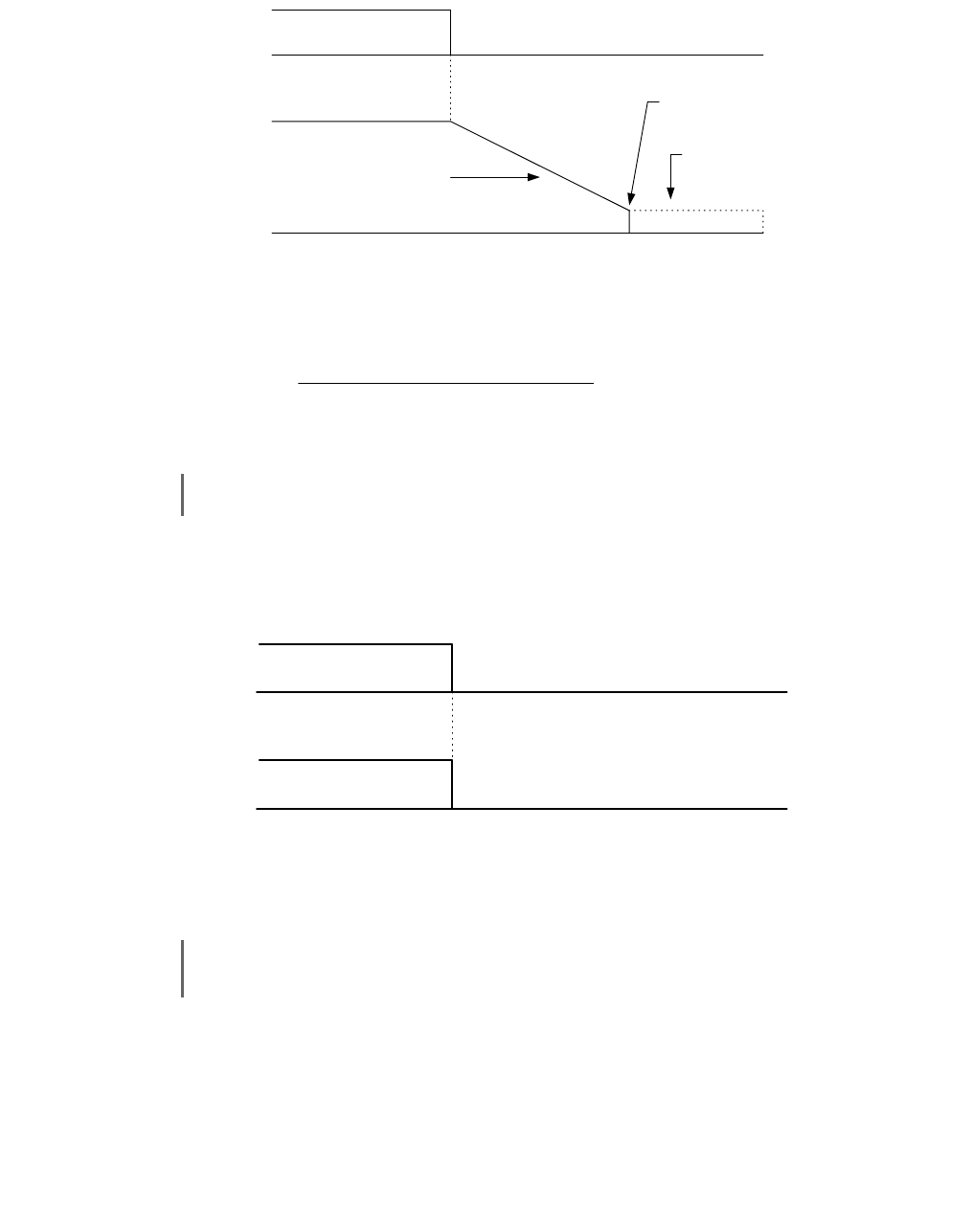
Basic Programming 5 - 6
When the output frequency has dropped below the DC Injection Start Frequency (b2-01) or the minimum output frequency
(E1-09) (whichever is greater), deceleration will stop and DC current will be injected into the motor at the current level set in
b2-02 for the time set in b2-04.
Fig 5.3 Deceleration to Stop
The actual deceleration time can be determined by the following formula:
1:Coast to stop: When the run command is removed, the Drive will turn off its output transistors. The friction of the driven
equipment will eventually overcome any residual inertia of the system and the motor will stop.
Fig 5.4 Coast to Stop
IMPORTANT If S-Curve characteristics are set in the Drive programming, they will add to the total time to stop.
IMPORTANT After a stop is initiated, subsequent run commands will be ignored until the Minimum Baseblock Time
(L2-03) has expired.
ON
OFF
Run Command
Output Frequency Deceleration Time (C1-02)
DC Injection Braking
100 %
0 %
DC Injection Brake Time
when Stopping (b2-04)
DC Injection Start
Frequency (b2-01)
on timedecelerati Activex
04)(E1frequency Maximum
command stop of at timefrequency Output
stop toTime −
=
ON
OFF
Run Command
Output Frequency
100 %
0 %
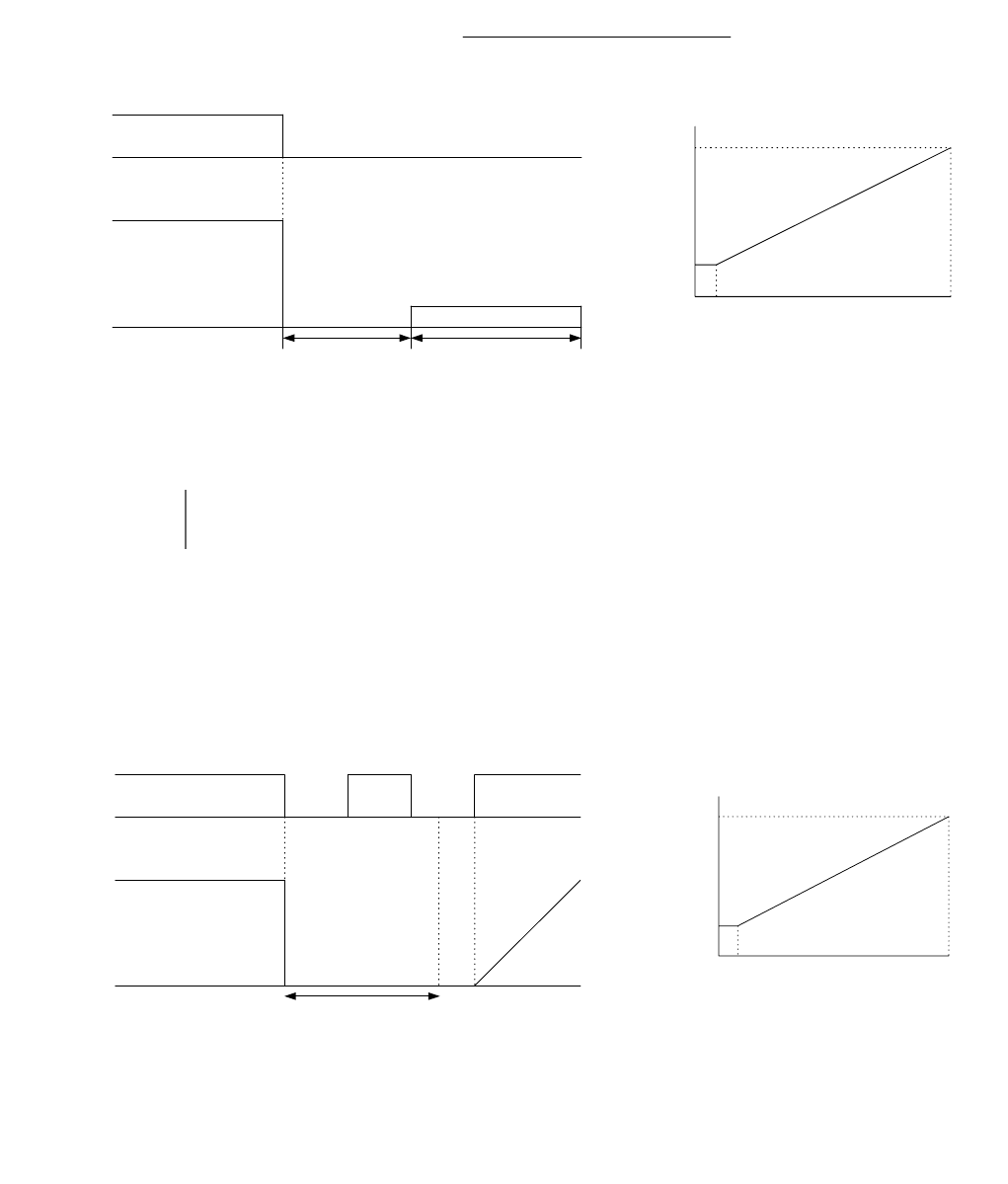
Basic Programming 5 - 7
2:DC Injection to Stop: When the run command is removed, the Drive will Baseblock (turn off all output transistors) for the
Minimum Baseblock Time (L2-03). Once the Minimum Baseblock Time has expired, the Drive will
inject DC current into the motor windings to try and lock the motor shaft. The stopping time will be
reduced as compared to Coast to Stop. The level of DC Injection current is set by parameter b2-02.
The DC Injection brake time is determined by the set value in b2-04 and the output frequency at the
time the run command is removed.
Fig 5.5 DC Injection Braking to Stop
3:Coast to Stop with Timer: When the run command is removed, the Drive will turn off its output transistors and the motor
will coast to a stop. If a run command is input before the timer expires, the Drive will not run and
the run command will be ignored. The timer value is determined by the active deceleration time
and the output frequency when the run command is removed.
Fig 5.6 Coast to Stop with Timer
IMPORTANT If an overcurrent (OC) fault occurs during DC Injection Braking to Stop, lengthen the Minimum Baseblock
Time (L2-03) until the fault no longer occurs.
04)-(E1Frequency Maximum
FrequencyOutput 1004)-(b2
Time BrakeInjection DC ××
=
ON
OFF
Run Command
Output Frequency
DC Injection Braking
DC Injection Braking Time
Minimum Baseblock
Time (L2-03)
100 %
0 %
DC Injection
Brake Time
b2-04 x 10
b2-04
10% 100% (Maximum
Output Frequency)
Output Frequency at Stop Command Input
Run Command
Output Frequency
OFF
ON
Timer Value
100 %
0 %
Deceleration
Time
Minimum
Baseblock
Time (L2-03)
Minimum
Output
Frequency
100% (Maximum
Output Frequency)
Output Frequency at Stop Command Input
Timer Value
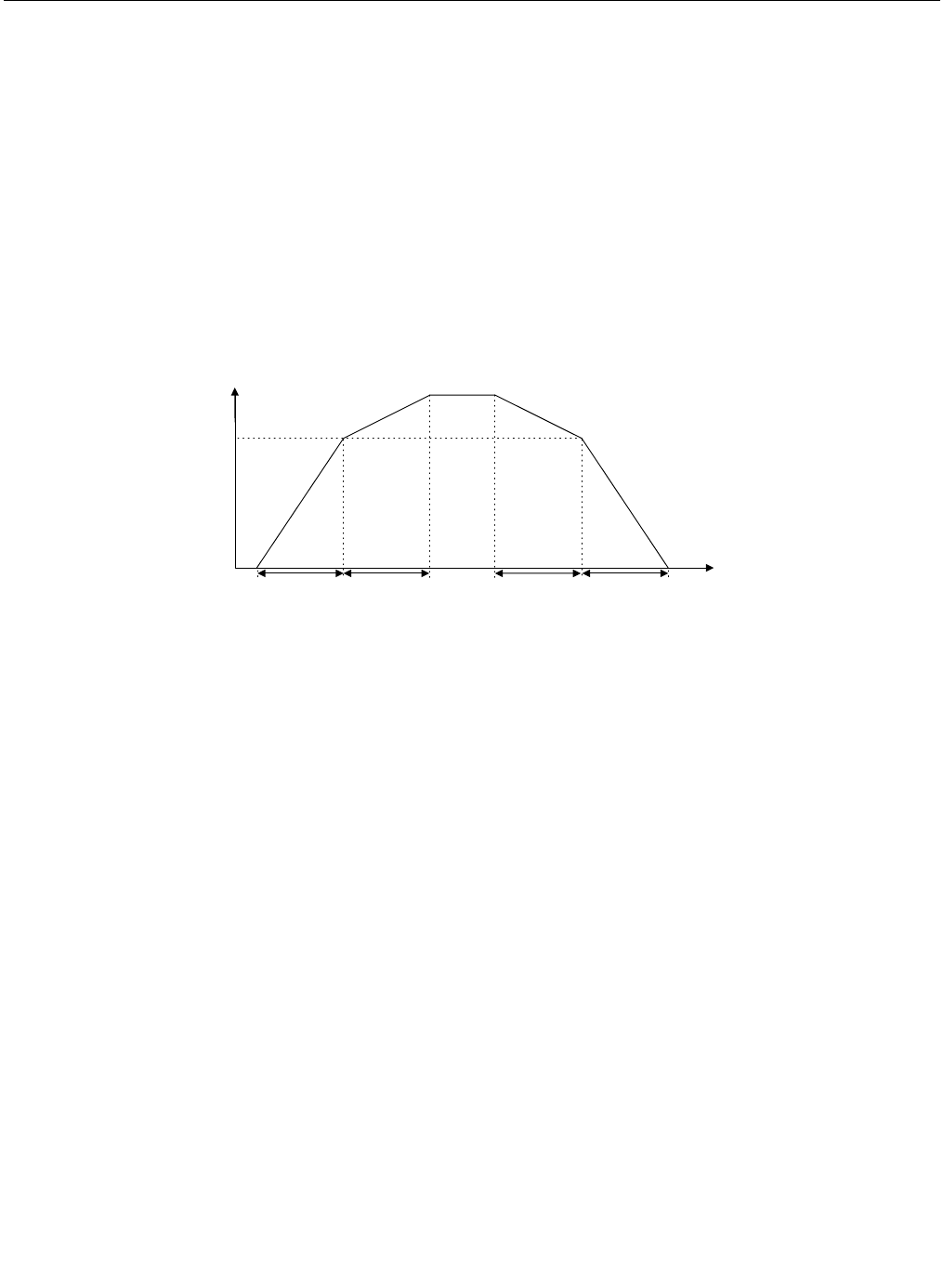
Basic Programming 5 - 8
Accel/Decel Time
C1-01 Acceleration Time 1
C1-02 Deceleration Time 1
Setting Range: 0.0 to 6000.0
Factory Default: 10.0sec
C1-01 (Acceleration Time 1) sets the time to accelerate from zero to maximum output frequency (E1-04). C1-02 (Deceleration
Time 1) sets the time to decelerate from maximum output frequency to zero. C1-01 and C1-02 are the factory default active
accel/decel settings. Alternate accel/decel settings (C1-03 through C1-08) can be activated by multi-function digital inputs
(H1-0 = 7 and 1A), or specified by the switch over frequency (C1-11). See Fig 5.7 below.
Fig 5.7 Acceleration/deceleration Time Switch Over Frequency
C1-07 Rate C1-01 Rate C1-02 Rate C1-08 Rate
C1-11
Output Frequency
Time
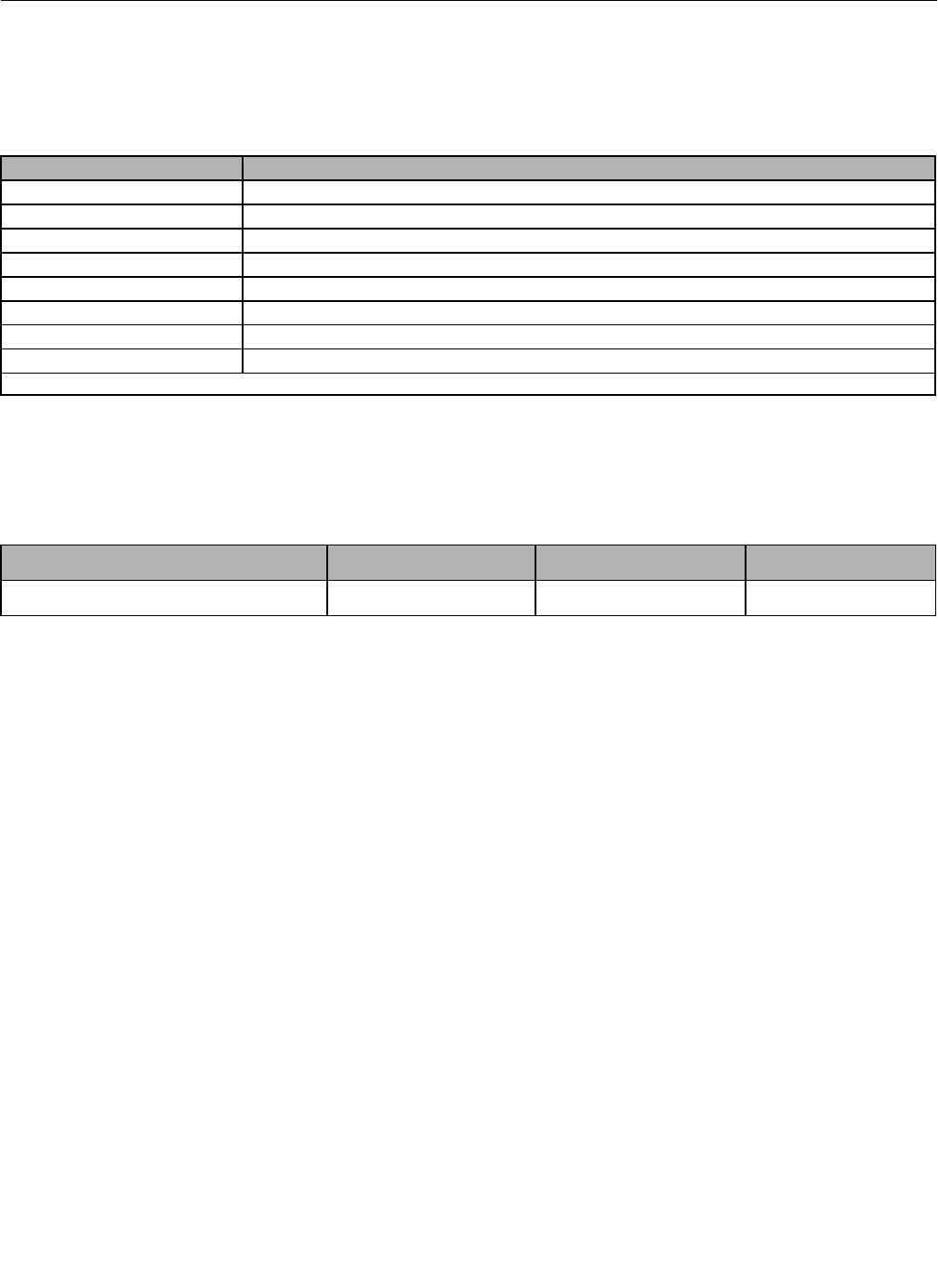
Basic Programming 5 - 9
Carrier Frequency
C6-02 Carrier Frequency Selection
Parameter C6-02 sets the switching frequency of the Drive’s output transistors. It can be changed in order to reduce audible
carrier noise and also reduce leakage current. Cases that may require adjustment to the C6-02 include:
• If the wiring length between the Drive and the motor is long, decrease the carrier frequency.
• If speed and torque are inconsistent at low speeds, decrease the carrier frequency.
• If leakage current from the Drive is large, decrease the carrier frequency.
• If the audible motor noise is too great, increase the carrier frequency.
The setting range depends on setting of parameter C6-01 Heavy/Normal Duty Selection.
If Heavy Duty is selected (C6-01=0), the default Carrier Frequency setting is 1=2 kHz. Software version VSF103021 and
higher allows the carrier frequency to be increased above the 2 kHz setting (on most models). However, the continuous rated
output current will automatically be reduced to the level as indicated in the following table.
Note: Increasing the carrier frequency above 2 kHz while in Heavy Duty (C6-01=1) may result in overload (OL2) shutdown if
the load current is above the continuous current rating in the following table.
If Normal Duty 1 (C6-01=1) or Normal Duty 2 (C6-01=2) is selected, Carrier Frequency Selection range is “0” (Low Noise) to
“F” (Program).
Setting of “F: Program” allows the carrier frequency to be varied according to parameters C6-03 (Carrier Frequency Upper
Limit), C6-04 (Carrier Frequency Lower Limit), and C6-05 (Carrier Frequency Proportional Gain).
Setting Description
0Low Noise
1 Fc=2.0 kHz
2 Fc=5.0 kHz
3 Fc=8.0 kHz
4 Fc=10.0 kHz
5 Fc=12.5 kHz
6 Fc=15.0 kHz
F Program
*The factory default setting is model dependent
Wiring Length 164 ft or less 328 ft or less Over 328 ft
C6-02 (carrier frequency) setting 1 to 6 (15 kHz max.) 1 to 4 (10 kHz max.) 1 to 2 (5 kHz max.)
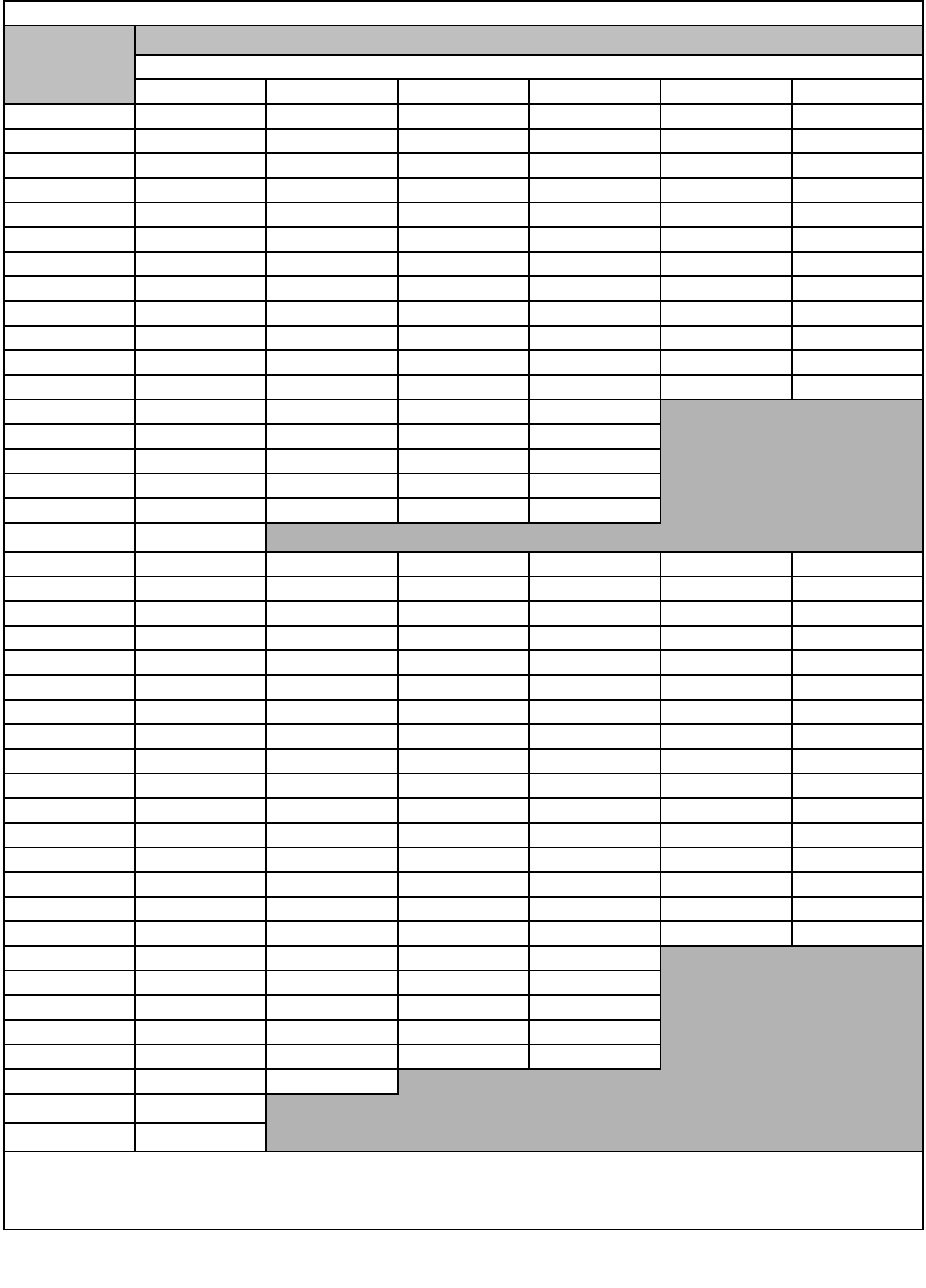
Basic Programming 5 - 10
Table 5.1 HD Ratings for Various Carrier Frequencies
Model
CIMR-F7U
Continuous Amps (A) *1
Carrier Frequency
2.0 kHz 5.0 kHz 8.0 kHz 10.0 kHz 12.5 kHz 15.0 kHz
20P4 3.2 3.1 2.9 2.8 2.7 2.6
20P7 4.2 4 3.8 3.7 3.5 3.4
21P5 7 6.7 6.4 6.2 5.9 5.6
22P2 9.6 9.2 8.8 8.4 8.1 7.7
23P7 15.2 14.6 13.9 13.4 12.8 12.2
25P5 23 22.1 21 20.2 19.3 18.4
27P5 31 29.8 28.3 27.3 26.0 24.8
2011 45 43.2 41 39.6 37.8 36.0
2015 58 55.7 52.9 51 48.7 46.4
2018 71 68.2 64.8 62.5 59.6 56.8
2022 85 81.6 77.5 74.8 71.4 68.0
2030 115 106.7 96.8 90.2 81.9 73.6
2037 145 127.6 106.7 92.8
No Increase in Carrier
Frequency Possible
2045 180 158.4 132.5 115.2
2055 215 189.2 158.2 137.6
2075 283 249 208.3 181.1
2090 346 304.5 254.7 221.4
2110 360*2
40P4 1.8 1.7 1.6 1.6 1.5 1.4
40P7 2.1 2 1.9 1.8 1.8 1.7
41P5 3.7 3.6 3.4 3.3 3.1 3.0
42P2 5.3 5.1 4.8 4.7 4.5 4.2
43P7 7.6 7.3 6.9 6.7 6.4 6.1
44P0 8.7 8.4 7.9 7.7 7.3 7.0
45P5 12.5 12 11.4 11 10.5 10.0
47P5 17 16.3 15.5 15 14.3 13.6
4011 24 23 21.9 21.1 20.2 19.2
4015 31 29.8 28.3 27.3 26.0 24.8
4018 39 37.4 35.6 34.3 32.8 31.2
4022 45 43.2 41 39.6 37.8 36.0
4030 60 55.7 50.5 47 42.7 38.4
4037 75 69.6 63.2 58.8 53.4 48.0
4045 91 84.4 76.6 71.3 64.8 58.2
4055 112 103.9 94.3 87.8 79.7 71.7
4075 150 132 110.4 96
4090 180 158.4 132.5 115.2
4110 216 190.1 159 138.2
4132 260 228.8 191.4 166.4
4160 304 267.5 223.7 194.6
4185 370 296
No Increase in Carrier Frequency Possible
4220 414*2
4300 590*2
*1 All models have an overload rating of 150% of rated output current for 60 seconds except model 2110, which has an overload rating of
138% of rated output current for 60 seconds, and models 4220 and 4300, which have an overload rating of 150% of rated output current
for 45 seconds.
*2 Heavy Duty Ratings for models 2110, 4220 and 4300 are effective in software version VSF103021 and higher.
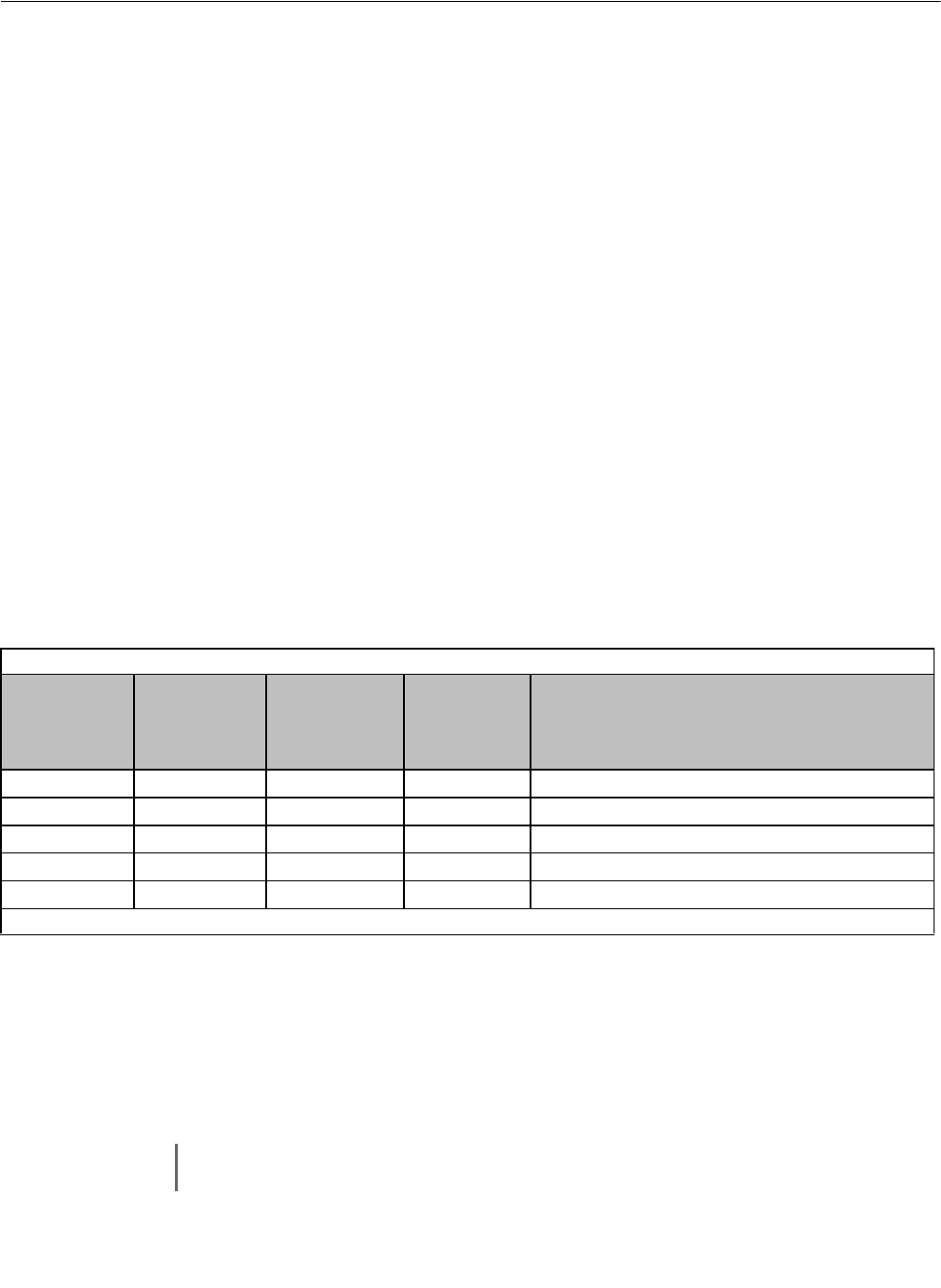
Basic Programming 5 - 11
Preset Reference
d1-01 Frequency Reference 1
d1-02 Frequency Reference 2
d1-03 Frequency Reference 3
d1-04 Frequency Reference 4
Setting Range: 0.0 to E1-04 (Maximum Output Frequency)
Factory Default: 0.0Hz
d1-17 Jog Reference
Setting Range: 0.0 to E1-04 (Maximum Output Frequency)
Factory Default: 6.0Hz
Up to 17 preset references (including Jog Reference) can be set through multi-function inputs S3 to S8. The first 4 preset
references and Jog Reference are accessible through the Quick Setting menu. It is a two-step process to set the Drive up for
preset speeds. First, d1-01 through d1-04 and d1-17 must be programmed with the desired preset speeds and the desired jog
speed, respectively. Next, three of the Drive’s digital inputs need to be programmed and wired as Multi-step Speed Reference
1, Multi-step Speed Reference 2, and Jog Frequency.
As shown in the above table, it is possible to use analog inputs in place of Frequency Reference 1 and Frequency Reference 2.
If b1-01 = 1, then the analog input A1 will be used instead of Frequency Reference 1 for the first preset speed. If b1-01=0
then Frequency Reference 1 (d1-01) will be used.
If H3-05 = 2, then the analog input A2 will be used instead of Frequency Reference 2 (d1-02) for the second preset speed.
If H3-05 ≠ 2, then Frequency Reference 2 will be used.
Table 5.2 Preset Speed
Preset Speed
Terminal
programmed
as Multi-step
Reference 1
Terminal
programmed
as Multi-step
Reference 2
Terminal
programmed
as Jog
Reference
Details
1 OFF OFF OFF Frequency Reference 1 (d1-01) or analog input A1
2 ON OFF OFF Frequency Reference 2 (d1-02) or analog input A3
3 OFF ON OFF Frequency Reference 3 (d1-03)
4 ON ON OFF Frequency Reference 4 (d1-04)
5 - - ON* Jog Frequency (d1-17)
* The Jog Frequency input is given priority over the multi-step speeds.
IMPORTANT The programming of d1-01 through d1-17 will be in the units specified by the display scaling parameter (o1-03).
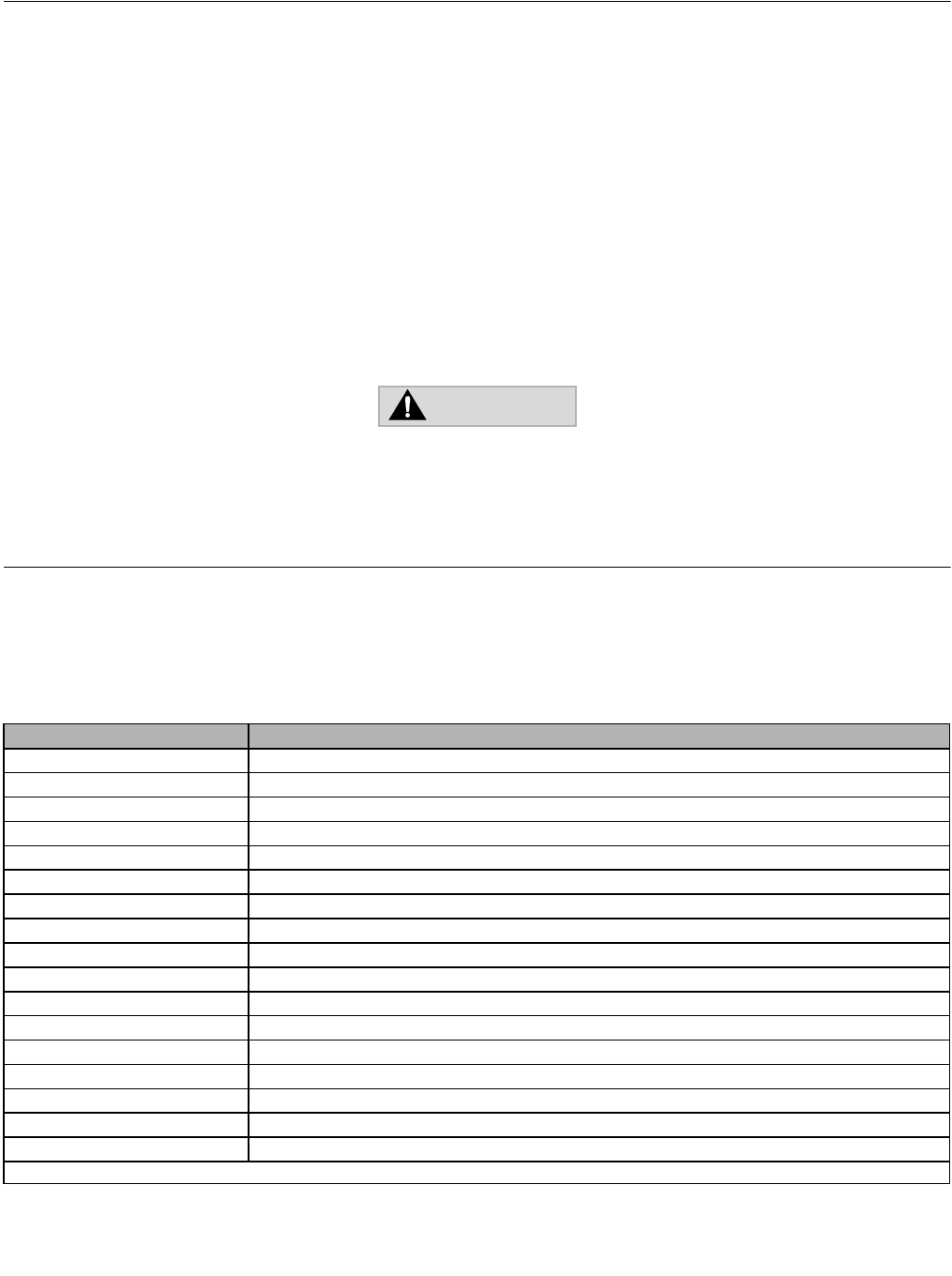
Basic Programming 5 - 12
Input Voltage Setting
E1-01 Input Voltage Setting
Setting Range: 155.0V to 255.0V (240V Models)
310.0V to 510.0V (480V Models)
Factory Defaults: 230.0V (240V Models)
460.0V (480V Models)
Set the Input Voltage parameter (E1-01) to the nominal voltage of the connected AC power supply. This parameter adjusts the
levels of some protective features of the Drive (i.e. Overvoltage, Built-in Braking Transistor Turn-on, Stall Prevention, etc.).
E1-01 also serves as the Maximum/Base Voltage used by the Preset V/F curves (E1-03=0 to E).
DRIVE INPUT VOLTAGE (NOT MOTOR VOLTAGE) MUST BE SET IN E1-01 FOR THE PRO-
TECTIVE FEATURES OF THE DRIVE TO FUNCTION PROPERLY. FAILURE TO DO SO
MAY RESULT IN EQUIPMENT DAMAGE AND/OR PERSONAL INJURY.
V/F Pattern
E1-03 V/F Pattern Selection
Setting Description
0 50Hz
1 60Hz
2 60Hz (with 50Hz Base)
3 72Hz (with 60Hz Base)
4 50Hz VT1
5 50Hz VT2
6 60Hz VT1
7 60Hz VT2
8 50Hz HST1
9 50Hz HST2
A 60Hz HST1
B 60Hz HST2
C 90Hz (with 60Hz Base)
D 120Hz (with 60Hz Base)
E 180Hz (with 60Hz Base)
FCustom V/F (
factory default)
FF Custom w/o limit
Note: VT = Variable Torque, HST = High Starting Torque
WARNING
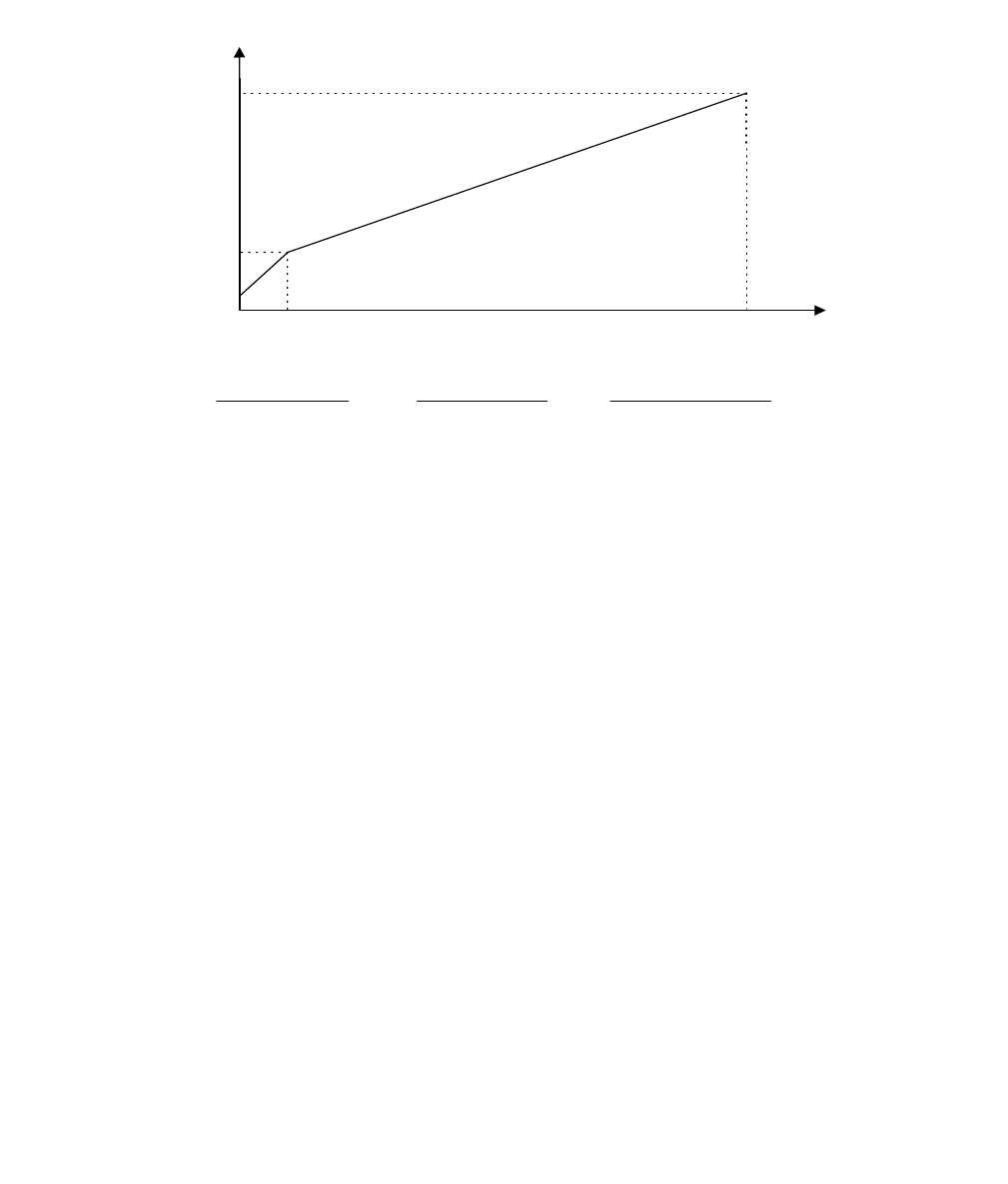
Basic Programming 5 - 13
This parameter is only available in the V/F or V/F with PG control methods (A1-02 = 0 or 1).
The Drive operates utilizing a set V/F pattern to determine the appropriate output voltage level for each commanded speed.
There are 15 different preset V/F patterns to select from (E1-03 = 0 to E) with varying voltage profiles, base level
(base level = frequency at which maximum voltage is reached), and maximum frequencies.
There are also settings for Custom V/F patterns that will use the settings of parameters E1-04 through E1-13. E1-03 = F selects
a custom V/F pattern with an upper voltage limit and E1-03 = FF selects a custom V/F pattern without an upper voltage limit.
See Fig 5.8 below for the upper voltage limit.
Fig 5.8 V/F Pattern Voltage Upper Limit
E1-06 / 40 E1-06
250V
Output Voltage
Output Frequency
B
A
F7U20P4-23P7 F7U24P0-2045 F7U2055 & higher
A = 5V A = 2.5V A = 2.5V
B = 35V B = 20V B = 15V
For 480V class Drives, the values are twice that of 208-240V class Drives.
Voltage Upper Limits for 208-240V Class Drives
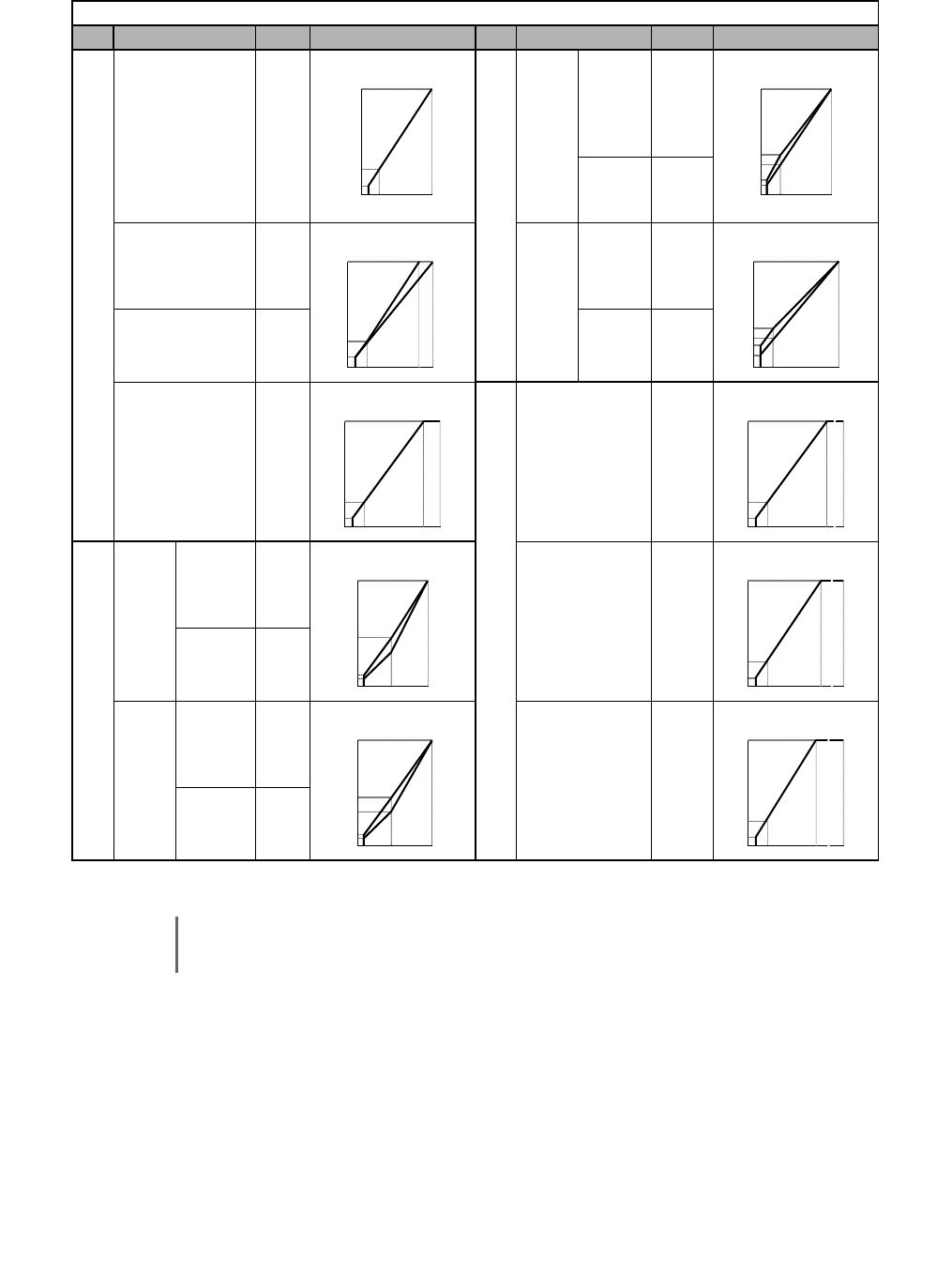
Basic Programming 5 - 14
Table 5.3 Preset V/F Patterns
Specifications E1-03 V/F Pattern Specifications E1-03 V/F Pattern
General-purpose
50Hz 0
High Starting Torque
50Hz
High
Starting
Torque 1
8
High
Starting
Torque 2
9
60Hz
1
or
F
60Hz
High
Starting
Torque 1
A
60Hz
(with 50Hz Base) 2
High
Starting
Torque 2
B
72Hz
(with 60 Hz Base) 3
High Speed Operation
90Hz
(with 60Hz Base) C
Variable Torque
50Hz
Variable
Torque 1 4
120Hz
(with 60Hz Base) D
Variable
Torque 2 5
60Hz
Variable
Torque 1 6
180Hz
(with 60Hz Base) E
Variable
Torque 2 7
IMPORTANT When a factory initialization is performed and the setting of E1-03 = F or FF, E1-03 is unaffected, but the
settings of E1-04 through E1-13 are returned to their factory default settings.
(Hz)
(V)
230
17
10
01.32.5 50
0
230
(V)
28
22
15
13 (Hz)
01.32.5 50
9
8
(Hz)
01.53.0 50 60
17
10
2
1
F
(V)
230 230(V)
28
22
17
13 (Hz)
01.53.0
B
A
60
(Hz)
01.53.0 60 72
17
10
3
(V)
230
(Hz)
01.53.0 60 90
17
10
C
(V)
230
230
(V)
57
40
10
9(Hz)
0 1.3 25 50
5
4
(Hz)
0 1.5 3.0 60 120
17
10
D
(V)
230
230
(V)
57
40
10
9(Hz)
01.5 30 60
7
6
(Hz)
0 1.5 3.0 60 180
17
10
E
(V)
230
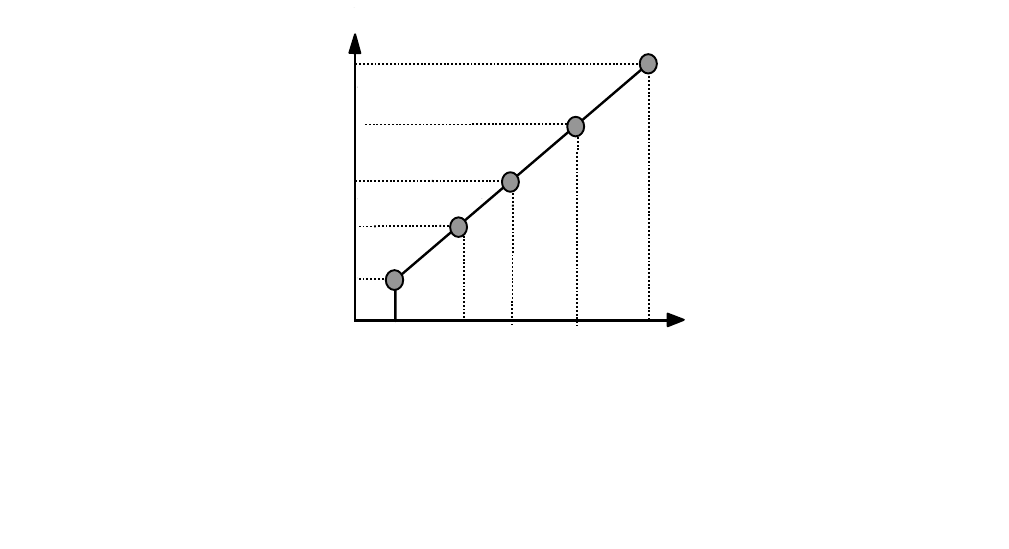
Basic Programming 5 - 15
E1-04 Maximum Output Frequency
Setting Range: 40.0 to 400.0Hz
Factory Default: 60.0Hz
E1-05 Maximum Output Voltage
Setting Range: 0.0 to 255.0V (240V Models)
0.0 to 510.0V (480V Models)
Factory Defaults: 230.0V (240V Models)
460.0V (480V Models)
E1-06 Base Frequency
Setting Range: 0.0 to 400.0Hz
Factory Default: 60.0Hz
E1-09 Minimum Output Frequency
Setting Range: 0.0 to 400.0Hz (Normal Duty)
0.0 to 300.0Hz (Heavy Duty)
Factory Default: 1.5Hz
E1-13 Base Voltage
Setting Range: 0.0 to 255.0V (240V Models)
0.0 to 510.0V (480V Models)
Factory Defaults: 0.0V (240V Models)
0.0V (480V Models)
To set up a custom V/F pattern, program the points shown in the diagram below using parameters E1-04 through E1-13. Be
sure that the following condition is true:
E1-09 ≤ Ε1−07 < Ε1−06 ≤ Ε1−11 ≤ Ε1−04
Fig 5.9 V/F Pattern Parameters
Parameters E1-07, E1-08, E1-10, E1-11, and E1-12 are accessible through the Programming Menu.
Frequency
Voltage
E1-09 E1-07
E1-06 E1-04
E1-11
Max Voltage E1-05
Mid Voltage B E1-12
Mid Voltage A E1-08
Base Voltage E1-13
Min Voltage E1-10
Min
Freq Max
Fre
q
Base
Freq
Mid
Freq
A
Mid
Freq B
Mid
Freq A
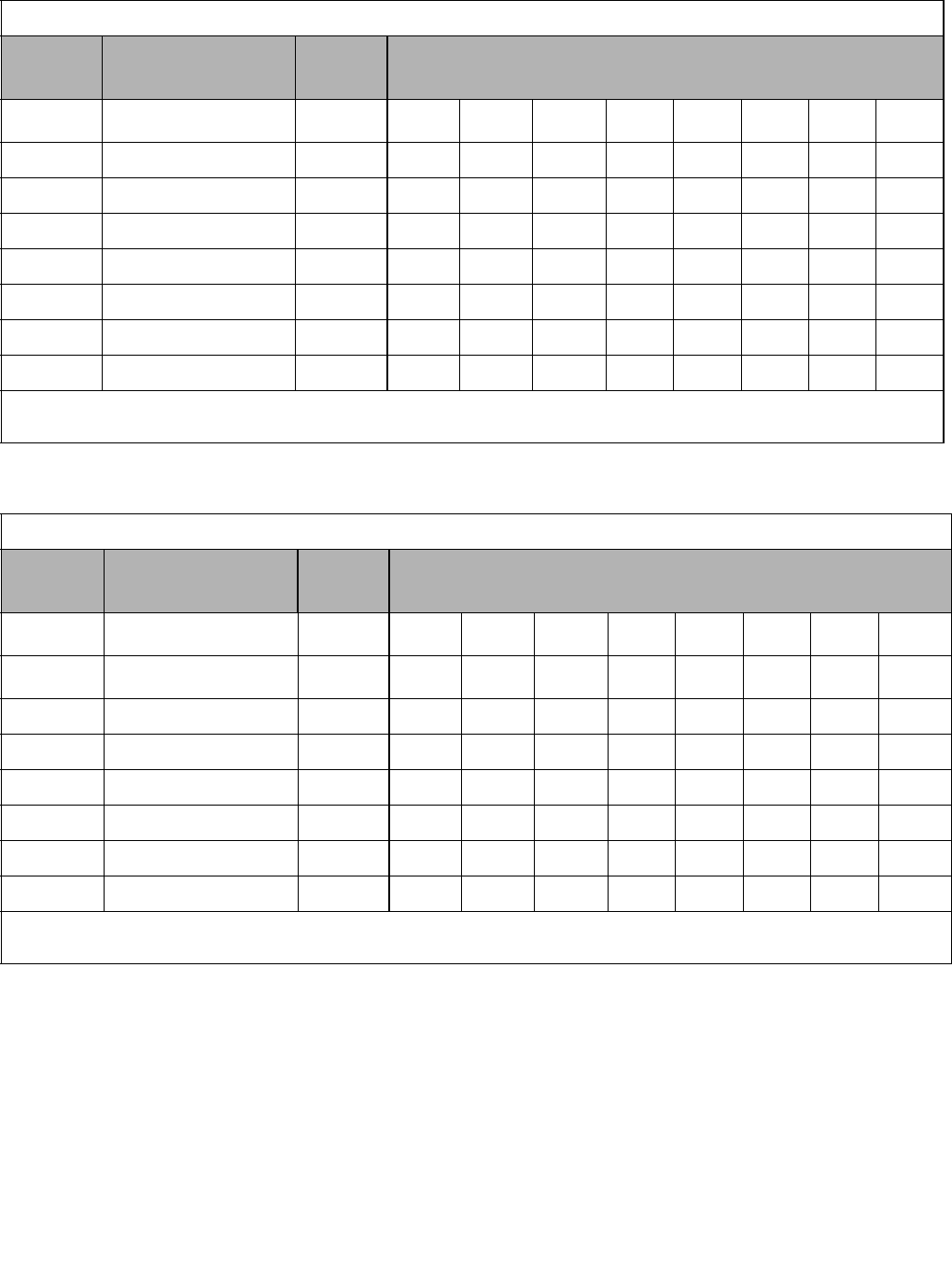
Basic Programming 5 - 16
Tables 5.3 to 5.5 list the factory settings of V/F patterns when V/F without PG or V/F with PG control method is selected
(A1-02 = 0 or 1).
Table 5.3 V/F Pattern for Drive Capacity F7U20P4 - 21P5 for 200V Class
Parameter
No. Name Unit Factory Setting
E1-03V/F Pattern Selection — 0 1 2 34567
E1-04 Max. Output Frequency Hz 50.0 60.0 60.0 72.0 50.0 50.0 60.0 60.0
E1-05 Max. Output Voltage V 230.0 230.0 230.0 230.0 230.0 230.0 230.0 230.0
E1-06 Base Frequency Hz 50.0 60.0 50.0 60.0 50.0 50.0 60.0 60.0
E1-07 Mid. Output Frequency V 2.5 3.0 3.0 3.0 25.0 25.0 30.0 30.0
E1-08 Mid. Output Voltage V 17.2 17.2 17.2 17.2 40.2 57.5 40.2 57.5
E1-09 Min. Output Frequency Hz 1.3 1.5 1.5 1.5 1.3 1.3 1.5 1.5
E1-10 Min. Output Voltage V 10.3 10.3 10.3 10.3 9.2 10.3 9.2 10.3
1. For 400V class units, the voltage values are twice that of 200V class units.
2. These default values are for V/F or V/F with PG control methods (A1-02 = 0 or 1)
Table 5.3 V/F Pattern for Drive Capacity F7U20P4 - 21P5 for 200V Class (continued)
Parameter
No. Name Unit Factory Setting
E1-03 V/F Pattern Selection — 8 9 A B C D E F & FF
E1-04 Max. Output Frequency Hz 50.0 50.0 60.0 60.0 90.0 120.0 180.0 60.0
E1-05 Max. Output Voltage V 230.0 230.0 230.0 230.0 230.0 230.0 230.0 230.0
E1-06 Base Frequency Hz 50.0 50.0 60.0 60.0 60.0 60.0 60.0 60.0
E1-07 Mid. Output Frequency V 2.5 2.5 3.0 3.0 3.0 3.0 3.0 3.0
E1-08 Mid. Output Voltage V 21.8 27.6 21.8 27.6 17.2 17.2 17.2 17.2
E1-09 Min. Output Frequency Hz 1.3 1.3 1.5 1.5 1.5 1.5 1.5 1.5
E1-10 Min. Output Voltage V 12.6 14.9 12.6 17.2 10.3 10.3 10.3 10.3
1. For 400V class units, the voltage values are twice that of 200V class units.
2. These default values are for V/F or V/F with PG control methods (A1-02 = 0 or 1)
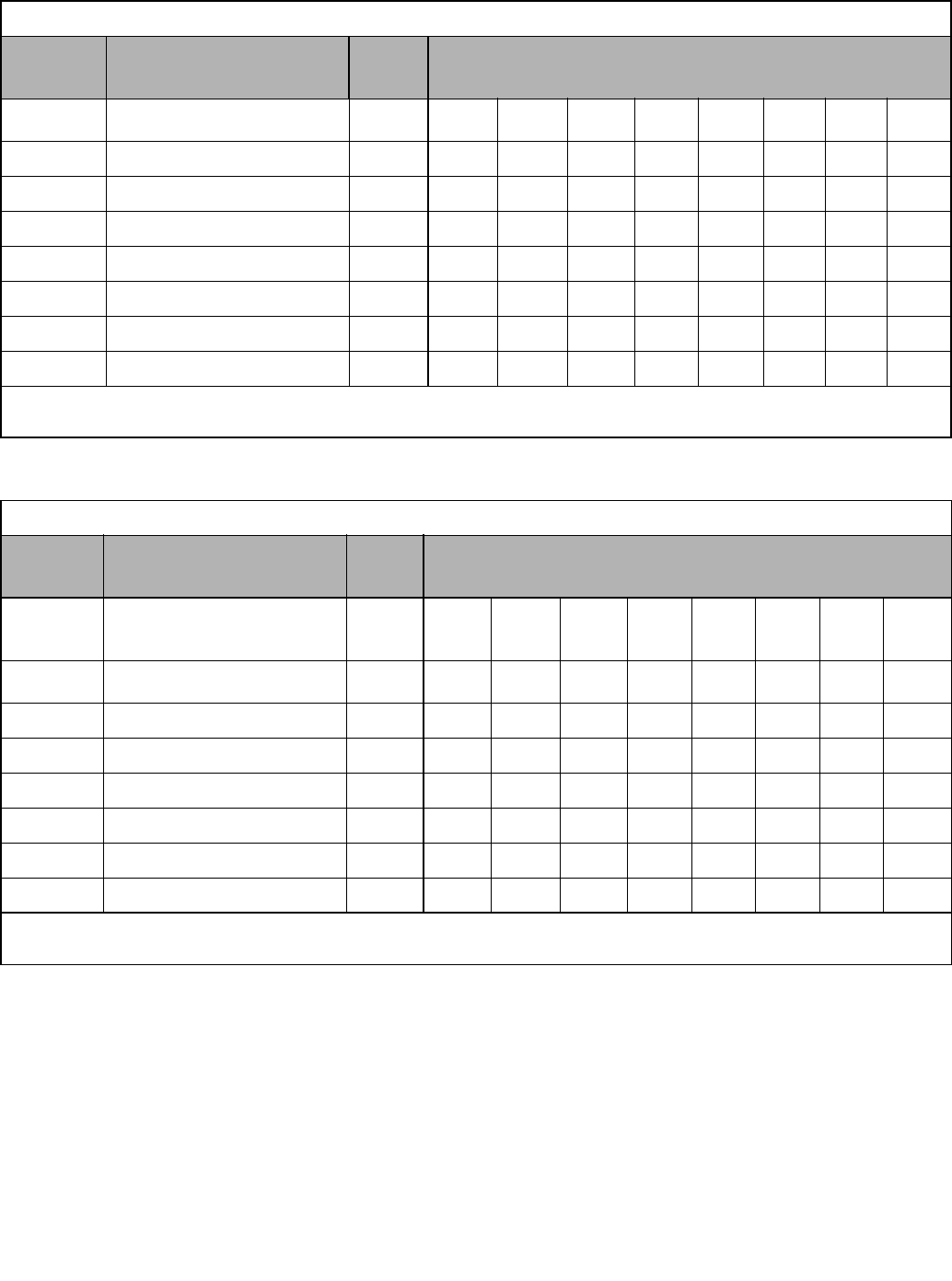
Basic Programming 5 - 17
Table 5.4 V/F Pattern for Drive Capacity F7U22P2 - 2045 for 200V Class
Parameter
No. Name Unit Factory Setting
E1-03 V/F Pattern Selection — 0 1 2 3 4 5 6 7
E1-04 Max. Output Frequency Hz 50.0 60.0 60.0 72.0 50.0 50.0 60.0 60.0
E1-05 Max. Output Voltage V 230.0 230.0 230.0 230.0 230.0 230.0 230.0 230.0
E1-06 Base Frequency Hz 50.0 60.0 50.0 60.0 50.0 50.0 60.0 60.0
E1-07 Mid. Output Frequency V 2.5 3.0 3.0 3.0 25.0 25.0 30.0 30.0
E1-08 Mid. Output Voltage V 16.1 16.1 16.1 16.1 40.2 57.5 40.2 57.5
E1-09 Min. Output Frequency Hz 1.3 1.5 1.5 1.5 1.3 1.3 1.5 1.5
E1-10 Min. Output Voltage V 8.0 8.0 8.0 8.0 6.9 8.0 6.9 8.0
1. For 400V class units, the voltage values are twice that of 200V class units.
2. These default values are for V/F or V/F with PG control methods (A1-02 = 0 or 1)
Table 5.4 V/F Pattern for Drive Capacity F7U22P2 - 2045 for 200V Class (continued)
Parameter
No. Name Unit Factory Setting
E1-03 V/F Pattern Selection — 8 9 A B C D E F &
FF
E1-04 Max. Output Frequency Hz 50.0 50.0 60.0 60.0 90.0 120.0 180.0 60.0
E1-05 Max. Output Voltage V 230.0 230.0 230.0 230.0 230.0 230.0 230.0 230.0
E1-06 Base Frequency Hz 50.0 50.0 60.0 60.0 60.0 60.0 60.0 60.0
E1-07 Mid. Output Frequency V 2.5 2.5 3.0 3.0 3.0 3.0 3.0 3.0
E1-08 Mid. Output Voltage V 20.7 26.4 20.7 26.4 16.1 16.1 16.1 16.1
E1-09 Min. Output Frequency Hz 1.3 1.3 1.5 1.5 1.5 1.5 1.5 1.5
E1-10 Min. Output Voltage V 10.3 12.6 10.3 14.9 8.0 8.0 8.0 8.0
1. For 400V class units, the voltage values are twice that of 200V class units.
2. These default values are for V/F or V/F with PG control methods (A1-02 = 0 or 1)
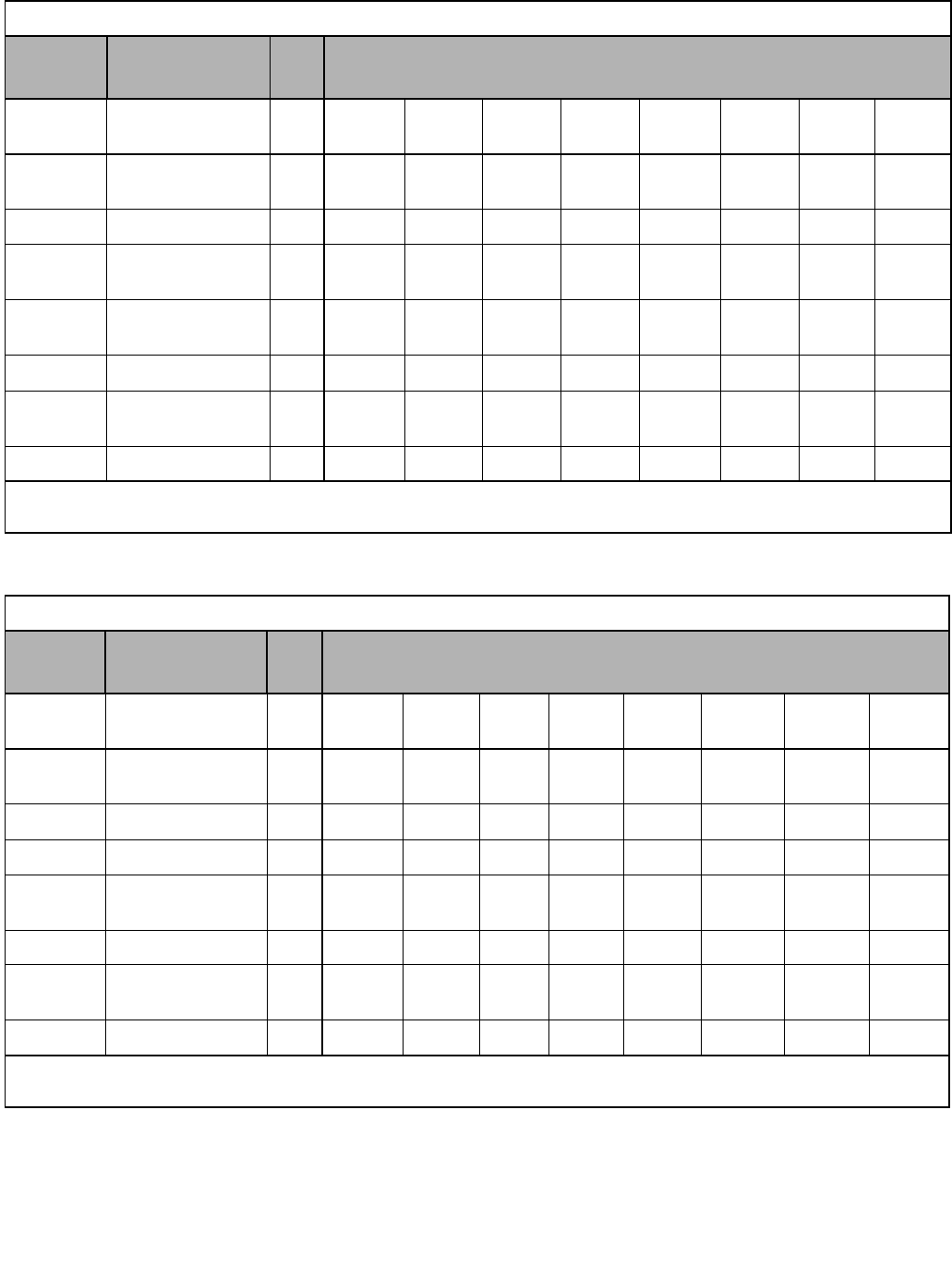
Basic Programming 5 - 18
Table 5.5 V/F Pattern for Drive Capacity F7U2055 and higher for 200V Class
Parameter
No. Name Unit Factory Setting
E1-03 V/F Pattern Selec-
tion –0 1 2 3 4 5 6 7
E1-04 Max. Output
Frequency Hz 50.0 60.0 60.0 72.0 50.0 50.0 60.0 60.0
E1-05 Max. Output Voltage V 230.0 230.0 230.0 230.0 230.0 230.0 230.0 230.0
E1-06 Max. Voltage
Frequency Hz 50.0 60.0 50.0 60.0 50.0 50.0 60.0 60.0
E1-07 Mid. Output
Frequency V 2.5 3.0 3.0 3.0 25.0 25.0 30.0 30.0
E1-08 Mid. Output Voltage V 13.8 13.8 13.8 13.8 40.2 57.5 40.2 57.5
E1-09 Min. Output
Frequency Hz 1.3 1.5 1.5 1.5 1.3 1.3 1.5 1.5
E1-10 Min. Output Voltage V 6.9 6.9 6.9 6.9 5.7 6.9 5.7 6.9
1. For 400V class units, the voltage values are twice that of 200V class units.
2. These default values are for V/F or V/F with PG control methods (A1-02 = 0 or 1)
Table 5.5 V/F Pattern for Drive Capacity F7U2055 and higher for 200V Class (continued)
Parameter
No. Name Unit Factory Setting
E1-03 V/F Pattern Selec-
tion –8 9 AB C D EF & FF
E1-04 Max. Output
Frequency Hz 50.0 50.0 60.0 60.0 90.0 120.0 180.0 60.0
E1-05 Max. Output Voltage V 230.0 230.0 230.0 230.0 230.0 230.0 230.0 230.0
E1-06 Base Frequency Hz 50.0 50.0 60.0 60.0 60.0 60.0 60.0 60.0
E1-07 Mid. Output
Frequency V 2.5 2.5 3.0 3.0 3.0 3.0 3.0 3.0
E1-08 Mid. Output Voltage V 17.2 23.0 17.2 23.0 13.8 13.8 13.8 13.8
E1-09 Min. Output
Frequency Hz 1.3 1.3 1.5 1.5 1.5 1.5 1.5 1.5
E1-10 Min. Output Voltage V 8.0 10.3 8.0 12.6 6.9 6.9 6.9 6.9
1. For 400V class units, the voltage values are twice that of 200V class units.
2. These default values are for V/F or V/F with PG control methods (A1-02 = 0 or 1)
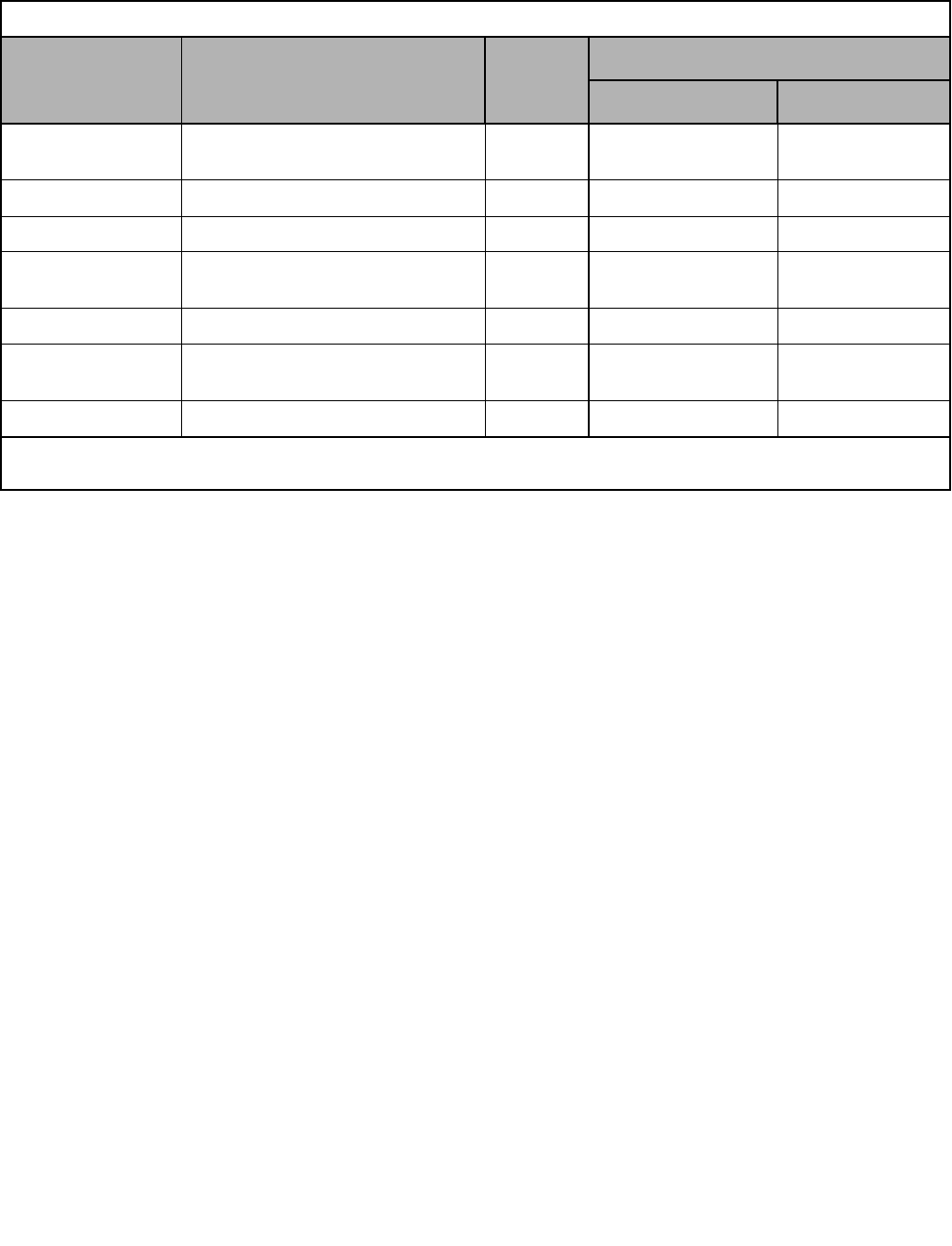
Basic Programming 5 - 19
Table 5.6 lists the factory settings of V/F patterns when open loop vector or flux vector control method is selected
(A1-02 = 2 or 3).
Table 5.6 V/F Pattern for 200V Class Drives
Parameter No. Name Unit
Factory Setting
Open Loop Vector Flux Vector
E1-04 Max. Output
Frequency Hz 60.0 60.0
E1-05 Max. Output Voltage V 230.0 230.0
E1-06 Base Frequency Hz 60.0 60.0
E1-07 Mid. Output
Frequency V3.0 0.0
E1-08 Mid. Output Voltage V 12.6 0.0
E1-09 Min. Output
Frequency Hz 0.5 0.0
E1-10 Min. Output Voltage V 2.3 0.0
1. For 400V class units, the voltage values are twice that of 200V class units.
2. These default values are for open loop vector or flux vector control methods (A1-02 = 2 or 3)
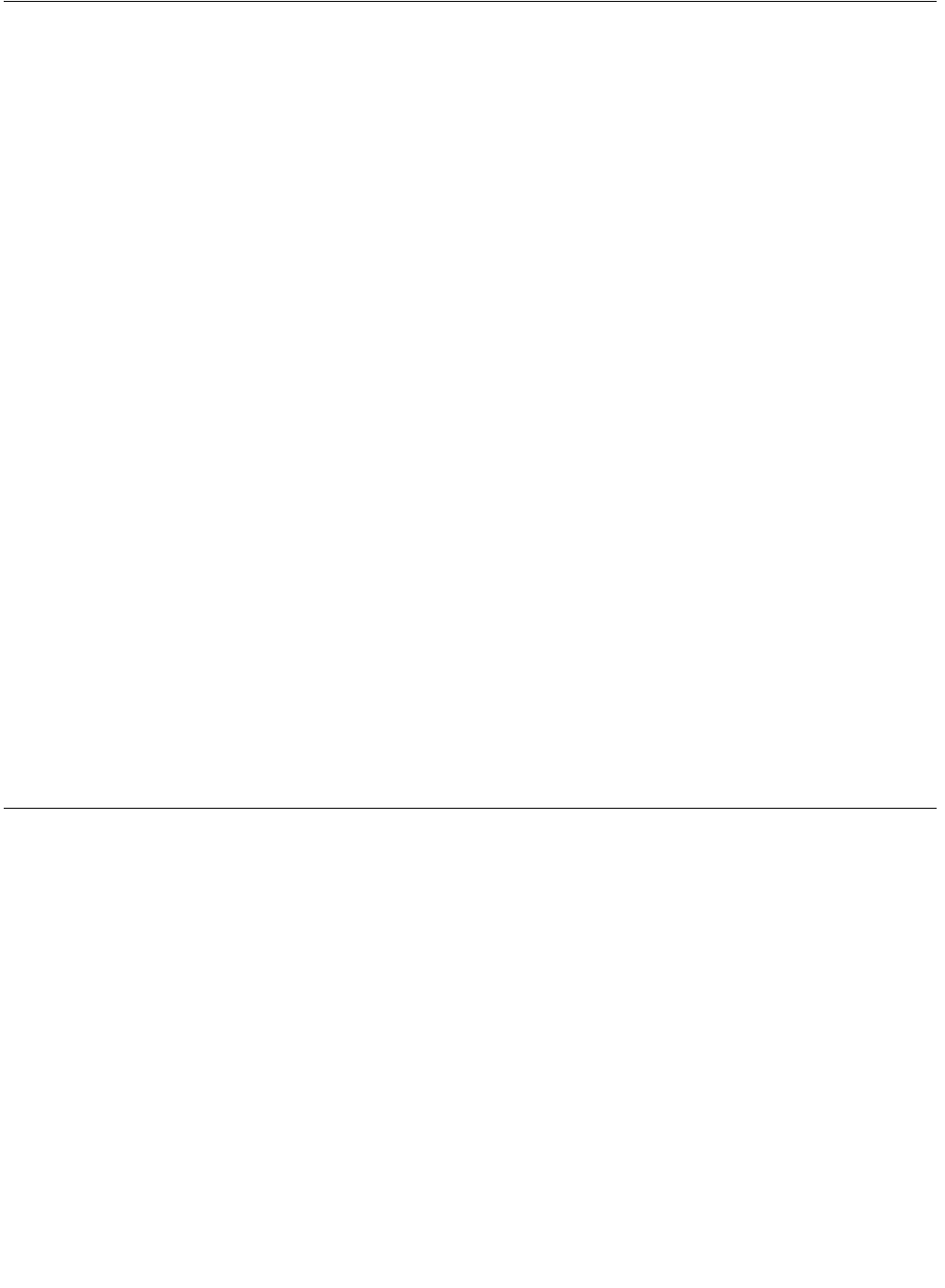
Basic Programming 5 - 20
Motor Setup
E2-01 Motor Rated Current
Setting Range: Model Dependent
Factory Default: Model Dependent
The Motor Rated Current parameter (E2-01) is used by the Drive to protect the motor and for proper Vector control when
using Open Loop Vector or Flux Vector control methods (A1-02 = 2 or 3). The motor protection parameter L1-01 is enabled
by default. Set E2-01 to the full load amps (FLA) stamped on the motor’s nameplate.
During Auto-Tuning, it is required for the operator to enter the motor’s rated current (T1-04) in the Auto-Tuning menu. If the
Auto-Tuning operation completes successfully, the value entered into T1-04 will automatically be written into E2-01.
E2-04 Number of Motor Poles
Setting Range: 2 to 48
Factory Default: 4
This parameter sets the number of motor poles. During Auto-Tuning, it is required for the operator to enter the number of
motor poles (T1-06) in the Auto-Tuning menu. If the Auto-Tuning operation completes successfully, the value entered into
T1-06 will automatically be written into E2-04.
E2-11 Motor Rated Power
Setting Range: 0.00 to 650.00kW
Factory Default: Varies by kVA
This parameter sets the motor rated power is set in kilowatts (kW).
1HP = 0.746kW
During Auto-Tuning, it is required for the operator to enter the motor’s rated power (T1-02) in the Auto-Tuning menu. If the
Auto-Tuning operation completes successfully, the value entered into T1-02 will automatically be written into E2-11.
PG Option
F1-01 PG Pulses / Revolution
Setting Range: 0 to 60000
Factory Default: 1024
If a PG encoder option is used with the Drive, the number of PG pulses per motor revolution (PPR) must be set. During
Auto-Tuning, it is required for the operator to enter the PG pulses per revolution (T1-08) in the Auto-Tuning menu. If the
Auto-Tuning operation completes successfully, the value entered into T1-08 will automatically be written into F1-01.
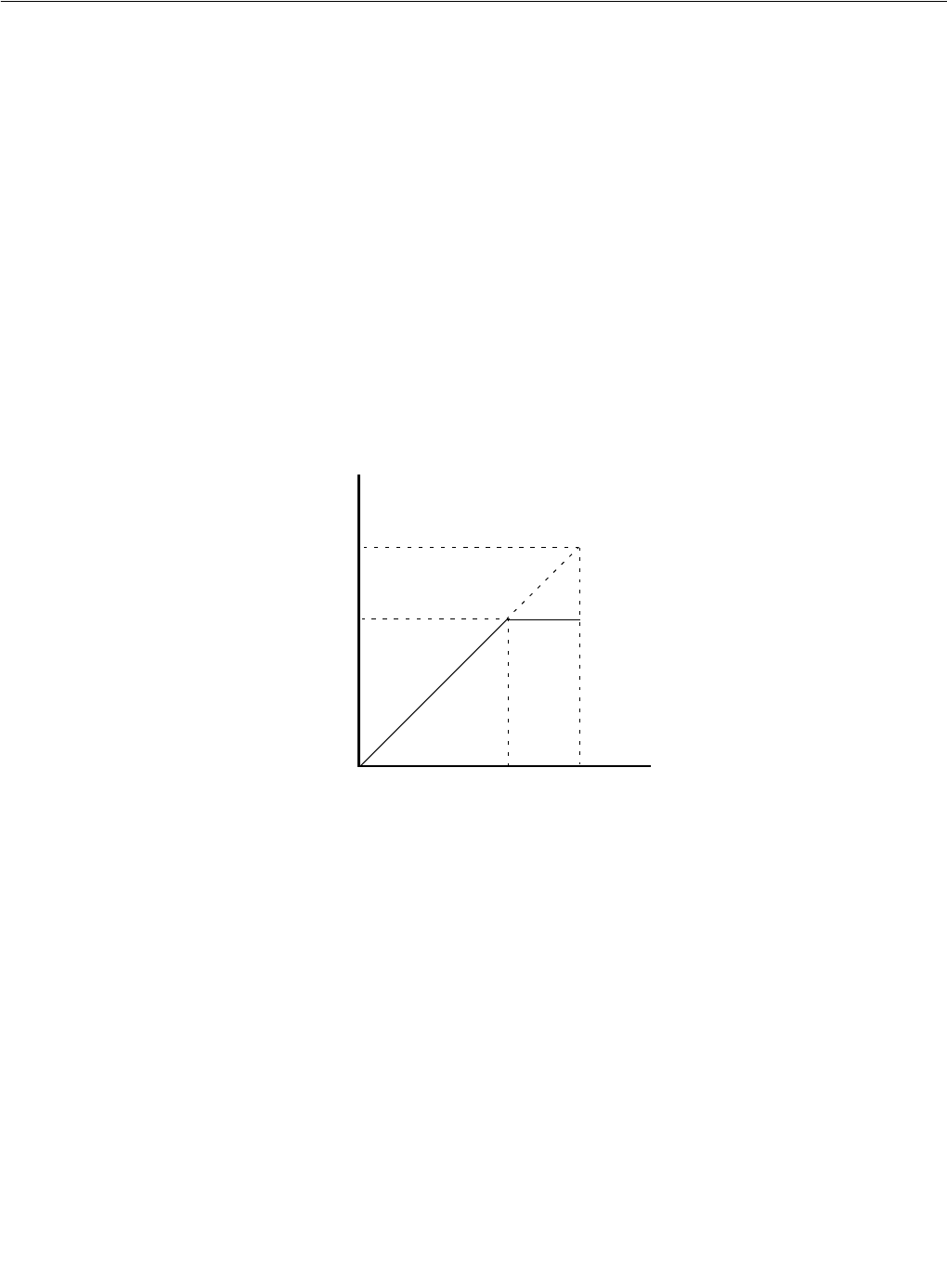
Basic Programming 5 - 21
Analog Output Gain
H4-02 Terminal FM Gain
Setting Range: 0.0 to 1000.0
Factory Default: 100.0%
H4-05 Terminal AM Gain
Setting Range: 0.0 to 1000.0
Factory Default: 50.0%
These parameters set the gains for the analog output terminals FM and AM. The analog outputs are used for external
monitoring of Drive conditions, such as output frequency, output current, PID feedback, and others. To obtain the output level,
multiply the monitor output level by the gain set in H4-02 or H4-05.
For example, if H4-02=150%, then the FM analog output will output 10Vdc when the assigned output function reaches the 67%
level. The analog output has a maximum of 10Vdc.
Fig 5.10 Analog Output Gain Setting Example
Output Function Level (%)
Analog Output Level
0 67 100
10V x 150%
10V
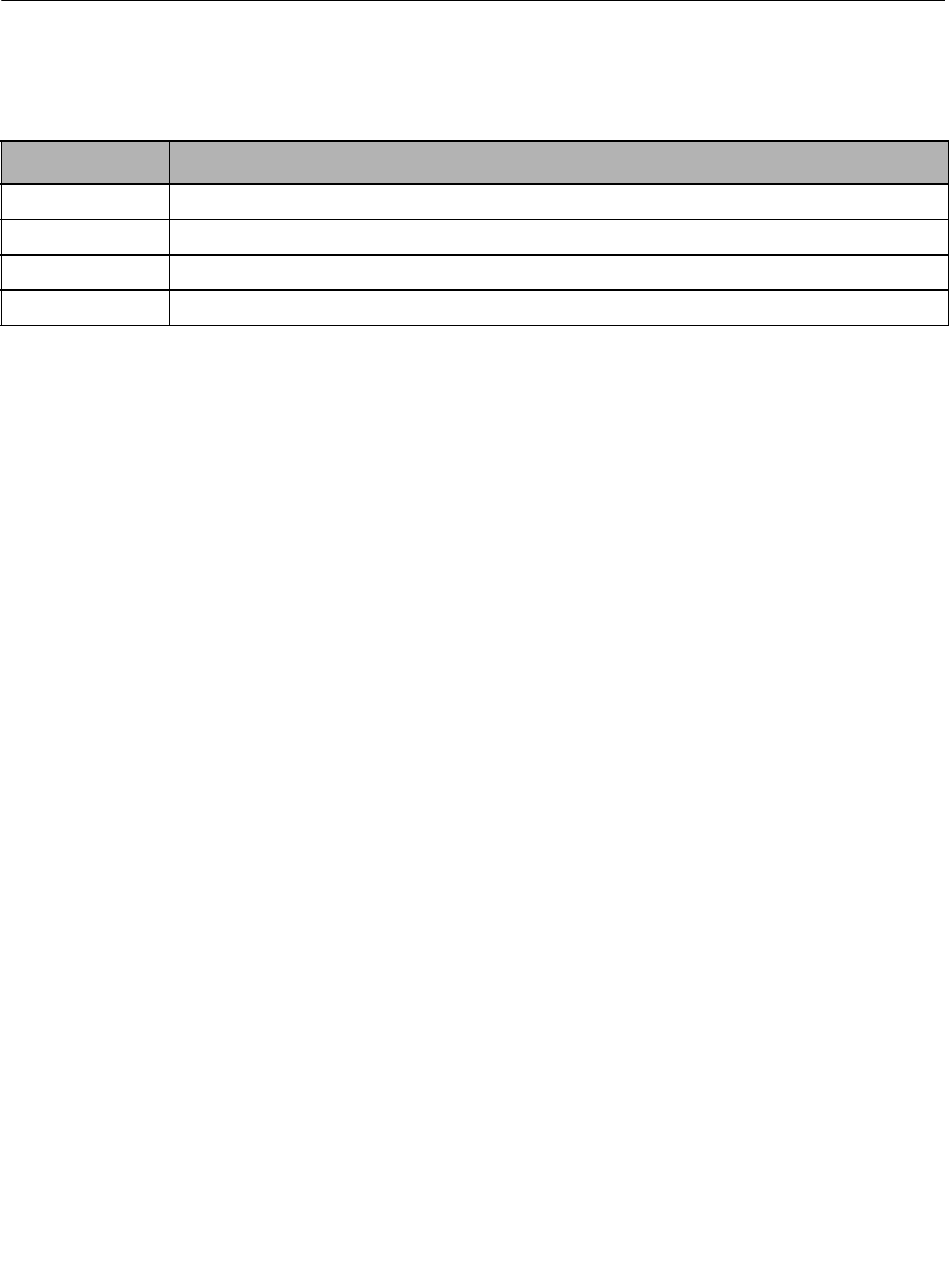
Basic Programming 5 - 22
Motor Overload Fault
L1-01 Motor Overload Fault Selection
The Drive has an electronic overload protection function (OL1) for protecting the motor from overheating. The Drive bases the
protection on time, output current, and output frequency. The electronic thermal overload function is UL-recognized, so an
external thermal overload relay is not required for single motor operation.
This parameter selects the motor overload curve used according to the type of motor applied.
Setting L1-01 = 1 selects a motor with limited cooling capability below rated (base) speed when running at 100% load. The
OL1 function derates the motor any time it is running below base speed.
Setting L1-01 = 2 selects a motor capable of cooling itself over a 10:1 speed range when running at 100% load. The OL1
function derates the motor when it is running at 1/10 of its rated speed or less.
Setting L1-01 = 3 selects a motor capable of cooling itself at any speed when running at 100% load. This includes zero speed.
The OL1 function does not derate the motor at any speed.
If the Drive is connected to a single motor, the motor overload protection should be enabled (L1-01=1, 2, or 3) unless another
means of preventing motor thermal overload is provided. When the electronic thermal overload function is activated, an OL1
fault occurs, shutting OFF the Drive’s output thus preventing additional overheating of the motor. The motor temperature is
continually calculated as long as the Drive is powered up.
When operating several motors with one Drive, install a thermal relay on each motor and disable the motor overload protection
(L1-01=0).
Setting Description
0Disabled
1 Standard Fan Cooled Motor (<10:1 motor) (factory default)
2 Standard Blower Cooled Motor (≥10:1 motor)
3 Vector Motor (≤1000:1 motor)
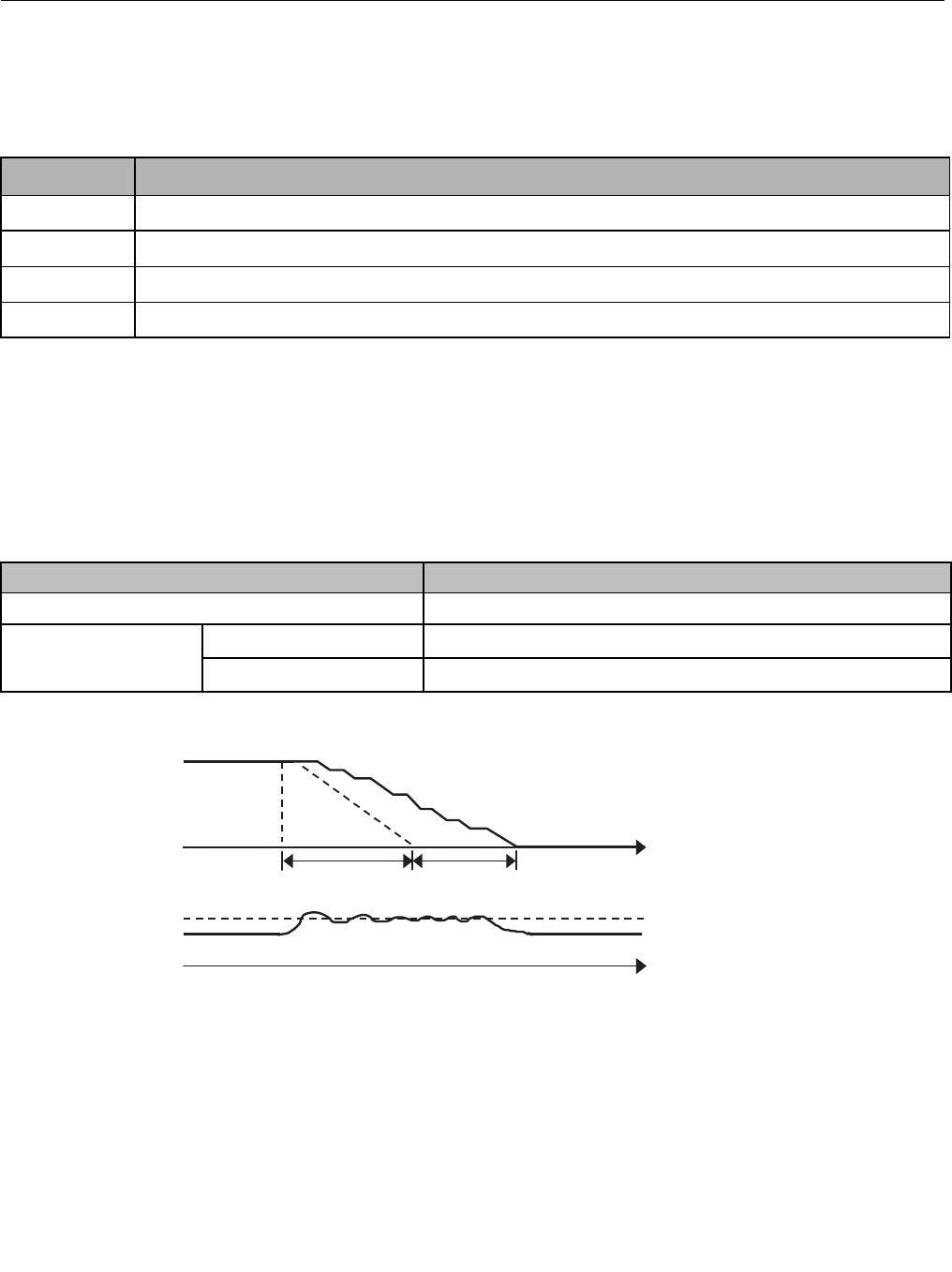
Basic Programming 5 - 23
Stall Prevention
L3-04 Stall Prevention During Deceleration Selection
The stall prevention during deceleration function adjusts the deceleration time in order to prevent OV fault trips during
deceleration. If L3-04=0, stall prevention is disabled, and if the load is large and the deceleration time short enough, the Drive
may fault and stop.
If L3-04=1, the standard stall prevention function is enabled. If, during deceleration, the DC Bus voltage exceeds the stall
prevention level (see table below), the Drive will discontinue decelerating and maintain speed. Once the DC Bus voltage has
dropped below the stall prevention level, deceleration will continue. Fig 5.11 demonstrates deceleration when L3-04=1.
Fig 5.11 Stall Prevention
Setting Description
0 Disabled
1 General purpose (Enabled) (factory default)
2 Intelligent stall prevention (Enabled)
3 Stall prevention with DB resistor (Enabled)
Drive Voltage Stall Prevention Level during Deceleration
240Vac 380Vdc
480Vac E1-01 ≥ 400Vac 760Vdc
E1-01 < 400Vac 660Vdc
ab
Output
Frequency
DC Bus
Voltage
ab
a - Set decel time
b - Decel time is extended
380/660/760Vdc
t
t

Basic Programming 5 - 24
If L3-04=2, the intelligent stall prevention function is enabled. The active deceleration time is used as a starting point and the
Drive will attempt to decelerate as quickly as possible without causing the DC Bus voltage to exceed the stall prevention level.
The fastest time possible is 1/10 the active deceleration time.
If L3-04=3, the stall prevention with braking resistor function is enabled. The DC bus voltage level is controlled during fast
deceleration and allows for a faster than normal deceleration time. Use this setting with a braking resistor when overvoltage
fault (OV) sometimes occurs even under settings 1 or 2.
IMPORTANT In Flux Vector Control Mode (A1-02=3), setting stall prevention with DB resistor (L3-04=3) cannot be done.
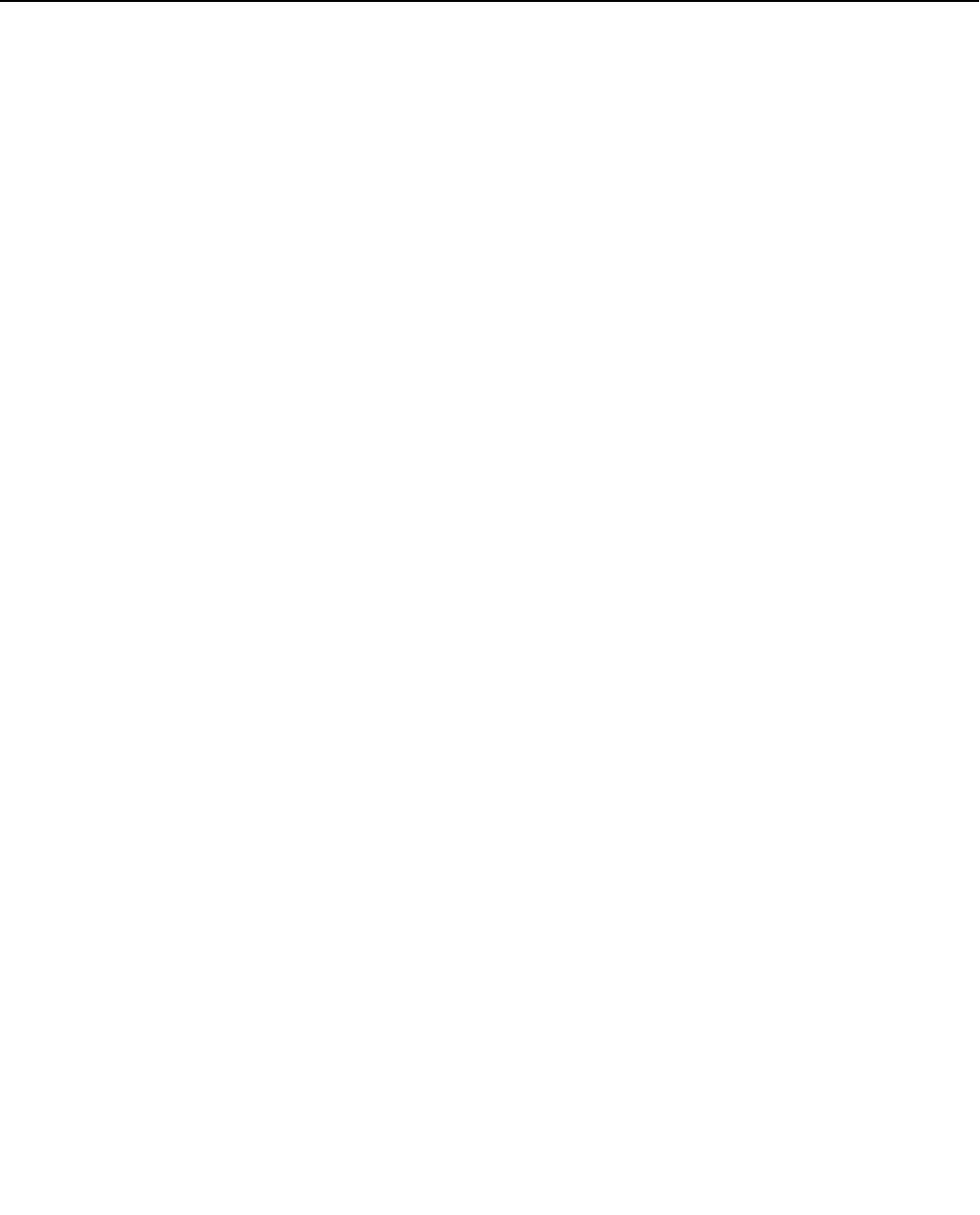
Diagnostics & Troubleshooting 6 - 1
Chapter 6
Diagnostics & Troubleshooting
This chapter describes diagnostics and troubleshooting for the Drive.
Fault Detection............................................................................. 6-2
Alarm Detection.......................................................................... 6-10
Operator Programming Errors (OPE)......................................... 6-15
Auto-Tuning Faults..................................................................... 6-17
Digital Operator COPY Function Faults ..................................... 6-19
Troubleshooting ......................................................................... 6-20
Main Circuit Test Procedure....................................................... 6-28
Drive Date Stamp Information.................................................... 6-31
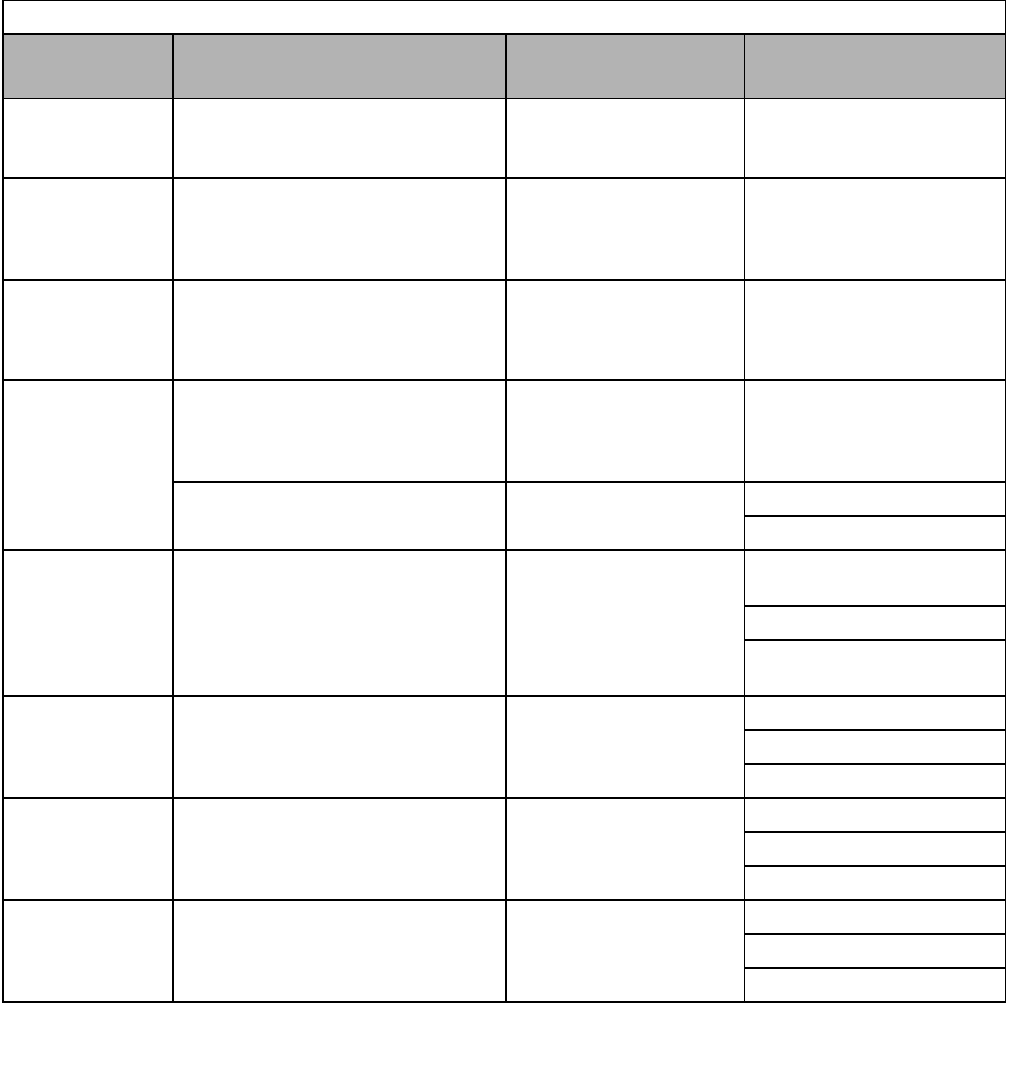
Diagnostics & Troubleshooting 6 - 2
Fault Detection
When the Drive detects a fault, the fault information is displayed on the Digital Operator, the fault contact closes, and the
motor coasts to stop. (However, a fault with selectable stopping method will operate according to the stopping method
selected.)
• If a fault occurs, take appropriate action according to the table by investigating the cause.
• To restart, reset the fault with any of the following procedures:
•Set “14: Fault Reset” to a multi-function digital input (H1-01 to H1-06). Then, close and open the input.
•Press the RESET key of the Digital Operator.
•Shut off the Drive input power, and then turn on again.
Table 6.1 Fault Displays and Processing
Digital
Operator Display Description Cause Corrective Action
BUS
Option Com Err
Option Communication Error
After initial communication was
established, the connection was lost.
Connection was broken and/or
master controller stopped
communicating.
Check all connections and verify
all user-side software
configurations.
CE
Memobus Com Err
Modbus Communication Error
Control data was not received correctly for
two seconds. This fault is detected when
H5-05=1 and H5-04=0 to 2.
Connection was broken and/or
master has stopped
communicating.
Check all connections and verify
all user-side software
configurations.
CF
Out of Control
Control Fault
A torque limit was reached continuously for
3 seconds or longer during a ramp to stop
while in open-loop vector control.
Motor parameters were not set
properly.
Check motor parameters.
Perform Auto-Tuning.
CPF00
COM-ERR(OP&INV)
Operator Communication Fault
Transmission between the Drive and the
Digital Operator was not established within
5 seconds after supplying power.
Digital Operator cable was not
securely connected, Digital
Operator defective, and/or
control board defective.
Remove the Digital Operator, and
then reinstall it.
External RAM of CPU was defective. Control circuit was damaged. Cycle power to the Drive.
Replace the control board.
CPF01
COM-ERR(OP&INV)
Operator Communication Fault
After communication started with the
Digital Operator, communication stopped
for 2 seconds or more.
Digital Operator cable was not
securely connected, Digital
Operator defective, and/or
control board defective.
Remove the Digital Operator
once and then reinstall it.
Cycle power to the Drive.
Replace the Digital Operator and/
or the control board.
CPF02
BB Circuit Err Baseblock Circuit Fault
Baseblock circuit fault at power-up.
Gate array hardware failure
during power-up.
Perform a factory initialization.
Cycle power to the Drive.
Replace the control board.
CPF03
EEPROM Error EEPROM Fault
Check sum was not valid.
Noise or spike was on the
control circuit input terminals.
Perform factory initialization.
Cycle power to the Drive.
Replace the control board.
CPF04
Internal A/D Err CPU Internal A/D Converter Fault Noise or spike was on the
control circuit input terminals.
Perform factory initialization.
Cycle power to the Drive.
Replace the control board.
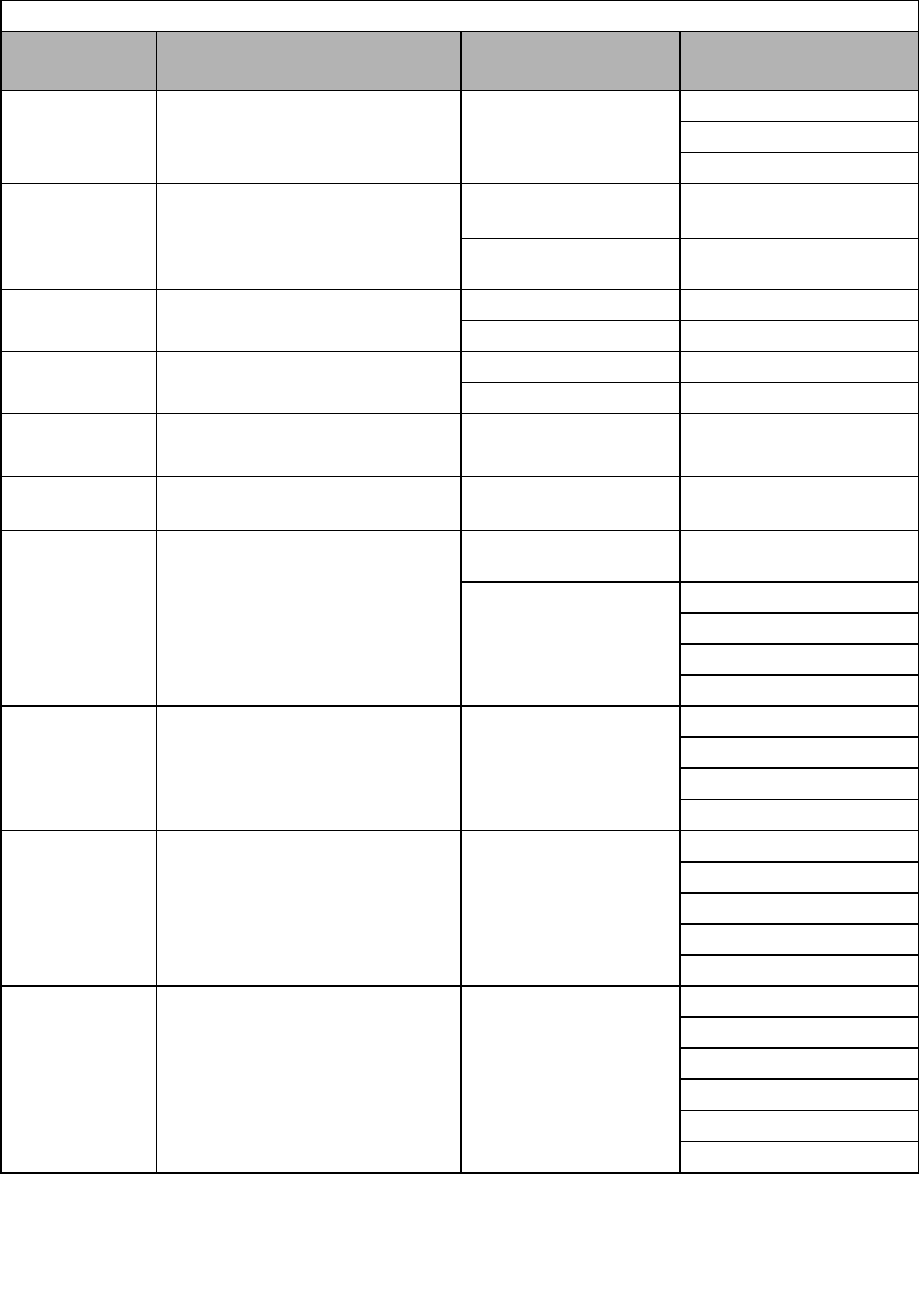
Diagnostics & Troubleshooting 6 - 3
Table 6.1 Fault Displays and Processing (continued)
Digital
Operator Display Description Cause Corrective Action
CPF05
External A/D Err External A/D Converter Fault Noise or spike was on the
control circuit input terminals.
Perform a factory initialization.
Cycle power to the Drive.
Replace the control board.
CPF06
Option Error Option Board Connection Error
The option board was not
connected properly.
Turn off the power and reinstall
the option board.
The Drive or option board was
damaged.
Replace the option board or the
Drive.
CPF07
RAM-Err ASIC Internal RAM Fault Control circuit failure/damage. Cycle power to the Drive.
Control circuit damage. Replace the Drive.
CPF08
WAT-Err Watchdog Timer Fault Control circuit failure/damage. Cycle power to the Drive.
Control circuit damage. Replace the Drive.
CPF09
CPU-Err CPU-ASIC Mutual Diagnosis Fault Control circuit failure/damage. Cycle power to the Drive.
Control circuit damage. Replace the Drive.
CPF10
ASIC-Err ASIC Version Fault Control circuit damage. Replace the Drive.
CPF20
Option A/D Error Option Card Fault
Option board input fault. Remove all inputs to the option
board.
Option card A/D convert fault.
Perform a factory initialization.
Cycle power to the Drive.
Replace the option board.
Replace the control board.
CPF21
Option CPU Down Self-diagnosis Fault of Option Board Noise or spike was on the
communication line and/or
defective option board.
Perform a factory initialization.
Cycle power to the Drive.
Replace the option board.
Replace the control board.
CPF22
Option Type Err Option Board Code Number Fault Unrecognizable option board
was connected to the control
board.
Remove any option boards.
Cycle power to the Drive.
Perform a factory initialization.
Replace the option board.
Replace the control board.
CPF23
Option DPRAM Err Option Board Interconnection Fault
An option board was not
correctly connected to the
control board, or an option
board that was not made for
the Drive was attached to the
control board.
Remove power to the Drive.
Reconnect the option board.
Perform a factory initialization.
Cycle power to the Drive.
Replace the option board.
Replace the control board.
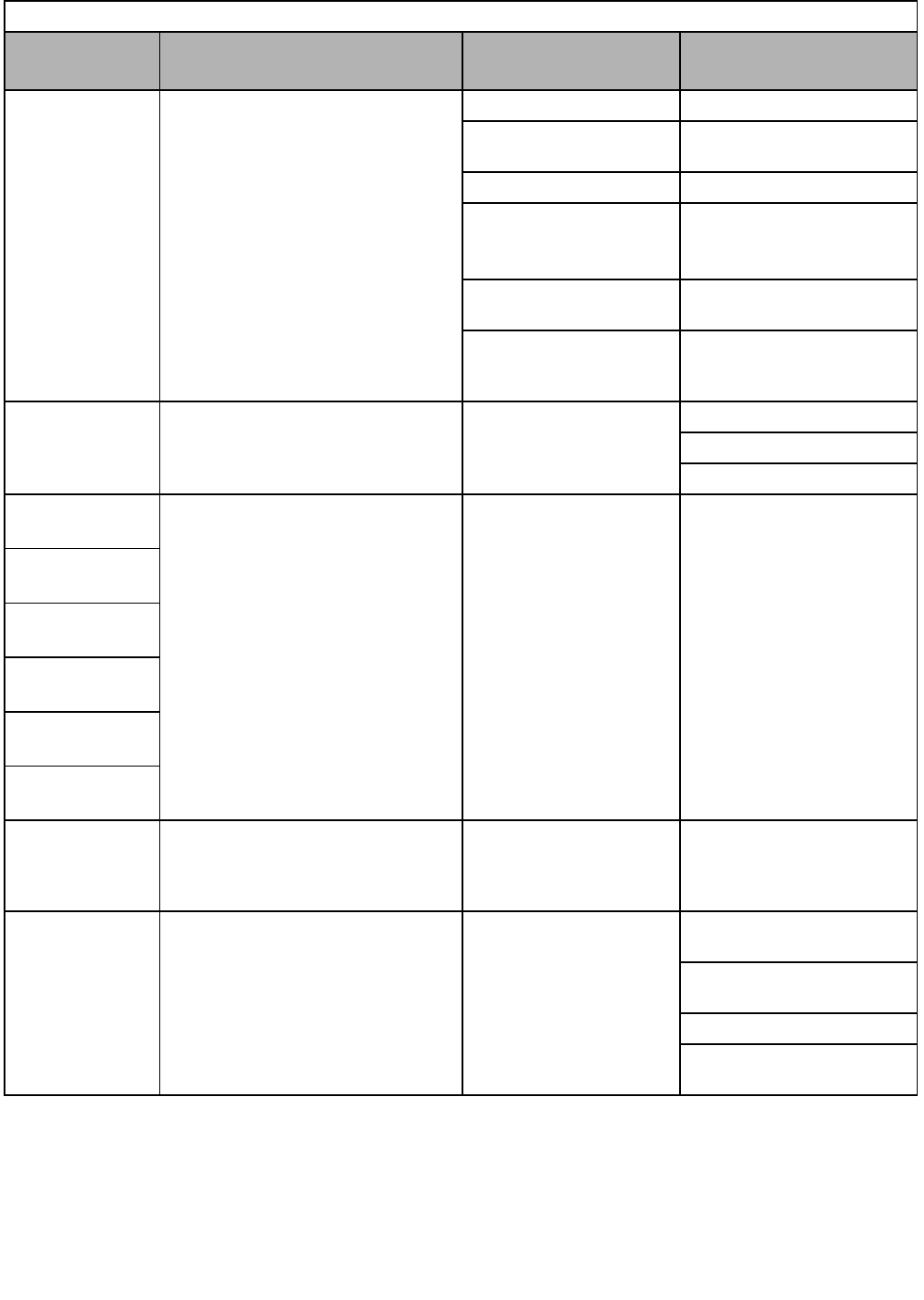
Diagnostics & Troubleshooting 6 - 4
Table 6.1 Fault Displays and Processing (continued)
Digital
Operator Display Description Cause Corrective Action
DEV
Speed Deviation
Excessive Speed Deviation
Detected when F1-04 = 0 to 2 and in Flux
Vector control method A1-02 = 3.
The speed deviation is greater than the
setting in F1-10 for a time longer than the
setting in F1-11.
The load is locked. Reduce the load.
The acceleration or
deceleration time is too short.
Lengthen the acceleration time
and deceleration time.
The load is too large. Check the mechanical system.
The settings in F1-10 and
F1-11 are not appropriate for
the application.
Check the settings in F1-10 and
F1-11.
Braking mechanism is
engaged
Check that the brake is released
when using brake (motor).
Encoder wiring and/or encoder
settings (F1 group) are
incorrect
Check for proper encoder wiring
and verify the parameter settings
are correct.
EF0
Opt External Flt Option Board External Fault An external fault condition is
present.
Check for an external condition.
Verify the parameters.
Verify communication signal.
EF3
Ext Fault S3
External Fault at Terminal S3 - S8
Detected when terminals S3 - S8 (H1-01 to
H1-06) are programmed for external fault
function that stops the Drive using ramp to
stop, coast to stop, or fast stop.
An external fault condition is
present that is connected to a
multi-function digital input.
Eliminate the cause of the
external fault condition.
EF4
Ext Fault S4
EF5
Ext Fault S5
EF6
Ext Fault S6
EF7
Ext Fault S7
EF8
Ext Fault S8
E5
SI-T WDT Err
<3021>
SI-T Watchdog Error
Consistency error of received control data.
Synchronization error between
master controller and Drive for
control data.
Check the communications
timing such as communications
cycle.
Refer to SI-T manual for details.
E-15
SI-F/G Com Err
SI-F/G Communication Error Detected
A communication error is detected when a run
command or frequency reference is set from
the SI-F/G Option Card (b1-01=3, b1-02=3)
and communication is lost.
Communication has been lost
to the SI-F/G option card
connected and b1-01=3 and/or
b1-02=3.
Check the communication
signals.
Check the settings of b1-01 and
b1-02.
Check the setting of F6-01.
Check the host side (master)
communication configuration.
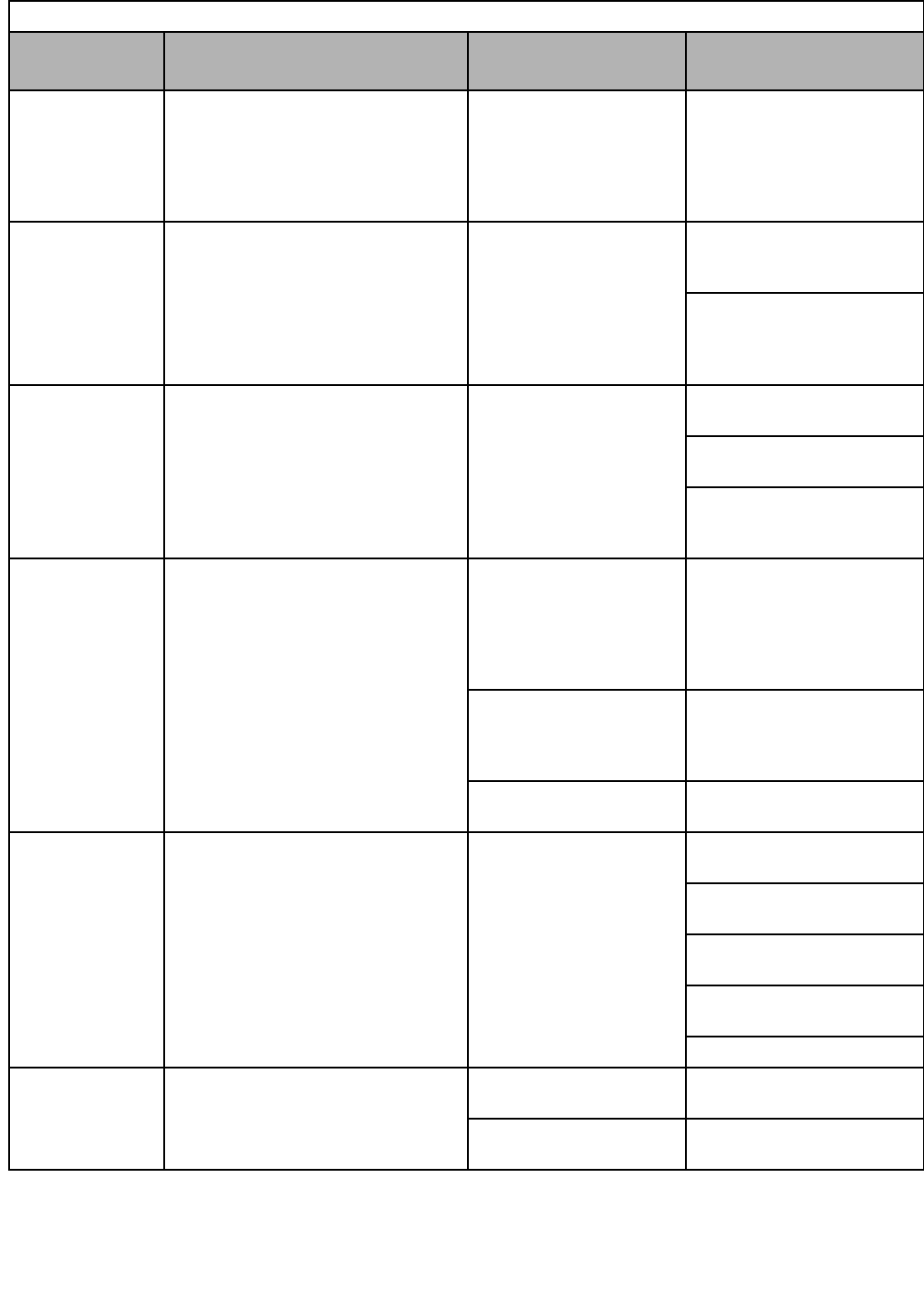
Diagnostics & Troubleshooting 6 - 5
Table 6.1 Fault Displays and Processing (continued)
Digital
Operator Display Description Cause Corrective Action
FAN
Cooling FAN Err
<3021>
Drive’s Cooling Fan Fault
A Drive’s cooling fan fault was detected,
and the Drive overload protection was
activated based on the internal electric
thermal value.
This fault is detected when L8-32 is set to 1.
The Drive continued running
with an overload after the
cooling fan stopped.
Replace the cooling fan.
FBL
Feedback Loss
PID Feedback Loss
This fault occurs when PID Feedback Loss
Detection is programmed to fault
(b5-12 = 2) and the PID Feedback < PID
Feedback Loss Detection Level (b5-13) for
the PID Feedback Loss Detection Time
(b5-14).
PID feedback source
(e.g. transducer, sensor,
building automation signal) is
not installed correctly or is not
working.
Verify Drive is programmed to
receive the PID feedback source
signal.
Check to ensure the PID feedback
source is installed and working
properly.
GF
Ground Fault
Output Ground Fault
Drive output grounding current has
exceeded 50% of the Drive rated output
current and L8-09 = 1 (enabled).
Motor lead was shorted to
ground and/or a DCCT was
defective.
Remove the motor and run the
Drive without the motor.
Check the motor for a phase to
ground short.
Check the output current with a
clamp on meter to verify the
DCCT reading.
LF
Output Phase Loss
Output Open-phase
An open-phase occurred at the Drive output
This fault is detected when output current
has exceeded 5% imbalance and L8-07 = 1
(enabled).
There was a broken wire in the
output cable.
There was a broken wire in the
motor winding.
The output terminals were
loose.
Check the wiring to the motor.
Check the motor for phase to
ground short.
The motor being used has a
capacity less than 5% of the
Drive’s maximum motor
capacity.
Check the motor and Drive
capacity.
Low impedance motor was
used. Add additional impedance.
OC
Over Current
Overcurrent
Drive output current exceeded the
overcurrent detection level (approximately
200% of Drive rated output current).
Shorted Drive output phase to
phase, shorted motor, locked
rotor, load too heavy, accel/
decel time too short, contactor
on the Drive output is opened
or closed, a special motor or a
motor with a FLA rating larger
than Drive rated output
current.
Remove the motor and run the
Drive without the motor.
Check the motor for a phase-to-
phase short.
Check the Drive for a phase-to-
phase short at the output.
Verify C1-01 and C1-02 are set
correctly.
Check load conditions.
OH
Heatsink Overtemp
Heatsink Overheat
The temperature of the Drive’s heatsink
exceeded the setting in L8-02 and
L8-03 = 0 to 2.
There was a heat source
nearby.
Check for dirt build-up on the
fans and heatsink.
The ambient temperature was
too high.
Reduce the ambient temperature
around the Drive.
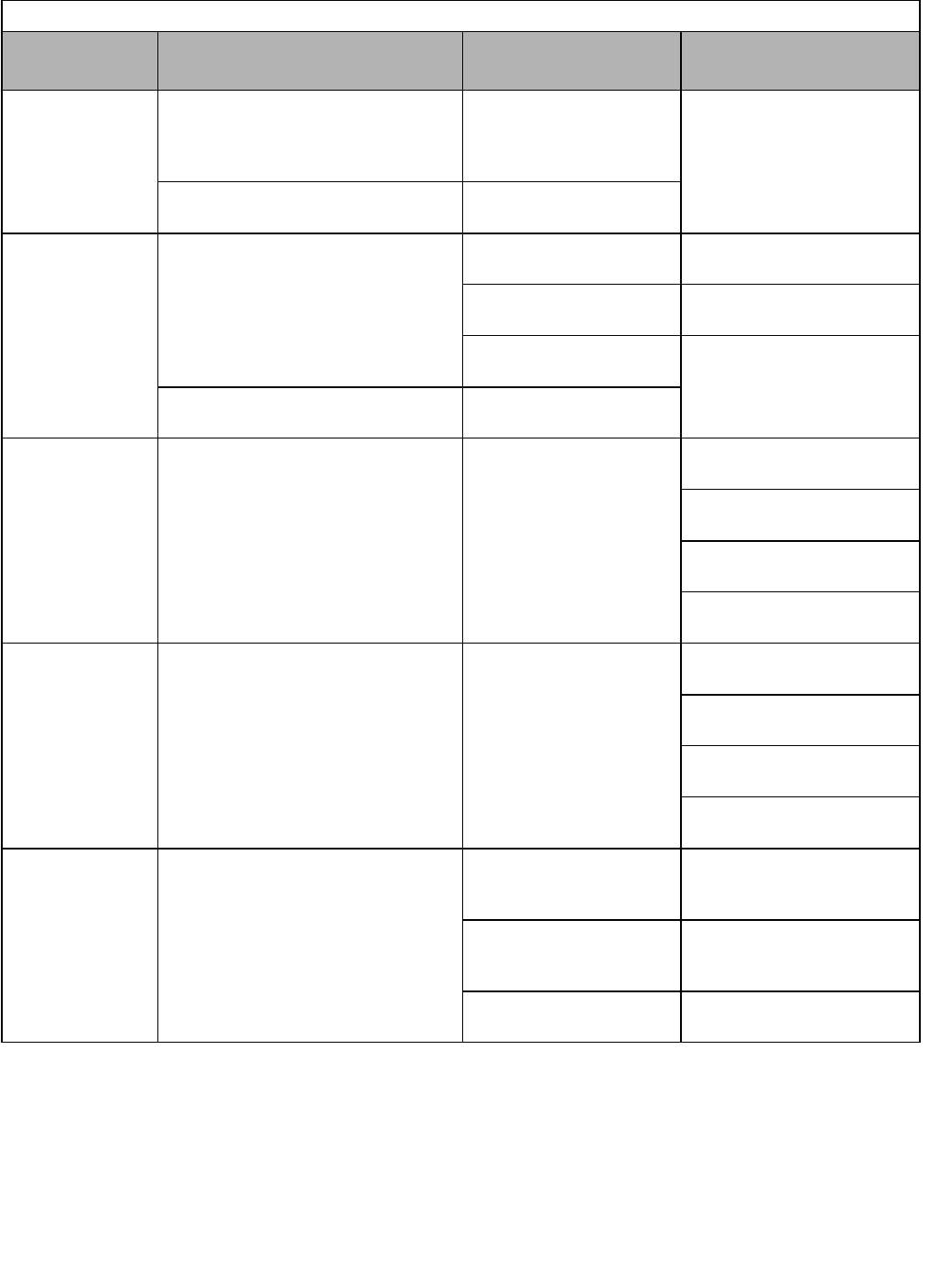
Diagnostics & Troubleshooting 6 - 6
Table 6.1 Fault Displays and Processing (continued)
Digital
Operator Display Description Cause Corrective Action
OH
Heatsink Overtemp
(Continued)
Heatsink Overheat
The temperature of the Drive’s heatsink
exceeded the setting in L8-02 and
L8-03 = 0 to 2.
The Drive’s cooling fan(s)
stopped. Replace the cooling fan.
Drive’s internal cooling fan stopped
(F7U2018 / F7U4018 and larger).
The Drive’s internal cooling
fan(s) stopped.
OH1
Heatsink Max Temp
Heatsink Overheat
The temperature of the Drive’s heatsink
exceeded 105 degrees C.
There was a heat source
nearby.
Check for dirt build-up on the
fans and heatsink.
The ambient temperature was
too high.
Reduce the ambient temperature
around the Drive.
The Drive’s cooling fan(s)
stopped. Replace the cooling fan.
Drive’s internal cooling fan stopped
(F7U2011 / F7U4011 and larger capacities).
The Drive’s internal cooling
fan(s) stopped.
OH3
Motor Overheat 1
Motor Overheating 1
Detected when A2 or A3, programmed for
motor temperature (H3-09 or H3-05 = E),
exceeds 1.17V for time L1-05 and
L1-03 = 0 to 2.
Overheating of motor as
measured by the motor
thermistor.
Recheck the cycle time and the
size of the load.
Recheck the accel/decel time
(C1-01 and C1-02).
Recheck the V/F pattern (E1-01
thru E1-13).
Recheck the motor rated current
value (E2-01).
OH4
Motor Overheat 2
Motor Overheating 2
Detected when A2 or A3, programmed for
motor temperature (H3-09 or H3-05 = E),
exceeds 2.34V for time L1-05 and
L1-03 = 0 to 2.
Overheating of motor as
measured by the motor
thermistor.
Recheck the cycle time and the
size of the load.
Recheck the accel/decel time
(C1-01 and C1-02).
Recheck the V/F pattern (E1-01
thru E1-13).
Recheck the motor rated current
value (E2-01).
OL1
Motor Overloaded
Motor Overload
Detected when L1-01 = 1 to 3 and the
Drive’s output current exceeded the motor
overload curve.
The overload curve is adjustable using
parameter E2-01, L1-01, and L1-02.
The load was too large. The
cycle time was too short at the
accel/decel time.
Recheck the cycle time and the
size of the load as well as the
times set in C1-01 and C1-02
The voltage of the V/F
pattern was incorrect for the
application.
Review the V/F pattern
parameters, E1-01 thru E1-13.
Motor rated current setting
was improper.
Check the motor rated current
value in E2-01.
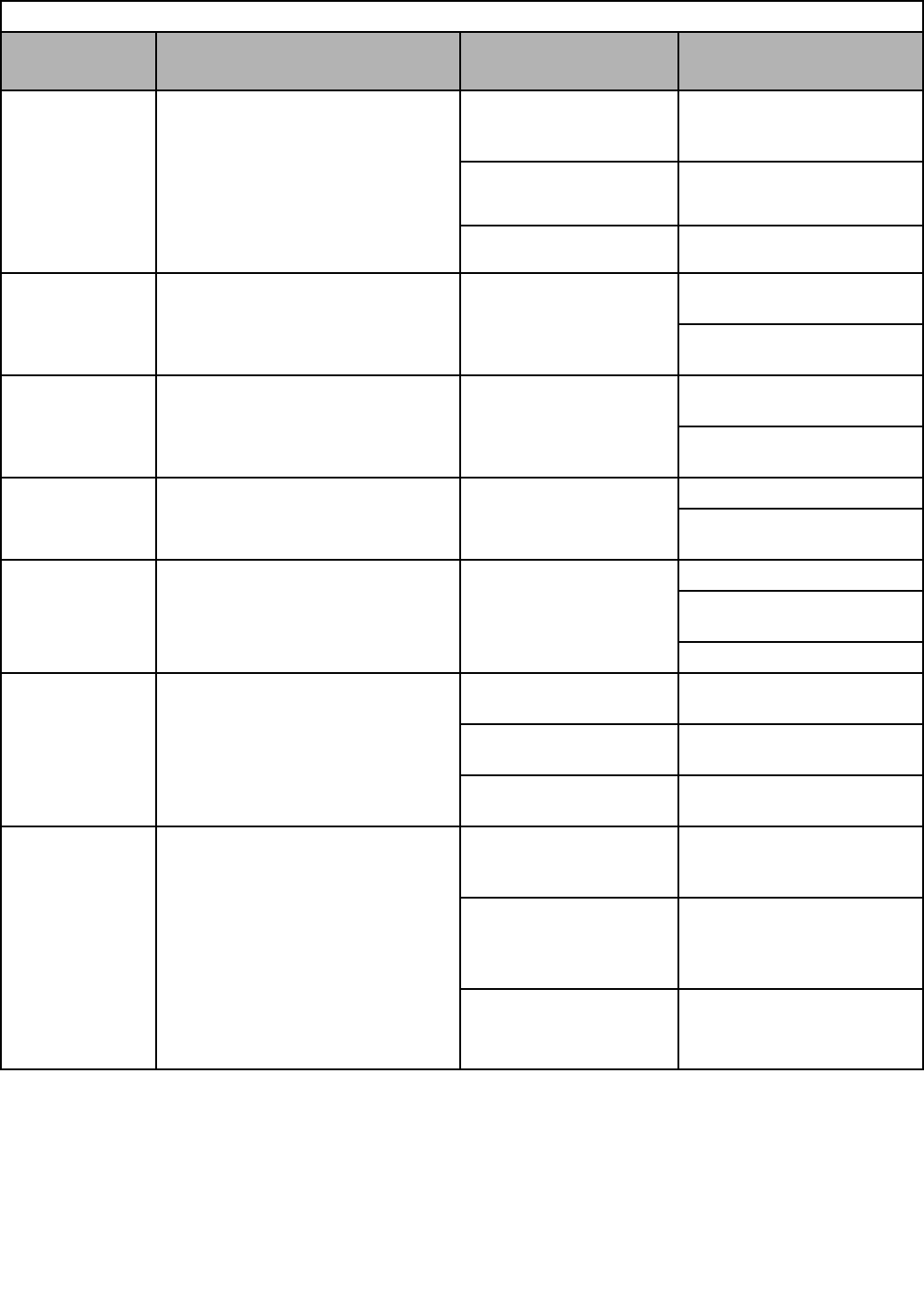
Diagnostics & Troubleshooting 6 - 7
Table 6.1 Fault Displays and Processing (continued)
Digital
Operator Display Description Cause Corrective Action
OL2
Inv Overload
Drive Overload
The Drive output current exceeded the
Drive’s overload curve.
The load was too large, or the
accel/decel times are too short.
Recheck the cycle time and the
size of the load as well as the times
set in C1-01 and C1-02.
The voltage of the V/F pattern
was incorrect for the
application.
Review the V/F pattern
parameters, E1-01 thru E1-13.
The size of the Drive was too
small. Change to a larger size Drive.
OL3
Overtorque Det 1
Overtorque Detection 1
Drive output current > L6-02 for more than
the time set in L6-03 and L6-01 = 3 or 4. Motor was overloaded.
Ensure the values in L6-02 and L6-
03 are appropriate.
Check application/machine status
to eliminate fault.
OL4
Overtorque Det 2
Overtorque Detection 2
Drive output current > L6-05 for more than
the time set in L6-06 and L6-04 = 3 or 4. Motor was overloaded.
Ensure the values in L6-05 and L6-
06 are appropriate.
Check application/machine status
to eliminate fault.
OL7
HSB OL
High Slip Braking OL
The output frequency stayed constant for
longer than the time set in n3-04 during
high slip braking.
The inertia of the load is too
large.
Make sure the load is an inertial.
If possible, reduce the load
inertia.
OPR
Oper Disconnect
Digital Operator Connection Fault
Detected when the Digital Operator is
removed and the Drive is commanded to
run through the Digital Operator
(b1-02 = 0).
The Digital Operator was not
attached, or the Digital
Operator connector was
broken.
Attach the Digital Operator.
Check the Digital Operator
connector.
Verify the setting of o2-06.
OS
Overspeed Det
Motor Overspeed
Detected when F1-03 = 0 to 2 and
A1-02 = 1 or 3.
The motor speed feedback (U1-05)
exceeded the setting in F1-08 for a longer
time than the setting in F1-09.
Overshooting/Undershooting
was occurring. Adjust the ASR settings in the C5
parameter group.
The reference was too high. Check the reference circuit and
reference gain.
The settings in F1-08 and
F1-09 are not appropriate. Check the settings in F1-08 and
F1-09.
OV
DC Bus Overvolt
DC Bus Overvoltage
The DC bus voltage has exceeded the trip
point.
208-240Vac: Trip point is 410Vdc
480Vac: Trip point is 820Vdc
High input voltage at R/L1,
S/L2 and T/L3.
Check the input circuit and reduce
the input power to within
specifications.
The deceleration time is set
too short.
Extend the time in C1-02 or other
active decel settings used such as
C1-04, C1-06, C1-08, or C1-09
(time).
Power factor correction
capacitors are being used on
the input or output to the
Drive.
Remove the power factor
correction capacitors.
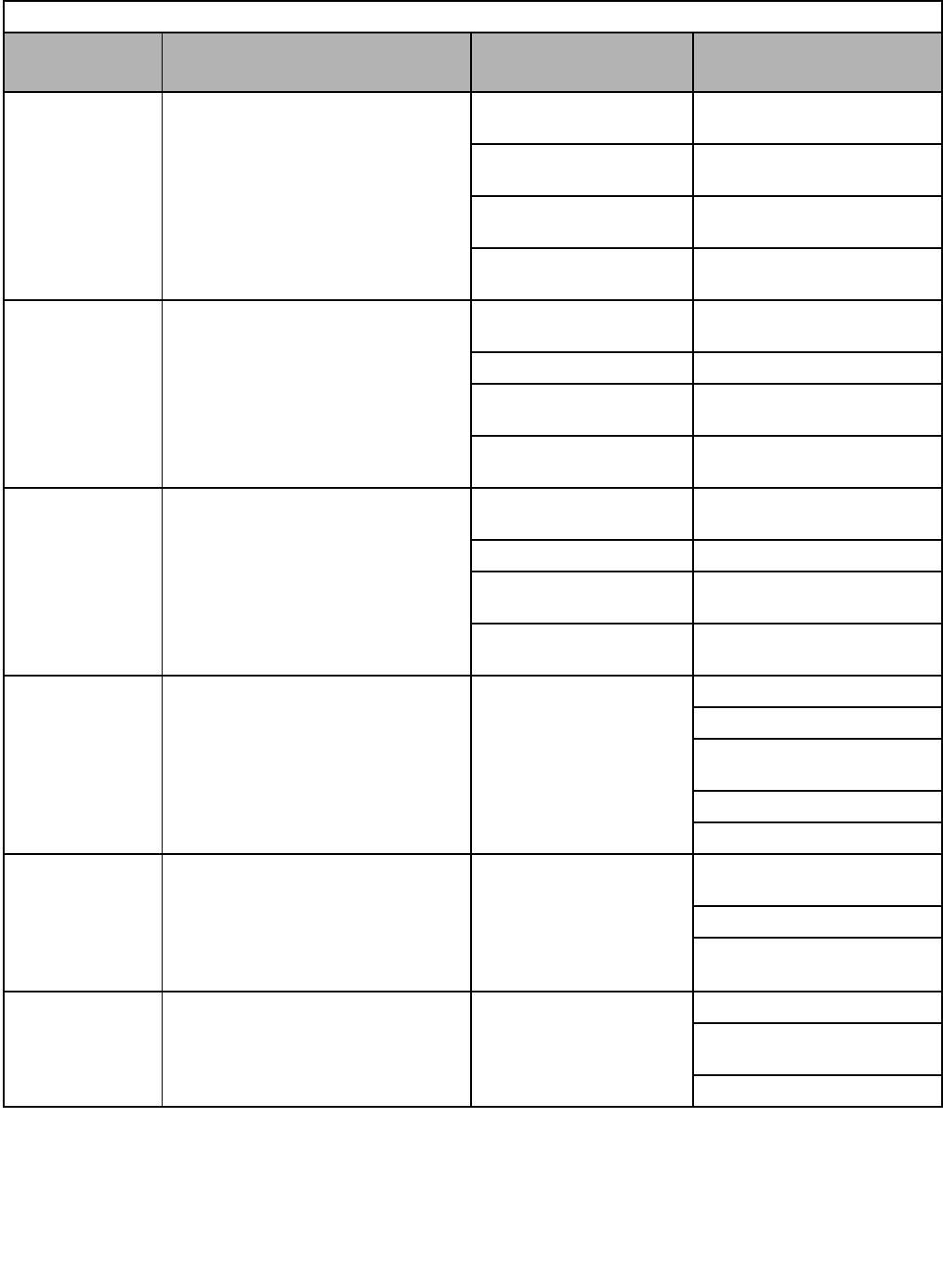
Diagnostics & Troubleshooting 6 - 8
Table 6.1 Fault Displays and Processing (continued)
Digital
Operator Display Description Cause Corrective Action
PF
Input Pha Loss
Input Phase Loss
Drive input power supply has an open phase
or has a large imbalance of voltage.
Detected when L8-05 = 1 (enabled).
Open phase on the input of the
Drive. Check the input voltage.
Loose terminal screws at
R/L1, S/L2 or T/L3. Tighten the terminal screws.
Momentary power loss
occurred. Check the input voltage.
Input voltage fluctuation too
large. Check the input voltage.
PGO
PG Open
PG Disconnection (Detection with
Software)
Detected when F1-02 = 0 to 2 and
A1-02 = 1 or 3.
Detected when no PG (encoder) pulses are
received for a time longer than the setting in
F1-14.
There was a break in the PG
wiring.
Fix the broken / disconnected
wiring.
The PG was wired incorrectly. Fix the wiring.
Power wasn’t being supplied
to the PG. Supply power to the PG properly.
Braking mechanism is
possibly engaged.
Check for open circuit when using
brake (motor).
PGOH
P G O pe n
HARDWARE
<3021>
PG Disconnection (Detection with
Hardware)
Detected when F1-02 - 0 to 2 and F1-25 = 1
(PG-T2 or PG-Z2) and / or F1-26 = 1 (PG-
Z2) and A1-02 = 1 or 3.
Detected when no PG (encoder) pulses are
received.
There is a break in the PG
wiring.
Fix the broken / disconnected
wiring.
The PG was wired incorrectly. Fix the wiring.
Power is not being supplied to
the PG.
Supply the proper power required
by the PG encoder.
— Check for an open circuit when
using the brake (motor).
PUF
DC Bus Fuse Open
DC Bus Fuse
Detects if the DC bus fuse has opened.
Warning:
Never run the Drive after replacing the
DC bus fuse without checking for shorted
components.
Shorted output transistor(s) or
terminals.
Remove power from the Drive.
Disconnect the motor.
Perform the checks without power
in Table 6.6.
Replace the shorted component(s).
Replace the defective fuse.
RH
DynBrk Resistor
Dynamic Braking Resistor
The protection of the heatsink mount
resistor is activated when L8-01 = 1.
This fault is only applicable when using the
3% duty cycle resistor, which is mounted on
the Drive’s heatsink. For all other resistors,
set L8-01 = 0.
Overhauling load, extended
dynamic braking duty cycle,
defective dynamic braking
resistor.
Verify dynamic braking duty
cycle.
Monitor DC bus voltage.
Replace dynamic braking
resistor.
RR
DynBrk Transistr
Dynamic Braking Transistor
The built-in dynamic braking transistor is
not operating properly.
Started dynamic braking tran-
sistor high DC bus voltage,
defective dynamic braking
resistor.
Cycle power to the Drive.
Replace defective dynamic
braking transistor or resistor.
Monitor DC bus voltage.
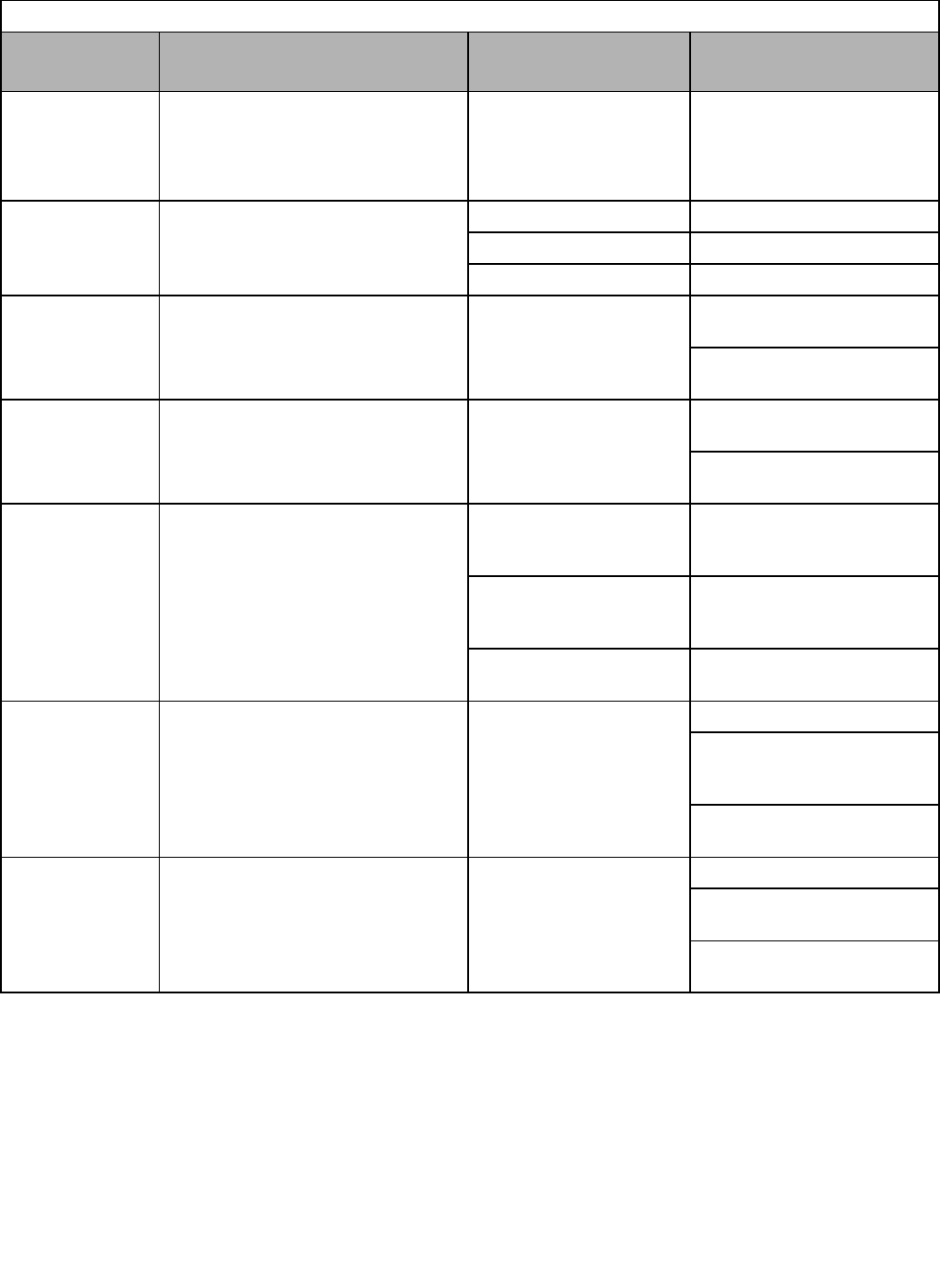
Diagnostics & Troubleshooting 6 - 9
Table 6.1 Fault Displays and Processing (continued)
Digital
Operator Display Description Cause Corrective Action
SER
Search Retry Err
<3021>
Exceeded Allowable Number of Speed
Search Retries
The speed search has been retried more than
the number of tries set in b3-19 (Number of
speed search retrials).
The settings in b3-17 and
b3-18 are not appropriate.
Make sure that the settings in
b3-17 and b3-18 are appropriate.
SVE
Zero Servo Fault
Zero Servo Fault
The motor position moved more than
10,000 revolutions during zero servo
operation.
The torque limit was too small. Increase the torque limit.
The load torque was too large. Reduce the load torque.
Control circuit fault Check for signal noise.
UL3
Undertorq Det 1
Undertorque Detection 1
Drive output current < L6-02 for more than
the time set in L6-03 when L6-01 = 7 or 8. Motor was underloaded.
Ensure the values in L6-02 and
L6-03 are appropriate.
Check application/machine status
to eliminate fault.
UL4
Undertorq Det 2
Undertorque Detection 2
Drive output current < L6-05 for more than
the time set in L6-06 when L6-04 = 7 or 8. Motor was underloaded.
Ensure the values in L6-05 and
L6-06 are appropriate.
Check application/machine status
to eliminate fault.
UV1
DC Bus Undervolt
DC Bus Undervoltage
208-240Vac: Default trip point is ≤ 190Vdc
480Vac: Default trip point is ≤ 380Vdc
Trip point is adjustable in L2-05.
Detected when the DC bus voltage is
≤ L2-05.
Low input voltage at R/L1,
S/L2 and T/L3.
Check the input circuit and
increase the input power to within
specifications.
The acceleration time is set too
short.
Extend the time in C1-01 or other
active accel settings used such as
C1-03, C1-05, or C1-07 (time).
Voltage fluctuation of the input
power is too large. Check the input voltage.
UV2
CTL PS Undervolt
Control Power Supply Undervoltage
Undervoltage of the control circuit when
running.
External load was
pulling down the Drive’s
power supplies, or there was
an internal short in the power/
gate Drive board.
Cycle power to the Drive.
Remove all control wiring and test
Drive or disconnect control
terminal strip.
Repair or replace the Power PCB/
Gate Drive PCB.
UV3
MC Answerback
Soft Charge Circuit Fault
The pre-charge contactor opened while the
Drive was running.
Contacts on the soft charge
contactor were dirty and the
soft charge contactor does not
function mechanically.
Cycle power to the Drive.
Check the condition of the soft
charge contactor.
Repair or replace the Power PCB/
Gate Drive PCB.
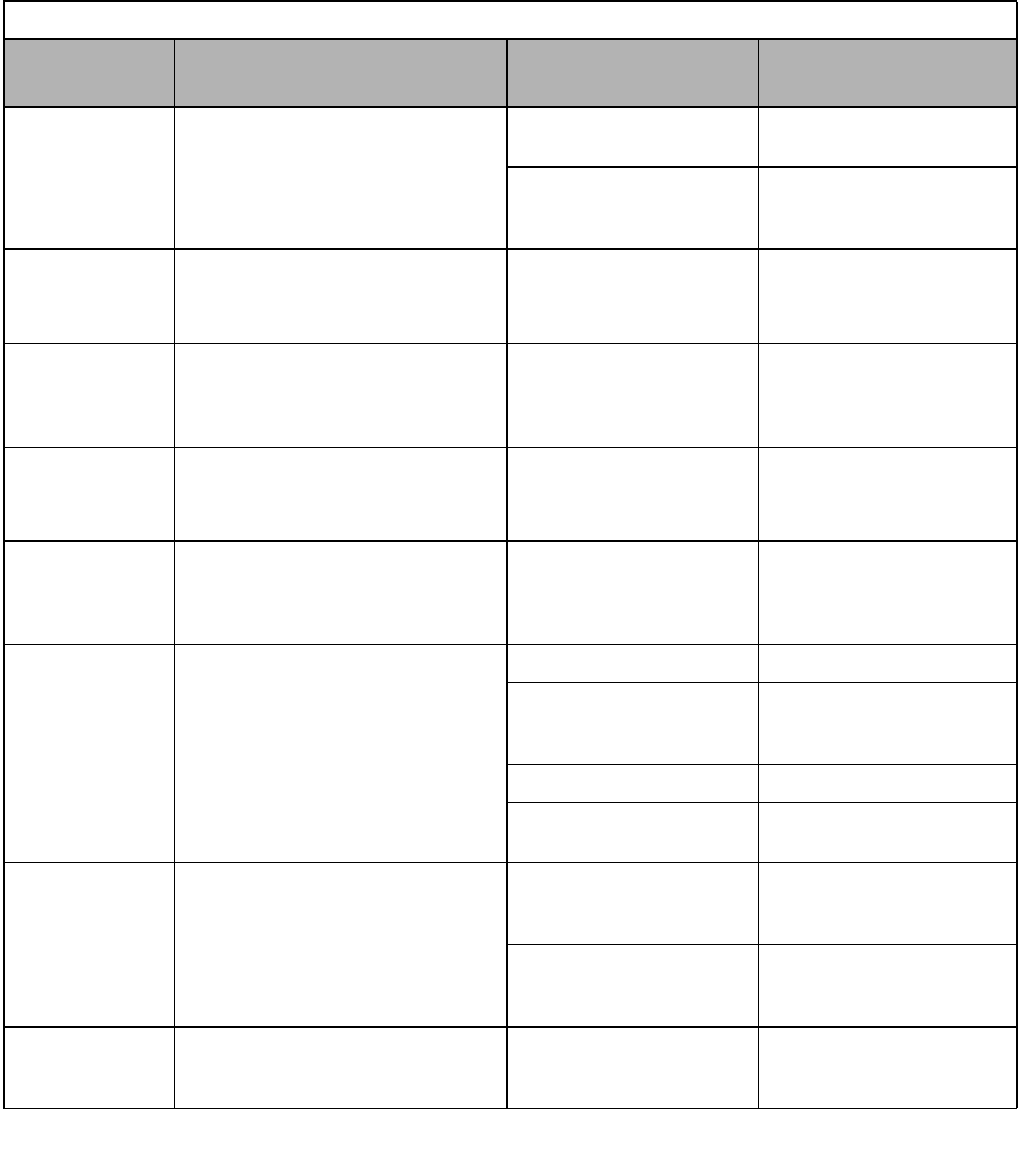
Diagnostics & Troubleshooting 6 - 10
Alarm Detection
Alarms are Drive protection functions that do not operate the fault contact. The Drive will automatically return to its original
status once the cause of the alarm has been removed.
During an alarm condition, the Digital Operator display flashes and an alarm output is generated at the multi-function outputs
(H2-01 to H2-03) if programmed.
When an alarm occurs, take appropriate corrective action according to the table below.
Table 6.2 Alarm Displays and Processing
Digital
Operator Display Description Cause Corrective Action
AEr
SI-T Address Err
<3021>
SI-T Station Number Setting Error
Station number of SI-T option board was
outside the setting range.
Station number setting error Check the station number setting.
Refer to SI-T manual for details.
Circuit of SI-T option board is
faulty.
Check the communications
devices and signals.
Refer to SI-T manual for details.
BUS
Option Com Err
(Flashing)
Option Communication Error
After initial communication is
established, the connection was lost.
Connection is broken, master
controller has stopped
communicating.
Check all connections, verify all
user side software configurations.
CALL
SI-F/G ComCall
(Flashing)
Serial communication transmission
error. Communication has not yet been
established.
Connection was not made
properly, or user software was
not configured to the proper
baud rate or configuration.
Check all connections, verify all
user side software configurations.
CE
MEMOBUS Com Err
(Flashing)
Modbus Communications Error
Enabled when H5-05 = 1 and H5-04 = 3.
Normal communication was not
possible for 2 seconds or longer
after control data was received.
Check the communications
devices and signals.
CyC
SI-T Cycle Err
<3021>
SI-T Communications Cycle Setting
Error
Communications cycle of SI-T option board
was out of range.
Communications cycle of SI-T
option board set in the master
controller was out of range.
Check the communication cycle
of SI-T option board set in master
controller.
Refer to SI-T manual for details.
DEV
Speed Deviation
(Flashing)
Excessive Speed Deviation
Detected when F1-04 = 3 and A1-02 = 1 or 3.
The speed deviation is greater than the
setting in F1-10 for longer than the setting
in F1-11.
The load was locked. Reduce the load.
The acceleration time and
deceleration times were too
short.
Lengthen the acceleration and
deceleration times.
The load was too large. Check the mechanical system.
The settings in F1-10 and F1-11
were not appropriate.
Check the settings in F1-10 and
F1-11.
DNE
Drive not Enable
(Flashing)
Detected when a multi-function digital
input (H1-01 to H1-06) is programmed for
6A: Drive enable.
The Drive does not have the enable
command when the run command is
applied. This alarm stops the motor.
Enable command was lost while
Drive was running.
Check the input terminal
programmed for enable
command.
The Run command was applied
prior to the enable signal.
Apply and maintain the enable
command before applying the run
command.
EF
External Fault Both the forward and the reverse run
commands are input simultaneously for
500ms or more. This alarm stops the motor.
An external forward and
reverse command were input
simultaneously.
Check external sequence logic,
so only one input is received at a
time.
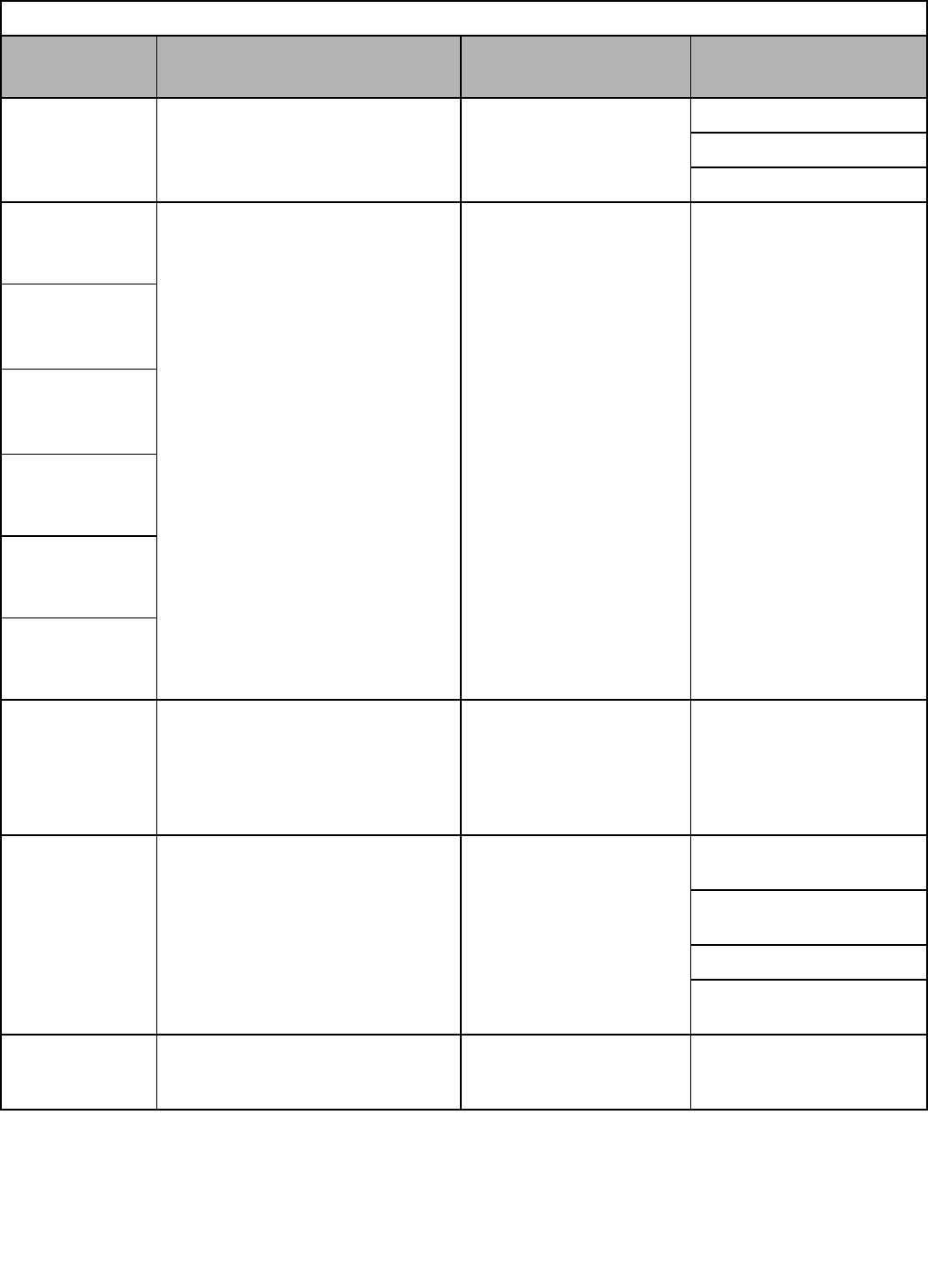
Diagnostics & Troubleshooting 6 - 11
Table 6.2 Alarm Displays and Processing
Digital
Operator Display Description Cause Corrective Action
EF0
Opt External Flt
(Flashing)
Communication Option Card External
Fault An external fault condition was
present.
Check for an external condition.
Verify the parameters.
Verify communication signal.
EF3
Ext Fault S3
(Flashing)
External Fault at Terminal S3 - S8
Detected when terminals S3 - S8 (H1-01 to
H1-06) are programmed for external fault
function that alarms only and continues to
run the Drive.
An external fault condition
exists that was connected to a
multi-function digital input.
Eliminate the cause of an external
fault condition.
EF4
Ext Fault S4
(Flashing)
EF5
Ext Fault S5
(Flashing)
EF6
Ext Fault S6
(Flashing)
EF7
Ext Fault S7
(Flashing)
EF8
Ext Fault S8
(Flashing)
E5
SI-T WDT Err
<3021>
SI-T Watchdog Error Detected
A watchdog error was detected when the
Run Command or a frequency reference
was set from the option board and continu-
ous operation was set for the E5 operation
selection.
Synchronization error between
the master controller and the
Drive for control data.
Check the communication
timing (such as communications
cycle, etc.).
Refer to SI-T manual for details.
E-15
SI-F/G Com Err
SI-F/G Communications Error Detected
A communication error is detected when a run
command or frequency reference is set from
the SI-F/G Option Card (b1-01=3, b1-02=3)
and communication is lost.
Communication has been lost to
the SI-F/G option card
connected and b1-01=3 and/or
b1-02=3.
Check the communications
signals.
Check the settings of b1-01 and
b1-02.
Check the setting of F6-01.
Check the host side (master)
communication configuration.
FAN
Cooling FAN Err
<3021>
Drive’s Cooling Fan Fault
A cooling fan fault was detected.
This fault is detected when L8-32 is set to 0.
The Drive’s cooling fan has
stopped. Replace the cooling fan.
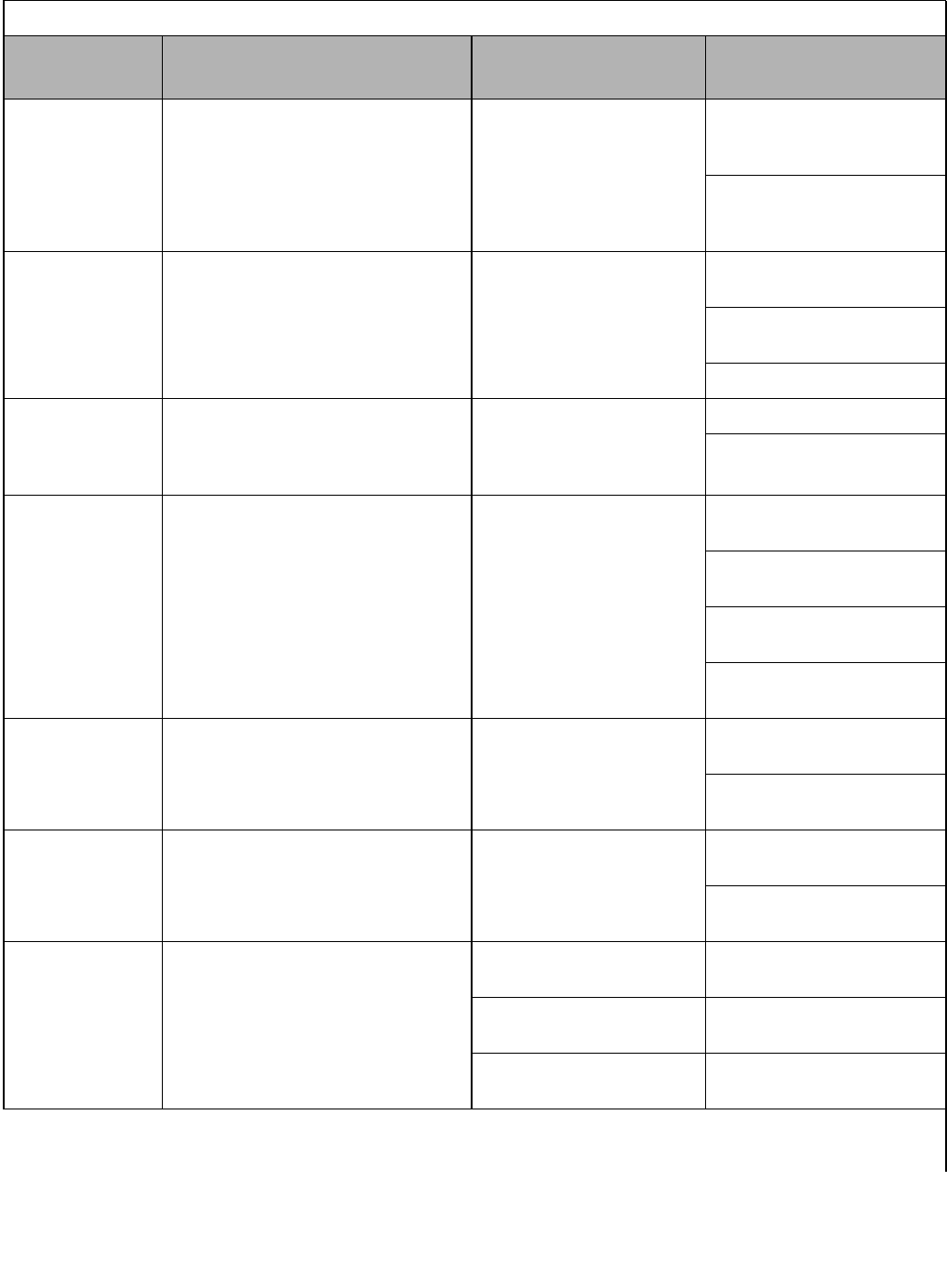
Diagnostics & Troubleshooting 6 - 12
Table 6.2 Alarm Displays and Processing (continued)
Digital
Operator Display Description Cause Corrective Action
FBL
Feedback Loss
PID Feedback Loss
This alarm occurs when PID Feedback Loss
Detection is programmed to alarm
(b5-12 = 1) and the PID feedback < PID
feedback loss detection level (b5-13) for the
PID feedback loss detection time (b5-14).
PID Feedback source
(e.g. transducer, sensor, build-
ing automation signal) was not
installed correctly or was not
working.
Verify Drive is programmed to
receive the PID Feedback source
signal.
Check to ensure the PID
Feedback source is installed and
working properly.
OH
Heatsnk Overtemp
(Flashing)
Cooling Fin/Cooling Fin Fan Overheat
The temperature of the Drive’s heatsink
exceeded the temperature programmed in
parameter L8-02.
Enabled when L8-03=3.
Cooling fan(s) were not
working, high ambient
temperature, a heat source in
close proximity to Drive
present, or dirty heatsink.
Check for dirt build-up on the
fans and cooling fins.
Reduce the ambient temperature
around the Drive.
Remove the heating unit.
OH2
Over Heat 2
(Flashing)
Drive overheat alarm signal is input from a
multi-function digital input terminal S3-S8
(H1-01 to H1-06) that is programmed for B:
overheat alarm.
An external overheat condition
exists that was connected to one
of the multi-function input
terminals S3 - S8.
Check for an external condition.
Verify the program parameters
H1-01 thru H1-06.
OH3
Motor Overheat 1
(Flashing)
Motor Overheating Alarm
Detected when A2 or A3, programmed for
motor temperature (H3-09 or H3-05 = E),
exceeds 1.17V for time L1-05 and
L1-03 = 3.
Overheating of the motor as
measured by the motor
thermistor.
Recheck the cycle time and the
size of the load.
Recheck the accel/decel time
(C1-01 and C1-02).
Recheck the V/F pattern (E1-01
thru E1-13).
Recheck the motor rated current
value (E2-01).
OL3
Overtorque Det 1
(Flashing)
Overtorque Detection 1
Drive output current > L6-02 for more than
the time set in L6-03 and L6-01 = 1 or 2. Motor was overloaded.
Ensure the values in L6-02 and
L6-03 are appropriate.
Check application/machine
status to eliminate fault.
OL4
Overtorque Det 2
(Flashing)
Overtorque Detection 2
Drive output current > L6-05 for more than
the time set in L6-06 and L6-04 = 1 or 2. Motor was overloaded.
Ensure the values in L6-05 and
L6-06 are appropriate.
Check application/machine
status to eliminate fault.
OS
Overspeed Det
(Flashing)
Overspeed
The motor speed feedback (U1-05)
exceeded the value set in F1-08 for a time
longer than the setting in F1-09.
Detected when A1-02 = 1 or 3 and F1-03 = 3.
Overshooting/Undershooting
was occurring. Adjust the ASR settings in the C5
parameter group.
The reference was too high. Check the reference circuit and
reference gain.
The settings in F1-08 and F1-09
were not appropriate. Check the settings in F1-08 and
F1-09.
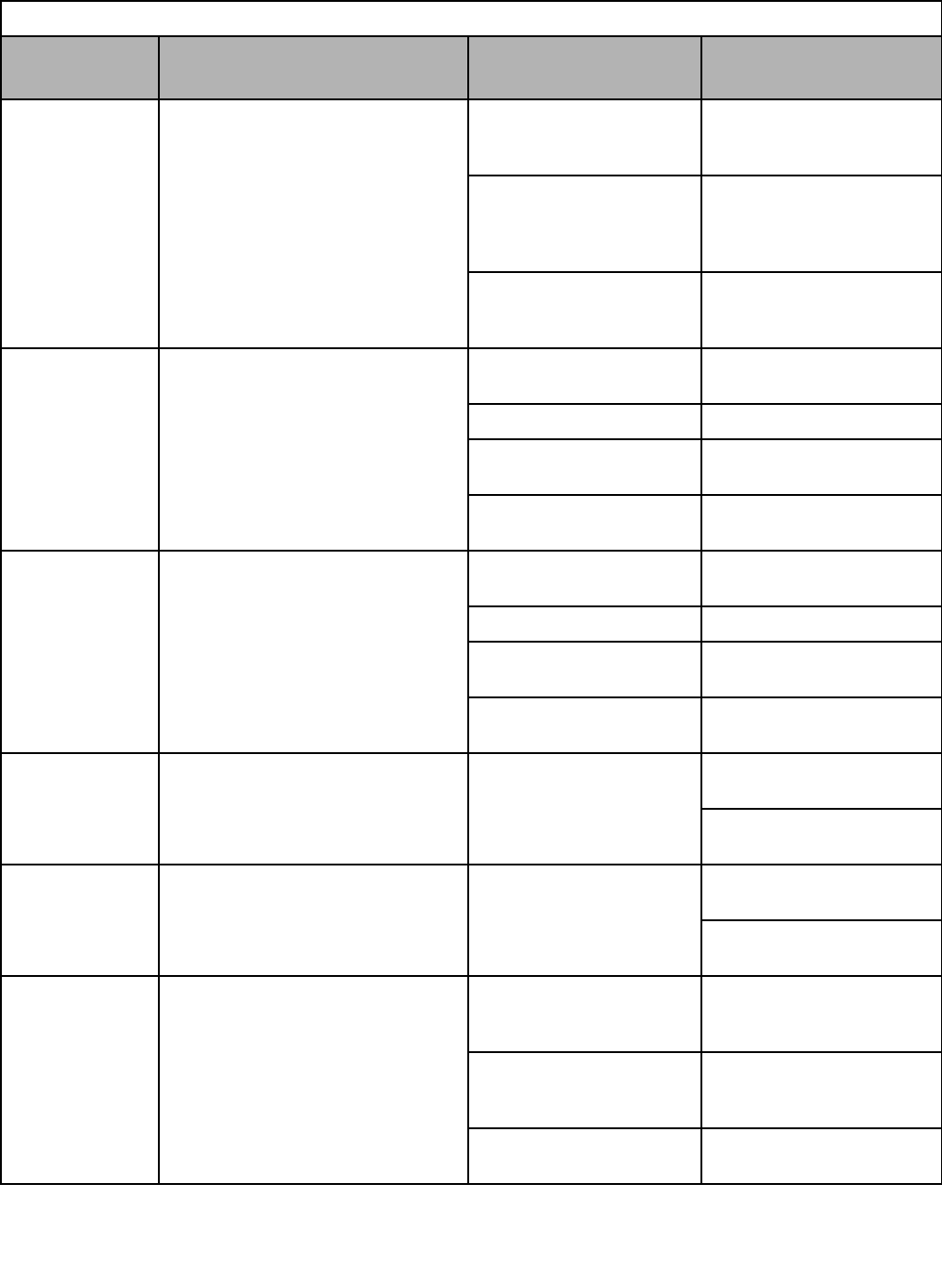
Diagnostics & Troubleshooting 6 - 13
Table 6.2 Alarm Displays and Processing (continued)
Digital
Operator Display Description Cause Corrective Action
OV
DC Bus Overvolt
(Flashing)
DC Bus Overvoltage
The DC bus voltage has exceeded the trip
point.
Default:
208-240Vac: Trip point is 410Vdc
480Vac: Trip point is 820Vdc
Detected when the Drive is in a stopped
condition. E1-01 affects the trip level.
High input voltage at R/L1,
S/L2 and T/L3
Check the input circuit and
reduce the input power to within
specifications.
The deceleration time is set too
short.
Extend the time in C1-02 or other
active decel settings used such as
C1-04, C1-06, C1-08 or C1-09
(time).
Power factor correction
capacitors are being used on the
input or output to the Drive.
Remove the power factor
correction capacitors.
PGO
PG Open
(Flashing)
PG Disconnection (Detection with
Software)
Detected when F1-02 = 3 and A1-02 = 1
or 3.
Detected when no PG (encoder) pulses are
received for a time longer than the setting in
F1-14.
There was a break in the PG
wiring.
Fix the broken / disconnected
wiring.
The PG was wired incorrectly. Fix the wiring.
Power wasn’t being supplied to
the PG. Supply power to the PG properly.
Brake mechanism is
possibly engaged.
Check for open circuit when
using brake (motor).
PGO H
PG Open Hardware
<3021>
PG Disconnection (Detection with
Hardware)
Detected when F1-02 = 3 and F1-25 = 1
(PG-T2 or PG-Z2) and / or F1-26 = 1
(PG-Z2) and A1-02 = 1 or 3.
Detected when no PG (encoder) pulses are
received.
There was a break in the PG
wiring.
Fix the broken / disconnected
wiring.
The PG was wired incorrectly. Fix the wiring.
Power wasn’t being supplied to
the PG. Supply power to the PG properly.
Brake mechanism is possibly
engaged
Check for open circuit when
using brake (motor).
UL3
Undertorq Det 1
(Flashing)
Undertorque Detection 1
Drive output current < L6-02 for more than
the time set in L6-03 when L6-01 = 5 or 6.
Motor was underloaded.
Ensure the values in L6-02 and
L6-03 are appropriate.
Check application/machine
status to eliminate fault.
UL4
Undertorq Det 2
(Flashing)
Undertorque Detection 2
Drive output current < L6-05 for more than
the time set in L6-06 when L6-04 = 5 or 6.
Motor was underloaded.
Ensure the values in L6-05 and
L6-06 are appropriate.
Check application/machine
status to eliminate fault.
UV
DC Bus Undervolt
(Flashing)
DC Bus Undervoltage
The DC bus voltage is ≤ L2-05.
Default:
208-240Vac: Trip point is 190Vdc
480Vac: Trip point is 380Vdc
Detected while Drive is in a stopped
condition.
Low input voltage was at R/L1,
S/L2 and T/L3.
Check the input circuit and
increase the input power to
within specifications.
The acceleration time was set
too short.
Extend the time in C1-01 or other
active accel settings used such as
C1-03, C1-05, or C1-07 (time).
Voltage fluctuation of the input
power was too large. Check the input voltage.
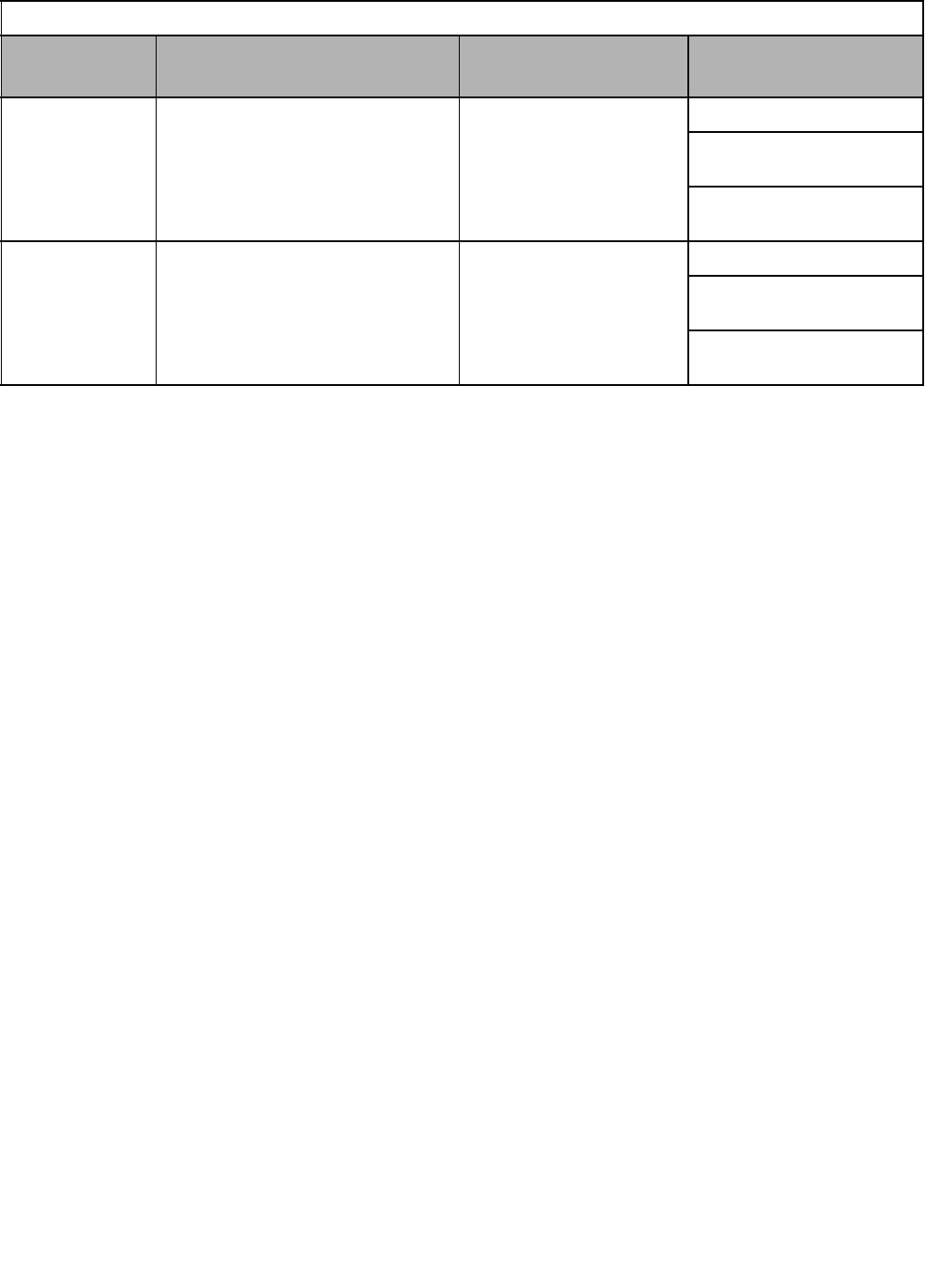
Diagnostics & Troubleshooting 6 - 14
Table 6.2 Alarm Displays and Processing (continued)
Digital
Operator Display Description Cause Corrective Action
UV2
CTL PS Undervolt
Control Power Supply Undervoltage
Undervoltage of the control circuit when
running.
External load was pulling down
the Drive’s power supplies, or
there was an internal short in the
power/gate Drive board.
Cycle power to the Drive.
Repair or replace the Power PCB/
Gate Drive PCB.
Remove all control wiring and
test Drive.
UV3
MC Answerback
Soft Charge Circuit Fault
The pre-charge contactor opened while the
Drive was running.
Contacts on the soft charge
contactor were dirty and the soft
charge contactor does not
function mechanically.
Cycle power to the Drive.
Check the condition of the soft
charge contactor.
Repair or replace the Power PCB/
Gate Drive PCB.
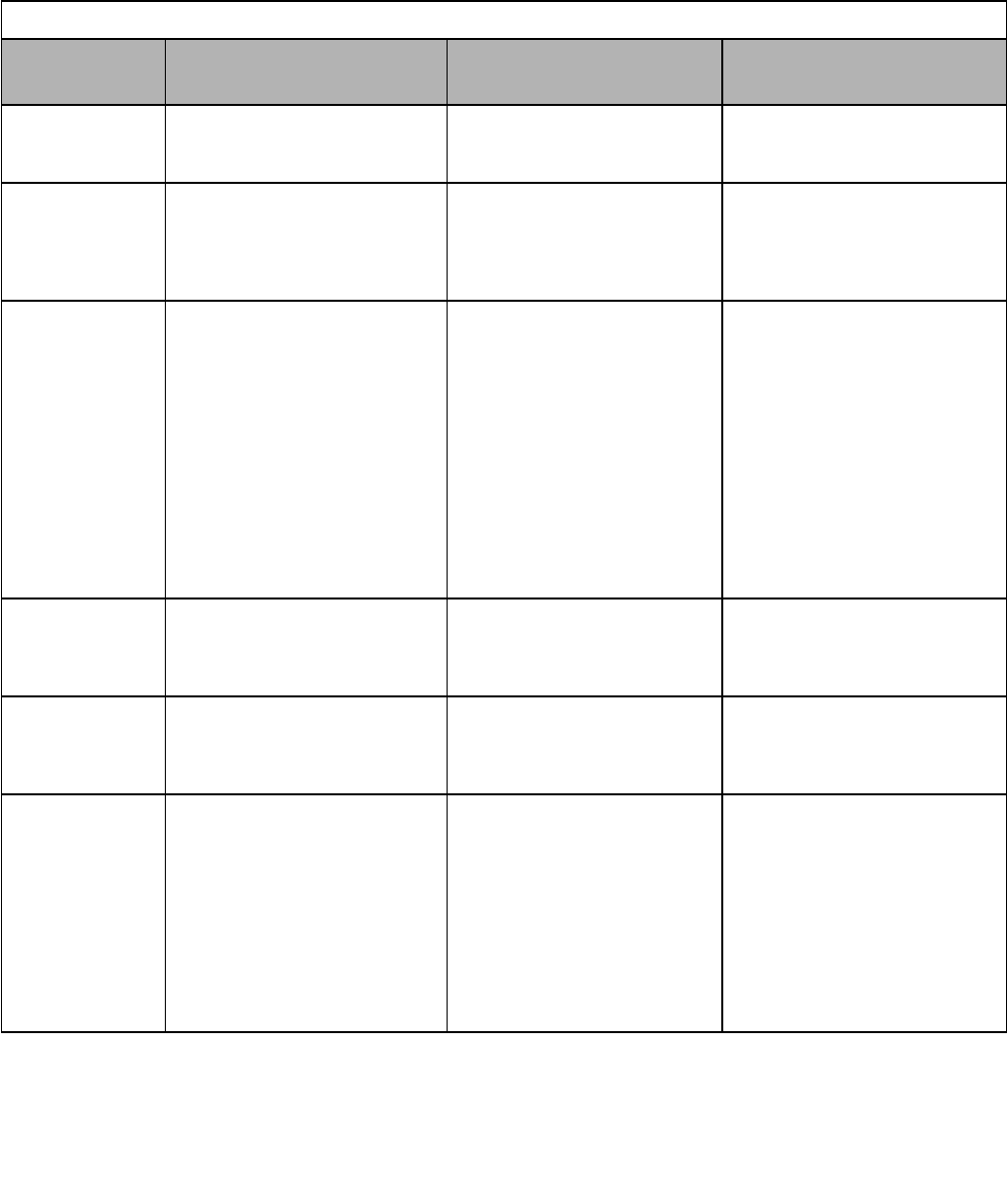
Diagnostics & Troubleshooting 6 - 15
Operator Programming Errors (OPE)
An Operator Programming Error (OPE) occurs when an inapplicable parameter is set or an individual parameter setting is
inappropriate. The Drive will not operate until the parameter is set correctly; however, no alarm or fault outputs will occur. If
an OPE occurs, change the appropriate parameter by checking the cause shown in Table 6.3. When OPE error is displayed,
press the ENTER key to display U1-34 (OPE fault constant). This monitor will display the parameter that is causing the OPE
error.
Table 6.3 OPE Error Displays
Digital Operator
Display Description Cause Corrective
Action
OPE01
kVA Selection Drive kVA Setting Error The control board was replaced and
the kVA parameter is set
incorrectly.
Enter the correct kVA setting (o2-04)
by referring to the Drive model
number in Appendix B - Table B.1.
OPE02
Limit Parameter Setting Out of Range
Parameter setting was outside of the
allowable range. In some cases,
parameter range may depend on
other parameter settings.
For example, when E2-03 ≥ E2-01.
Verify the parameter settings.
OPE03
Terminal Multi-function Input Selection
Error
Duplicate functions were selected,
up/down commands or trim control
increase/decrease were not set
simultaneously. Speed search from
maximum frequency and set
frequency were set simultaneously.
PID is enabled and up input is
programmed. More than one of the
speed search inputs were set
simultaneously, or HSB and KEB
functions were set simultaneously.
N.O. and N.C. fast stop are both set,
or Drive enable and DC injection
input are both set.
Verify parameter settings
(H1-01 to H1-06).
OPE05
Sequence Select
Run Command Selection Error
The run command selection
parameter b1-02 is set to 3 but no
option board is installed.
Serial communication or other
option board is not installed, or is
installed incorrectly.
Verify that the option board is
installed. Remove power to the Drive
and connect the option board once
more.
OPE06
PG Opt Missing Control Method Selection Error
Control method with PG feedback
was selected A1-02 = 1 or 3, but a
PG option board is not installed, or
is installed incorrectly.
Verify the control method in A1-02
and/or the installation of the PG
option board.
OPE07
Analog Selection Multi-function Analog Input
Error
Duplicate functions were selected
for the analog inputs (A2 and A3)
or for either of the analog inputs
(A2 or A3) and the pulse input (RP)
selection.
H3-09 = B and H6-01 = 1
H3-09 = C and H6-01 = 2
b1-01 (Reference Selection) was set
to 4 (pulse input), and H6-01 (Pulse
Train Input) was set to a value other
than 0 (frequency reference).
Check parameters b1-01, H3-05,
H3-09, and H6-01 and correct the
errors.
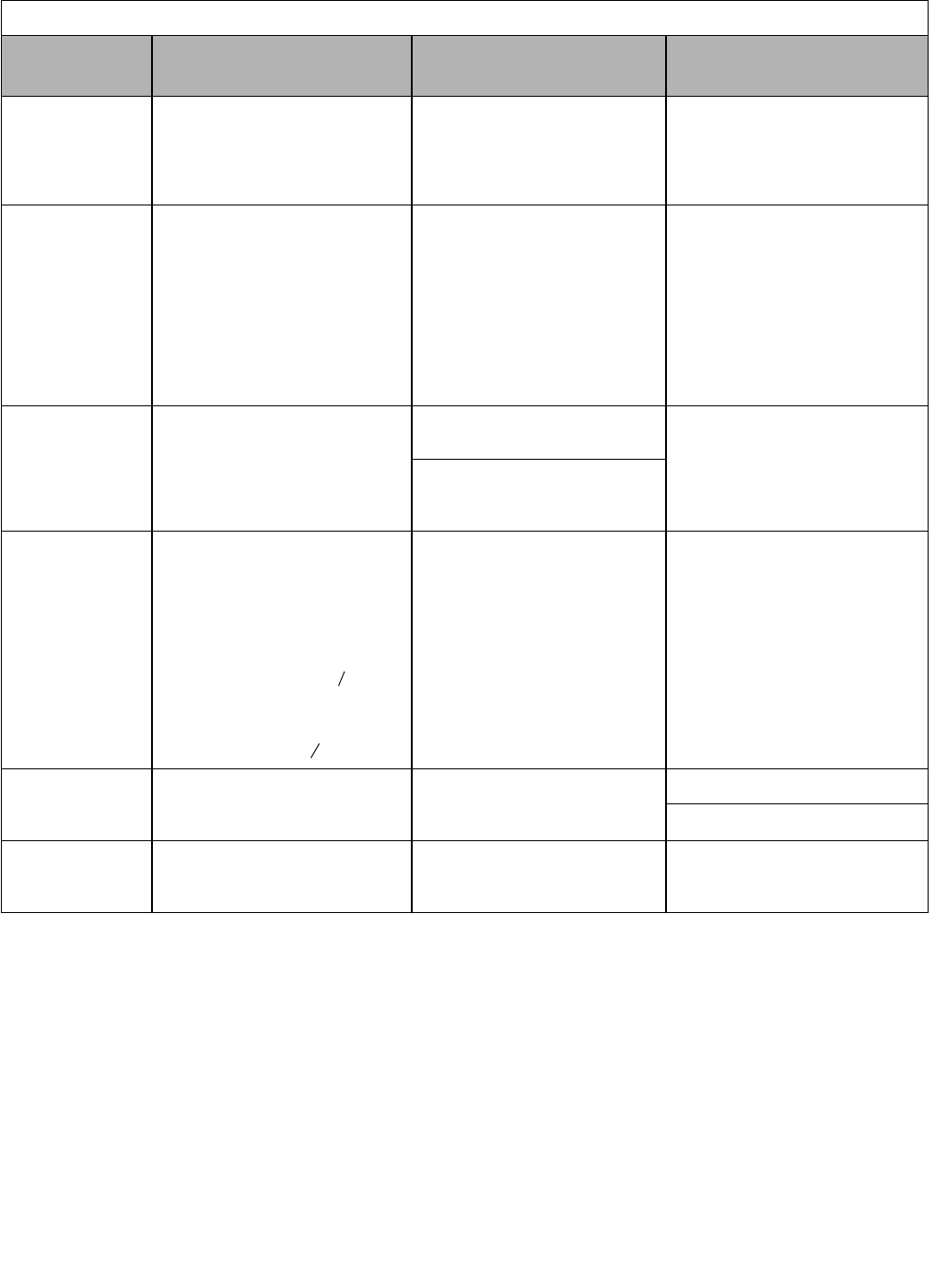
Diagnostics & Troubleshooting 6 - 16
Table 6.3 OPE Error Displays (continued)
Digital Operator
Display Description Cause Corrective
Action
OPE08
Constant Selection Function Selection Error
A setting has been made that was
not applicable in the current control
method. Example: a function used
only in open-loop vector control
was selected while in V/F control.
Verify the control method and the
function in question.
OPE09
PID Selection PID Control Setup Error
The following settings have been
made at the same time:
b5-01 (PID Control Method
Selection) has been set to a value
other than 0.
b5-15 (PID Sleep Function Start
Level) has been set to a value other
than 0.
b1-03 (Stopping Method Selection)
was set to 2 or 3.
Check parameters b5-01, b5-15, and
b1-03 and correct the error.
OPE10
V/F Ptrn Setting V/F Parameter Setting Error
V/F parameter settings were out of
range.
Check parameters (E1-04 ~ E1-11).
A minimum frequency value
is set higher than the maximum
frequency.
OPE11
CarrFrq/On-Delay
Carrier Frequency Parameter
Setting Error occurs when:
C6-05 > 6 and C6-04 > C6-03
or
C6-01 = 0 and C6-02 = 0,1
or
C6-01 = 1 and C6-02 = 0 thru 6, F
Parameter setting was incorrect. Check the parameter settings and
correct the errors.
ERR
EEPROM R/W Err
EEPROM Write Error
The NV-RAM data does not match
the EEPROM data. Power supply is turned OFF. Cycle power to the Drive.
Do a factory initialization (A1-03).
End - 3
Data Invalid Data Invalid Rated current set value is set too
high
Check input data (especially, motor
output current and motor rated
current value).
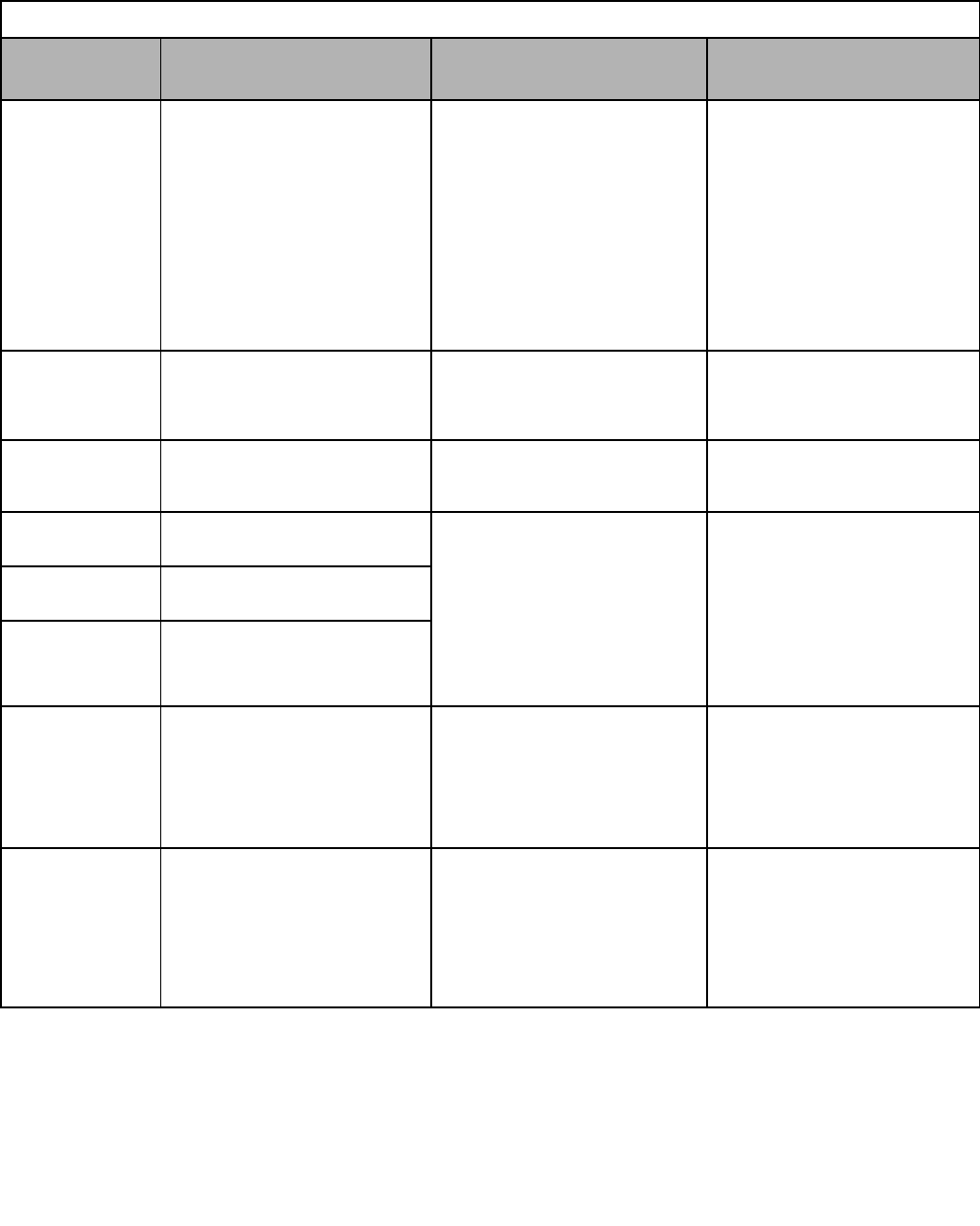
Diagnostics & Troubleshooting 6 - 17
Auto-Tuning Faults
Auto-Tuning faults are shown below. When the following faults are detected, the fault is displayed on the Digital Operator and
the motor coasts to a stop. No fault or alarm outputs will occur.
Table 6.4 Auto-Tuning Fault Displays and Processing
Digital Operator
Display Description Probable Cause Corrective Action
Er - 01
Fault Motor Data Fault
•There is an error in the data input
for Auto-Tuning.
•There is an error in the relationship
between the motor output and the
motor rated current.
•There is an error between the no-
load current setting and the input
motor rated current (when Auto-
Tuning only line-to-line
resistance is performed for vector
control).
• Check Auto-Tuning input data (T1
parameters).
• Check Drive and motor capacity
for compatibility.
• Check motor rated current and
no-load current (E2-03 and
T1-04).
Er - 02
Minor Fault Alarm An alarm is detected during Auto-
Tuning.
• Check Auto-Tuning input data (T1
parameters).
• Check output/motor wiring.
• Check the load.
Er - 03
STOP key STOP Key Input The STOP key is pressed during
Auto-Tuning, and the Auto-Tuning is
interrupted. –
Er - 04
Resistance Line-to-Line Resistance Fault
Auto-Tuning is not completed within
the specified time.
The Auto-Tuning result is outside the
parameter setting range.
• Check Auto-Tuning input data (T1
parameters).
• Check motor wiring.
• If the motor and the machine are
connected, disconnect the motor
from the machine.
• For Er-08, if the setting of T1-03 is
higher than the Drive’s input
voltage, change the input voltage
setting.
Er - 05
No-Load Current No-Load Current Fault
Er - 08
Rated Slip Rated Slip Fault
Er - 09
Accelerate Acceleration Fault
Detected only for rotational Auto-
Tuning.
The motor did not accelerate in the
specified time (C1-01 + 10 seconds).
• Increase C1-01 (Accel Time 1)
• Increase L7-01 and L7-02
(Forward/Reverse Torque Limits)
if they are low.
• If the motor and load are
connected, disconnect the motor
from the load.
Er - 11
Motor Speed Motor Speed Fault
Detected only for rotational Auto-
Tuning.
The torque reference exceeded 100%
during acceleration. Detected when
A1-02 = 2 or 3 (vector control).
• Increase C1-01 (Accel Time 1)
• Check the input data [particularly
the number of PG pulses (F1-01)
and the number of motor poles
(E2-04)].
• If the motor and load are
connected, disconnect the motor
from the load.
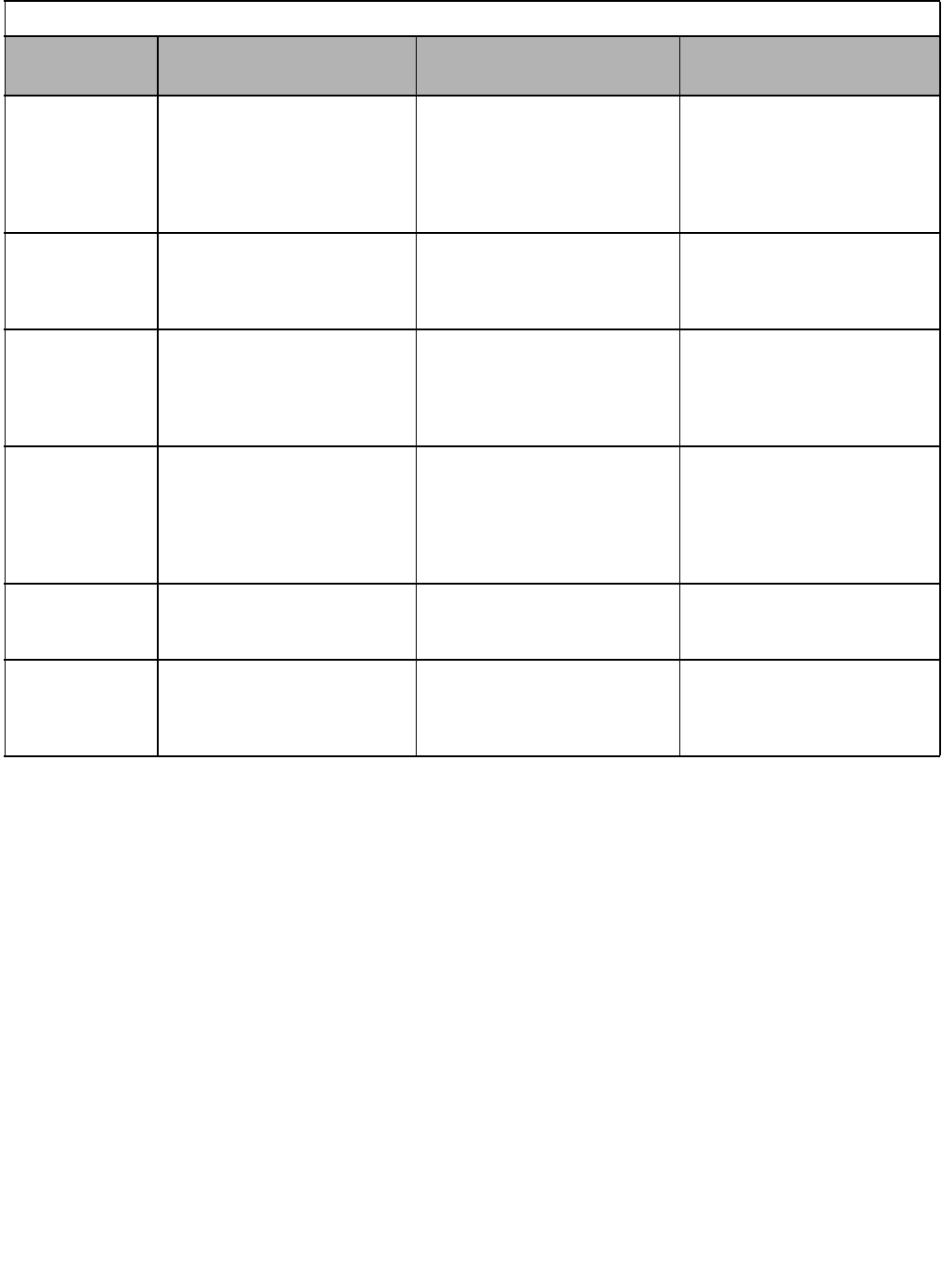
Diagnostics & Troubleshooting 6 - 18
Table 6.4 Auto-Tuning Fault Displays and Processing (continued)
Digital Operator
Display Description Probable Cause Corrective Action
Er - 12
I-det. Circuit Current Detection Fault
•Current exceeded the motor rated
current.
•Any of U/TI, V/T2, and W/T3 has
open-phase.
• Check that the motor is unloaded
(uncoupled and brake is released).
• Check Drive wiring and mounting.
• Check the motor connections for
continuity (on Drive output terminals
and in motor junction box).
Er - 13
Leakage
Inductance Fault Leakage Inductance Fault
Auto-Tuning did not finish within
the set time.
Auto-Tuning result is outside the
parameter setting range.
• Check Auto-Tuning input data (T1
parameters).
• Check motor wiring for proper
connection configuration.
End - 1
V/F Over Setting V/F Settings Alarm
Displayed after Auto-Tuning is
complete.
The torque reference exceeded
100%, and the no-load current
exceeded 70% during Auto-Tuning.
• Check and correct the motor
settings (T1 parameters).
• If the motor is coupled to the load,
disconnect the motor from the
load.
End - 2
Saturation Motor Core Saturation Fault
Detected only for rotational
Auto-Tuning.
During Auto-Tuning, the measured
values of motor iron-core saturation
coefficient 1 and 2 (E2-07 and
E2-08) exceeded its setting range. A
temporary value was set:
E2-07 = 0.75, E2-08 = 0.50.
• Check Auto-Tuning input data (T1
parameters).
• Check the motor wiring.
• If the motor and the load are
connected, disconnect the motor
from the load.
End - 3
Rated FLA Alm Rated Current Setting Alarm
Displayed after Auto-Tuning is
complete.
During Auto-Tuning, the measured
value of motor rated current (E2-01)
was greater than the set value.
• Check the motor rated current
value (E2-01).
End - 4
Slip Lower Limit
<3021>
Slip Lower Limit
Adjusted slip value fell below the
lower limit.
During stationary Auto-Tuning, the
slip value has fallen to 0.2 Hz or
below.
• Check the input data.
• Perform a Rotational Auto-Tuning.
if possible. If not possible, perform
a stationary Auto-Tuning 2.
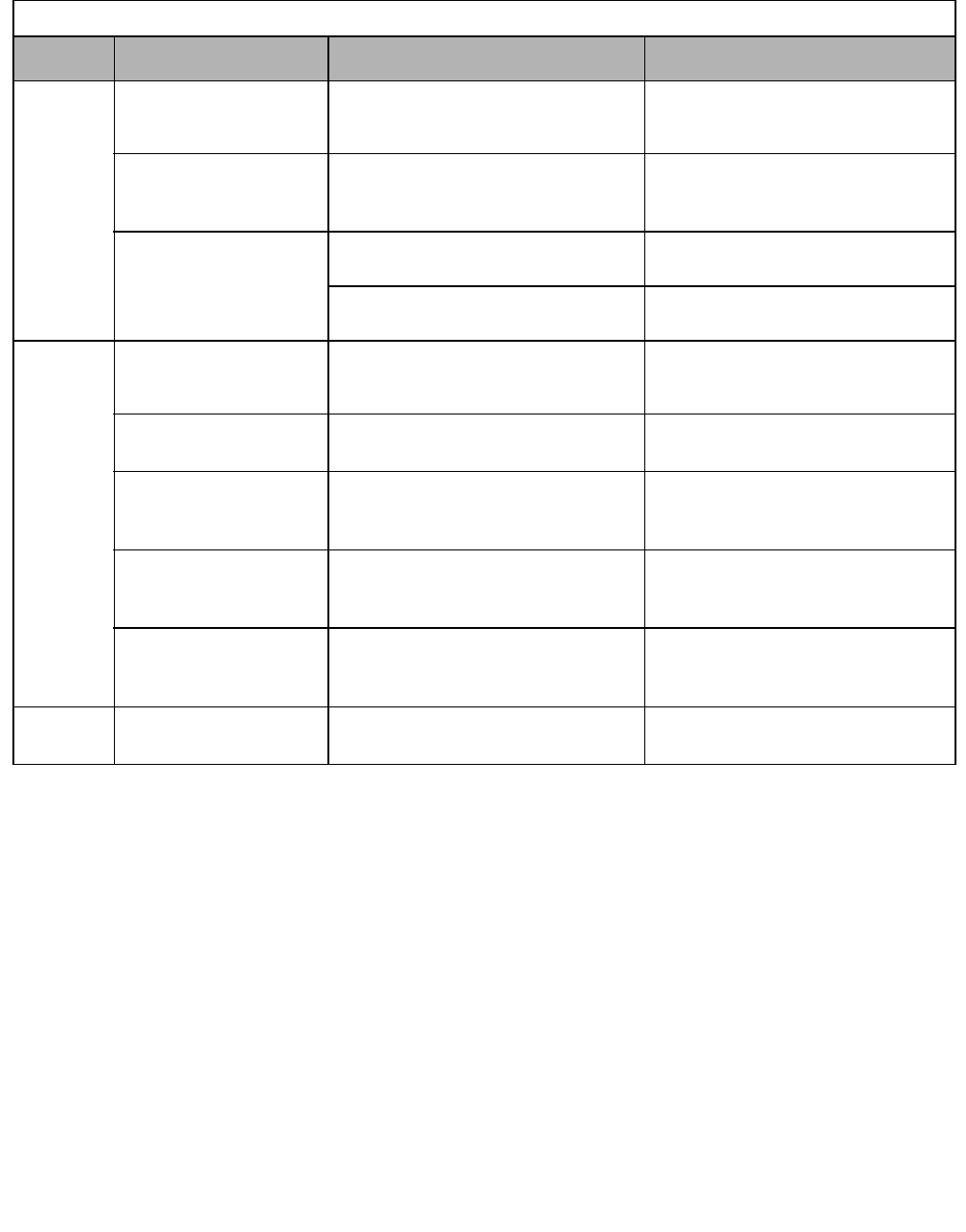
Diagnostics & Troubleshooting 6 - 19
Digital Operator COPY Function Faults
These faults can occur during the Digital Operator COPY function. When a fault occurs, the fault content is displayed on the
operator. A fault does not activate the fault contact output or alarm output.
Table 6.5 Digital Operator COPY Function Faults
Function Digital Operator Display Probable Causes Corrective Action
READ
Function
PRE
READ IMPOSSIBLE
o3-01 was set to 1 to write parameters when
the Digital Operator was write-protected
(o3-02 = 0).
Set o3-02 to 1 to enable writing parameters
into the Digital Operator.
IFE
READ DATA ERROR The data file read from the Drive was of the
wrong size indicating corrupted data.
• Retry the Read (o3-01=1).
• Check the Digital Operator cable.
• Replace Digital Operator.
RDE
DATA ERROR
Low Drive voltage has been detected. Check the Drive’s main incoming voltage
and verify control wiring is correct.
An attempted write of the Drive data to the
Digital Operator’s EEPROM failed. • Repeat the read.
• Replace Digital Operator.
COPY
Function
CPE
ID UNMATCHED
The Drive type or software number was
different than the stored data in the Digital
Operator.
Use stored data for the F7 Drive and
software number (U1-14).
VAE
INV. KVA UNMATCH The capacity of the Drive and the capacity
of the stored data are different. Use stored data for the same Drive
capacity (o2-04).
CRE
CONTROL UNMATCHED
The control method of the Drive and the
control method of the stored data in the
Digital Operator were different.
Use stored data for the same control
method (A1-02).
CYE
COPY ERROR
A parameter setting written to the Drive
was different than the setting stored in the
Digital Operator.
Retry the Copy function (o3-01 = 2).
CSE
SUM CHECK ERROR
Upon completion of the COPY function,
the Drive’s data checksum was different
than the Digital Operator’s data checksum.
Retry the Copy function (o3-01 = 2).
Verify
Function VYE
VERIFY ERROR The set value of the Digital Operator and
the Drive do not match. Retry the Verify function (o3-01 = 3).

Diagnostics & Troubleshooting 6 - 20
Troubleshooting
Due to parameter setting errors, faulty wiring, etc., the Drive and motor may not operate as expected when the system is
started. If this occurs, use this section as a reference and apply the appropriate measures.
If a fault or alarm is displayed on the Digital Operator, refer to Table 6.1 and Table 6.2.
If A Parameter Cannot Be Set
Use the following information if a Drive parameter cannot be set.
The display does not change when the INCREASE and DECREASE keys are pressed.
The following causes are possible:
The Drive is operating (Drive mode).
There are some parameters that cannot be set during operation. Remove the run command and then set the parameter.
Parameter write enable is input.
This occurs when "parameter write enable" (set value: 1B) is set for a multi-function digital input terminal (H1-01 to H1-06).
If the terminal is open, the Drive parameters cannot be changed. Close the terminal and then set the parameters.
Passwords do not match (Only when a password is set.)
If the parameter A1-04 (Password) and A1-05 (Password Setting) settings are different, the parameters for the initialize mode
cannot be changed. Enter the correct password in A1-04.
If you cannot remember the password, display A1-05 (Password Setting) by pressing the Shift/Reset Key and the MENU Key
simultaneously while in the A1-04 display. Reset the password and input the reset password in parameter A1-04.
OPE01 through OPE11 is displayed.
The set value for the parameter is wrong. Refer to Table 6.3 OPE Error Displays in this chapter and correct the setting.
CPF00 or CPF01 is displayed.
This is a Digital Operator communication error. The connection between the Digital Operator and the Drive may be faulty.
Remove the Digital Operator and then re-install it.
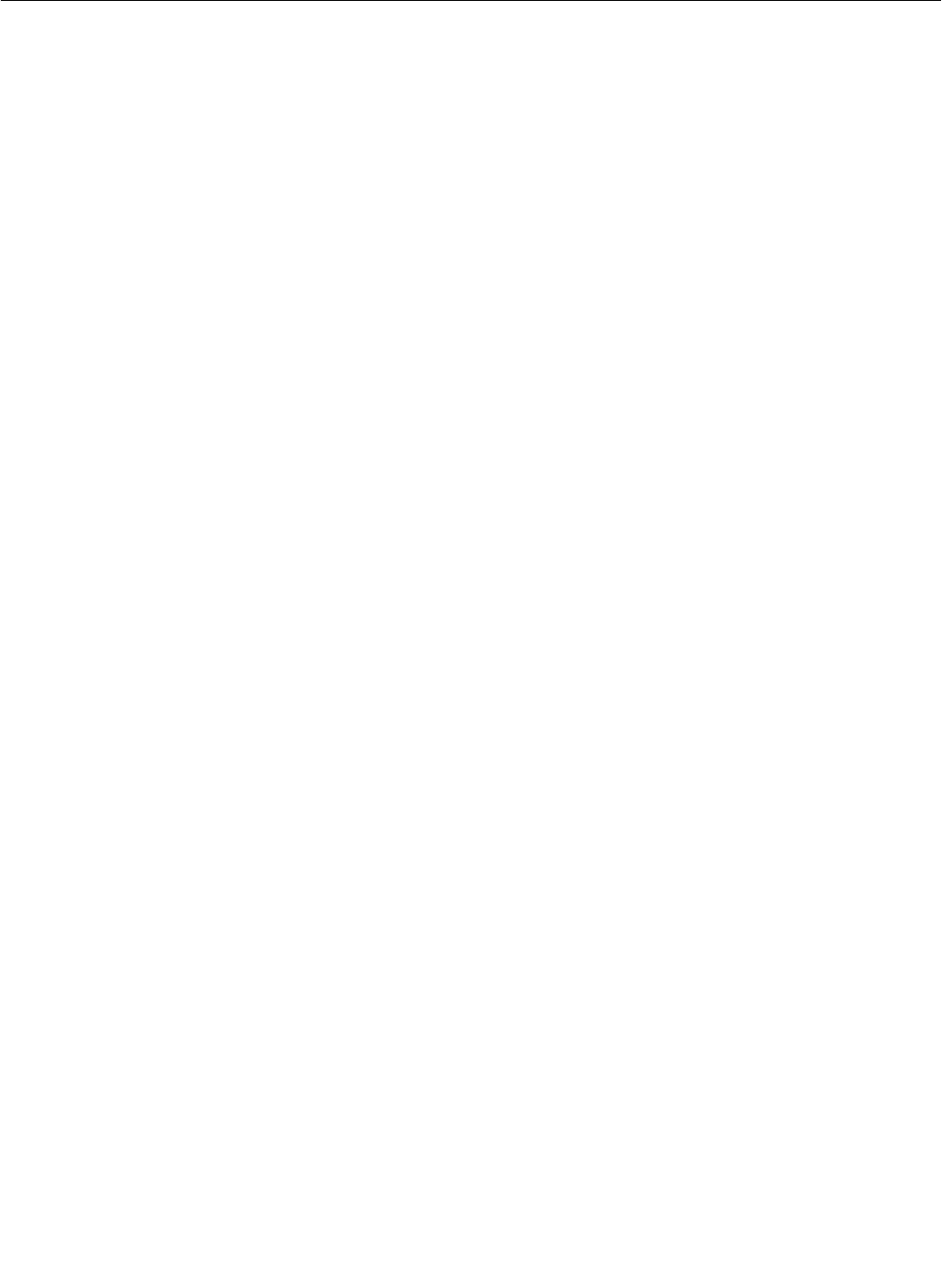
Diagnostics & Troubleshooting 6 - 21
If the Motor Does Not Operate Properly
The following causes are possible:
Ensure the Digital Operator is securely connected to the Drive.
The motor does not operate when the RUN key on the Digital Operator is pressed.
The following causes are possible:
The Local/Remote mode is not selected properly.
The status of the SEQ and REF REMOTE LEDs should be OFF for Local mode. Press the LOCAL/REMOTE key to switch.
The Drive is not in Drive mode.
If the Drive is not in Drive mode, it will remain in ready status and will not start. Press the MENU key once and then press the
DATA/ENTER key. The Drive is now in Drive mode.
The Speed Command is too low.
If the Speed Command is set below the frequency set in E1-09 (Minimum Output Frequency), the Drive will not operate.
Raise the Speed Command to at least the minimum output frequency.
The motor does not operate when an external run command is input.
The following causes are possible:
The Drive is not in Drive mode.
If the Drive is not in Drive mode, it will remain in ready status and will not start. Press the MENU key once and then press the
DATA/ENTER key. The Drive is now in Drive mode.
The Local/Remote mode is not selected properly.
The status of the SEQ and REF REMOTE LEDs should be ON for Local mode. Press the LOCAL/REMOTE key to switch.
The Speed Command is too low.
If the Speed Command is set below the frequency set in E1-09 (Minimum Output Frequency), the Drive will not operate. Raise
the Speed Command to at least the minimum output frequency.
The motor stops during acceleration or when a load is connected.
The load may be too large. The motor’s responsiveness limit may be exceeded if it is accelerated too rapidly by the Drive’s
stall prevention function or automatic torque boost function. Increase the acceleration time (CI-01) or reduce the motor load.
Also, consider increasing the motor size.
The motor only rotates in one direction.
"Reverse run prohibited" may be selected. If b1-04 (Prohibition of Reverse Operation) is set to 1 (reverse run prohibited), the
Drive will not accept any reverse run commands.
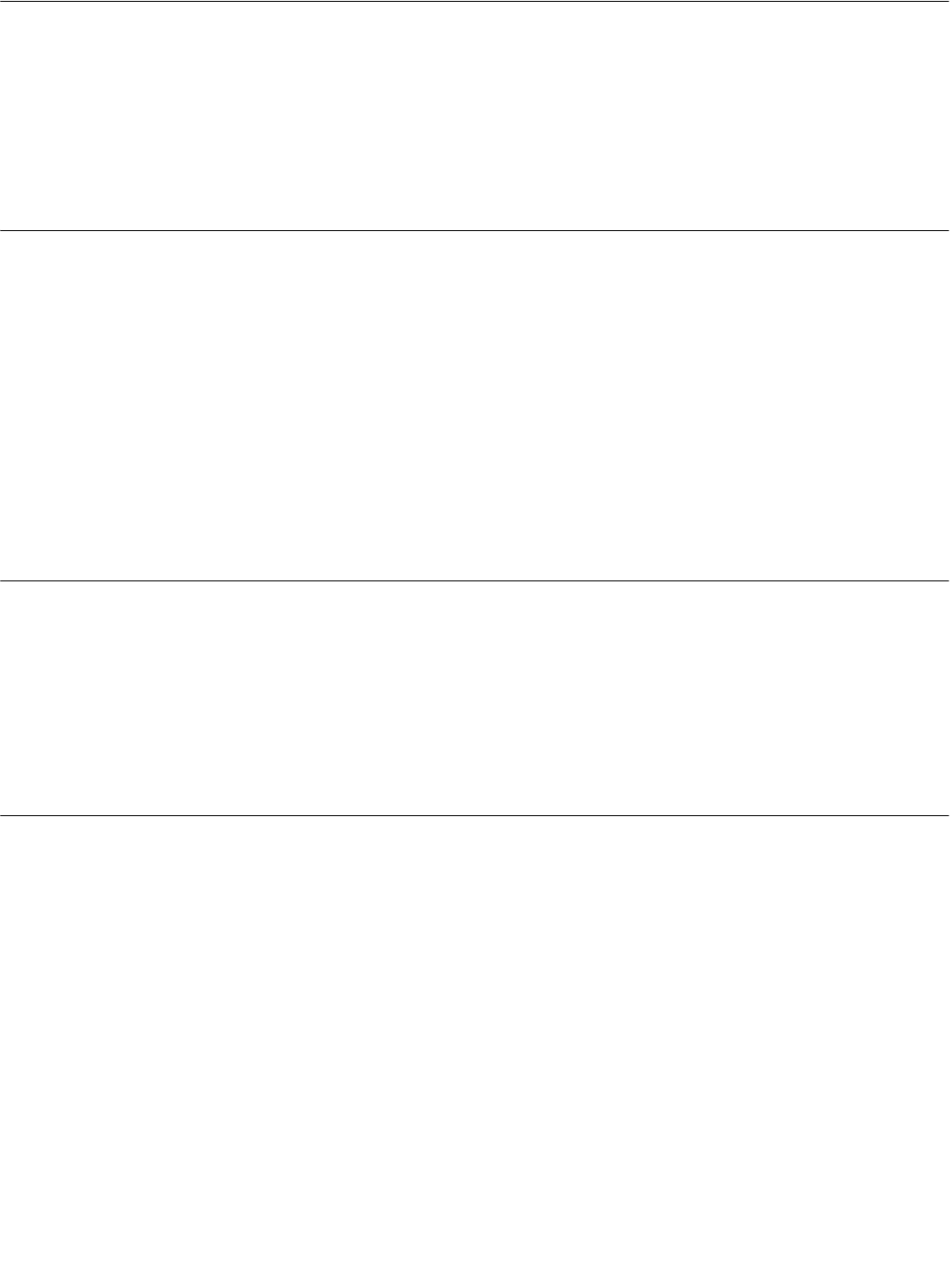
Diagnostics & Troubleshooting 6 - 22
If The Direction of the Motor Rotation is Reversed
If the motor rotates in the wrong direction, the motor output wiring may be incorrect. When the Drive operates in the forward
direction, the forward direction of the motor will depend on the manufacturer and the motor type, so be sure to check the motor
specification.
The direction of motor rotation can be reversed by switching any two wires among U/TI, V/T2, and W/T3. If using an encoder,
the polarity will also have to be switched.
If the Motor Stalls or Acceleration is Slow
The following causes are possible:
The stall prevention level during acceleration is too low.
If the value set for L3-02 (Stall Prevention Acceleration Level) is set too low, the acceleration time will be increased. Check that
the set value is suitable and that the load is not too large for the motor.
The stall prevention level during running is too low.
If the value set for L3-06 (Stall Prevention Level during Running) is too low, the motor speed and torque will be limited. Check
that the values set are suitable.
If the Motor Operates at a Higher Speed Than the Speed Command
The following causes are possible:
PID is enabled.
If the PID mode is enabled (b5-01 = 1 to 4), the Drive output frequency will change to regulate the process variable to the desired
setpoint. The PID can command a speed up to maximum output frequency (E1-04).
If There is Low Speed Control Accuracy Above Base Speed in Open-loop
Vector Control Method
The Drive’s maximum output voltage is determined by its input voltage (For example, if 230Vac is input, then the maximum out-
put voltage will be 230Vac). Vector control uses voltage to control the currents within the motor. If the vector control voltage
reference value exceeds the Drive output voltage capability, the speed control accuracy will decrease because the motor currents
cannot be properly controlled. Use a motor with a low rated voltage compared to the input voltage, or change to flux vector con-
trol.
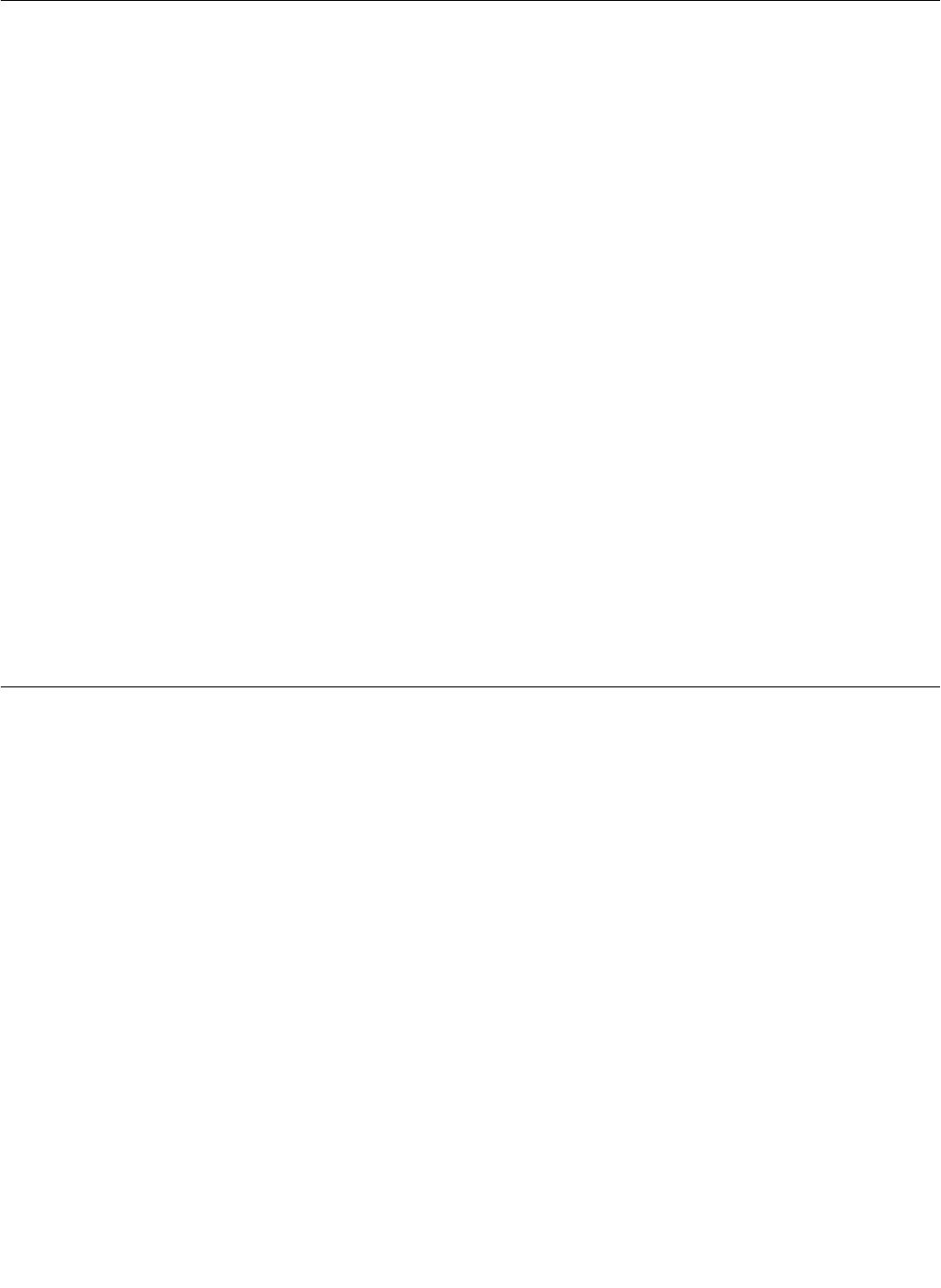
Diagnostics & Troubleshooting 6 - 23
If Motor Deceleration is Slow
The following causes are possible:
The deceleration time is long even when a braking resistor is connected.
The following causes are possible:
“Stall prevention during deceleration enabled” is set.
When a braking resistor is connected, set parameter L3-04 (Stall Prevention Selection During Deceleration) to 0 (disabled) or
3 (with braking resistor). When this parameter is set to 1 (enabled, factory default), the stall prevention function will interfere
with the braking resistor.
The deceleration time setting is too long.
Check the active deceleration time setting (parameters C1-02, C1-04, C1-06, or C1-08).
Motor torque is insufficient.
If the parameters are correct and there is no overvoltage fault, then the motor’s power may be insufficient. Consider increasing
the motor and Drive’s capacity.
The torque limit has been reached.
When a torque limit is reached (L7-01 to L7-04), the motor torque will be limited. This can cause the deceleration time to be
extended. Check to be sure that the value set for the torque limit is suitable.
If a torque limit has been set for the multi-function analog input terminals A2 or A3, parameters H3-09 or H3-05 (set value:
10, 11, 12, or 15), check to be sure that the analog input value is suitable.
If the Vertical-axis Load Drops (Droops) When a Mechanical Brake is Applied
The brake sequence is incorrect.
To ensure that the brake holds, set frequency detection 2 (H2-01 = 5) for the multi-function contact output terminals (M1 and
M2) so that the contacts will turn OFF when the output frequency is greater than L4-01 (3.0 to 5.0Hz). (The contacts will turn
ON below L4-01).
There is a hysteresis in the frequency detection 2 function (i.e., a frequency detection width, L4-02 = 2.0Hz). Change the
setting to approximately 0.5Hz if there is a load droop during stop. Do not use the multi-function contact output run signal
(H2-01 = 0) for the brake ON / OFF signal.
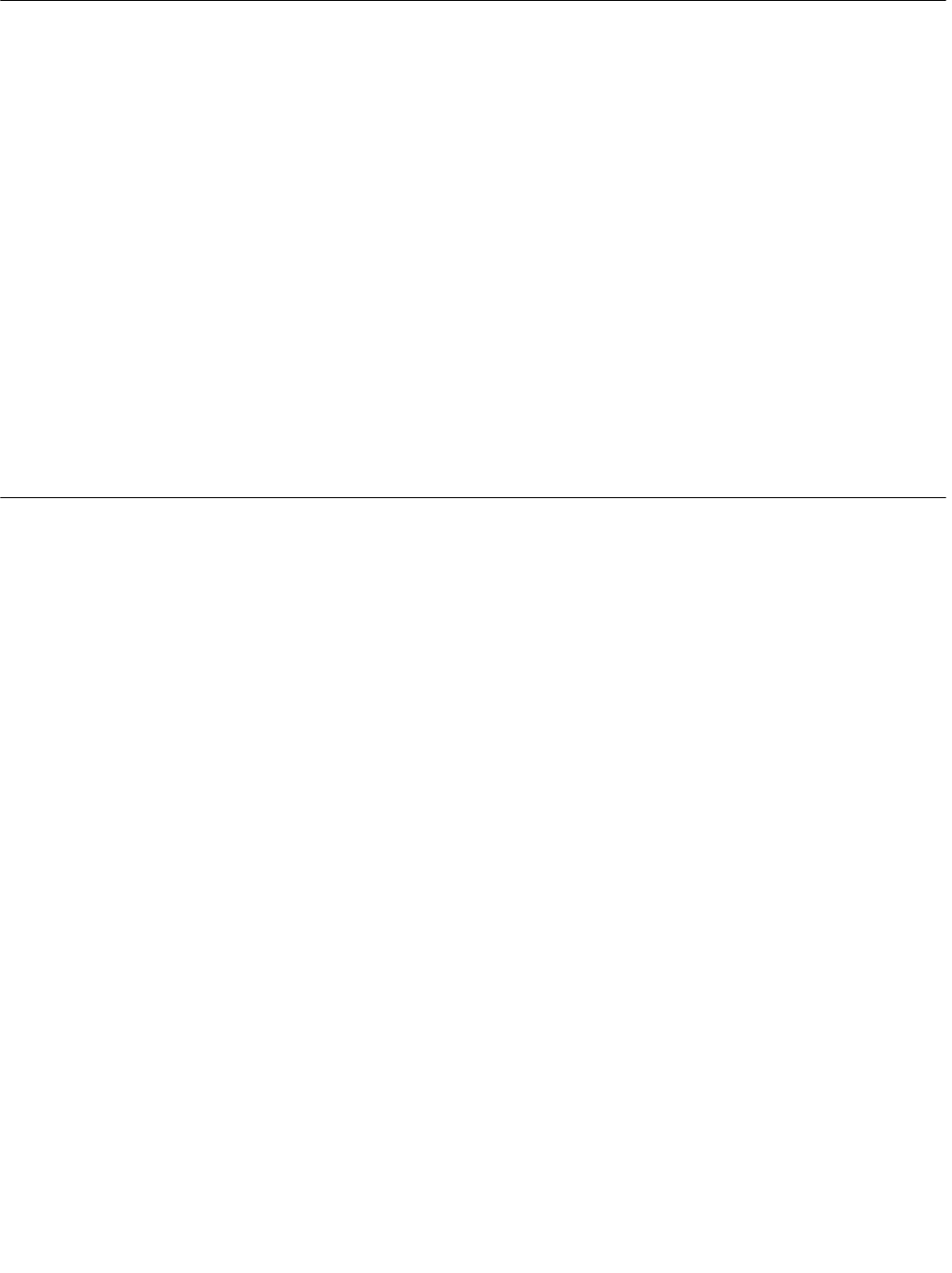
Diagnostics & Troubleshooting 6 - 24
If the Motor Overheats
The following causes are possible:
The load is too large.
If the motor load is too large and the torque exceeds the motor's rated torque, the motor may overheat. Reduce the load amount
by either reducing the load or increasing the acceleration/deceleration times. Also consider increasing the motor size.
The ambient temperature is too high.
The motor rating is determined by a particular ambient operating temperature range. The motor will overheat if it is run
continuously at the rated torque in an environment where the maximum ambient operating temperature rating is exceeded.
Lower the motor's ambient temperature to within its acceptable range.
Auto-Tuning has not been performed for Vector Control
Vector Control may not perform optimally if Auto-Tuning has not been performed. Therefore, perform Auto-Tuning.
Alternatively, change the Control Method Selection (A1-02) to V/F Control (0 or 1).
If Peripheral Devices Like PLCs or Others are Influenced by Starting or
Running Drive
The following solutions are possible:
1.Change the Drive's Carrier Frequency Selection (C6-02) to lower the carrier frequency. This will help to reduce the amount
of transistor switching noise.
2.Install an Input Noise Filter at the Drive's input power terminals.
3.Install an Output Noise Filter at the Drive's motor terminals.
4.Use conduit. Electrical noise can be shielded by metal, so run the Drive’s power leads in a conduit or shielded cable.
5.Ground the Drive and motor.
6.Separate main circuit wiring from control wiring.
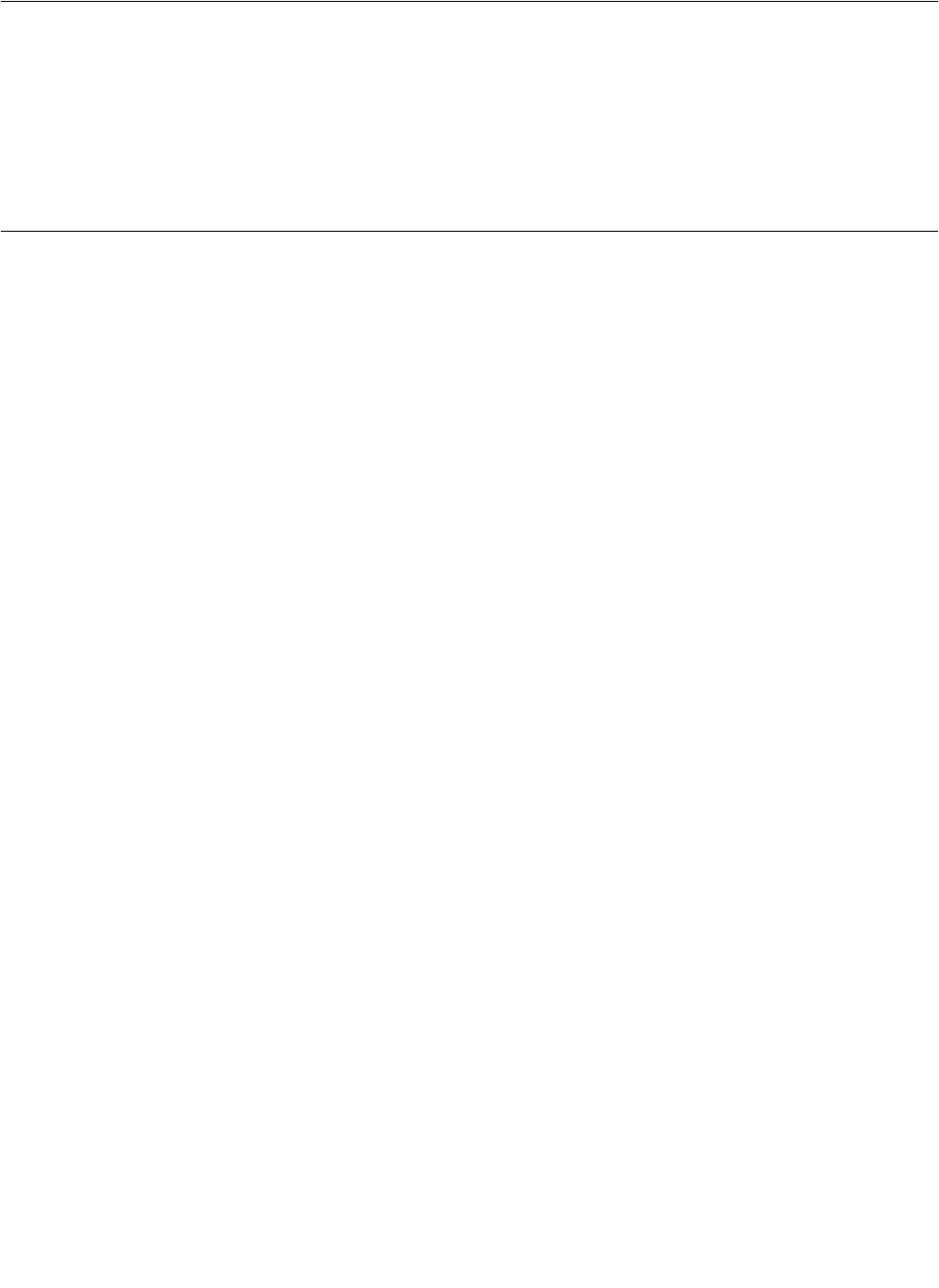
Diagnostics & Troubleshooting 6 - 25
If the Ground Fault Interrupter Operates When the Drive is Run
The Drive’s output is a series of high frequency pulses (PWM), so there is a certain amount of leakage current. This may cause
the ground fault interrupter to operate and cut off the power supply. Change to a ground fault interrupter with a higher leakage
current detection level (i.e., a sensitivity current of 200mA or greater per Unit, with an operating time of 0.1s or more), or one
that incorporates high frequency countermeasures (i.e., one designed for use with a Drive). It will also help to change the
Drive's Carrier Frequency Selection (C6-02) to lower the carrier frequency. In addition, remember that the leakage current
increases as the cable is lengthened.
If There is Mechanical Vibration
Use the following information when there is mechanical vibration.
The application is making unusual sounds.
The following causes are possible:
There may be resonance between the mechanical system's natural frequency and the carrier frequency.
This is characterized by the motor running with no noise generation, but the machinery vibrates with a high-pitched whine. To
prevent this type of resonance, adjust the carrier frequency with parameters C6-02 to C6-05.
There may be resonance between the mechanical system’s natural frequency and the output frequency of
the Drive.
To prevent this from occurring, use the jump frequency function in parameters d3-01 to d3-04, or have the driven motor and
load balanced to reduce vibration.
Oscillation and hunting occur with V/F control.
The torque compensation parameter settings may be incorrect for the machine. Adjust parameters C4-01 (Torque
Compensation Gain), C4-02 (Torque Compensation Primary Delay Time Parameter), n1-02 (Hunting Prevention Gain),
C2-01 (S-curve Characteristic Time at Acceleration Start), and C3-02 (Slip Compensation Primary Delay Time) in order.
Lower the gain parameters and raise the primary delay time parameters.
Oscillation and hunting occur with V/F w/PG control.
The Speed Control Loop Gain ASR) parameter setting (C5-01) may be incorrect for the machine. Change the gain to a more
effective level.
If the oscillation cannot be eliminated in this way, set the Hunting Prevention Selection n1-01 = 0 (disabled). Then try
re-adjusting the gain.
Oscillation and hunting occur with Open-Loop Vector control.
The torque compensation parameter settings may be incorrect for the machine. Adjust parameters C4-01 (Torque
Compensation Gain), C4-02 (Torque Compensation Primary Delay Time Parameter), C2-01 (S-curve Characteristic Time at
Acceleration Start), and C3-02 (Slip Compensation Primary Delay Time) in order. Lower the gain parameters and raise the
primary delay time parameters.
Vector Control may not perform optimally if Auto-Tuning has not been performed. Therefore, perform Auto-Tuning.
Alternatively, change the Control Method Selection (A1-02) to V/F Control (0 or 1).

Diagnostics & Troubleshooting 6 - 26
Oscillation and hunting occur with Flux Vector control.
The gain adjustment may be insufficient. Adjust the speed control loop (ASR) gain (C5-01). If the oscillation points overlap
with those of the machine and cannot be eliminated, increase the ASR primary time delay constant (C5-06), and then readjust
the ASR gain (C5-01).
Vector Control may not perform optimally if Auto-Tuning has not been performed. Therefore, perform Auto-Tuning.
Alternatively, change the Control Method Selection (A1-02) to V/F Control (0 or 1).
Oscillation and hunting occur with PID control.
If there is oscillation or hunting during PID control, check the oscillation cycle and individually adjust the P, I, and D
parameters.
•Disable Integral (I) and Derivative time (D) control.
•Reduce the proportional gain (P) until hunting stops.
•Reintroduce the integral function, starting with long integral time values, to eliminate the P offset.
•Reintroduce the derivative time and adjust with small increments to eliminate oscillation.
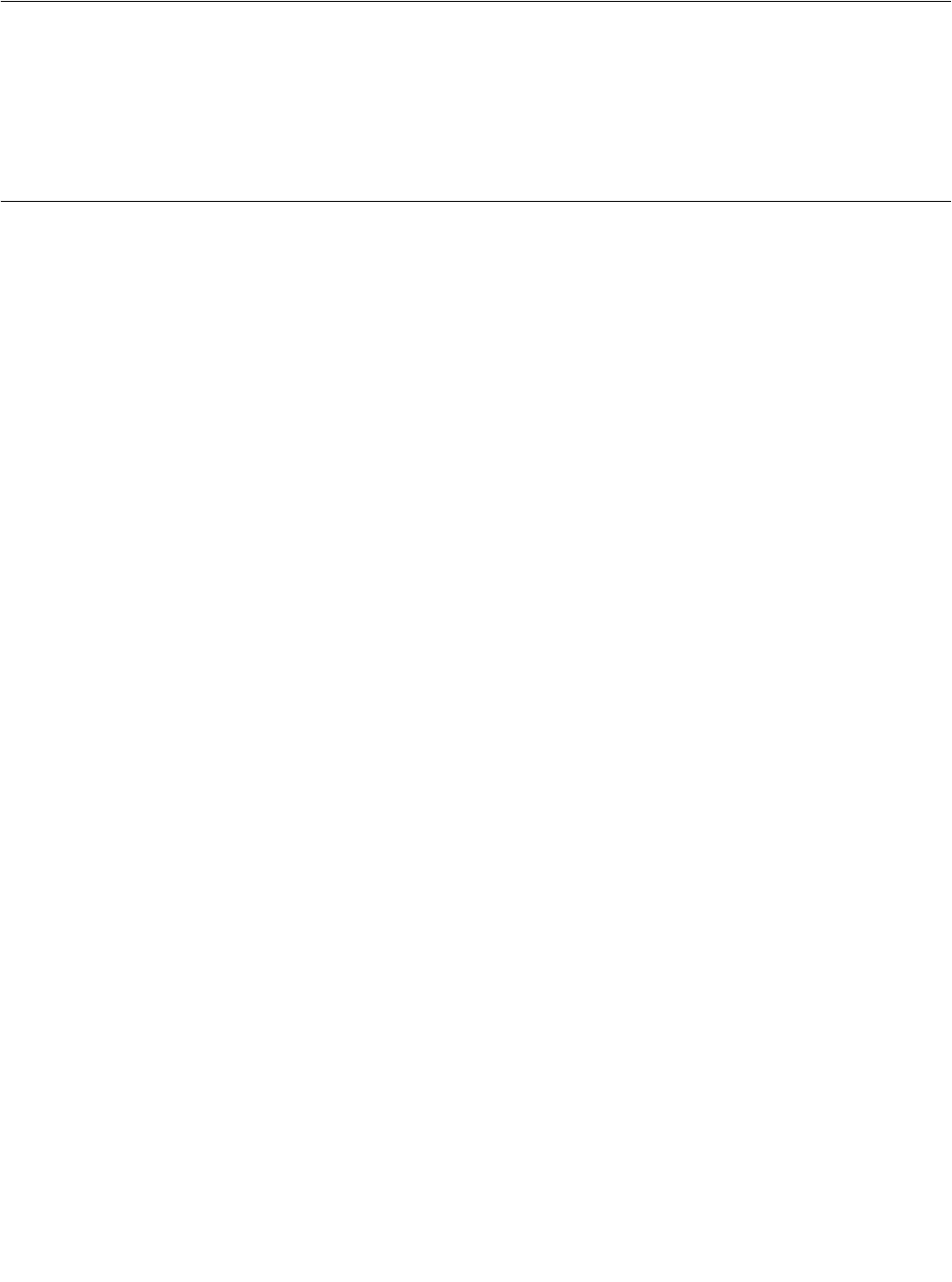
Diagnostics & Troubleshooting 6 - 27
If the Motor Rotates Even When Drive Output is Stopped
If the motor rotates even when the Drive is stopped due to a large internal load, DC-injection braking may be necessary. Adjust
the DC injection braking as follows:
•Increase parameter b2-04 (DC Injection Braking (initial excitation) Time at Stop).
•Increase parameter b2-02 (DC Injection Braking Current).
If Output Frequency Does Not Rise to the Frequency Reference
Use the following information if the output frequency does not match the frequency reference.
The frequency reference is within the jump frequency range.
When the jump frequency function is used, the output frequency does not change within the jump frequency range. Check to
be sure that the Jump Frequency (d3-01 to d3-03) and Jump Frequency Width (d3-04) settings are suitable.
The frequency reference upper limit has been reached.
The output frequency upper limit is determined by the following formula:
Freq Ref Upper Limit = Maximum Output Frequency (E1-04) × Frequency Reference Upper Limit (d2-01) / 100
Check to be sure that the parameter E1-04 and d2-01 settings are suitable.
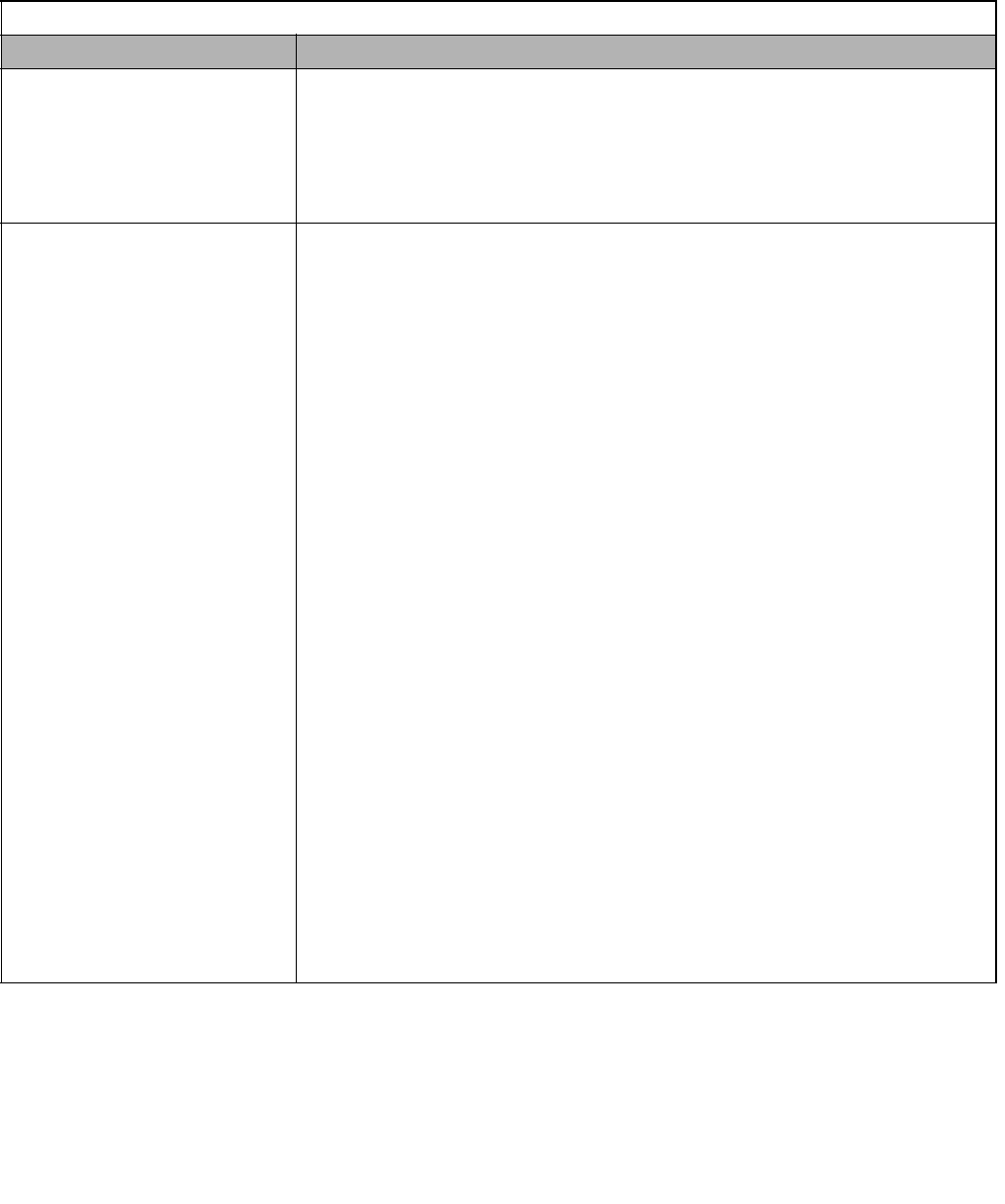
Diagnostics & Troubleshooting 6 - 28
Main Circuit Test Procedure
Before attempting any troubleshooting checks, make sure that the three-phase power is disconnected and locked out. With
power removed from the unit, the DC bus capacitors will stay charged for several minutes. The Charge LED in the Drive will
glow red until the DC bus voltage is below 10Vdc. To ensure that the DC bus is completely discharged, measure between the
positive and negative bus with a DC voltmeter set to the highest scale.
Table 6.6 Main Circuit Test Procedure
Check Procedure
Measure DC Bus Voltage
1. Set the digital multi-meter to its highest Vdc scale.
2. Measure between ⊕ 1 and (-) for the following check:
Place the positive (red) meter lead on ⊕ 1.
Place the negative (black) meter lead on (-).
3. If the measured voltage is < 10Vdc, it is safe to work inside the Drive.
If not, wait until the DC Bus has completely discharged.
Input Diodes
(D1-D12 or Q1)
The input diodes rectify or transform the three-phase input AC voltage into a DC voltage.
1. Set a digital multi-meter to the Diode Check setting.
2. Place the positive (red) meter lead on terminal R/L1.
Place the negative (black) meter lead on terminal ⊕ 1.
Expected reading is about 0.5Vdc.
3. Place the positive (red) meter lead on terminal S/L2.
Place the negative (black) meter lead on terminal ⊕ 1.
Expected reading is about 0.5Vdc.
4. Place the positive (red) meter lead on terminal T/L3.
Place the negative (black) meter lead on terminal ⊕ 1.
Expected reading is about 0.5Vdc.
5. Place the positive (red) meter lead on terminal R/L1.
Place the negative (black) meter lead on terminal (-).
Expected reading is OL displayed.
6. Place the positive (red) meter lead on terminal S/L2.
Place the negative (black) meter lead on terminal (-).
Expected reading is OL displayed.
7. Place the positive (red) meter lead on terminal T/L3.
Place the negative (black) meter lead on terminal (-).
Expected reading is OL displayed.
8. Place the positive (red) meter lead on terminal (-).
Place the negative (black) meter lead on terminal R/L1.
Expected reading is about 0.5Vdc.
9. Place the positive (red) meter lead on terminal (-).
Place the negative (black) meter lead on terminal S/L2.
Expected reading is about 0.5Vdc.
10. Place the positive (red) meter lead on terminal (-).
Place the negative (black) meter lead on terminal T/L3.
Expected reading is about 0.5Vdc.
11. Place the positive (red) meter lead on terminal ⊕ 1.
Place the negative (black) meter lead on terminal R/L1.
Expected reading is OL displayed.
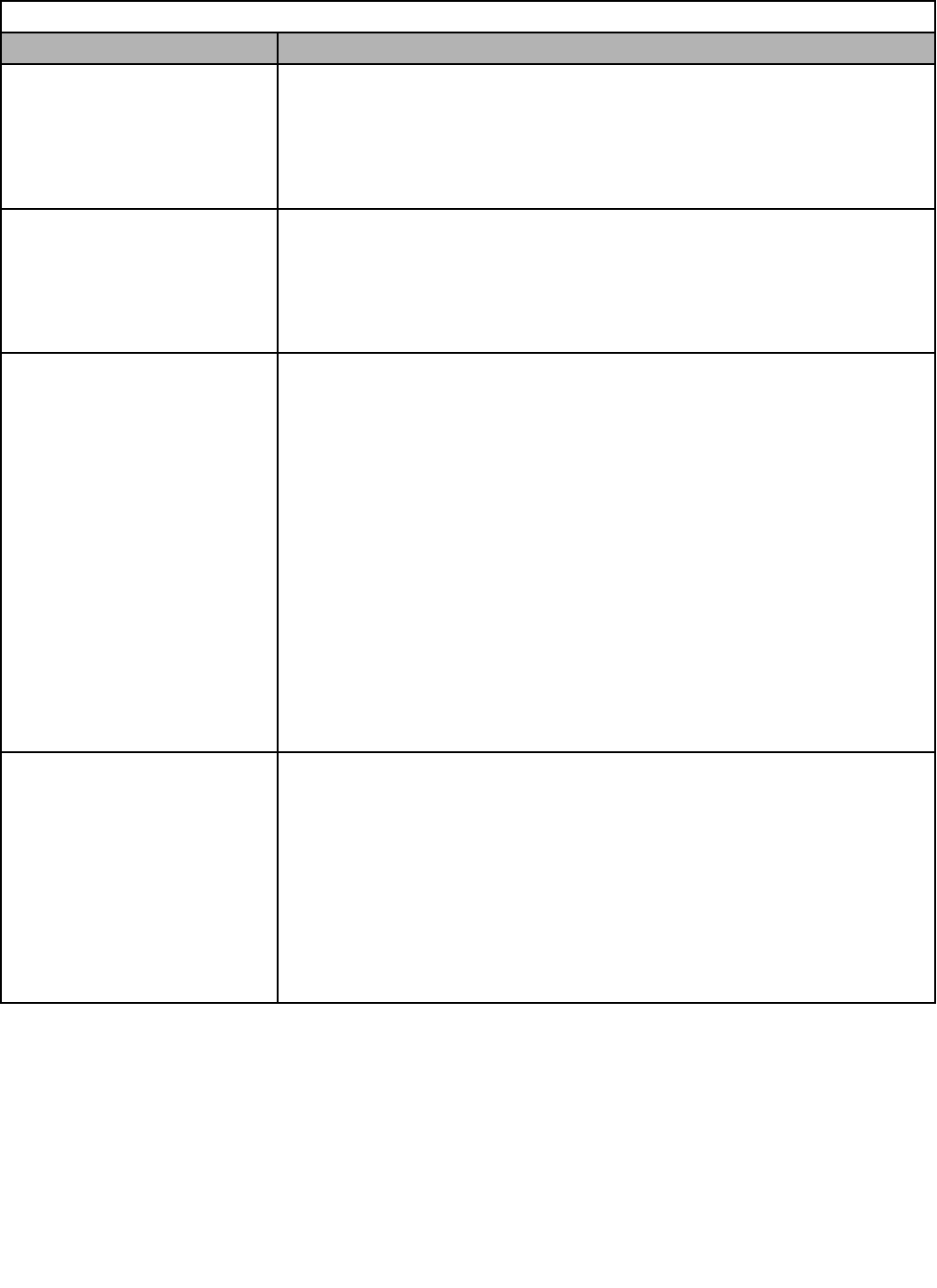
Diagnostics & Troubleshooting 6 - 29
Table 6.6 Main Circuit Test Procedure (continued)
Check Procedure
Input Diodes
(D1-D12 or Q1)
12. Place the positive (red) meter lead on terminal ⊕ 1.
Place the negative (black) meter lead on terminal S/L2.
Expected reading is OL displayed.
13. Place the positive (red) meter lead on terminal ⊕ 1.
Place the negative (black) meter lead on terminal T/L3.
Expected reading is OL displayed.
Soft Charge Resistor Check
(R1, R2, 6PCB)
The soft charge resistor works in conjunction with the soft charge contactor to slowly charge the
DC bus capacitors to minimize the inrush current when power is applied to the Drive.
1. Conduct a visual inspection. Check for physical damage.
2. Set a digital multi-meter to the R x 1 scale.
3. If the resistor is damaged, the measured value will be infinite Ω.
Soft Charge Contactor
(K1)
The purpose of the soft charge contactor is to bypass the soft charge resistor after the DC bus
voltage has reached its normal operating level.
1. Conduct a visual inspection. Check for physical damage.
2. Set a digital multi-meter to the R x 1 scale.
3. On Drives with a board-mounted contactor, verify that each contact resistance measures
infinite Ω.
4. On Drives without a board-mounted contactor, press the plunger in, and verify that each
contact measures 0Ω.
5. On Drives without a board-mounted contactor, release the plunger, and verify that the
resistance is the ohmic value of the soft charge resistor.
6.
On Drives with a board-mounted contactor, verify that the contactor coil measures about 300
Ω
.
Th
e coil can be tested by applying the appropriate voltage to verify the contacts change states.
7. On Drives without a board-mounted contactor, verify that the 230Vac contactor coil
measures about 175Ω. The coil can be tested by applying the appropriate voltage to verify the
contacts change states.
8. On Drives without a board-mounted contactor, verify that the 24Vdc auxiliary coil measures
about 2.2MΩ. The coil can be tested by applying the appropriate voltage to verify the
contacts change states.
DC Bus Fuse
(F1)
The DC bus fuse is located in the negative portion of the DC Bus. The DC bus fuse is used to
protect the main circuit components if the output transistors short. If the DC bus fuse is open, at
least one of the output transistors has failed. When a transistor fails, there is a short between the
positive and negative portions of the DC Bus. The DC bus fuse does not protect the transistors, but
protects the rest of the main circuit from the high current present during a short. Never replace the
DC bus fuse without first checking all of the output transistors.
1. Set a digital multi-meter to the R x 1 scale.
2. Place one lead of the multi-meter on one side of the fuse and place the other lead of the multi-
meter on the other side of the fuse.
3. If the fuse is good, the measured value will be 0Ω.
If the fuse is bad, the measured value will be infinite Ω.
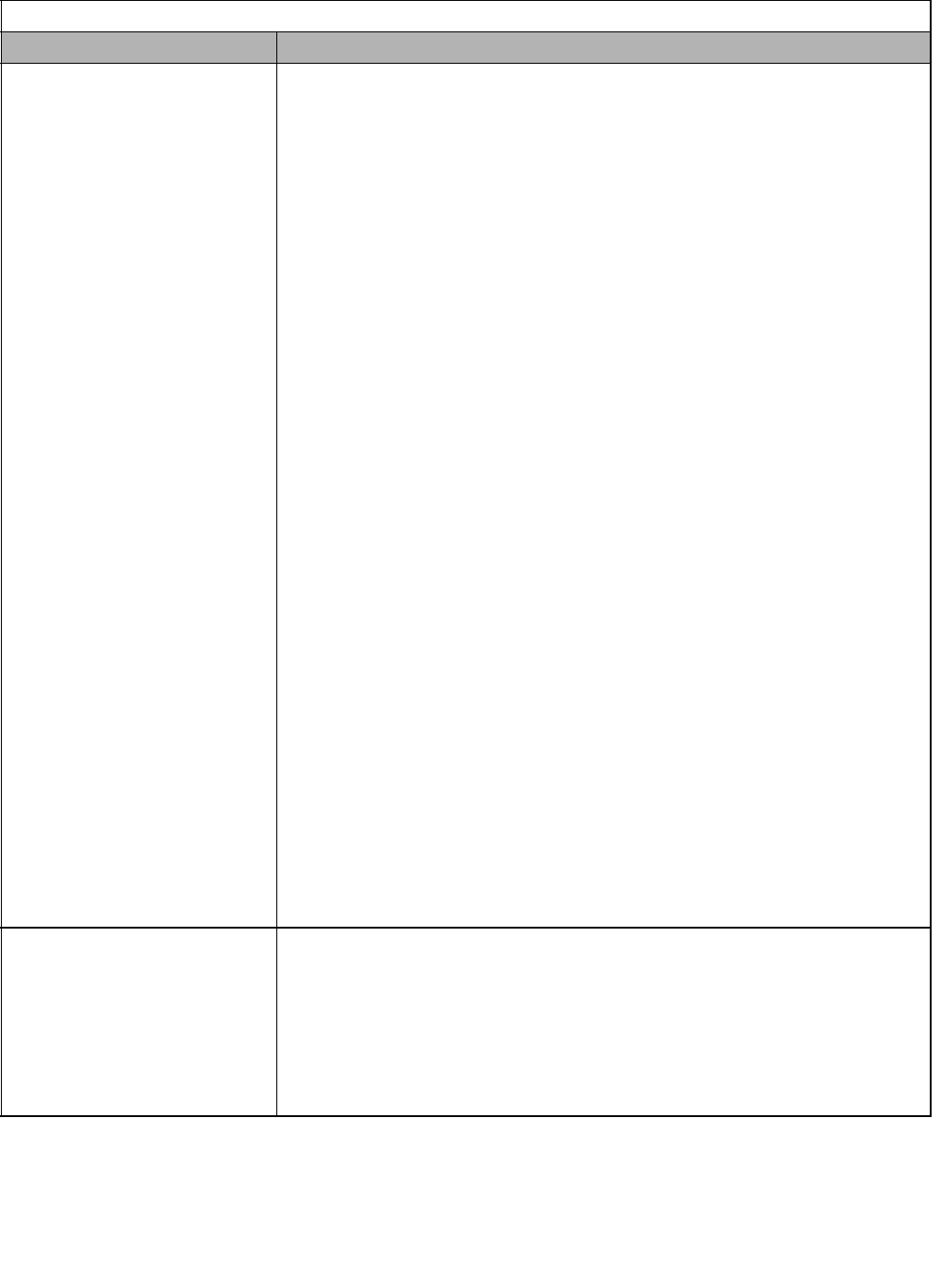
Diagnostics & Troubleshooting 6 - 30
Table 6.6 Main Circuit Test Procedure (continued)
Check Procedure
Output Transistors
(Q1-Q12)
The output transistors are used to switch the DC bus voltage to allow current to flow to the motor.
The following checks will read erroneously if the DC bus fuse is open.
1. Set a digital multi-meter to the Diode Check setting.
2. Place the positive (red) meter lead on terminal U/T1.
Place the negative (black) meter lead on terminal ⊕ 1.
Expected reading is about 0.5Vdc.
3. Place the positive (red) meter lead on terminal V/T2.
Place the negative (black) meter lead on terminal ⊕ 1.
Expected reading is about 0.5Vdc.
4. Place the positive (red) meter lead on terminal W/T3.
Place the negative (black) meter lead on terminal ⊕ 1.
Expected reading is about 0.5Vdc.
5. Place the positive (red) meter lead on terminal U/T1.
Place the negative (black) meter lead on terminal (-).
Expected reading is OL displayed.
6. Place the positive (red) meter lead on terminal V/T2.
Place the negative (black) meter lead on terminal (-).
Expected reading is OL displayed.
7. Place the positive (red) meter lead on terminal W/T3.
Place the negative (black) meter lead on terminal (-).
Expected reading is OL displayed.
8. Place the positive (red) meter lead on terminal (-).
Place the negative (black) meter lead on terminal U/T1.
Expected reading is about 0.5Vdc.
9. Place the positive (red) meter lead on terminal (-).
Place the negative (black) meter lead on terminal V/T2.
Expected reading is about 0.5Vdc.
10. Place the positive (red) meter lead on terminal (-).
Place the negative (black) meter lead on terminal W/T3.
Expected reading is about 0.5Vdc.
11. Place the positive (red) meter lead on terminal ⊕ 1.
Place the negative (black) meter lead on terminal U/T1.
Expected reading is OL displayed.
12. Place the positive (red) meter lead on terminal ⊕ 1.
Place the negative (black) meter lead on terminal V/T2.
Expected reading is OL displayed.
13. Place the positive (red) meter lead on terminal ⊕1.
Place the negative (black) meter lead on terminal W/T3.
Expected reading is OL displayed.
Control Power Fuse
All Drives have a Control Power Fuse. The fuse is located on either the Power PCB (3PCB) or the
Gate Drive PCB (3PCB). The Control Power Fuse protects the primary switching mode power
supply.
1. Set a digital multi-meter to the R x 1 scale.
2. Place one lead of the multi-meter on one side of the fuse and place the other lead of the multi-
meter on the other side of the fuse.
3. If the fuse is good, the measured value will be 0Ω.
If the fuse is bad, the measured value will be infinite Ω.
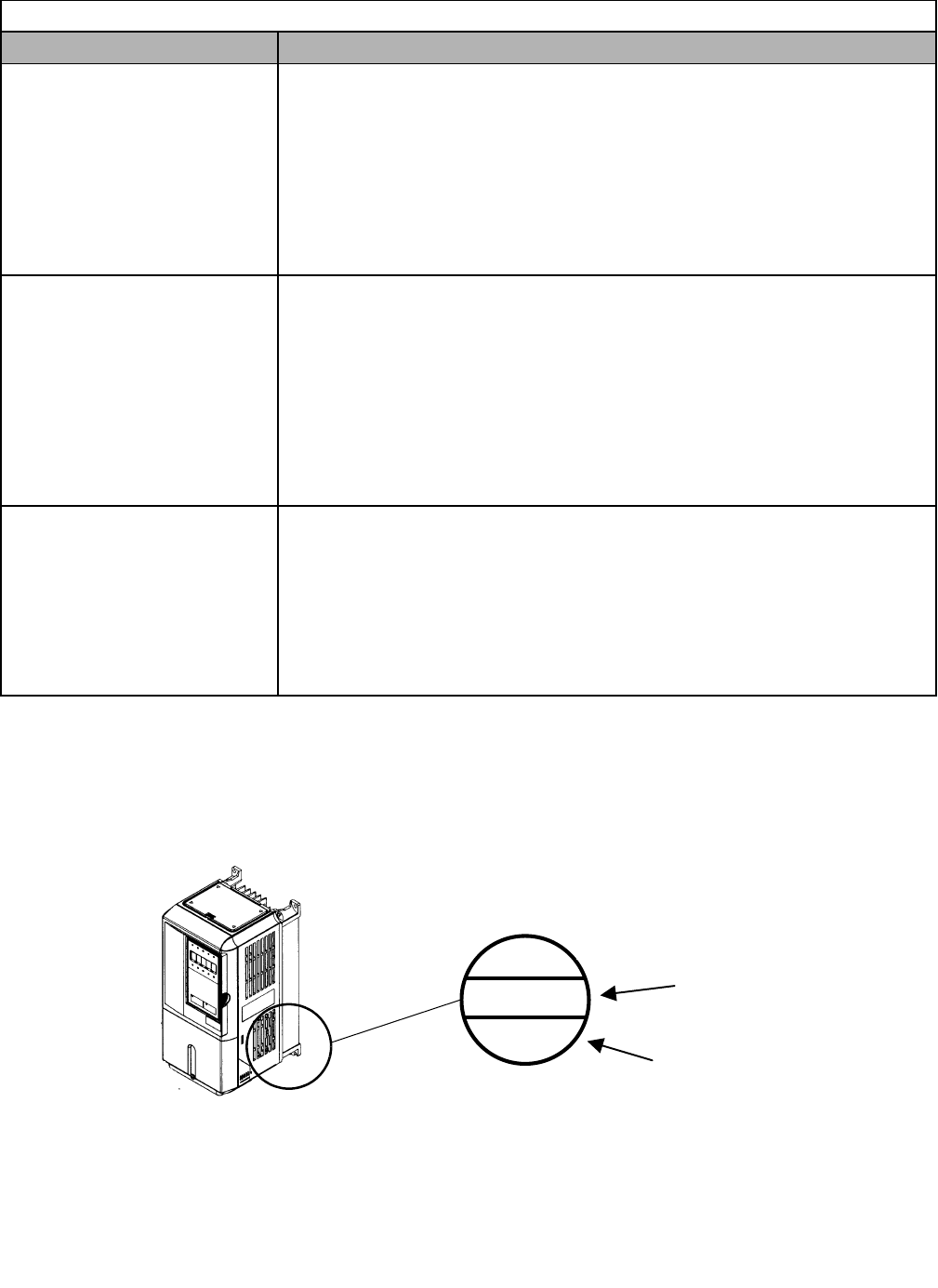
Diagnostics & Troubleshooting 6 - 31
Drive Date Stamp Information
This information is used to determine when a Drive was built to see if it is within its warranty period. The date stamp is located
on the lower right side of the Drive.
Fig 6.1 Date Stamp Location
Table 6.6 Main Circuit Test Procedure (continued)
Check Procedure
24Vdc Cooling Fans
(Heat Sink & Internal)
The Heat Sink & Internal Cooling Fans cool the heat sink as well as the output transistor
modules of the Drive.
1. Conduct a visual inspection to ensure the fan turns freely.
2. If there is no physical evidence that the fan is bad, the fan motor can be checked with a
digital multi-meter.
3. Set the digital multi-meter to the R x 1 scale.
4. Measure across the fan motor terminals. If 0Ω are measured, conclude that the fan motor is
shorted. If infinite Ω are measured, conclude that the fan motor is burned open.
5. If the fan is not working, then disconnect the fan and apply 24Vdc to the fan to test the motor.
230/240Vac Cooling Fans
(Heat Sink)
The Heat Sink Cooling Fans cool the heat sink to remove heat from the Drive.
1. Conduct a visual inspection to ensure the fan turns freely.
2. If there is no physical evidence that the fan is bad, the motor can be checked with a digital
multi-meter.
3. Set a digital multi-meter to the R x 1 scale.
4. Measure across the fan motor terminals. If the fan motor is good, the measured value should
be about 500Ω. If 0Ω are measured, conclude that the fan motor is shorted. If infinite ohms are
measured, conclude that the fan motor is burned open.
5. If the fan is not working, then disconnect the fan and apply 230/240Vac to the fan to test the
motor.
Cooling Fan Fuse
Large Drive units contain a Cooling Fan Fuse. It is located on either the Gate Drive Board (3PCB)
or the Tap Change Board (8PCB). If the Cooling Fan Fuse is open, then the 230/240Vac cooling
fans may be defective.
1. Set a digital multi-meter to the R x 1 scale.
2. Place one lead of the multi-meter on one side of the fuse and place the other lead of the multi-
meter on the other side of the fuse.
3. If the fuse is good, the measured value will be 0Ω. If the fuse is bad, the measured value will
be infinite Ω.
PRD
INSP2
96 3. 31
YEA Production
Manufacture Date
Inspector Number
00.7.22

Diagnostics & Troubleshooting 6 - 32
Notes:
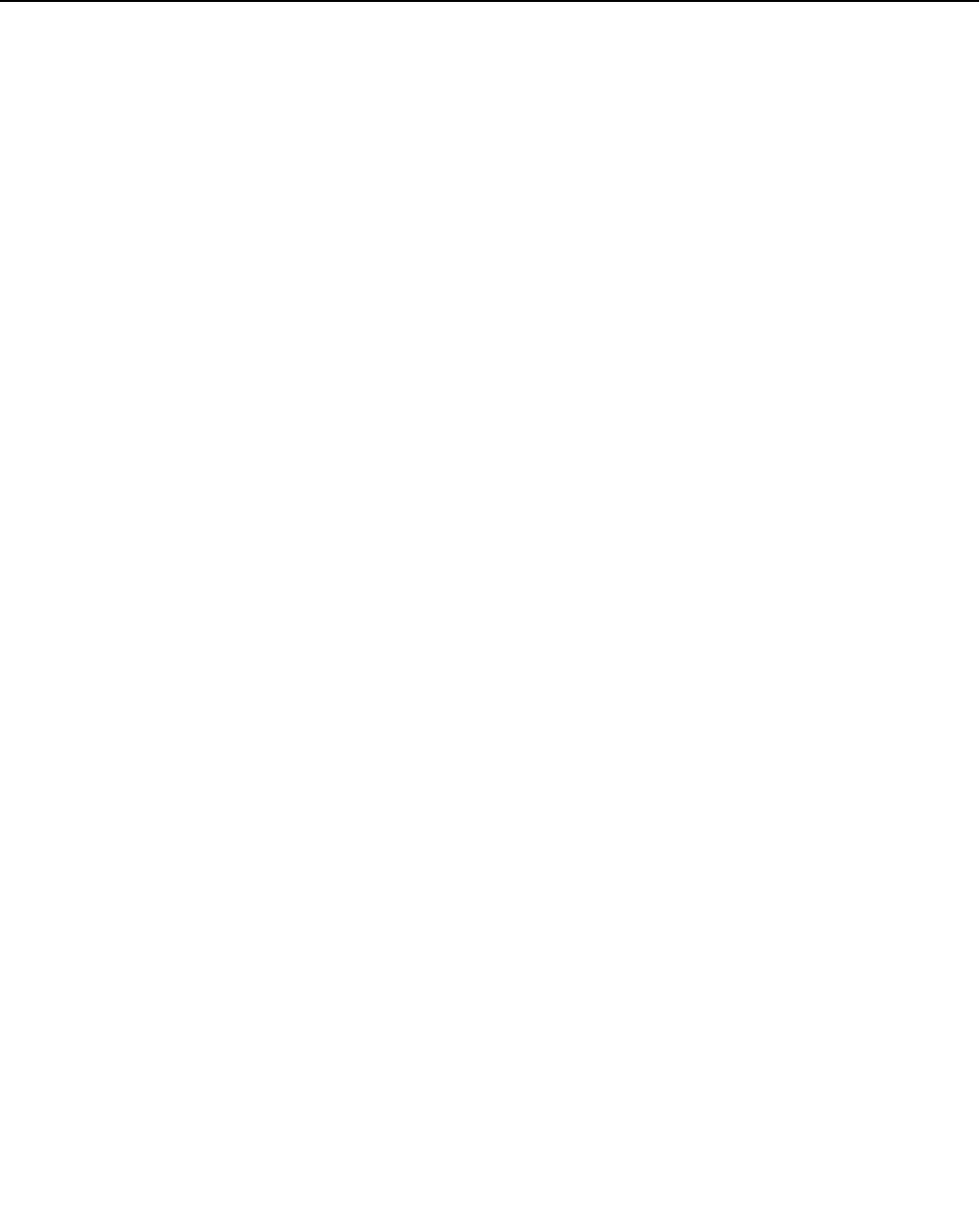
Maintenance 7 - 1
Chapter 7
Maintenance
This chapter describes basic maintenance and inspection of the Drive. Please refer
to these instructions to ensure that the Drive receives the proper maintenance to
maintain overall performance.
Periodic Inspection ............................................................ 7-2
Preventive Maintenance.................................................... 7-3
Periodic Maintenance of Parts .......................................... 7-4
Heatsink Cooling Fan Replacement.................................. 7-5
Removing and Mounting the Terminal Card...................... 7-7
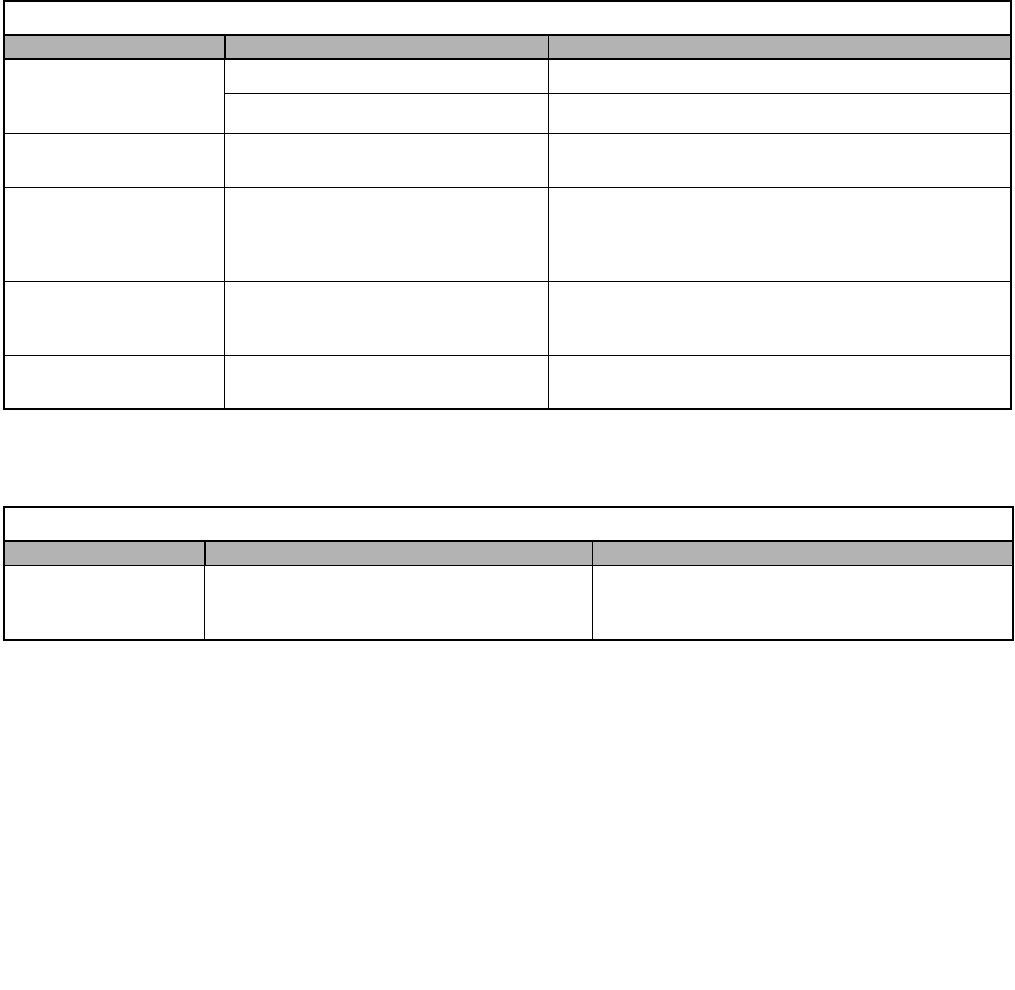
Maintenance 7 - 2
Periodic Inspection
Check the following items during periodic maintenance.
•The motor should not be vibrating or making unusual noises.
•There should be no abnormal heat generation from the Drive or motor.
•The ambient temperature should be within the Drive specification of -10°C to 40°C (14°F to 104°F).
•The output current value shown on U1-03 should not be higher than the motor or Drive rated current for an extended period
of time.
•The cooling fan in the Drive should be operating normally.
Before attempting any maintenance checks, make sure that the three-phase power is disconnected and locked out. With power
removed from the unit, the DC bus capacitors will stay charged for several minutes. The Charge LED in the Drive will glow
red until the DC bus voltage is below 10Vdc. To ensure that the DC bus is completely discharged, measure between the
positive and negative bus with a DC voltmeter set to the highest scale. Be sure not to touch terminals immediately after the
power has been turned off. Doing so can result in electric shock. Please refer to Warnings starting on page i.
Apply power to the Drive and conduct the following inspection.
Table 7.1 Periodic Inspections With no Power Applied
Item Inspection Corrective Action
External terminals, mount-
ing bolts,
connectors, etc.
Are all screws and bolts tight? Tighten loose screws and bolts firmly.
Are connectors tight? Reconnect the loose connectors.
Cooling fins Are the fins dirty or dusty? Clean off any dirt and dust with an air gun using clean and dry
air at a pressure between 55-85 psi.
Control PCB
Terminal PCB
Power PCB
Gate Drive PCBs
Is there any conductive dirt or oil mist on
the PCBs?
Clean off any dirt and dust with an air gun using clean and dry
air at a pressure between 55-85 psi. Replace the boards if they
cannot be made clean.
Input Diodes
IPMs
Output Transistors
Is there any conductive dirt or oil mist on
the modules or components?
Clean off any dirt and dust with an air gun using clean and dry
air at a pressure between 55-85 psi.
Replace the boards if they cannot be made clean.
DC bus capacitors Are there any irregularities, such as
discoloration or odor? Replace the capacitors or Drive.
Table 7.2 Periodic Inspections With Power Applied
Item Inspection Corrective Action
Cooling fan(s) Is there any abnormal noise or vibration, or has the
total operating time exceeded 20,000 hours. Check
U1-40 for elapsed cooling fan operation time. Replace Cooling Fan
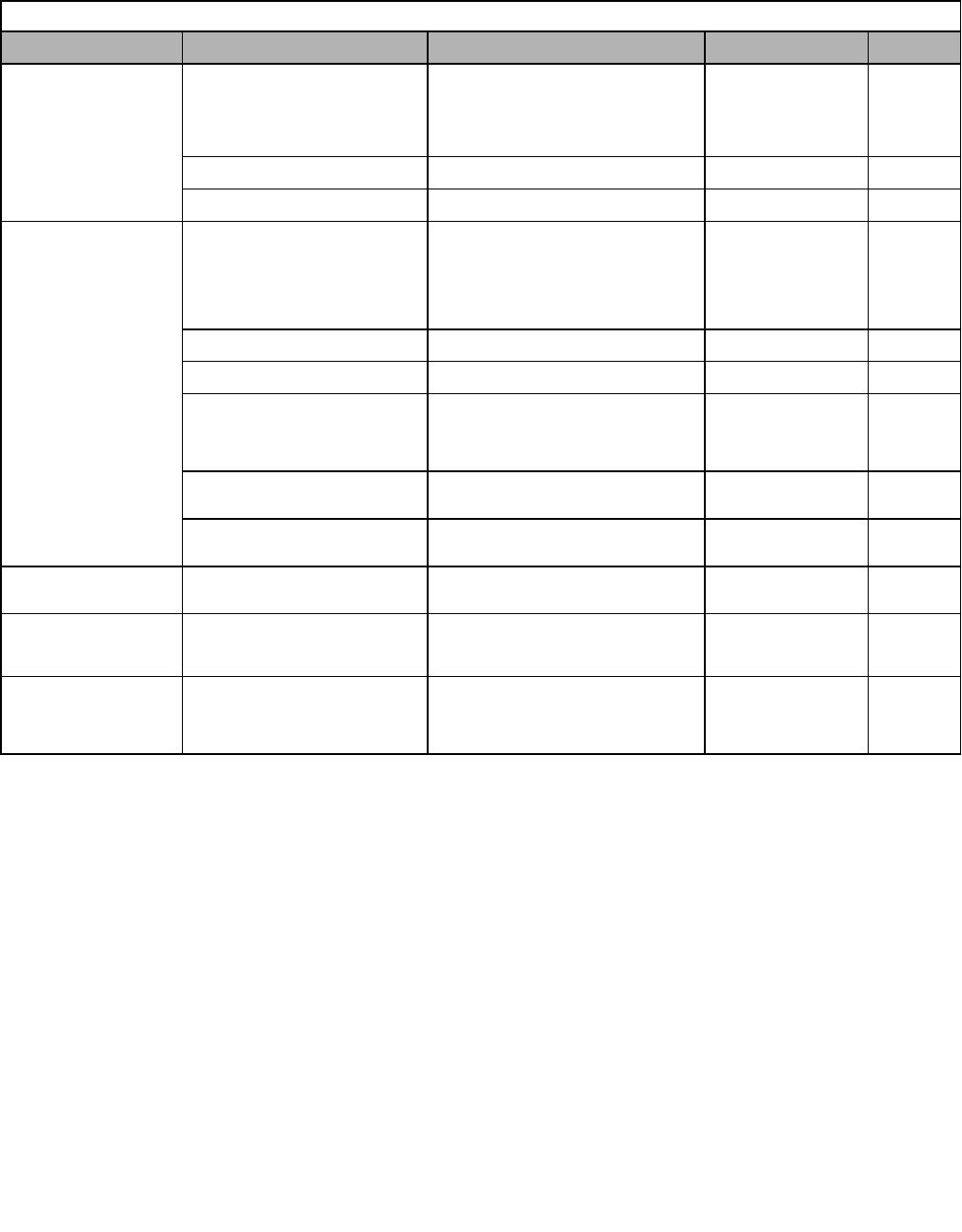
Maintenance 7 - 3
Preventive Maintenance
If the Drive is used under the following conditions, it may be necessary to inspect more often:
•High ambient temperatures, humidity or altitudes above 3,300 feet.
•Frequent starting and stopping.
•Fluctuations of the AC power supply or load.
•Excessive vibration and/or shock loading.
•Poor environment, including dust, metal dust, salt, sulfuric acid, chlorine.
•Poor storage conditions.
Table 7.3 Preventive Maintenance
Inspection Points Item Check Points Every 3-6 Months Yearly
General
Environment
Ambient temperature
Humidity
Dust
Harmful gas
Oil mist
X
X
X
X
X
Equipment Abnormal vibration or noise X
AC Power Supply Main circuit & control voltage X
AC Power Circuit &
Devices
Conductors & Wire
Connections
Loose lugs, screws & wires
Hot spots on parts
Corrosion
Bent conductors
Breakage, cracking or discoloration
Check spacing
X
X
X
X
X
X
Transformers & Reactors Discoloration or noise X
Terminal Blocks Loose, damaged X
DC Bus Capacitors
Leakage
Ruptures, broken, expansion
Capacitance & insulation
resistance
X
X
X
Relays & Contactors Noisy
Contact discoloration X
X
Soft Charge Resistors Cracked
Discoloration X
X
Control Circuits Operation Speed reference voltage/current
I/O contact operation X
X
Cooling System Cooling Fans/Fins & Heatsink Abnormal fan noise
Loose connectors
Free of accumulation
X
XX
Keypad/Display Digital Operator
LEDs
Monitor display values
Key functionality
Clean
X
XX
X
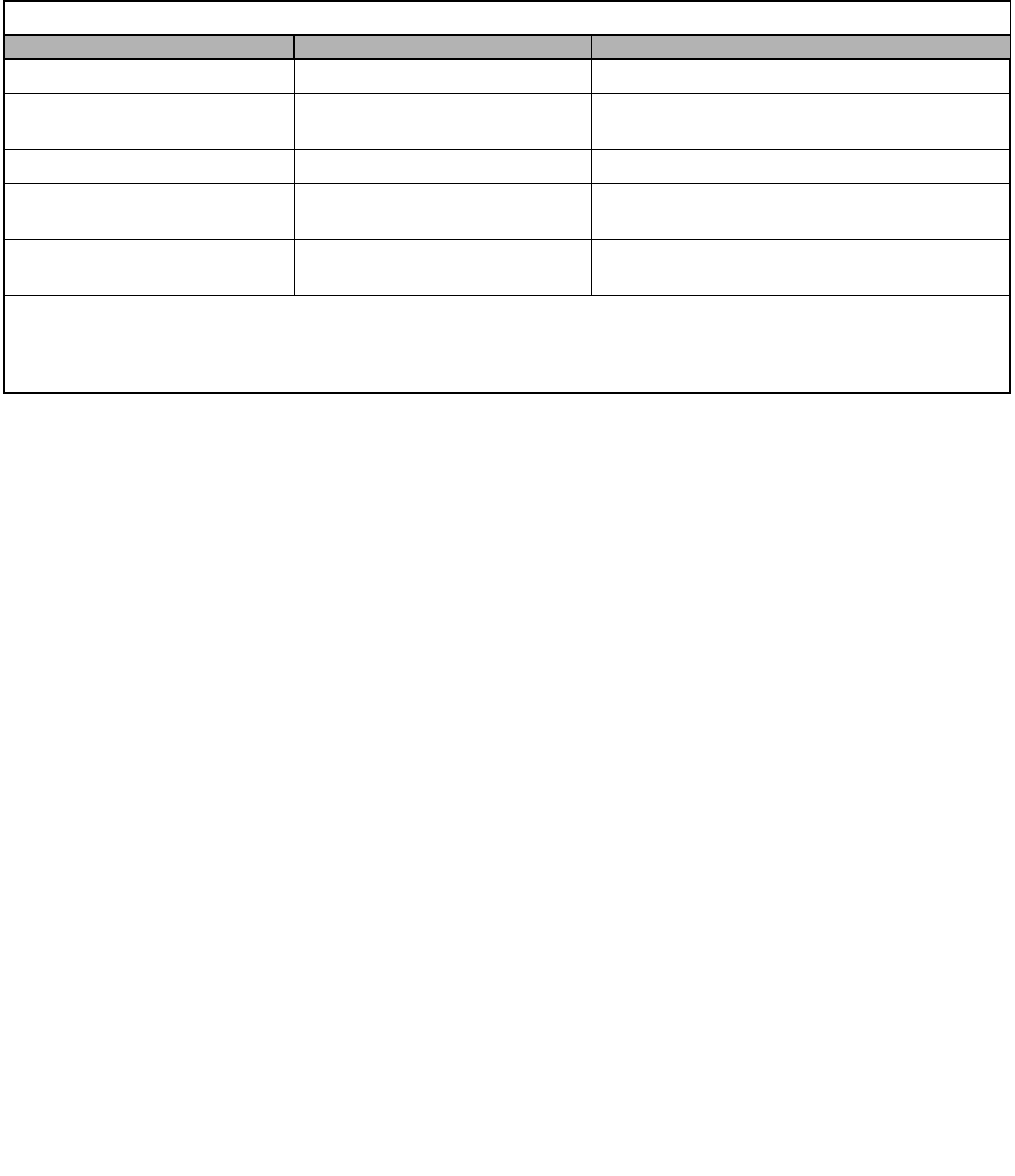
Maintenance 7 - 4
Periodic Maintenance of Parts
In order to keep the Drive operating normally over a long period of time, and to prevent down time due to an unexpected
failure, it is necessary to perform periodic inspections and replace parts according to their service life.
The data indicated in the following table is to be used as a general guideline only. Periodic inspection standards vary
depending on the Drive's installation environment conditions and usage. The Drive's suggested maintenance periods are noted
below.
Table 7.4 Part Replacement Guidelines
Part Standard Replacement Period Replacement Method
Cooling fan(s) 2 to 3 years (20,000 hours) Replace with new part.
DC bus capacitors 5 years Replace with new part.
(Determine need by inspection.)
Soft charge contactor - Determine need by inspection.
DC bus fuse
Control power fuse 10 years Replace with new part.
PCB capacitors 5 years Replace with new board.
(Determine need by inspection.)
Note: The standard replacement period is based on the following usage conditions:
Ambient temperature:Yearly average of 86°F/ 30°C
Load factor: 80% maximum
Operating time: 12 hours maximum per day
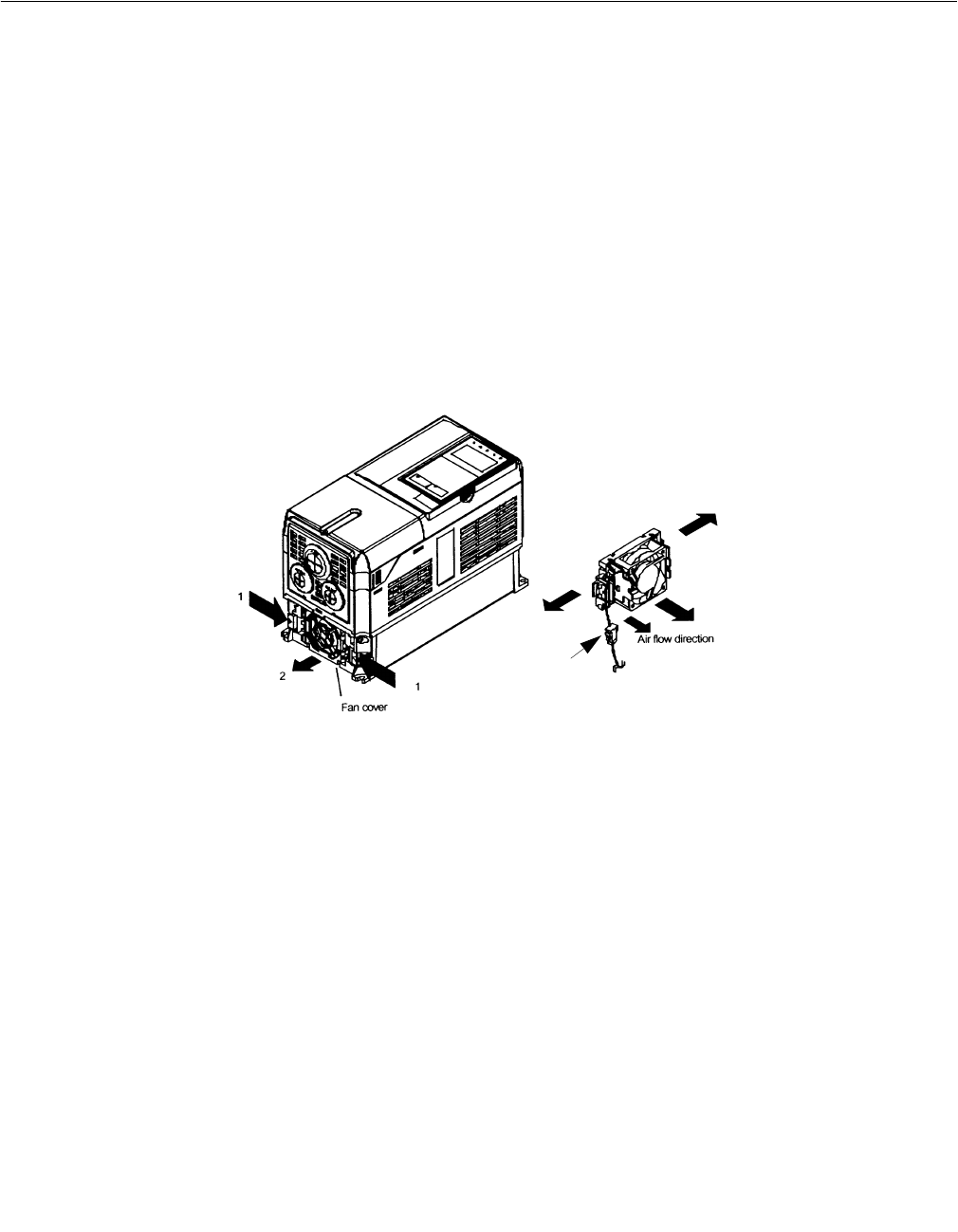
Maintenance 7 - 5
Heatsink Cooling Fan Replacement
Models CIMR-F7U20P4 thru 2018 and 40P4 thru 4018
A cooling fan is attached to the bottom of the Drive.
If the Drive is installed using the mounting holes on the back of the Drive, the cooling fan can be replaced without removing
the Drive from the installation panel.
If the Drive is mounted with the heatsink external to the enclosure, the cooling fan can only be replaced by removing the Drive
from the enclosure.
Removing the Heatsink Cooling Fan
1. Always turn OFF the input power before removing and installing the heatsink cooling fan.
2. Press in on the right and left sides of the fan cover in the direction of arrows “1” and then pull the fan out in the direction of
arrow “2”.
3. Pull out the cable connected to the fan from the fan cover and disconnect the power connector. See Fig 7.1.
4. Open the fan cover on the left and right sides in the direction of arrows “3” and remove the fan cover from the fan.
Fig 7.1 Cooling Fan Replacement Procedure
Installing the Heatsink Cooling Fan
1. Attach the fan cover to the cooling fan. Be sure that the air flow direction indicated by the arrows above faces into the
Drive.
2. Connect the power connector securely and place the power connector and cable into the fan cover.
3. Mount the fan cover on the Drive. Be sure that the tabs on the sides of the fan cover click into place on the Drive.
Power
Connector
3
3
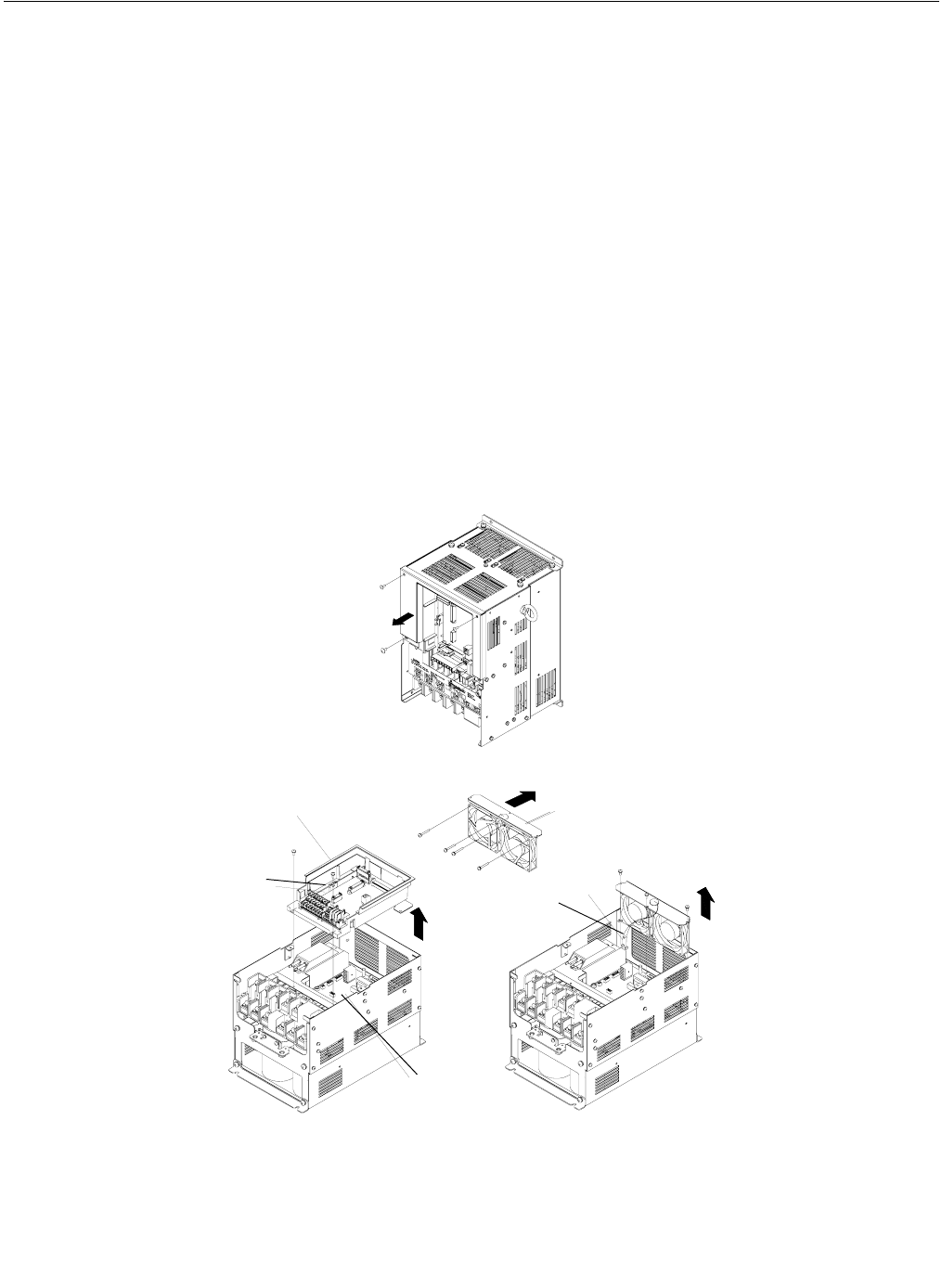
Maintenance 7 - 6
Models CIMR-F7U2022 thru 2110 and 4030 thru 4300
These Drives have an internal cooling fan assembly and a heatsink cooling fan assembly. The heatsink cooling fan assembly is
attached to the top of the heatsink inside the Drive. The cooling fan(s) can be replaced without removing the Drive from the
installation panel.
Removing the Heatsink Cooling Fan Assembly
1. Always turn OFF the input power before removing and installing the heatsink cooling fan assembly.
2. Remove the terminal cover, Drive cover, Digital Operator, and front cover from the front of the Drive.
3. Remove the Control PCB bracket (if necessary) to which the cards are mounted. Remove all cables connected to the Con-
trol PCB and remove the cooling fan power connector from the fan board (13 PCB) positioned near the top of the Drive.
4. Remove the cooling fan power connectors from the gate drive board (3PCB) positioned at the back of the Drive.
5. Remove the fan assembly screws and pull out the fan assembly from the Drive.
6. Remove the cooling fan(s) from the fan assembly.
Mounting the Heatsink Cooling Fan Assembly
After attaching a new cooling fan, reverse the above procedure to attach all of the components.
When attaching the cooling fan to the mounting bracket, be sure that the air flow goes toward the top of the Drive.
Fig 7.2 Cooling Fan Assembly Replacement Procedure
Air flow direction
Gate driver
Connector
Fan cover
Control PCB
Control PCB bracket
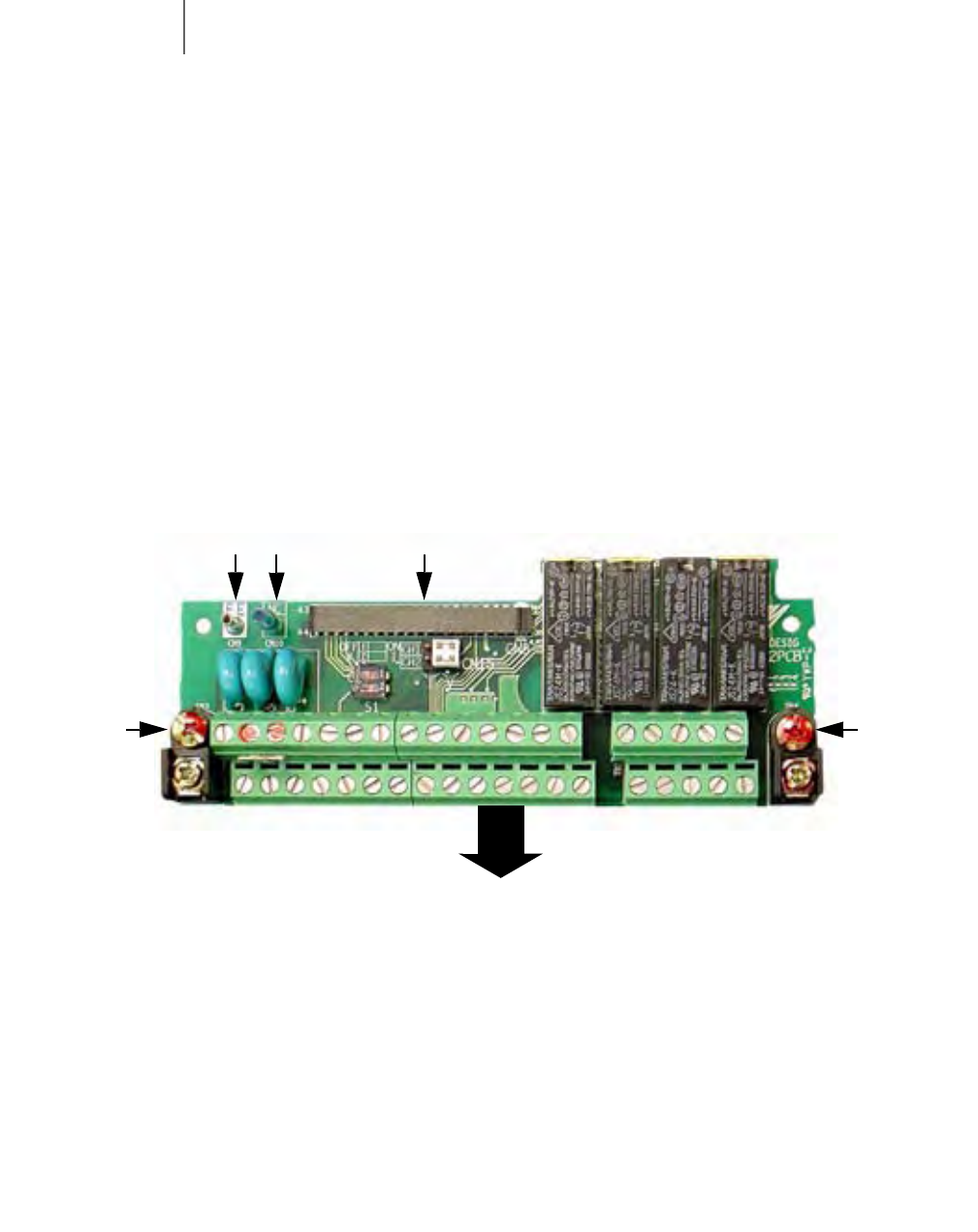
Maintenance 7 - 7
Removing and Mounting the Terminal Card
The terminal card can be removed and mounted without disconnecting the control wiring.
Removing the Terminal Card
1. Remove the terminal cover on the Drive.
2. Remove the Digital Operator and front cover from the Drive.
3. Remove the wires connected to FE and/or NC on the terminal card.
4. Loosen the mounting screws on the left and right sides of the terminal card until they are free. It is not necessary to remove
the mounting screws completely. They are captive and self-rising.
5. Pull the terminal card out in the direction of the block arrow.
Mounting the Terminal Card
Reverse the removal procedure to mount the terminal card.
Confirm that the terminal card and the Control PCB properly meet at connector CN8 before insertion.
The connector pins may be damaged if the terminal card is forced into place, possibly preventing correct Drive operation.
Fig 7.3 Terminal Card Removal Procedure
IMPORTANT Always confirm that input power is removed and the Charge LED is not lit before removing or mounting the terminal
card.
Mounting
Screw
Mounting
Screw
NC
FE CN8

Maintenance 7 - 8
Notes:
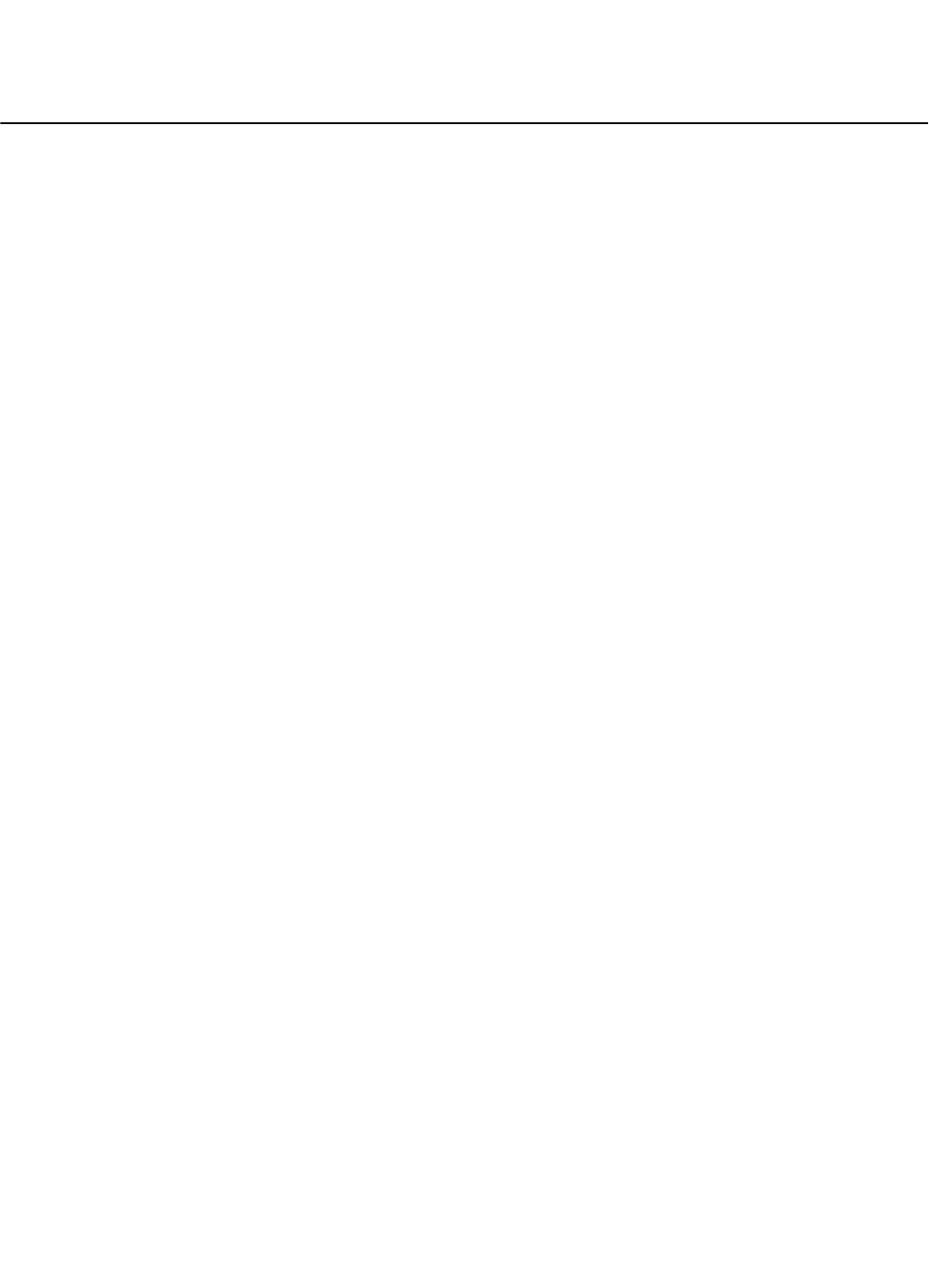
Parameters A - 1
Appendix A
Parameters
This appendix lists all the parameter numbers and names, along with a description
of each. The abbreviated name as it appears on the Digital Operator display/keypad
is shown in bold type.
F7 Parameter List ...............................................................A-3
F7 Monitor List..................................................................A-38
F7 Fault Trace List............................................................A-41
F7 Fault History List.......................................................... A-41
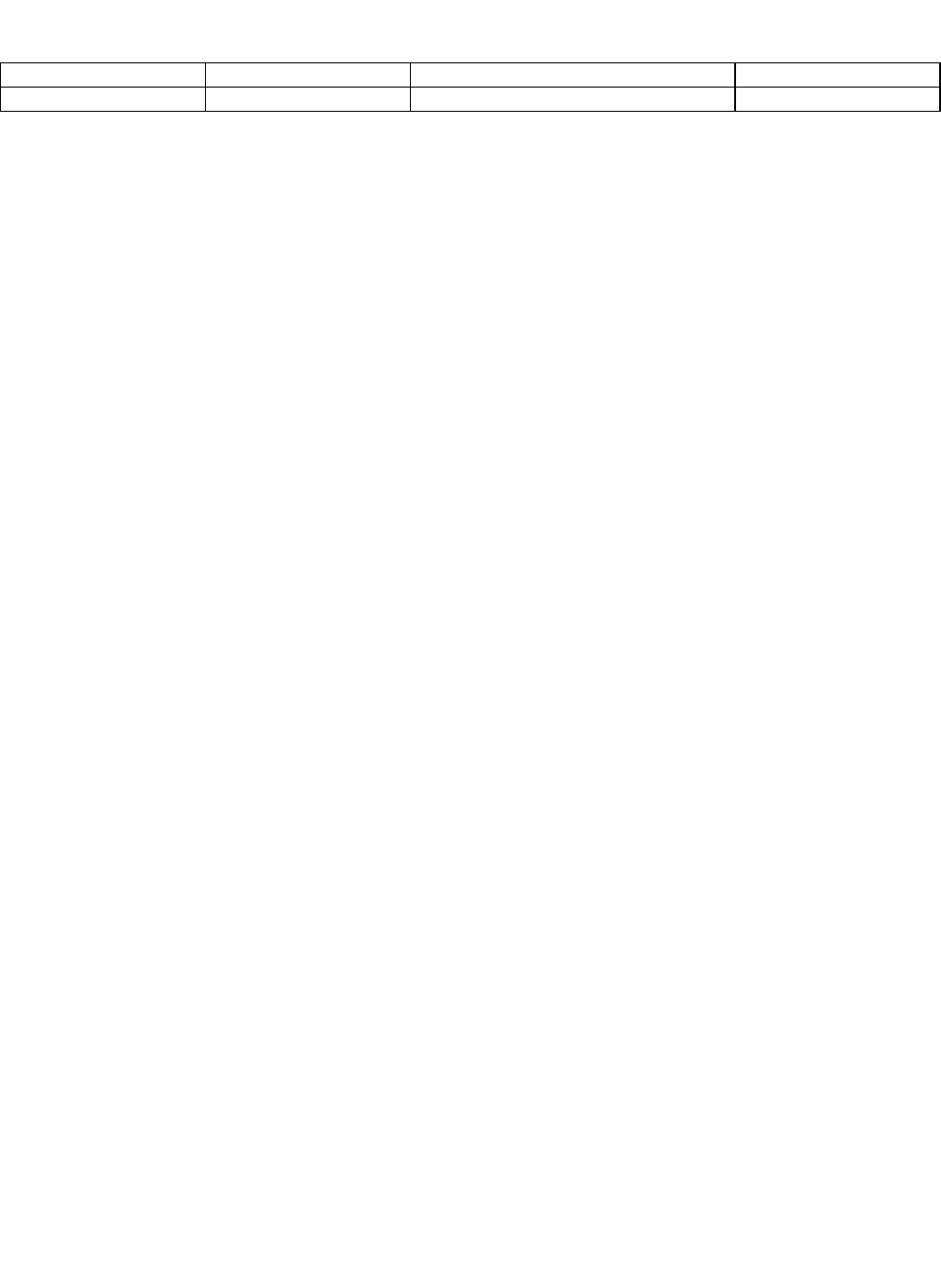
Parameters A - 2
Some parameters in the following tables are not available for all Control Methods (A1-02). Use the key below to determine
which parameters are available for the selected Control Method.
Q: Parameters which can be monitored and set in either Quick Setting or Advanced Programming Menu
A: Parameters which can be monitored and set in only Advanced Programming Menu
-: Parameters which cannot be monitored or set for the selected Control Method
V/F V/F w/PG Open Loop Vector Flux Vector
QQ A -
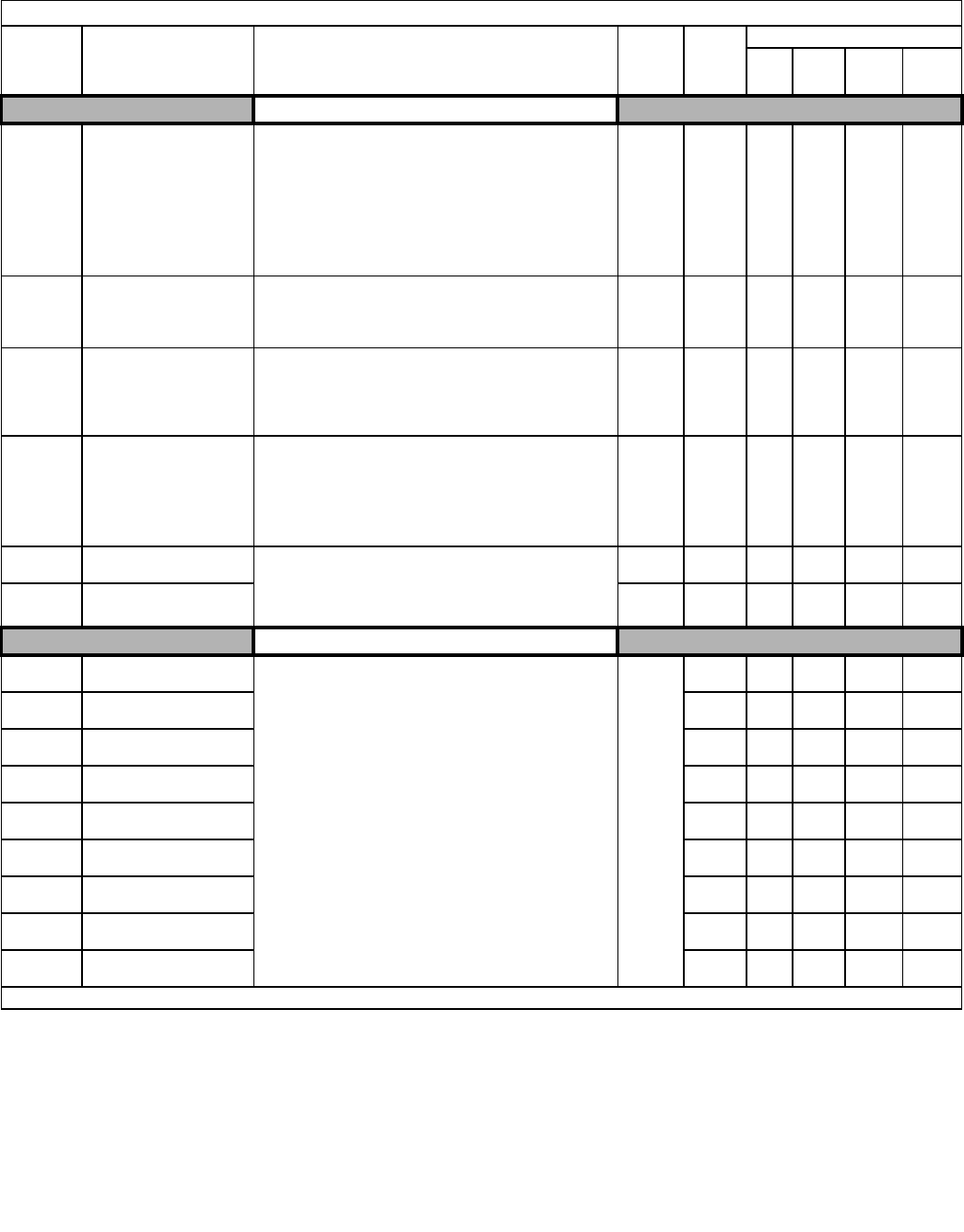
Parameters A - 3
F7 Parameter List
Table A.1 F7 Parameter List
Parameter
No. Parameter Name
Digital Operator Display Description Setting
Range Factory
Setting
Control Method
V/F V/F
w/PG
Open
Loop
Vector
Flux
Vector
Initialization
A1-00
Language Selection
Select Language
Language selection for the Digital Operator.
This parameter is not reset to the factory setting by A1-03.
0: English
1: Japanese
2: Deutsch
3: Francais
4: Italiano
5: Espanol
6: Portugues
0 to 6 0 A A A A
A1-01
Access Level Selection
Access Level
Selects which parameters are accessible via the Digital Operator.
0: Operation Only
1: User Level (only available if A2 parameters have been set)
2: Advanced Level
0 to 2 2 A A A A
A1-02 Control Method Selection
Control Method
Selects the Control Method of the Drive.
0: V/F control without PG
1: V/F control with PG
2: Open Loop Vector
3: Flux Vector (Closed Loop Vector)
0 to 3 2 Q Q Q Q
A1-03 Initialize Parameters
Init Parameters
Used to return all parameters to their factory or user default
settings. (Initializes and then returns A1-03 to zero.)
0: No Initialize
1110: User Initialize (The user must first set their own parameter
values and then store them using parameter o2-03.)
2220: 2-Wire Initialization
3330: 3-Wire Initialization
0 to
3330 0AAA A
A1-04 Password 1
Enter Password When the value set into A1-04 does NOT match the value set into
A1-05, parameters A1-01 thru A1-03 and A2-01 thru A2-32 cannot
be changed. All other parameters as determined by A1-01 can be
changed. Parameter A1-05 can be accessed by pressing the MENU
key while holding the RESET key.
0 to 9999 0 A A A A
A1-05 Password 2
Select Password 0 to 9999 0 A A A A
User Parameters
A2-01 User Parameter 1
User Param 1
Selects the parameters to be available in the User Access Level
(A1-01 = 1). These parameters are not related to the User Initialize
function.
b1-01
to
o3-02
–AA A A
A2-02 User Parameter 2
User Param 2 –AA A A
A2-03 User Parameter 3
User Param 3 –AA A A
A2-04 User Parameter 4
User Param 4 –AA A A
A2-05 User Parameter 5
User Param 5 –AA A A
A2-06 User Parameter 6
User Param 6 –AA A A
A2-07 User Parameter 7
User Param 7 –AA A A
A2-08 User Parameter 8
User Param 8 –AA A A
A2-09 User Parameter 9
User Param 9 –AA A A
Denotes that parameter can be changed when the Drive is running.
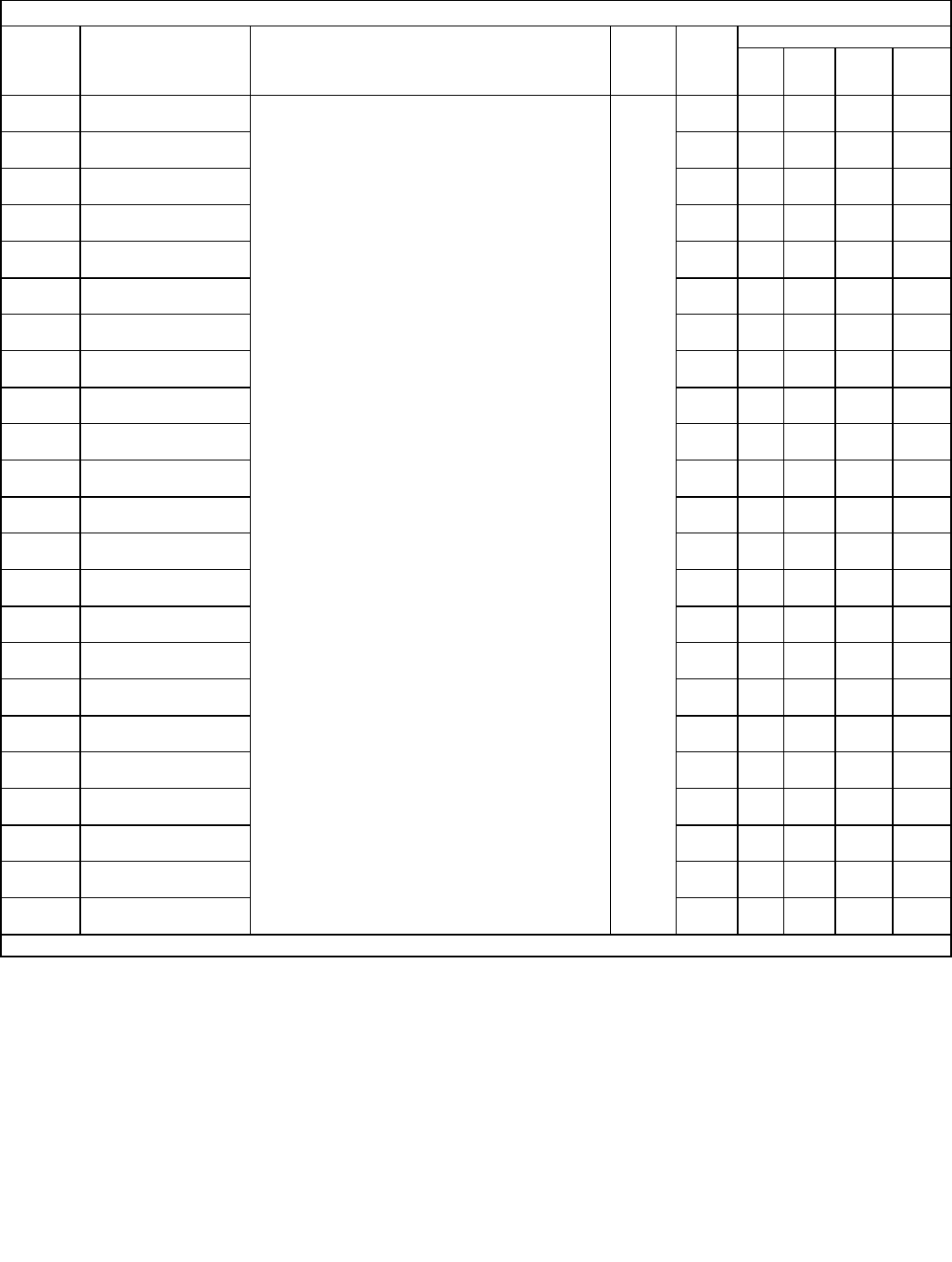
Parameters A - 4
A2-10 User Parameter 10
User Param 10
Selects the parameters to be available in the User Access Level
(A1-01 = 1). These parameters are not related to the User Initialize
function.
b1-01
to
o3-02
–AA A A
A2-11 User Parameter 11
User Param 11 –AA A A
A2-12 User Parameter 12
User Param 12 –AA A A
A2-13 User Parameter 13
User Param 13 –AA A A
A2-14 User Parameter 14
User Param 14 –AA A A
A2-15 User Parameter 15
User Param 15 –AA A A
A2-16 User Parameter 16
User Param 16 –AA A A
A2-17 User Parameter 17
User Param 17 –AA A A
A2-18 User Parameter 18
User Param 18 –AA A A
A2-19 User Parameter 19
User Param 19 –AA A A
A2-20 User Parameter 20
User Param 20 –AA A A
A2-21 User Parameter 21
User Param 21 –AA A A
A2-22 User Parameter 22
User Param 22 –AA A A
A2-23 User Parameter 23
User Param 23 –AA A A
A2-24 User Parameter 24
User Param 24 –AA A A
A2-25 User Parameter 25
User Param 25 –AA A A
A2-26 User Parameter 26
User Param 26 –AA A A
A2-27 User Parameter 27
User Param 27 –AA A A
A2-28 User Parameter 28
User Param 28 –AA A A
A2-29 User Parameter 29
User Param 29 –AA A A
A2-30 User Parameter 30
User Param 30 –AA A A
A2-31 User Parameter 31
User Param 31 –AA A A
A2-32 User Parameter 32
User Param 32 –AA A A
Denotes that parameter can be changed when the Drive is running.
Table A.1 F7 Parameter List (Continued)
Parameter
No. Parameter Name
Digital Operator Display Description Setting
Range Factory
Setting
Control Method
V/F V/F
w/PG
Open
Loop
Vector
Flux
Vector
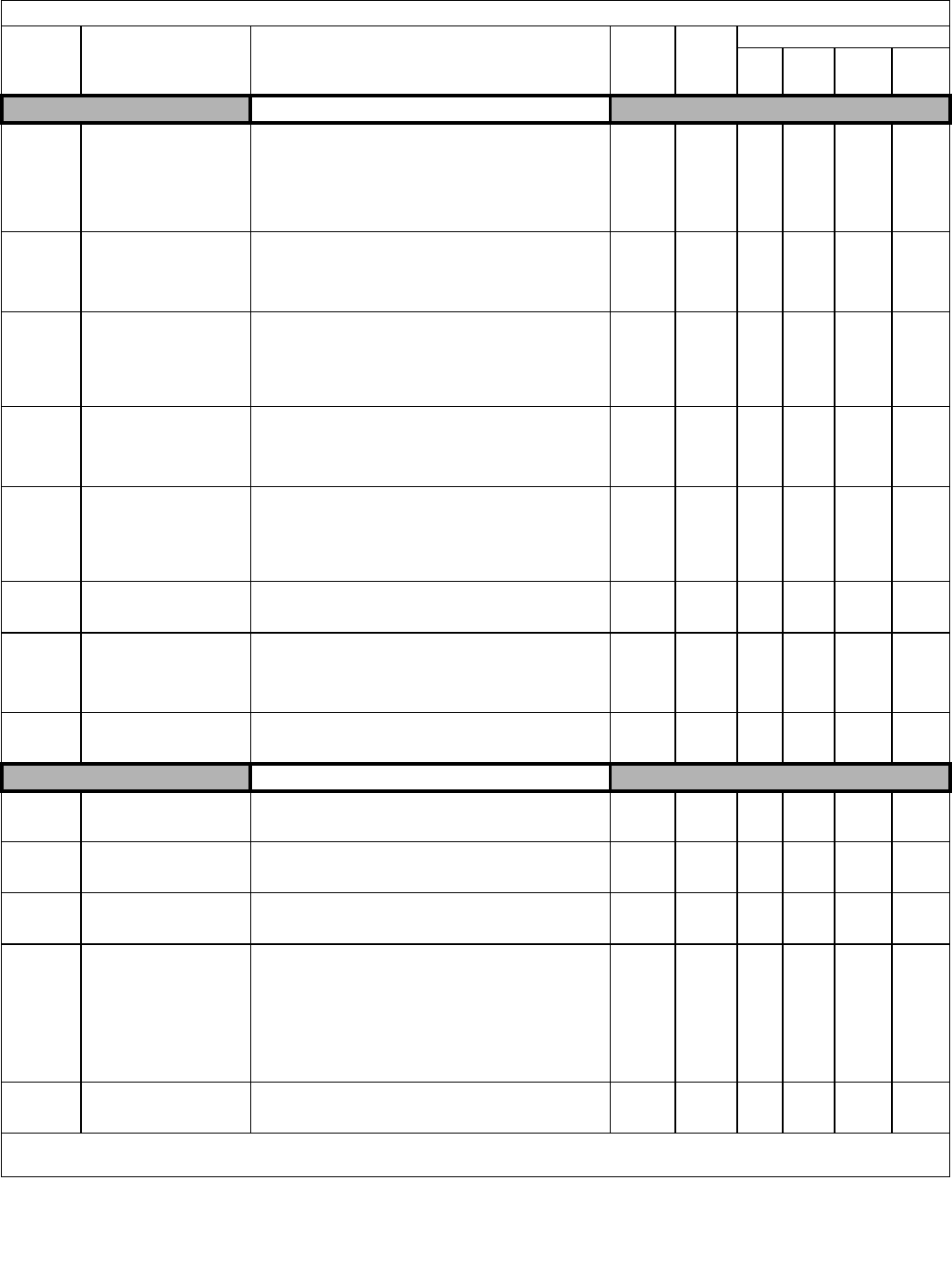
Parameters A - 5
Sequence
b1-01 Frequency Reference
Selection
Reference Source
Selects the frequency reference input source.
0: Operator - Digital preset speed U1-01 or d1-01 to d1-17.
1: Terminals - Analog input terminal A1 (or terminal A2 based on
parameter H3-09).
2: Serial Com - Modbus RS-422/485 terminals R+, R-, S+, and S-.
3: Option PCB - Option board connected on 2CN.
4: Pulse Input (Terminal RP)
0 to 4 1 Q Q Q Q
b1-02 Run Command Selection
Run Source
Selects the run command input source.
0: Operator - RUN and STOP keys on Digital Operator.
1: Terminals - Contact closure on terminals S1 or S2.
2: Serial Com - Modbus RS-422/485 terminals R+, R-, S+, and S-.
3: Option PCB - Option board connected on 2CN.
0 to 3 1 Q Q Q Q
b1-03 Stopping Method
Selection
Stopping Method
Selects the stopping method when the run command is removed.
0: Ramp to Stop
1: Coast to Stop
2: DC Injection to Stop
3: Coast with Timer (A new run command is ignored if received
before the timer expires).
0 to 3 0 Q Q Q Q
b1-04 Reverse Operation
Selection
Reverse Oper
Determines the forward rotation of the motor, and if reverse
operation is disabled.
0: Reverse Enabled
1: Reverse Disabled
2: Exchange Phase - Change direction of forward motor rotation.
0 to 2 0 A
- (A
*
)
A- (A*)
b1-05
Minimum Output
Frequency (E1-09) or Less
Operation Selection
Zero-Speed Oper
Operation method when frequency reference is less than minimum
output frequency set in E1-09.
0: Operates according to frequency reference (E1-09 is disabled)
1: Output shuts off (coast to stop if less than E1-09)
2: Operates according to E1-09 (frequency reference set to E1-09)
3: Zero speed (frequency reference of zero is less than E1-09)
0 to 3 0 - - - A
b1-06 Digital Input Scan Time
Cntl Input Scans
Sets the scan rate of terminals S1 to S8.
0: 2ms - 2 scans (for quick response)
1: 5ms - 2 scans (for noisy environments) 0 to 1 1 A A A A
b1-07 Local/Remote Run
Selection
LOC/REM RUN Sel
0: Cycle External RUN - If the run command is closed when
switching from local mode to remote mode, the Drive will not
run.
1: Accept External RUN - If the run command is closed when
switching from local mode to remote mode, the Drive WILL run.
0 to 1 0 A A A A
b1-08 Run Command Selection
During Program
RUN CMD at PRG
0: Disabled - Run command accepted only in the operation menu.
1: Enabled - Run command accepted in all menus (except when
b1-02 = 0). 0 to 1 0 A A A A
DC Injection Braking
b2-01 DC Injection Braking Start
Frequency
DCInj Start Freq
Sets the frequency at which DC injection braking starts when ramp
to stop (b1-03 = 0) is selected. If b2-01< E1-09, DC Injection
braking starts at E1-09.
0.0 to
10.0 0.5Hz A A A A
b2-02 DC Injection Braking
Current
DCInj Current
Sets the DC injection braking current as a percentage of the Drive
rated current. 0 to 100 50% A A A -
b2-03 DC Injection Braking Time at
Start
DCInj Time @Start
Sets the time of DC injection braking at start in units of 0.01
seconds. 0.00 to
10.00 0.00sec A A A A
b2-04 DC Injection Braking Time at
Stop
DCInj Time @Stop
Sets the time length of DC injection braking at stop in units of 0.01
seconds.
1.When b1-03 = 2, actual DC Injection time is calculated as
follows: b2-04 * 10 * Output Frequency / E1-04.
2.When b1-03 = 0, this parameter determines the amount of time
DC Injection is applied to the motor at the end of the decel ramp.
3.This should be set to a minimum of 0.50 seconds when using
HSB. This will activate DC injection during the final portion of
HSB and help ensure that the motor stops completely.
0.00 to
10.00 0.00sec A A A A
b2-08 Magnetic Flux
Compensation Capacity
Field Comp
Sets the magnetic flux compensation as a percentage of the no-load
current value (E2-03). 0 to 1000 0% - - A -
Denotes that parameter can be changed when the Drive is running.
* For parameter b1-04 settings 0 and 1.
Table A.1 F7 Parameter List (Continued)
Parameter
No. Parameter Name
Digital Operator Display Description Setting
Range Factory
Setting
Control Method
V/F V/F
w/PG
Open
Loop
Vector
Flux
Vector
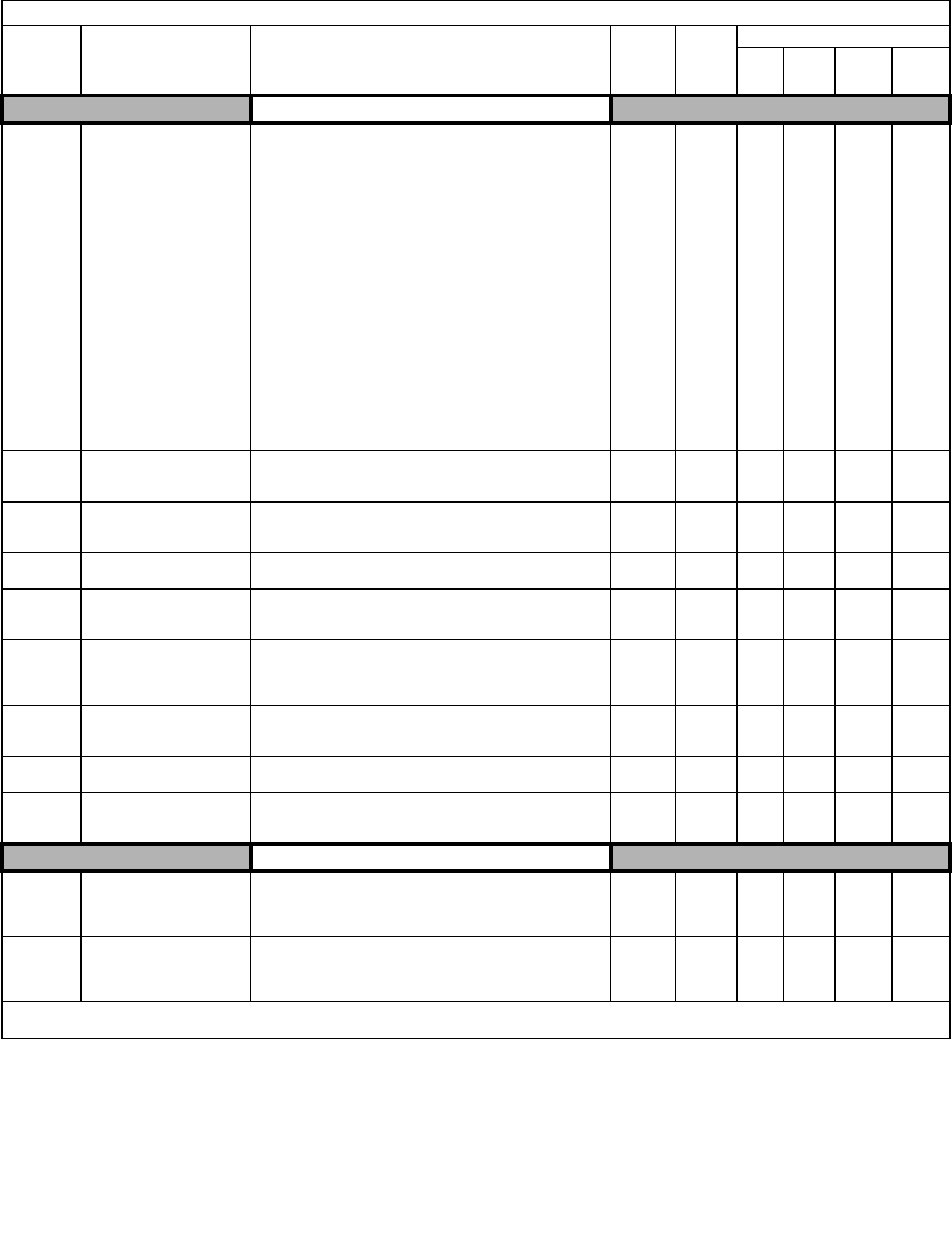
Parameters A - 6
Speed Search
b3-01 Speed Search Selection
SpdSrch at Start
Enables/disables and selects the speed search function at start.
0: Speed Estimation Speed Search Disable - Speed search at start
is disabled (however the estimated speed method is used for
multi-function input, power loss ridethrough, auto fault retry)
1: Speed Estimation Speed Search Enable - The speed estimation
method of speed search is enabled at run command.
2: Current Detection Speed Search Disable - Speed search at start
is disabled (however the current detection method is used for
multi-function input, power loss ride through, auto fault retry)
3: Current Detection Speed Search Enable - The current detection
method of speed search is enabled at run command.
Speed Estimation Method: Motor speed and direction are
measured using residual motor flux.
Current Detection Method: Motor speed is measured using
current feedback levels
(unidirectional only).
0 to 3 2 A A A -
b3-02 Speed Search Deactivation
Current
SpdSrch Current
Used only when b3-01 = 2 or 3. Sets the speed search operation
current as a percentage of Drive rated current. 0 to 200 120% A - A -
b3-03 Speed Search Deceleration
Time
SpdSrch Dec Time
Used only when b3-01 = 2 or 3. Sets the deceleration time during
speed search. 0.1 to
10.0 2.0sec A - A -
b3-05 Speed Search Delay Time
Search Delay Delays the speed search operation after a momentary power loss to
allow time for an external output contactor to re-energize. 0.0 to
20.0 0.2sec A A A A
b3-10 Speed Search Detection Com-
pensation Gain
Srch Detect Comp
Sets the gain for the frequency at which the Drive starts speed
estimation speed search. Use only when b3-01 = 0 or 1. 1.00 to
1.20 1.10 A - A -
b3-14 Bi-directional Speed Search
Selection
Bidir Search Sel
This parameter enables the Drive to detect the direction of rotation
of the motor during speed search.
0: Disable - Drive uses frequency reference direction.
1: Enable - Drive uses detected direction
0 to 1 1 A A A -
b3-17
<3021>
Speed Search Restart
Current Level
SrchRestart Lvl
Sets the current level to retry a speed search as a percentage, taking
the Drive rated current as 100%. 0 to 200 150%
*ANo A No
b3-18
<3021> Speed Search Detection Time
SrchRestart Time Sets the time for speed search detection in seconds. 0.00 to
1.00 0.10 sec A No A No
b3-19
<3021>
Number of Speed Search
Restarts
Num of SrchRestr Sets the number of times that a speed search can be restarted. 0 to 10 0 A No A No
Delay Timers
b4-01 Timer Function ON-Delay
Time
Delay-ON Timer
Used in conjunction with a multi-function digital input and a multi-
function digital output programmed for the timer function. This sets
the amount of time between when the digital input is closed, and the
digital output is energized.
0.0 to
3000.0 0.0sec A A A A
b4-02 Timer Function
OFF-Delay Time
Delay-OFF Timer
Used in conjunction with a multi-function digital input and a multi-
function digital output programmed for the timer function. This sets
the amount of time the output stays energized after the digital input
is opened.
0.0 to
3000.0 0.0sec A A A A
Denotes that parameter can be changed when the Drive is running.
* For Heavy Duty (HD) Rating (C6-01=0): Factory Setting = 150% For Normal Duty (ND) Rating (C6-01=2): Factory Setting = 120%.
Table A.1 F7 Parameter List (Continued)
Parameter
No. Parameter Name
Digital Operator Display Description Setting
Range Factory
Setting
Control Method
V/F V/F
w/PG
Open
Loop
Vector
Flux
Vector
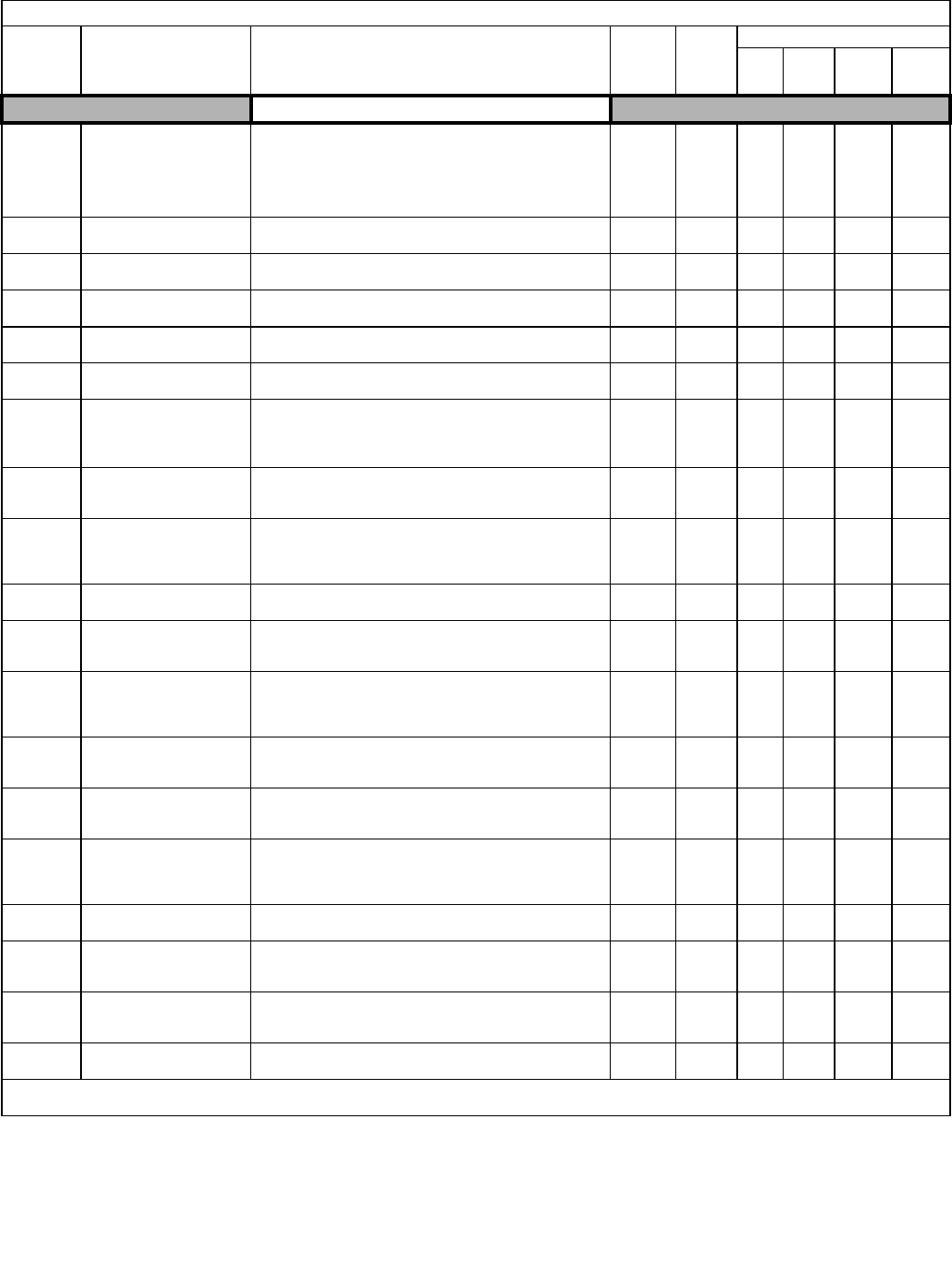
Parameters A - 7
PID Control
b5-01 PID Function Setting
PID Mode
This parameter determines the function of the PID control.
0: Disabled
1: D = Feedback
2: D = Feed-Forward
3: Freq. Ref. + PID output (D = Feedback)
4: Freq. Ref. + PID output (D = Feed-Forward)
0 to 4 0 A A A A
b5-02
Proportional Gain Setting
PID Gain Sets the proportional gain of the PID controller. 0.00 to
25.00 1.00 A A A A
b5-03
Intregral Time Setting
PID I Time Sets the integral time for the PID controller. A setting of zero
disables integral control. 0.0 to
360.0 1.0sec A A A A
b5-04
Intregral Limit Setting
PID I Limit Sets the maximum output possible from the integrator. Set as a
percentage (%) of maximum frequency. 0.0 to
100.0 100.0% A A A A
b5-05
Derivative Time
PID D Time Sets D control derivative time. A setting of 0.00 disables derivative
control. 0.00 to
10.00 0.00sec A A A A
b5-06
PID Output Limit
PID Limit Sets the maximum output possible from the entire PID controller.
Set as a percentage (%) of maximum frequency. 0.00 to
100.0 100.0% A A A A
b5-07
PID Offset Adjustment
PID Offset
Sets the amount of offset of the output of the PID controller. Set as a
percentage (%) of maximum frequency.
The offset is summed with the PID output. This can be used to
artificially kick-start a slow starting PID loop.
–100.0 to
+100.0 0.0% A A A A
b5-08
PID Primary Delay Time
Constant
PID Delay Time
Sets the amount of time for the filter on the output of the PID
controller. 0.00 to
10.00 0.00sec A A A A
b5-09 PID Output Level
Selection
Output Level Sel
Determines whether the PID controller will be direct or reverse
acting.
0: Normal Output
1: Reverse Output
0 to 1 0 A A A A
b5-10 PID Output Gain Setting
Output Gain Sets the output gain of the PID controller. 0.0 to
25.0 1.0 A A A A
b5-11 PID Output Reverse
Selection
Output Rev Sel
0: 0 limit (when PID output goes negative, Drive stops). 0 limit is
automatic when reverse prohibit is selected using b1-04.
1: Reverse (when PID goes negative, Drive reverses). 0 to 1 0 A A A A
b5-12
PID Feedback Reference
Missing Detection
Selection
Fb los Det Sel
0: Disabled
1: Alarm
2: Fault 0 to 2 0 A A A A
b5-13 PID Feedback Loss
Detection Level
Fb los Det Lvl
Sets the PID feedback loss detection level as a percentage (%) of
maximum frequency (E1-04). 0 to 100 0% A A A A
b5-14 PID Feedback Loss
Detection Time
Fb los Det Time
Sets the PID feedback loss detection delay time in terms of
seconds. 0.0 to
25.5 1.0sec A A A A
b5-15 PID Sleep Function Start
Level
PID Sleep Level Sets the sleep function start frequency.
Varies
by
Duty
Rating*
0.0Hz A A A A
b5-16 PID Sleep Delay Time
PID Sleep Time Sets the sleep function delay time in terms of seconds. 0.0 to
25.5 0.0sec A A A A
b5-17 PID Accel/Decel Time
PID Acc/Dec Time
Applies an accel/decel time to the PID setpoint reference. The
Drive’s standard softstarter (C1-XX and S-curve) still affects the
output of the PID algorithm.
0.0 to
25.5 0.0sec A A A A
b5-18 PID Setpoint Selection
PID Setpoint Sel
Allows the b5-19 setting to be the PID target setpoint value.
0: Disabled
1: Enabled 0 to 1 0 A A A A
b5-19 PID Setpoint Value
PID Setpoint Sets the PID target value. Use only when b5-18 = 1 0.0 to
100.0 0.0% A A A A
Denotes that parameter can be changed when the Drive is running.
* For Heavy Duty (HD) Rating (C6-01=0): Setting Range=0.0 to 300.0. For Normal Duty (ND) Rating (C6-01=2): Setting Range=0.0 to 400.0.
Table A.1 F7 Parameter List (Continued)
Parameter
No. Parameter Name
Digital Operator Display Description Setting
Range Factory
Setting
Control Method
V/F V/F
w/PG
Open
Loop
Vector
Flux
Vector
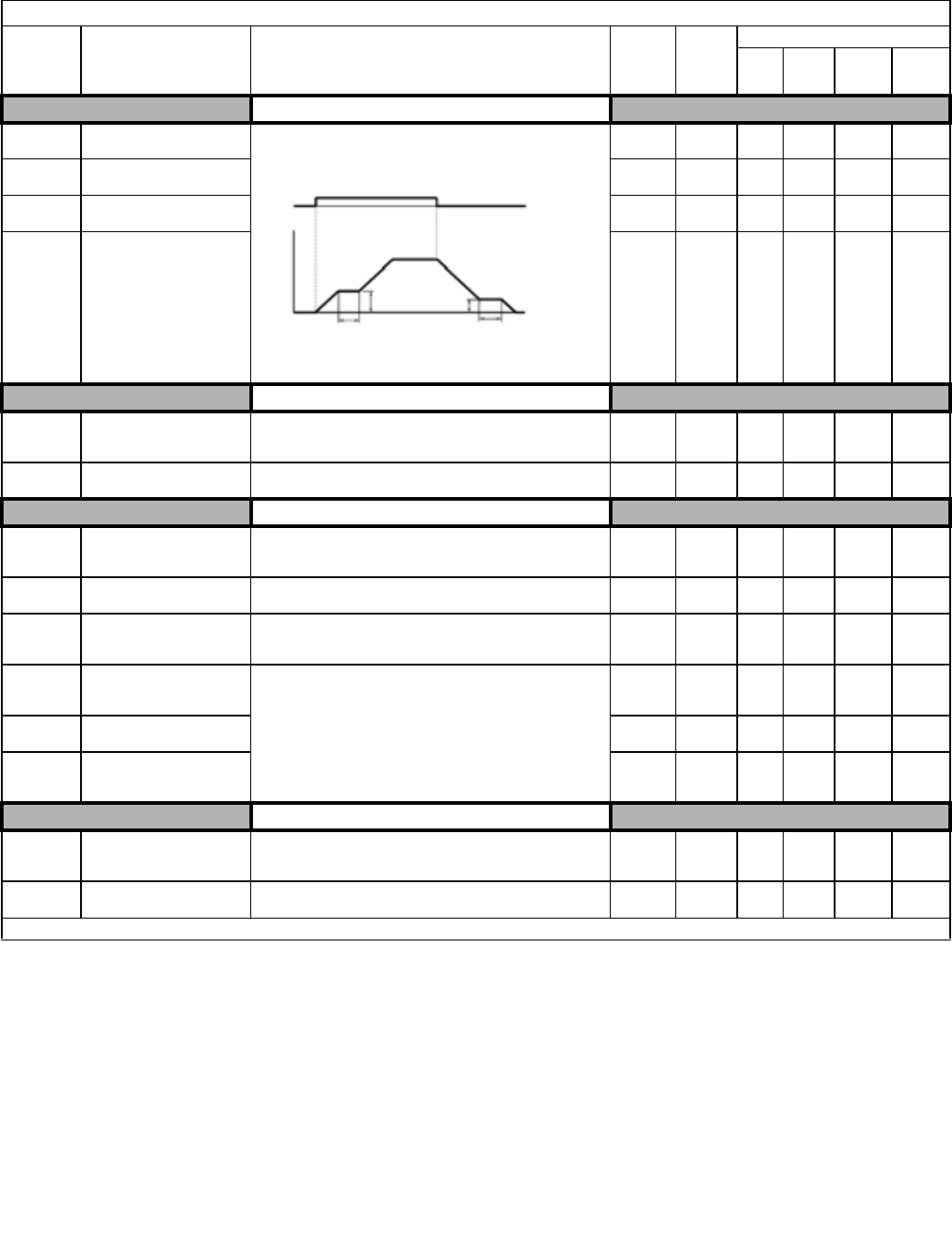
Parameters A - 8
Reference Hold (Dwell)
b6-01 Dwell Reference at Start
Dwell Ref @Start Temporarily holds the frequency reference. 0.0 to
400.0 0.0Hz A A A A
b6-02 Dwell Time at Start
Dwell Time @Start 0.0 to
10.0 0.0sec A A A A
b6-03 Dwell Frequency at Stop
Dwell Ref @Stop 0.0 to
400.0 0.0Hz A A A A
b6-04 Dwell Time at Stop
Dwell Time @Stop 0.0 to
10.0 0.0sec A A A A
Droop Control
b7-01
Droop Control Level
Droop Quantity
Sets the speed decrease as a percentage of maximum output
frequency (E1-04) when the motor is at 100% load torque. Setting
of 0.0 disables droop control.
0.0 to
100.0 0.0% - - - A
b7-02
Droop Control Delay Time
Droop Delay Time Determines the droop control delay time in response to a load
change. 0.03 to
2.00 0.05sec - - - A
Energy Saving
b8-01 Energy Saving Control
Selection
Energy Save Sel
Energy Savings function enable/disable selection.
0: Disabled
1: Enabled 0 to 1 0 A A A A
b8-02 Energy Saving Gain
Energy Save Gain Sets energy savings control gain when in vector control method. 0.0 to
10.0 1.0 - - A A
b8-03 Energy Saving Control Filter
Time Constant
Energy Saving F.T
Sets energy saving control filter time constant when in vector
control method. 0.00 to
10.00
Va ri es
by
kVA -- A A
b8-04 Energy Saving
Coefficient Value
Energy Save COEF
Used to fine-tune the energy savings function when in V/F control
method.
0.0 to
655.00
Va ri es
by
kVA AA - -
b8-05 Power Detection Filter Time
kW Filter Time 0 to 2000 20ms A A - -
b8-06 Search Operation Voltage
Limit
Search V Limit 0 to 100 0% A A - -
Zero Servo
b9-01 Zero Servo Gain
Zero Servo Gain
Sets the position loop gain for Zero Servo command.
This function is effective when multi-function input “zero
servo command” is set. 0 to 100 5 - - - A
b9-02 Zero Servo Completion Width
Zero Servo Count Sets number of pulses used for the multi-function output of
“zero servo completion”. 0 to
16383 10
pulses -- - A
Denotes that parameter can be changed when the Drive is running.
Table A.1 F7 Parameter List (Continued)
Parameter
No. Parameter Name
Digital Operator Display Description Setting
Range Factory
Setting
Control Method
V/F V/F
w/PG
Open
Loop
Vector
Flux
Vector
Run command
Output frequency
Time
ON
b6-03
OFF
b6-01
b6-04
b6-02
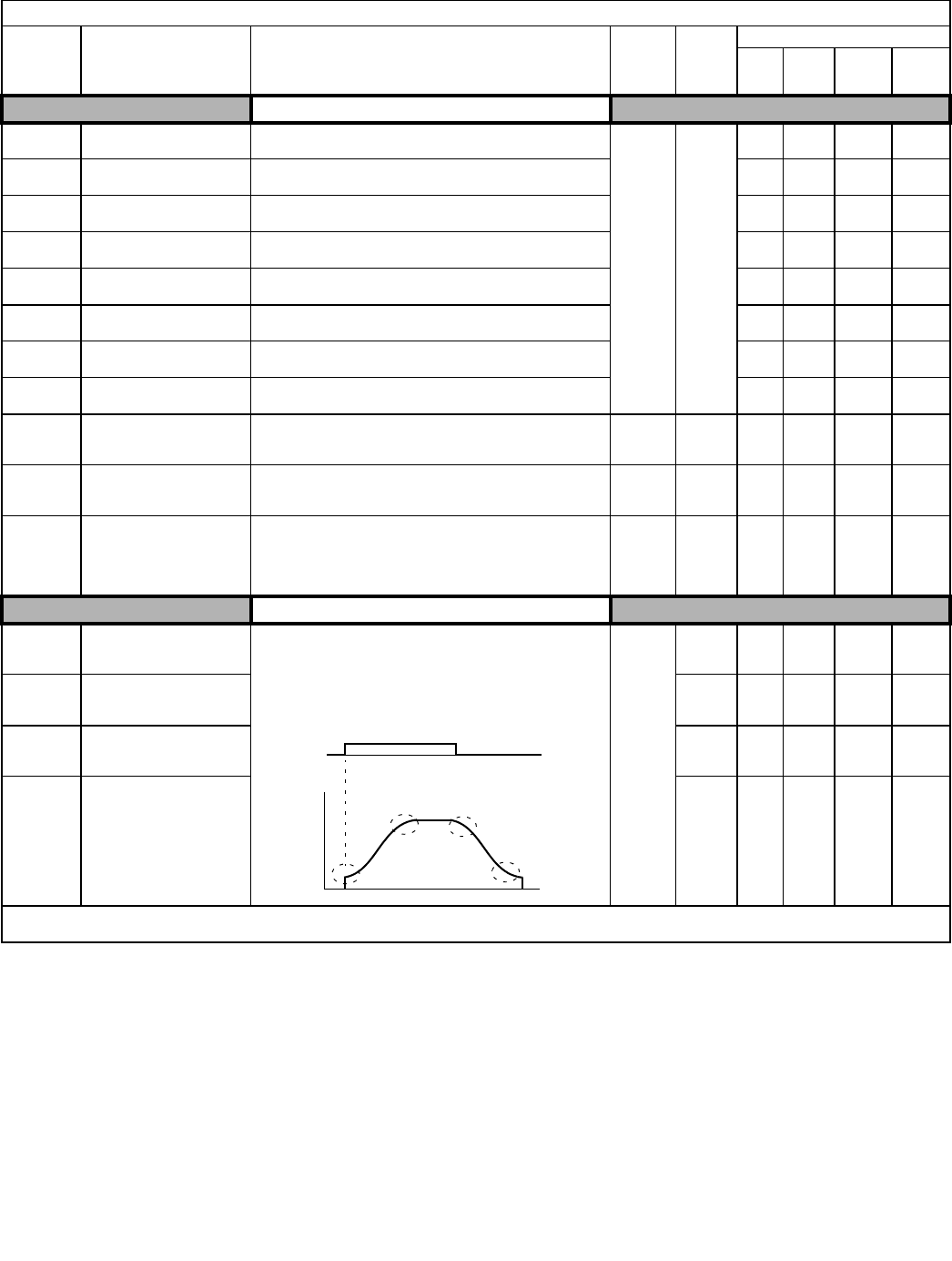
Parameters A - 9
Accel / Decel
C1-01
Acceleration Time 1
Accel Time 1 Sets the time to accelerate from zero to maximum frequency.
0.0
to
6000.0 10.0sec
QQ Q Q
C1-02
Deceleration Time 1
Decel Time 1 Sets the time to decelerate from maximum frequency to zero. Q Q Q Q
C1-03
Acceleration Time 2
Accel Time 2 Sets the time to accelerate from zero to maximum frequency when
selected via a multi-function input. AA A A
C1-04
Deceleration Time 2
Decel Time 2 Sets the time to decelerate from maximum frequency to zero when
selected via a multi-function input. AA A A
C1-05 Acceleration Time 3
Accel Time 3 Sets the time to accelerate from zero to maximum frequency when
selected via a multi-function input. AA A A
C1-06 Deceleration Time 3
Decel Time 3 Sets the time to decelerate from maximum frequency to zero when
selected via a multi-function input. AA A A
C1-07 Acceleration Time 4
Accel Time 4 Sets the time to accelerate from zero to maximum frequency when
selected via a multi-function input. AA A A
C1-08 Deceleration Time 4
Decel Time 4 Sets the time to decelerate from maximum frequency to zero when
selected via a multi-function input. AA A A
C1-09 Fast Stop Time
Fast Stop Time Sets the time to decelerate from maximum frequency to zero for the
multi-function input "Fast Stop" function.
0.0
to
6000.0 10.0sec A A A A
C1-10 Accel/Decel Time Setting
Unit
Acc/Dec Units
Sets the setting resolution of C1-01 to C1-09
0: 0.01 sec (0.00 to 600.00 sec)
1: 0.1 sec (0.0 to 6000.0 sec) 0 to 1 1 A A A A
C1-11 Accel/Decel
Switch Frequency
Acc/Dec SW Freq
Sets the frequency for automatic switching of accel / decel times.
Fout < C1-11: Accel/Decel Time 4
Fout ≥ C1-11: Accel/Decel Time 1
Multi-function inputs "Multi-Acc/Dec 1" and "Multi-Acc/Dec 2"
have priority over C1-11.
Varies
by
Duty
Rating*
0.0Hz A A A A
S-Curve Accel / Decel
C2-01 S-Curve Characteristic at
Accel Start
SCrv Acc @ Start
0.00 to
2.50
0.20sec A A A A
C2-02 S-Curve Characteristic at
Accel End
SCrv Acc @ End 0.20sec A A A A
C2-03 S-Curve Characteristic at
Decel Start
SCrv Dec @ Start 0.20sec A A A A
C2-04 S-Curve Characteristic at
Decel End
SCrv Dec @ End 0.00sec A A A A
Denotes that parameter can be changed when the Drive is running.
* For Heavy Duty (HD) Rating: Setting Range=0.0 to 300.0. For Normal Duty (ND) Rating: Setting Range=0.0 to 400.0.
Table A.1 F7 Parameter List (Continued)
Parameter
No. Parameter Name
Digital Operator Display Description Setting
Range Factory
Setting
Control Method
V/F V/F
w/PG
Open
Loop
Vector
Flux
Vector
Time
Run
command
Output frequency
ON
C2-02
C2-01
OFF
S-curve is used to further soften the starting and
stopping ramp. The longer the S-curve time, the
softer the starting and stopping ramp.
C2-03
C2-04
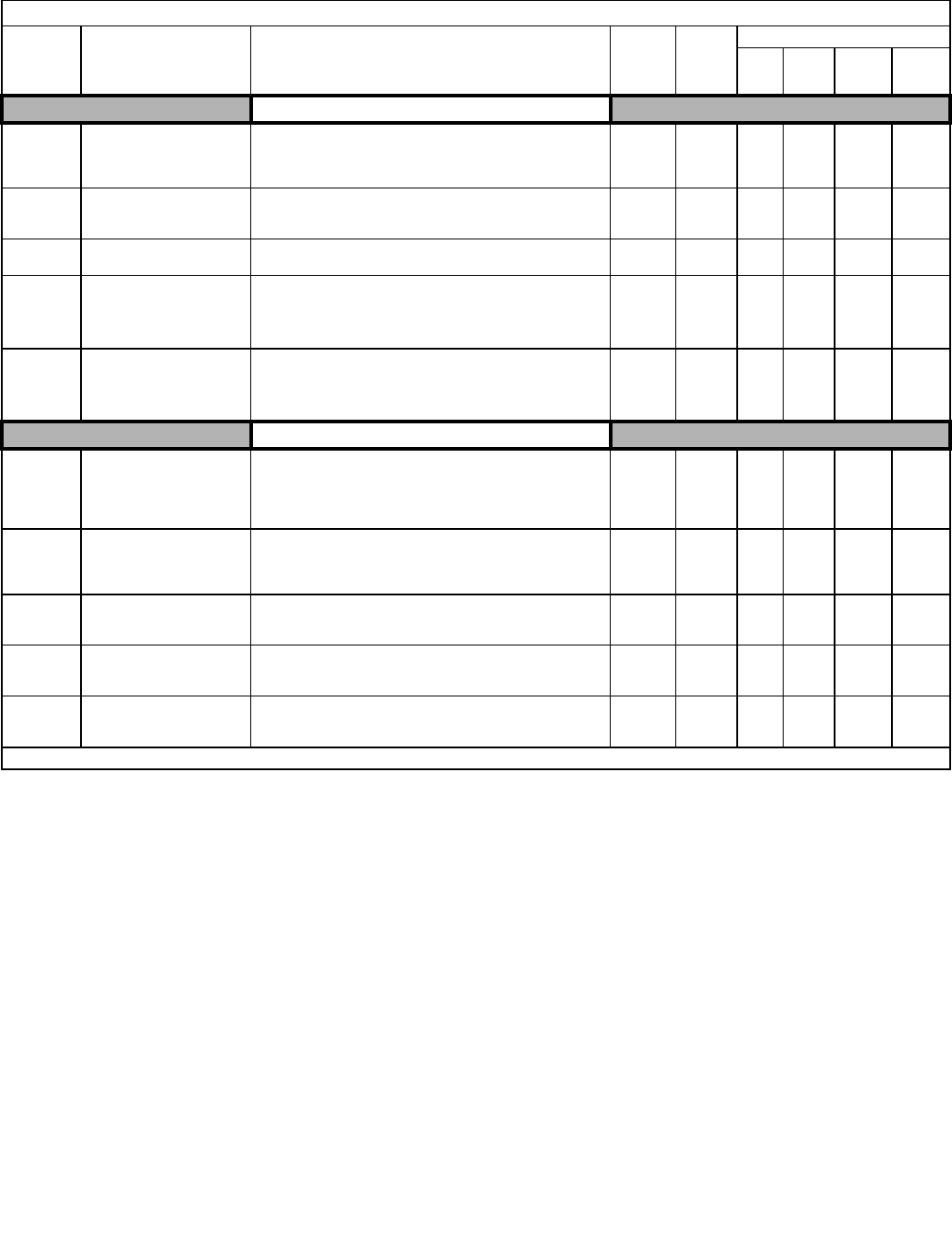
Parameters A - 10
Motor-Slip Compensation
C3-01
Slip Compensation Gain
Slip Comp Gain
This parameter is used to increase motor speed to account for motor
slip by boosting the output frequency.
If the speed is lower than the frequency reference, increase C3-01.
If the speed is higher than the frequency reference, decrease C3-01.
0.0 to 2.5 1.0 A - A A
C3-02 Slip Compensation
Primary Delay Time
Slip Comp Time
This parameter adjusts the filter on the output of the slip com-
pensation function. Increase to add stability, decrease to improve
response.
0 to
10000 200ms A - A -
C3-03 Slip Compensation Limit
Slip Comp Limit This parameter sets the upper limit for the slip compensation
function. It is set as a percentage of motor rated slip (E2-02). 0 to 250 200% A - A -
C3-04
Slip Compensation
Selection During
Regeneration
Slip Comp Regen
Determines whether slip compensation is enabled or disabled
during regenerative operation.
0: Disabled
1: Enabled
0 to 1 0 A - A -
C3-05 Output Voltage Limit
Operation Selection
Output V Lim SEL
Determines if the motor magnetic flux is automatically decreased
when output voltage saturation occurs.
0: Disabled
1: Enabled
0 to 1 0 - - A A
Torque Compensation
C4-01
Torque Compensation Gain
Torq Comp Gain
This parameter sets the gain for the Drive’s automatic torque boost
function to match the Drive’s output voltage to the motor load. This
parameter helps to produce better starting torque. It
determines the amount of torque or voltage boost based upon motor
current, motor resistance, and output frequency.
0.00 to
2.50 1.00 A A A -
C4-02
Torque Compensation
Primary Delay Time
Torq Comp Time
This parameter adjusts the filter on the output of the torque
compensation function. Increase to add stability, decrease to
improve response.
0 to
10000 20ms A A A -
C4-03 Torque Compensation at
Forward Start
F TorqCmp @ start
Sets torque compensation at forward start as a percentage of motor
torque. 0.0 to
200.0 0.0% - - A -
C4-04 Torque Compensation at
Reverse Start
R TorqCmp @ start
Sets torque compensation at reverse start as a percentage of motor
torque. -200.0 to
0.0 0.0% - - A -
C4-05 Torque Compensation Time
Constant
TorqCmp Delay T
Sets the time constant for torque compensation at forward start and
reverse start (C4-03 and C4-04). The filter is disabled if the time is
set to 4ms or less. 0 to 200 10ms - - A -
Denotes that parameter can be changed when the Drive is running.
Table A.1 F7 Parameter List (Continued)
Parameter
No. Parameter Name
Digital Operator Display Description Setting
Range Factory
Setting
Control Method
V/F V/F
w/PG
Open
Loop
Vector
Flux
Vector
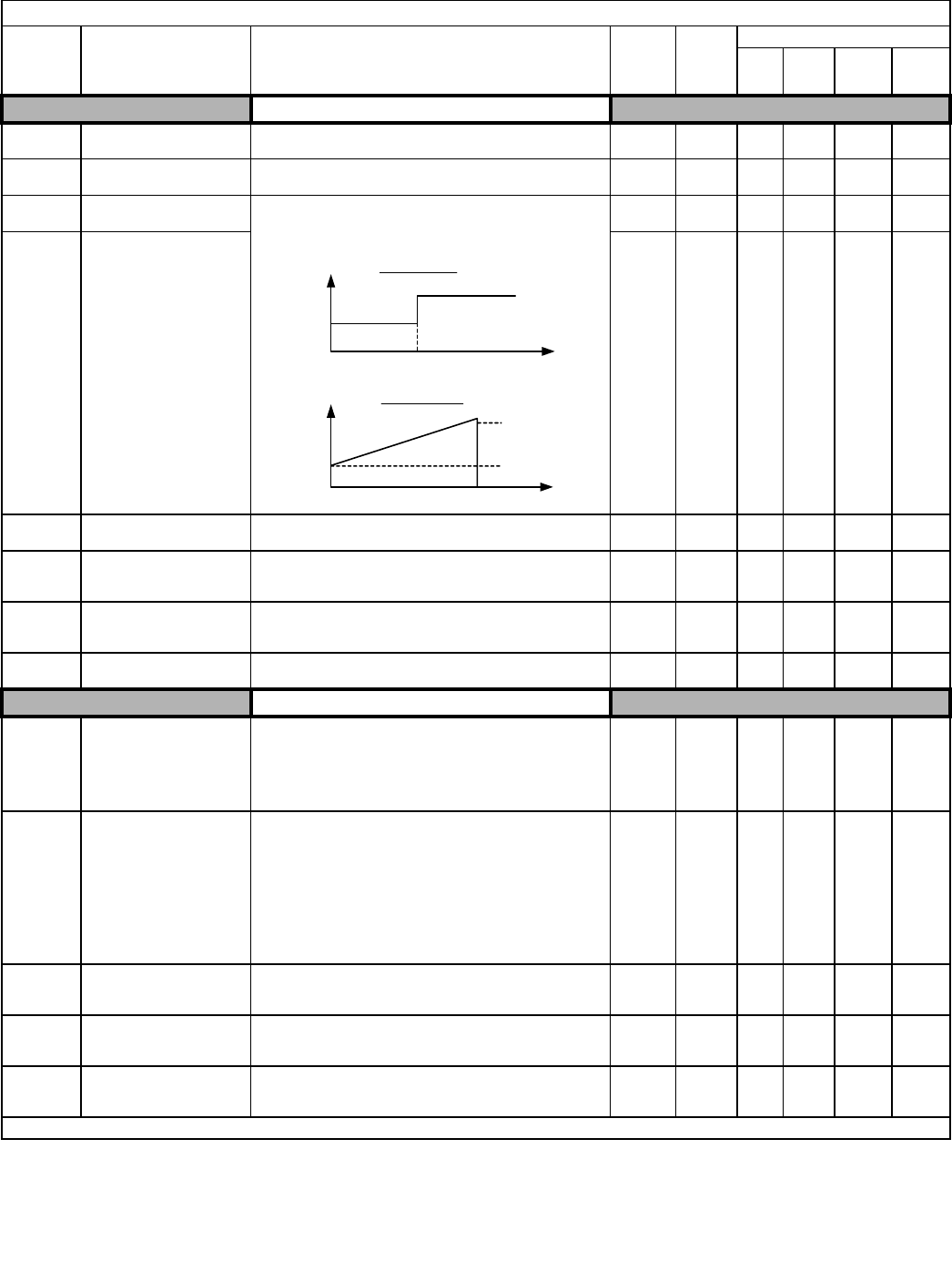
Parameters A - 11
ASR Tuning
C5-01
ASR Proportional Gain 1
ASR P Gain 1 Sets the proportional gain of the speed control loop (ASR) 1.00 to
300.00 20.00 - A - A
C5-02
ASR Integral Time 1
ASR I Time 1 Sets the integral time of the speed control loop (ASR) 0.000 to
10.000 0.500
sec -A - A
C5-03
ASR Proportional Gain 2
ASR P Gain 2 Sets the speed control gain 2 and integral time 2 of the speed
control loop (ASR). 1.00 to
300.00 20.00 - A - A
C5-04
ASR Integral Time 2
ASR I Time 2 0.000 to
10.000 0.500
sec -A - A
C5-05 ASR Limit
ASR Limit Sets the upper limit for the speed control loop (ASR) as a
percentage of the maximum output frequency (E1-04). 0.0 to
20.0 5.0% - A - -
C5-06 ASR Primary Delay Time
Constant
ASR Delay Time
Sets the filter time constant for the time from the speed loop to the
torque command output. 0.000 to
0.500 0.004
sec -- - A
C5-07 ASR Gain
Switching Frequency
ASR Gain SW Freq
Sets the frequency for switching between Proportional Gain 1, 2
and Integral Time 1, 2. 0.0 to
400.0 0.0Hz - - - A
C5-08 ASR Integral Limit
ASR I Limit Sets the ASR integral upper limit and rated load as a percentage of
the rated torque of the connected motor. 0 to 400 400% - - - A
Carrier Frequency
C6-01 Drive Duty Selection
Heavy/Normal Duty
Selects Drive’s rated input and output current, overload capacity,
carrier frequency, current limit, and maximum output frequency.
See Introduction for details.
0: Heavy Duty (C6-02 = 0 to 1)
1: Normal Duty 1 (C6-02 = 0 to F)
2: Normal Duty 2 (C6-02 = 0 to F)
0 to 2 0 A A A A
C6-02 Carrier Frequency
Selection
CarrierFreq Sel
Selects the number of pulses per second of the output voltage wave-
form. Setting range determined by C6-01 setting.
0: Low noise
1: Fc = 2.0 kHz
2: Fc = 5.0 kHz
3: Fc = 8.0 kHz
4: Fc = 10.0 kHz
5: Fc = 12.5 kHz
6: Fc = 15.0 kHz
F: Program (Determined by the settings of C6-03 thru C6-05)
Va ri es
by
kVA
Va ri es
by
kVA QQ Q Q
C6-03 Carrier Frequency Upper
Limit
CarrierFreq Max Maximum carrier frequency allowed when C6-02 = F. 0.4 to
15.0
kHz
Va ri es
by
kVA AA A A
C6-04 Carrier Frequency Lower
Limit
CarrierFreq Min Minimum carrier frequency allowed when C6-02 = F. 0.4 to
15.0
kHz
Va ri es
by
kVA AA - -
C6-05 Carrier Frequency
Proportional Gain
CarrierFreq Gain
Sets the relationship of output frequency to carrier frequency when
C6-02 = F. 0 to 99 0 A A - -
Denotes that parameter can be changed when the Drive is running.
Table A.1 F7 Parameter List (Continued)
Parameter
No. Parameter Name
Digital Operator Display Description Setting
Range Factory
Setting
Control Method
V/F V/F
w/PG
Open
Loop
Vector
Flux
Vector
P, I
P = C5-03
I = C5-04
P, I
HzC5-07
C5-03/04
C5-01/02
HzE1-04
P = C5-01
I = C5-02
V/F with PG
Flux Vector
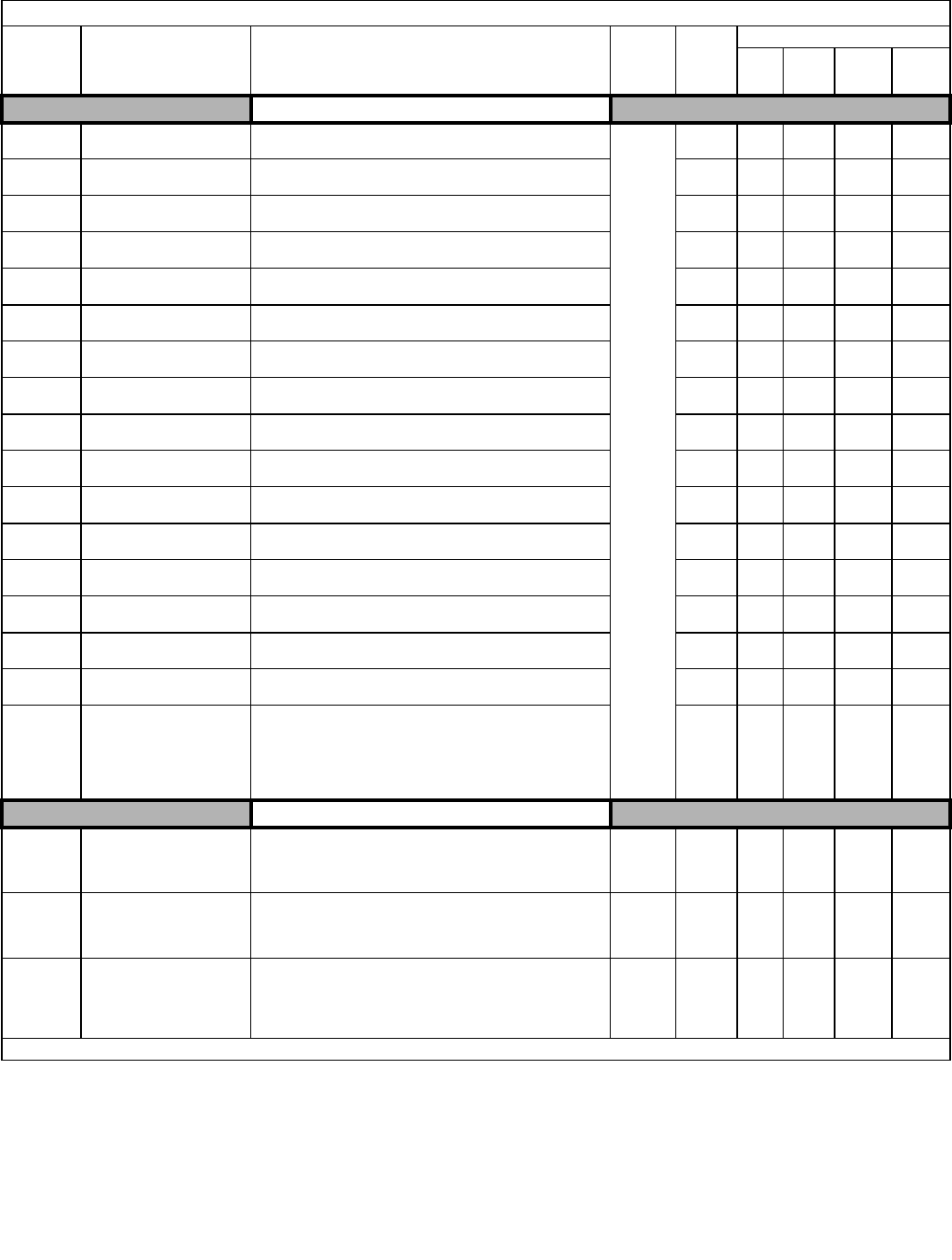
Parameters A - 12
Preset Reference
d1-01
Frequency Reference 1
Reference 1 Setting units are affected by o1-03.
0.00 to
E1-04
Value
0.00Hz Q Q Q Q
d1-02
Frequency Reference 2
Reference 2 Frequency reference when multi-function input “Multi-step speed
reference 1” is ON. Setting units are affected by o1-03. 0.00Hz Q Q Q Q
d1-03
Frequency Reference 3
Reference 3 Frequency reference when multi-function input “Multi-step speed
reference 2” is ON. Setting units are affected by o1-03. 0.00Hz Q Q Q Q
d1-04
Frequency Reference 4
Reference 4 Frequency reference when multi-function input “Multi-step speed
reference 1,2” is ON. Setting units are affected by o1-03. 0.00Hz Q Q Q Q
d1-05
Frequency Reference 5
Reference 5 Frequency reference when multi-function input “Multi-step speed
reference 3” is ON. Setting units are affected by o1-03. 0.00Hz A A A A
d1-06
Frequency Reference 6
Reference 6 Frequency reference when multi-function input “Multi-step speed
reference 1,3” is ON. Setting units are affected by o1-03. 0.00Hz A A A A
d1-07
Frequency Reference 7
Reference 7 Frequency reference when multi-function input “Multi-step speed
reference 2,3” is ON. Setting units are affected by o1-03. 0.00Hz A A A A
d1-08
Frequency Reference 8
Reference 8 Frequency reference when multi-function input “Multi-step speed
reference 1,2,3” is ON. Setting units are affected by o1-03. 0.00Hz A A A A
d1-09
Frequency Reference 9
Reference 9 Frequency reference when multi-function input “Multi-step speed
reference 4” is ON. Setting units are affected by o1-03. 0.00Hz A A A A
d1-10
Frequency Reference 10
Reference 10 Frequency reference when multi-function input “Multi-step speed
reference 1,4” is ON. Setting units are affected by o1-03. 0.00Hz A A A A
d1-11
Frequency Reference 11
Reference 11 Frequency reference when multi-function input “Multi-step speed
reference 2,4” is ON. Setting units are affected by o1-03. 0.00Hz A A A A
d1-12
Frequency Reference 12
Reference 12 Frequency reference when multi-function input “Multi-step speed
reference 1,2,4” is ON. Setting units are affected by o1-03. 0.00Hz A A A A
d1-13
Frequency Reference 13
Reference 13 Frequency reference when multi-function input “Multi-step speed
reference 3,4” is ON. Setting units are affected by o1-03. 0.00Hz A A A A
d1-14
Frequency Reference 14
Reference 14 Frequency reference when multi-function input “Multi-step speed
reference 1,3,4” is ON. Setting units are affected by o1-03. 0.00Hz A A A A
d1-15
Frequency Reference 15
Reference 15 Frequency reference when multi-function input “Multi-step speed
reference 2,3,4” is ON. Setting units are affected by o1-03. 0.00Hz A A A A
d1-16
Frequency Reference 16
Reference 16 Frequency reference when multi-function input “Multi-step speed
reference 1,2,3,4” is ON. Setting units are affected by o1-03. 0.00Hz A A A A
d1-17
Jog Frequency Reference
Jog Reference
Frequency reference when:
“Jog frequency reference” is selected via multi-function input
terminals. “Jog frequency reference” has priority over “multi-step
speed reference 1 to 4”. d1-17 is also the reference for the JOG key
on the Digital Operator, and the multi-function inputs “forward jog”
and “reverse jog”. Setting units are affected by o1-03.
6.00Hz Q Q Q Q
Reference Limits
d2-01 Frequency Reference Upper
Limit
Ref Upper Limit
Determines maximum frequency reference, set as a percentage of
maximum output frequency (E1-04). If the frequency reference is
above this value, actual Drive speed will be limited to this value.
This parameter applies to all frequency reference sources.
0.0 to
110.0 100.0% A A A A
d2-02 Frequency Reference Lower
Limit
Ref Lower Limit
Determines minimum frequency reference, set as a percentage of
maximum output frequency (E1-04). If frequency reference is
below this value, actual Drive speed will be set to this value. This
parameter applies to all frequency reference sources.
0.0 to
110.0 0.0% A A A A
d2-03 Master Speed Reference
Lower Limit
Ref1 Lower Limit
Determines minimum frequency reference, set as a percentage of
maximum output frequency (E1-04). If frequency reference from
analog input (A1, A2, and A3) is below this value, actual Drive
speed will be set to this value. This parameter applies only to
analog inputs A1, A2, and A3.
0.0 to
110.0 0.0% A A A A
Denotes that parameter can be changed when the Drive is running.
Table A.1 F7 Parameter List (Continued)
Parameter
No. Parameter Name
Digital Operator Display Description Setting
Range Factory
Setting
Control Method
V/F V/F
w/PG
Open
Loop
Vector
Flux
Vector
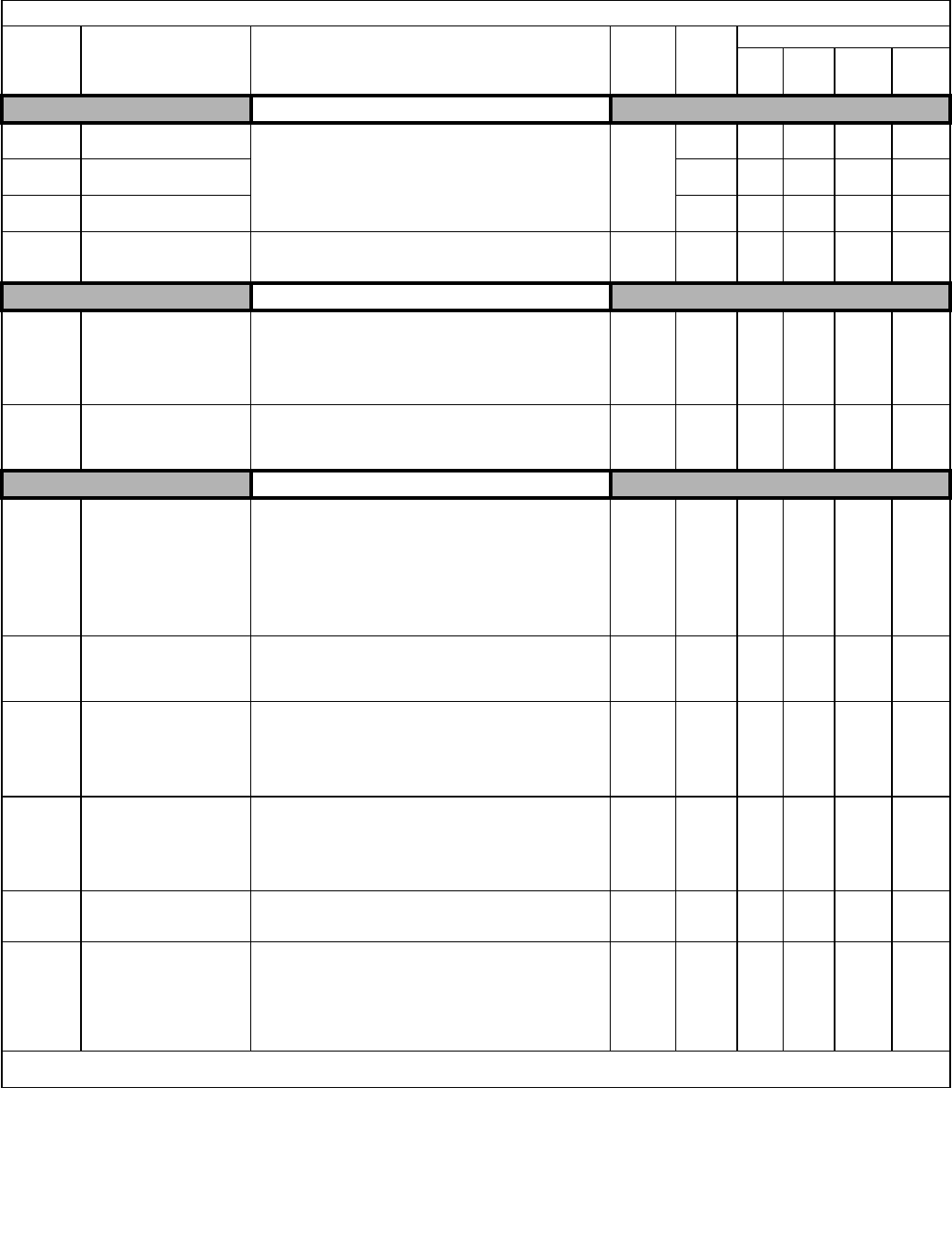
Parameters A - 13
Jump Frequencies
d3-01 Jump Frequency 1
Jump Freq 1 These parameters allow programming of up to three prohibited
frequency reference points for eliminating problems with resonant
vibration of the motor / machine. This feature does not actually
eliminate the selected frequency values, but will accelerate and
decelerate the motor through the prohibited bandwidth.
Varies
by
Duty
Rating*
0.0Hz A A A A
d3-02 Jump Frequency 2
Jump Freq 2 0.0Hz A A A A
d3-03 Jump Frequency 3
Jump Freq 3 0.0Hz A A A A
d3-04 Jump Frequency Width
Jump Bandwidth
This parameter determines the width of the deadband around each
selected prohibited frequency reference point. A setting of "1.0"
will result in a deadband of +/- 1.0Hz.
0.0 to
20.0 1.0Hz A A A A
Sequence (MOP & Trim Control)
d4-01 Frequency Reference Hold
Function Selection
MOP Ref Memory
This parameter is used to retain the held frequency reference in
U1-01 (d1-01) when power is removed. This function is available
when the multi-function inputs “accel/decel ramp hold” or
“up/down” commands are selected (H1-XX = A or 10 and 11).
0: Disabled
1: Enabled
0 to 1 0 A A A A
d4-02 Trim Control Level
Trim Control Lvl
Sets the amount of frequency reference to be added or subtracted as
a percentage of maximum output frequency (E1-04) when multi-
function inputs “trim control increase” and “trim control decrease”
are selected (H1-XX = 1C and 1D).
0 to 100 10% A A A A
Torque Control
d5-01 Torque Control Selection
Torq Control Sel
Selects speed or torque control.
The torque reference is set via analog input A2 or A3 when it is set
for “torque reference” (H3-05 or H3-09 = 13). Torque reference is
set as a percentage of motor rated torque.
To use this function for switching between speed and torque
control, set to 0 and set a multi-function input to “speed/torque con-
trol change” (H1-XX = 71).
0: Speed Control (controlled by C5-01 to C5-07)
1: Torque Control
0 to 1 0 - - - A
d5-02 Torque Reference Delay Time
Torq Ref Filter
Sets the torque reference delay time in ms units.
This function can be used to correct for noise in the torque control
signal or the responsiveness with the host controller. When
oscillation occurs during torque control, increase the set value.
0 to 1000 0ms - - - A
d5-03 Speed Limit Selection
Speed Limit Sel
Sets the speed limit command method for the torque control
method.
1: Analog Input - Limited by the output of the soft starter (b1-01
selection and active acceleration/deceleration and S-curve
settings).
2: Program Setting - Limited by d5-04 setting value.
1 to 2 1 - - - A
d5-04 Speed Limit
Speed Lmt Value
Sets the speed limit during torque control as a percentage of the
maximum output frequency (E1-04).
This function is enabled when d5-03 is set to 2. Directions are as
follows.
+: run command direction
-: run command opposite direction
-120 to
120 0% - - - A
d5-05 Speed Limit Bias
Speed Lmt Bias
Sets the speed limit bias as a percentage of the maximum output fre-
quency (E1-04). Bias is given to the specified speed limit. It can be
used to adjust the margin for the speed limit. 0 to 120 10% - - - A
d5-06 Speed/Torque Control
Switchover Timer
Ref Hold Time
Set the delay time from inputting the multi-function input
“speed/torque control change” (from On to OFF or OFF to ON)
until the control is actually changed. This function is enabled when
the multi-function input “speed/torque control change”
(H1-XX = 71) is set. While in the speed/torque control switching
timer, the analog inputs hold the value present when the
“speed/torque control change” is received.
0 to 1000 0ms - - - A
Denotes that parameter can be changed when the Drive is running.
* For Heavy Duty (HD) Rating: Setting Range=0.0 to 300.0. For Normal Duty (ND) Rating: Setting Range=0.0 to 400.0.
Table A.1 F7 Parameter List (Continued)
Parameter
No. Parameter Name
Digital Operator Display Description Setting
Range Factory
Setting
Control Method
V/F V/F
w/PG
Open
Loop
Vector
Flux
Vector
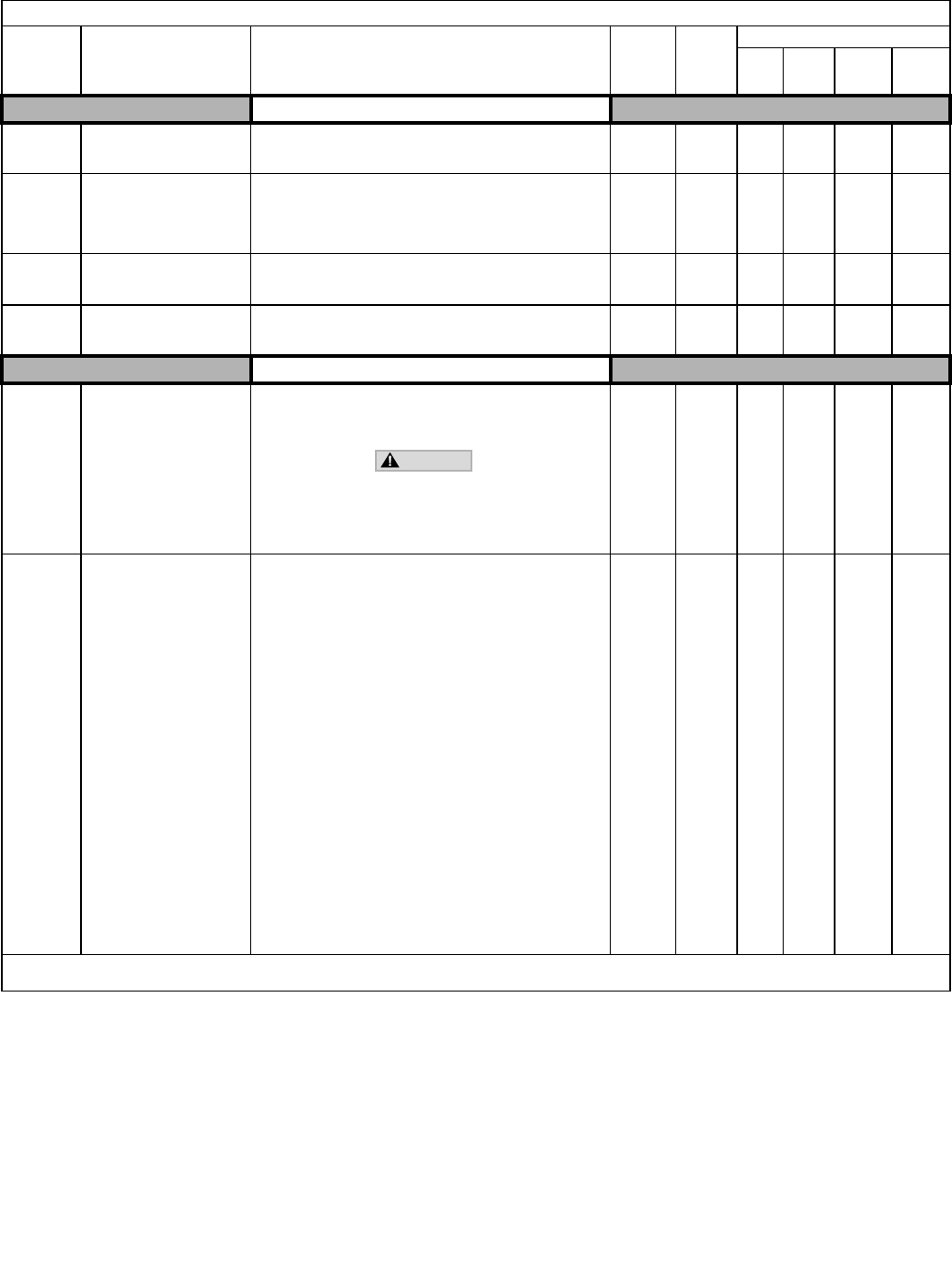
Parameters A - 14
Field-Weakening
d6-01 Magnetic Field
Weakening Level
Field-Weak Lvl
Sets the Drive output voltage when the multi-function input “field
weakening command” is input (H1-XX = 63). Sets as a percentage
taking the voltage set in the V/F pattern as 100%. 0 to 100 80% A A - -
d6-02 Magnetic Field Frequency
Field-Weak Freq
Sets the lower limit (in Hz) of the frequency range where field
weakening control is valid. The field weakening command is valid
only at frequencies above this setting and only when output
frequency is in agreement with the current output frequency
(speed agree).
Varies
by
Duty
Rating*
0.0Hz A A - -
d6-03 Magnetic Field Forcing Func-
tion Selection
Field Force Sel
Sets the magnetic field forcing function.
0: Disabled
1: Enabled 0 to 1 0 - - - A
d6-06 Magnetic Field Forcing Limit
Field Force Limit
Sets the upper limit of the excitation current command during
magnetic field forcing. A setting of 100% is equal to motor no-load
current, E2-03.
100 to
400 400% - - A A
V/F Pattern
E1-01 Input Voltage Setting
Input Voltage
Set to the nominal voltage of the incoming line. Sets the maximum
and base voltage used by preset V/F patterns (E1-03 = 0 to E),
adjusts the levels of Drive protective features (e.g. Overvoltage,
braking resistor turn-on, stall prevention, etc.).
DRIVE INPUT VOLTAGE (NOT MOTOR VOLTAGE)
MUST BE SET IN E1-01 FOR THE PROTECTIVE
FEATURES OF THE DRIVE TO FUNCTION PROPERLY.
FAILURE TO DO SO MAY RESULT IN EQUIPMENT
DAMAGE AND/OR PERSONAL INJURY.
155.0 to
255.0
(240V)
310.0 to
510.0
(480V)
230.0V
or
460.0V QQ Q Q
E1-03 V/F Pattern Selection
V/F Selection
Set to the type of motor being used and the type of application.
The Drive operates utilizing a set V/F pattern to determine the
appropriate output voltage level for each commanded speed. There
are 15 different preset V/F patterns to select from (E1-03 = 0 to E)
with varying voltage profiles, base levels (base level = frequency at
which maximum voltage is reached), and maximum frequencies.
There are also settings for Custom V/F patterns that will use the set-
tings of parameters E1-04 through E1-13. E1-03 = F selects a cus-
tom V/F pattern with an upper voltage limit and E1-03 = FF selects
a custom V/F pattern without an upper voltage limit.
0: 50Hz
1: 60Hz Saturation
2: 50Hz Saturation
3: 72Hz (60Hz Base)
4: 50Hz VT1
5: 50Hz VT2
6: 60Hz VT1
7: 60Hz VT2
8: 50Hz HST1
9: 50Hz HST2
A: 60Hz HST1
B: 60Hz HST2
C: 90Hz (60Hz Base)
D: 120Hz (60Hz Base)
E: 180Hz (60Hz Base)
F: Custom V/F
FF: Custom w/o limit
0 to FF F Q Q - -
Denotes that parameter can be changed when the Drive is running.
* For Heavy Duty (HD) Rating: Setting Range=0.0 to 300.0. For Normal Duty (ND) Rating: Setting Range=0.0 to 400.0.
Table A.1 F7 Parameter List (Continued)
Parameter
No. Parameter Name
Digital Operator Display Description Setting
Range Factory
Setting
Control Method
V/F V/F
w/PG
Open
Loop
Vector
Flux
Vector
WARNING
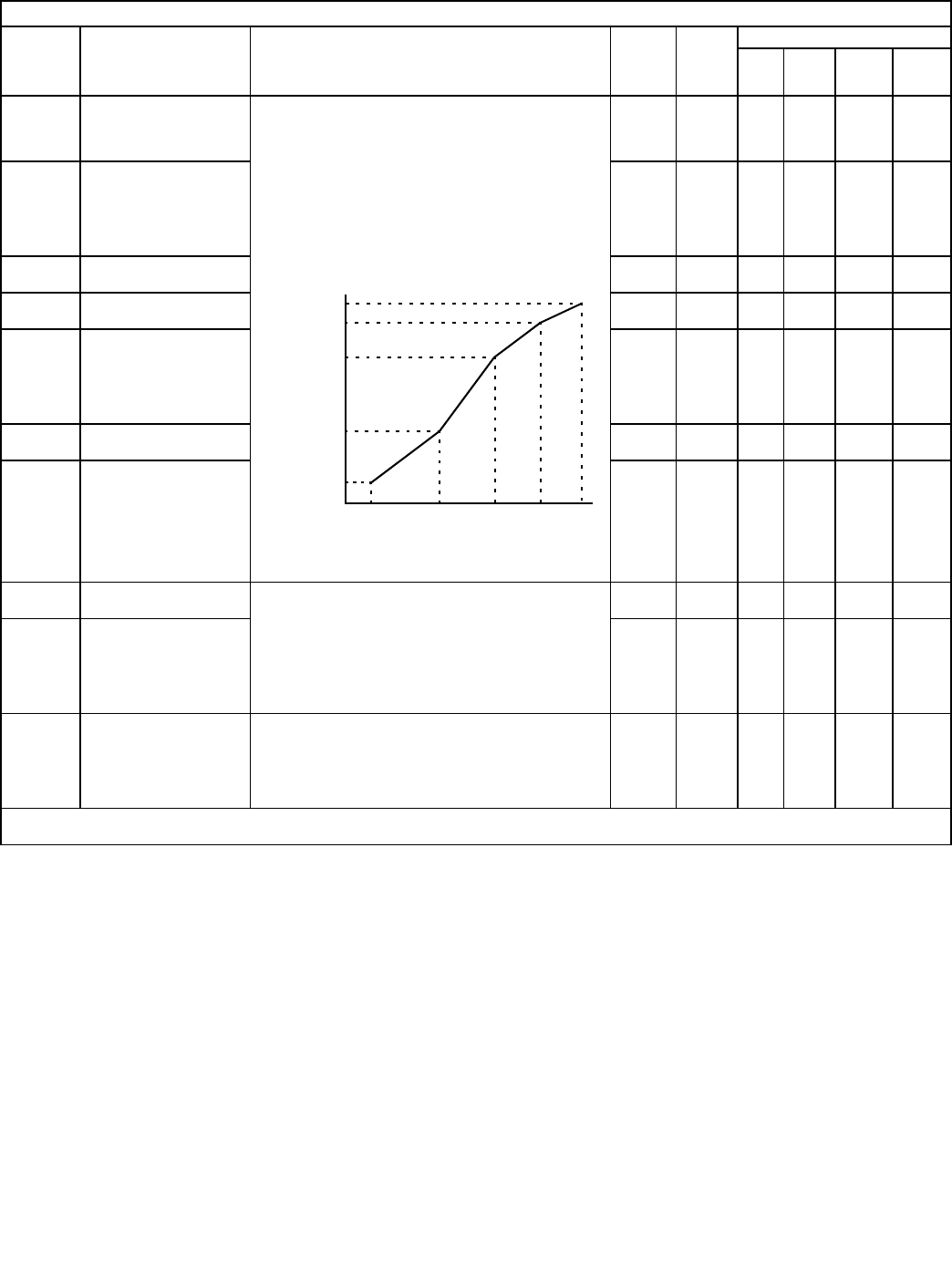
Parameters A - 15
E1-04 Maximum Output
Frequency
Max Frequency
These parameters are only applicable when V/F Pattern Selection is
set to Custom (E1-03 = F or FF). To set V/F characteristics in a
straight line, set the same values for E1-07 and E1-09. In this case,
the setting for E1-08 will be disregarded. Be sure that the four
frequencies are set in the following manner or else an OPE10 fault
will occur:
E1-04 ≥ E1-11 ≥ E1-06 > E1-07 ≥ E1-09
Note: Setting parameter E1-01=0 is also acceptable
Varies
by
Duty
Rating*
60.0Hz Q Q Q Q
E1-05 Maximum Output Voltage
Max Voltage
0.0 to
255.0
(240V)
0.0 to
510.0
(480V)
230.0V
or
460.0V QQ Q Q
E1-06 Base Frequency
Base Frequency 0.0 to
400.0 60.0Hz Q Q Q Q
E1-07 Mid Output Frequency A
Mid Frequency A 0.0 to
400.0 3.0Hz A A A -
E1-08 Mid Output Voltage A
Mid Voltage A
0.0 to
255.0
(240V)
0.0 to
510.0
(480V)
12.6
Vac
or
25.3
Vac
AA A -
E1-09 Minimum Output Frequency
Min Frequency 0.0 to
400.0 0.5Hz Q Q Q A
E1-10 Minimum Output Voltage
Min Voltage
0.0 to
255.0
(240V)
0.0 to
510.0
(480V)
2.3
Vac
or
4.6
Vac
AA A -
E1-11 Mid Output Frequency B
Mid Frequency B
Set only when the V/F pattern is finely adjusted in the constant
power (HP) area above base speed. Adjustment is not normally
required.
0.0 to
400.0 0.0Hz A A A A
E1-12 Mid Output Voltage B
Mid Voltage B
0.0 to
255.0
(240V)
0.0 to
510.0
(480V)
0.0Vac A A A A
E1-13 Base Voltage
Base Voltage
Set only when the V/F pattern is finely adjusted in the constant
power (HP) area above base speed. Adjustment is not normally
required. If E1-13 = 0.0, then value in E1-05 is used for E1-13.
Auto-Tuning sets this value.
0.0 to
255.0
(240V)
0.0 to
510.0
(480V)
0.0Vac A A Q Q
Denotes that parameter can be changed when the Drive is running.
* For Heavy Duty (HD) Rating: Setting Range=40.0 to 300.0. For Normal Duty (ND) Rating: Setting Range=40.0 to 400.0.
Table A.1 F7 Parameter List (Continued)
Parameter
No. Parameter Name
Digital Operator Display Description Setting
Range Factory
Setting
Control Method
V/F V/F
w/PG
Open
Loop
Vector
Flux
Vector
Output voltage (V)
Frequency (Hz)
E1-09 E1-07 E1-06 E1-11 E1-04
E1-05
E1-12
E1-13
E1-08
E1-10
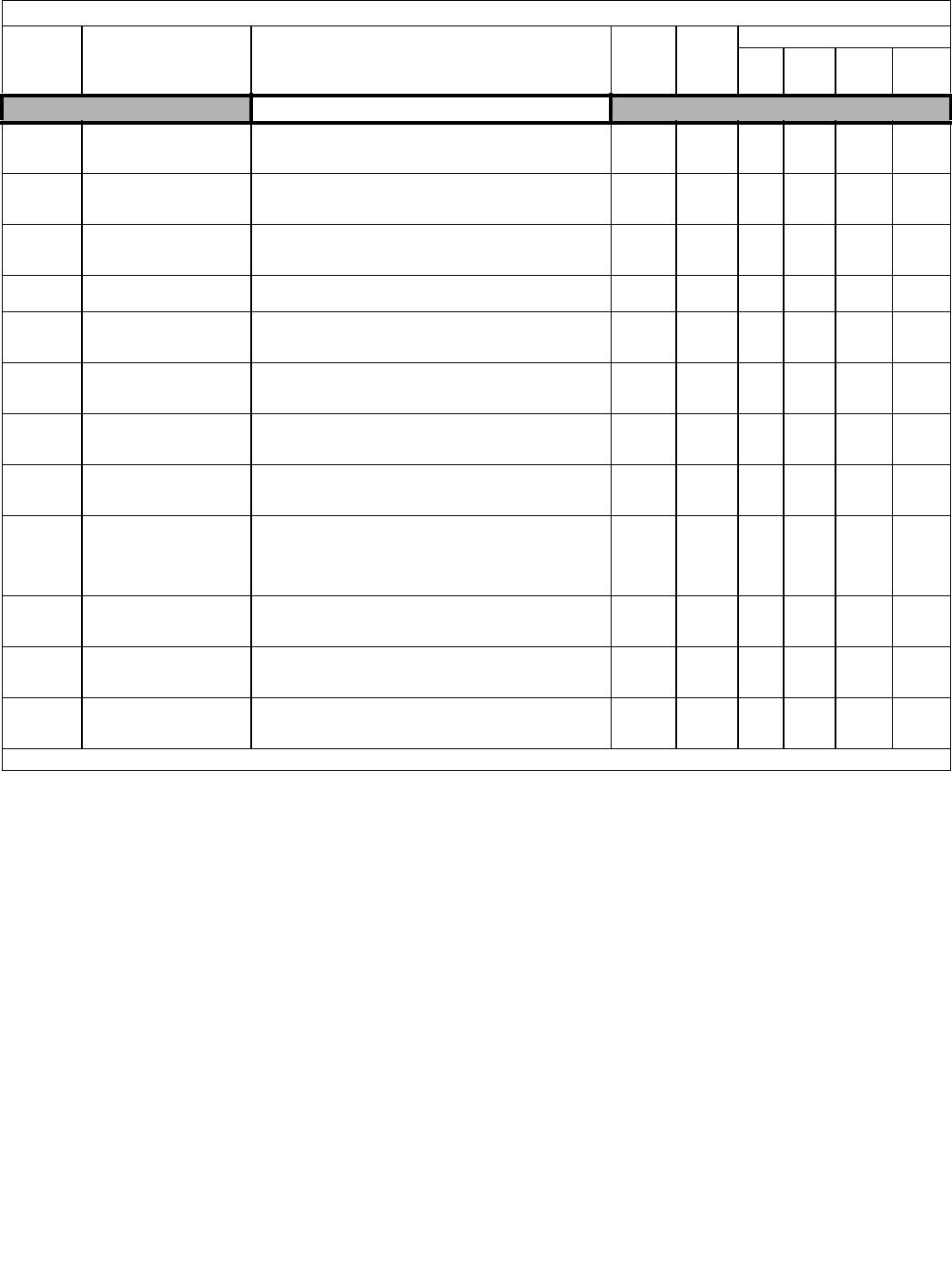
Parameters A - 16
Motor Setup
E2-01 Motor Rated Current
Motor Rated FLA Set to the motor nameplate full load current in amperes (A). This
value is automatically set during Auto-Tuning. Varies by
kVA
Va ri es
by
kVA QQ Q Q
E2-02 Motor Rated Slip
Motor Rated Slip Set to the motor rated slip in hertz (Hz).
This value is automatically set during rotational Auto-Tuning. Varies by
kVA
Va ri es
by
kVA AA A A
E2-03 Motor No-Load Current
No-Load Current
Set to the magnetizing current of the motor as a percentage of full
load amps (E2-01). This value is automatically set during rotational
Auto-Tuning.
Varies by
kVA
Va ri es
by
kVA AA A A
E2-04 Number of Motor Poles
Number of Poles Set to the number of motor poles.
This value is automatically set during Auto-Tuning. 2 to 48 4 - Q - Q
E2-05 Motor Line-to-Line
Resistance
Term Resistance
Set to the phase-to-phase motor resistance in ohms (Ω).
This value is automatically set by Auto-Tuning. 0.000 to
65.000
Va ri es
by
kVA AA A A
E2-06 Motor Leakage Inductance
Leak Inductance
Set to the voltage drop due to motor leakage inductance as a
percentage of motor rated voltage.
This value is automatically set during Auto-Tuning.
0.0 to
40.0%
Va ri es
by
kVA -- A A
E2-07 Motor Iron-core
Saturation Coefficient 1
Saturation Comp 1
Set to the motor iron saturation coefficient at 50% of magnetic flux.
This value is automatically set during rotational Auto-Tuning. 0.00 to
0.50 0.50 - - A A
E2-08 Motor Iron-core
Saturation Coefficient 2
Saturation Comp 2
Set to the motor iron saturation coefficient at 75% of magnetic flux.
This value is automatically set during rotational Auto-Tuning. 0.50 to
0.75 0.75 - - A A
E2-09 Motor Mechanical Loss
Mechanical Loss
Set to the motor mechanical loss as a percentage of motor rated
power (kW) capacity.
Adjust in the following circumstances:
• When torque loss is large due to motor bearing friction.
• When the torque loss in the load is large.
0.0 to
10.0 0.0% - - A A
E2-10 Motor Iron Loss for Torque
Compensation
Tcomp Iron Loss Set to the motor iron loss in watts (W). 0 to
65535 W
Va ri es
by
kVA AA - -
E2-11 Motor Rated Output
Mtr Rated Power
Set to the motor rated power in kilowatts (kW).
This value is automatically set during Auto-Tuning.
1HP = 0.746kW
0.00 to
650.00
kW
Va ri es
by
kVA QQ Q Q
E2-12 Motor Iron-Core
Saturation Coefficient 3
Saturation Comp 3
Set to the motor iron saturation coefficient at 130% of magnetic
flux.
This value is automatically set during rotational Auto-Tuning.
0.0 to
1.60 1.30 - - A A
Denotes that parameter can be changed when the Drive is running.
Table A.1 F7 Parameter List (Continued)
Parameter
No. Parameter Name
Digital Operator Display Description Setting
Range Factory
Setting
Control Method
V/F V/F
w/PG
Open
Loop
Vector
Flux
Vector
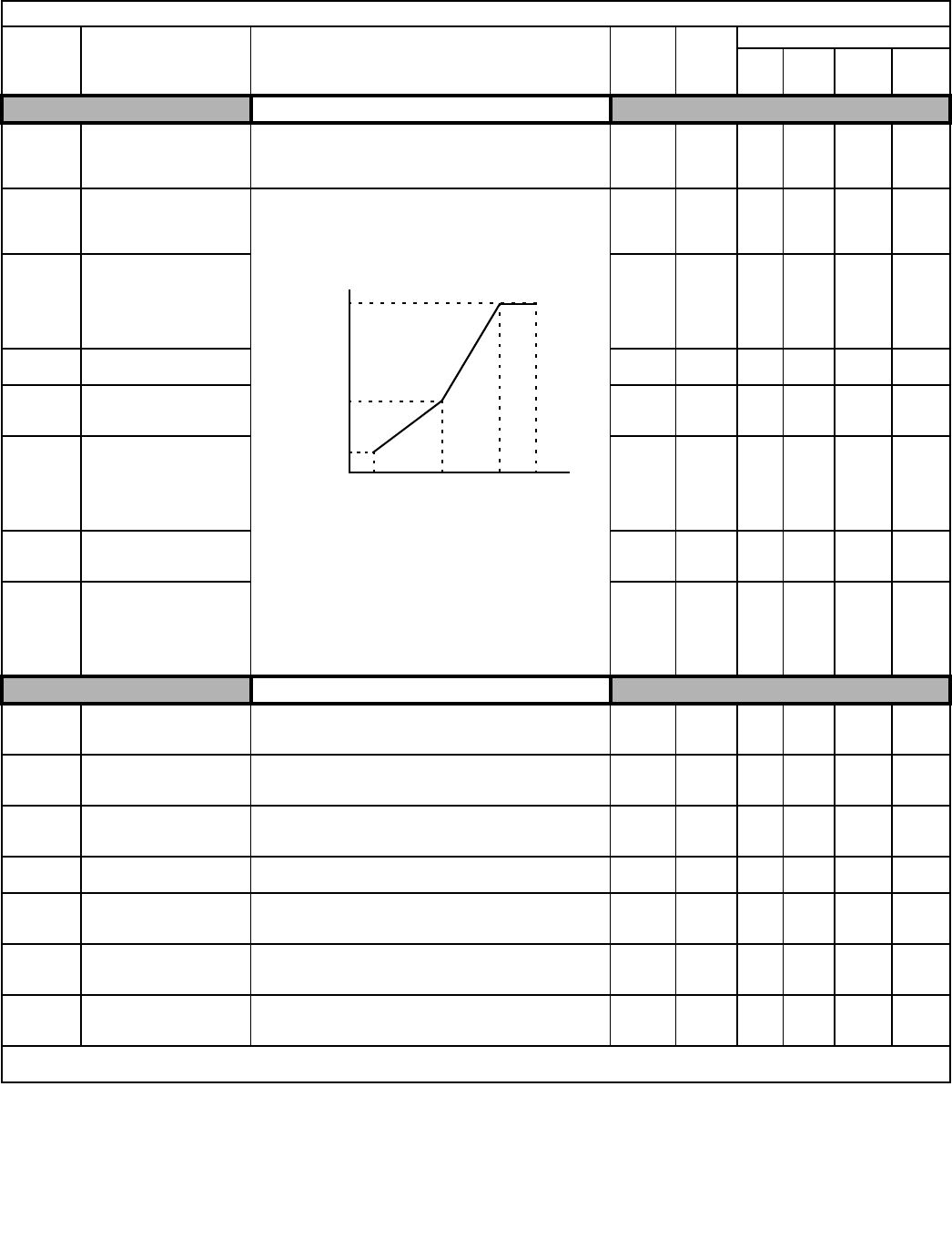
Parameters A - 17
V/F Pattern 2
E3-01 Motor 2 Control Method
Selection
Control Method
0: V/F control
1: V/F control with PG
2: Open-loop vector control
3: Flux vector control
0 to 3 2 A A A A
E3-02 Motor 2 Maximum Output
Frequency
Max Frequency
To set V/F characteristics in a straight line, set the same values for
E3-05 and E3-07. In this case, the setting for E3-06 will be
disregarded. Be sure that the four frequencies are set in the
following manner or else an OPE10 fault will occur:
E3-02 ≥ E3-04 ≥ E3-05 ≥ E3-07
Varies
by
Duty
Rating*
60.0Hz A A A A
E3-03 Motor 2 Maximum Output
Volta ge
Max Voltage
0.0 to
255.0
(240V)
0.0 to
510.0
(480V)
230.0V
or
460.0V AA A A
E3-04 Motor 2 Base Frequency
Base Frequency 0.0 to
400.0 60.0Hz A A A A
E3-05 Motor 2 Mid Output
Frequency
Mid Frequency
0.0 to
400.0 3.0Hz AA A -
E3-06 Motor 2 Mid Output
Volta ge VA
Mid Voltage
0.0 to
255.0
(240V)
0.0 to
510.0
(480V)
12.6
Vac
or
25.3
Vac
AA A -
E3-07 Motor 2 Minimum Output
Frequency
Min Frequency
0.0 to
400.0 0.5Hz A A A A
E3-08 Motor 2 Minimum Output
Vo l t a g e
Min Voltage
0.0 to
255.0
(240V)
0.0 to
510.0
(480V)
2.3Vac
or
4.6Vac AA A -
Motor Setup 2
E4-01 Motor 2 Rated Current
Motor Rated FLA Set to the motor 2 nameplate full load current in amperes (A).
This value is automatically set during Auto-Tuning. Varies b y
kVA
Va ri es
by
kVA AA A A
E4-02 Motor 2 Rated Slip
Motor Rated Slip Set to the rated slip of motor 2 in hertz (Hz).
This value is automatically set during rotational Auto-Tuning. Varies by
kVA
Va ri es
by
kVA AA A A
E4-03 Motor 2 No-Load Current
No-Load Current
Set to the magnetizing current of motor 2 in percentage of full load
current (E4-01). This value is automatically set during rotational
Auto-Tuning.
Var ie s b y
kVA
Va ri es
by
kVA AA A A
E4-04 Motor 2 Number of Poles
Number of Poles Set to the number of poles of motor 2.
This value is automatically set during Auto-Tuning. 2 to 48 4 - A - A
E4-05 Motor 2 Line-to-Line
Resistance
Term Resistance
Set to the phase-to-phase resistance of motor 2 in ohms (Ω).
This value is automatically set by the Auto-Tuning. 0.000 to
65.000
Va ri es
by
kVA AA A A
E4-06 Motor 2 Leakage
Inductance
Leak Inductance
Set to the voltage drop due to motor leakage inductance as a
percentage of rated voltage of motor 2.
This value is automatically set during Auto-Tuning.
0.0 to
40.0%
Va ri es
by
kVA -- A A
E4-07 Motor 2 Rated Output
Mtr Rated Power Set to the rated power of motor 2 in kilowatts (kW).
This value is automatically set during Auto-Tuning.
0.00 to
650.00
kW
Va ri es
by
kVA AA A A
Denotes that parameter can be changed when the Drive is running.
* For Heavy Duty (HD) Rating: Setting Range=40.0 to 300.0. For Normal Duty (ND) Rating: Setting Range=40.0 to 400.0.
Table A.1 F7 Parameter List (Continued)
Parameter
No. Parameter Name
Digital Operator Display Description Setting
Range Factory
Setting
Control Method
V/F V/F
w/PG
Open
Loop
Vector
Flux
Vector
Output voltage (V)
Frequency (Hz)
E3-07 E3-05 E3-04 E3-02
E3-03
E3-06
E3-08
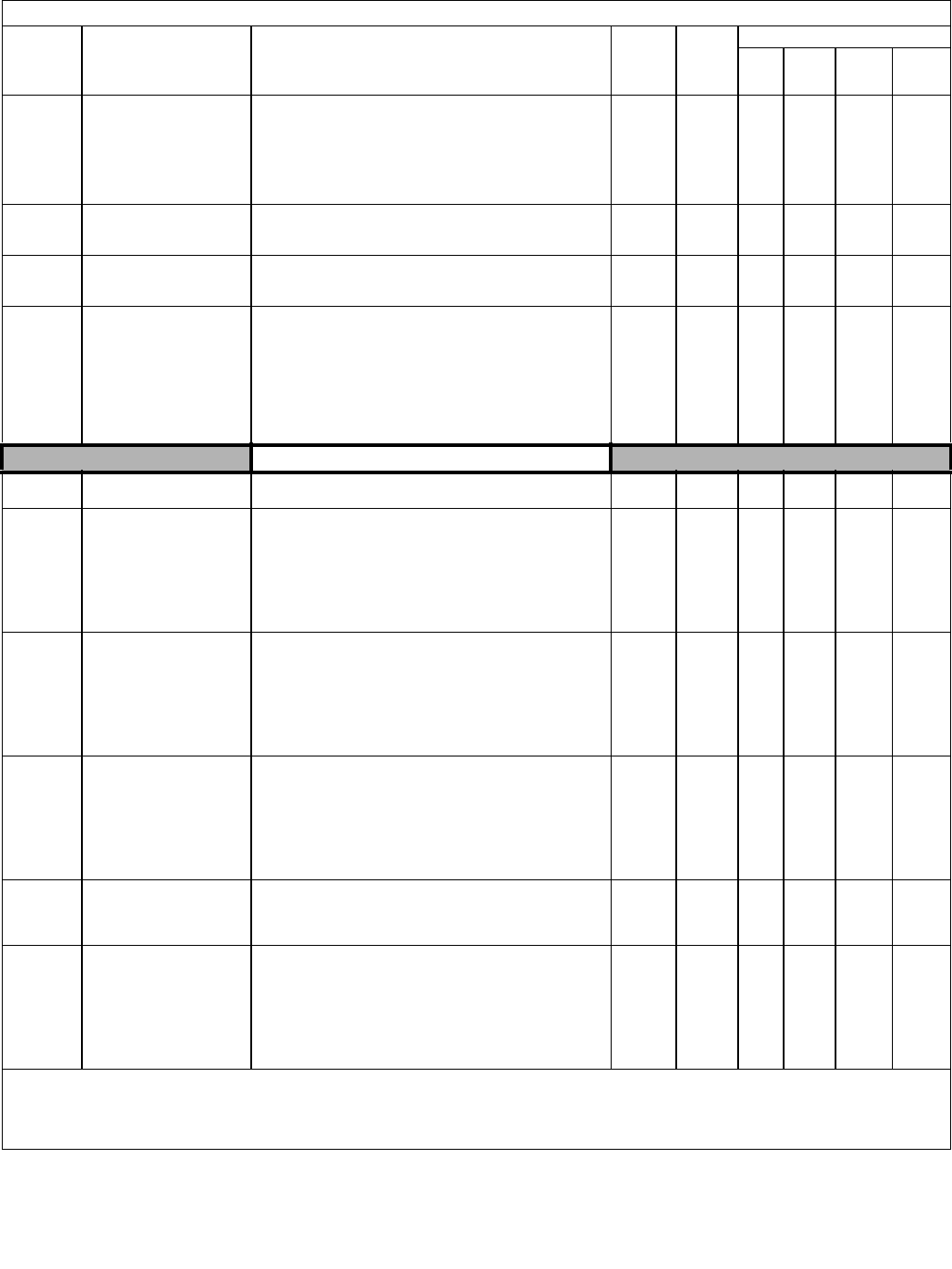
Parameters A - 18
E4-08
<3021>
Motor 2 Slip
Compensation Gain
SlpCmp Gain Mtr2
This parameter can help to increase speed precision when working
on a load, although normally adjustment is not necessary.
• When speed is less than that desired value, increase the set value.
• When speed is higher than the desired value, decrease the set
value.
* This parameter functions as gain suppression when in Flux Vector
Control.
0.0 to 2.5 1.0
*1 ANo A A
E4-09
<3021>
Motor 2 ASR Proportional (P)
Gain 1
ASR P Gain Mtr2 Sets the proportional gain of the speed loop (ASR). 0.00 to
300.00 *2 20.00 *3 No A No A
E4-10
<3021>
Motor 2 ASR Integral (I)
Time 1
ASR I Time Mtr2 Sets the integral time of the speed loop (ASR) in units of 0.1s. 0.000 to
10.000 0.500
sec *3 N0 A No A
E4-11
<3021>
Motor 2 Torque
Compensation Gain
TrqCmp Gain Mtr2
Magnifies the torque compensation gain. Normally this parameter
does not require change, however, adjustments can be made as fol-
lows:
• When the motor cable is long, increase the setting.
• When using a motor with a smaller capacity than the drive (the
largest motor being used), increase this setting.
• If the motor begins to vibrate, adjust the value set so that the
output current does not exceed the drive’s rated output current
when operating at low speeds.
0.00 to
2.50 1.00 A A A No
PG Option Setup
F1-01 PG Parameter
PG Pulses/Rev Sets the number of pulses per revolution (PPM) of the encoder
(pulse generator). 0 to
60000 1024 - Q - Q
F1-02 Operation Selection at PG
Open Circuit (PGO)
PG Fdbk Loss Sel
Sets stopping method when a PG open circuit fault (PGO) occurs.
See parameter F1-14.
0: Ramp to stop - Decelerate to stop using the active deceleration
time.
1: Coast to stop
2: Fast - Stop - Decelerate to stop using the deceleration time in
C1-09.
3: Alarm Only - Drive continues operation.
0 to 3 1 - A - A
F1-03 Operation Selection at
Overspeed (OS)
PG Overspeed Sel
Sets the stopping method when an overspeed (OS) fault occurs. See
F1-08 and F1-09.
0: Ramp to stop - Decelerate to stop using the active deceleration
time.
1: Coast to stop
2: Fast - Stop - Decelerate to stop using the deceleration time in
C1-09.
3: Alarm Only - Drive continues operation.
0 to 3 1 - A - A
F1-04 Operation Selection at
Deviation
PG Deviation Sel
Sets the stopping method when a speed deviation (DEV) fault
occurs. See F1-10 and F1-11.
0: Ramp to stop - Decelerate to stop using the active deceleration
time.
1: Coast to stop
2: Fast - Stop - Decelerate to stop using the deceleration time in
C1-09.
3: Alarm Only - Drive continues operation.
0 to 3 3 - A - A
F1-05 PG Rotation Selection
PG Rotation Sel
0: Fwd=C.C.W. - Phase A leads with forward run command.
(Phase B leads with reverse run command.)
1: Fwd=C.W. - Phase B leads with forward run command. (Phase
A leads with reverse run command.)
0 to 1 0 - A - A
F1-06 PG Division Rate (PG Pulse
Monitor)
PG Output Ratio
Sets the division ratio for the pulse monitor of the PG-B2 encoder
feedback option board. This function is not available with the
PG-X2 option board.
Division ratio = (1+ n) /m (n=0 to 1, m=1 to 32)
The first digit of the value of F1-06 stands for n, the second and the
third stand for m. (from left to right).
The possible division ratio settings are:
1/32 ≤ F1-06 ≤ 1
1 to 132 1 - A - A
Denotes that parameter can be changed when the Drive is running. For Normal Duty (ND) Rating: Setting Range=40.0 to 400.0.
* For Heavy Duty (HD) Rating: Setting Range=40.0 to 300.0.
*1: Default setting changes according to the control mode (E3-01). When E3-01 = 0, E4-08 = 0.0. When E3-01 = 2 or 3, E4-08 = 1.0.
*2: Setting range becomes 1.00 to 300.00 in Flux Vector Control
*3: Default setting changes according to the control mode (E3-01) When E3-01 = 1, E4-09 = 0.20 and E4-10 = 0.200. When E3-01 = 3, E4-09 = 20.00 and E4-10 = 0.500.
Table A.1 F7 Parameter List (Continued)
Parameter
No. Parameter Name
Digital Operator Display Description Setting
Range Factory
Setting
Control Method
V/F V/F
w/PG
Open
Loop
Vector
Flux
Vector
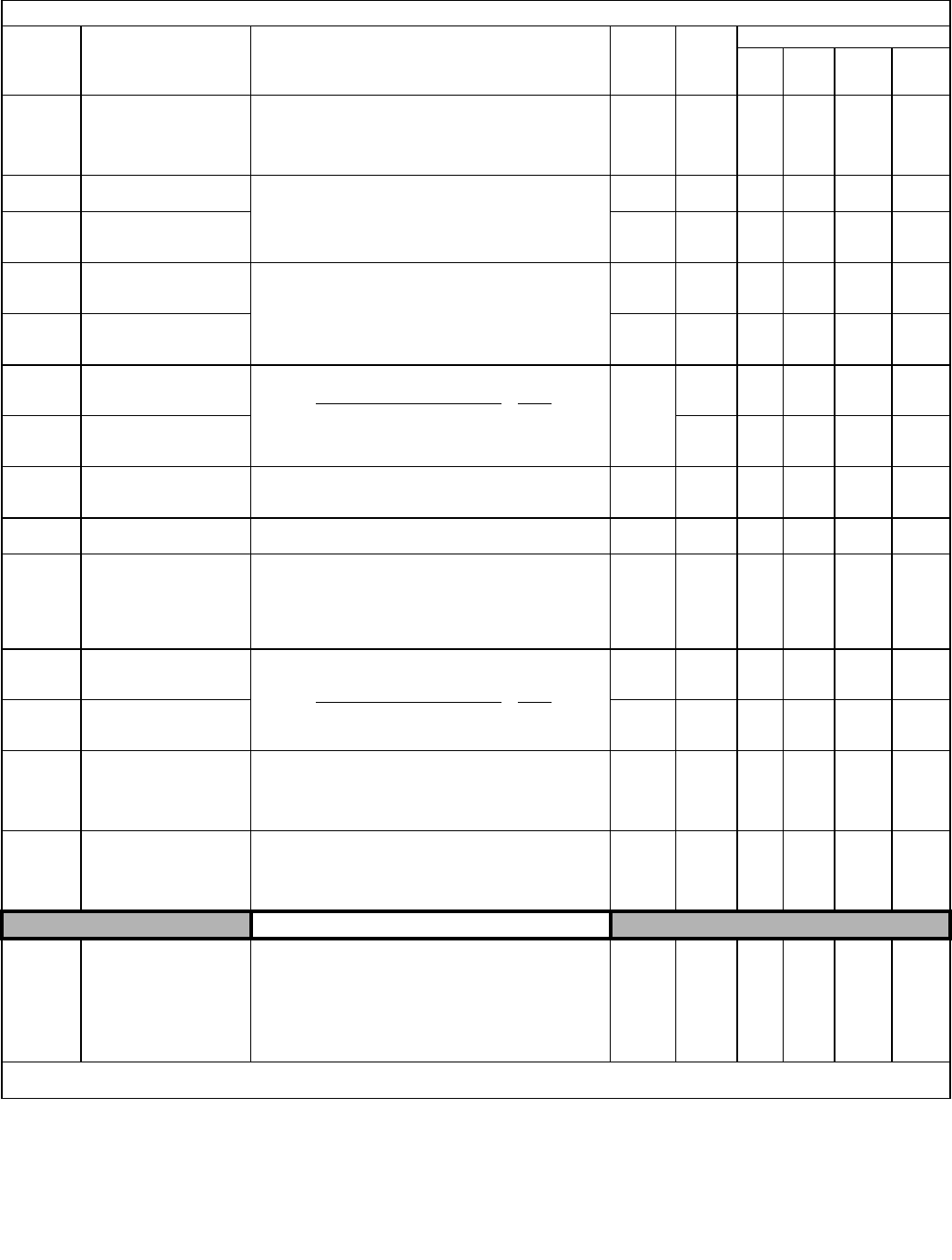
Parameters A - 19
F1-07 Integral Function During
Accel/Decel Selection
PG Ramp PI/I Sel
Sets integral control during acceleration/deceleration to either
enabled or disabled.
0: Disabled - The integral function is not used while accelerating
or decelerating.
1: Enabled - The integral function is used at all times.
0 to 1 0 - A - -
F1-08 Overspeed Detection Level
PG Overspd Level Configures the overspeed fault (OS) detection.
OS fault will occur, if the motor speed feedback is greater than the
F1-08 setting for a time longer than F1-09. F1-08 is set as a
percentage of the maximum output frequency (E1-04). See F1-03.
0 to 120 115% - A - A
F1-09 Overspeed Detection Delay
Time
PG Overspd Time 0.0 to 2.0 0.0 sec - A - A
F1-10 Excessive Speed
Deviation Detection Level
PG Deviate Level
Configures the speed deviation fault (DEV) detection.
DEV fault will occur if the speed deviation is greater than the
F1-10 setting for a time longer than F1-11. F1-10 is set as a
percentage of the maximum output frequency (E1-04).
Speed deviation is the difference between actual motor speed and
the frequency reference command. See F1-04.
0 to 50 10% - A - A
F1-11 Excessive Speed
Deviation Detection Level
PG Deviate Level
0.0 to
10.0 0.5 sec - A - A
F1-12 Number of PG
Gear Teeth 1
PG # Gear Teeth1
Sets the gear ratio between the motor shaft and the encoder (PG).
A gear ratio of 1 will be used if either of these parameters is set to 0.
This function is not available in flux vector control.
0 to 1000
0-A- -
F1-13 Number of PG
Gear Teeth 2
PG # Gear Teeth2 0-A- -
F1-14 PG Open-Circuit
Detection Time
PGO Detect Time
Configures the PG open (PGO) function. PGO will be detected if no
PG pulses are detected for a time longer than F1-14. See F1-02. 0.0 to
10.0 2.0 sec - A - A
F1-21
<3021> PG Constant 2
PG Pulse / Rev 2 Sets the number of pulses for the encoder (pulse generator) for each
full rotation of Motor 2. 0 to
60000 1024 No Q No Q
F1-22
<3021> PG Rotation 2
PG Rotation Sel2
Determines the direction of rotation for the encoder (PG) connected
to Motor 2.
0: Phase A leads with Forward Run Command.
(Phase B leads with Reverse Run Command.)
1: Phase B leads with Forward Run Command.
(Phase A leads with Reverse Run Command.)
0, 1 0 No Q No Q
F1-23
<3021>
Number of PG
Gear Teeth 1
PG Gear Teeth1
Sets the number of gear teeth (deceleration ratio) between Motor 2
and the pulse generator.
A gear ratio of 1 will be used if either of these constants is set to 0.
0 to 1000 0 No A No No
F1-24
<3021>
Number of PG
Gear Teeth 2
PG Gear Teeth2 0 to 1000 0 No A No No
F1-25
<3021>
Hardware Disconnect
Detection Selection CH 1
Hardware PGO ch1
Enables or disables the drive from detecting when the PG option on
CH1 has been disconnected.
0: Disabled
1: Enabled
Enabled when using PG-T2 or Z2.
0, 1 1 No A No A
F1-26
<3021>
Hardware Disconnect
Detection Selection CH 2
Hardware PGO ch2
Enables or disables the drive from detecting when the PG option on
CH2 has been disconnected.
0: Disabled
1: Enabled
Enabled when using PG-Z2.
0, 1 1 No A No A
AI-14 Setup
F2-01 AI-14 Input Selection
AI-14 Input Sel
Sets the function for channel 1 to 3 of the AI-14B analog input
reference option board.
0: 3-channel individual (Channel 1: terminal A1, Channel 2:
terminal A2, Channel 3: terminal A3)
1: 3-channel addition (Summed values of channels 1 to 3 is the
frequency reference)
When set to 0, select 1 for b1-01. In this case, the multi-function
input “Option/Inverter selection” cannot be used.
0 to 1 0 A A A A
Denotes that parameter can be changed when the Drive is running.
* Enabled when an option card is connected to the PG encoder 2CH input (F1-21 to F1-24).
Table A.1 F7 Parameter List (Continued)
Parameter
No. Parameter Name
Digital Operator Display Description Setting
Range Factory
Setting
Control Method
V/F V/F
w/PG
Open
Loop
Vector
Flux
Vector
Input pulses from PG (PPR) x 60
F1-01 F1-13
F1-12
x
Input pulses from PG (PPR) x 60
PG Constant (F1-21) F1-24
F1-23
x
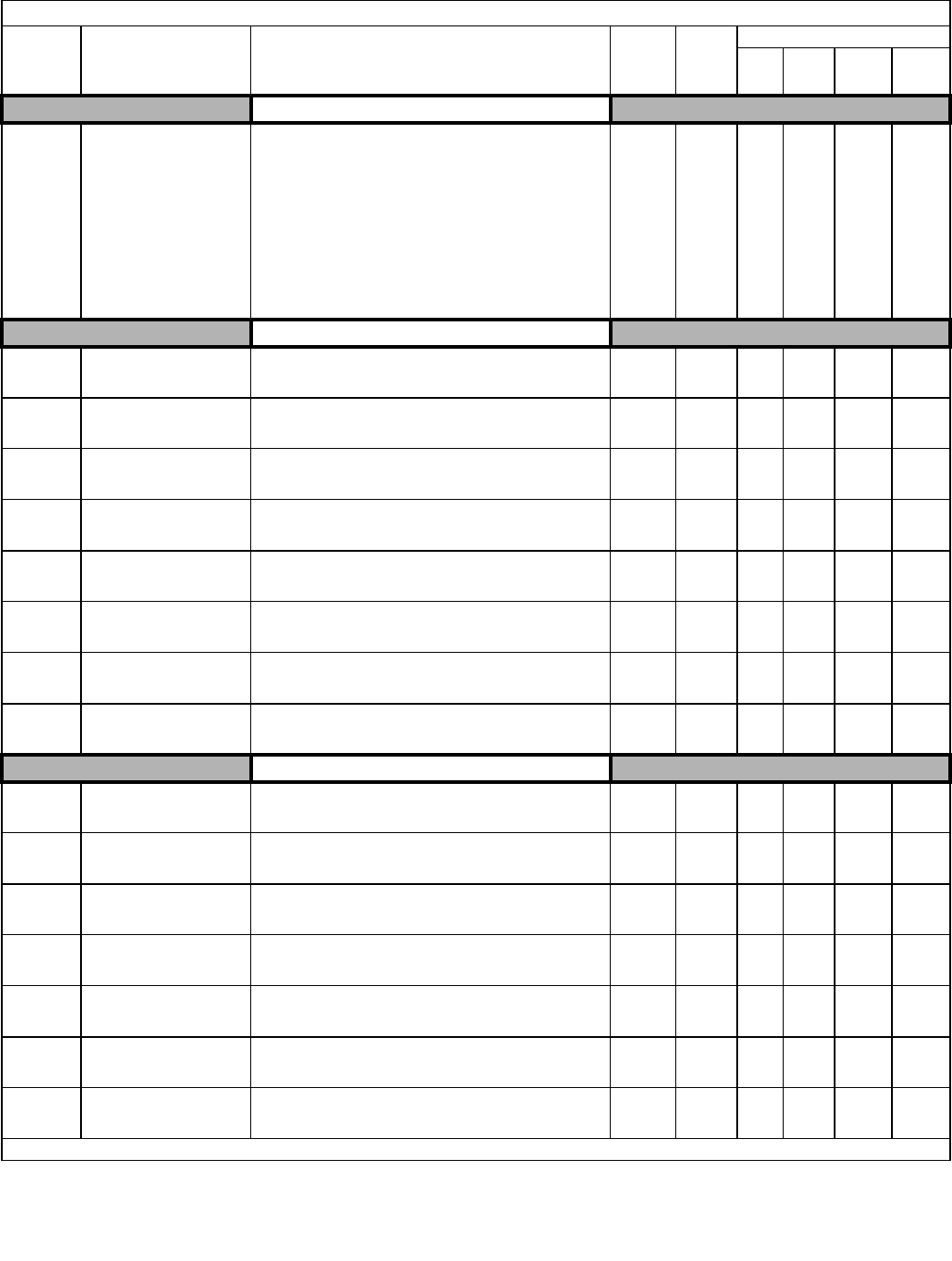
Parameters A - 20
DI-08, 16 Setup
F3-01 DI-08 / DI-16H2 Input
Selection
DI Input
Sets the function of the DI-08 or the DI-16H2 digital input option
board.
0: BCD 1% unit
1: BCD 0.1% unit
2: BCD 0.01% unit
3: BCD 1Hz unit
4: BCD 0.1Hz unit
5: BCD 0.01Hz unit
6: BCD (5-digit) 0.01Hz unit (only effective when DI-16H2 is
used.)
7: Binary input
When o1-03 is set to 2 or higher, the input will be BCD, and the
units will change to the o1-03 setting.
0 to 7 0 A A A A
AO-08, 12 Setup
F4-01 AO-08/AO-12 Channel 1
Monitor Selection
AO Ch1 Sel
Sets the number of the monitor item to be output. (U1-)
The following settings cannot be set:
4, 10 to 14, 25, 28, 29, 30, 34, 35, 39, 40, 41. 1 to 45 2 A A A A
F4-02 AO-08/AO-12 Channel 1
Gain
AO Ch1 Gain
Sets the channel 1 gain.
Ex: Set F4-02 = 50% to output 100% at 5.0V output. 0.0 to
1000.0 100.0% A A A A
F4-03 AO-08/AO-12 Channel 2
Monitor Selection
AO Ch2 Sel
Sets the number of the monitor item to be output. (U1-)
The following settings cannot be set:
4, 10 to 14, 25, 28, 29, 30, 34, 39, 40, 41. 1 to 45 3 A A A A
F4-04 AO-08/AO-12 Channel 2
Gain
AO Ch2 Gain
Sets the channel 2 gain.
Ex: Set F4-04 = 50% to output 100% at 5.0V output. 0.0 to
1000.0 50.0% A A A A
F4-05 AO-08/AO-12 Channel 1 Out-
put Bias
AO Ch1 Bias
Sets the channel 1 bias (100%/10V).
Ex: Set F4-05 = 50% to output 0% at 5.0V output. -110.0 to
110.0 0.0% A A A A
F4-06 AO-08/AO-12 Channel 2 Out-
put Bias
AO Ch2 Bias
Sets the channel 2 bias (100%/10V).
Ex: Set F4-06 = 50% to output 0% at 5.0V output. -110.0 to
110.0 0.0% A A A A
F4-07 AO-12 Channel 1 Signal
Level
AO Opt Level Ch1
Sets the range of the voltage output.
0: 0 to 10Vdc
1: -10 to +10Vdc 0 to 1 0 A A A A
F4-08 AO-12 Channel 2 Signal
Level
AO Opt Level Ch2
Sets the range of the voltage output.
0: 0 to 10Vdc
1: -10 to +10Vdc
0 to 1 0AAA A
DO-02, 08 Setup
F5-01 DO-02/DO-08 Channel 1 Out-
put Selection
DO Ch1 Select
Sets the digital output function number for channel 1. See the H2
parameter group for possible selections.
Effective when digital output card DO-02 or DO-08 is used. 0 to 38 0 A A A A
F5-02 DO-02/DO-08 Channel 2 Out-
put Selection
DO Ch2 Select
Sets the digital output function number for channel 2. See the H2
parameter group for possible selections.
Effective when digital output card DO-02 or DO-08 is used. 0 to 38 1 A A A A
F5-03 DO-08 Channel 3 Output
Selection
DO Ch3 Select
Sets the digital output function number for channel 3. See the H2
parameter group for possible selections.
Effective when digital output card DO-02 or DO-08 is used. 0 to 38 2 A A A A
F5-04 DO-08 Channel 4 Output
Selection
DO Ch4 Select
Sets the digital output function number for channel 4. See the H2
parameter group for possible selections.
Effective when digital output card DO-02 or DO-08 is used. 0 to 38 4 A A A A
F5-05 DO-08 Channel 5 Output
Selection
DO Ch5 Select
Sets the digital output function number for channel 5. See the H2
parameter group for possible selections.
Effective when digital output card DO-02 or DO-08 is used. 0 to 38 6 A A A A
F5-06 DO-08 Channel 6 Output
Selection
DO Ch6 Select
Sets the digital output function number for channel 6. See the H2
parameter group for possible selections.
Effective when digital output card DO-02 or DO-08 is used. 0 to 38 37 A A A A
F5-07 DO-08 Channel 7 Output
Selection
DO Ch7 Select
Sets the digital output function number for channel 7. See the H2
parameter group for possible selections.
Effective when digital output card DO-02 or DO-08 is used. 0 to 38 F A A A A
Denotes that parameter can be changed when the Drive is running.
Table A.1 F7 Parameter List (Continued)
Parameter
No. Parameter Name
Digital Operator Display Description Setting
Range Factory
Setting
Control Method
V/F V/F
w/PG
Open
Loop
Vector
Flux
Vector
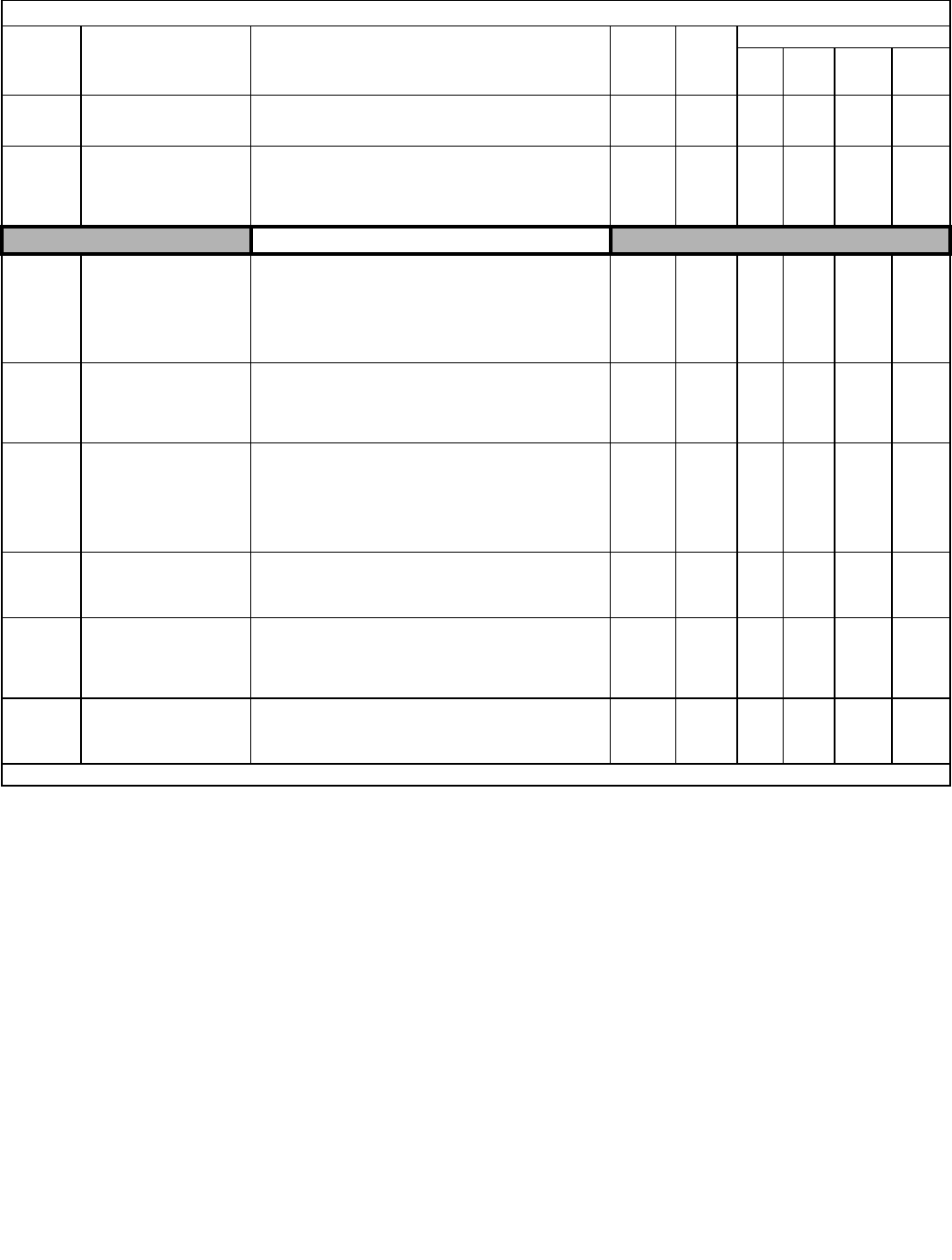
Parameters A - 21
F5-08 DO-08 Channel 8 Output
Selection
DO Ch8 Select
Sets the digital output function number for channel 8. See the H2
parameter group for possible selections.
Effective when digital output card DO-02 or DO-08 is used. 0 to 38 F A A A A
F5-09 DO-08 Output Mode
Selection
DO-08 Selection
Sets the function of the DO-08 digital output option board.
0: 8-channel individual outputs.
1: Binary code output.
2: 8-channel Selected - Output according to F5-01 to F5-08
settings.
0 to 2 0 A A A A
Communications Option Setup
F6-01 Operation Selection after
Communication Error
Comm Bus Flt Sel
Selects the stopping method for a communication option board fault
(BUS). Active only when a communication option board is installed
and b1-01 or b1-02 = 3.
0: Ramp to Stop
1: Coast to Stop
2: Fast-Stop
3: Alarm Only
0 to 3 1 A A A A
F6-02
Selection of External Fault
from Communication Option
Board
EF0 Detection
Selects the condition in which an EF0 fault is detected from a
communication option board. Active only when a communication
option board is installed and b1-01 or b1-02 = 3.
0: Always detected
1: Detected only during operation
0 to 1 0 A A A A
F6-03
Stopping Method for
External Fault from
Communication Option Board
EF0 Fault Action
Selects the stopping method for an external fault from a
communication option board (EF0). Active only when a
communication option board is installed and b1-01 or b1-02 = 3.
0: Ramp to Stop
1: Coast to Stop
2: Fast-Stop
3: Alarm Only
0to 3 1 A A A A
F6-04
Trace Sampling from
Communications Option
Board
Trace Sample Tim
Sets the sample trace for the CP-916 option board. 0 to
60000 0AAA A
F6-05 Current Monitor Display Unit
Selection
Current Unit Sel
Selects the current monitor scaling when using a communication
option board.
0: Displayed in Amps
1: 100%/8192 (12 bit binary number with 8192=100% Drive’s rated
current)
0 to 1 0 A A A A
F6-06
Torque Reference/Torque
Limit Selection from
Communications Option
Torq Ref/Lmt Sel
Selects torque reference/limit when using communications option
board.
0: Disabled -Torque reference/limit from option board disabled
1: Enabled -Torque reference/limit from option board enabled.
0 to 1 0 - - - A
Denotes that parameter can be changed when the Drive is running.
Table A.1 F7 Parameter List (Continued)
Parameter
No. Parameter Name
Digital Operator Display Description Setting
Range Factory
Setting
Control Method
V/F V/F
w/PG
Open
Loop
Vector
Flux
Vector
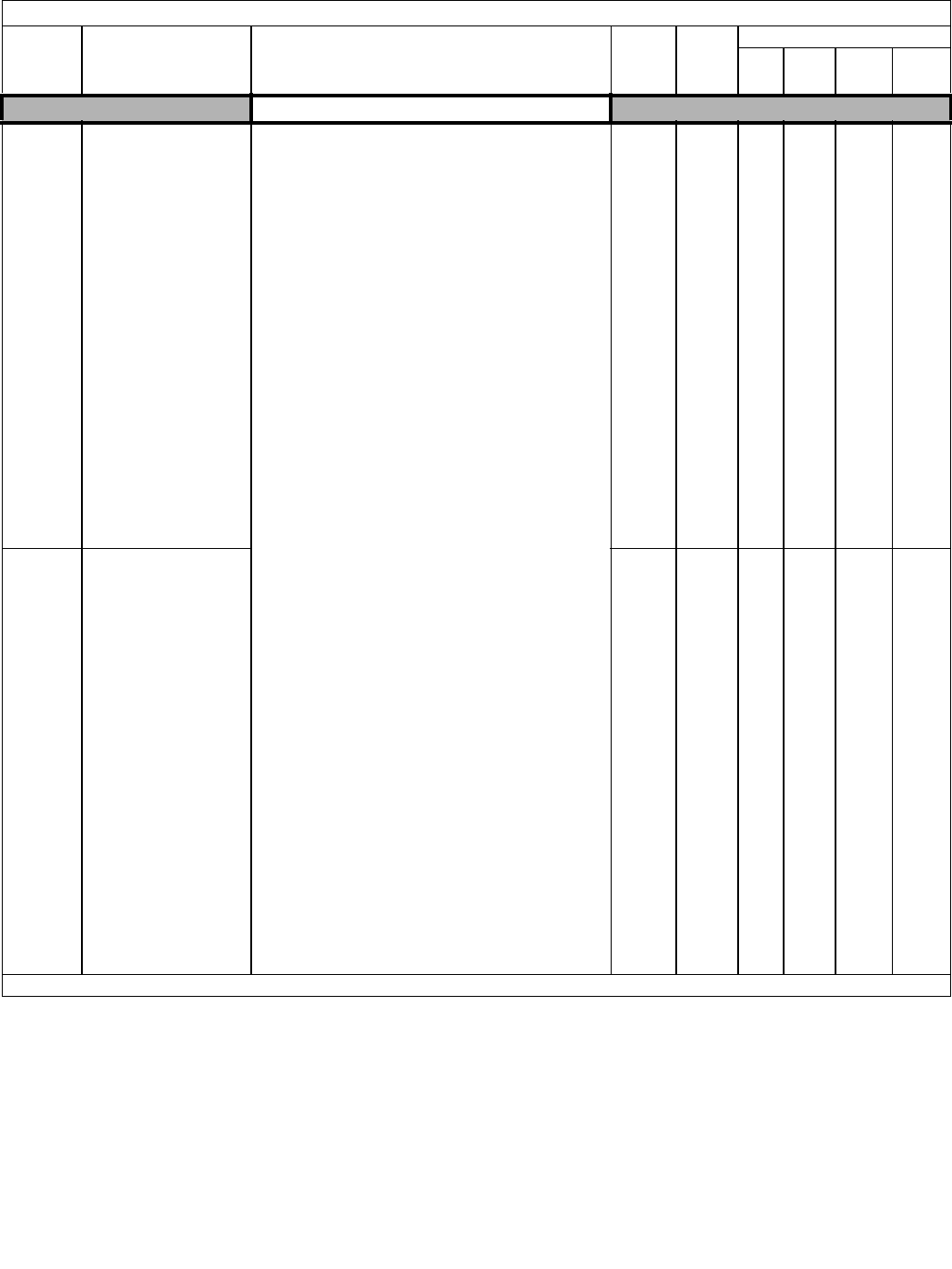
Parameters A - 22
Digital Inputs
H1-01
Multi-Function Digital Input
Terminal S3
Function Selection
Terminal S3 Sel
Selects the function of terminals S3 to S8.
0: 3-wire control
FWD/REV selection for 3-wire sequence.
1: Local/Remote Selection
Closed = Local, Open = Remote.
2: Option/Inv Selection
Selects source of frequency reference and sequence.
Closed = Option Card, Open = b1-01 & b1-02.
3: Multi-Step Frequency Reference 1
Based on status of Multi-Step Reference 1 to 4 (d1-16).
4: Multi-Step Frequency Reference 2
Based on status of Multi-Step Reference 1 to 4 (d1-16).
5: Multi-Step Frequency Reference 3
Based on status of Multi-Step Reference 1 to 4 (d1-16).
6: Jog Frequency Reference
Closed = frequency reference from d1-17
7: Accel/Decel Time Se1ection 1
Based on status of Accel/Decel Time Selection 1 and 2.
8: External BaseBlock N.O.
Closed = Output transistors forced off.
Open = Normal operation.
9: External BaseBlock N.C.
Closed = Normal operation.
Open = Output transistors forced off.
A: Acc/Dec Ramp Hold
Closed = Acceleration suspended and speed held.
B: External Overheat Alarm (OH2)
Closed = OH2 alarm.
C: Terminal A2 Enable
Closed = Terminal A2 is active.
Open = Terminal A2 is disabled.
D: V/F Control with PG Disabled
Closed = Speed feedback control disabled.
E: ASR Integral Reset
Closed = Integral reset.
F: Terminal Not Used
Terminal closure has no effect.
10: MOP Increase
Closed = frequency reference increases.
Open = frequency reference held.
Must be set in conjunction with MOP Decrease and b1-01 must
be set to 1.
11: MOP Decrease
Closed = frequency reference decreases.
Open = frequency reference held.
Must be set in conjunction with MOP Increase and b1-01 must
be set to 1.
12: Forward Jog
Closed = Drive runs forward at frequency reference entered
into parameter d1-17.
13: Reverse Jog
Closed = Drive runs in reverse at frequency reference entered
into parameter d1-17.
14: Fault Reset
Closed = Resets the Drive after the fault and the run command
have been removed.
(Continued on following page).
0 to 78 24 A A A A
H1-02
Multi-Function Digital Input
Terminal S4
Function Selection
Terminal S4 Sel
0 to 78 14 A A A A
Denotes that parameter can be changed when the Drive is running.
Table A.1 F7 Parameter List (Continued)
Parameter
No. Parameter Name
Digital Operator Display Description Setting
Range Factory
Setting
Control Method
V/F V/F
w/PG
Open
Loop
Vector
Flux
Vector
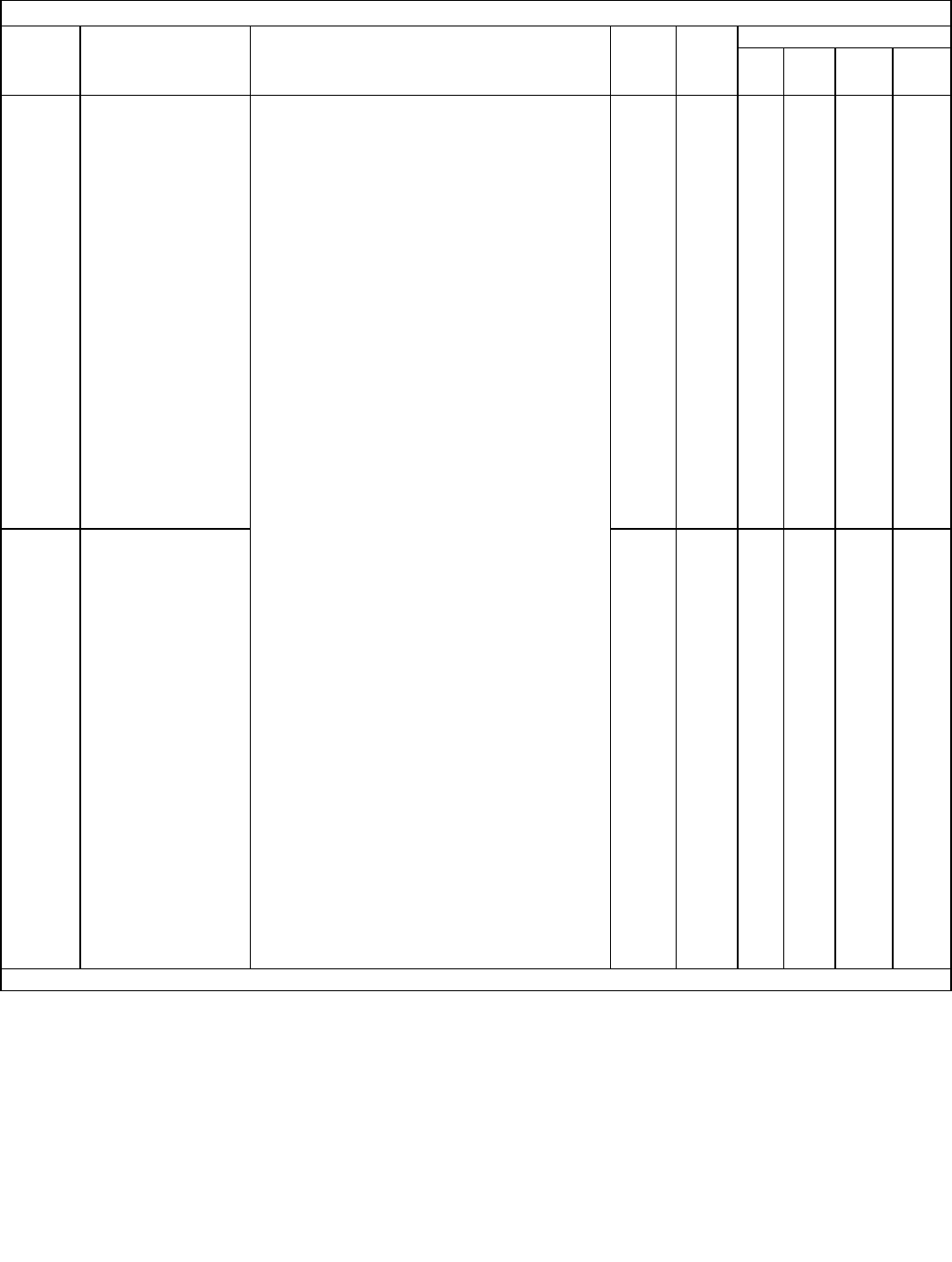
Parameters A - 23
H1-03
Multi-Function Digital Input
Terminal S5
Function Selection
Terminal S5 Sel
15: Fast-Stop N.O.
Closed = Drive decelerates using C1-09, regardless of run
command status.
16: Motor 2 Selection
Closed = Motor 2 (E3-, E4-)
Open = Motor 1 (A1-02, E1-, E2-)
17: Fast-Stop N.C.
Closed = Normal operation
Open = Drive decelerates using C1-09, regardless of run
command status.
18: Timer Function
Input for independent timer, controlled by b4-01 and b4-02.
Used in conjunction with the multi-function digital output
function H2- = 12 “timer output”.
19: PID Disable
Closed = Turns off the PID controller.
1A: Accel / Decel Time Selection 2
Based on status of Accel/Decel Time Selection 1 and 2.
1B: Program Lockout
Closed = All parameter settings can be changed.
Open = Only U1-01 can be changed.
1C: Trim Control Increase
Closed = Increase frequency reference by value in d4-02.
Open = Return to normal frequency reference.
Not effective when Preset References are selected (Multi-step
speed digital inputs are closed). Must be used in conjunction
with Trim Ctrl Decrease.
1D: Trim Control Decrease
Closed = Decrease frequency reference by value in d4-02
Open = Return to normal frequency reference.
Not effective when Preset References are selected (Multi-step
speed digital inputs are closed). Must be used in conjunction
with Trim Ctrl Increase.
1E: Reference Sample Hold
Analog frequency reference is sampled then held at time of
input closure.
20: External Fault, Normally Open, Always Detected, Ramp To
Stop
21: External Fault, Normally Closed, Always Detected, Ramp To
Stop
22: External Fault, Normally Open, During Run, Ramp To Stop
23: External Fault, Normally Closed, During Run, Ramp To Stop
24: External Fault, Normally Open, Always Detected, Coast To
Stop
25: External Fault, Normally Closed, Always Detected, Coast To
Stop
26: External Fault, Normally Open, During Run, Coast To Stop
27: External Fault, Normally Closed, During Run, Coast To Stop
28: External Fault, Normally Open, Always Detected, Fast-Stop
29: External Fault, Normally Closed, Always Detected, Fast-Stop
2A:External Fault, Normally Open, During Run, Fast-Stop
2B:External Fault, Normally Closed, During Run, Fast-Stop
2C:External Fault, Normally Open, Always Detected, Alarm Only
2D:External Fault, Normally Closed, Always Detected, Alarm
Only
2E: External Fault, Normally Open, During Run, Alarm Only
2F: External Fault, Normally Closed, During Run, Alarm Only
(Continued on following page).
0 to 78
3:
2-wire
0:
3-wire
AA A A
H1-04
Multi-Function Digital Input
Terminal S6
Function Selection
Terminal S6 Sel
0 to 78
4:
2-wire
3:
3-wire
AA A A
Denotes that parameter can be changed when the Drive is running.
Table A.1 F7 Parameter List (Continued)
Parameter
No. Parameter Name
Digital Operator Display Description Setting
Range Factory
Setting
Control Method
V/F V/F
w/PG
Open
Loop
Vector
Flux
Vector
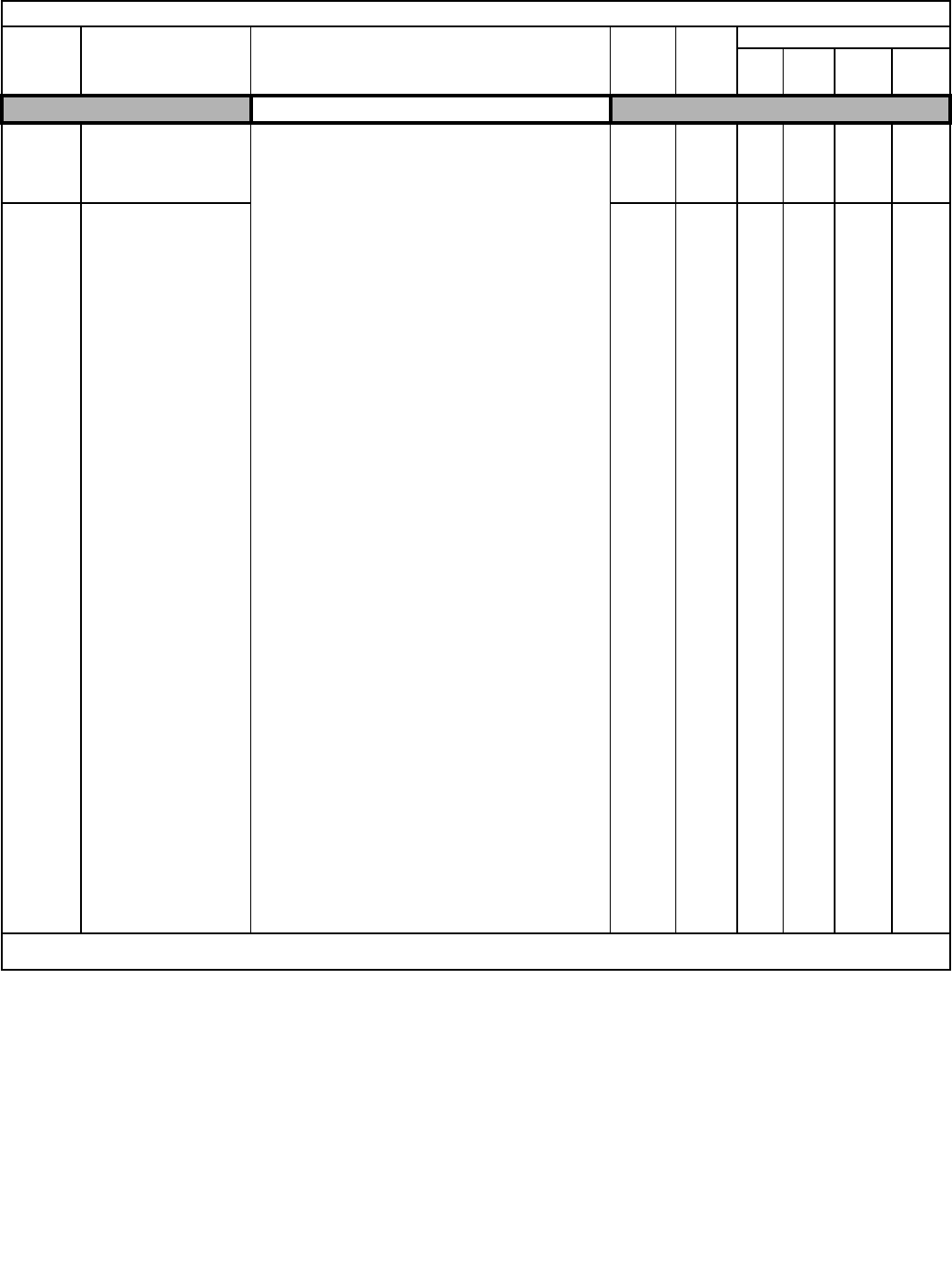
Parameters A - 24
Digital Inputs
H1-05
Multi-Function Digital Input
Terminal S7
Function Selection
Terminal S7 Sel
30:PID integral reset
Closed = Set integrator value to 0.
31: PID integral hold
Closed = Hold integrator at its present level.
32: Multi-Step Reference 4
Based on the status of Multi-Step Reference 1 to 4 (d1-16).
34: PID Soft Starter Cancel
Closed = b5-17 is ignored.
35: PID Input (Error) Polarity Change
Closed = PID error signal polarity is reversed (1 to -1 or
-1 to 1).
60: DC Injection Braking
Closed = Apply DC injection current as set in parameter b2-02.
61: Speed Search 1
Closed = While a run command is given, Drive does a speed
search starting at maximum frequency (E1-04). Speed search
based on b3-01.
62: Speed Search 2
Closed = While a run command is given, Drive does a speed
search starting at frequency reference. Speed search based on
b3-01.
63: Field Weakening Command (Energy Savings)
Closed = Field weakening control set for d6-01 and d6-02.
64: Speed Search 3
Closed = And a run command is given, Drive does a speed
search starting at output frequency. Speed search based on
b3-01.
65: Kinetic Energy Braking Ride-thru N.C.
Closed = Normal operation
Open = KEB ride-thru is enabled.
66: Kinetic Energy Braking Ride-thru N.O.
Closed = KEB ride-thru is enabled.
67: Communications Test Mode
Used to test Modbus RS-485/422 interface.
68: High Slip Braking
Closed = Drive stops using High Slip Braking regardless of run
command status.
69: Jog 2
Closed = Drive runs at frequency reference entered into
parameter d1-17. Direction determined by fwd/rev input.
3-wire control Only.
6A: Drive Enable - Closed = Drive will accept run command.
Open = Drive will not run. If running, Drive will stop per
b1-03.
71: Speed / Torque Control Selection
Closed = Torque control operation.
Open = Speed control operation.
72: Zero-Servo Command
Closed = Zero-Servo ON
77: ASR Gain Switch
Open = ASR proportional gain is set according to C5-01.
Closed = ASR proportional gain is set according to C5-03.
78: Polarity Reversing Command for External Torque Control
Closed = Reverse polarity.
0 to 78
6:
2-wire
4:
3-wire
AA A A
H1-06
Multi-Function Digital Input
Terminal S8
Function Selection
Terminal S8 Sel
0 to 78 8 A A A A
Denotes that parameter can be changed when the Drive is running.
Note: Some digital inputs are control method dependent.
Table A.1 F7 Parameter List (Continued)
Parameter
No. Parameter Name
Digital Operator Display Description Setting
Range Factory
Setting
Control Method
V/F V/F
w/PG
Open
Loop
Vector
Flux
Vector
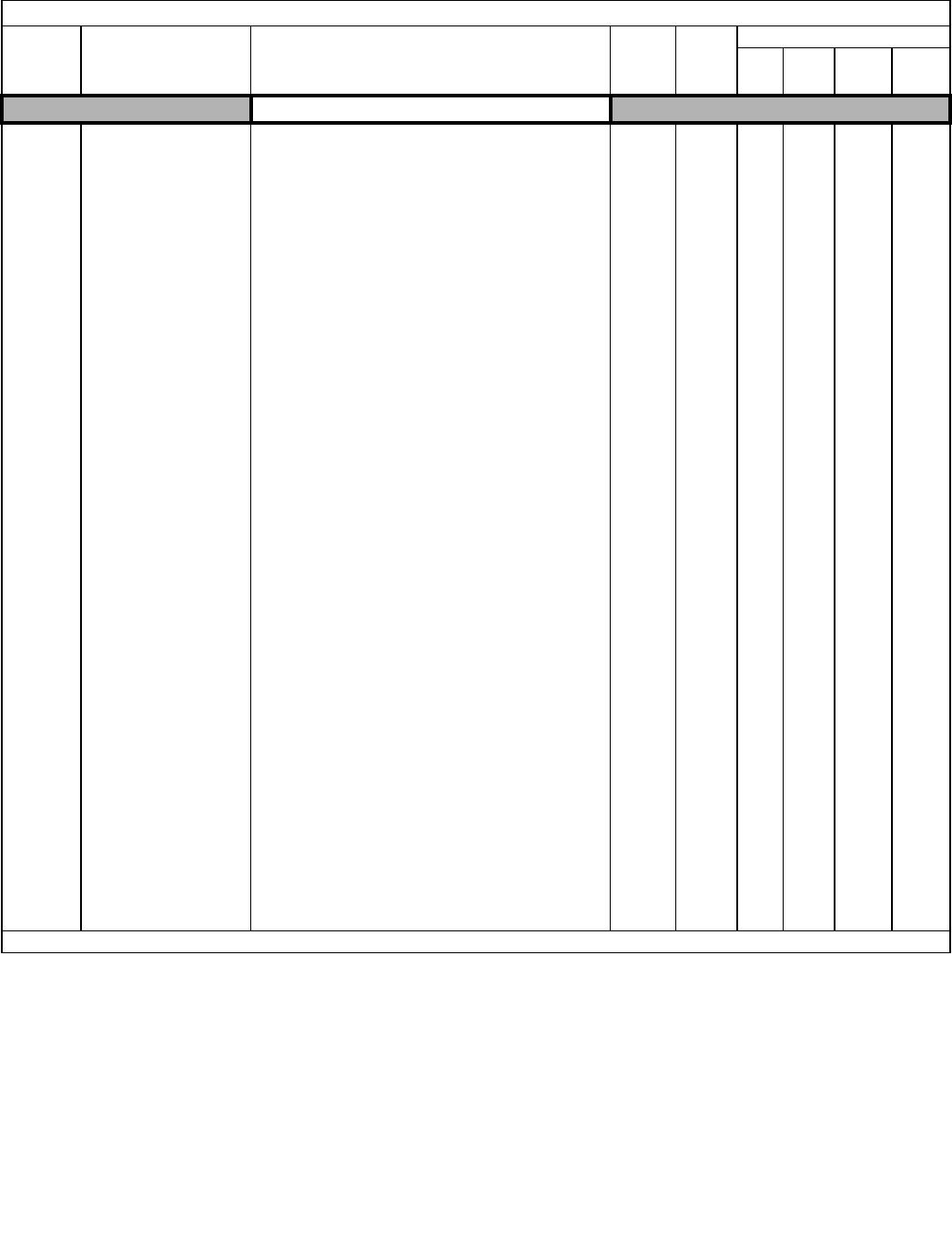
Parameters A - 25
Digital Outputs
H2-01 Terminal M1-M2 Function
Selection
Term M1-M2 Sel
Selects the function of terminals M1 to M6.
0: During RUN 1
Closed = When a run command is input or the Drive is
outputting voltage.
1: Zero Speed
Closed = When Drive output frequency is less than minimum
output frequency (E1-09) or less than DC Injection Braking
Start Frequency (b2-01) when in Flux Vector Control Method.
2: Fref/Fout Agree 1
Closed = When Drive output frequency equals the frequency
reference +/- the hysteresis of L4-02.
3: Fref/Set Agree 1
Closed = When the Drive output frequency and the frequency
reference are equal to the value in L4-01+/- the hysteresis of
L4-02.
4: Frequency Detection 1
Closed = When the Drive output frequency is less than or equal
to the value in L4-01 with hysteresis determined by L4-02.
5: Frequency Detection 2
Closed = When the Drive output frequency is greater than or
equal to the value in L4-01, with hysteresis determined by
L4-02.
6: Inverter Ready
Closed = When the Drive is powered up, not in a fault state, and
in the DRIVE mode.
7: DC Bus Undervoltage
Closed = When the DC bus voltage falls below the UV trip level
set in L2-05.
8: Base Block 1 N.O.
Closed = When the Drive is not outputting voltage.
9: Option Reference
Closed = When the frequency reference is coming from the
Digital Operator.
A: LOCAL/REMOTE Operation
Closed = When the run command is coming from the Digital
Operator.
B: Torque Detection 1 N.O.
Closed = When the output current/torque exceeds the torque
value set in parameter L6-02 for more time than is set in
parameter L6-03.
C: Loss of Reference
Closed = When the Drive has detected a loss of the analog
frequency reference. Frequency reference is considered lost
when it drops 90% in 0.4 seconds. Parameter L4-05 determines
Drive reaction to a loss of frequency reference.
D: Braking Resistor Fault
Closed = When braking resistor or transistor is overheating or
has faulted. Only active when L8-01 = 1.
E: Fault
Closed = When the Drive experiences a major fault.
F: Not Used
10:Minor Fault - Alarm
Closed = When Drive experiences an alarm.
(Continued on following page)
0 to 38 0 A A A A
Denotes that parameter can be changed when the Drive is running.
Table A.1 F7 Parameter List (Continued)
Parameter
No. Parameter Name
Digital Operator Display Description Setting
Range Factory
Setting
Control Method
V/F V/F
w/PG
Open
Loop
Vector
Flux
Vector
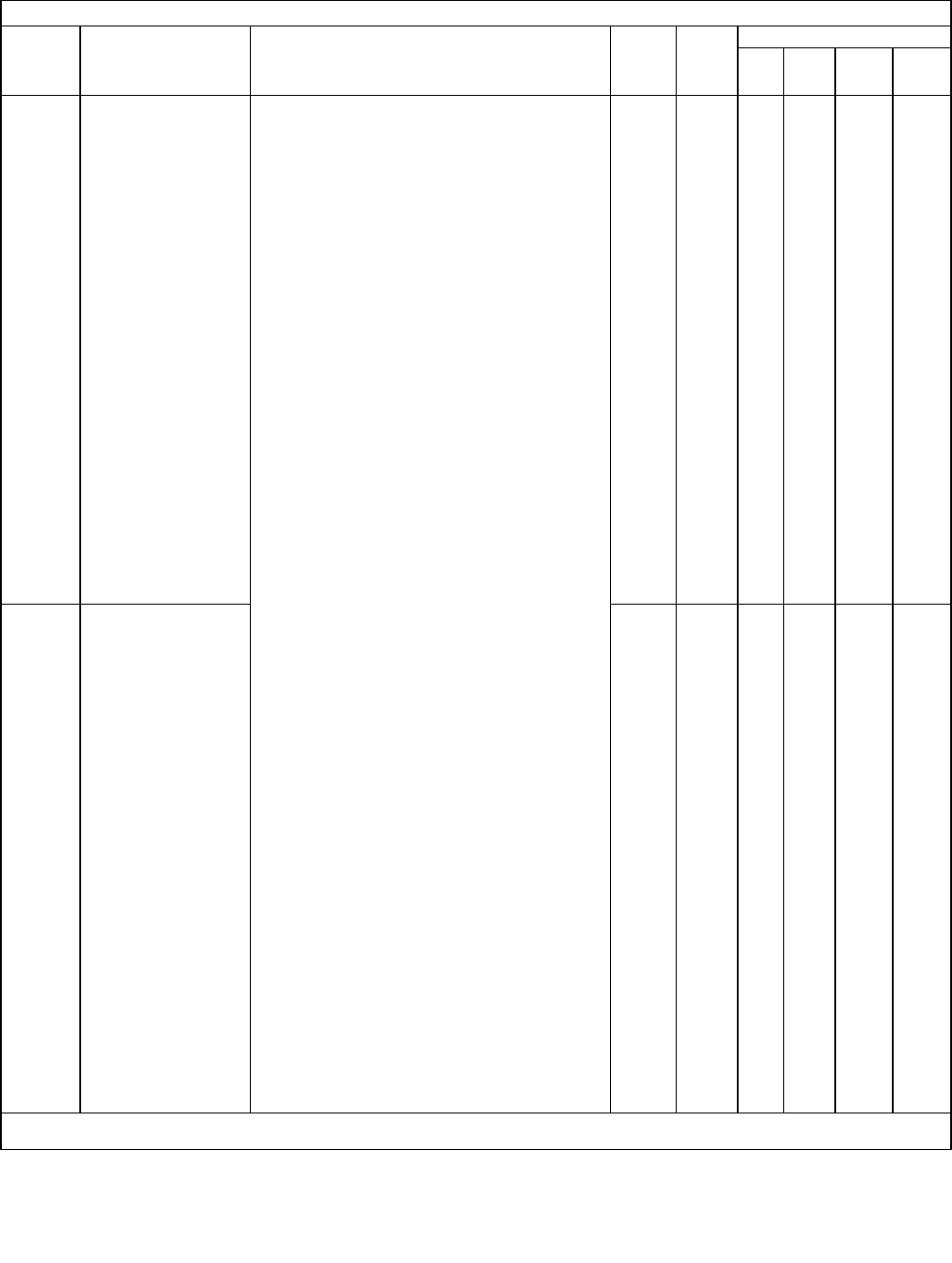
Parameters A - 26
H2-02 Terminal M3-M4 Function
Selection
Term M3-M4 Sel
11: Reset Command Active
Closed = When the Drive receives a reset command from a
digital input terminal or serial communication.
12: Timer Output
Output for independent timer, controlled by b4-01 and b4-02.
Used in conjunction with the digital input H1- = 18 “timer
function”.
13: Fref/Fout Agree 2
Closed = When Drive output frequency equals the frequency
reference +/- the hysteresis of L4-04.
14: Fref/Set Agree 2
Closed = When the Drive output frequency and the frequency
reference are equal to the value in L4-03 +/- the hysteresis of
L4-04.
15: Frequency Detection 3
Closed = When the Drive output frequency is less than or equal
to the value in L4-03 with the hysteresis determined by L4-04.
16: Frequency Detection 4
Closed = When the Drive output speed is greater than or equal
to the value in L4-03, with the hysteresis determined by L4-04.
17: Torque Detection 1 N.C.
Open = When the output current/torque exceeds the value set in
parameter L6-02 for more time than is set in parameter
L6-03.
18: Torque Detection 2 N.O.
Closed = When the output current/torque exceeds the value set
in parameter L6-05 for more time than is set in parameter
L6-06.
19: Torque Detection 2 N.C.
Open = when the output current/torque exceeds the value set in
parameter L6-05 for more time than is set in parameter L6-06.
1A: Reverse Direction
Closed = When the Drive is running in the reverse direction.
1B: Baseblock 2 N.C.
Open = When Drive is not outputting voltage.
1C: Motor 2 Selection
Closed = When motor 2 is selected by multi-function input
“motor 2 selection”.
1D: Regenerating
Closed = When in regenerating mode.
1E: Restart Enabled
Closed = When the Drive is performing an automatic restart
attempt. Automatic restart is configured by parameter L5-01.
1F: Overload (OL1)
Closed = When OL1 function is at 90% of its trip point or
greater.
20: OH Pre-Alarm
Closed = When the Drive’s heatsink temperature exceeds the
setting of parameter L8-02.
30: During Torque Limit (when in speed control)
Closed = When in torque limit.
31: During Speed Limit
Closed = When in speed limit.
32: During Speed Limit (when in torque control)
Closed = When motor frequency is at the speed limit value
when running in torque control.
33: Zero-Servo Complete
Closed = When Zero Servo is complete within the b9-02 zero
servo completion width.
36: Frequency Detection 5 <3021>
Closed = When the Drive output speed is greater than or equal
to the value in L4-03, with the hysteresis determined by L4-04.
37: During Run 2
Closed = When Drive is operating (except during baseblock or
DC braking).
38: Drive Enable
Closed = When the Drive enable input is active.
3D: Drive Cooling Fan Fault Detect <3021>
Closed: When drive’s cooling fan fault is detected.
0 to 38 1 A A A A
H2-03 Terminal M5-M6 Function
Selection
Term M5-M6 Sel 0 to 38 2 A A A A
Denotes that parameter can be changed when the Drive is running.
Note: Some digital outputs are control method dependent.
Table A.1 F7 Parameter List (Continued)
Parameter
No. Parameter Name
Digital Operator Display Description Setting
Range Factory
Setting
Control Method
V/F V/F
w/PG
Open
Loop
Vector
Flux
Vector
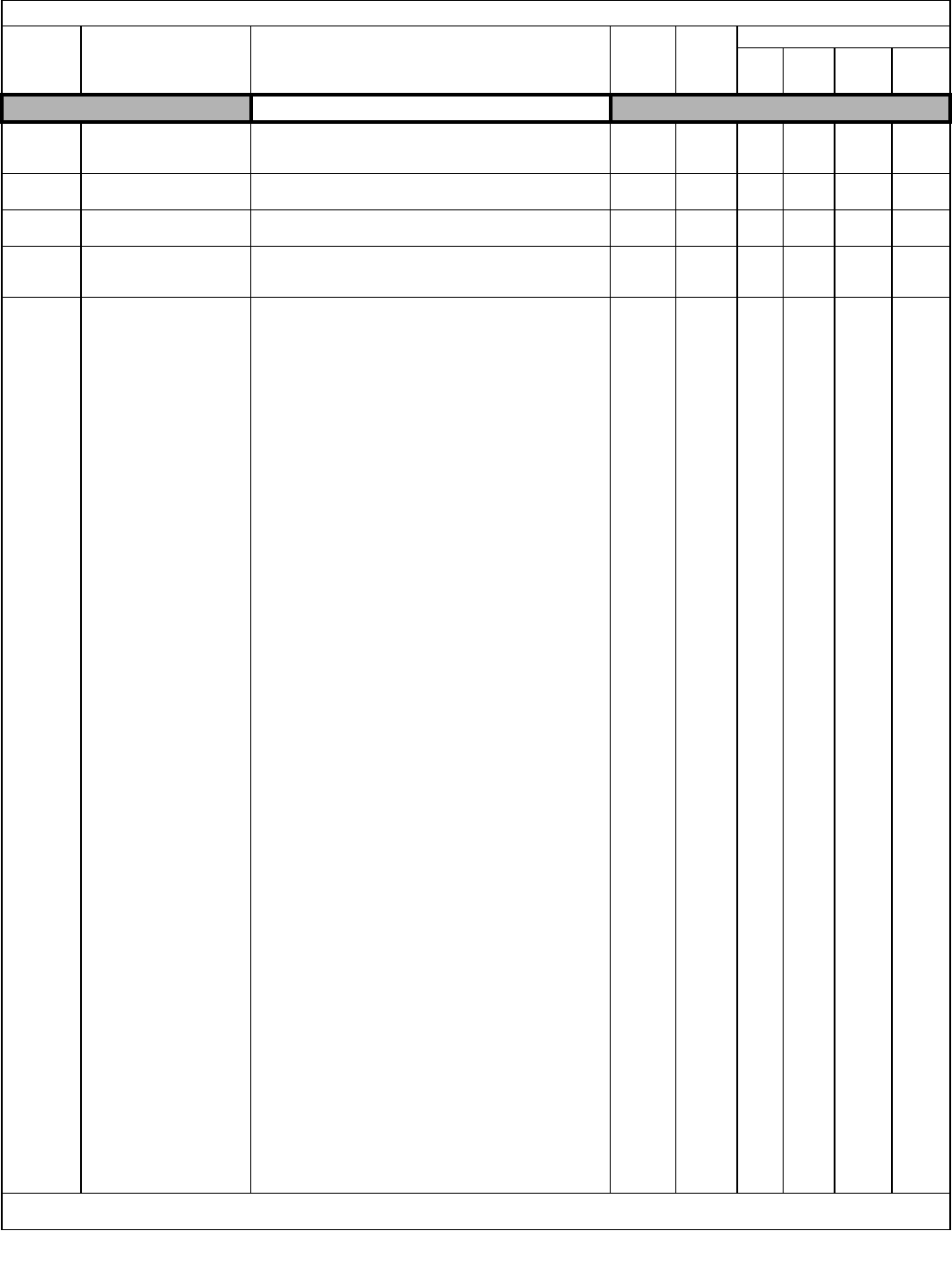
Parameters A - 27
Analog Inputs
H3-01 Term inal A 1 Sig nal Level
Selection
Term A1 Lvl Sel
Sets the signal level of terminal A1.
0: 0 to 10Vdc
1: -10 to +10Vdc 0 to 1 0 A A A A
H3-02
Terminal A1 Gain Setting
Terminal A1 Gain Sets the output level when 10V is input, as a percentage of the
maximum output frequency (E1-04). 0.0 to
1000.0 100.0% A A A A
H3-03
Terminal A1 Bias Setting
Terminal A1 Bias Sets the output level when 0V is input, as a percentage of the
maximum output frequency (E1-04). –100.0 to
+100.0 0.0% A A A A
H3-04 Term inal A 3 Sig nal Level
Selection
Term A3 Signal
Sets the signal level of terminal A3.
0: 0 to 10Vdc
1: -10 to +10Vdc 0 to 1 0 A A A A
H3-05 Terminal A3 Function
Selection
Terminal A3 Sel
Selects the function of terminal A3.
0: Frequency Bias (Adds with terminal A1)
100% = Maximum output frequency (E1-04)
1: Frequency Reference Gain (FGAIN)
100% = Frequency reference command value A1
Total gain = Internal gain (H3-02) x FGAIN
2: Aux Frequency Reference 1
Used in conjunction with multi-function inputs “multi-step
frequency reference 1-4” (d1-16).
100% = Maximum output frequency (E1-04)
3: Aux Frequency Reference 2
Used in conjunction with multi-function inputs “multi-step
frequency reference 1-4” (H1-xx=3,4,5).
100% = Maximum output frequency (E1-04)
4: Output Voltage Bias
100% = Motor rated voltage (E1-05).
Voltage boost after V/F pattern.
5: Accel / Decel Time Coefficient
100% = Active accel / decel time (C1-01 thru C1-08)
6: DC Injection Braking Current
100% = Drive rated current.
Parameter b2-02 is disabled.
7: Overtorque / Undertorque Detection Level
Used for multi-function digital output for
“overtorque/undertorque”.
100% = motor rated torque (OLV, FV) or Drive rated current
(V/F, V/F w/PG).
Internal overtorque detection level (L6-02) disabled.
8: Stall Prevention Level During Run
100% = L3-06.
9: Frequency Reference Lower Limit
100% = Maximum output frequency (E1-04).
Either d2-02 setting or A3 input level, whichever is greater,
becomes effective.
A: Jump Frequency 4
100% = Maximum output frequency (E1-04).
B: PID Feedback
100% = Maximum output frequency (E1-04).
C: PID Set Point
100% = Maximum output frequency (E1-04).
Frequency reference no longer acts as a PID setpoint.
D: Frequency Reference Bias 2 (FBIAS2)
100% = Maximum output frequency (E1-04).
Total bias = Internal bias (H3-03) + FBIAS (H3-07) + A3 input
level
E: Motor Temperature
See parameters L1-03 & L1-04.
10: FWD Torque Limit (Quadrant 1)
100% = Motor rated torque.
11: REV Torque Limit (Quadrant 3)
100% = Motor rated torque.
12: Regenerative Torque Limit (Quadrants 2 and 4)
100% = Motor rated torque.
13: Torque Reference (in Torque Control); Torque Limit (in Speed
Control) (Quadrants 1, 2, 3, 4)
100% = Motor rated torque.
14: Torque Compensation
100% = Motor rated torque.
15: FWD / REV Torque Limit (Quadrants 1 and 3)
100% = Motor rated torque.
1F: Not Used
0 to 1F 2 A A A A
Denotes that parameter can be changed when the Drive is running.
Note: Some analog inputs are control method dependent.
Table A.1 F7 Parameter List (Continued)
Parameter
No. Parameter Name
Digital Operator Display Description Setting
Range Factory
Setting
Control Method
V/F V/F
w/PG
Open
Loop
Vector
Flux
Vector
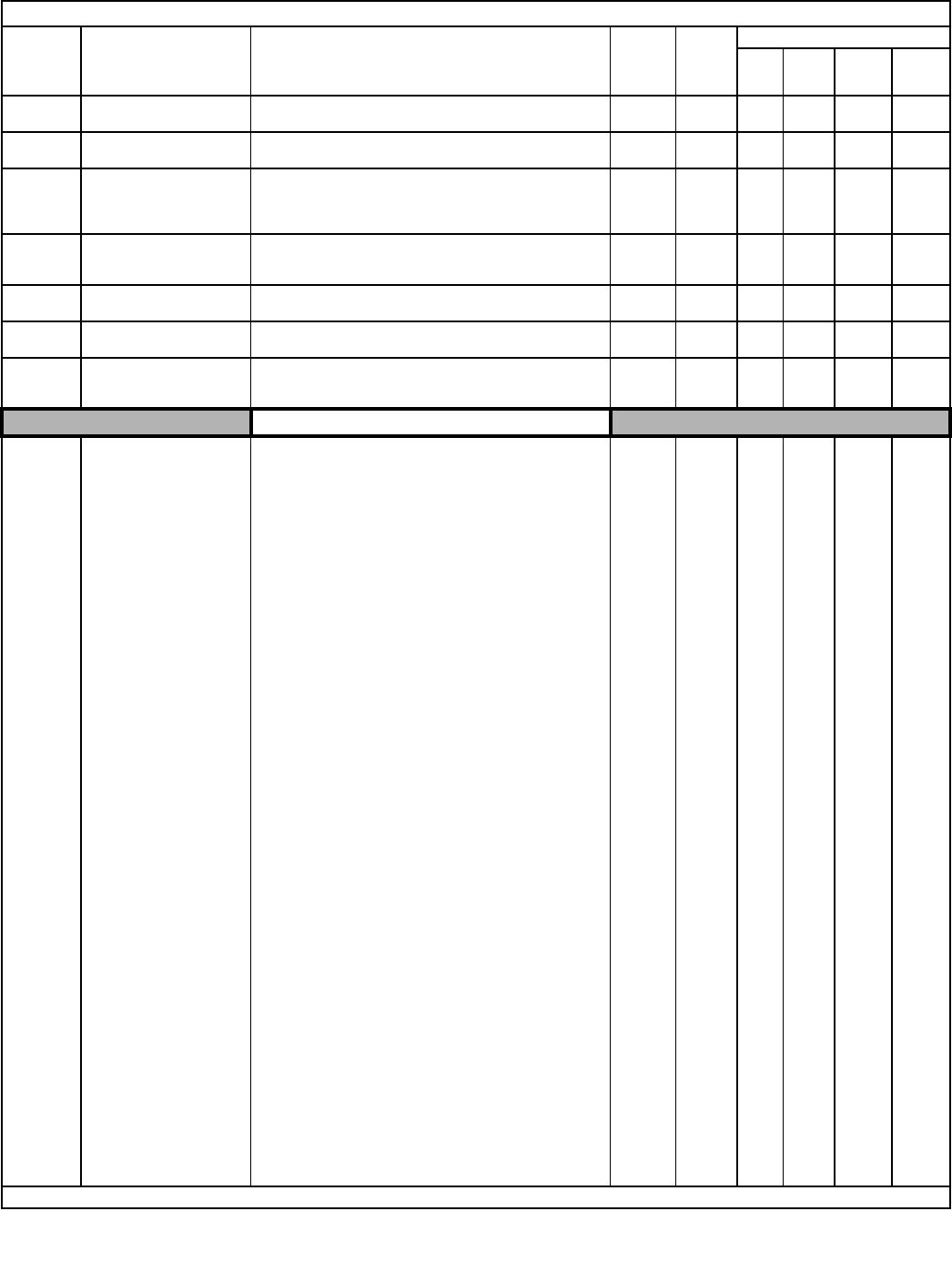
Parameters A - 28
H3-06
Terminal A3 Gain Setting
Terminal A3 Gain Sets the output level when 10V is input. 0.0 to
1000.0 100.0% A A A A
H3-07
Terminal A3 Bias Setting
Terminal A3 Bias Sets the frequency reference when 0V is input. –100.0 to
+100.0 0.0% A A A A
H3-08 Terminal A2 Signal Level
Selection
Term A2 Signal
Selects the signal level of terminal A2.
0: 0 to 10Vdc (switch S1-2 must be in the OFF position).
1: -10 to +10Vdc (switch S1-2 must be in the OFF position).
2: 4 to 20mA (switch S1-2 must be in the ON position)
0 to 2 2 A A A A
H3-09 Terminal A2 Function
Selection
Terminal A2 Sel
Selects the function of terminal A2.
Same choices as Terminal A3 Function Selection (H3-05). 0 to 1F 0 A A A A
H3-10
Terminal A2 Gain Setting
Terminal A2 Gain Sets the output level when 10V is input. 0.0 to
1000.0 100.0% A A A A
H3-11
Terminal A2 Bias Setting
Terminal A2 Bias Sets the output level when 0V is input. –100.0 to
+100.0 0.0% A A A A
H3-12 Analog Input Filter Time
Constant
Filter Avg Time
This parameter adjusts the filter on all 3 analog inputs. Increase to
add stability, decrease to improve response. 0.00 to
2.00 0.03sec A A A A
Analog Outputs
H4-01 Terminal FM Monitor
Selection
Terminal FM Sel
Selects which monitor will be output on terminals FM and FC.
1: Frequency Reference
100% = Maximum output frequency E1-04.
2: Output Frequency
100% = Maximum output frequency E1-04.
3: Output Current
100% = Drive rated current.
5: Motor Speed
100% = Maximum output frequency E1-04.
6: Output Voltage
100% = 200/400Vac depending on Drive voltage rating.
7: DC Bus Voltage
100% = 400/800Vdc depending on Drive voltage rating.
8: Output kWatts
100% = Drive rated power.
9: Torque Reference
100% = Motor rated torque.
15:Terminal A1 Input Level
100% = 10Vdc
16:Terminal A2 Input Level
100% = 10Vdc or 20mA
17:Terminal A3 Input Level
100% = 10Vdc
18:Motor Secondary Current
100% = Motor rated secondary current.
19:Motor Excitation Current
100% = Motor rated magnetizing current.
20:SFS Output
100% = Maximum output frequency E1-04.
21:ASR Input
100% = Maximum output frequency E1-04.
22:ASR Output
100% = Maximum output frequency E1-04.
24:PID Feedback
100% = Maximum output frequency E1-04.
26:Output Voltage Reference Vq
100% = E1-05, default 240V or 480V.
27:Output Voltage Reference Vd
100% = E1-05, default 240V or 480V.
31:Not Used
32:ACR q Output (100% = Motor rated secondary current)
33:ACR d Output (100% = Motor rated magnetizing current)
36:PID Input
100% = Maximum output frequency E1-04.
37:PID Output
100% = Maximum output frequency E1-04.
38:PID Setpoint
100% = Maximum output frequency E1-04.
44:ASR Output Without Filter
45:Feedforward Control Output
100% = Motor rated secondary current.
1 to 45 2 A A A A
Denotes that parameter can be changed when the Drive is running.
Table A.1 F7 Parameter List (Continued)
Parameter
No. Parameter Name
Digital Operator Display Description Setting
Range Factory
Setting
Control Method
V/F V/F
w/PG
Open
Loop
Vector
Flux
Vector
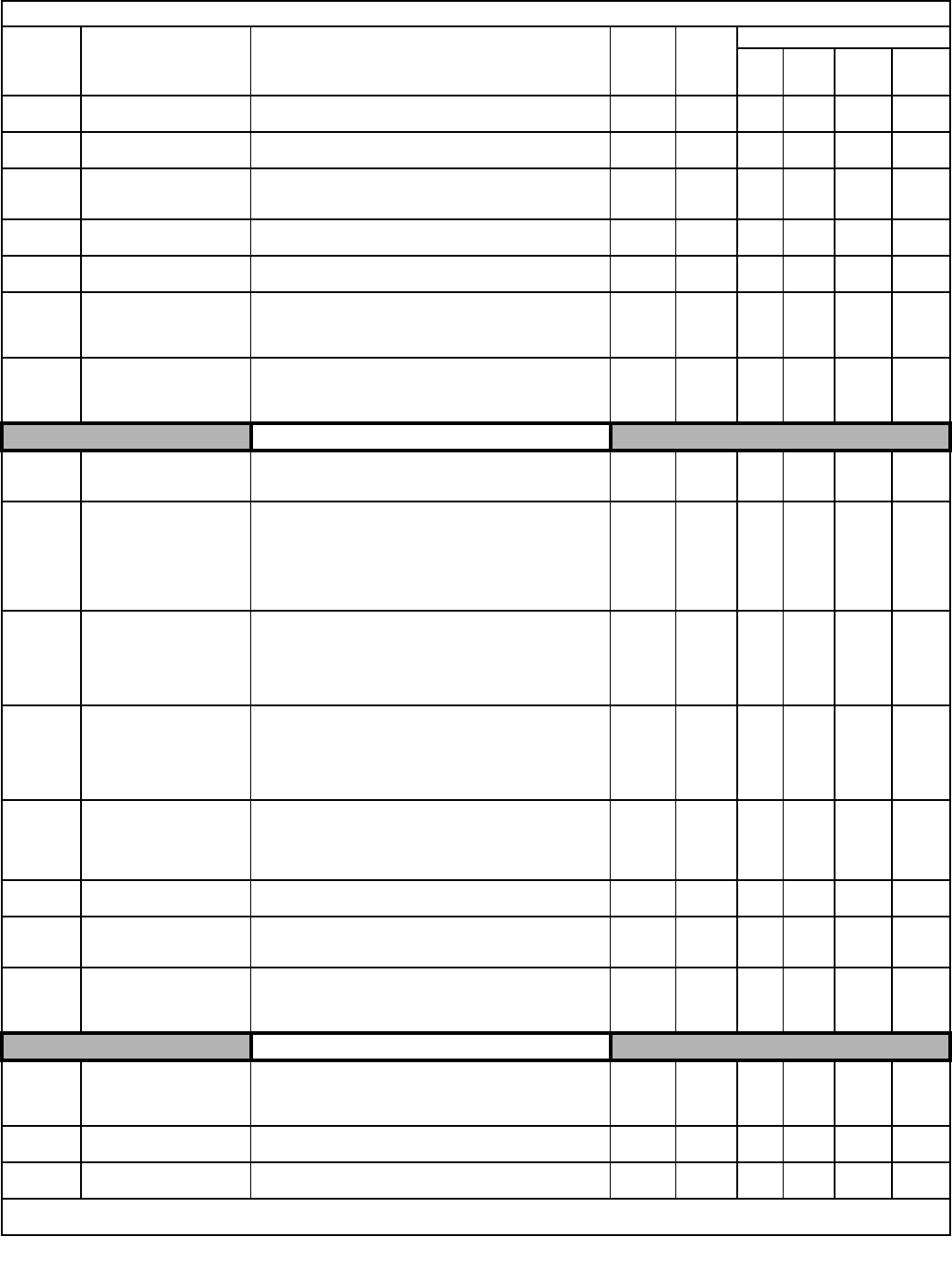
Parameters A - 29
H4-02
Terminal FM Gain Setting
Terminal FM Gain Sets terminal FM output level when selected monitor is at 100%. 0.0 to
1000.0 100.0% Q Q Q Q
H4-03
Terminal FM Bias Setting
Terminal FM Bias Sets terminal FM output level when selected monitor is at 0%. –110.0 to
110.0 0.0% A A A A
H4-04 Terminal AM Monitor
Selection
Terminal AM Sel
Selects which monitor will be the output on terminals AM and FC.
Same function choices as H4-01. 1 to 45 3 A A A A
H4-05
Terminal AM Gain Setting
Terminal AM Gain Sets terminal AM output voltage (in percent of 10Vdc) when
selected monitor is at 100% output. 0.0 to
1000.0 50.0% Q Q Q Q
H4-06
Terminal AM Bias Setting
Terminal AM Bias Sets terminal AM output voltage (in percent of 10Vdc) when
selected monitor is at 0% output. –110.0 to
110.0 0.0% A A A A
H4-07 Terminal FM Signal Level
Selection
FM Level Select 1
Selects the signal level of terminal FM.
0: 0 to 10Vdc
1: -10 to +10Vdc
2: 4 to 20mA*
0 or 2 0 A A A A
H4-08 Terminal AM Signal Level
Selection
AM Level Select 2
Selects the signal level of terminal AM.
0: 0 to 10Vdc
1: -10 to +10Vdc
2: 4 to 20mA*
0 or 2 0 A A A A
Serial Communications Setup
H5-01 Drive Node Address
Serial Comm Adr
Selects Drive station node number (address) for Modbus terminals
R+, R-, S+, S-. The Drive’s power must be cycled for the setting to
take effect.
0 to 20
Hex 1F A A A A
H5-02 Communication Speed
Selection
Serial Baud Rate
Selects the baud rate for Modbus terminals R+, R-, S+ and S-. The
Drive’s power must be cycled for the setting to take effect.
0: 1200 bps
1: 2400 bps
2: 4800 bps
3: 9600 bps
4: 19200 bps
0 to 4 3 A A A A
H5-03 Communication Parity
Selection
Serial Com Sel
Selects the communication parity for Modbus terminals R+, R-, S+
and S-. The Drive’s power must be cycled for the setting to take
effect.
0: No Parity
1: Even Parity
2: Odd Parity
0 to 2 0 A A A A
H5-04 Stopping Method After
Communication Error
Serial Fault Sel
Selects the stopping method when a communication timeout fault
(CE) is detected.
0: Ramp to Stop
1: Coast to Stop
2: Fast-Stop
3: Alarm Only
0 to 3 3 A A A A
H5-05 Communication Fault
Detection Selection
Serial Flt Dtct
Enables or disables the communications timeout fault (CE).
0: Disabled - A communication loss will not cause a
communication fault.
1: Enabled - If communication is lost for more than 2 seconds, a CE
fault will occur.
0 to 1 1 A A A A
H5-06 Drive Transmit Wait Time
Transmit WaitTIM Set the delay time from when the Drive receives data to when the
Drive sends data. 5 to 65 5ms A A A A
H5-07 RTS Control Selection
RTS Control Sel
Enables or disables “request to send” (RTS) control:
0: Disabled - RTS is always on
1: Enabled - RTS turns on only when sending 0 to 1 1 A A A A
H5-10
<3021>
Unit Selection for
MEMOBUS Register 0025H
MEMOBUS 25H UNIT
Selects the units used for MEMOBUS registry 0025H (monitors the
output voltage reference).
0: 0.1 V units
1: 1 V units
0, 1 0 A A A A
Pulse I/O Setup
H6-01 Terminal RP Pulse Train Input
Function Selection
Pulse Input Sel
Selects the function of pulse train terminal RP.
0: Frequency reference
1: PID feedback value
2: PID setpoint value
0 to 2 0 A A A A
H6-02
Pulse Train Input Scaling
Pulse In Scaling Sets the number of pulses (in Hz) that is equal to the maximum
output frequency E1-04. 1000 to
32000 1440Hz A A A A
H6-03
Pulse Train Input Gain
Pulse Input Gain Sets the output level when the pulse train input is at 100% as a
percentage of maximum output frequency E1-04. 0.0 to
1000.0 100.0% A A A A
Denotes that parameter can be changed when the Drive is running.
Note: Some digital outputs are control method dependent.
Table A.1 F7 Parameter List (Continued)
Parameter
No. Parameter Name
Digital Operator Display Description Setting
Range Factory
Setting
Control Method
V/F V/F
w/PG
Open
Loop
Vector
Flux
Vector
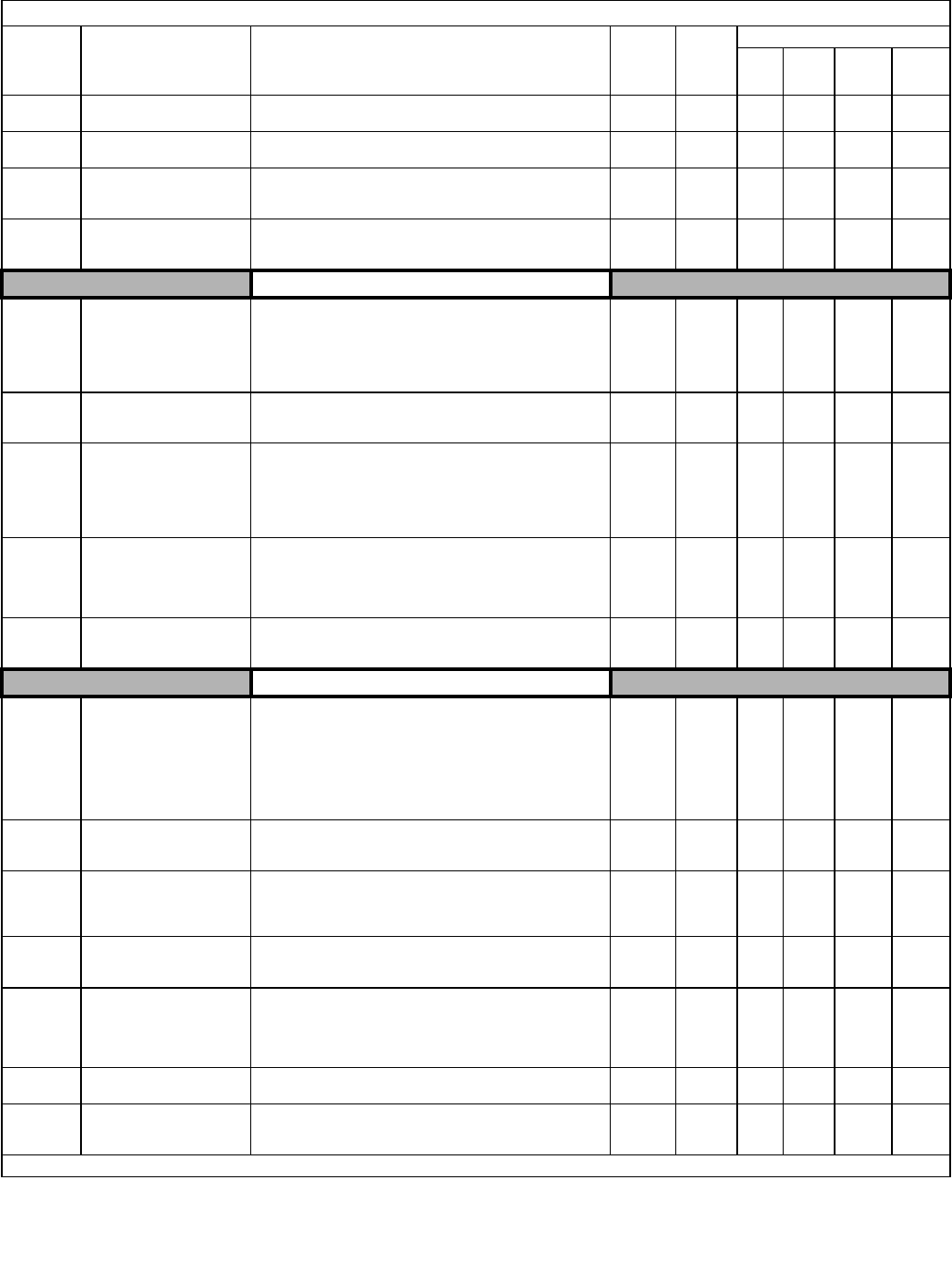
Parameters A - 30
H6-04
Pulse Train Input Bias
Pulse Input Bias Sets the output level when the pulse train input is 0Hz as a
percentage of maximum output frequency E1-04. -100.0 to
100.0 0.0% A A A A
H6-05
Pulse Train Input Filter Time
Pulse In Filter Sets the pulse train input filter time constant in seconds. 0.00 to
2.00 0.10sec A A A A
H6-06
Terminal MP Pulse Train
Monitor Selection
Pulse Moni Sel
Select the pulse train monitor output terminal MP function (value of
the part of U1-). See Table A2 for the list of U1
monitors.
1, 2, 5,
20, 24,
31, 36 2AAA A
H6-07
Pulse Train Monitor
Scaling
Pulse Moni Scale
Sets the number of output pulses when the monitor is 100% (in Hz).
Set H6-06 to 2, and H6-07 to 0, to make the pulse train
monitor output synchronous to the output frequency.
0 to
32000 1440Hz A A A A
Motor Overload
L1-01 Motor Overload
Protection Selection
MOL Fault Select
Sets the motor thermal overload protection (OL1) based on the
cooling capacity of the motor.
0: Disabled
1: Standard Fan Cooled (< 10:1 motor)
2: Standard Blower Cooled (≥ 10:1 motor)
3: Vector Motor (≤ 1000:1 motor)
0 to 3 1 Q Q Q Q
L1-02 Motor Overload
Protection Time
MOL Time Const
Sets the motor thermal overload protection (OL1) time. A larger
L1-02 time will increase the time before an OL1 fault will occur. 0.1 to
20.0 8.0min A A A A
L1-03 Motor Overheat Alarm
Operation Selection
Mtr OH Alarm Sel
Sets operation selection when the motor temperature analog input
(H3-09 = E) exceeds the OH3 alarm level (1.17V)
0: Ramp to Stop
1: Coast to Stop
2: Fast-Stop
3: Alarm Only
0 to 3 3 A A A A
L1-04 Motor Overheat Fault
Operation Selection
Mtr OH Fault Sel
Sets stopping method when the motor temperature analog input
(H3-09 = E) exceeds the OH4 fault level (2.34V).
0: Ramp to Stop
1: Coast to Stop
2: Fast-Stop
0 to 2 1 A A A A
L1-05 Motor Temperature Input
Filter Time
Mtr Temp Filter
This parameter adjusts the filter on the motor temperature analog
input (H3-09 = E). Increase to add stability, decrease to improve
response.
0.00 to
10.00 0.20sec A A A A
Power Loss Ridethru
L2-01 Momentary Power Loss
Detection Selection
PwrL Selection
Enables and disables the momentary power loss function.
0: Disabled - Drive trips on (UV1) fault when power is lost.
1: Power Loss Ride Thru Time - Drive will restart if power returns
within the time set in L2-02.*
2: CPU Power Active - Drive will restart if power returns prior to
control power supply shut down.*
* In order for a restart to occur, the run command must be
maintained throughout the ride thru period.
0 to 2 0 A A A A
L2-02 Momentary Power Loss Ride-
thru Time
PwrL Ridethru t
Sets the power loss ride-thru time. This value is dependent on the
capacity of the Drive. Only effective when L2-01 = 1. 0.0 to
25.5sec
Va ri es
by
kVA AA A A
L2-03 Momentary Power Loss
Minimum Base Block Time
PwrL Baseblock t
Sets the minimum time to wait to allow the residual motor voltage
to decay before the Drive output turns back on during power loss
ride thru. After a power loss, if L2-03 is greater than L2-02,
operation resumes after the time set in L2-03.
0.1 to
5.0sec
Va ri es
by
kVA AA A A
L2-04 Momentary Power Loss
Voltage Recovery Ramp Time
PwrL V/F Ramp t
Sets the time it takes the output voltage to return to the preset V/F
pattern after speed search (current detection mode) is complete. 0.0 to
5.0sec
Va ri es
by
kVA AA A A
L2-05 Undervoltage Detection
Level
PUV Det Level
Sets the Drive's DC Bus undervoltage trip level. If this is set lower
than the factory setting, additional AC input reactance or DC bus
reactance may be necessary. Consult the factory before changing
this parameter setting.
150 to
210
300 to
420
190 Vdc
(230V)
380 Vdc
(480V)
AA A A
L2-06 KEB Deceleration Rate
KEB Decel Time Sets the time required to decelerate to zero speed when a KEB com-
mand is input from a multi-function input. 0.0 to
200.0 0.0sec A A A A
L2-07 Momentary Recovery Time
UV Return Time
Set the time (in seconds) to accelerate to the set speed after
recovery from a momentary power loss. If setting = 0.0, then active
acceleration time is used instead.
0.0 to
25.5 0.0sec A A A A
Denotes that parameter can be changed when the Drive is running.
Table A.1 F7 Parameter List (Continued)
Parameter
No. Parameter Name
Digital Operator Display Description Setting
Range Factory
Setting
Control Method
V/F V/F
w/PG
Open
Loop
Vector
Flux
Vector
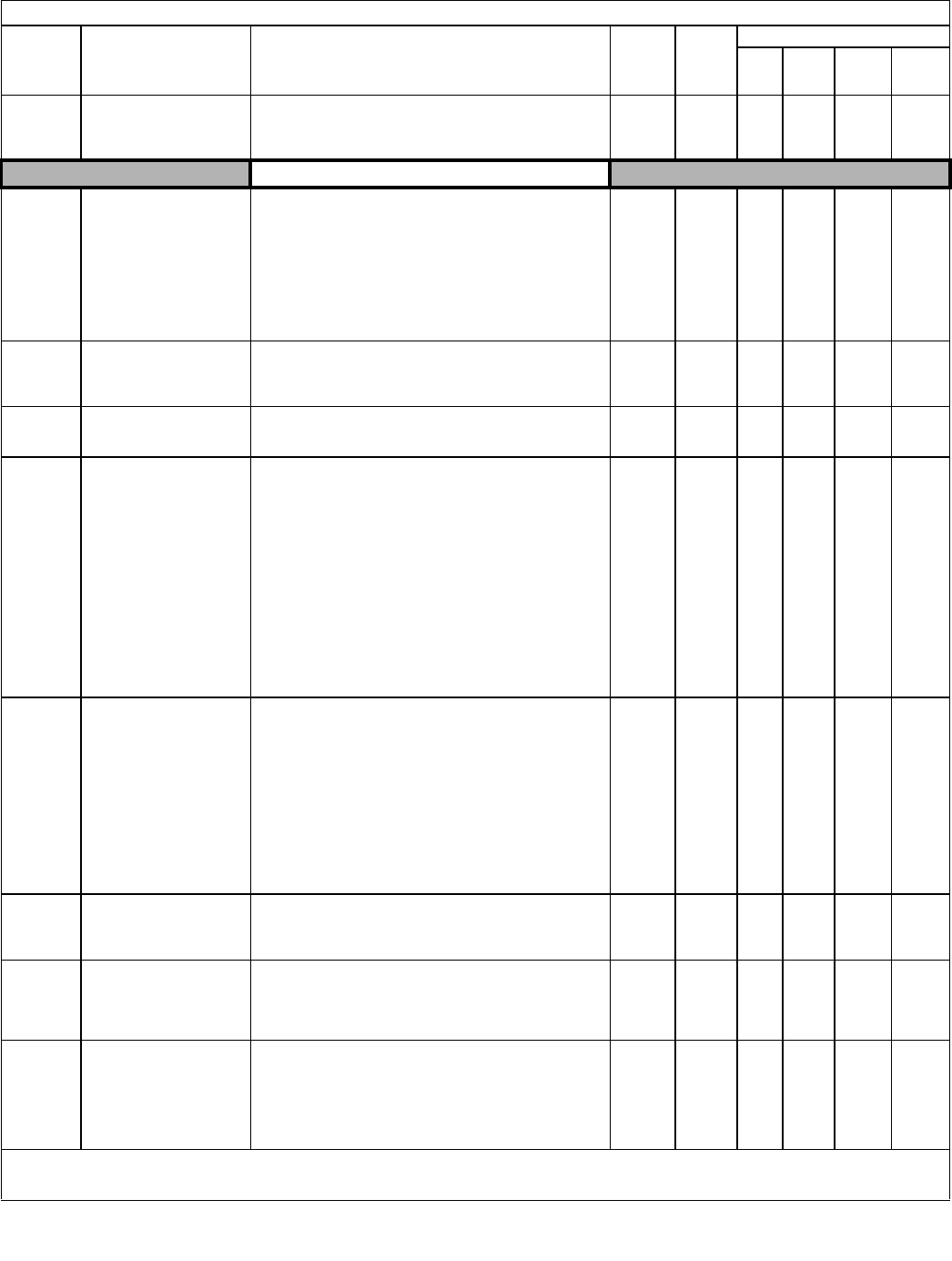
Parameters A - 31
L2-08 Frequency Reduction Gain at
KEB Start
KEB Frequency
Sets the percentage of output frequency reduction at the beginning
of deceleration when a KEB command is input from multi-function
input.
Reduction = slip frequency before KEB operation × L2-08 × 2
0 to 300 100% A A A A
Stall Prevention
L3-01 Stall Prevention Selection
During Accel
StallP Accel Sel
Selects the stall prevention method used to prevent excessive
current during acceleration.
0: Disabled - Motor accelerates at active acceleration rate. The
motor may stall if load is too heavy or accel time is too short.
1: General Purpose - When output current exceeds L3-02 level,
acceleration stops. Acceleration will continue when the output
current level falls below the L3-02 level.
2: Intelligent - The active acceleration rate is ignored. Acceleration
is completed in the shortest amount of time without exceeding
the current value set in L3-02.
0 to 2 1 A A A -
L3-02 Stall Prevention Level
During Acceleration
StallP Accel Lvl
This function is enabled when L3-01 is “1” or “2”.
Drive rated current is 100%. Decrease the set value if stalling or
excessive current occurs with factory setting. 0 to 200
Varies
by
Duty
Rating*
AA A -
L3-03 Stall Prevention Limit During
Acceleration
StallP CHP Lvl
Sets the lower limit for stall prevention during acceleration, as a
percentage of the Drive’s rated current, when operation is in the fre-
quency range above E1-06 (constant power region). 0 to 100 50% A A A -
L3-04 Stall Prevention Selection
During Deceleration
StallP Decel Sel
When using a braking resistor, use setting “0”. Setting “3” is used in
specific applications.
0: Disabled - The Drive decelerates at the active deceleration rate. If
the load is too large or the deceleration time is too short, an OV
fault may occur.
1: General Purpose - The Drive decelerates at the active
deceleration rate, but if the main circuit DC bus voltage reaches
the stall prevention level (380/760Vdc), deceleration will stop.
Deceleration will continue once the DC bus level drops below the
stall prevention level.
2: Intelligent - The active deceleration rate is ignored and the Drive
decelerates as fast as possible w/o hitting OV fault level.
Range: C1-02 / 10.
3: Stall Prevention w/ Braking Resistor - Stall prevention during
deceleration is enabled in coordination with dynamic braking.
(Not available in Flux Vector)
0 to 3 1 Q Q Q Q
L3-05 Stall Prevention Selection
During Running
StallP Run Sel
Selects the stall prevention method to use to prevent Drive faults
during run.
0: Disabled - Drive runs a set frequency. A heavy load may cause
the Drive to trip on an OC or OL fault.
1: Decel Time 1 - In order to avoid stalling during heavy loading,
the Drive will decelerate at Decel time 1 (C1-02) if the output
current exceeds the level set by L3-06. Once the current level
drops below the L3-06 level, the Drive will accelerate back to its
frequency reference at the active acceleration rate.
2: Decel Time 2 - Same as setting 1 except the Drive decelerates at
Decel Time 2 (C1-04).
When output frequency is 6Hz or less, stall prevention during
running is disabled regardless of L3-05 setting.
0 to 2 1 A A - -
L3-06 Stall Prevention Level
During Running
StallP Run Level
This parameter is enabled when L3-05 is set to “1” or “2”.
Drive rated current is set as 100%.
Decrease the set value if stalling or excessive current occurs with
factory setting.
30 to 200
Varies
by
Duty
Rating*
AA - -
L3-11 OV Suppression Function
Selection
OV Inhibit Sel
Enables or disables OV suppression function, which allows the
Drive to change the output frequency as the load changes, to
prevent OV fault.
0: Disabled
1: Enabled
0 to 1 0 - - A A
L3-12 OV Suppression Function
Voltage Level
OV Inhbt VoltLvl
Sets the DC bus voltage level at which the OV suppression
function is active.
350 to
390
(240V)
700 to
780
(480V)
380V
or
760V -- A A
Denotes that parameter can be changed when the Drive is running.
* For Heavy Duty (HD) Rating: Factory Setting=150%.
For Normal Duty (ND) Rating: Factory Setting=120%. The setting value will change automatically if the carrier frequency is set larger than the default setting.
Table A.1 F7 Parameter List (Continued)
Parameter
No. Parameter Name
Digital Operator Display Description Setting
Range Factory
Setting
Control Method
V/F V/F
w/PG
Open
Loop
Vector
Flux
Vector
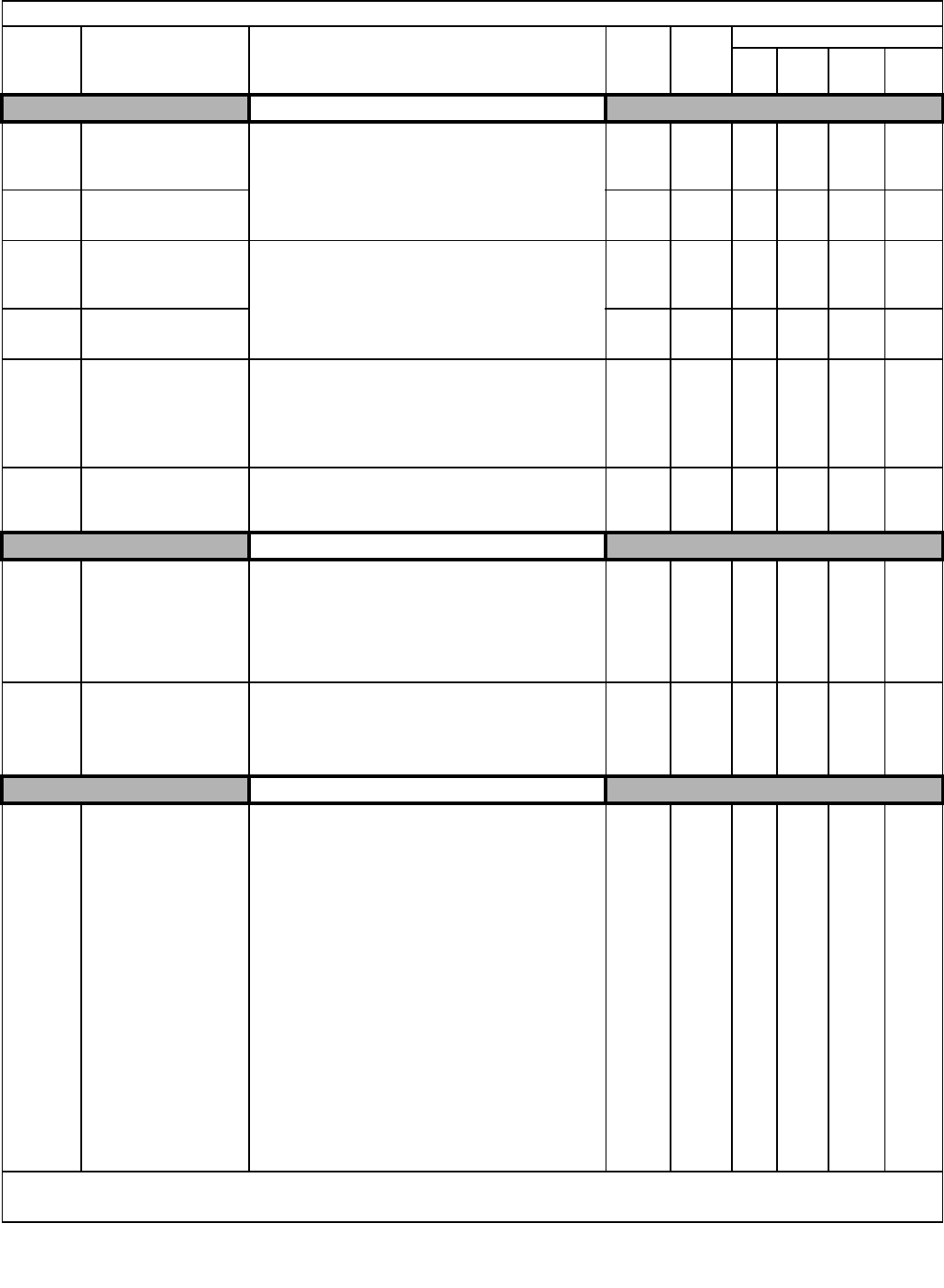
Parameters A - 32
Reference Detection
L4-01 Speed Agreement
Detection Level
Spd Agree Level
These parameters configure the multi-function output (H2-)
settings “Fref/Fout agree 1”, “Fref/Set agree 1”, “Frequency
detection 1,” and “Frequency detection 2". Parameter L4-01 sets the
level while parameter L4-02 sets the hysteresis for the speed detec-
tion output function.
Varies
by
Duty
Rating*1
0.0Hz A A A A
L4-02 Speed Agreement
Detection Width
Spd Agree Width
0.0 to
20.0 2.0Hz A A A A
L4-03 Speed Agreement
Detection Level (+/-)
Spd Agree Lvl +-
These parameters configure the multi-function output (H2-)
settings “Fref/Fout agree 2”, “Fref/Set agree 2”,
“Frequency detection 3,” or “Frequency detection 4". Parameter
L4-03 sets the level while parameter L4-04 sets the hysteresis for
the speed detection output function.
Varies
by
Duty
Rating*2
0.0Hz A A A A
L4-04 Speed Agreement
Detection Width (+/-)
Spd Agree Wdth +-
0.0 to
20.0 2.0Hz A A A A
L4-05 Frequency Reference Loss
Detection Selection
Ref Loss Sel
Determines how the Drive will react when the frequency reference
is lost. The frequency reference is considered lost when reference
drops 90% or more of its current value in less than 400ms.
0: Stop - Drive will stop.
1: Run at L4-06 PrevRef - Drive will run at the percentage set in
L4-06 of the frequency reference level at the time frequency
reference was lost.
0 to 1 0 A A A A
L4-06 Frequency Reference Level at
Loss Frequency
Fref at Floss
If the frequency reference loss function is enabled (L4-05=1) and
frequency reference is lost, the Drive will run at a reduced
frequency reference determined by the following formula:
Fref = Fref at time of loss * L4-06.
0 to 100.0 80.0% A A A A
Fault Restart
L5-01 Number of Auto Restart
Attempts
Num of Restarts
Sets the counter for the number of times the Drive will perform an
automatic restart on the following faults: GF, LF, OC, OV, PF, PUF,
RH, RR, OL1, OL2, OL3, OL4, UV1. Auto restart will check to see
if the fault has cleared every 5ms. When no fault is present, the
Drive will attempt an auto restart. If the Drive faults after an auto
restart attempt, the counter is incremented. When the Drive
operates without fault for 10 minutes, the counter will reset to the
value set in L5-01.
0 to 10 0 A A A A
L5-02 Auto Restart Operation Selec-
tion
Restart Sel
Determines if the fault contact activates during an automatic restart
attempt.
0: No Fault Relay - fault contact will not activate during an
automatic restart attempt.
1: Fault Relay Active - fault contact will activate during an
automatic restart attempt.
0 to 1 0 A A A A
Torque Detection
L6-01 Torque Detection
Selection 1
Torq Det 1 Sel
Determines the Drive's response to an Overtorque/Undertorque
condition. Overtorque and Undertorque are determined by the
settings in parameters L6-02 and L6-03. The multi-function output
settings “B” and “17” in the H2- parameter group are also
active if programmed.
0: Disabled
1: OL3 at Speed Agree - Alarm (Overtorque Detection only active
during Speed Agree and Operation continues after detection).
2: OL3 at RUN - Alarm (Overtorque Detection is always active and
operation continues after detection).
3: OL3 at Speed Agree - Fault (Overtorque Detection only active
during Speed Agree and Drive output will shut down on an OL3
fault).
4: OL3 at RUN - Fault (Overtorque Detection is always active and
Drive output will shut down on an OL3 fault).
5: UL3 at Speed Agree - Alarm (Undertorque Detection is only
active during Speed Agree and operation continues after
detection).
6: UL3 at RUN - Alarm (Undertorque Detection is always active
and operation continues after detection).
7: UL3 at Speed Agree - Fault (Undertorque Detection only active
during Speed Agree and Drive output will shut down on an OL3
fault).
8: UL3 at RUN - Fault (Undertorque Detection is always active and
Drive output will shut down on an OL3 fault).
0 to 8 0 A A A A
Denotes that parameter can be changed when the Drive is running.
*1 For Heavy Duty (HD) Rating: Setting Range=0.0 to 300.0. For Normal Duty (ND) Rating: Setting Range=0.0 to 400.0.
*2 For Heavy Duty (HD) Rating: Setting Range= -300.0 to 300.0. For Normal Duty (ND) Rating: Setting Range= -400.0 to 400.0.
Table A.1 F7 Parameter List (Continued)
Parameter
No. Parameter Name
Digital Operator Display Description Setting
Range Factory
Setting
Control Method
V/F V/F
w/PG
Open
Loop
Vector
Flux
Vector
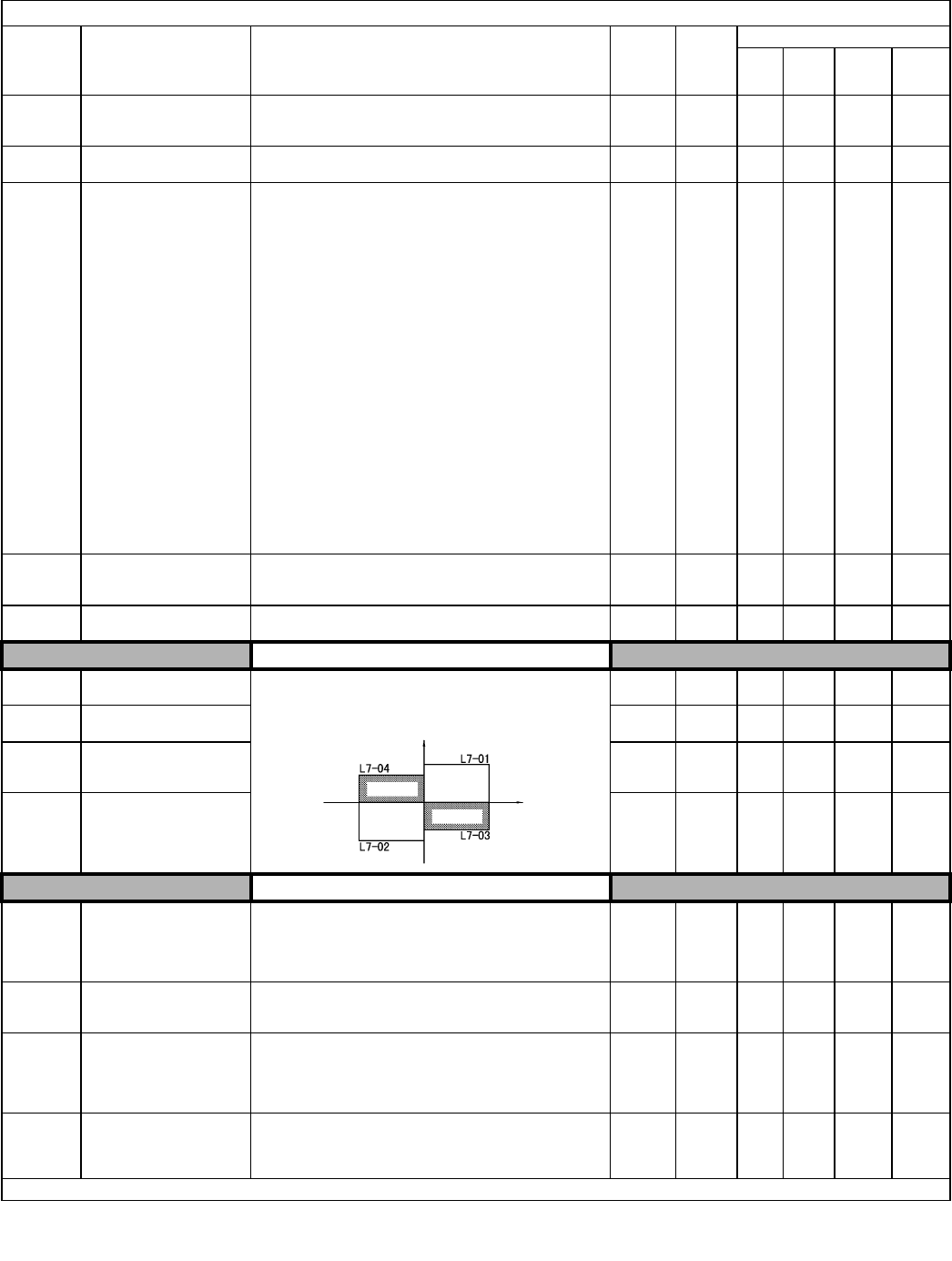
Parameters A - 33
L6-02 Torque Detection Level 1
Torq Det 1 Lvl
Sets the Overtorque/Undertorque detection level as a percentage of
Drive rated current or torque for torque detection 1. Current
detection for A1-02 = 0 or 1. Torque detection for A1-02 = 2 or 3. 0 to 300 150% A A A A
L6-03 Torque Detection Time 1
Torq Det 1 Time Sets the length of time an Overtorque/Undertorque condition must
exist before torque detection 1 recognized by the Drive. 0.0 to
10.0 0.1sec A A A A
L6-04 Torque Detection
Selection 2
Torq Det 2 Sel
Determines the Drive's response to an Overtorque/Undertorque
condition. Overtorque and Undertorque are determined by the
settings in parameters L6-05 and L6-06. The multi-function output
settings “18” and “19” in the H2- parameter group are also
active if programmed.
0: Disabled
1: OL4 at Speed Agree - Alarm (Overtorque Detection only active
during Speed Agree and Operation continues after detection).
2: OL4 at RUN - Alarm (Overtorque Detection is always active and
operation continues after detection).
3: OL4 at Speed Agree - Fault (Overtorque Detection only active
during Speed Agree and Drive output will shut down on an OL4
fault).
4: OL4 at RUN - Fault (Overtorque Detection is always active and
Drive output will shut down on an OL4 fault).
5: UL4 at Speed Agree - Alarm (Undertorque Detection is only
active during Speed Agree and operation continues after
detection).
6: UL4 at RUN - Alarm (Undertorque Detection is always active
and operation continues after detection).
7: UL4 at Speed Agree - Fault (Undertorque Detection only active
during Speed Agree and Drive output will shut down on an OL4
fault).
8: UL4 at RUN - Fault (Undertorque Detection is always active and
Drive output will shut down on an OL4 fault).
0 to 8 0 A A A A
L6-05 Torque Detection Level 2
Torq Det 2 Lvl
Sets the Overtorque/Undertorque detection level as a percentage of
Drive rated current or torque for torque detection 2. Current
detection for A1-02 = 0 or 1. Torque detection for A1-02 = 2 or 3. 0 to 300 150% A A A A
L6-06 Torque Detection Time 2
Torq Det 2 Time Sets the length of time an Overtorque/Undertorque condition must
exist before torque detection 2 is recognized by the Drive. 0.0 to
10.0 0.1sec A A A A
Torque Limit
L7-01 Forward Torque Limit
Torq Limit Fwd Sets the torque limit value as a percentage of the motor rated torque.
Four individual quadrants can be set. 0 to 300 200% - - A A
L7-02 Reverse Torque Limit
Torq Limit Rev 0 to 300 200% - - A A
L7-03 Forward Regenerative Torque
Limit
Torq Lmt Fwd Rgn 0 to 300 200% - - A A
L7-04 Reverse Regenerative Torque
Limit
Torq Lmt Rev Rgn 0 to 300 200% - - A A
Hardware Protection
L8-01
Internal Dynamic Braking
Resistor Protection
Selection
DB Resistor Prot
Selects the DB protection only when using 3% duty cycle heatsink
mount Yaskawa braking resistor. This parameter does not enable or
disable the DB function of the Drive.
0: Not Provided
1: Provided
0 to 1 0 A A A A
L8-02 Overheat Alarm Level
OH Pre-Alarm Lvl When the cooling fin temperature exceeds the value set in this
parameter, an overheat alarm (OH) will occur. 50 to
130
Va ri es
by
kVA AA A A
L8-03 Overheat Pre-Alarm
Operation Selection
OH Pre-Alarm Sel
Selects the Drive operation upon an OH pre-alarm detection.
0: Ramp to Stop
1: Coast to Stop
2: Fast-Stop
3: Alarm Only
0 to 3 3 A A A A
L8-05 Input Phase Loss
Protection Selection
Ph Loss In Sel
Selects the detection of input current phase loss, power supply volt-
age imbalance, or main circuit electrostatic capacitor deterioration.
0: Disabled
1: Enabled
0 to 1 1 A A A A
Denotes that parameter can be changed when the Drive is running.
Table A.1 F7 Parameter List (Continued)
Parameter
No. Parameter Name
Digital Operator Display Description Setting
Range Factory
Setting
Control Method
V/F V/F
w/PG
Open
Loop
Vector
Flux
Vector
Output torque
Positive torque
Reverse
Negative torque
No. of
motor
rotations
Regen. state
Regen. state Forward
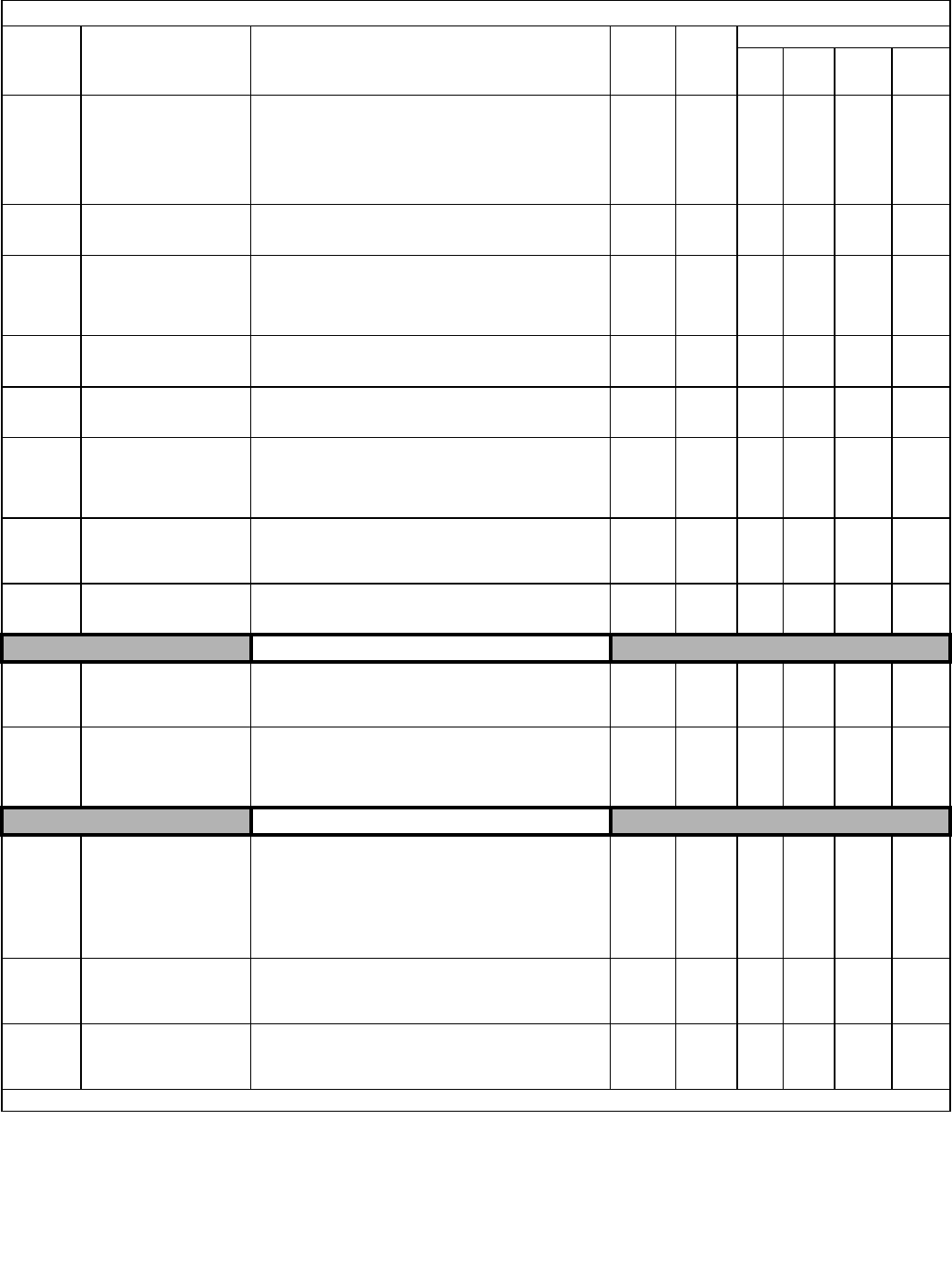
Parameters A - 34
L8-07 Output Phase Loss
Protection
Ph Loss Out Sel
Selects the detection of output current open-phase.
When applied motor capacity is too small for Drive capacity,
output phase loss may be detected inadvertently. In this case, set to
0.
0: Disabled
1: 1-phase Loss Detection
2: 2/3-phase Loss Detection
0 to 1 1 A A A A
L8-09 Output Ground Fault
Detection Selection
Ground Fault Sel
Enables and disables the Drive’s output ground fault detection.
0: Disabled
1: Enabled 0 to 1 1 A A A A
L8-10 Heatsink Cooling Fan
Operation Selection
Fan On/Off Sel
Controls the heatsink cooling fan operation.
0: Fan On-Run Mode - Fan will operate only when the Drive is
running and for L8-11 seconds after RUN is removed.
1: Fan Always On - Cooling fan operates whenever the Drive is
powered up.)
0 to 1 0 A A A A
L8-11 Heatsink Cooling Fan
Operation Delay Time
Fan Delay Time
This parameter sets the delay time for the cooling fan turn off after
the run command is removed when L8-10 = 0. 0 to 300 60sec A A A A
L8-12 Ambient Temperature
Setting
Ambient Temp
When the Drive is installed in an ambient temperature exceeding its
rating, the Drive overload (OL2) protection level is adjusted. 45 to 60 45°C A A A A
L8-15 OL2 Characteristic
Selection at Low Speeds
OL2 Sel @ L-Spd
This parameter assists in protecting the output transistors from
overheating when output current is high and output frequency is
low (6Hz and less).
0: Disabled
1: Enabled (L8-18 is active)
0 to 1 0 A A A A
L8-18 Soft CLA Selection
Soft CLA Sel
Enables and disables the software current limit function. Consult
the factory before disabling.
0: Disabled
1: Enabled
0 to 1 1 A A A A
L8-32
<3021>
Cooling Fan OH1
Detection
OH1 Detect Sel
0: Disabled (FAN minor fault detection)
1: Enabled (OH1 major fault detection) 0, 1 1 A A A A
Hunting Prevention
n1-01 Hunting Prevention
Selection
Hunt Prev Select
If the motor vibrates while lightly loaded, hunting
prevention may reduce the vibration.
0: Disabled
1: Enabled
0 to 1 1 A A - -
n1-02 Hunting Prevention Gain
Setting
Hunt Prev Gain
Sets the gain for the Hunting Prevention Function.
If the motor vibrates while lightly loaded and n1-01=1, increase the
gain by 0.1 until vibration ceases.
If the motor stalls while n1-01=1, decrease the gain by 0.1 until the
stalling ceases.
0.00 to
2.50 1.00 A A - -
AFR Tuning
n2-01
Speed Feedback
Detection Control
(AFR) Gain
AFR Gain
Sets the internal speed feedback detection control gain in the
automatic frequency regulator (AFR).
Normally, there is no need to change this setting.
Adjust this parameter as follows:
• If hunting occurs, increase the set value.
• If response is low, decrease the set value.
Adjust the setting by 0.05 units at a time, while checking the
response.
0.00 to
10.00 1.00 - - A -
n2-02
Speed Feedback
Detection Control (AFR)
Time Constant
AFR Time
Sets the time constant to control the rate of change in the speed
feedback detection control. 0 to 2000 50ms - - A -
n2-03
Speed Feedback
Detection Control (AFR)
Time Constant 2
AFR Time 2
Sets the time constant to control the amount of change in the speed
at low speed. 0 to 2000 750ms - - A -
Denotes that parameter can be changed when the Drive is running.
Table A.1 F7 Parameter List (Continued)
Parameter
No. Parameter Name
Digital Operator Display Description Setting
Range Factory
Setting
Control Method
V/F V/F
w/PG
Open
Loop
Vector
Flux
Vector
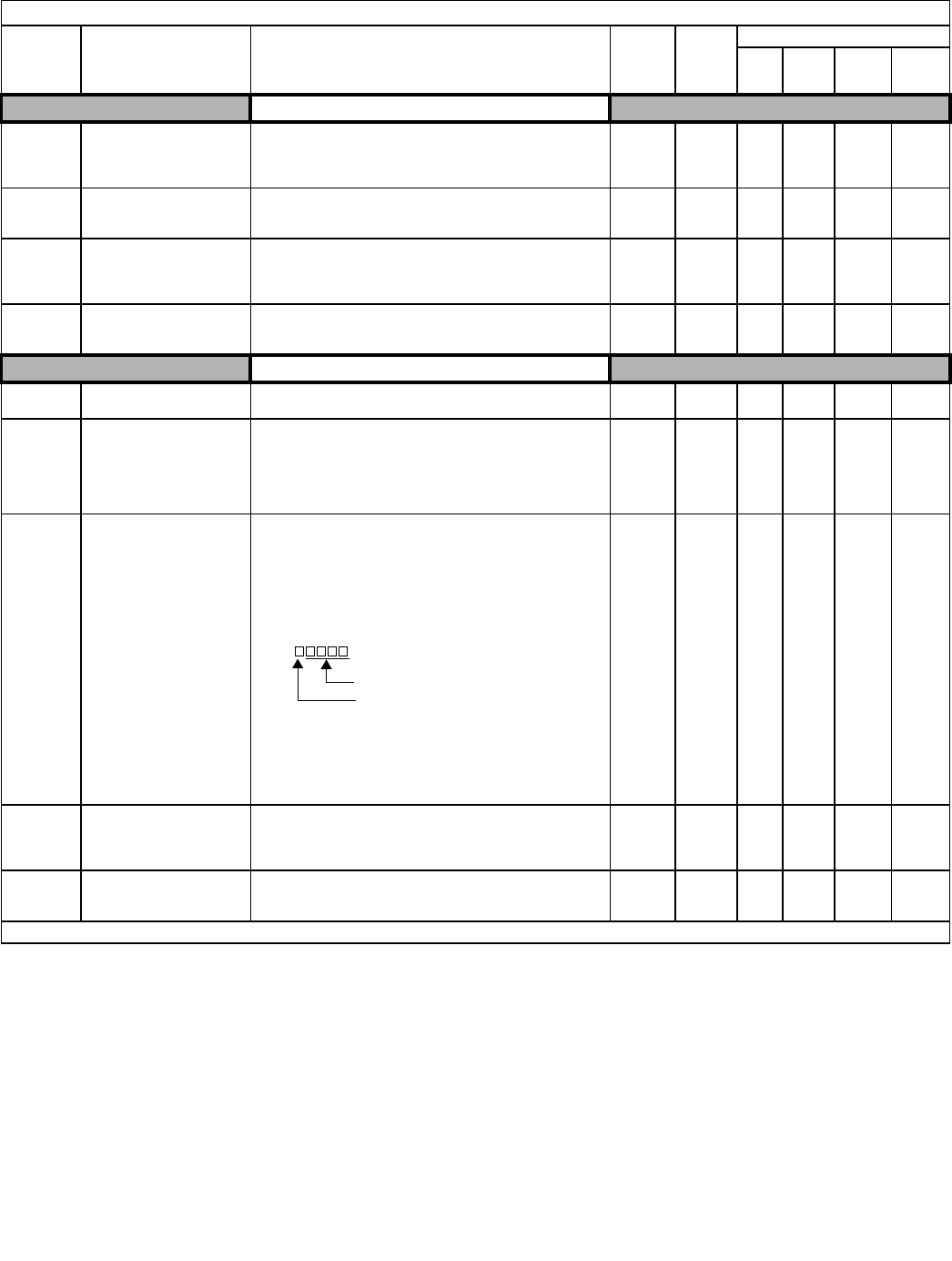
Parameters A - 35
High Slip Braking
n3-01
High Slip Braking
Deceleration Frequency
Width
HSB Decel Width
Sets how aggressively the Drive decreases the output frequency as
it stops the motor using high slip braking (HSB). If Overvoltage
(OV) faults occur during HSB, this parameter may need to be
increased.
1 to 20 5% A A - -
n3-02 High Slip Braking
Current Limit
HSB Current Ref
Sets the maximum current to be drawn during an HSB stop. Higher
n3-02 settings will shorten motor stopping times but cause
increased motor current, and therefore increased motor heating.
100 to
200 150% A A - -
n3-03 High Slip Braking Dwell
Time at Stop
HSB DwelTim@ Stp
Sets the amount of time the Drive will dwell at E1-09 (Minimum
Frequency) at the end of deceleration. If this time is set too low, the
machine inertia can cause the motor to rotate slightly after the HSB
stop is complete and the Drive output is shut off.
0.0 to
10.0 1.0sec A A - -
n3-04 High Slip Braking
Overload Time
HSB OL Time
Sets the time required for an HSB overload fault (OL7) to occur
when the Drive output frequency does not change for some reason
during an HSB stop. Normally this does not need to be adjusted.
30 to
1200 40sec A A - -
Monitor Select
o1-01
User Monitor Selection
User Monitor Sel Selects which monitor will be displayed in the operation menu upon
power-up when o1-02 = 4. 4 to 45 6 A A A A
o1-02 User Monitor Selection After
Power-Up
Power-On Monitor
Selects which monitor will be displayed upon
power-up.
1: Frequency Reference (U1-01)
2: Output Frequency (U1-02)
3: Output Current (U1-03)
4: User Monitor (set by o1-01)
1 to 4 1 A A A A
o1-03 Digital Operator Display
Selection
Display Scaling
0 to
39999 0AAA A
o1-04
Setting unit for frequency
parameters related to V/F
characteristics
Display Units
Sets the setting units related to V/F pattern frequency related
parameters (E1-04, -06, -09, -11)
0: Hertz
1: RPM
0 to 1 0 - - - A
o1-05 LCD Brightness
Adjustment
LCD Contrast
Sets the contrast of the Digital Operator LCD. A setting of “1” is the
lightest contrast and a setting of “5” is the darkest contrast. 0 to 5 3 A A A A
Denotes that parameter can be changed when the Drive is running.
Table A.1 F7 Parameter List (Continued)
Parameter
No. Parameter Name
Digital Operator Display Description Setting
Range Factory
Setting
Control Method
V/F V/F
w/PG
Open
Loop
Vector
Flux
Vector
Sets the units of the Frequency References (d1-01 to
d1-17), the Frequency Reference Monitors (U1-01,
U1-02, U1-05), and the Modbus communication
frequency reference.
0: Hz
1: % (100% = E1-04)
2 to 39: RPM (Enter the number of motor poles).
40 to 39999: User display.
Set the number desired at maximum
output frequency.
4 digit number
Number of digits from the right of the
decimal point
Example 1: o1-03 = 12000, will result in frequency
reference from 0.0 to 200.0 (200.0 = Fmax).
Example 2: o1-03 = 21234, will result in frequency
reference from 0.00 to 12.34 (12.34 = Fmax).
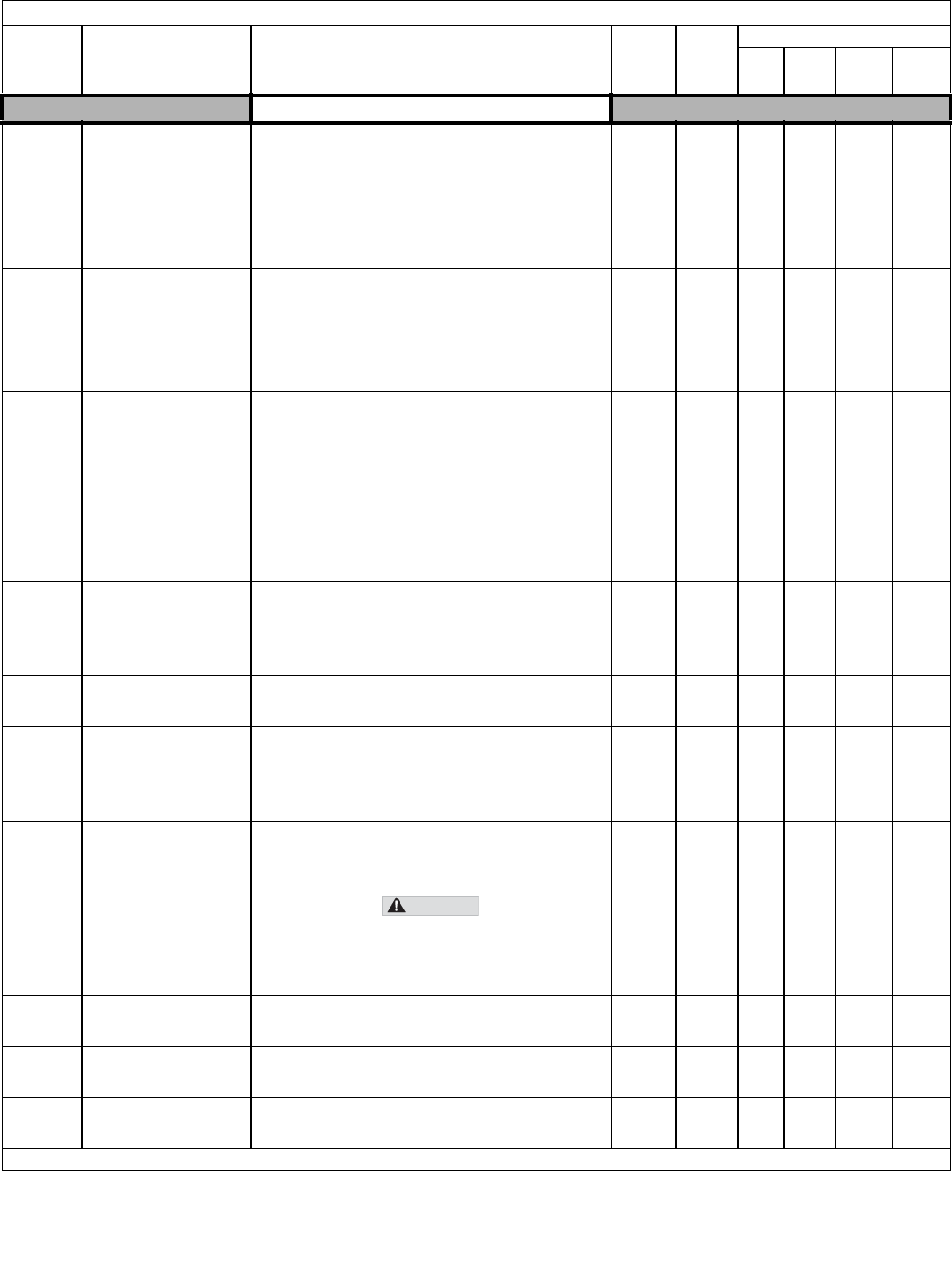
Parameters A - 36
Key Selections
o2-01
Local/Remote Key
Function
Selection
Local/Remote Key
Determines if the Digital Operator Local/Remote key is
functional.
0: Disabled
1: Enabled
0 to 1 1 A A A A
o2-02 STOP Key Function
Selection
Oper STOP Key
Determines if the STOP key on the Digital Operator will stop the
Drive when Drive is operating from external terminals or serial
communication.
0: Disabled
1: Enabled
0 to 1 1 A A A A
o2-03 User Parameter Default Value
User Defaults
Allows storing of parameter settings as a User Initialization
Selection.
0: No Change
1: Set Defaults - Saves current parameter settings as user
initialization. A1-03 now allows selecting <1110> for user
initialization and returns o2-03 to zero.
2: Clear All - Clears the currently saved user initialization. A1-03
no longer allows selecting <1110> and returns o2-03 to zero.
0 to 2 0 A A A A
o2-04 Drive/kVA Selection
Inverter Model #
Sets the kVA of the Drive. Enter the number based on Drive model
number. Use the last four digits of the model number.
CIMR-F7U.
This parameter only needs to be set when installing a new control
board. Do not change for any other reason. Refer to Table B.1.
0 to FF Va ri e s
by
kVA AA A A
o2-05 Frequency Reference
Setting Method Selection
Operator M.O.P.
Determines if the Data/Enter key must be used to input a frequency
reference from the Digital Operator.
0: Disabled - Data/Enter key must be pressed to enter a frequency
reference.
1: Enabled - Data/Enter key is not required. The frequency
reference is adjusted by the up and down arrow keys on the
Digital Operator without having to press the data/enter key.
0 to 1 0 A A A A
o2-06
Operation Selection when
Digital Operator is
Disconnected
Oper Detection
Determines if the Drive will stop when the Digital Operator is
removed when in LOCAL mode or b1-02=0.
0: Disabled - The Drive will not stop when the Digital Operator is
removed.
1: Enabled - The Drive will fault (OPR) and coast to stop when the
Digital Operator is removed.
0 to 1 1 A A A A
o2-07 Cumulative Operation Time
Setting
Elapsed Time Set Sets the initial value of the elapsed operation timer U1-13. 0 to
65535 0H A A A A
o2-08 Cumulative Operation Time
Selection
Elapsed Time Run
Sets how time is accumulated for the elapsed operation timer
U1-13.
0: Power-On Time - Time accumulates when the Drive is
powered.
1: Running Time - Time accumulates only when the Drive is
running.
0 to 1 0 A A A A
o2-09 Initialization Specification
Selection
Init Mode Sel
Determines parameter default values after a Drive initialization
(A1-03) is executed. This should always be set to "1" for North
American installations.
1: American spec
Possible damage to equipment or injury may occur if this setting is
changed from “1: American Spec.” O2-09 is a macro parameter that
can change the default values of terminal I/O and many other
parameters in the drive. Consult the Yaskawa factory for details if
adjustment is required.
11AAAA
o2-10 Cumulative Cooling Fan
Operation Time Setting
Fan ON Time Set
Sets the initial value of the heatsink fan operation time monitor
U1-40. 0 to
65535 0H A A A A
o2-12 Fault Trace/Fault History
Clear Function
FLT Trace Init
Clears the fault memory contained in the U2 and U3 monitors.
0: Disabled - no effect
1: Enabled - resets U2 and U3 monitors, and returns o2-12 to zero. 0 to 1 0 A A A A
o2-14 kWh User Monitor
Initialization
kWH MonitorClear
Used to reset the kilowatt-hour monitor U1-29 to zero.
0: Disabled - no change
1: Enabled - Resets U1-29 to zero and returns o2-14 to zero. 0 to 1 0 A A A A
Denotes that parameter can be changed when the Drive is running.
Table A.1 F7 Parameter List (Continued)
Parameter
No. Parameter Name
Digital Operator Display Description Setting
Range Factory
Setting
Control Method
V/F V/F
w/PG
Open
Loop
Vector
Flux
Vector
WARNING
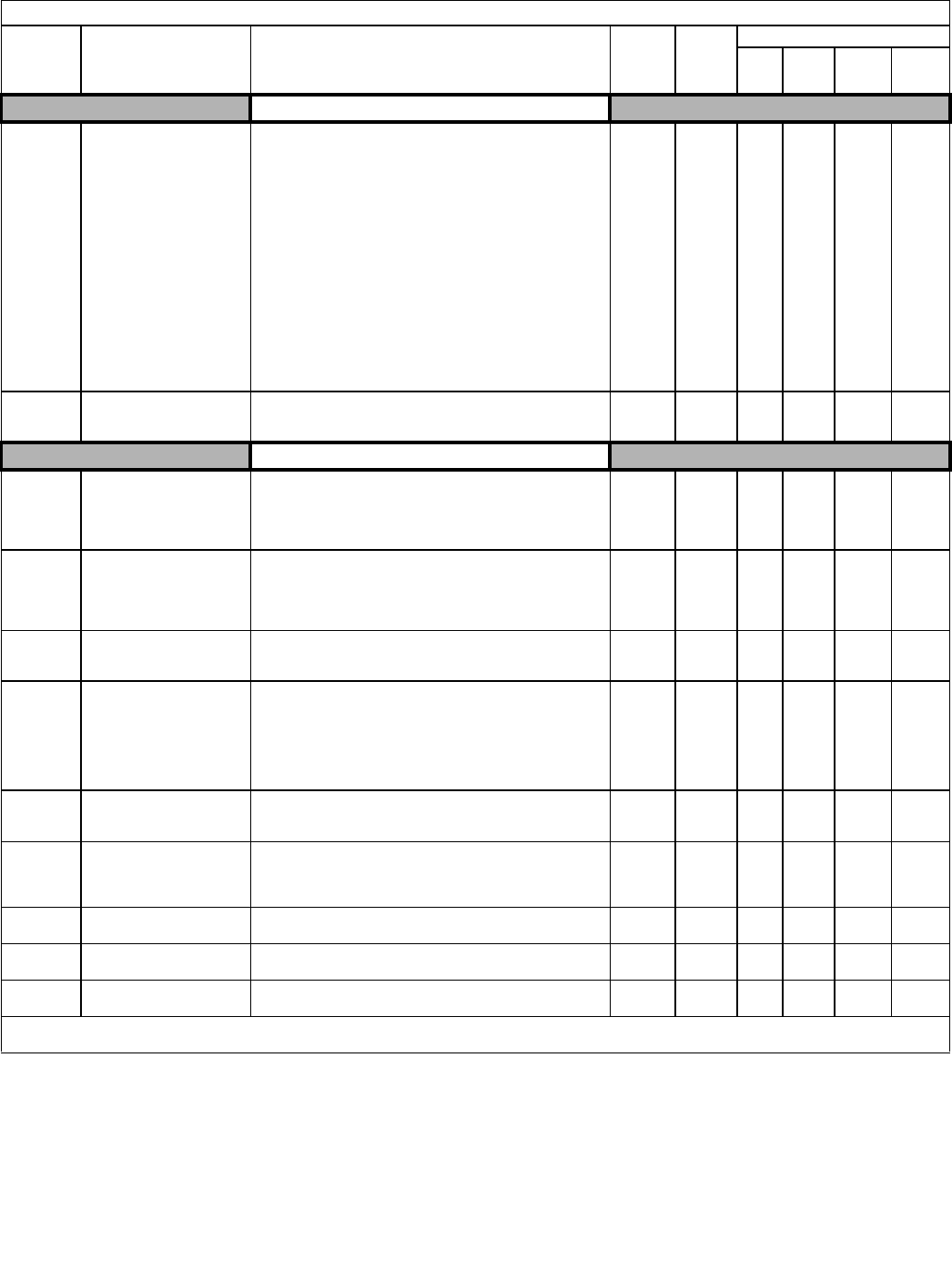
Parameters A - 37
COPY Function
o3-01 Copy Function Selection
Copy Function Sel
This parameter controls the copying of parameters to and from the
Digital Operator.
0: COPY SELECT (no function)
1: INV -> OP READ - All parameters are copied from the
Drive to the Digital Operator.
2: OP -> INV WRITE - All parameters are copied from the
Digital Operator to the Drive.
3: OP<-->INV VERIFY - Parameter settings in the Drive are
compared to those in the Digital Oper-
ator.
NOTE: When using the copy function, the Drive model number
(o2-04), software number (U1-14), and control method
(A1-02) must match or an error will occur.
0 to 3 0 A A A A
o3-02 Copy Allowed Selection
Read Allowable
Enables and disables the Digital Operator copy functions.
0: Disabled - No Digital Operator copy functions are allowed.
1: Enabled - Copying allowed. 0 to 1 0 A A A A
Auto-Tuning
T1-00 Motor Selection 1 / 2
Select Motor
Selects which set of motor parameters are to be used and set during
Auto-Tuning. If Motor 2 selection (H1-XX=16) is not selected, this
parameter will not be displayed.
1: 1st Motor - E1 to E2
2: 2nd Motor - E3 to E4
1, 2 1 A A A A
T1-01 Auto-Tuning mode selection
Tuning Mode Sel
Selects the Auto-Tuning mode.
0: Rotational Auto-Tuning (A1-02 = 2 or 3)
1: Stationary Auto-Tuning (A1-02 = 2 or 3)
2: Terminal resistance only, (stationary) Auto-Tuning
(A1-02 = 0, 1, 2, or 3)
0 to 2 0 A A A A
T1-02 Motor Rated Power
Mtr Rated Power
Set the motor rated power in kilowatts (kW).
NOTE:If motor power is given in horsepower, power in kW can be
calculated using the following formula: kW = Hp * 0.746
0.00 to
650.00
kW
Va ri es
by
kVA AA A A
T1-03 Motor rated voltage
Rated Voltage Set the motor rated voltage in Volts (V).
0.0 to
255.0
(240V)
0.0 to
510.0
(480V)
230Vac
or
460Vac -- A A
T1-04 Motor Rated Current
Rated Current Set the motor rated current in Amperes (A). Varies by
kVA
Va ri es
by
kVA AA A A
T1-05 Motor Base Frequency
Rated Frequency Set the base frequency of the motor in Hertz (Hz).
Varies
by
Duty
Rating*
60.0Hz - - A A
T1-06 Number of Motor Poles
Number of Poles Set the number of motor poles. 2 to 48 4 poles - - A A
T1-07 Motor Base Speed
Rated Speed Set the base speed of the motor in revolutions per minute (RPM). 0 to
24000 1750
RPM -- A A
T1-08 Number of PG Pulses
PG Pulses / Rev Set the number of pulses per revolution (PPR) for the encoder
(pulse generator) being used without any multiplication factor. 0 to
60000 1024
PPR -- - A
Denotes that parameter can be changed when the Drive is running.
* For Heavy Duty (HD) Rating: Setting Range=0.0 to 300.0. For Normal Duty (ND) Rating: Setting Range=0.0 to 400.0.
Table A.1 F7 Parameter List (Continued)
Parameter
No. Parameter Name
Digital Operator Display Description Setting
Range Factory
Setting
Control Method
V/F V/F
w/PG
Open
Loop
Vector
Flux
Vector
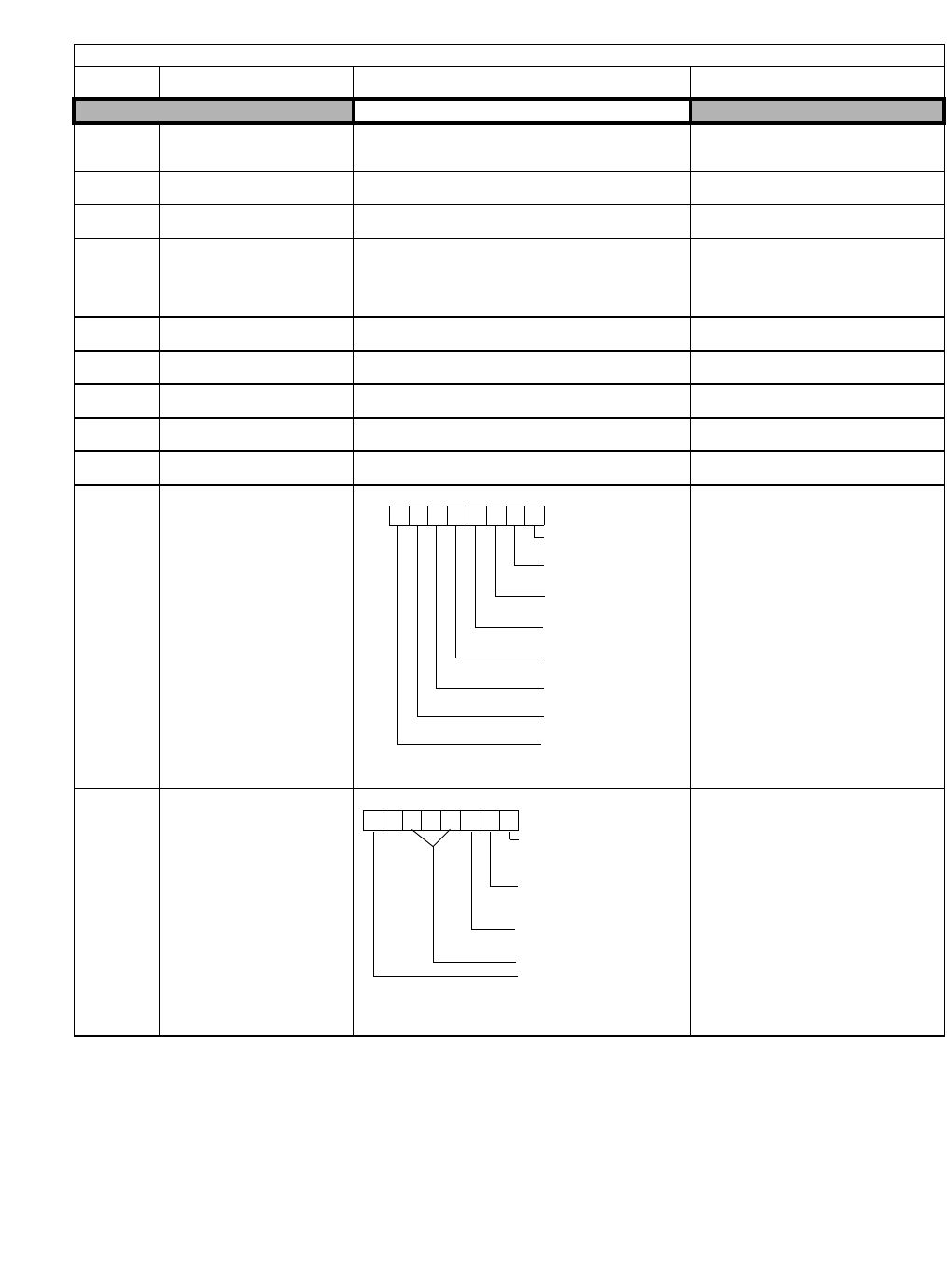
Parameters A - 38
F7 Monitor List
Table A.2 F7 Monitor List
Parameter
No. Parameter Name
Digital Operator Display Description Display Units
Monitor
U1-01 Frequency Reference
Frequency Ref
Frequency reference (speed command) monitor when in
REMOTE mode, frequency reference (speed command)
setting location when in local mode or b1-01 = 0. Set by o1-03.
U1-02 Output Frequency
Output Freq Output frequency Set by o1-03.
U1-03 Output Current
Output Current Output current 0.01A
U1-04 Control Method
Control Method
Control method set in A1-02.
0 = V/F without PG
1 = V/F with PG
2 = Open Loop Vector
3 = Flux Vector
-
U1-05 Motor Speed
Motor Speed Motor speed feedback Set by o1-03.
U1-06 Output Voltage
Output Voltage Output voltage 0.1Vac
U1-07 DC Bus Voltage
DC Bus Voltage DC Bus Voltage 1Vdc
U1-08 Output Power
Output kWatts Output power 0.1kW
U1-09 Torque Reference
Torque Reference Torque reference 0.1%
U1-10 Input Terminal Status
Input Term Sts
Input terminal status
-
U1-11 Output Terminal Status
Output Term Sts
Output terminal status.
-
0
1: FWD. run
(Terminal S1) is ON.
1: REV. run
(Terminal S2) is ON.
1: Multi-function input 1
(Terminal S3) is ON.
1: Multi-function input 2
(Terminal S4) is ON.
1: Multi-function input 3
(Terminal S5) is ON.
1: Multi-function input 4
(Terminal S6) is ON.
1: Multi-function input 5
(Terminal S7) is ON.
1: Multi-function input 6
(Terminal S8) is ON.
0000000
1: Multi-function Output 1
(Terminal M1-M2) is ON.
1: Multi-function Output 2
(Terminal M3-M4) is ON.
1: Multi-function Output 3
(Terminal M5-M6) is ON.
0: Not used
1: Fault output
(Terminal MA-MB-MC) is
ON.
0 0 0 0 0 0 0 0
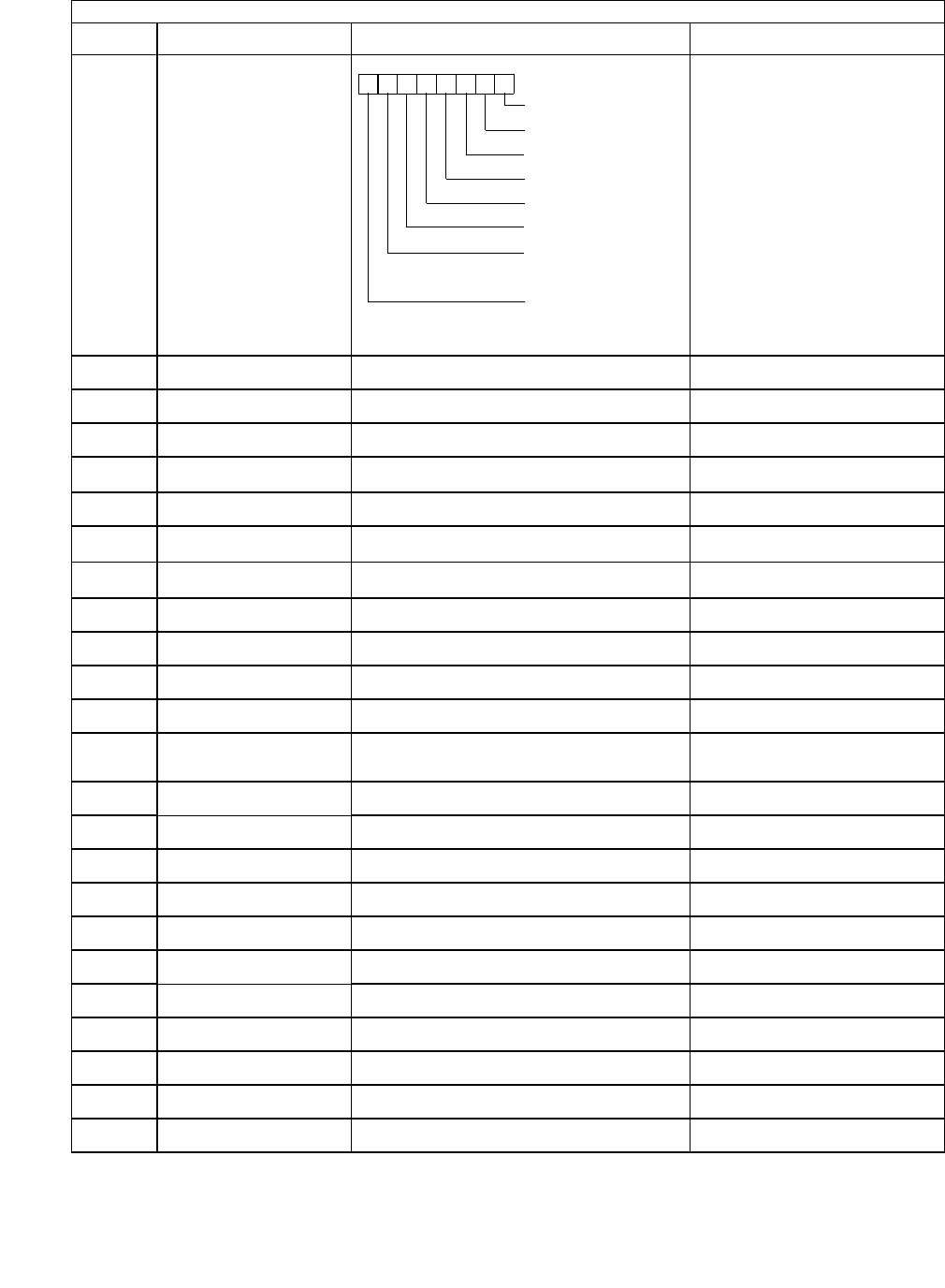
Parameters A - 39
U1-12 Drive Operation Status
Int Ctl Sts 1
Internal Drive status
-
U1-13 Cumulative Operation Time
Elapsed Time Total operating or power-on time of the Drive. 1hr
U1-14 Software Number
FLASH ID Last 5 digits of the Drive's software number. -
U1-15 Terminal A1 Input Voltage
Term A1 Level Input voltage on Terminal A1, as a percentage of ±10Vdc. 0.1%
U1-16 Terminal A2 Input Voltage
Term A2 level Displays the input current (or voltage) on Terminal A2, as a
percentage of ±10Vdc. 0.1%
U1-17 Terminal A3 Input Voltage
Term A3 level Input voltage on Terminal A3, as a percentage of ±10Vdc. 0.1%
U1-18 Motor Secondary Current (Iq)
Mot SEC Current Current being used by the motor to produce torque (Iq). 0.1%
U1-19 Motor Excitation Current (Id)
Mot EXC Current Current being used by the motor for excitation (Id). 0.1%
U1-20 Output Frequency After Soft Start
SFS Output Frequency reference (speed command) after the accel and
decel ramps and S-curve. 0.01Hz
U1-21 ASR Input
ASR Input Input error to the speed control loop (ASR).
The maximum output frequency E1-04 corresponds to 100%. 0.01%
U1-22 ASR Output with Filter
ASR Output w Fil Output from the speed control loop (ASR).
The motor rated secondary current corresponds to 100%. 0.01%
U1-24 PI Feedback Value
PID Feedback Feedback signal level when PID control is used. 0.01%
U1-25 DI-16H2 Input Status
DI-16 Reference
Reference value from a DI-16H2 Digital Reference Card.
The value will be displayed in binary or BCD depending on
user constant F3-01. Set by F3-01
U1-26 Output voltage reference (Vq)
Voltage Ref (Vq) Internal voltage reference for motor secondary current control. 0.1Vac
U1-27 Output voltage reference (Vd)
Voltage Ref (Vd) Internal voltage reference for motor excitation current control. 0.1Vac
U1-28 CPU Number
CPU ID Control board hardware revision. -
U1-29 kWh
kWh Lo 4 Digits Accumulated kilowatt-hours. 0.1kWh
U1-30 MWh
kWh Hi 5 Digits Accumulated megawatt-hours. 1MWh
U1-32 ACR output of q axis
ACR(q) Output Current control output value for the motor secondary current. 0.1%
U1-33 ACR output of d axis
ACR(d) Output Current control output value for the motor excitation current. 0.1%
U1-34 First Parameter Causing an OPE
OPE Detected Parameter number causing an "OPE" fault. -
U1-35 Zero Servo Pulse Count
Zero Servo Pulse Number of PG pulses times 4 for the movement range when
stopped at zero servo. 1 pulse
U1-36 PID Input
PID Input Input error to the PID regulator
(PID Setpoint - PID Feedback). 0.01%
U1-37 PID Output
PID Output Output of the PID regulator as a percentage of maximum
frequency (E1-04). 0.01%
Table A.2 F7 Monitor List (Continued)
Parameter
No. Parameter Name
Digital Operator Display Description Display Units
1: During running
1: During zero speed
1: During reverse
1: During reset signal inpu
t
1: During speed agree
1: Drive operation ready
1: During fault detection
(Minor fault)
1: During fault detection
(Major fault)
0 0 0 0 0 0 0 0
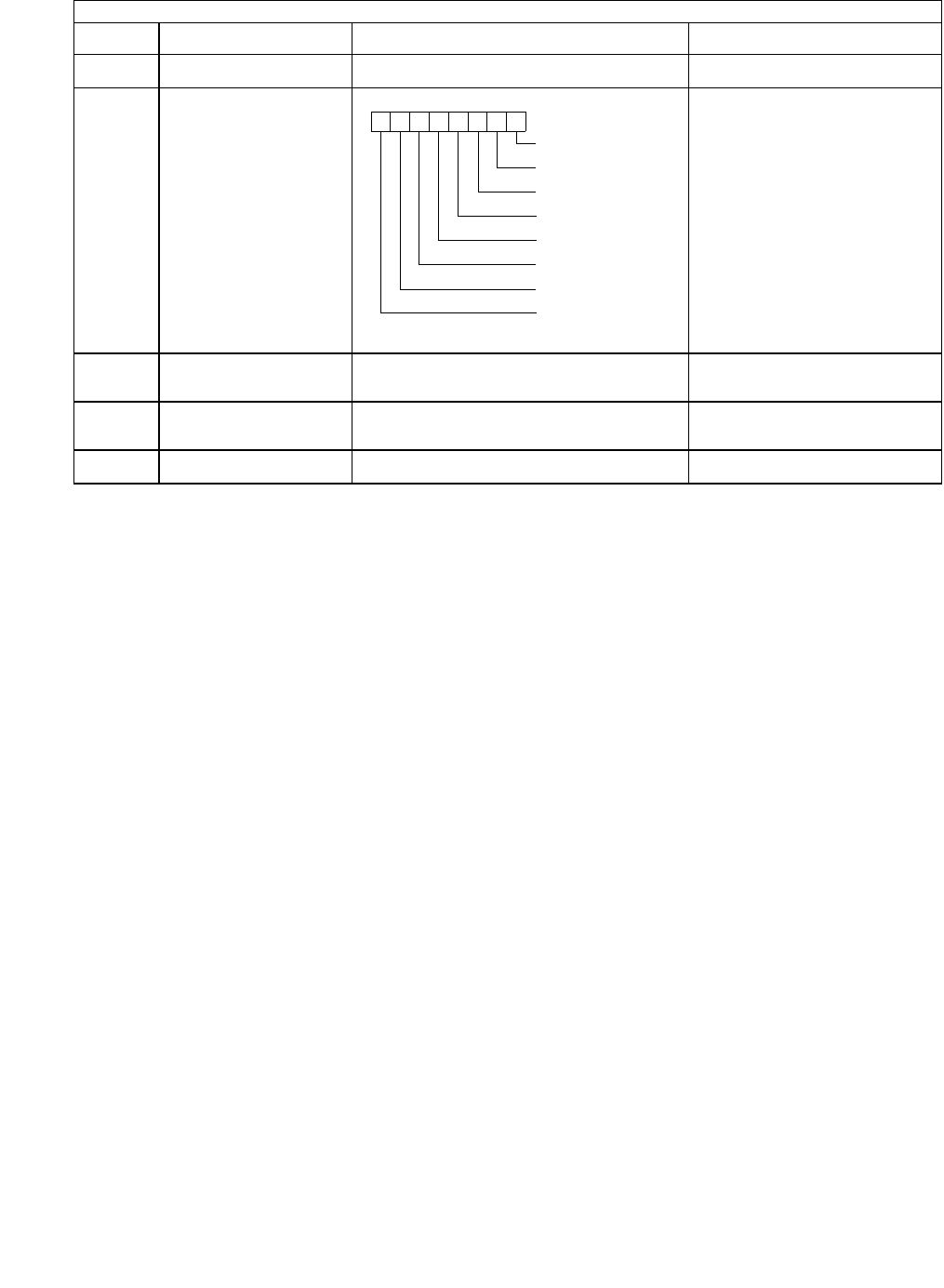
Parameters A - 40
U1-38 PID Setpoint
PID Setpoint Setpoint of the PID regulator (PID reference + PID bias). 0.01%
U1-39 Modbus Communication Error
Code
Transmit Err
Modbus serial communication error codes.
-
U1-40 Heatsink Cooling Fan Operation
Time
FAN Elapsed Time Total operating time of the heatsink cooling fan. 1hr
U1-44 ASR output without filter
ASR out w/o Fil
Output from the speed control loop (ASR) before the ASR
primary delay filter (C5-06). 100% is displayed for rated
secondary current of the motor. 0.01%
U1-45 Feed forward control output
FF Cont Output Output from feed forward control. 100% is displayed for rated
secondary current of the motor. 0.01%
Table A.2 F7 Monitor List (Continued)
Parameter
No. Parameter Name
Digital Operator Display Description Display Units
1: CRC error
1: Data length error
0: Not used. Always 0.
1: Parity error
1: Overrun error
1: Framing error
1: Timeout
0: Not used. Always 0.
00000000
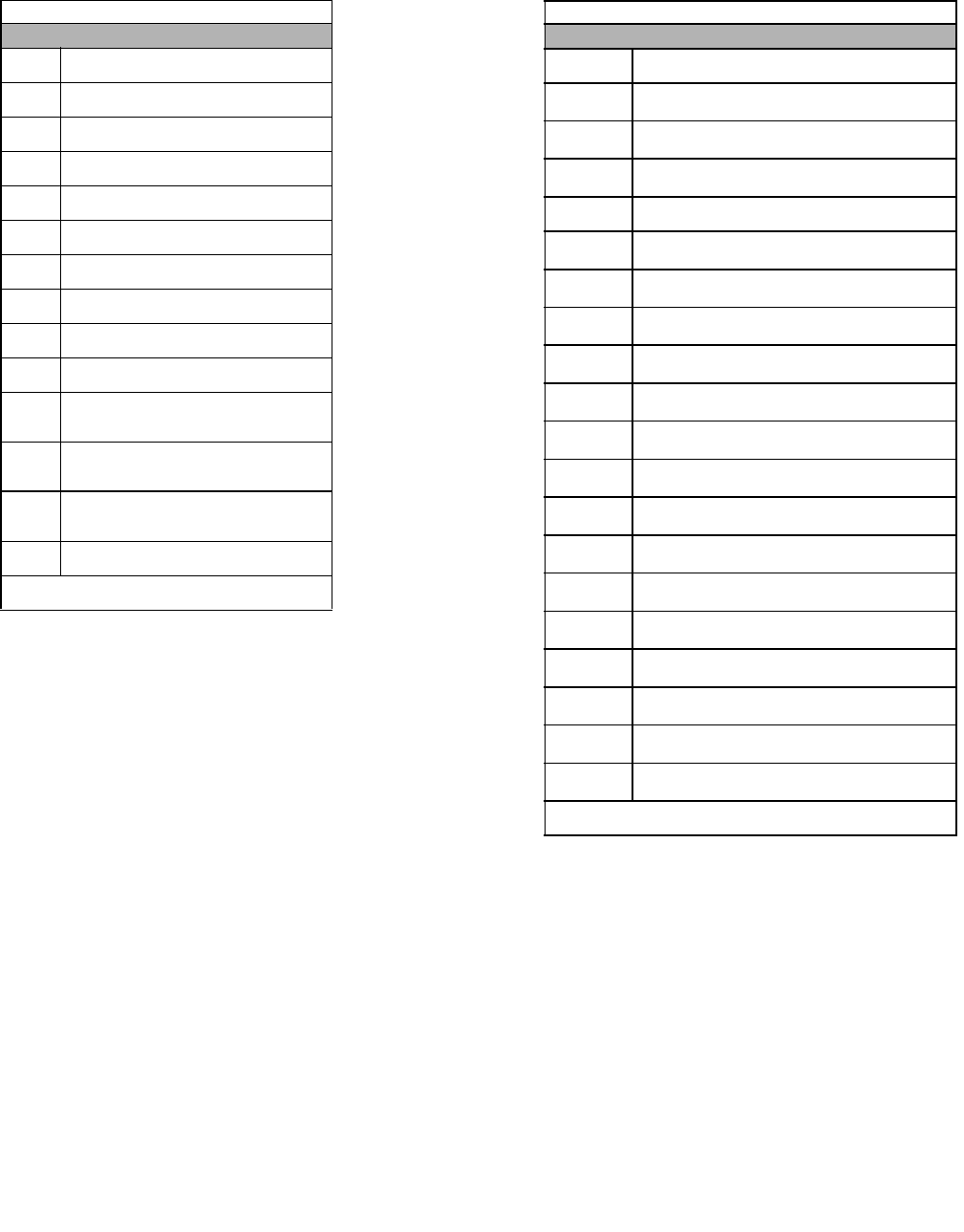
Parameters A - 41
F7 Fault Trace List
Table A.3 F7 Fault Trace List
Fault Trace
U2-01 Current Fault.
Current Fault
U2-02 Previous Fault.
Last Fault
U2-03 Frequency Reference at Previous Fault.
Frequency Ref
U2-04 Output Frequency at Previous Fault.
Output Freq
U2-05 Output Current at Previous Fault.
Output Current
U2-06 Motor Speed at Previous Fault.
Motor Speed
U2-07 Output Voltage at Previous Fault.
Output Voltage
U2-08 DC Bus Voltage at Previous Fault.
DC Bus Voltage
U2-09 Output Power at Previous Fault.
Output kWatts
U2-10 Torque Reference at Previous Fault.
Torque Reference
U2-11 Input Terminal Status at Previous Fault.
The format is the same as for U1-10.
Input Term Sts
U2-12 Output Terminal Status at Previous Fault.
The format is the same as for U1-11.
Output Term Sts
U2-13 Drive Operation Status at Previous Fault.
The format is the same as for U1-12.
Inverter Status
U2-14 Cumulative Operation Time at Previous Fault.
Elapsed time
Note: Fault trace is not executed at CPF00, CPF01,
CPF03, UV1, and UV2.
F7 Fault History List
Table A.4 F7 Fault History List
Fault History
U3-01 Most Recent Fault
Last Fault
U3-02 2nd Most Recent Fault
Fault Message 2
U3-03 3rd Most Recent Fault
Fault Message 3
U3-04 4th Most Recent Fault
Fault Message 4
U3-05 Cumulative Operation Time at Most Recent Fault
Elapsed Time 1
U3-06 Cumulative Operation Time at 2nd Most Recent Fault
Elapsed Time 2
U3-07 Cumulative Operation Time at 3rd Most Recent Fault
Elapsed Time 3
U3-08 Cumulative Operation Time at 4th Most Recent Fault
Elapsed Time 4
U3-09 5th Most Recent Fault
Fault Message 5
U3-10 6th Most Recent Fault
Fault Message 6
U3-11 7th Most Recent Fault
Fault Message 7
U3-12 8th Most Recent Fault
Fault Message 8
U3-13 9th Most Recent Fault
Fault Message 9
U3-14 10th Most Recent Fault
Fault Message 10
U3-15 Cumulative Operation Time at 5th Most Recent Fault
Elapsed Time 5
U3-16 Cumulative Operation Time at 6th Most Recent Fault
Elapsed Time 6
U3-17 Cumulative Operation Time at 7th Most Recent Fault
Elapsed Time 7
U3-18 Cumulative Operation Time at 8th Most Recent Fault
Elapsed Time 8
U3-19 Cumulative Operation Time at 9th Most Recent Fault
Elapsed Time 9
U3-20 Cumulative Operation Time at 10th Most Recent Fault
Elapsed Time 10
Note: Faults such as CPF00, CPF01, CPF02, CPF03, UV1, and UV2 are
not stored in fault history.

Parameters A - 42
Notes:

Capacity Related Parameters B - 1
Appendix B
Capacity Related Parameters
This appendix lists the parameters affected by the Drive Capacity setting of o2-04.
Drive Capacity Selection.....................................................B-2
Parameters Affected by Drive Capacity Setting..................B-3
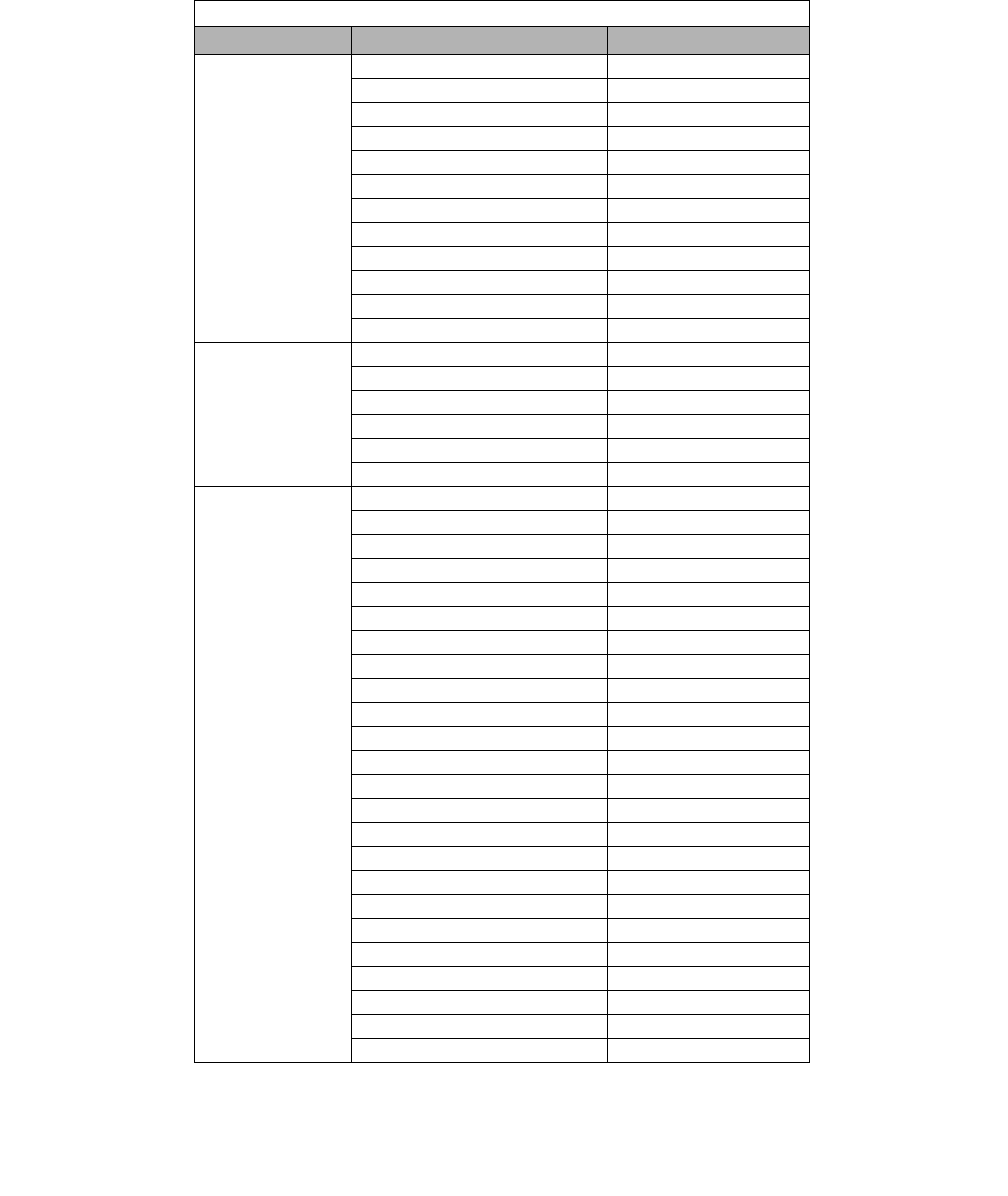
Capacity Related Parameters B - 2
Drive Capacity Selection
Parameter o2-04 sets the Drive capacity according to the model number. Parameter o2-04 needs to be adjusted only when
replacing a control board. Do not change the o2-04 setting for any other reason.
If the Drive’s control board is replaced, the next time the Drive is powered up, parameter o2-04 must be set to the appropriate
value listed in Table B.1 for the Drive model number. This will automatically program the values of all other parameters listed
in Table B.2 to the factory settings for that particular Drive rating.
Table B.1 Drive Capacity Selection
Voltage F7 Model Number o2-04 Setting
208-240Vac
CIMR-F7U20P4 0
CIMR-F7U20P7 1
CIMR-F7U21P5 2
CIMR-F7U22P2 3
CIMR-F7U23P7 4
CIMR-F7U25P5 5
CIMR-F7U27P5 6
CIMR-F7U2011 7
CIMR-F7U2015 8
CIMR-F7U2018 9
CIMR-F7U2022 A
CIMR-F7U2030 B
208-230Vac
CIMR-F7U2037 C
CIMR-F7U2045 D
CIMR-F7U2055 E
CIMR-F7U2075 F
CIMR-F7U2090 10
CIMR-F7U2110 11
480Vac
CIMR-F7U40P4 20
CIMR-F7U40P7 21
CIMR-F7U41P5 22
CIMR-F7U42P2 23
CIMR-F7U43P7 24
CIMR-F7U44P0 25
CIMR-F7U45P5 26
CIMR-F7U47P5 27
CIMR-F7U4011 28
CIMR-F7U4015 29
CIMR-F7U4018 2A
CIMR-F7U4022 2B
CIMR-F7U4030 2C
CIMR-F7U4037 2D
CIMR-F7U4045 2E
CIMR-F7U4055 2F
CIMR-F7U4075 30
CIMR-F7U4090 31
CIMR-F7U4110 32
CIMR-F7U4132 33
CIMR-F7U4160 34
CIMR-F7U4185 35
CIMR-F7U4220 36
CIMR-F7U4300 37
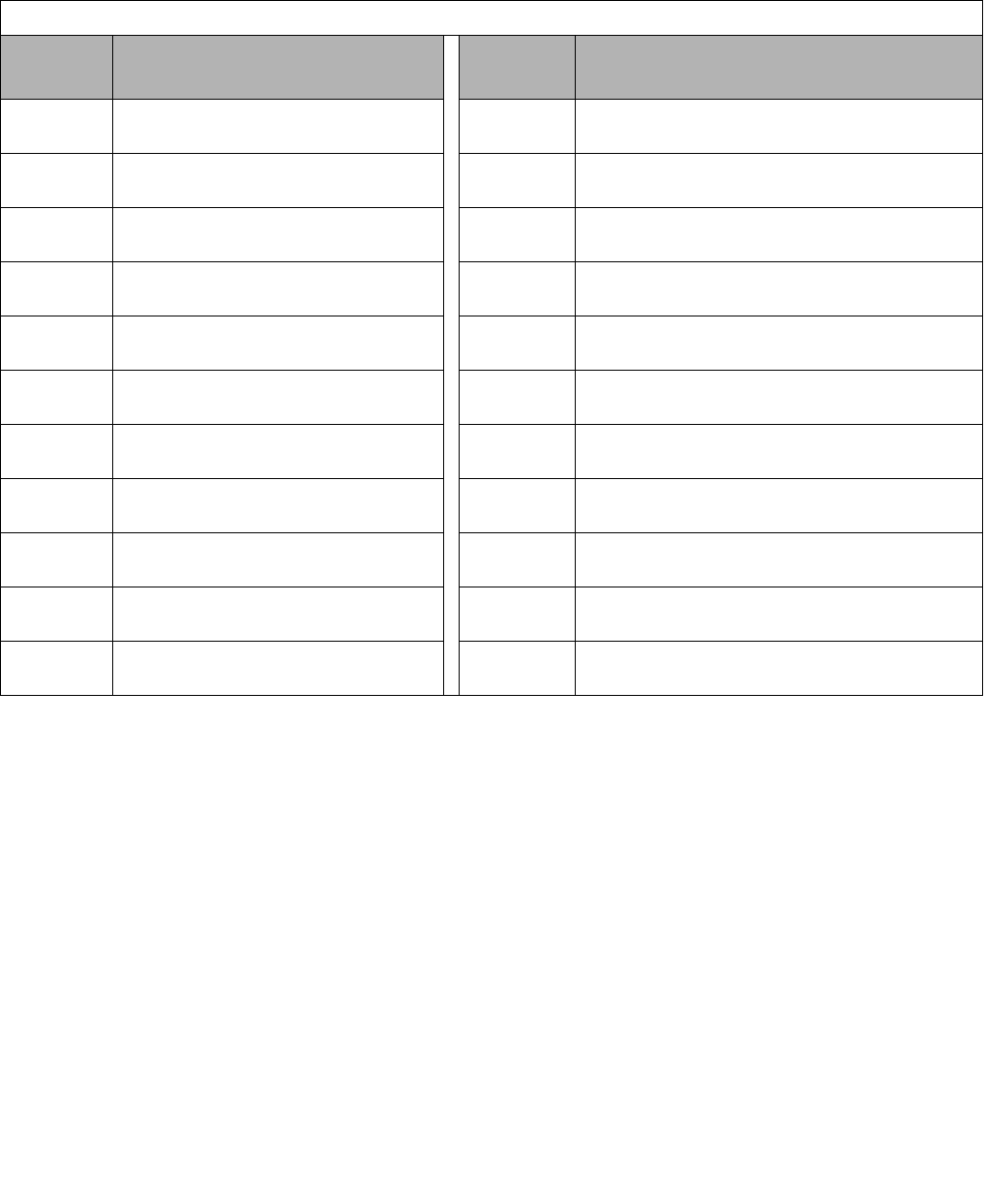
Capacity Related Parameters B - 3
Parameters Affected by Drive Capacity Setting
The factory setting of the parameters in Table B.2 may change when the Drive capacity is changed via parameter o2-04. See
Table B.3 and B.4 for a complete list.
Table B.2 Parameters Affected by o2-04
Parameter
Number
Parameter Name
Digital Operator Display Parameter
Number Parameter Name
Digital Operator Display
b8-03 Energy Saving Control Filter Time Constant
Energy Saving F.T E4-02 Motor 2 Rated Slip
Motor Rated Slip
b8-04 Energy Saving Coefficient Value
Energy Save COEF E4-03 Motor 2 No-Load Current
No-Load Current
C6-01 Carrier Frequency Duty
Heavy/Normal Duty E4-05 Motor 2 Line-to-Line Resistance
Term Resistance
E2-01 Motor Rated Current
Motor Rated FLA E4-06 Motor 2 Leakage Inductance
Leakage Inductance
E2-02 Motor Rated Slip
Motor Rated Slip E4-07 Motor 2 Rated Output
Motor 2 Rated KW
E2-03 Motor No-load Current
No-load Current L2-02 Momentary Power Loss Ride-thru Time
PwrL Ridethru t
E2-05 Motor Line-to-Line Resistance
Term Resistance L2-03 Momentary Power Loss Minimum Base Block Time
PwrL Baseblock t
E2-06 Motor Leakage Inductance
Leakage Inductance L2-04 Momentary Power Loss Voltage Recovery Ramp Time
PwrL V/F Ramp t
E2-10 Motor Iron Loss for Torque Compensation
Tcomp Iron Loss L8-02 Overheat Pre-Alarm Level
OH Pre-Alarm Lvl
E2-11 Motor Rated Output
Motor Rated KW o2-04 Drive/kVA Selection
Inverter Model #
E4-01 Motor 2 Rated Current
Motor Rated FLA --
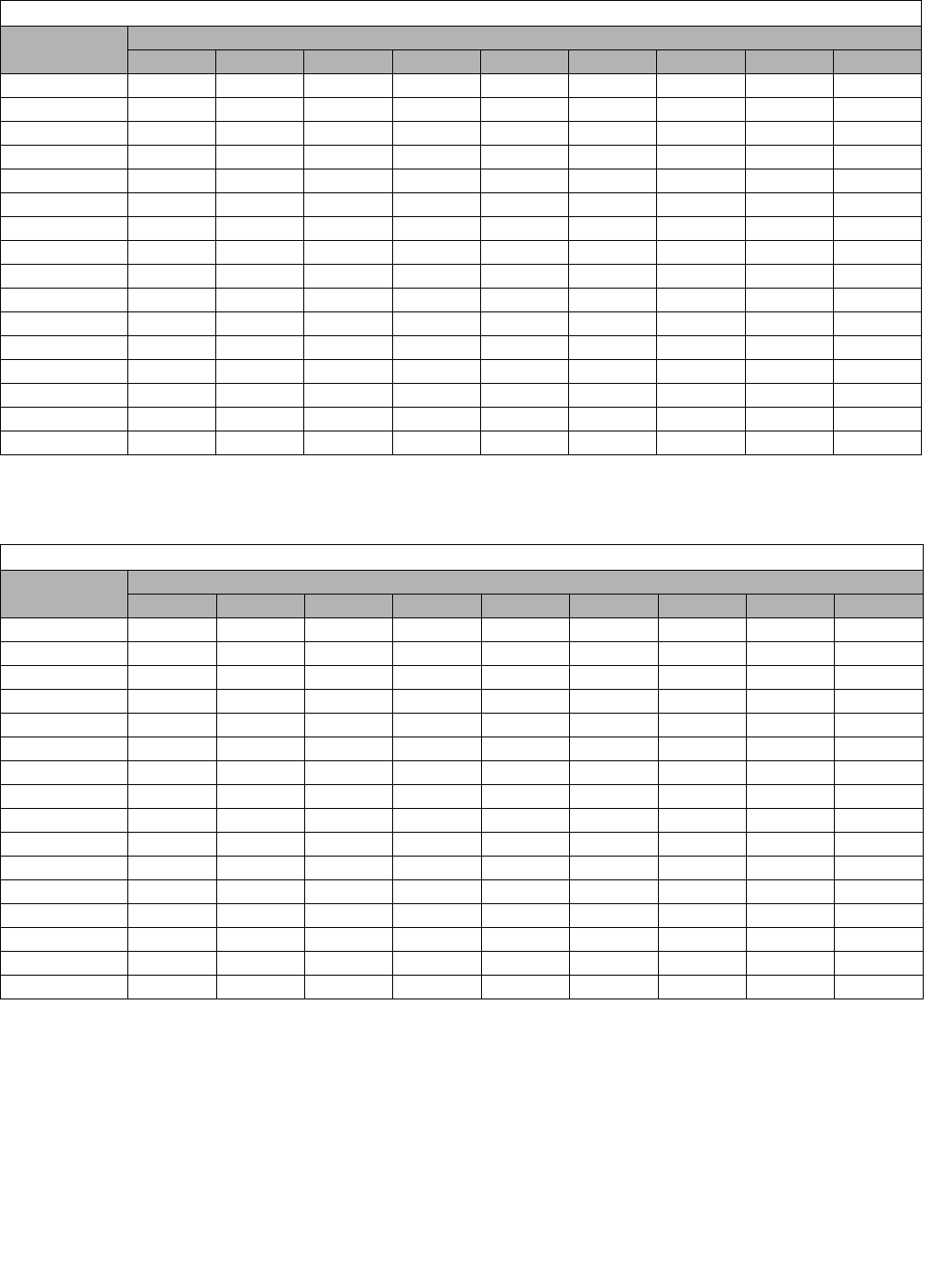
Capacity Related Parameters B - 4
* Default and maximum carrier frequency value when C6-01=2 (Normal Duty 2)
* Default and maximum carrier frequency value when C6-01=2 (Normal Duty 2)
Table B.3 Parameter Defaults 208-240V
Parameter 208-240V: Model Number CIMR-F7U-
20P4 20P7 21P5 22P2 23P7 25P5 27P5 2011 2015
b8-03 0.50 0.50 0.50 0.50 0.50 0.50 0.50 0.50 0.50
b8-04 288.20 223.70 169.40 156.80 122.90 94.75 72.69 70.44 63.13
C6-01 000000000
C6-03 2, *10 2, *10 2, *10 2, *8 2, *10 2, *15 2, *15 2, *8 2, *10
E2-01 / E4-01 1.90 3.30 6.20 8.50 14.00 19.60 26.60 39.7 53.0
E2-02 / E4-02 2.90 2.50 2.60 2.90 2.73 1.50 1.30 1.70 1.60
E2-03 / E4-03 1.20 1.80 2.80 3.00 4.50 5.10 8.00 11.2 15.2
E2-05 / E4-05 9.842 5.156 1.997 1.601 0.771 0.399 0.288 0.230 0.138
E2-06 / E4-06 18.2 13.8 18.5 18.4 19.6 18.2 15.5 19.5 17.2
E2-10 14265377112172262245272
E2-11 / E4-07 0.4 0.75 1.5 2.2 3.7 5.5 7.5 11 15
L2-02 0.1 0.2 0.3 0.5 1.0 1.0 1.0 2.0 2.0
L2-03 0.1 0.2 0.3 0.4 0.5 0.6 0.7 0.8 0.9
L2-04 0.3 0.3 0.3 0.3 0.3 0.3 0.3 0.3 0.6
L8-02 95 95 95 100 95 95 95 95 90
o2-04 012345678
Table B.3 Parameter Defaults 208-240V (continued)
Parameter 208-240V: Model Number CIMR-F7U-
2018 2022 2030 2037 2045 2055 2075 2090 2110
b8-03 0.50 0.50 0.50 0.50 0.50 2.00 2.00 2.00 2.00
b8-04 57.87 51.79 46.27 38.16 35.78 31.35 23.10 20.65 18.12
C6-01 000000001
C6-03 2, *10 2, *10 2, *10 2, *5 2, *5 2, *8 2, *2 2, *2 2, *2
E2-01 / E4-01 65.8 77.2 105.0 131.0 160.0 190.0 260.0 260.0 260.0
E2-02 / E4-021.671.701.801.331.601.431.391.391.39
E2-03 / E4-03 15.7 18.5 21.9 38.2 44.0 45.6 72.0 72.0 72.0
E2-05 / E4-05 0.101 0.079 0.064 0.039 0.030 0.022 0.023 0.023 0.023
E2-06 / E4-06 20.1 19.5 20.8 18.8 20.2 20.5 20.0 20.0 20.0
E2-10 505 538 699 823 852 960 1200 1200 1200
E2-11 / E4-0718.522303745557590110
L2-02 2.0 2.0 2.0 2.0 2.0 2.0 2.0 2.0 2.0
L2-03 1.0 1.0 1.1 1.1 1.2 1.2 1.3 1.5 1.7
L2-04 0.6 0.6 0.6 0.6 0.6 1.0 1.0 1.0 1.0
L8-02 100 90 90 95 100 105 110 100 95
o2-04 9 A B C D E F 10 11
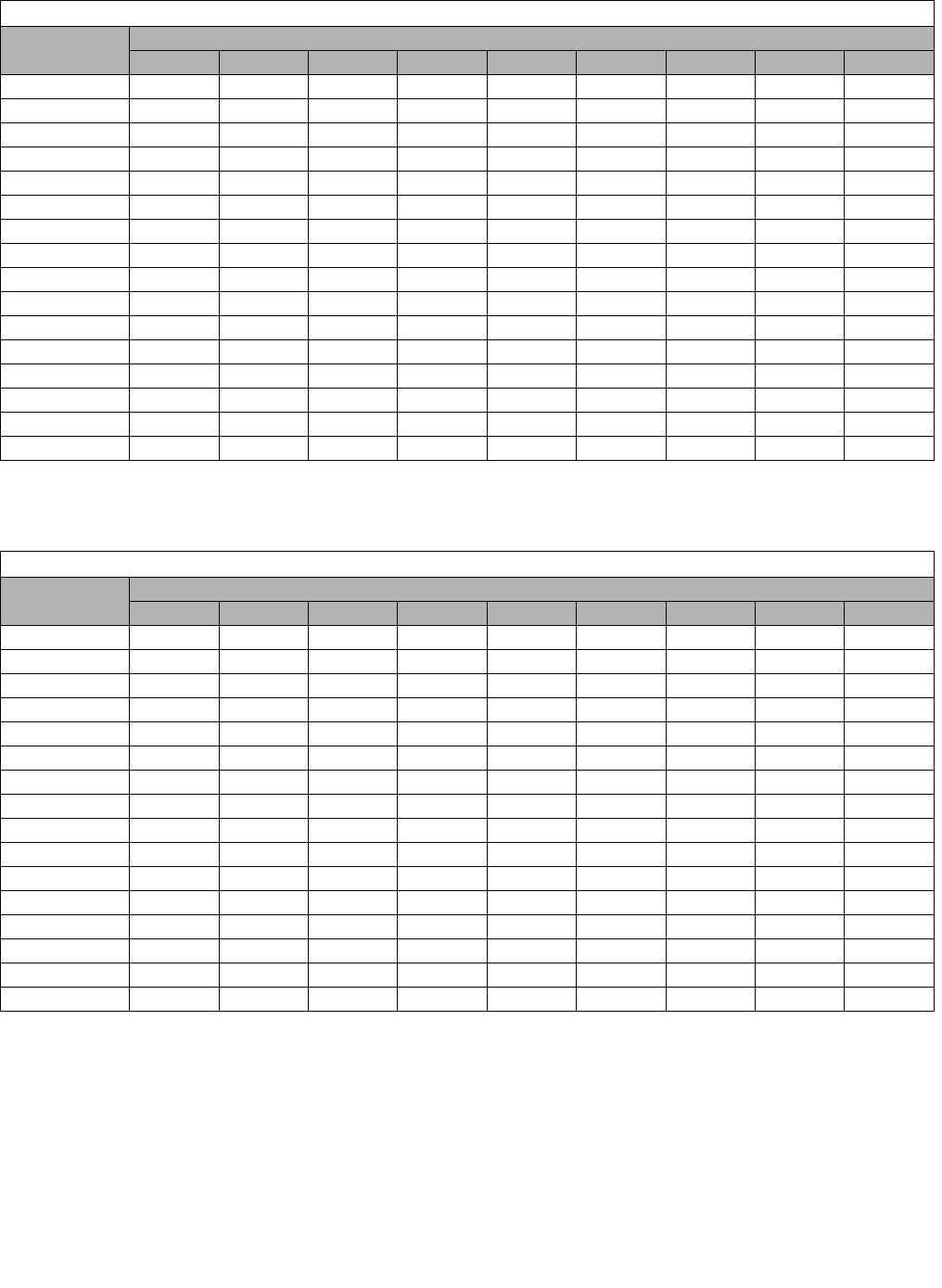
Capacity Related Parameters B - 5
* Default and maximum carrier frequency value when C6-01=2 (Normal Duty 2)
* Default and maximum carrier frequency value when C6-01=2 (Normal Duty 2)
Table B.4 Parameter Defaults 480V
Parameter Model Number CIMR-F7U-
40P4 40P7 41P5 42P2 43P7 44P0 45P5 47P5 4011
b8-03 0.50 0.50 0.50 0.50 0.50 0.50 0.50 0.50 0.50
b8-04 576.40 447.40 338.80 313.60 245.80 236.44 189.50 145.38 140.88
C6-01 000000000
C6-03 2, *2 2, *2 2, *15 2, *15 2, *15 2, *15 2, *15 2, *15 2, *8
E2-01 / E4-011.001.603.104.207.007.009.8013.3019.9
E2-02 / E4-022.902.602.503.002.702.701.501.301.70
E2-03 / E4-030.600.801.401.502.302.302.604.00 5.6
E2-05 / E4-05 38.198 22.459 10.100 6.495 3.333 3.333 1.595 1.152 0.922
E2-06 / E4-06 18.2 14.3 18.3 18.7 19.3 19.3 18.2 15.5 19.6
E2-10 14 26 53 77 130 130 193 263 385
E2-11 / E4-07 0.4 0.75 1.5 2.2 3.7 4.0 5.5 7.5 11
L2-02 0.1 0.1 0.2 0.3 0.5 0.5 0.8 0.8 1.0
L2-03 0.1 0.2 0.3 0.4 0.5 0.6 0.6 0.7 0.8
L2-04 0.3 0.3 0.3 0.3 0.3 0.3 0.3 0.3 0.3
L8-02 959595959595959595
o2-04 20 21 22 23 24 25 26 27 28
Table B.4 Parameter Defaults 480V (continued)
Parameter Model Number CIMR-F7U-
4015 4018 4022 4030 4037 4045 4055 4075 4090
b8-03 0.50 0.50 0.50 0.50 0.50 0.50 2.00 2.00 2.00
b8-04 126.26 115.74 103.58 92.54 76.32 71.56 67.20 46.20 38.91
C6-01 000000000
C6-03 2, *10 2, *10 2, *10 2, *8 2, *8 2, *8 2, *5 2, *5 2, *8
E2-01 / E4-01 26.5 32.9 38.6 52.3 65.6 79.7 95.0 130.0 156.0
E2-02 / E4-021.601.671.701.801.331.601.461.391.40
E2-03 / E4-03 7.6 7.8 9.2 10.9 19.1 22.0 24.0 36.0 40.0
E2-05 / E4-05 0.550 0.403 0.316 0.269 0.155 0.122 0.088 0.092 0.056
E2-06 / E4-06 17.2 20.1 23.5 20.7 18.8 19.9 20.0 20.0 20.0
E2-10 440 508 586 750 925 1125 1260 1600 1760
E2-11 / E4-071518.522303745557590
L2-02 2.0 2.0 2.0 2.0 2.0 2.0 2.0 2.0 2.0
L2-03 0.9 1.0 1.0 1.1 1.1 1.2 1.2 1.3 1.5
L2-04 0.3 0.6 0.6 0.6 0.6 0.6 1.0 1.0 1.0
L8-02 9598788585909098108
o2-04 29 2A 2B 2C 2D 2E 2F 30 31
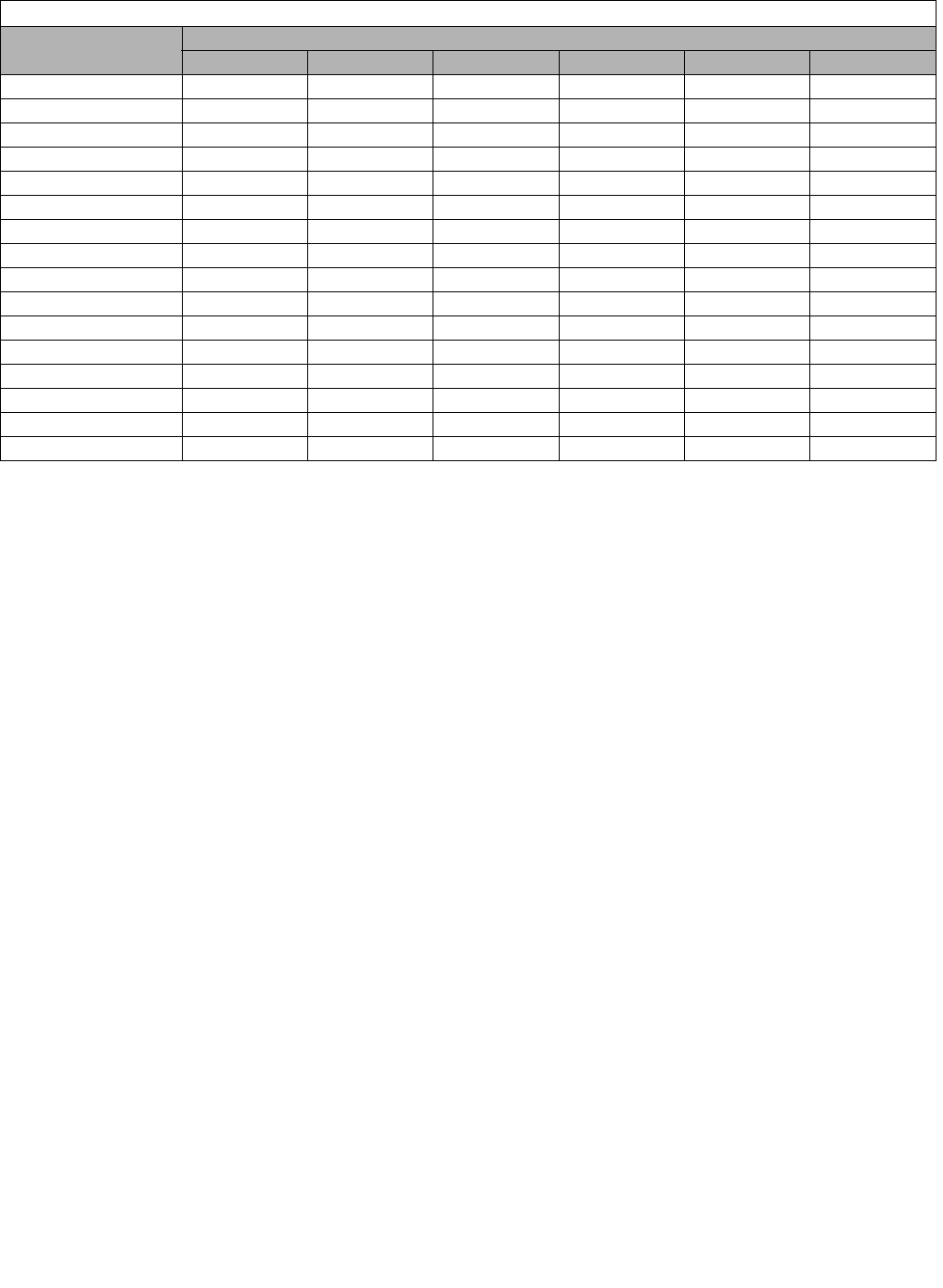
Capacity Related Parameters B - 6
* Default and maximum carrier frequency value when C6-01=2 (Normal Duty 2)
Table B.4 Parameter Defaults 480V (continued)
Parameter Model Number CIMR-F7U-
4110 4132 4160 4185 4220 4300
b8-03 2.00 2.00 2.00 2.00 2.00 2.00
b8-04 36.23 32.79 30.13 30.57 27.13 21.76
C6-01 000011
C6-03 2, *5 2, *5 2, *5 2, *2 2, *2 2, *2
E2-01 / E4-01 190.0 223.0 270.0 310.0 370.0 500.0
E2-02 / E4-021.401.381.351.301.301.25
E2-03 / E4-03 49.0 58.0 70.0 81.0 96.0 130.0
E2-05 / E4-05 0.046 0.035 0.029 0.025 0.020 0.014
E2-06 / E4-06 20.0 20.0 20.0 20.0 20.0 20.0
E2-10 2150 2350 2850 3200 3700 4700
E2-11 / E4-07 110 132 160 185 220 300
L2-02 2.0 2.0 2.0 2.0 2.0 2.1
L2-03 1.7 1.7 1.8 1.9 2.0 2.1
L2-04 1.0 1.0 1.0 1.0 1.0 1.0
L8-02 100 110 108 95 100 95
o2-04 32 33 34 35 36 37
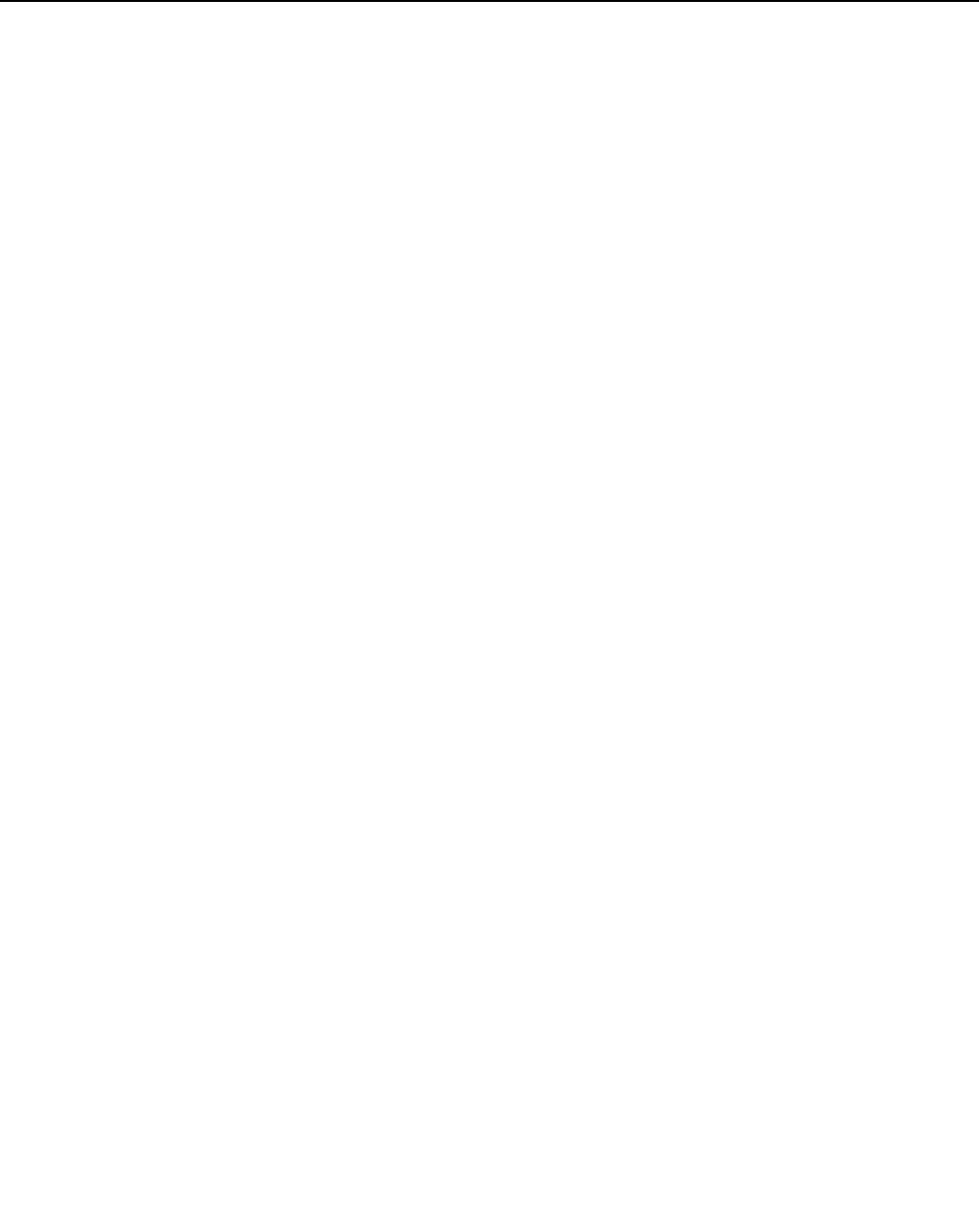
Specifications C - 1
Appendix C
Specifications
This appendix details the standard Drive specifications.
Standard Drive Specifications ............................................C-2
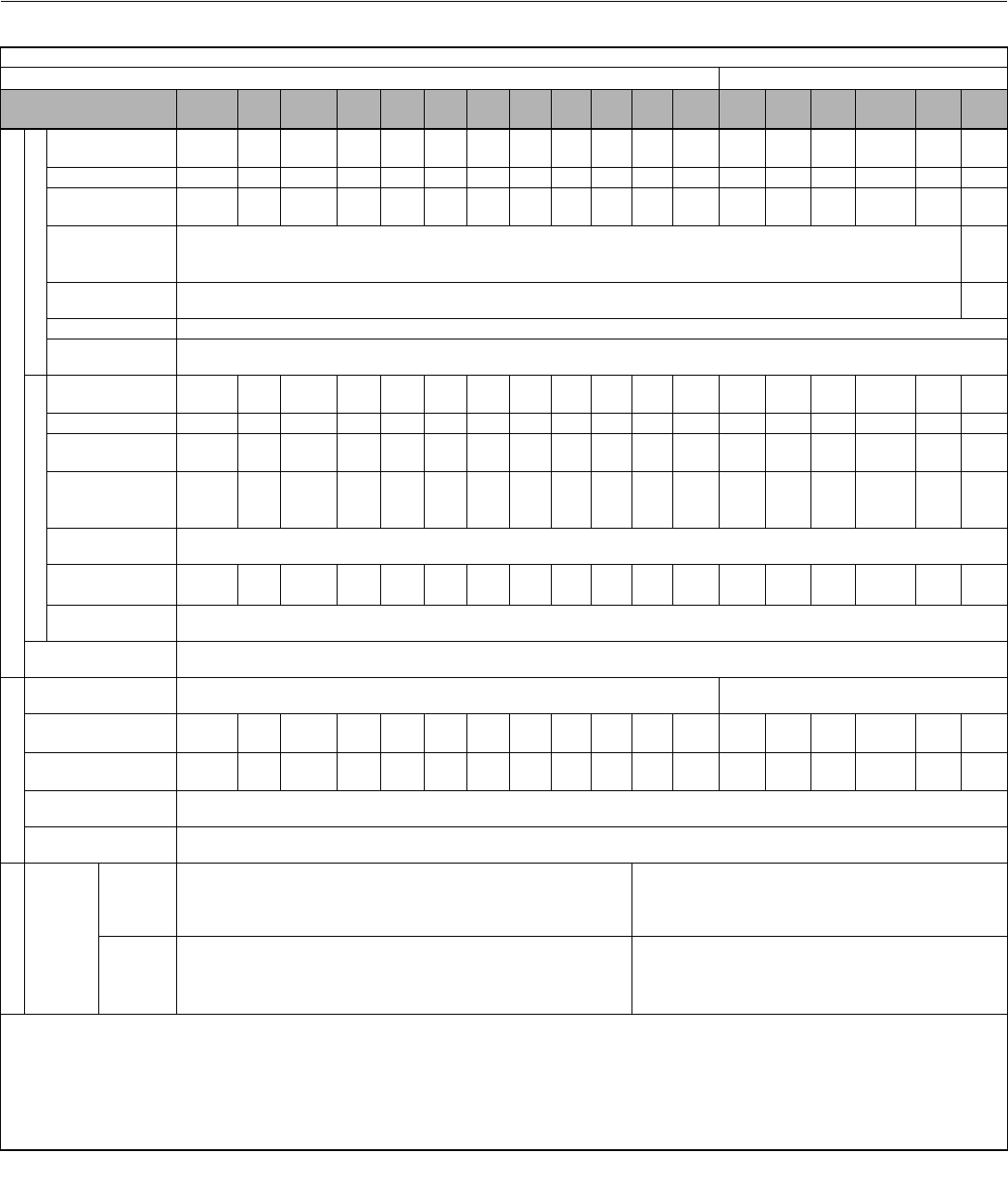
Specifications C - 2
Standard Drive Specifications
The standard Drive specifications are listed in the following tables.
208-240Vac
Table C.1 208-240Vac Drive Specifications
208-240Vac Drives 208-230Vac Drives
Model Number CIMR-
F7U 20P4 20P7 21P5 22P2 23P7 25P5 27P5 2011 2015 2018 2022 2030 2037 2045 2055 2075 2090 2110*5
Rated output
capacity (kVA) 1.2 1.6 2.7 3.7 5.7 8.8 12.0 17.0 22.0 27.0 32.0 44.0 55.0 69.0 82.0 110.0 130.0 140.0
Horsepower*2 0.5/0.75 1 2 3 5 7.5 10 15 20 25 30 40 50 60 75 100 125 150
Rated output
current (A) 3.2 4.2 7.0 9.6 15.2 23.0 31.0 45.0 58.0 71 85.0 115.0 145.0 180.0 215 283.0 346.0 360.0
Overload capacity*3
(% of rated output
current for 60 sec)
150 138*3
Current limit (% of
rated output current) 150 138*3
Carrier frequency
*5,*7
2kHz
Maximum output
frequency 300.0Hz
Rated output
capacity (kVA) 1.4 1.8 3.0 4.1 6.4 8.8 12.0 18.0 23.0 29.0 34.0 44.0 62.0 73.0 82.0 120.0 140.0 160.0
Horsepower*2 0.5/0.75 1 2 3 5 7.5 10 15 20 25 30 40 50/60 75 - 100/125 150 -
Rated output
current (A) 3.6 4.6 7.8 10.8 16.8 23.0 31.0 46.2 59.4 74.8 88.0 115.0 162.0 192.0 215 312.0 360.0 415.0
Overload capacity*3
(% of rated output
current for 60 sec.)
107 107 108 107 107 120 120 117 117 114 116 120 107 113 120 109 115 120
Current limit (% of
rated output current) 120
Carrier frequency
(kHz)*6 10 10 10 8 10 15 15 8 10 10 10 10 5 5 8 2 2 2
Maximum output
frequency 400.0Hz
Maximum output
voltage
3-phase; 200, 208, 220, 230, or 240Vac
(Proportional to input voltage)
Rated voltage
Rated frequency 3-phase, 200/208/220/230/240Vac, 50/60Hz 3-phase, 200/208/220/230Vac, 50/60Hz
Rated input current -
Heavy Duty*1 (A) 3.8 4.9 8.4 11.5 18 24 37 52 68 84 94 120 160 198 237 317 381 396
Rated input current -
Normal Duty*1 (A) 4.3 5.5 9.4 13 20 24 37 53 70 89 98 120 180 212 237 350 396 457
Allowable voltage
fluctuation + 10%, - 15%
Allowable frequency
fluctuation ±5%
Measures
for power
supply
harmonics
DC
Reactor Optional Built-in
12-Pulse
Rectification Not possible Possible*4
*1 The difference between Heavy Duty ratings and the Normal Duty ratings for the Drive are the rated input and output current, overload capacity, carrier frequency, current limit, and maxi-
mum output frequency. Parameter C6-01 must be set to value of “0” for Heavy Duty ratings and “2” for Normal Duty ratings. Factory default is Heavy Duty (C6-01=0).
*2 Horsepower ratings are based on 230V or 460V NEC Table 430.150. The maximum applicable motor output is given for a standard 4-pole motor. When selecting the actual motor and Drive,
be sure that the Drive's rated output current is appropriate for the motor's rated current.
*3 Model 2110 has an overload rating of 138% of rated output current for 60 seconds and a current limit rating of 138%. Models 4220 and 4300 have an overload rating of 150% of rated output
current for 45 seconds and a current limit rating of 150%.
*4 When setting the carrier frequency above the factory default, the Drive must be derated.
*5 Heavy Duty ratings for models 2110, 4220 and 4300 are effective in software version VSF103021 and higher.
*6 Each value shown is the Maximum carrier frequency and default carrier frequency.
*7 The carrier frequency for Heavy Duty is default to 2 kHz. Software version VSF103021 and higher may allow the carrier frequency to be increased above 2 kHz with a reduction in
continuous rated output current. Refer to C6-02 in Chapter 5 for further details.
O
utput rat
i
ngs
Heavy Duty
*
1
Normal Duty
*
1
Power supp
l
y c
h
aracter
i
st
i
cs
C
ontro
l
c
h
aracter
i
st
i
cs
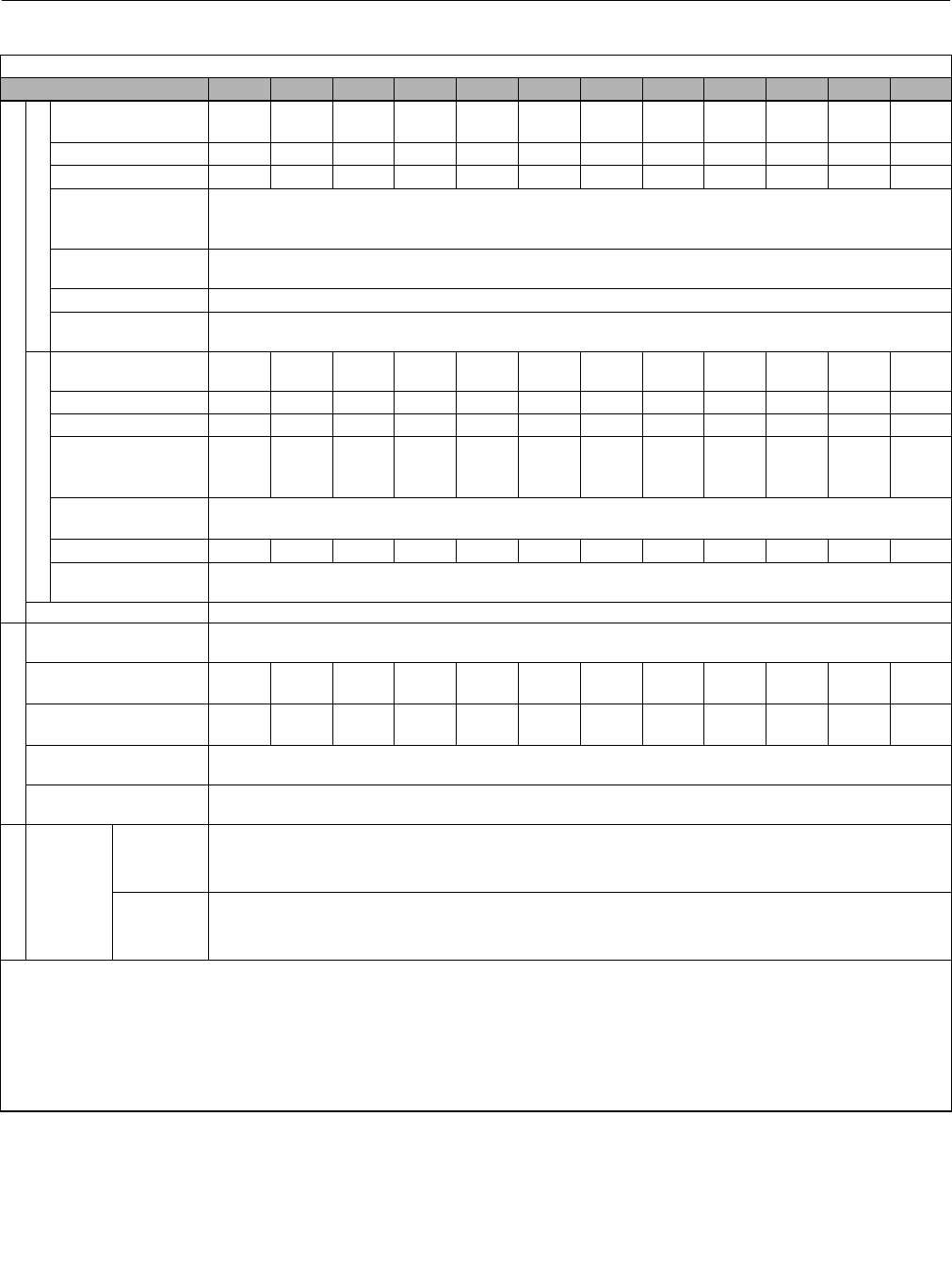
Specifications C - 3
480Vac
Table C.2 480Vac Drive Specifications
Model Number CIMR-F7U 40P4 40P7 41P5 42P2 43P7 44P0 45P5 47P5 4011 4015 4018 4022
Rated output
capacity (kVA) 1.4 1.6 2.8 4.0 5.8 6.6 9.5 13.0 18.0 24.0 30.0 34.0
Horsepower*2 0.5/0.751235-7.51015202530
Rated output current (A) 1.8 2.1 3.7 5.3 7.6 8.7 12.5 17.0 24.0 31.0 39.0 45.0
Overload capacity*3
(% of rated output
current for 60 sec)
150
Current limit (% of
rated output current) 150
Carrier frequency*4 2kHz
Maximum output
frequency 300.0Hz
Rated output
capacity (kVA) 1.4 1.6 2.8 4.0 5.8 6.6 9.5 13.0 21.0 26.0 30.0 38.0
Horsepower*2 0.5/0.751235-7.51015/202530-
Rated output current (A) 1.8 2.1 3.7 5.3 7.6 8.7 12.5 17.0 27.0 34.0 40.0 50.4
Overload capacity *3
(% of rated output
current for 60 sec)
120 120 120 120 120 120 120 120 107 109 117 107
Current limit (% of rated
output current) 120
Carrier frequency (kHz)*5 15 15 15 15 15 15 15 15 8 10 10 10
Maximum output
frequency 400.0Hz
Maximum output voltage 3-phase; 380, 400, 415, 440, 460, or 480Vac (Proportional to input voltage.)
Rated voltage
Rated frequency 3-phase, 380, 400, 415, 440, 460 or 480Vac, 50/60Hz
Rated input current -
Heavy Duty*1 (A) 2.2 2.5 4.4 6.4 9.0 10.4 15 20 29 37 47 50
Rated input current -
Normal Duty*1 (A) 2.2 2.5 4.4 6.4 9.0 10.4 15 20 33 40 48 55
Allowable voltage
fluctuation + 10%, - 15%
Allowable frequency
fluctuation ±5%
Measures
for power
supply
harmonics
DC Reactor Optional
12-pulse
Rectification Not possible
*1 The difference between Heavy Duty ratings and the Normal Duty ratings for the Drive are the rated input and output current, overload capacity, carrier frequency, current limit,
and maximum output frequency. Parameter C6-01 must be set to value of “0” for Heavy Duty ratings and “2” for Normal Duty ratings. Factory default is Heavy Duty (C6-01=0).
*2 Horsepower ratings are based on 230V or 460V NEC Table 430.150. The maximum applicable motor output is given for a standard 4-pole motor. When selecting the actual
motor and Drive, be sure that the Drive's rated output current is appropriate for the motor's rated current.
*3 Model 2110 has an overload rating of 138% of rated output current for 60 seconds and a current limit rating of 138%. Models 4220 and 4300 have an overload rating of 150%
of rated output current for 45 seconds and a current limit rating of 150%.
*4 When setting the carrier frequency above the factory default, the Drive must be derated.
*5 Heavy Duty ratings for models 2110, 4220 and 4300 are effective in software version VSF103021 and higher.
*6 Each value shown is the Maximum carrier frequency and default carrier frequency.
*7 The carrier frequency for Heavy Duty is default to 2 kHz. Software version VSF103021 and higher may allow the carrier frequency to be increased above 2 kHz with a
reduction in continuous rated output current. Refer to C6-02 in Chapter 5 for further details.
O
utput rat
i
ngs
Heavy Duty
*1
Normal Duty
*1
Power supp
l
y c
h
aracter
i
st
i
cs
Control characteristics
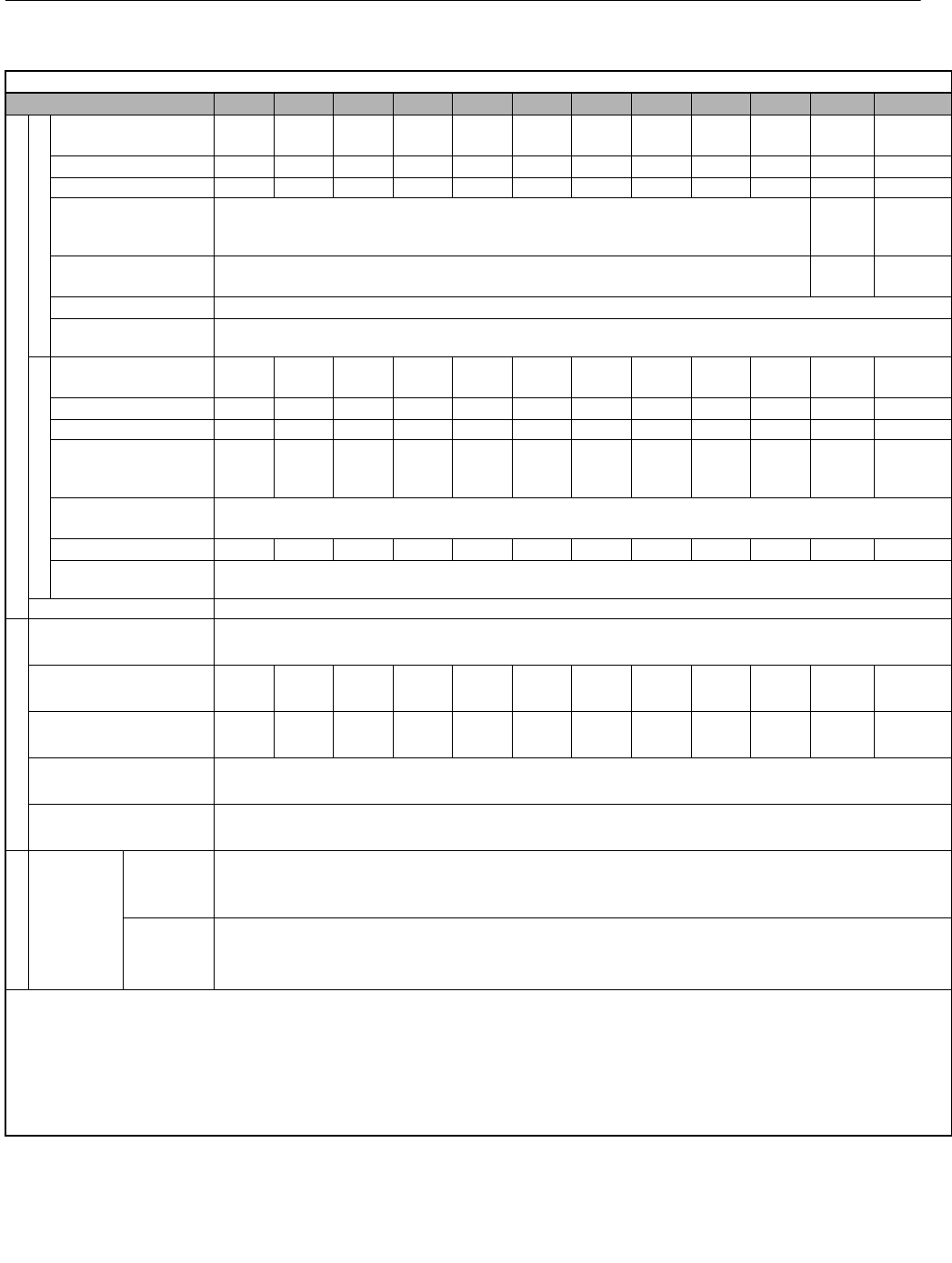
Specifications C - 4
Common Specifications
Table C.2 480Vac Drive Specifications (Continued)
Model Number CIMR-F7U 4030 4037 4045 4055 4075 4090 4110 4132 4160 4185 4220 4300
Rated output capacity
(kVA) 46.0 57.0 69.0 85.0 110.0 140.0 160.0 200.0 230.0 280.0 315.0 450.0
Horsepower*2 40 50 60 75 100 125/150 - 200 250 300 350 500
Rated output current (A) 60.0 75.0 91.0 112.0 150.0 180.0 216.0 260.0 304.0 370.0 414.0 590.0
Overload capacity *3
(% of rated output current
for 60 sec)
150 150*3 150*3
Current limit (% of rated
output current) 150 150*3 150*3
Carrier frequency*5 2kHz
Maximum output
frequency 300.0Hz
Rated output capacity
(kVA) 51.0 59.0 73.0 95.0 120.0 140.0 180.0 200.0 230.0 315.0 390.0 510.0
Horsepower*2 40/50 60 75 100 125 150 200 - 250 300/350 400/450 500+
Rated output current (A) 67.2 77.0 96.0 125.0 156.0 180.0 240.0 260.0 304.0 414.0 515.0 675.0
Overload capacity *3
(% of rated output current
for 60 sec.)
107 117 114 108 115 120 108 120 120 107 118 120
Current limit (% of rated
output current) 120
Carrier frequency (kHz)*6 88855855522 2
Maximum output
frequency 400.0Hz
Maximum output voltage 3-phase, 380, 400, 415, 440, 460 or 480Vac (Proportional to input voltage)
Rated voltage
Rated frequency 3-phase, 380, 400, 415, 440, 460, or 480Vac, 50/60Hz
Rated input current -
Heavy Duty*1 (A) 66 83 100 120 165 198 238 286 334 407 457 649
Rated input current -
Normal Duty*1 (A) 74 85 106 134 172 198 264 286 334 456 567 743
Allowable voltage fluctuation + 10%, - 15%
Allowable frequency
fluctuation ±5%
Measures for
power supply
harmonics
DC Reactor Built-in
12-Pulse
Rectification Possible*4
*1 The difference between Heavy Duty ratings and the Normal Duty ratings for the Drive are the rated input and output current, overload capacity, carrier frequency, current limit, and
maximum output frequency. Parameter C6-01 must be set to value of “0” for Heavy Duty ratings and “2” for Normal Duty ratings. Factory default is Heavy Duty (C6-01=0).
*2 Horsepower ratings are based on 230V or 460V NEC Table 430.150. The maximum applicable motor output is given for a standard 4-pole motor. When selecting the actual motor
and Drive, be sure that the Drive's rated output current is appropriate for the motor's rated current.
*3 Model 2110 has an overload rating of 138% of rated output current for 60 seconds and a current limit rating of 138%. Models 4220 and 4300 have an overload rating of 150% of
rated output current for 45 seconds and a current limit rating of 150%.
*4 When setting the carrier frequency above the factory default, the Drive must be derated.
*5 Heavy Duty ratings for models 2110, 4220 and 4300 are effective in software version VSF103021 and higher.
*6 Each value shown is the Maximum carrier frequency and default carrier frequency.
*7 The carrier frequency for Heavy Duty is default to 2 kHz. Software version VSF103021 and higher may allow the carrier frequency to be increased above 2 kHz with a
reduction in continuous rated output current. Refer to C6-02 in Chapter 5 for further details.
O
utput rat
i
ngs
Heavy Duty
*
1
Normal Duty
*
1
Power supp
l
y c
h
aracter
i
st
i
cs
C
ontro
l
c
h
aracter
i
st
i
cs
.
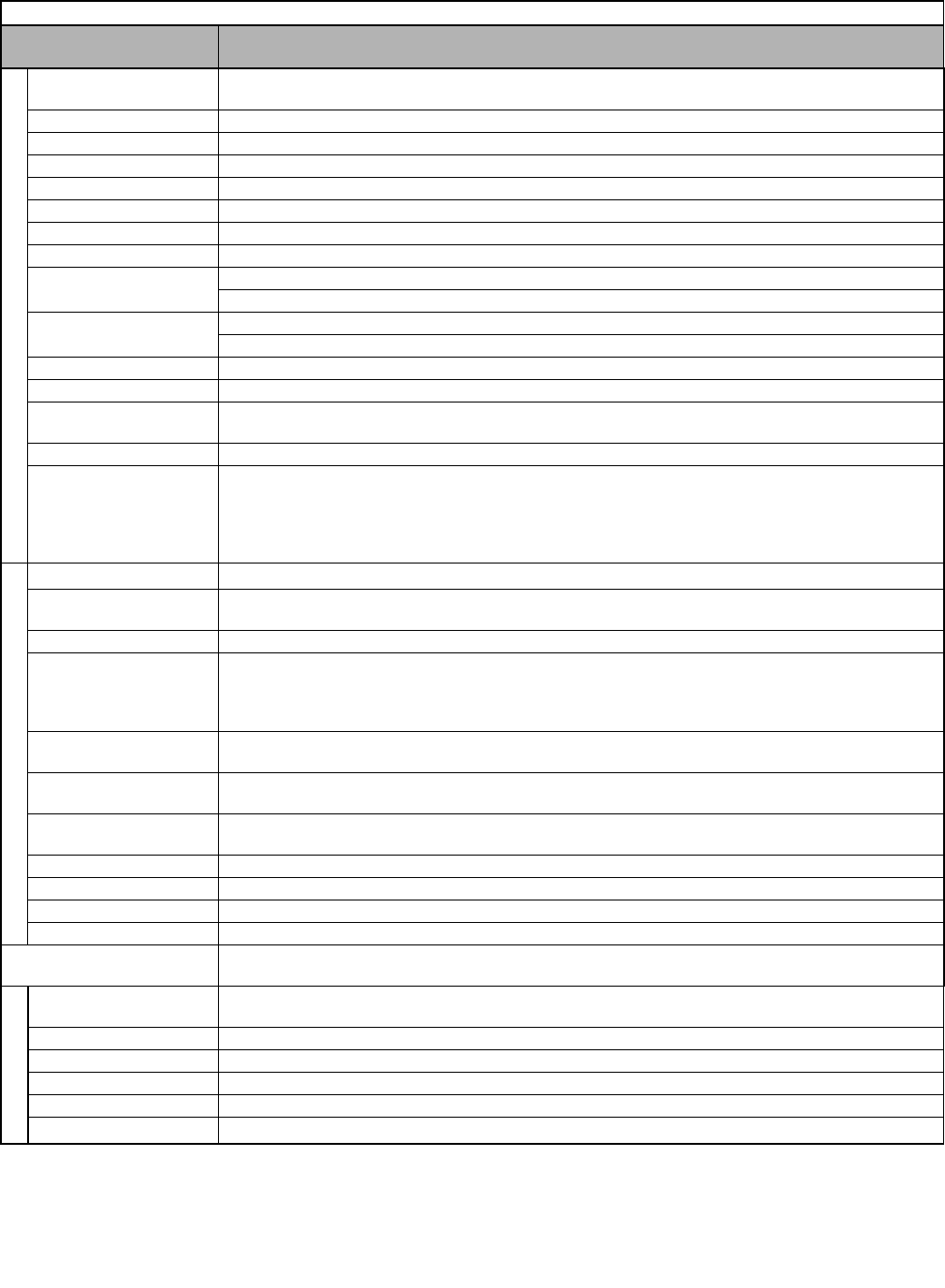
Specifications C - 5
The following specifications apply to both 200Vac and 400Vac Class Drives.
Table C.3 Common F7 Drive Specifications
Model Number
CIMR-F7U Specification
Control method Sine wave PWM
V/F control, V/F control with PG, Open Loop Vector control, Flux Vector Control
Speed control range 100:1 (1000:1 with PG)
Speed control accuracy ±0.2% (±0.02% with PG) (77°F ± 50°F) (25°C ± 10°C)
Speed response 5Hz (30Hz with PG)
Torque limit Can be set by parameter, analog input, or serial communication: 4 quadrant control
Torque accuracy ±5%
Torque response 20Hz (40Hz with PG)
Frequency control range 0.01 to 400.00Hz
Frequency accuracy
(temperature characteristics)
Digital references: ± 0.01% (14°F to 104°F) (-10°C to +40°C)
Analog references: ±0.1% (77°F ± 50°F) (25°C ±10°C)
Frequency setting resolution Digital references: 0.01Hz
Analog references: 0.03 @60Hz (10 bit with sign)
Output frequency resolution 0.001Hz
Analog setting signal -10 to +10Vdc, 0 to +10Vdc, 4 to 20mA
Acceleration/Deceleration
time 0.0 to 6000.0 sec (4 selectable combinations of independent acceleration and deceleration settings)
Internal braking torque Approximately 20%
Main control functions
Restarting from momentary power loss, bi-directional speed search, Overtorque/Undertorque detection, 17 preset
speeds, acceleration/deceleration time changes, S-curve acceleration, 3-wire sequence, Auto-Tuning, cooling fan ON/
OFF control, torque compensation, speed control/torque control switch, jump frequencies, upper and lower limits for
frequency references, DC braking for starting and stopping, high-slip braking, PID control (with sleep function),
energy-saving control, Modbus communications (RS-485/422, 19.2 kbps maximum), fault reset, and copy function.
Motor protection UL recognized electronic thermal overload relay (I2T)
Instantaneous overcurrent
protection Stops at approximately 200% of rated output current
Main circuit protection Fuse in DC bus circuit
Overload protection
Normal Duty (C6-01 = 2) - Approximately 110% of rated output current for 60 seconds
Heavy Duty (C6-01 = 0) - 150% of rated output current for 60 seconds
Model 2110 - 138% of rated output for 60 seconds
Models 4220/4300 - 150% of rated output for 45 seconds
Overvoltage protection 208-240Vac: Stops when main-circuit DC voltage is above 410Vdc
480Vac: Stops when main-circuit DC voltage is above 820Vdc
Undervoltage protection 208-240Vac: Stops when main-circuit DC voltage is below 190Vdc
480Vac: Stops when main-circuit DC voltage is below 380Vdc
Momentary power loss
ride-thru Two selectable methods: 1. Time base for up to 2 seconds. 2. Until control power is active.
Heatsink over-temperature Protection by thermistor
Stall prevention Stall prevention during acceleration, deceleration, and running
Ground fault protection Protection by electronic circuit (50% of inverter rated current)
DC bus charge Lit when the main circuit DC voltage is approximately 50Vdc or more
Enclosure Type Enclosed wall-mounted type (NEMA 1): CIMR-F7U20P4 thru 2018 and 40P4 thru 4018
Open chassis type (IP00): CIMR-F7U2022 thru 2110 and 4030 thru 4300
Ambient operating
temperature
14°F to 104°F (-10°C to 40°C) NEMA 1 type
14°F to 113°F (–10°C to 45°C) Open chassis type
Ambient operating humidity 95% max. (with no condensation)
Storage temperature -4°F to 140°F (- 20°C to + 60°C) short-term temperature during transportation
Mounting location Indoor (no corrosive gas, dust, etc.)
Altitude 3300 feet (1000 m) (higher altitudes by derate)
Vibration 10 to 20Hz, 32 ft/sec2 (9.8 m/s2) max.; 20 to 50Hz, 6.5 ft/sec2 (2 m/s2) max.
C
ontro
l
Ch
aracter
i
st
i
csProtect
i
ve Funct
i
ons
Environment

Specifications C - 6
Notes:
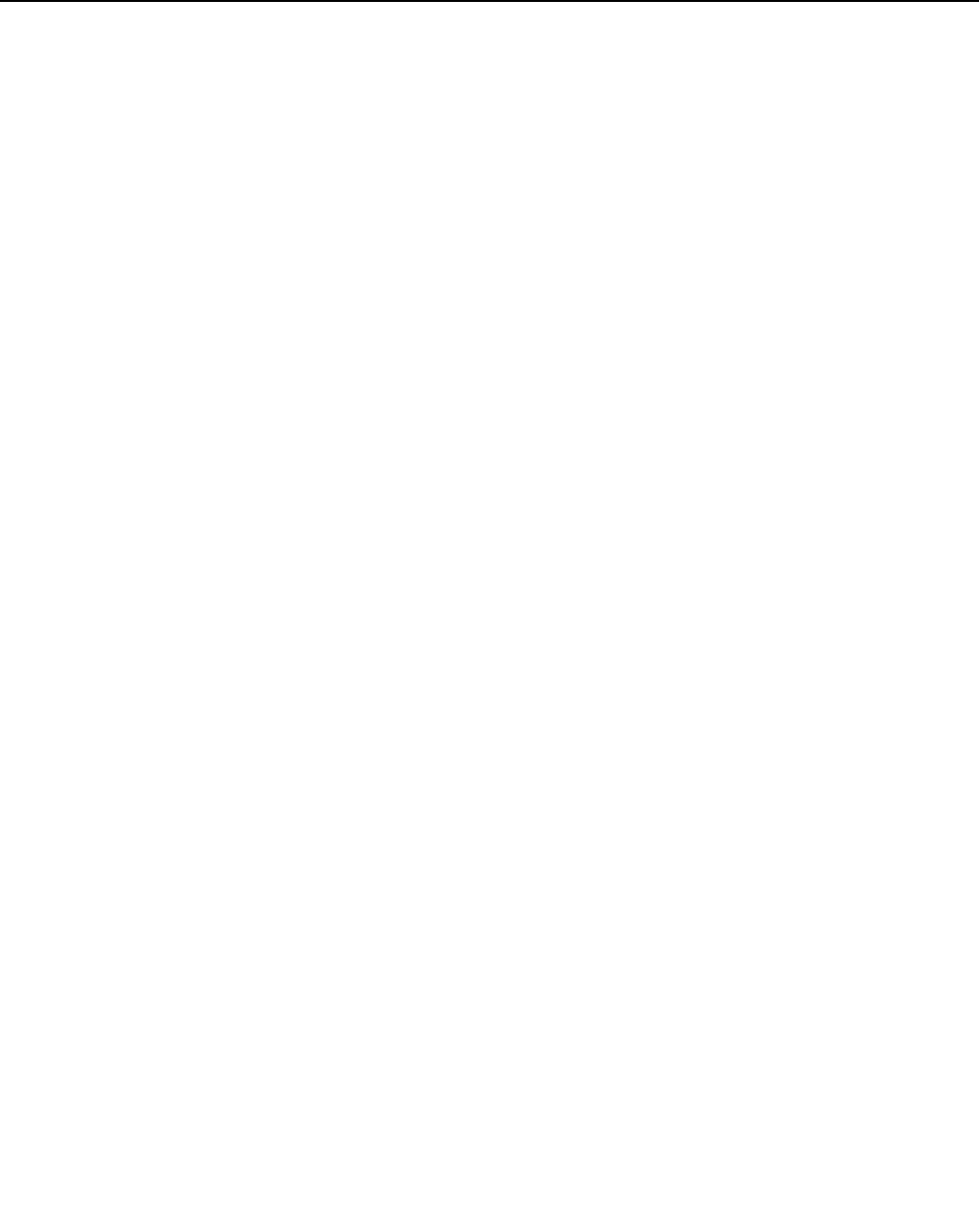
Communications D - 1
Appendix D
Communications
This appendix details the specifications, connections, and programming of the Drive
for Modbus communication.
Using Modbus Communication...........................................D-2
Modbus Function Code Details ..........................................D-8
Modbus Data Tables ........................................................D-10
Modbus Self-Diagnosis.....................................................D-18
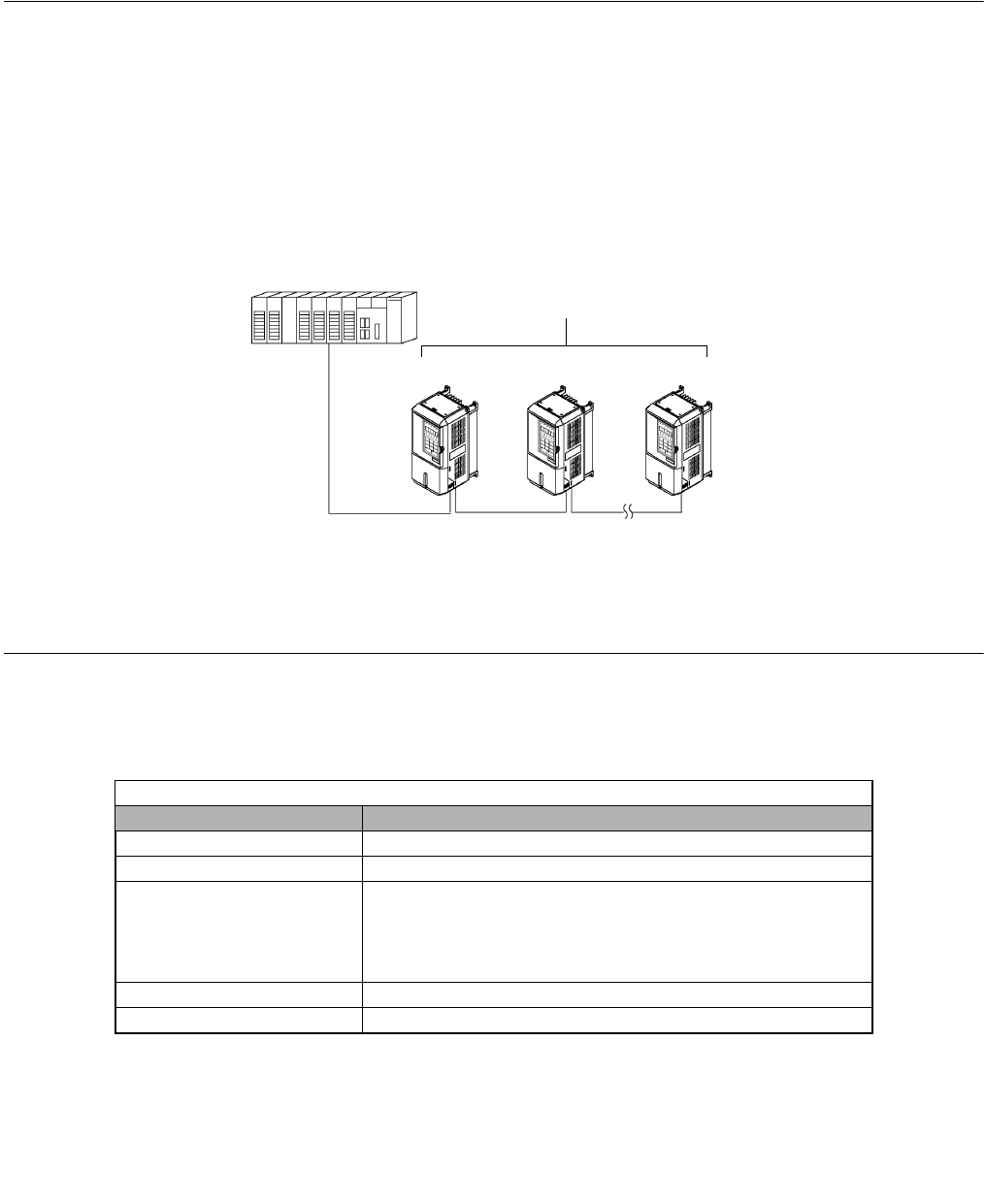
Communications D - 2
Using Modbus Communication
Serial communication can be performed with Program Logic Controllers (PLCs) or similar master devices using the Modbus
protocol.
Modbus Communication Configuration
Modbus communication is configured using 1 master (PLC) and a maximum of 31 slaves. Serial communication between
master and slave is normally initiated by the master and responded to by the slaves.
The master performs serial communication with one slave at a time. Consequently, the slave address of each slave must be
initially set, so that the master can perform serial communication using that address. Slaves receiving commands from the
master perform the specified functions, and send a response back to the master.
Fig D.1 Example of Connections between Master and Drive
Communication Specifications
The Modbus communication specifications are shown below:
Table D.1 Modbus Communication Specifications
Item Specifications
Interface RS-422, RS-485
Communications Cycle Asynchronous (Start-stop synchronization)
Communications Parameters
Baud rate: Select from 1200, 2400, 4800, 9600, and 19200 bps.
Data length: 8 bits fixed
Parity: Select from even, odd, or none.
Stop bits: 1 bit selected
Communications Protocol Modbus RTU
Number of Connectable Units 31 units maximum
Master
F7 F7 F7
Slaves
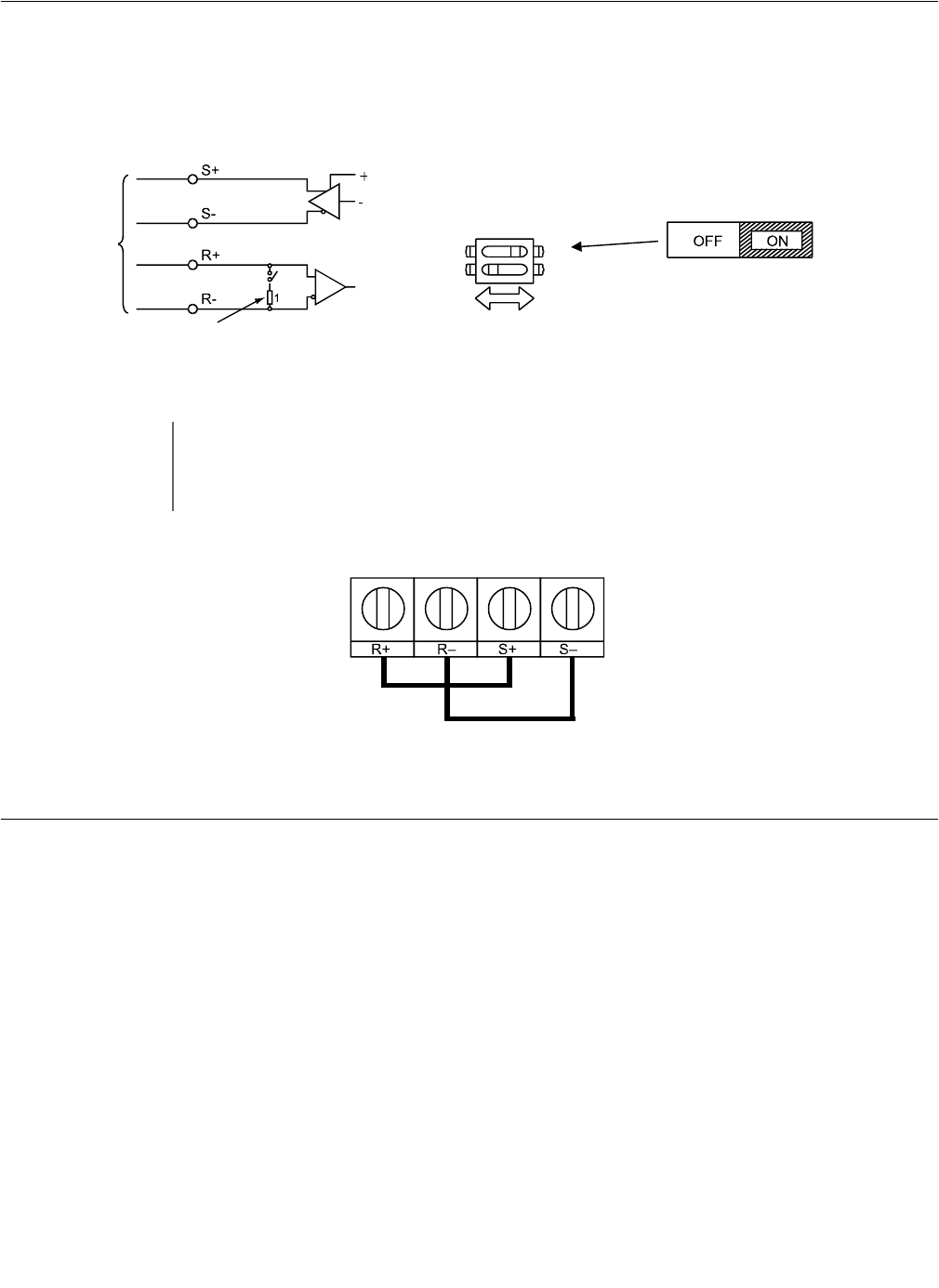
Communications D - 3
Communication Connection Terminal
Modbus communication uses the following terminals: S+, S-, R+, and R-. The terminating resistor must be turned ON only if
the Drive is at the very end of the serial communication chain. Set the terminating resistor by turning ON pin 1 of switch S1.
Fig D.2 Communication Connection Terminals and Terminating Resistor
Fig D.3 RS-485 Communication Connection
Procedure for Setting Up Communication
Use the following procedure to perform communication with the PLC.
1. Turn OFF the input to the Drive power and connect the communication cable between the PLC (or other master device)
and the Drive.
2. Turn ON the input power to the Drive.
3. Set the required communication parameters (H5-01 to H5-07) using the Digital Operator.
4. Turn OFF the input to the Drive power, and check that the Digital Operator display has completely extinguished.
5. Turn ON the input power to the Drive once again.
6. Perform communication with the master device.
IMPORTANT
1. Separate the communication cables from the main circuit cables and control circuit wiring.
2. Use shielded cables for the communication cable, and use proper shield clamps. Shield at one end only.
3. When using RS-485 communication, connect S+ to R+, and S- to R-, on the control circuit terminal
board. See Fig D.3 below.
Terminating resistor (1/2W, 110 Ohms)
RS-422A
or RS-485
Switch
S1
O
F
F
1
Terminating
resistor
DIP Switch S1 located on
terminal board.
2
1
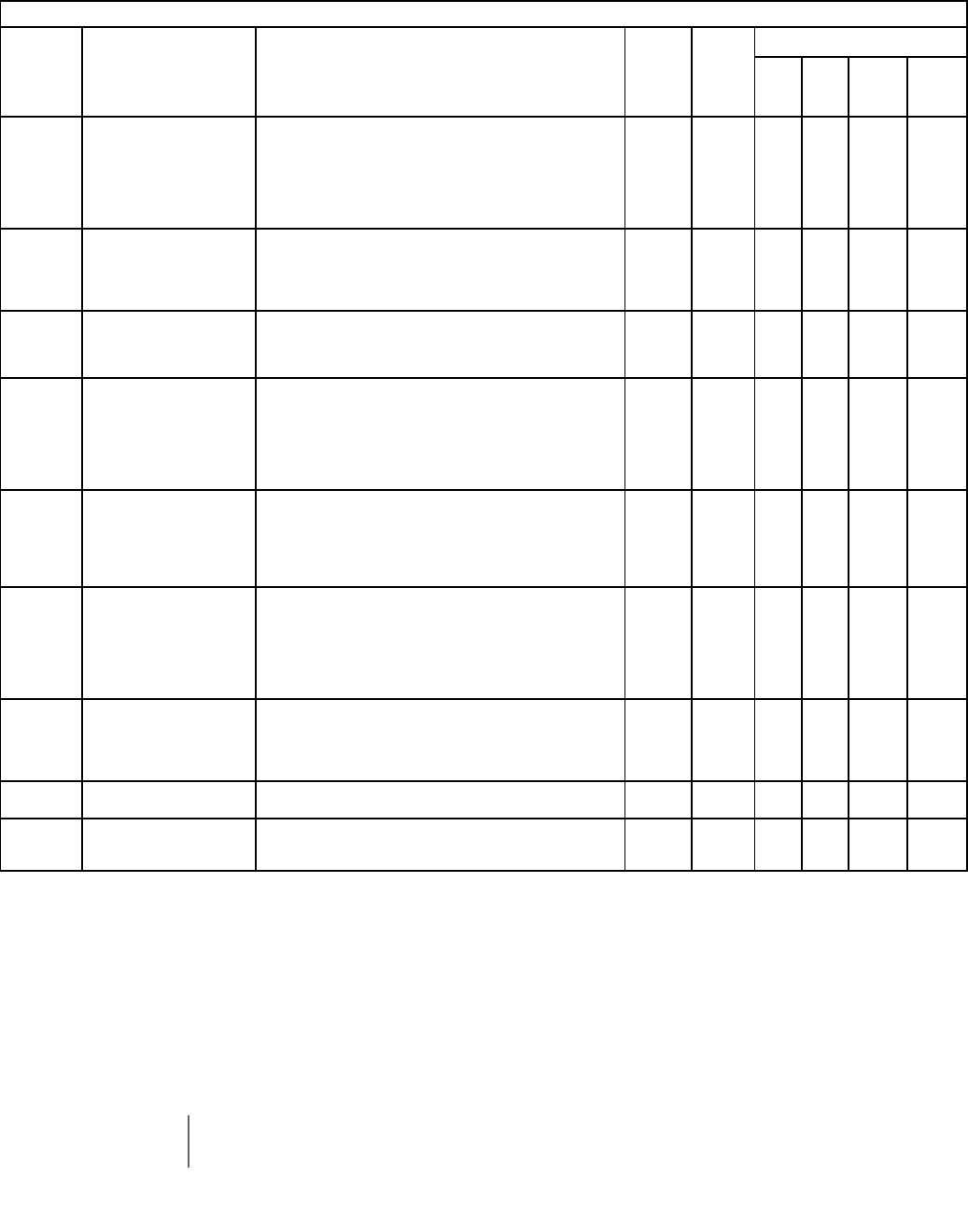
Communications D - 4
Related Parameters
Modbus communication can perform the following operations regardless of the settings in b1-01 and b1-02:
1. Monitor the operation status of the Drive.
2. Set and read Drive parameters.
3. Reset faults.
4. Input multi-function digital input commands.
5. Control multi-function digital and analog outputs.
Table D.2 Serial Communication Related Parameters
Parameter
No. Parameter Name
Digital Operator Display Description Setting
Range Factory
Setting
Control Method
V/F V/F
w/
PG
Open
Loop
Vector
Flux
Vector
b1-01 Frequency Reference
Selection
Reference Source
Selects the frequency reference input source.
0: Operator - Digital preset speed U1-01 or d1-01 to d1-17.
1: Terminals - Analog input terminal A1 (or terminal A2 based on
parameter H3-13).
2: Serial Com - Modbus RS-422/485 terminals R+, R-, S+, and S-.
3: Option PCB - Option board connected to 2CN.
4: Pulse Input (Terminal RP)
0 to 4 1 Q Q Q Q
b1-02 Run Command Selection
Run Source
Selects the run command input source.
0: Operator - RUN and STOP keys on Digital Operator.
1: Terminals - Contact closure on terminals S1 or S2.
2: Serial Com - Modbus RS-422/485 terminals R+, R-, S+, and S-.
3: Option PCB - Option board connected to 2CN.
0 to 3 1 Q Q Q Q
H5-01 Drive Node Address
Serial Comm Adr
Selects Drive station node number (address) for Modbus terminals
R+, R-, S+, S-. The Drive’s power must be cycled for the setting to
take effect. Set H5-01 to 0 to disable Drive responses to Modbus
communications.
0 to 20
Hex 1F A A A A
H5-02 Communication Speed
Selection
Serial Baud Rate
Selects the baud rate for Modbus terminals R+, R-, S+ and S-. The
Drive’s power must be cycled for the setting to take effect.
0: 1200 bps
1: 2400 bps
2: 4800 bps
3: 9600 bps
4: 19200 bps
0 to 4 3 A A A A
H5-03 Communication Parity
Selection
Serial Com Sel
Selects the communication parity for Modbus terminals R+, R-, S+
and S-. The Drive’s power must be cycled for the setting to take
effect.
0: No Parity
1: Even Parity
2: Odd Parity
0 to 2 0 A A A A
H5-04 Stopping Method After
Communication Error
Serial Fault Sel
Selects the stopping method when a communication timeout fault
(CE) is detected.
0: Ramp to Stop
1: Coast to Stop
2: Fast-Stop
3: Alarm Only
4: Run at d1-04
0 to 3 3 A A A A
H5-05 Communication Fault
Detection Selection
Serial Flt Dtct
Enables or disables the communications timeout fault (CE).
0: Disabled - A communication loss will not cause a
communication fault.
1: Enabled - If communication is lost for more than 2 seconds, a
CE fault will occur.
0 to 10 1 A A A A
H5-06 Drive Transmit Wait Time
Transmit WaitTIM Set the delay time from when the Drive receives data to when the
Drive sends data. 5 to 65 5ms A A A A
H5-07 RTS Control Selection
RTS Control Sel
Enables or disables “request to send” (RTS) control:
0: Disabled (RTS is always on)
1: Enabled (RTS turns on only when sending) 0 to 1 1 A A A A
IMPORTANT An OR operation is performed between the multi-function command input from the master device and the
command input from multi-function digital input terminals S3 to S8.
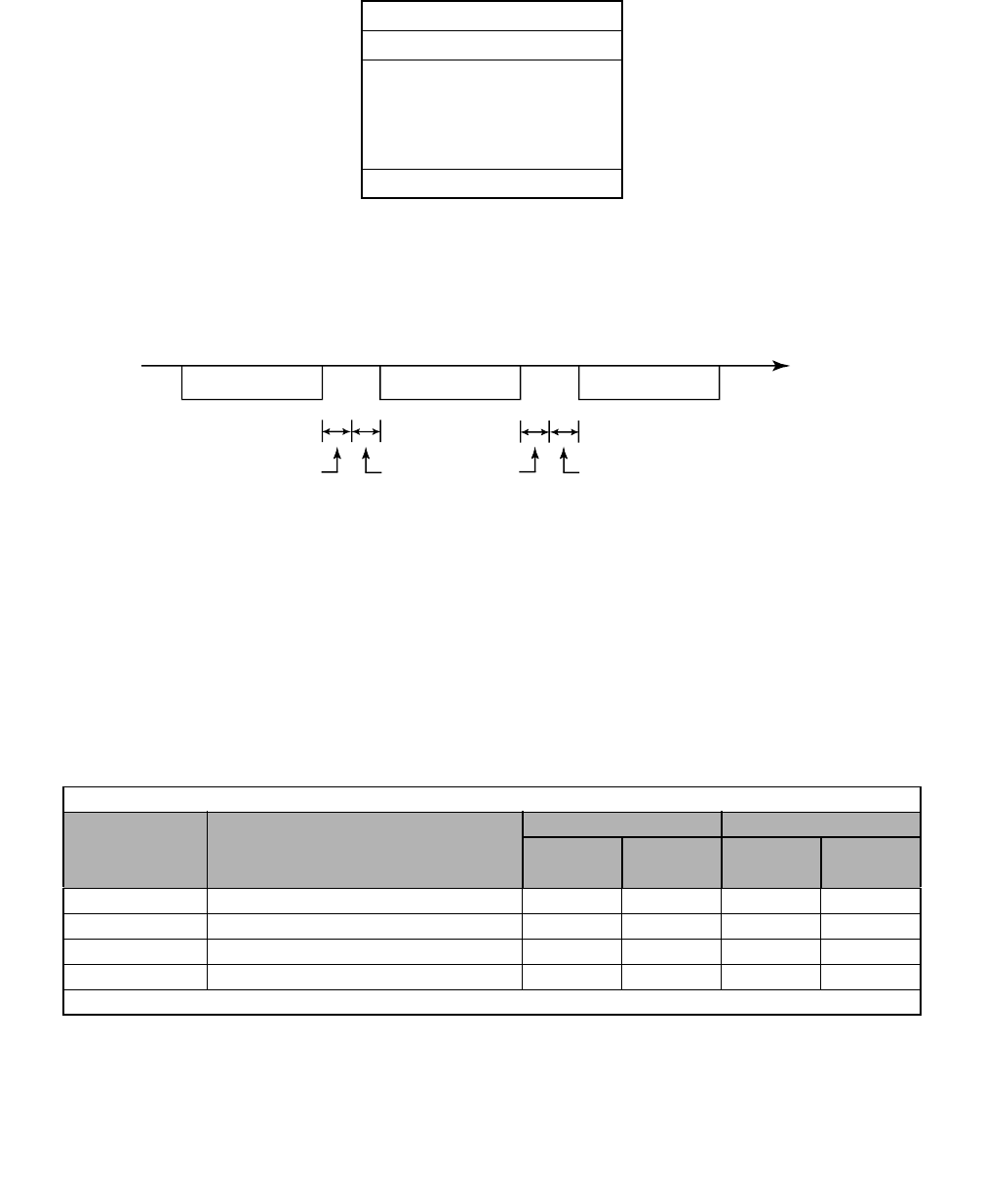
Communications D - 5
Message Format
In Modbus communication, the master sends commands to the slave, and the slave responds. The message format is
configured for both sending and receiving as shown below. The length of the data packet is controlled by the command
(function) contents.
Fig D.4 Message Format
The space between messages must support the following:
Fig D.5 Message Spacing
Slave Address
Set the Drive address from 0 to 20 Hex. If 0 is selected, commands from the master will be broadcast (i.e., the Drive will not
return a response message).
Function Code
The function code specifies command type. There are four function codes, as shown below.
Slave address
Function code
Data
Error check
Table D.3 Modbus Function Codes
Function Code
(Hexadecimal) Function
Command Message Response Message
Min.
(Bytes) Max.
(Bytes) Min.*
(Bytes) Max.
(Bytes)
03H Reading/Holding Register Contents 8 8 7 21
06H Write In Single Holding Register 8 8 8 8
08H Loopback Test 8 8 8 8
10H Write In Several Holding Registers 11 41 8 8
* Minimum bytes for a normal Response Message (error response message is always 5 bytes).
PLC to Drive
Drive to PLC
PLC to Drive
Command message Response message Command message Time (Seconds)
24 bits long 5ms min.
H5-06
setting
24 bits long

Communications D - 6
Data
Configure consecutive data by combining the storage register address (test code for a loopback address) and the data the
register contains. The data length changes depending on the command details.
Error Check
Errors are detected during communication using CRC-16. Perform calculations using the following method:
1. The factory setting for CRC-16 communication is typically zero, but when using the Modbus system, set the factory setting
to one (e.g., set all 16 bits to 1).
2. Calculate CRC-16 using MSB as slave address LSB, and LSB as the MSB of the final data.
3. Calculate CRC-16 for response messages from the slaves and compare them to the CRC-16 in the response messages.
CRC-16
At the end of the message, the data for CRC error checking is sent in order to detect errors in signal transmission. In Modbus
RTU, the error check is conducted in the form of a CRC-16 (Cyclical Redundancy Check). The CRC field checks the contents
of the entire message. It is applied regardless of any parity check method used for the individual characters of the message.
The CRC field is two bytes, containing 16-bit binary value. The CRC value is calculated by the transmitting device, which
appends the CRC to the message. The receiving device recalculates a CRC during receipt of the message, and compares the
calculated value to the actual value it received in the CRC field. If the two values are not equal, an error results.
The CRC is started by first preloading a 16-bit register to all 1’s. Then, a process begins of applying successive 8-bit bytes of
the message to the current contents of the register. Start and stop bits and the parity bit (if one is used) do not apply to the CRC.
During generation of the CRC, each 8-bit character is exclusive OR’ed with the register contents. Then the result is shifted in
the direction of the least significant bit (LSB), with a zero filled into the most significant bit (MSB) position. The LSB is
extracted and examined. If the LSB is a 1, the register is then exclusive OR’ed with a preset, fixed balue (A001h). If the LSB
is a 0, no exclusive OR takes place.
This process is repeated until eight shifts have been performed. After the last (eighth) shift, the next 8-bit byte is exclusive
OR’ed with the register’s current value, and the process repeats for eight more shifts as described above. The final contents of
the register, after all the bytes of the message have been applied, is the CRC value.
For applications using a host computer, detailed examples of a CRC generation using Quick Basic and in C are shown on the
following pages.

Communications D - 7
Typical CRC-16 Calculation Program in Quick Basic
crcsum# = &HFFFF&
crcshift# = &H0&
crcconst# = &HA001&
CLS
PRINT ”*********************************************”
PRINT
PRINT “ CRC-16 Calculator “
PRINT
PRINT ”*********************************************”
PRINT “If entering data in hex, precede the data with ‘&H’”
PRINT “ Example: 32decimal = 20hex = &H20”
PRINT ”*********************************************”
PRINT
INPUT “Enter the number of bytes in the message: “, maxbyte
FOR bytenum = 1 TO maxbyte STEP 1
PRINT “Enter byte “; bytenum; “:”:
INPUT byte&
byte& = byte& AND &HFF&
crcsum# = (crcsum# XOR byte7) AND &HFFFF&
FOR shift = 1 TO 8 STEP 1
crcshift# = (INT(crcsum# / 2)) AND &H7FFF&
IF crcsum# AND &H1& THEN
crcsum# = crcshift# XOR crcconst#
ELSE
crcsum# = crcshift#
END IF
NEXT shift
NEXT bytenum
lower& = crcsum# AND &HFF&
upper& = (INT(crcsum# / 256)) AND &HFF&
PRINT “Lower byte (1st) = “, HEX$(lower&)
PRINT “Upper byte (2nd) = “, HEX$(upper&)
Typical CRC-16 Calculation Program in C
// *buf pointer to character array that contains the characters used to calculate CRC
// bufLen number of characters to calculate CRC for
// *crc pointer to the array that contains the calculated CRC
void getMBCRC(cahr *buf, int bufLen, char *crc) {
unsigned long crc_0 = 0xffff; // Declare and initialize variables
unsigned long crc_1 = 0x0000;
int i,j;
for (i=0; i<bufLen; i++) { // Loop through characters of input array
crc_0 ^= ((unsigned long)buf[i] & 0x0ff); // XOR current character with 0x00ff
for (j=0;j<8;j++){ // Loop through character bits
crc_1 = (crc_0 >> 1) & 0x7fff; // Shift result right one place and store
if (crc_0 & 0x0001) // if pre-shifted value bit 0 is set
crc_0 = (crc_1 ^ 0xa001); // XOR the shifted value with 0xa001
else // if pre-shifted value bit 0 is not set
crc_0 = crc_1; // set the pre-shifted value equal to the shifted value
}
}
crc[0] = (unsigned char)((crc_0/256) & 0x00ff); // Hi byte
crc[1] = (unsigned char)((crc_0 & 0x00ff); // Lo byte
return;
}
No Response Message
The Drive disregards the command message and does not return the response message in the following cases:
1. In simultaneous broadcasting of data (slave address field is 0), all slaves execute but do not respond.
2. When a communication error (overrun, framing, parity, or CRC-16) is detected in the command message.
3. When the slave address in the command message does not coincide with the address set in the slave.
4. When the command message data length is not proper.
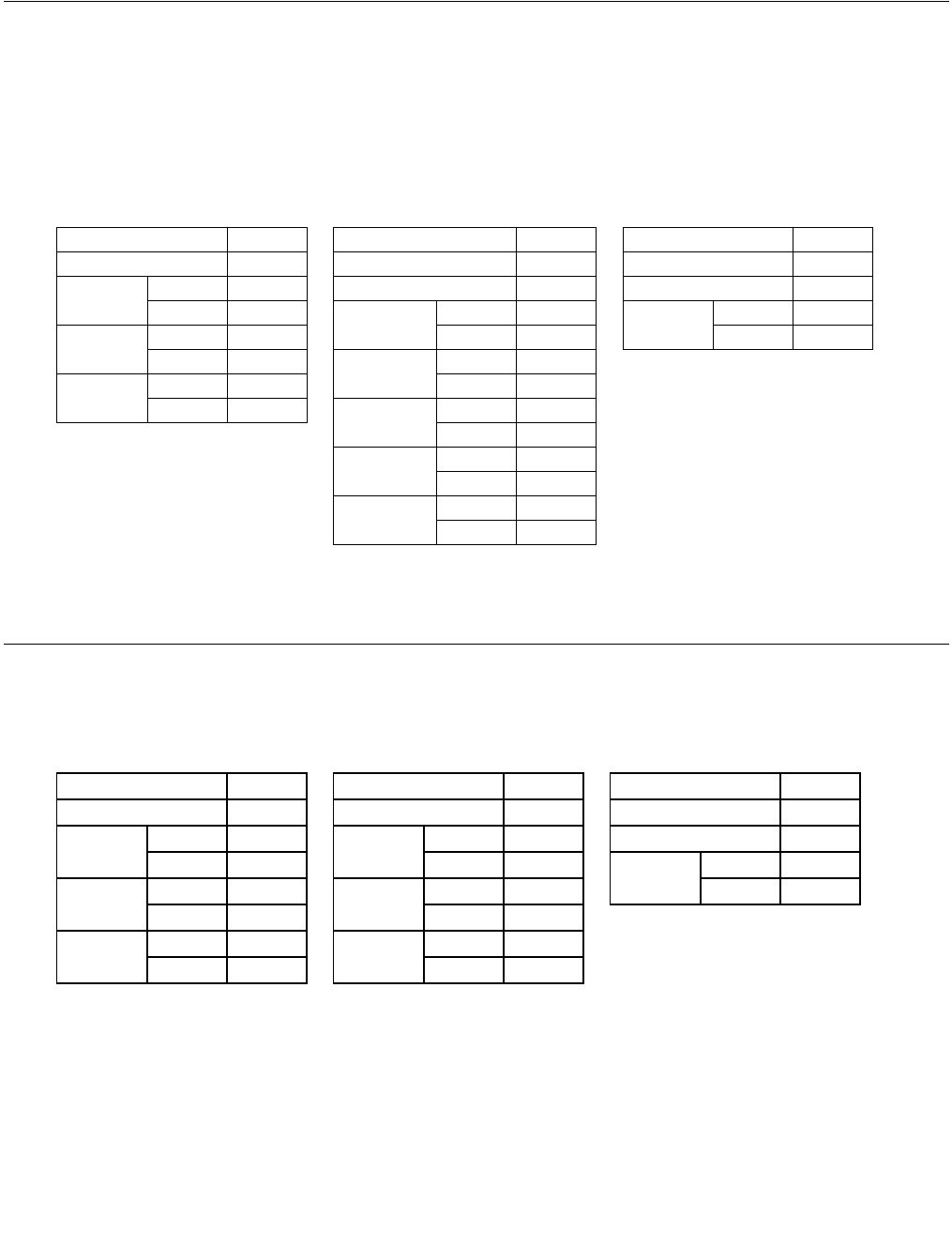
Communications D - 8
Modbus Function Code Details
Reading/Holding Register Contents (03H)
Read the contents of the storage register only for specified quantities. The addresses must be consecutive, starting from a
specified address. The data content of the storage register are separated into higher 8 bits and lower 8 bits.
The following table shows message examples when reading status signals, error details, data link status, and frequency
references from the slave 2 Drive.
Fig D.6 Function Code 03H Message Example
Write In Single Holding Register (06H)
Fig D.7 Function Code 06H Message Example
Command Message Response Message
(During Normal Operation) Response Message
(During Error)
Slave Address 02H Slave Address 02H Slave Address 02H
Function Code 03H Function Code 03H Function Code 83H
Start
Address
Higher 00H Data quantity 08H Error code 03H
Lower 20H 1st storage
register
Higher 00H CRC-16 Higher F1H
Quantity Higher 00H Lower 65H Lower 31H
Lower 04H Next storage
register
Higher 00H
CRC-16 Higher 45H Lower 00H
Lower F0H Next storage
register
Higher 00H
Lower 00H
Next storage
register
Higher 01H
Lower F4H
CRC-16 Higher AFH
Lower 82H
Command Message Response Message
(During Normal Operation) Response Message
(During Error)
Slave address 01H Slave address 01H Slave address 01H
Function code 06H Function code 06H 80H + Function code 86H
Register
Address
Higher 00H Register
Address
Higher 00H Error Code 21H
Lower 01H Lower 01H CRC-16 Higher 82H
Setting
Data
Higher 00H Setting
Data
Higher 00H Lower 78H
Lower 03H Lower 03H
CRC-16 Higher 98H CRC-16 Higher 98H
Lower 0BH Lower 0BH
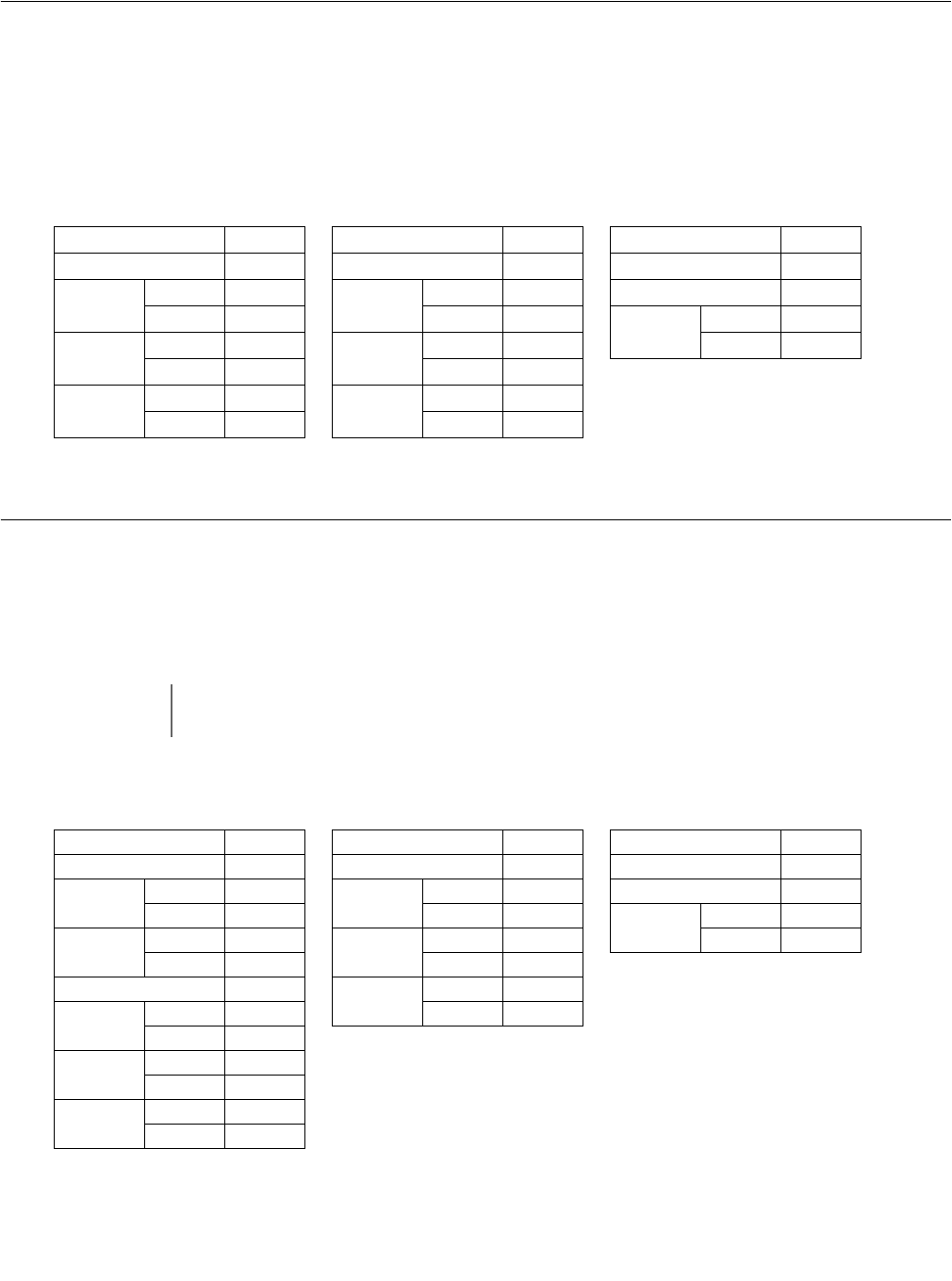
Communications D - 9
Loopback Test (08H)
The loopback test returns the command message directly as the response message without changing the contents to check the
communications between the master and slave. Set user-defined test code and data values.
The following table shows a message example when performing a loopback test with the slave 1 Drive.
Fig D.8 Function Code 08H Message Example
Write In Several Holding Registers (10H)
Write the specified data to the registers from the specified addresses. The written data must be consecutive, starting from the
specified address in the command message: Higher 8 bits, then lower 8 bits, in storage register address order. The following
table shows an example of a message when a forward run command and a speed command of 60.0Hz has been set in slave 1 by
the PLC.
Fig D.9 Function Code 10H Message Example
Command Message Response Message
(During Normal Operation) Response Message
(During Error)
Slave address 01H Slave address 01H Slave address 01H
Function code 08H Function code 08H Function code 88H
Test Code Higher 00H Test Code Higher 00H Error Code 01H
Lower 00H Lower 00H CRC-16 Higher 86H
Data Higher A5H Data Higher A5H Lower 50H
Lower 37H Lower 37H
CRC-16 Higher DAH CRC-16 Higher DAH
Lower 8DH Lower 8DH
IMPORTANT Set the number of data specified using command messages as quantity of specified messages x 2. Handle
response messages in the same way.
Command Message Response Message
(During Normal Operation) Response Message
(During Error)
Slave Address 01H Slave Address 01H Slave Address 01H
Function Code 10H Function Code 10H Function Code 90H
Start
Address
Higher 00H Start
Address
Higher 00H Error code 02H
Lower 01H Lower 01H CRC-16 Higher CDH
Quantity Higher 00H Quantity Higher 00H Lower C1H
Lower 02H Lower 02H
No. of data 04H CRC-16 Higher 10H
Lead data Higher 00H Lower 08H
Lower 01H
Next data Higher 02H
Lower 58H * No. of data = 2 x (quantity)
CRC-16 Higher 63H
Lower 39H
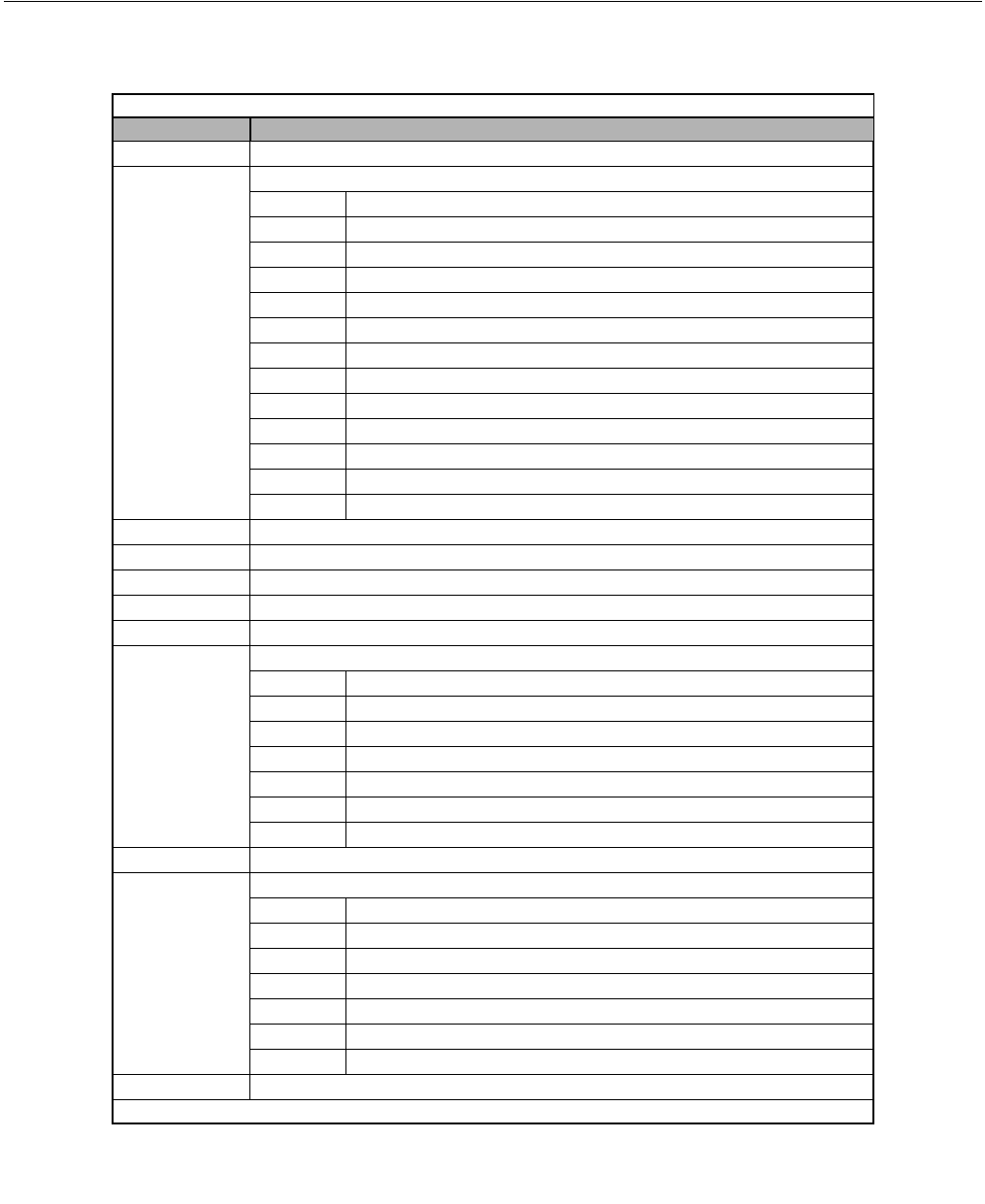
Communications D - 10
Modbus Data Tables
The data tables are shown below. The types of data are as follows: Reference data, monitor data, broadcast data, and parameter
data.
Reference Data
The reference data table is shown below. Reference data can be read and written to.
Table D.4 Reference Data
Register No. Contents
0000H Reserved
0001H
Input terminal status
Bit 0 Run Forward command Run = 1 Stop = 0
Bit 1 Run Reverse command Run = 1 Stop = 0
Bit 2 External fault: Fault (EFO) = 1
Bit 3 Fault reset: Reset command = 1
Bit 4 ComNet
Bit 5 ComCtrl
Bit 6 Multi-function digital input command 3 (terminal S3)
Bit 7 Multi-function digital input command 4 (terminal S4)
Bit 8 Multi-function digital input command 5 (terminal S5)
Bit 9 Multi-function digital input command 6 (terminal S6)
Bit A Multi-function digital input command 7 (terminal S7)
Bit B Multi-function digital input command 8 (terminal S8)
Bits C to F Not used
0002H Frequency reference (Set units using parameter o1-03)
0003H to 0005H Not used
0006H PID Setpoint
0007H Analog output 1 (terminal FM) setting (-11V = 726 to 11V = 726) → 10V = 660
0008H Analog output 2 (terminal AM) setting (-11V = 726 to 11V = 726) → 10V = 660
0009H
Multi-function contact output settings
Bit 0 Digital output 1 (terminal M1-M2): ON = 1 OFF = 0
Bit 1 Digital output 2 (terminal M3-M4): ON = 1 OFF = 0
Bit 2 Digital output 3 (terminal M5-M6): ON = 1 OFF = 0
Bits 3 to 5 Not used
Bit 6 Set Fault contact (terminal MA-MC) output using bit 7: ON = 1OFF = 0
Bit 7 Fault contact (terminal MA-MC): ON = 1OFF = 0
Bits 8 to F Not used
000AH to 000EH Not used
000FH
Reference selection settings
Bit 0 Not used
Bit 1 Input PID setpoint 1: Enabled 0: Disabled
Bits 3 to B Not used
C Broadcast data terminal S5 input: Enabled = 1 Disabled = 0
D Broadcast data terminal S6 input: Enabled = 1 Disabled = 0
E Broadcast data terminal S7 input: Enabled = 1 Disabled = 0
F Broadcast data terminal S8 input: Enabled = 1 Disabled = 0
000CH to 000FH Refer to Table D.6, broadcast data, when using bits 000CH through 000FH
Note:Write 0 to all unused bits. Do not write data to reserved or “Not Used” registers and bits.
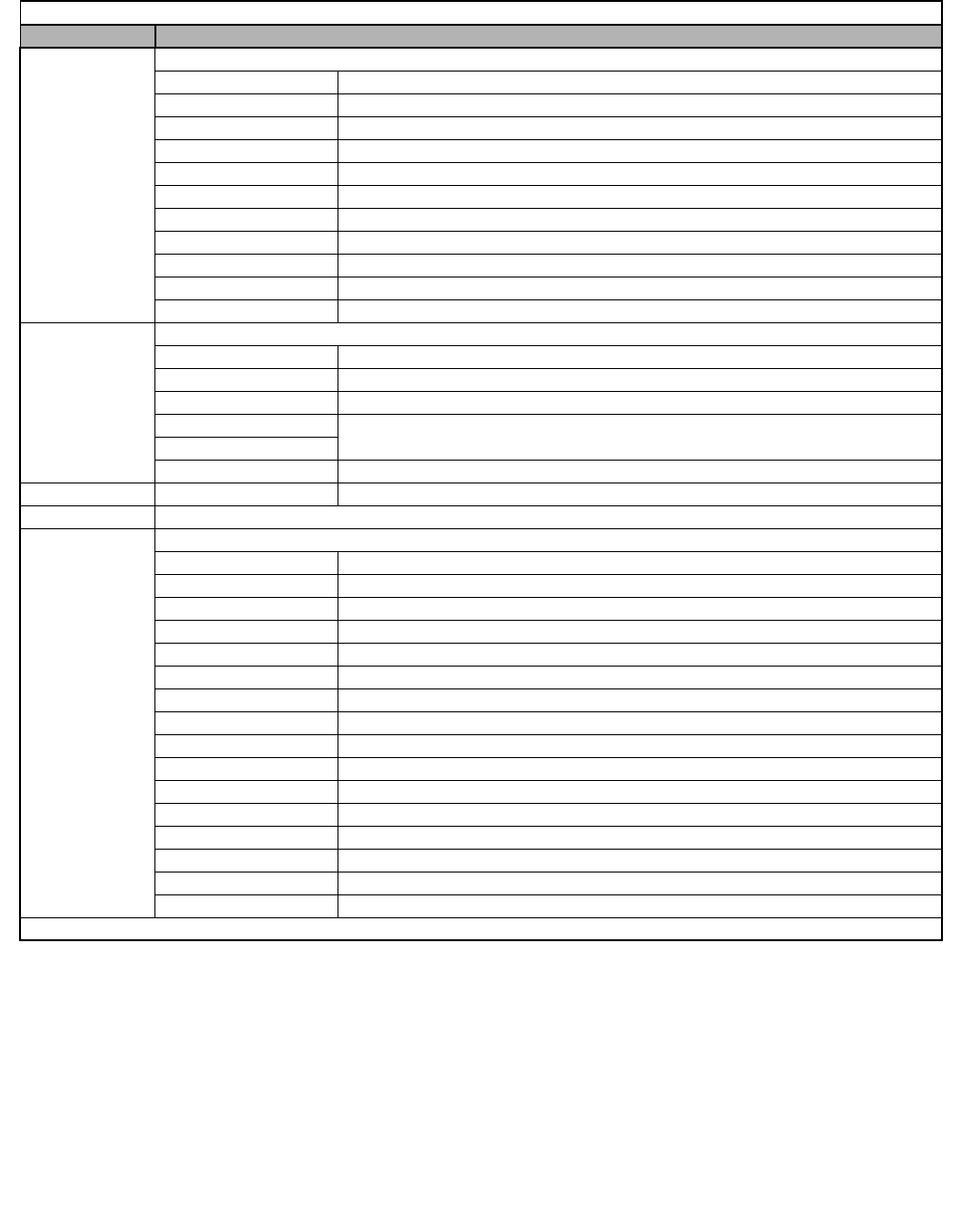
Communications D - 11
Monitor Data
The following table shows the monitor data. Monitor data can only be read.
Table D.5 Monitor Data
Register No. Contents
0010H
Status signal
Bit 0 Run command
Bit 1 At zero speed
Bit 2 Reverse operation
Bit 3 Fault reset signal
Bit 4 Speed agree
Bit 5 Drive ready
Bit 6 Alarm
Bit 7 Fault
Bits 8 to D Not used
Bit E ComRef
Bit F ComCtrl
0011H
Fault details
Bit 0 OPE error
Bit 1 Err error
Bit 2 Program mode
Bit 3 1CN status
Bit 4
Bit 5 to F Not used
0012H oPE details oPE error code (OPE01=1, OPE02=2, OPE03=3, OPE06=6, OPE10=10, OPE11=11)
0013H Not used
0014H
Fault content 1
Bit 0 Fuse blown (FU)
Bit 1 DC bus undervoltage (UV1)
Bit 2 Control power supply undervoltage (UV2)
Bit 3 Main circuit answerback (UV3)
Bit 4 Not used
Bit 5 Ground fault (GF)
Bit 6 Overcurrent (OC)
Bit 7 Overvoltage (OV)
Bit 8 Heatsink overtemperature (OH)
Bit 9 Drive overheat (OH1)
Bit A Motor overload (OL1)
Bit B Drive overload (OL2)
Bit C Overtorque 1 (OL3)
Bit D Overtorque 2 (OL4)
Bit E Dynamic Braking Transistor (RR)
Bit F Dynamic Braking Resistor (RH)
Note: Write 0 to all unused bits. Do not write data to reserved or “Not Used” registers and bits.
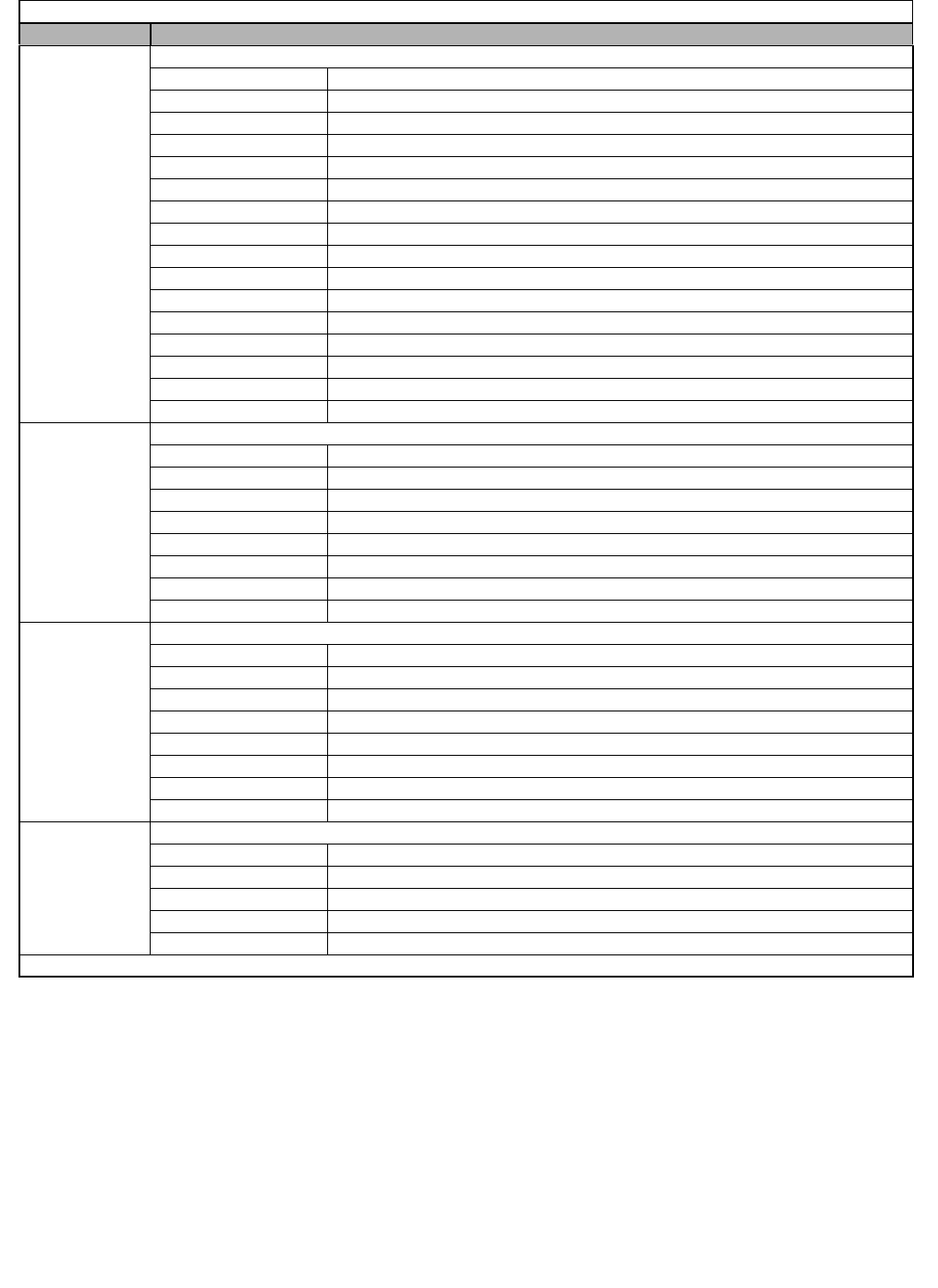
Communications D - 12
0015H
Fault content 2
Bit 0 External fault 3 (EF3)
Bit 1 External fault 4 (EF4)
Bit 2 External fault 5 (EF5)
Bit 3 External fault 6 (EF6)
Bit 4 External fault 7 (EF7)
Bit 5 External fault 8 (EF8)
Bit 6 Not used
Bit 7 Overspeed (OS)
Bit 8 Speed deviation (DEV)
Bit 9 PG open (PGO)
Bit A Input phase loss (PF)
Bit B Output phase loss (LF)
Bit C DCCT fault (CF)
Bit D Operator disconnect (OPR)
Bit E EEPROM write-in fault (ERR)
Bit F Not used
0016H
Fault content 3
Bit 0 Modbus communication error (CE)
Bit 1 Bus error (BUS)
Bit 2 E-15, SI-F/G communications error (E-15)
Bit 3 E-10, SI-F/G fail
Bit 4 Control fault (CF)
Bit 5 Zero servo fault (SVE)
Bit 6 External fault (EF0)
Bits 7 to F Not used
0017H
CPF content 1
Bit 0 Not used
Bit 1 Not used
Bit 2 CPF02 fault
Bit 3 CPF03 fault
Bit 4 CPF04 fault
Bit 5 CPF05 fault
Bit 6 CPF06 fault
Bits 7 to F Not used
0018H
CPF content 2
Bit 0 CPF20 fault
Bit 1 CPF21 fault
Bit 2 CPF22 fault
Bit 3 CPF23 fault
Bits 4 to F Not used
Note: Write 0 to all unused bits. Do not write data to reserved or “Not Used” registers and bits.
Table D.5 Monitor Data (Continued)
Register No. Contents
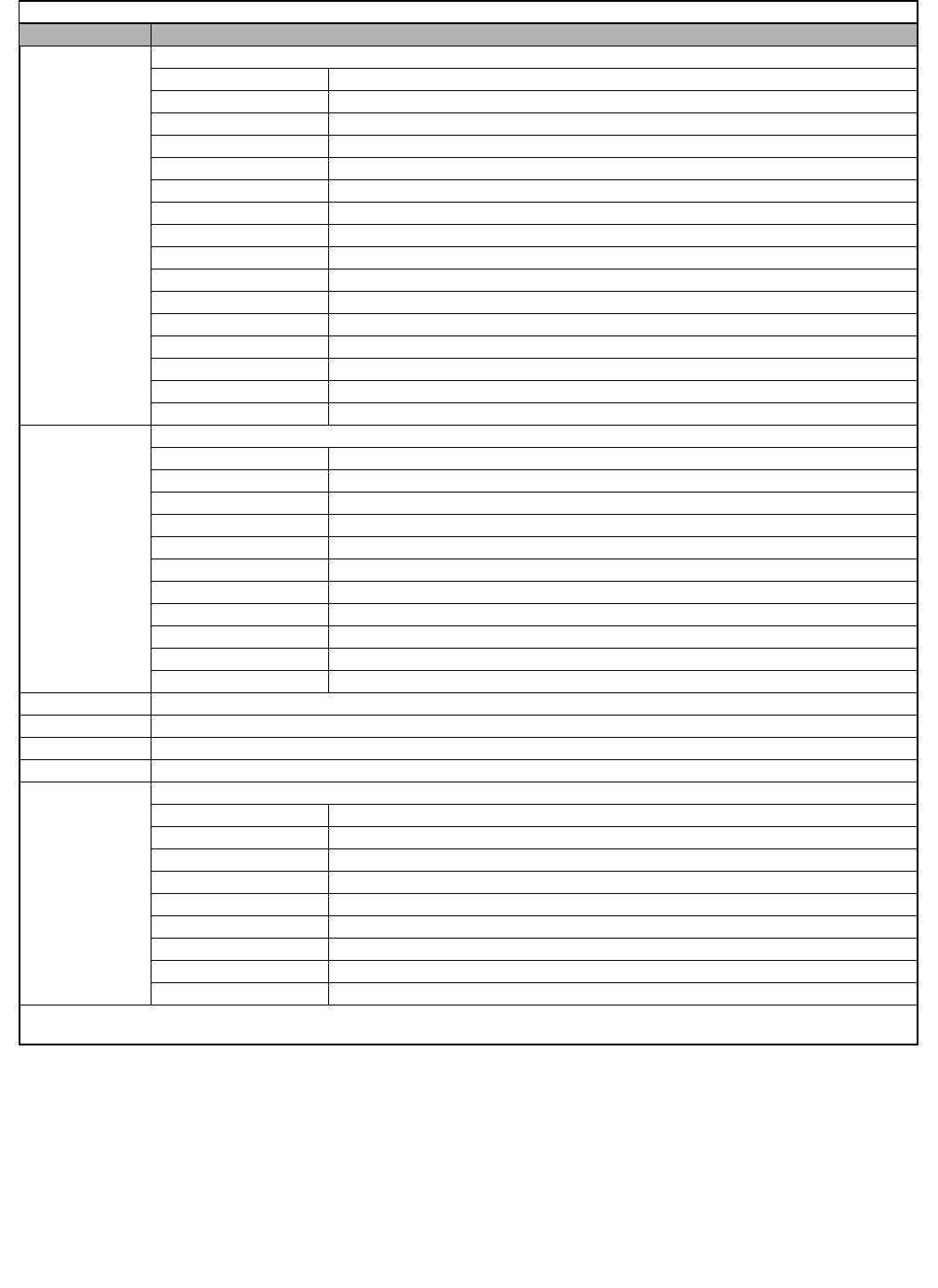
Communications D - 13
0019H
Alarm content 1
Bit 0 Undervoltage (UV)
Bit 1 Overvoltage (OV)
Bit 2 Heatsink overtemperature (OH)
Bit 3 Drive overheat fault (OH1)
Bit 4 Overtorque 1 detection (OL3)
Bit 5 Overtorque 2 detection (OL4)
Bit 6 2-wire sequence input (EF)
Bit 7 External Baseblock (BB)
Bit 8 External fault 3 (EF3)
Bit 9 External fault 4 (EF4)
Bit A External fault 5 (EF5)
Bit B External fault 6 (EF6)
Bit C External fault 7 (EF7)
Bit D External fault 8 (EF8)
Bit E Cooling fan (FAN)
Bit F Overspeed (OS)
001AH
Alarm content 2
Bit 0 Speed deviation (DEV)
Bit 1 PG open (PGO)
Bit 2 Operator disconnected (OPR)
Bit 3 Modbus communication (CE)
Bit 4 Bus error (BUS)
Bit 5 Waiting for transmission (CALL)
Bit 6 Motor overload (OL1)
Bit 7 Drive overload (OL2)
Bit 8 SI-R/G alarm (E-15)
Bit 9 External fault (EF0)
Bits A to F Not used
001BH Not used
001CH Not used
001DH Not used
001FH Not used
0020H
Drive status
Bit 0 Operation: Operating = 1 Stopped = 0
Bit 1 Reverse operation: Reverse operation 0: Forward operation
Bit 2 Drive start-up complete: Completed = 1 Not completed = 0
Bit 3 Fault: Fault = 1
Bit 4 Data setting error: Error = 1
Bit 5 Multi-function digital output 1 (terminal M1 - M2): ON = 1 OFF = 0
Bit 6 Multi-function digital output 2 (terminal M3 - M4): ON = 1 OFF = 0
Bit 7 Multi-function digital output 3 (terminal M5 - M6): ON = 1 OFF = 0
Bits 8 to F Not used
Note: Communication error details are stored until an error reset is input (errors can be reset while the Drive is operating).
Note: Write 0 to all unused bits. Do not write data to reserved or “Not Used” registers and bits.
Table D.5 Monitor Data (Continued)
Register No. Contents
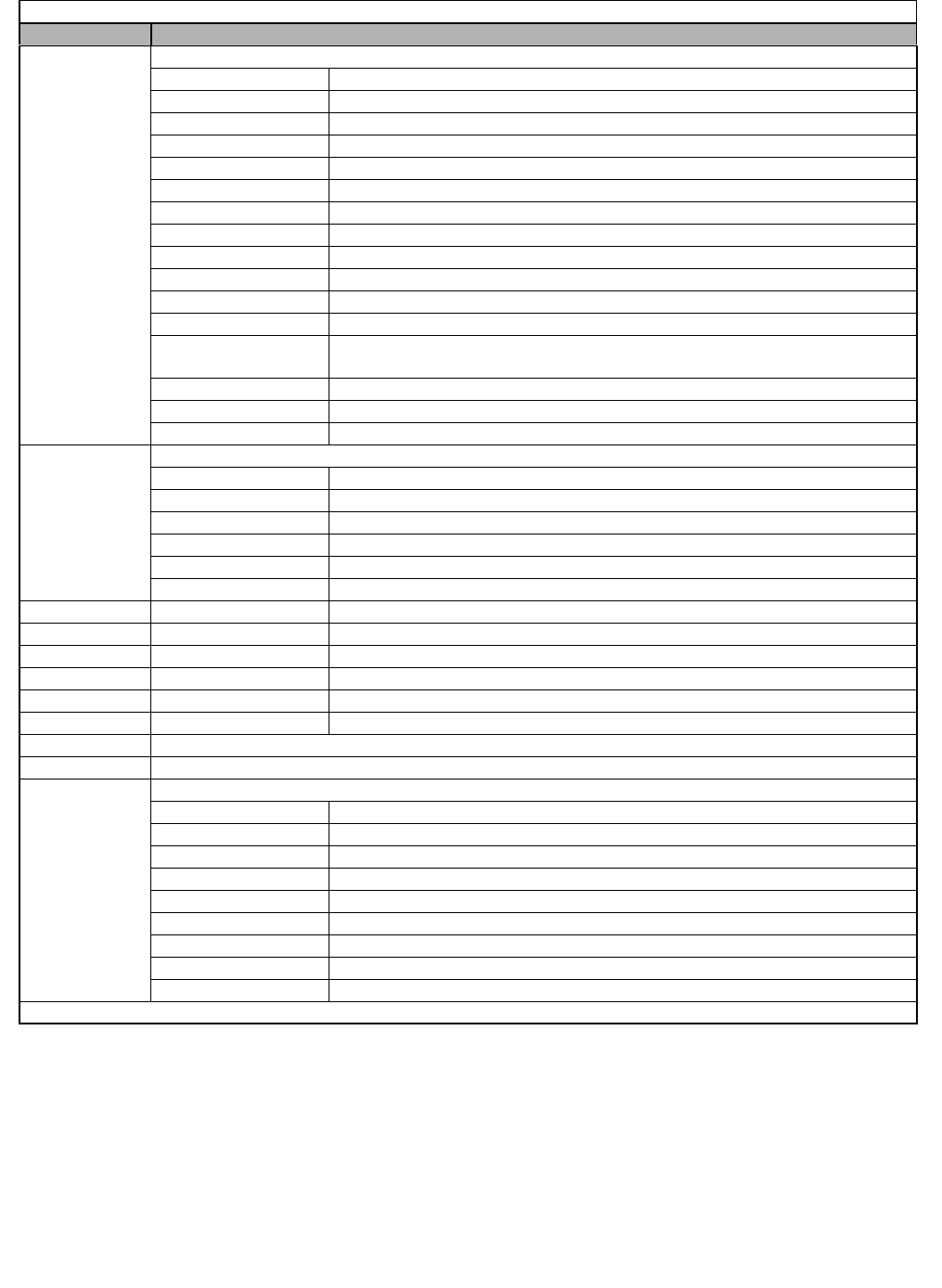
Communications D - 14
Table D.5 Monitor Data (Continued)
Register No. Contents
0021H
Fault details
Bit 0 Overcurrent (OC) or Ground fault (GF)
Bit 1 Main circuit overvoltage (OV)
Bit 2 Drive overload (OL2)
Bit 3 Drive overheat (OH1, OH2)
Bit 4 Not used
Bit 5 Fuse blown (PUF)
Bit 6 PID feedback reference lost (FbL)
Bit 7 External error (EF, EFO)
Bit 8 Hardware error (CPF)
Bit 9 Motor overload (OL1) or Overtorque 1 (OL3) detected
Bit A PG open detected (PGO), Overspeed (OS) or Speed deviation (DEV)
Bit B Main circuit undervoltage (UV) alarm
Bit C Main circuit undervoltage (UV1), control power supply error (UV2),
Soft charge circuit error (UV3)
Bit D Output phase loss (LF)
Bit E Modbus communication error (CE)
Bit F Operator disconnected (OPR)
0022H
Data link status
Bit 0 Writing data
Bit 1 Not used
Bit 2 Not used
Bit 3 Upper and lower limit errors
Bit 4 Data integrity error
Bits 5 to F Not used
0023H Frequency reference U1-01
0024H Output frequency U1-02
0025H Output voltage reference U1-06
0026H Output current U1-03
0027H Output power U1-08
0028H Torque reference U1-09
0029H Not used
002AH Not used
002BH
Sequence input status
Bit 0 Input terminal S1: ON = 1 OFF = 0
Bit 1 Input terminal S2: ON = 1 OFF = 0
Bit 2 Multi-function digital input terminal S3: ON = 1 OFF = 0
Bit 3 Multi-function digital input terminal S4: ON = 1 OFF = 0
Bit 4 Multi-function digital input terminal S5: ON = 1 OFF = 0
Bit 5 Multi-function digital input terminal S6: ON = 1 OFF = 0
Bit 6 Multi-function digital input terminal S7: ON = 1 OFF = 0
Bit 7 Multi-function digital input terminal S8: ON = 1 OFF = 0
Bits 8 to F Not used
Note: Write 0 to all unused bits. Do not write data to reserved or “Not Used” registers and bits.
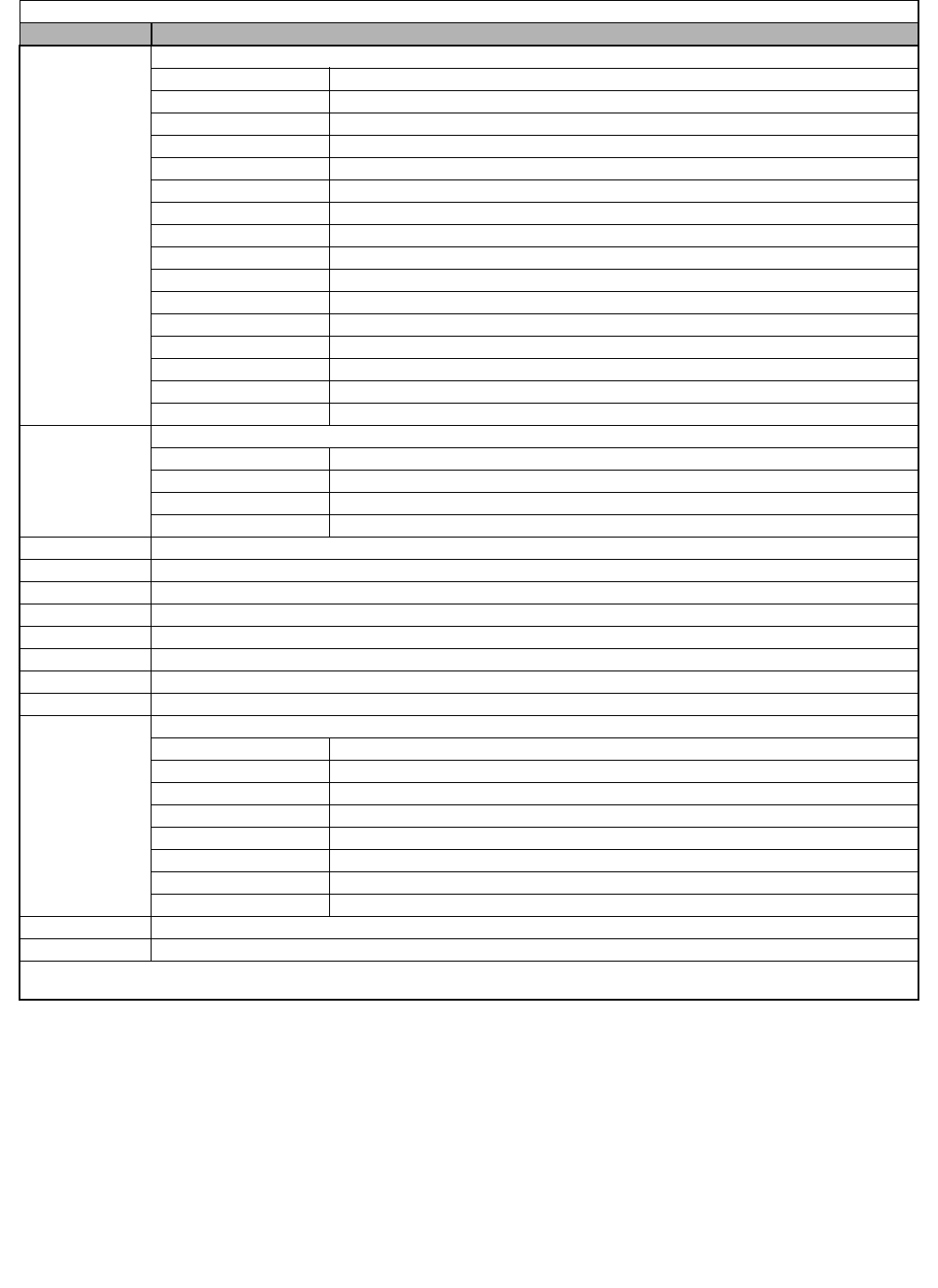
Communications D - 15
002CH
Drive status
Bit 0 Operation: Operating = 1
Bit 1 Zero speed: Zero speed = 1
Bit 2 Frequency agree: Matched = 1
Bit 3 Desired frequency agree: Matched = 1
Bit 4 Frequency detection 1: Output frequency ≤ L4-01 = 1
Bit 5 Frequency detection 2: Output frequency ≥ L4-01 = 1
Bit 6 Drive start-up completed: Start-up completed = 1
Bit 7 Low voltage detection: Detected = 1
Bit 8 Baseblock: Drive output baseblock = 1
Bit 9 Frequency reference mode: Not communication = 1 Communication = 0
Bit A Run command mode: Not communication = 1 Communication = 0
Bit B Overtorque detection: Detected = 1
Bit C Frequency reference lost: Lost = 1
Bit D Retrying error: Retrying = 1
Bit E Error (including Modbus communications time-out): Error occurred = 1
Bit F Modbus communications time-out Timed out = 0
002DH
Multi-function digital output status
Bit 0 Multi-function digital output 1 (terminal M1-M2): ON = 1 OFF = 0
Bit 1 Multi-function digital output 2 (terminal M3-M4): ON = 1 OFF = 0
Bit 2 Multi-function digital output 3 (terminal M5-M6): ON = 1 OFF = 0
Bits 3 to F Not used
002EH - 0030H Not used
0031H Main circuit DC voltage
0032H - 0037H Not used
0038H PID feedback level (Input equivalent to 100%/Max. output frequency; 10/1%; without sign)
0039H PID input level (±100%/±Max. output frequency; 10/1%; with sign)
003AH PID output level (±100%/±Max. output frequency; 10/1%; with sign)
003BH CPU software number
003CH Flash software number
003DH
Communication error details
Bit 0 CRC error
Bit 1 Invalid data length
Bit 2 Not used
Bit 3 Parity error
Bit 4 Overrun error
Bit 5 Framing error
Bit 6 Time-out
Bits 7 to F Not used
003EH kVA setting
003FH Control method
Note: Communication error details are stored until an error reset is input (errors can be reset while the Drive is operating).
Note: Write 0 to all unused bits. Do not write data to reserved or “Not Used” registers and bits.
Table D.5 Monitor Data (Continued)
Register No. Contents
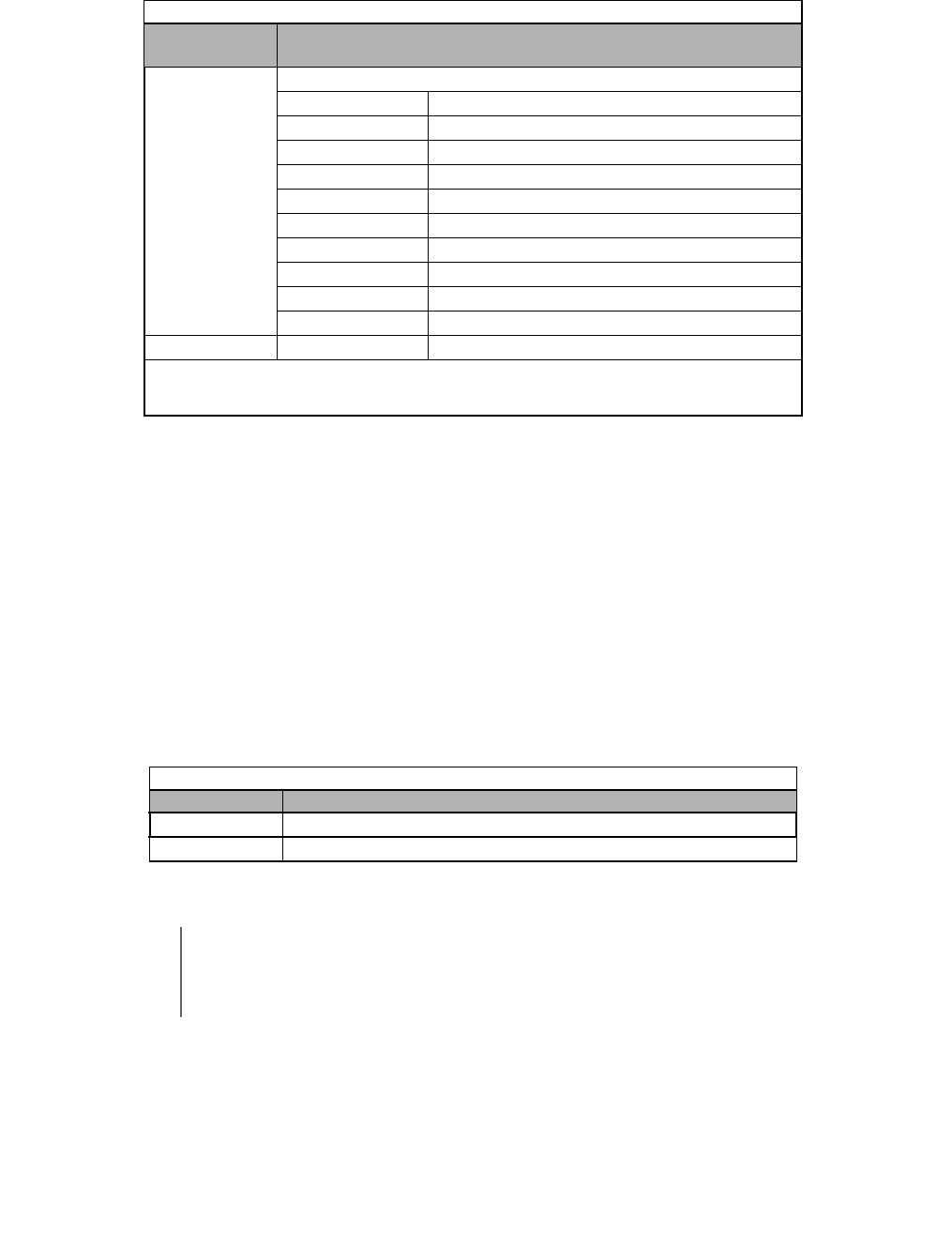
Communications D - 16
Broadcast Data
The following table shows the broadcast data.
Enter Command
When writing parameters to the Drive from the master using Modbus communication, the parameters are temporarily stored in
the constant data area in the Drive, and they will be lost if power to the Drive is shut OFF. To enable these parameters in the
parameter data area, which is retained when power is removed, use the Enter command.
There are two types of Enter commands:
1. Enter command that enables parameter data in RAM.
2. Enter command that writes data to EEPROM (non-volatile memory) in the Drive and also enables data in RAM.
The following table shows the Enter command registers. Enter command registers can only be written.
The Enter command is enabled by writing 0 to register number 0900H or 0910H.
Table D.6 Broadcast Data
Register
Address Contents
0001H
Operation signal
Bit 0 Run command: Running = 1 Stopped = 0
Bit 1 Run direction: Reverse = 1 Forward = 0
Bits 2 and 3 Not used
Bit 4 External fault (set using H1-01): Fault = 1
Bit 5 Fault reset (set using H1-02): Reset = 1
Bits 6 to B Not used
Bit C Multi-function digital input terminal S5 input
Bit D Multi-function digital input terminal S6 input
Bit E Multi-function digital input terminal S7 input
Bit F Multi-function digital input terminal S8 input
0002H Frequency reference 30000/100%
Note: Bit signals not defined in the broadcast operation signals use local node data signals continuously.
Note: Refer to register 000FH, bits 000CH through 000FH, in Table D.4 when using bits 000CH through
000FH of broadcast data register 0001H.
Table D.7 Enter Command
Register No. Contents
0900H Write parameter data to EEPROM.
0910H Parameter data is not written to EEPROM, but refreshed in RAM only.
IMPORTANT
The maximum number of times you can write to EEPROM using the Drive is 100,000. Do not frequently
execute Enter command (0900H) written to EEPROM.
The Enter command registers are write-only. Consequently, if reading these registers, the register address
will become invalid (Error code: 02H).
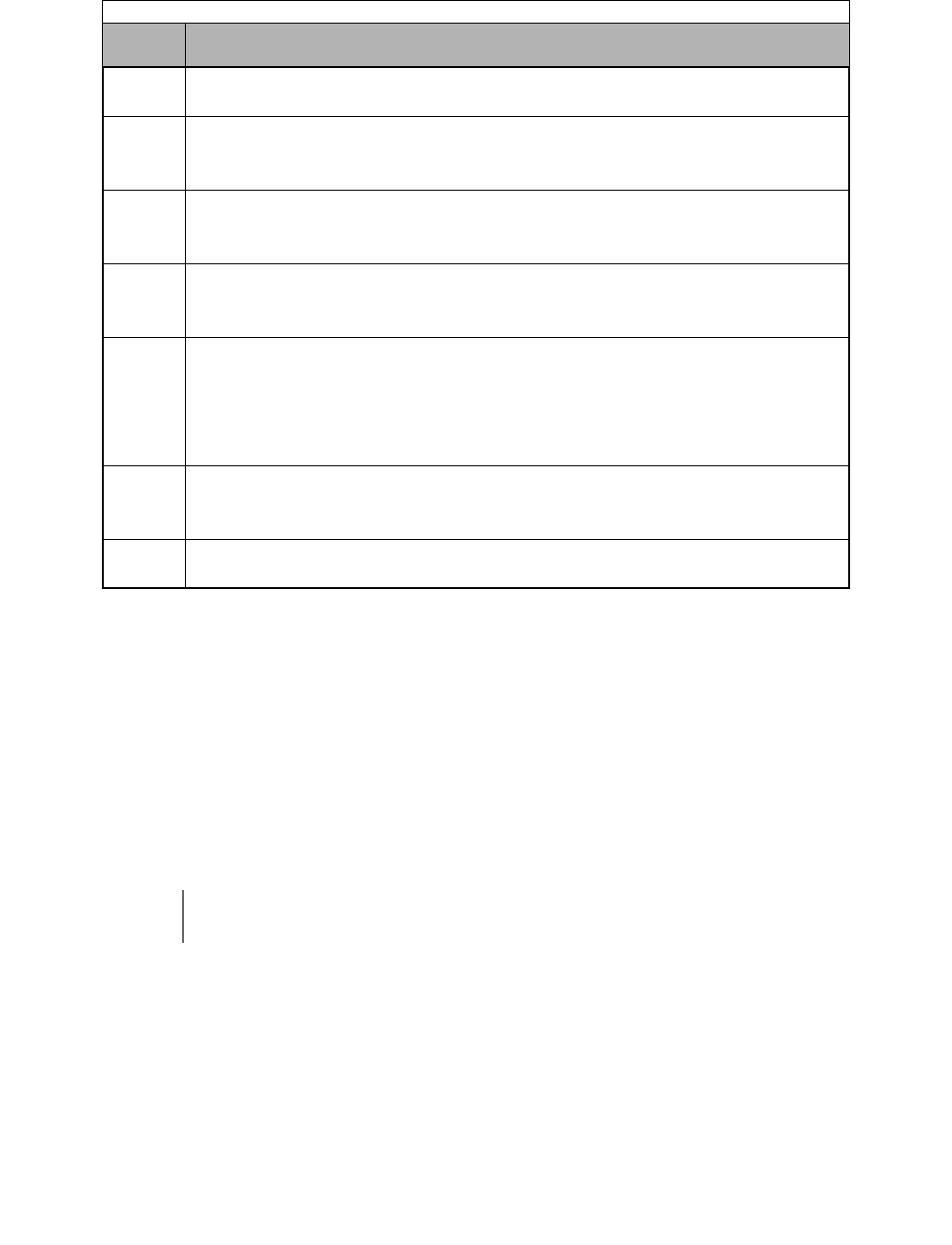
Communications D - 17
Error Codes
The following table shows Modbus communication error codes.
Slave Not Responding
In the following cases, the slave will ignore the write function.
• When a communication error (overrun, framing, parity, or CRC-16) is detected in the command message.
• When the slave address in the command message and the slave address in the Drive do not agree.
• When the data that configures the message and the data time length exceed 24 bits.
• When the command message data length is invalid.
Table D.8 Error Codes
Error
Code Contents
01H Function code error
A function code other than 03H, 08H, or 10H has been set by the master.
02H
Invalid register number error
• The register address you are attempting to access is not recorded anywhere.
• With broadcast sending, a start address other than 0000H, 0001H, or 0002H has been set.
03H
Invalid quantity error
• The number of data packets being read or written is outside the range of 1 to 16.
• In write mode, the number of data packets in the message is not No. of packets x 2.
21H
Data setting error
• Upper limit or lower limit error has occurred in the control data or when writing parameters.
• When writing parameters, the parameter setting is invalid.
22H
Write mode error
• Attempting to write parameters to the Drive during run.
• Attempting to write via Enter commands during run.
• Attempting to write parameters other than A1-00 to A1-05, E1-03, or 02-04 when a
CPF03 (defective EEPROM) fault has occurred.
• Attempting to write read-only data.
23H
Writing during main circuit undervoltage (UV) fault
• Writing parameters to the Drive during UV (main circuit undervoltage) alarm.
• Writing via Enter commands during UV (main circuit undervoltage) alarm.
24H Writing error during parameters processing
Attempting to write parameters while processing parameters in the Drive.
IMPORTANT If the slave address specified in the command message is 0, all slaves execute the write function, but do not
return response messages to the master.
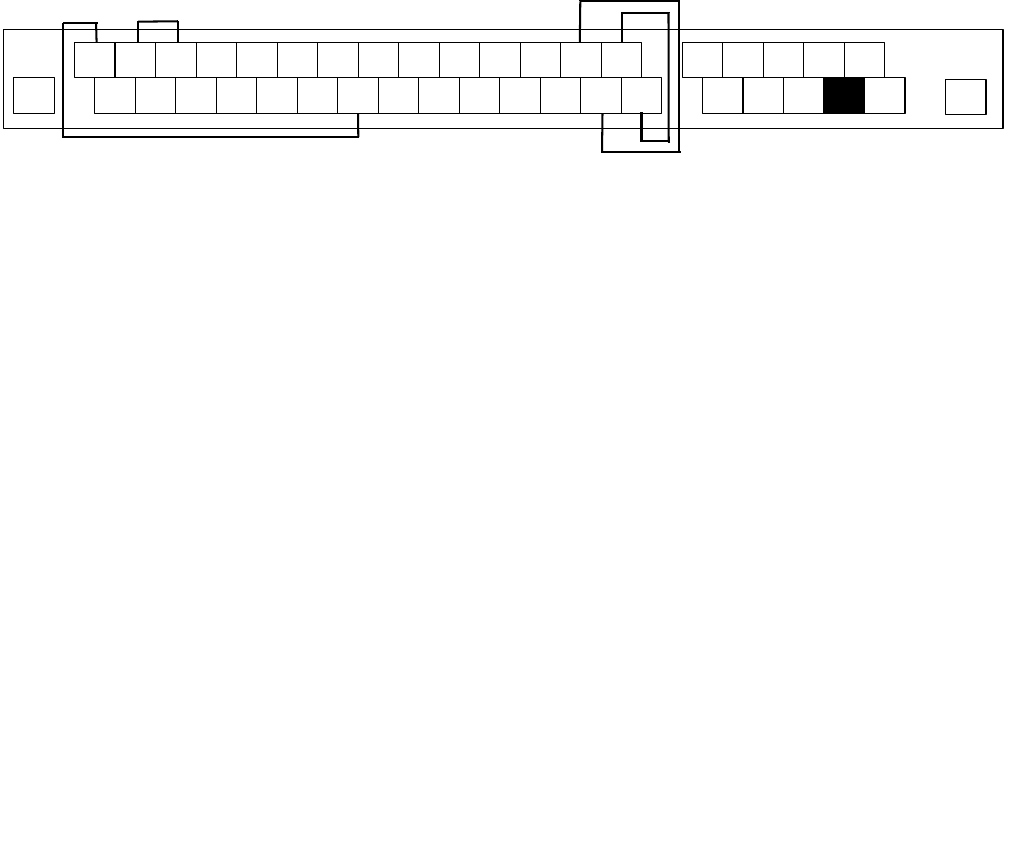
Communications D - 18
Modbus Self-Diagnosis
The Drive has a built-in function for self-diagnosing the operations of the serial communication interface circuits. The
self-diagnosis function tests the serial communications hardware of the Drive by jumpers the send and receive terminals to
receive the same message as the Drive sends.
Perform the self-diagnosis function using the following procedure.
1. Turn ON the power supply to the Drive, and set parameter H1-05 (Terminal S7 function selection) to 67 (communication
test mode).
2. Turn OFF the power supply to the Drive.
3. Jumper the following terminals while the power supply is turned OFF (see diagram below):
Connect S+ to R+.
Connect S- to R-.
Connect S7 to SN.
4. Turn ON the terminating resistor. (Turn ON pin 1 on DIP switch 1).
5. Turn ON the power supply to the Drive again.
Fig D.10 Communication Terminal Connection for Self -Diagnosis Function
6. During normal self-diagnostic operation, the Digital Operator displays the frequency reference value. If an error occurs, a
CE (Modbus communication error) alarm will be displayed on the Digital Operator, the fault contact output will be turned
ON, and the Drive operation ready signal will be turned OFF.
SN SC SP A1 A2 +V AC -V A3 MP AC RP R+ R- MCM5 M6 MA MB
S1 S2 S3 S4 S5 S6 S7 S8 FM AC AM IG S+ S- M2M3 M4 M1 E(G)
E(G)

Peripheral Devices E - 1
Appendix E
Peripheral Devices
This appendix describes recommended branch short circuit protection and
peripheral devices.
Branch Circuit Short Circuit Protection............................... E-2
Branch Circuit Overload Protection.................................... E-5
Peripheral Devices............................................................. E-6
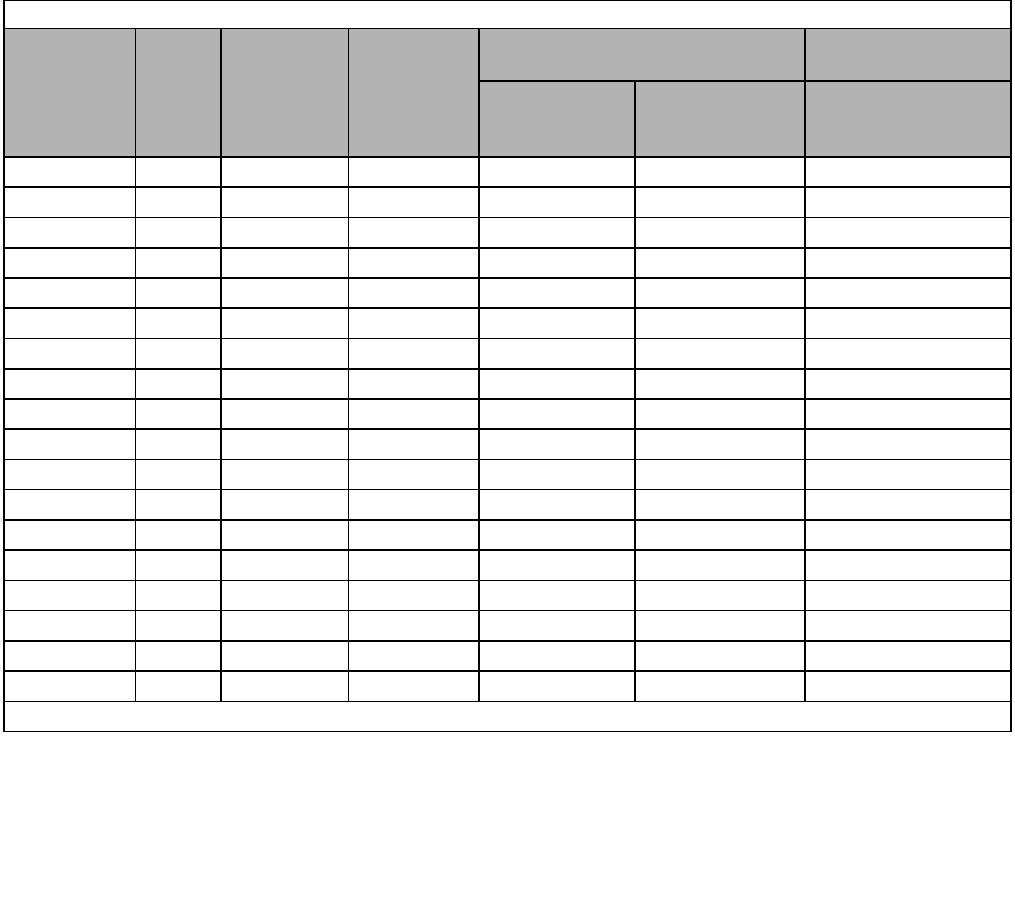
Peripheral Devices E - 2
Branch Circuit Short Circuit Protection
The following peripheral devices may be required between the AC main circuit power supply and the Drive input terminals
L1(R), L2(S), and L3(T). Refer to applicable codes to determine the devices necessary for a given installation. Use Table E.1
or E.2 when selecting fuses and circuit breakers per the NEC. When selecting semiconductor fuses to provide Drive input I2t
protection and comply with UL, CSA, NEC, and CEC branch circuit short circuit protection requirements, select one of the
fuses in Table E.3 or E.4.
Fuse Type: UL designated Time-Delay or Non-Time-Delay Fuse
Class: CC, J, T, RK1 or RK5
Designators (typical): KTK, FNQ, FRS, LPJ, LPS, JKS, JJN, or JJS
Voltage Rating: 250V for Drives with 208-240V input
600V for Drives with 480V input
Circuit Breaker Type:Inverse Time (MCCB) or Instantaneous Trip (MCP)
Voltage Rating: 600V
Table E.1 Recommended Fuse and Circuit Breaker Ratings per NEC (208-240Vac Input)
Model
CIMR-F7U
Hp
Input
Amps
*1
(Continuous
Rating)
Output
Amps
*1
(Continuous
Rating)
Fuse
Selection Criteria
Circuit Breaker
Selection Criteria
Maximum
Time-Delay
Fuse Rating (A)
Maximum
Non-Time-Delay
Fuse Rating (A)
Maximum CB
Rating (A)
20P4 0.5/0.75 4.3 3.6 6 12 15
20P7 1 5.5 4.6 8 12 15
21P5 1.5/2 9.4 7.8 15 15 15
22P2 3 13 10.8 20 20 20
23P7 5 20 16.8 30 30 35
25P5 7.5 24 23 40 50 45
27P5 10 37 31 60 80 80
2011 15 53 46.2 80 80 100
2015 20 70 59.4 110 125 125
2018 25 89 74.8 125 150 150
2022 30 98 88 150 150 175
2030 40 120 115 200 200 225
2037 50 180 162 250 250 300
2045 60 212 192 300 300 350
2055 75 237 215 350 350 450
2075 75/100 350 312 450 450 600
2090 125 396 360 600 600 700
2110 150 457 415 700 700 900
*1 Input and Output Amps are based on the Normal Duty (ND) current rating. Consult the Specification section for details on the Heavy Duty (HD) and Normal Duty (ND) ratings.
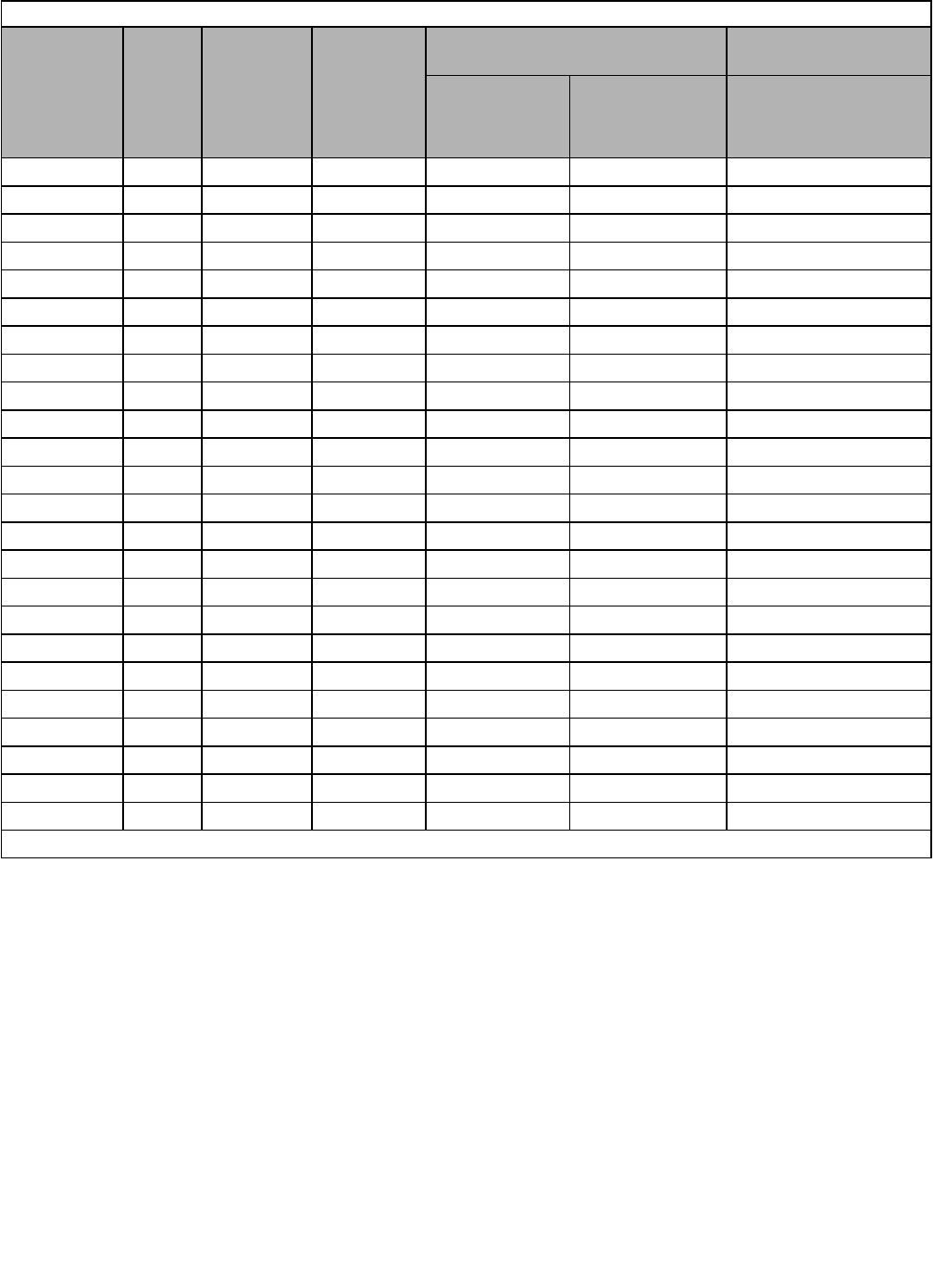
Peripheral Devices E - 3
Table E.2 Recommended Fuse and Circuit Breaker Ratings per NEC (480Vac Input)
Model
CIMR-F7U
Hp
Input
Amps
*1
(Continuous
Rating)
Output
Amps
*1
(Continuous
Rating)
Fuse
Selection Criteria
Circuit Breaker
Selection Criteria
Maximum
Time-Delay
Fuse Rating (A)
Maximum
Non-Time-Delay
Fuse Rating (A)
Maximum CB
Rating (A)
40P4 0.5/0.75 2.2 1.8 4 10 15
40P7 1 2.5 2.1 4 10 15
41P5 1.5/2 4.4 3.7 8 12 15
42P2 3 6.4 5.3 10 15 15
43P7 5 9 7.6 15 20 20
44P0 - 10.4 8.7 15 30 20
45P5 7.5 15 12.5 25 30 30
47P5 10 20 17 30 30 40
4011 15/20 33 27 45 50 60
4015 25 40 34 60 70 80
4018 30 48 40 70 80 90
4022 - 55 50.4 80 80 100
4030 40/50 74 67.2 100 100 125
4037 60 85 77 125 125 150
4045 75 106 96 150 150 200
4055 100 134 125 200 200 225
4075 125 172 156 250 250 300
4090 150 198 180 300 300 400
4110 200 264 240 350 350 450
4132 - 286 260 400 400 600
4160 250 334 304 450 450 700
4185 300/350 456 414 600 600 800
4220 400/450 567 515 700 700 1000
4300 500+ 743 675 900 900 1200
*1 Input and Output Amps are based on the Normal Duty (ND) current rating. Consult the Specification section for details on the Heavy Duty (HD) and Normal Duty (ND) ratings.
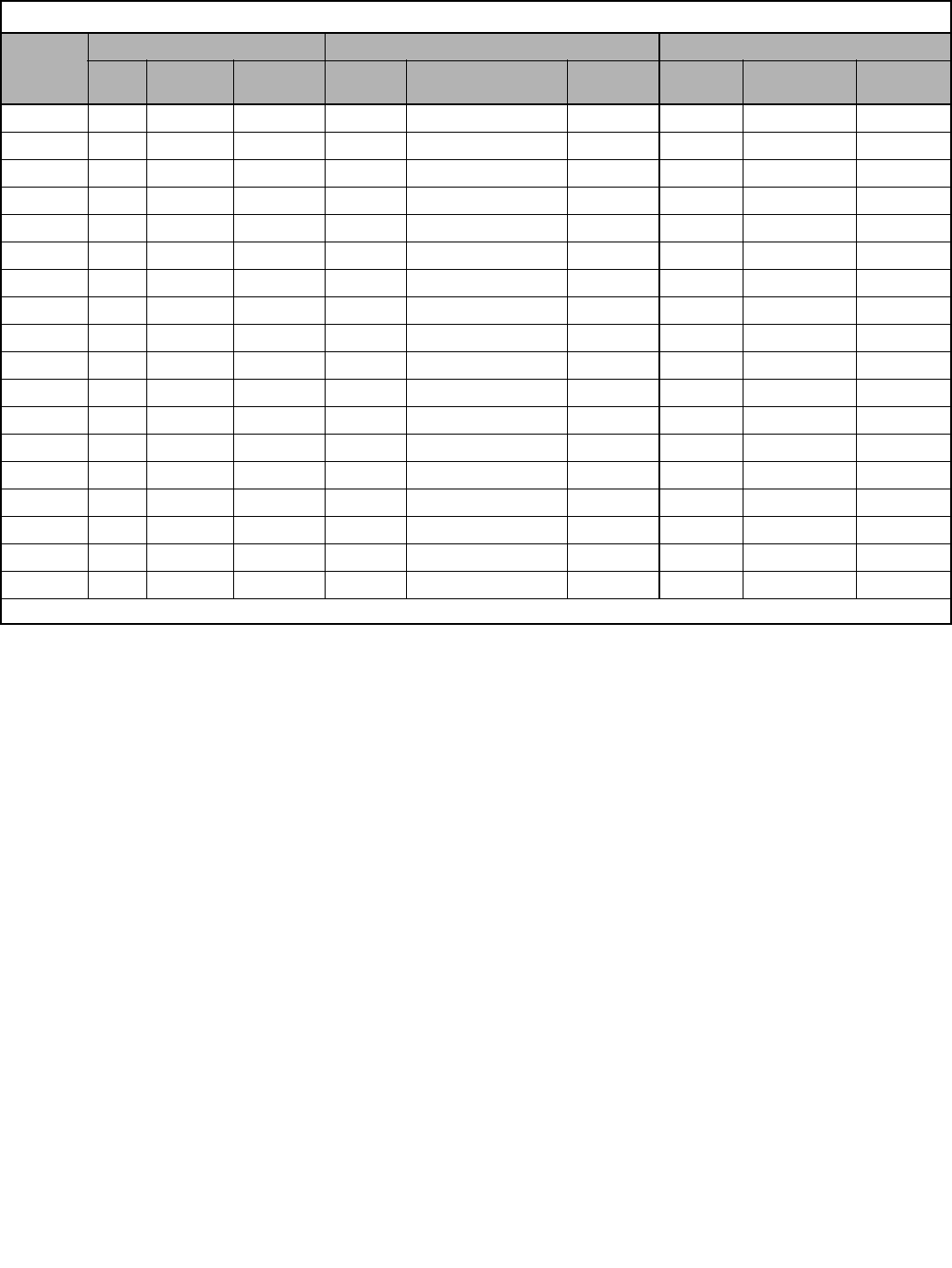
Peripheral Devices E - 4
Table E.3 Semiconductor Fuses for Drive I2t Protection and Branch Circuit Short Circuit Protection (200V Series)
Drive
Model No.
CIMR-F7*
Recommended Alternate 1 Alternate 2
Fuse
Mfr. Model No. Rating Fuse Mfr. Model No. Rating Fuse Mfr. Model No. Rating
20P4 Ferraz A60Q12-2 600V, 12A Ferraz A070GRB006T13 700V, 6A Bussmann FWH-20A14F 500V, 20A
20P7 Ferraz A60Q12-2 600V, 12A Ferraz A070GRB006T13 700V, 6A Bussmann FWH-20A14F 500V, 20A
21P5 Ferraz A60Q15-2 600V, 15A Ferraz A70QS25-22F 700A, 25A Bussmann FWH-20A14F 500V, 20A
22P2 Ferraz A60Q20-2 600V, 20A Ferraz 6,900CPGRC14.51/25 690V, 25A Bussmann FWH-25A14F 500V, 25A
23P7 Ferraz A60Q30-2 600V, 30A Ferraz A70QS32-14F 700A, 32A Bussmann FWH-45B 500V, 45A
25P5 Ferraz A50P50-4 500V, 50A Ferraz A70QS50-14F 700V, 50A Bussmann FWH-80B 500V, 80A
27P5 Ferraz A50P80-4 500V, 80A Ferraz A50QS70-4 500V, 70A Bussmann FWH-80B 500V, 80A
2011 Ferraz A50P80-4 500V, 80A Ferraz A50QS100-4 500V, 100A Bussmann FWH-100B 500V, 100A
2015 Ferraz A50P125-4 500V, 125A Ferraz A50QS150-4 500V, 150A Bussmann FWH-175B 500V, 175A
2018 Ferraz A50P150-4 500V, 150A Ferraz A50QS175-4 500V, 175A Bussmann FWH-200B 500V, 200A
2022 Ferraz A50P150-4 500V, 150A Ferraz A50QS200-4 500V, 200A Bussmann FWH-200B 500V, 200A
2030 Ferraz A50P200-4 500V, 200A Bussmann FWH-200B 500V, 200A Bussmann FWH-225B 500V, 225A
2037 Ferraz A50P250-4 500V, 250A Ferraz A30QS275-4 300V, 275A Bussmann 170M4610 690V, 315A
2045 Ferraz A50P300-4 500V, 300A Ferraz A30QS350-4 300V, 350A Bussmann FWH-350A 500V, 350A
2055 Ferraz A50P350-4 500V, 350A Bussmann FWH-400A 500V, 400A Bussmann FWH-450A 500V, 450A
2075 Ferraz A50P450-4 500V, 450A Ferraz A070URD33KI0550 700V, 550A Bussmann FWH-500A 500V, 500A
2090 Ferraz A50P600-4 500V, 600A Ferraz A70P600-4 700V, 600A Bussmann FWH-600A 500V, 600A
2110 Ferraz A50P600-4 500V, 600A Ferraz A70P700-4 700V, 700A Bussmann FWH-700A 500V, 700A
* Denotes letter A through Z
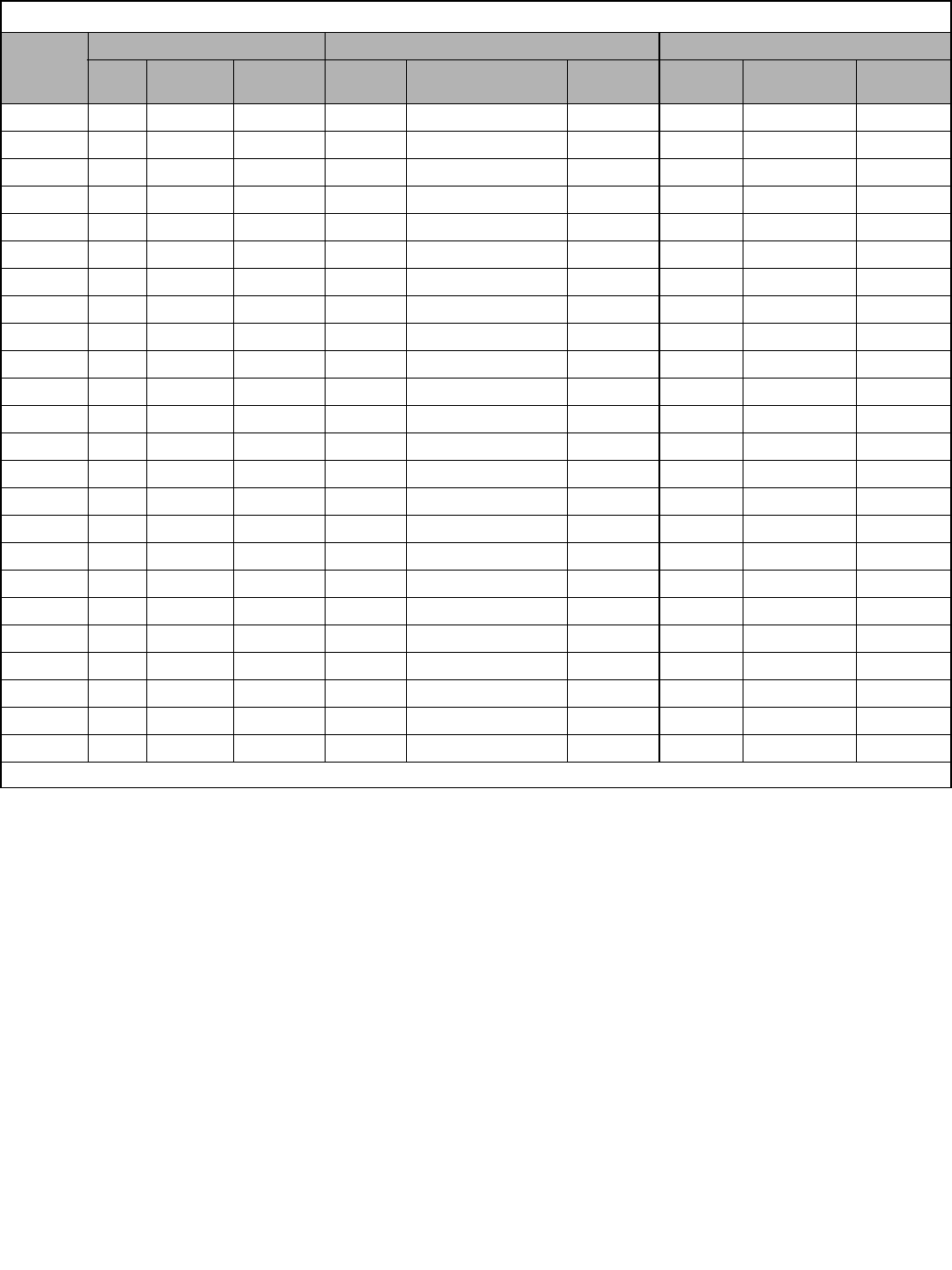
Peripheral Devices E - 5
Branch Circuit Overload Protection
All models have built-in UL evaluated motor overload protection. Motor overload protection is also provided in accordance
with the NEC and CEC. Additional branch circuit overload protection is not required for single motor applications.
Table E.4 Semiconductor Fuses for Drive I2t Protection and Branch Circuit Short Circuit Protection (400V Series)
Drive
Model No.
CIMR-F7*
Recommended Alternate 1 Alternate 2
Fuse
Mfr. Model No. Rating Fuse Mfr. Model No. Rating Fuse Mfr. Model No. Rating
40P4 Ferraz A60Q10-2 600V, 10A Ferraz A070GRB006T13 700V, 6A Ferraz A70QS16-14F 690V, 16A
40P7 Ferraz A60Q10-2 600V, 10A Ferraz A070GRB006T13 700V, 6A Ferraz A70QS16-14F 690V, 16A
41P5 Ferraz A60Q12-2 600V, 12A Ferraz 6,900CPGRC14.51/25 690V, 25A Ferraz A70QS20-14F 690V, 20A
42P2 Ferraz A60Q15-2 600V, 15A Ferraz A70QS25-22F 700V, 25A Ferraz A70QS20-14F 690V, 20A
43P7 Ferraz A60Q20-2 600V, 20A Ferraz A70QS20-14F 700V, 20A Ferraz A70QS25-14F 690V, 25A
44P0 Ferraz A60Q30-2 600V, 30A Ferraz A70QS32-14F 700V, 32A Ferraz A70QS40-14F 690V, 40A
45P5 Ferraz A60Q30-2 600V, 30A Ferraz A70QS32-14F 700V, 32A Ferraz A70QS40-14F 690V, 40A
47P5 Ferraz A60Q30-2 600V, 30A Ferraz A70QS40-14F 700V, 40A - - -
4011 Ferraz A70P50-4 700V, 50A Ferraz A50QS50-4 500V, 50A Bussmann FWH-80B 500V, 80A
4015 Ferraz A70P70-4 700V, 70A Ferraz A50QS80-4 500V, 80A Bussmann FWH-100B 500V, 100A
4018 Ferraz A70P80-4 700V, 80A Ferraz A50QS100-4 500V, 100A Bussmann FWH-125B 500V, 125A
4022 Ferraz A70P80-4 700V, 80A Ferraz A50QS100-4 500V, 100A Bussmann FWH-125B 500V, 125A
4030 Ferraz A70P100-4 700V, 100A Ferraz A50QS125-4 500V, 125A Bussmann FWH-125B 500V, 125A
4037 Ferraz A70P125-4 700V, 125A Ferraz A50QS125-4 500V, 125A Bussmann FWH-150B 500V, 150A
4045 Ferraz A70P150-4 700V, 150A Ferraz A50QS150-4 500V, 150A Bussmann FWH-175B 500V, 175A
4055 Ferraz A70P200-4 700V, 200A Ferraz A70QS200-4 700V, 200A Bussmann FWH-200B 500V, 200A
4075 Ferraz A70P250-4 700V, 250A Ferraz A50QS250-4 500V, 250A Bussmann FWH-250A 500V, 250A
4090 Ferraz A70P300-4 700V, 300A Ferraz A50QS300-4 500V, 300A Bussmann 170M4611 690V, 350A
4110 Ferraz A70P350-4 700V, 350A Ferraz A50P350-4 500V, 350A Bussmann 170M4611 690V, 350A
4132 Ferraz A70P400-4 700V, 400A Ferraz A70P500-4 700V, 500A Bussmann 170M5610 690V, 500A
4160 Ferraz A70P450-4 700V, 450A Ferraz A70QS700-4 700V, 700A Bussmann FWH-600A 500V, 600A
4185 Ferraz A70P600-4 700V, 600A Ferraz A70QS700-4 700V, 700A Bussmann FWH-700A 500V, 700A
4220 Ferraz A70P700-4 700V, 700A Bussmann FWH-800A 500V, 800A Bussmann FWH-1000A 500V, 1000A
4300 Ferraz A70P900-4 700V, 900A Bussmann FWH-1000A 500V, 1000A Bussmann FWH-1200A 500V, 1200A
* Denotes letter A through Z
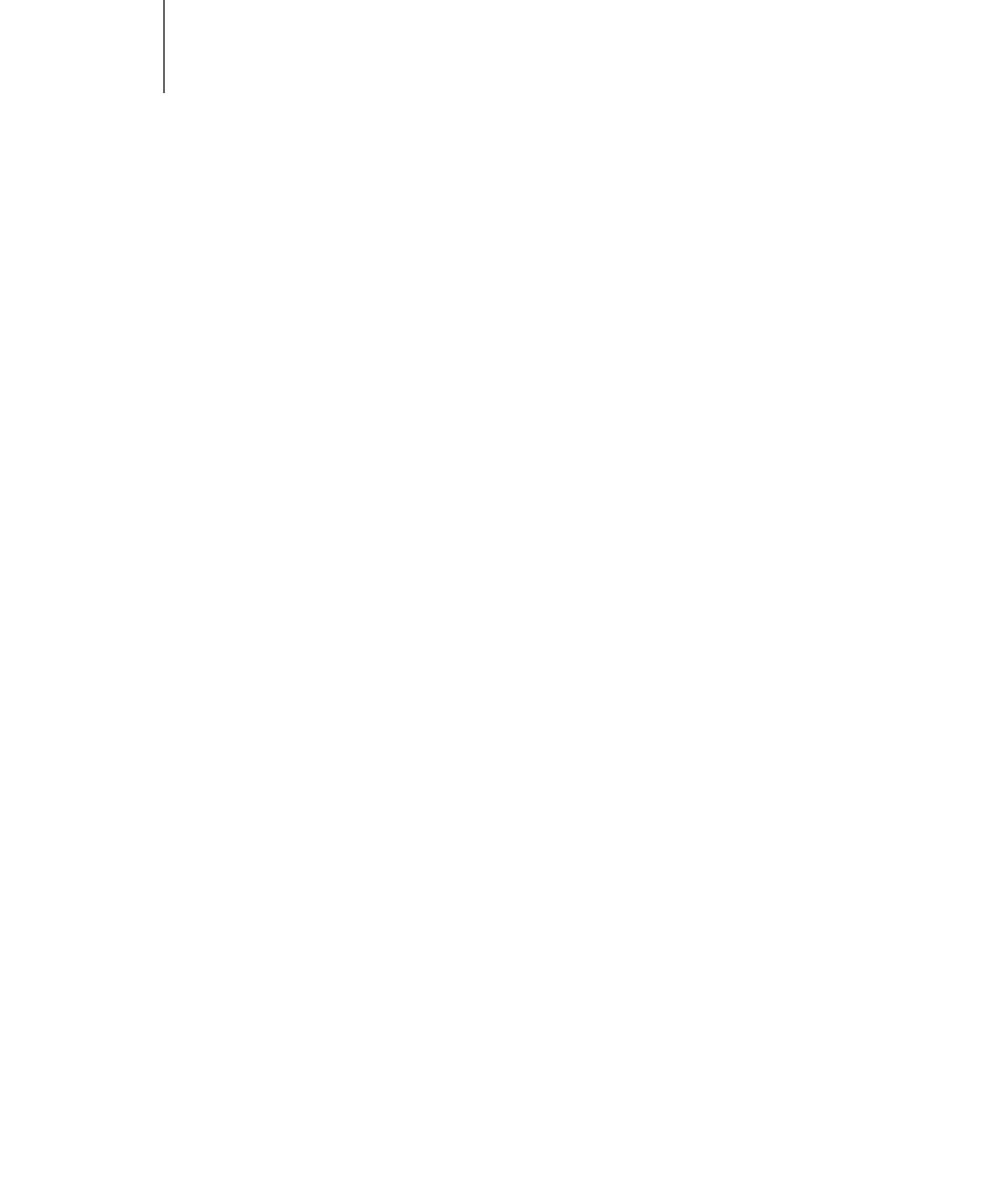
Peripheral Devices E - 6
Peripheral Devices
The following peripheral devices may be required to be mounted between the AC main circuit power supply and the Drive
input terminals R/LI, S/L2, and T/L3.
For more details on peripheral devices, contact the manufacturer.
Magnetic Contactor
Mount a surge protector on the coil. When using a magnetic contactor to start and stop the Drive, do not exceed one start per
hour.
AC and DC reactor
When using models F7U20P4 thru F7U2018 and F7U40P4 thru F7U4018 on a power supply transformer with a capacity of
600kVA or more, install an AC or DC reactor. The reactor improves the input power factor and provides protection to the
rectifier circuit within the Drive.
Noise Filter
Use a noise filter exclusively for the Drive if radio noise generated from the Drive causes other control devices to malfunction.
See Chapter 2.
CAUTION
Never connect a general LC/RC noise filter to the Drive output circuit.
Never connect a phase-advancing capacitor to the input or output sides, or a surge suppressor to the output
side of the Drive. When magnetic contactor is installed between the Drive and the motor, never turn it on or off
during operation.
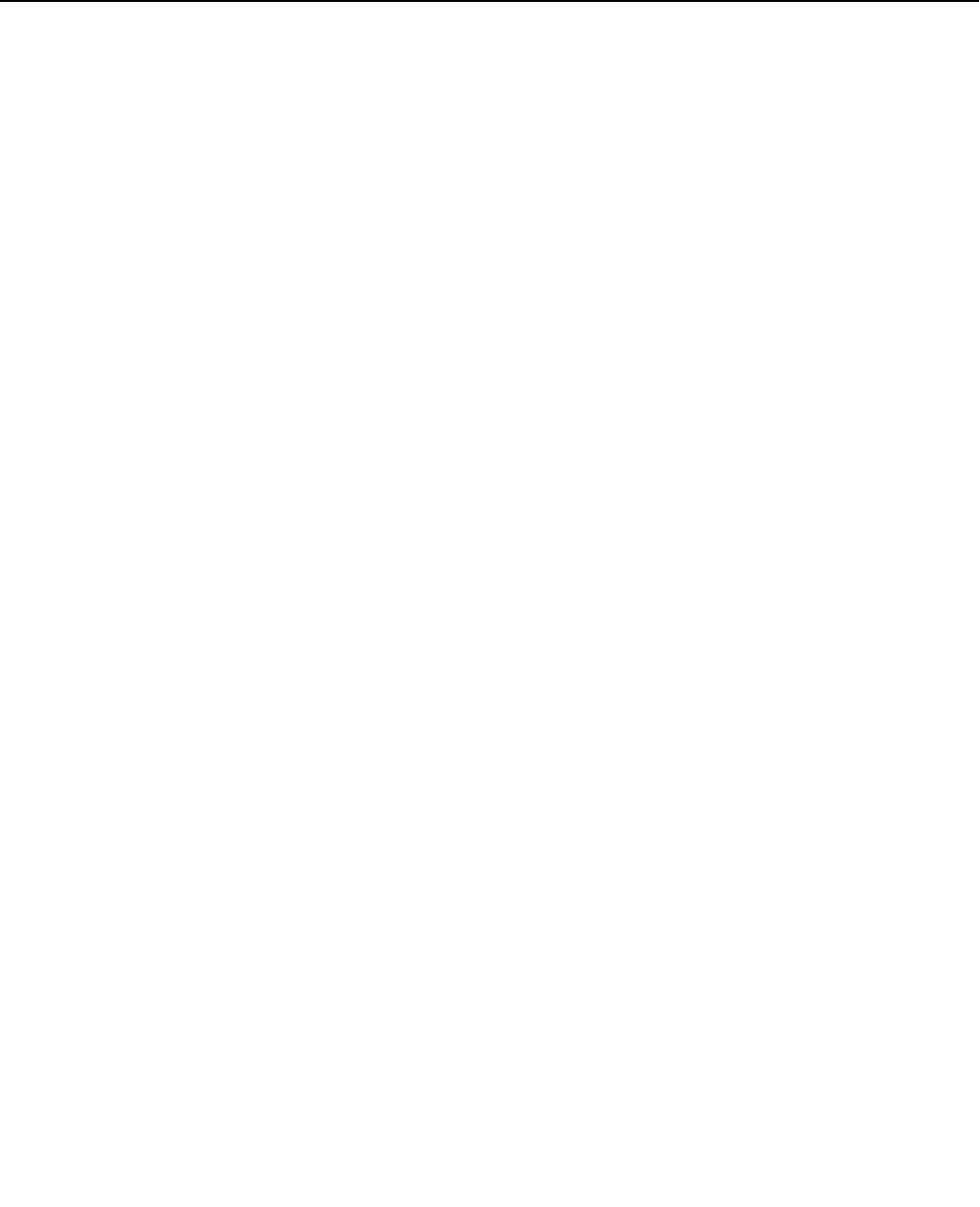
Spare Parts F - 1
Appendix F
Spare Parts
This appendix lists the primary spare parts that may be needed to maintain or
service the Drive.
F7 Primary Spare Parts - 208/230/240Vac......................... F-2
F7 Primary Spare Parts - 480Vac....................................... F-3
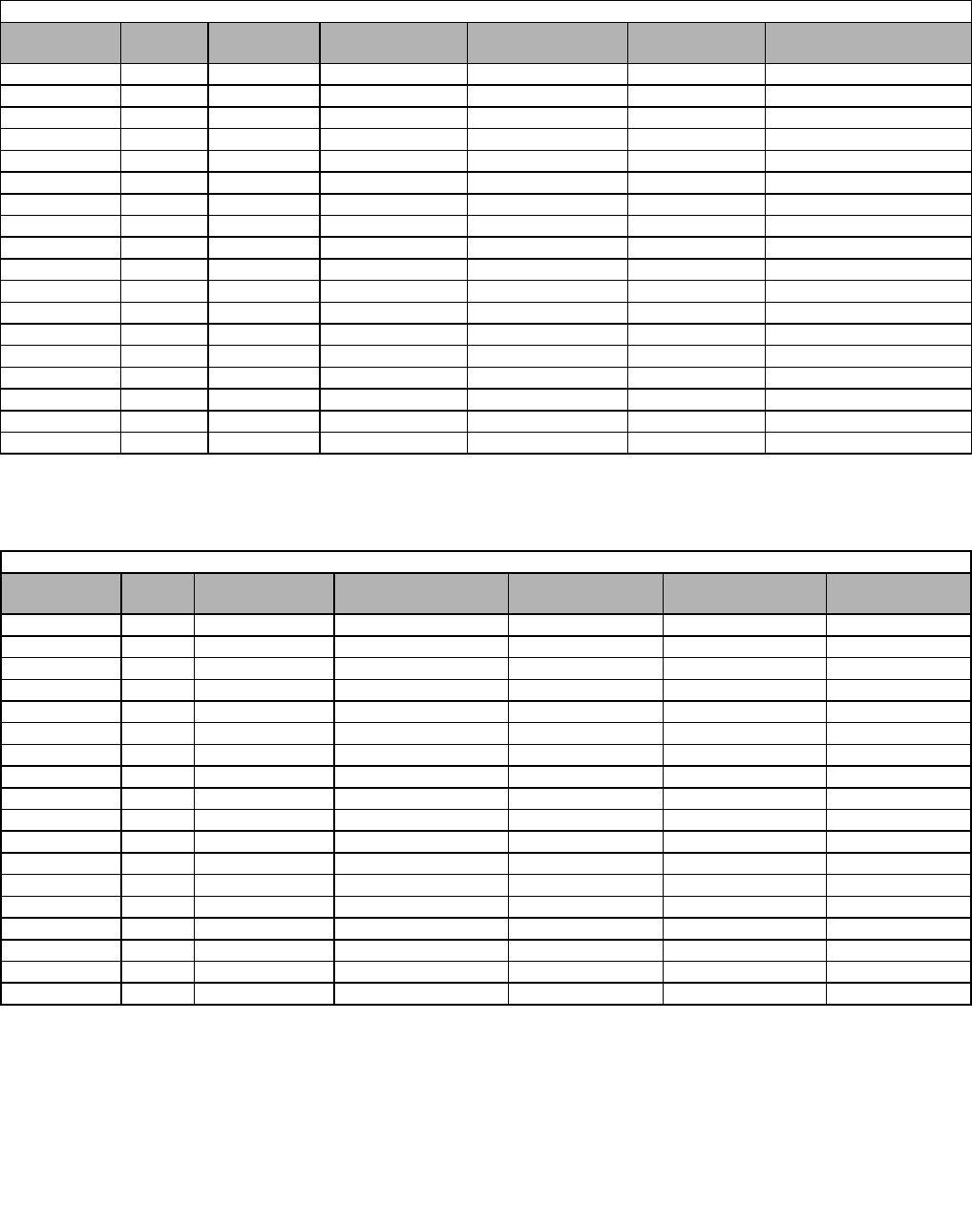
Spare Parts F - 2
F7 Primary Spare Parts - 208/230/240Vac
Table F.1 208-240Vac F7 Primary Spare Parts
Drive Model
CIMR-F7U Hp Power PCB
(3PCB)
Gate Drive PCB
(3PCB)
Control PCB
(1PCB)
Terminal PCB
(2PCB) Diode Module
20P4 0.5/0.75 ETP617012 N/A ETC618390-S3020 ETC618410 Inside the Power Module
20P7 1ETP617012 N/A ETC618390-S3020 ETC618410 Inside the Power Module
21P5 1.5/2 ETP617022 N/A ETC618390-S3020 ETC618410 Inside the Power Module
22P2 3ETP617032 N/A ETC618390-S3020 ETC618410 Inside the Power Module
23P7 5ETP617042 N/A ETC618390-S3020 ETC618410 Inside the Power Module
25P5 7.5 ETP617052 N/A ETC618390-S3020 ETC618410 Inside the Power Module
27P5 10 ETP617062 N/A ETC618390-S3020 ETC618410 Inside the Power Module
2011 15 ETP617422 N/A ETC618390-S3020 ETC618410 SID003114 (D1)
2015 20 N/A ETC617032 ETC618390-S3020 ETC618410 SID003113 (D1)
2018 25 N/A ETC617042 ETC618390-S3020 ETC618410 SID003113 (D1)
2022 30 N/A ETC617053 ETC618390-S3020 ETC618410 SID003114 (D1,D2)
2030 40 N/A ETC617063 ETC618390-S3020 ETC618410 SID003113 (D1,D2)
2037 50 N/A ETC617073 ETC618390-S3020 ETC618410 SID003130 (D1,D2)
2045 60 N/A ETC617083 ETC618390-S3020 ETC618410 SID003115 (D1,D2)
2055 75 N/A ETC617093 ETC618390-S3020 ETC618410 SID003115 (D1,D2)
2075 75/100 N/A ETC617103 ETC618390-S3020 ETC618410 SID003116 (D1-D6)
2090 125 N/A ETC617113 ETC618390-S3020 ETC618410 SID003116 (D1-D6)
2110 150 N/A ETC617531 ETC618390-S3020 ETC618410 SID003108 (D1-D12)
Table F.1 208-240Vac F7 Primary Spare Parts (Continued)
Drive Model
CIMR-F7U Hp Power Module Transistor Module DC Bus Fuse Heat Sink Fan Internal Fan
20P4 0.5/0.75 STR001297 (Q1) N/A FU-002029 (F1) N/A N/A
20P7 1STR001297 (Q1) N/A FU-002029 (F1) N/A N/A
21P5 1.5/2 STR001299 (Q1) N/A FU-002029 (F1) N/A N/A
22P2 3STR001301 (Q1) N/A FU-002030 (F1) N/A N/A
23P7 5STR001303 (Q1) N/A FU-002031 (F1) FAN001066 (B1) N/A
25P5 7.5 STR001304 (Q1) N/A FU-002099 (F1) FAN001066 (B1) N/A
27P5 10 STR001278 (Q1) N/A FU-002107 (F1) FAN001066 (B1,B2) N/A
2011 15 N/A STR001315 (Q1) FU-002108 (F1) FAN001066 (B1,B2) FAN001043 (B3)
2015 20 N/A STR001315 (Q1) FU-002108 (F1) FAN001065 (B1,B2) N/A
2018 25 N/A STR001320 (Q1) FU-002109 (F1) FAN001065 (B1,B2) FAN001043 (B3)
2022 30 N/A STR001314 (Q1) FU-002110 (F1) FAN001039 (B1,B2) N/A
2030 40 N/A STR001323 (Q1) FU-002110 (F1) FAN001039 (B1,B2) N/A
2037 50 N/A STR001293 (Q1-Q3) FU-002102 (F1) FAN001049 (B1,B2) FAN001053 (B4)
2045 60 N/A STR001335 (Q1-Q3) FU-000925 (F1) FAN001049 (B1,B2) FAN001053 (B4)
2055 75 N/A STR001335 (Q1-Q3) FU-000938 (F1) FAN001052 (B1,B2) FAN001054 (B4)
2075 75/100 N/A STR001349 (Q1-Q6) FU-000926 (F1) FAN001056 (B1,B2) FAN001054 (B4)
2090 125 N/A STR001338 (Q1-Q6) FU-002105 (F1) FAN001056 (B1,B2) FAN001054 (B4)
2110 150 N/A STR001351 (Q1-Q12) FU-002106 (F1) FAN001056 (B1,B2) FAN001054 (B4)
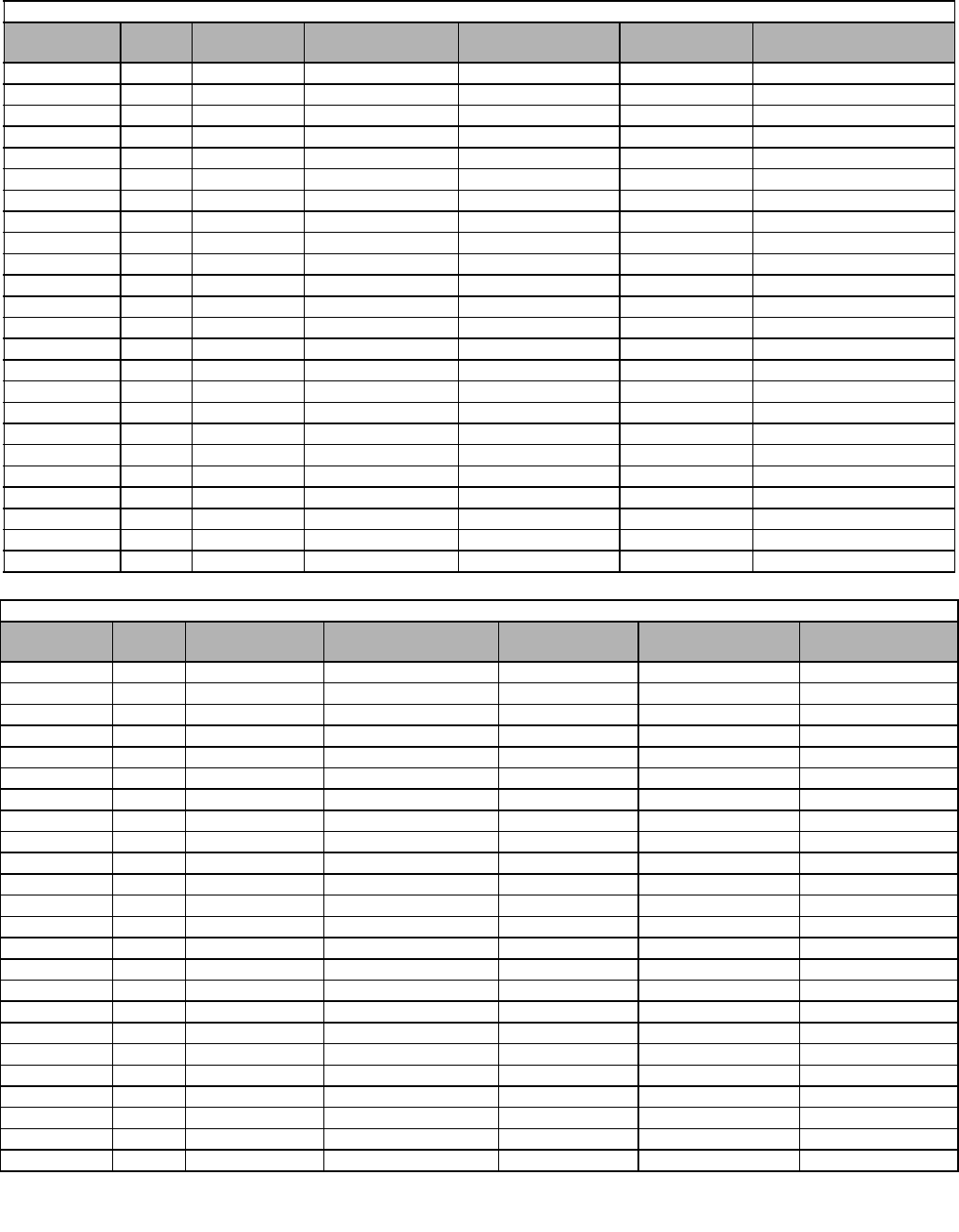
Spare Parts F - 3
F7 Primary Spare Parts - 480Vac
Table F.2 480Vac F7 Primary Spare Parts
Drive Model
CIMR-F7U Hp Power PCB
(3PCB)
Gate Drive PCB
(3PCB)
Control PCB
(1PCB)
Terminal PCB
(2PCB) Diode Module
40P4 0.5/0.75 ETP617082 N/A ETC618390-S3020 ETC618410 Inside the Power Module
40P7 1ETP617082 N/A ETC618390-S3020 ETC618410 Inside the Power Module
41P5 1.5/2 ETP617092 N/A ETC618390-S3020 ETC618410 Inside the Power Module
42P2 3ETP617102 N/A ETC618390-S3020 ETC618410 Inside the Power Module
43P7 5ETP617112 N/A ETC618390-S3020 ETC618410 Inside the Power Module
44P0 -ETP617122 N/A ETC618390-S3020 ETC618410 Inside the Power Module
45P5 7.5 ETP617132 N/A ETC618390-S3020 ETC618410 Inside the Power Module
47P5 10 ETP617142 N/A ETC618390-S3020 ETC618410 Inside the Power Module
4011 15 ETP617152 N/A ETC618390-S3020 ETC618410 Inside the Power Module
4015 20 ETP617162 N/A ETC618390-S3020 ETC618410 SID003112 (D1)
4018 25 ETP617172 N/A ETC618390-S3020 ETC618410 SID000605 (D1)
4022 30 N/A ETC617141 ETC618390-S3020 ETC618410 SID003112 (D1,D2)
4030 40 N/A ETC617151 ETC618390-S3020 ETC618410 SID003112 (D1,D2)
4037 50 N/A ETC617161 ETC618390-S3020 ETC618410 SID003112 (D1,D2)
4045 60 N/A ETC617171 ETC618390-S3020 ETC618410 SID000605 (D1,D2)
4055 75 N/A ETC617181 ETC618390-S3020 ETC618410 SID000605 (D1,D2)
4075 100 N/A ETC617190 ETC618390-S3020 ETC618410 SID003117 (D1,D2)
4090 125/150 N/A ETC617200 ETC618390-S3020 ETC618410 SID003117 (D1,D2)
4110 -N/A ETC617210 ETC618390-S3020 ETC618410 SID003109 (D1-D6)
4132 200 N/A ETC617220 ETC618390-S3020 ETC618410 SID003118 (D1-D6)
4160 250 N/A ETC617230 ETC618390-S3020 ETC618410 SID003119 (D1-D6)
4185 300 N/A ETC617240 ETC618390-S3020 ETC618410 SID003119 (D1-D6)
4220 350/400 N/A ETC617250 ETC618390-S3020 ETC618410 SID003131 (D1-D6)
4300 450/500+ N/A ETC617260 ETC618390-S3020 ETC618410 SID003119(D1-D12)
Table F.2 480Vac F7 Primary Spare Parts (Continued)
Drive Model
CIMR-F7U Hp Power Module Transistor Module DC Bus Fuse Heat Sink Fan Internal Fan
40P4 0.5/0.75 STR001298 (Q1) N/A FU-002029 (F1) N/A N/A
40P7 1STR001298 (Q1) N/A FU-002029 (F1) N/A N/A
41P5 1.5/2 STR001298 (Q1) N/A FU-002029 (F1) N/A N/A
42P2 3STR001298 (Q1) N/A FU-002029 (F1) FAN001066 (B1) N/A
43P7 5STR001300 (Q1) N/A FU-002031 (F1) FAN001066 (B1) N/A
44P0 -N/A N/A FU-002031 (F1) FAN001066 (B1) N/A
45P5 7.5 STR001302 (Q1) N/A FU-002031 (F1) FAN001066 (B1) N/A
47P5 10 STR001279 (Q1) N/A FU-002032 (F1) FAN001066 (B1,B2) N/A
4011 15 N/A STR001280 (Q1) FU-002037 (F1) FAN001066 (B1,B2) FAN001043 (B3)
4015 20 N/A STR001318 (Q1) FU-002038 (F1) FAN001065 (B1,B2) N/A
4018 25 N/A STR001318 (Q1) FU-002038 (F1) FAN001065 (B1,B2) FAN001043 (B3)
4022 30 N/A STR001324 (Q1) FU-002038 (F1) FAN001039 (B1,B2) N/A
4030 40 N/A STR001324 (Q1) FU-002039 (F1) FAN001039 (B1,B2) N/A
4037 50 N/A STR001316 (Q1-Q3) FU-002040 (F1) FAN001044 (B1,B2) N/A
4045 60 N/A STR001317 (Q1-Q3) FU-002040 (F1) FAN001044 (B1,B2) N/A
4055 75 N/A STR001317 (Q1-Q3) FU-002101 (F1) FAN001044 (B1,B2) N/A
4075 100 N/A STR001294 (Q1-Q3) FU-002112 (F1) FAN001052 (B1,B2) FAN001054 (B4)
4090 125/150 N/A STR001336 (Q1-Q6) FU-002113 (F1) FAN001052 (B1,B2) FAN001054 (B4)
4110 -N/A STR001336 (Q1-Q6) FU-002114 (F1) FAN001056 (B1,B2) FAN001054 (B4)
4132 200 N/A STR001322 (Q1-Q6) FU-000894 (F1) FAN001056 (B1,B2) FAN001054 (B4)
4160 250 N/A STR001322 (Q1-Q3) FU-000895 (F1) FAN001056 (B1,B2) FAN001054 (B4)
4185 300 N/A STR001339 (Q1-Q12) FU-000895 (F1) FAN001056 (B1-B4) FAN001054 (B6,B7)
4220 350/400 N/A STR001341 (Q1-Q12) FU-002116 (F1) FAN001056 (B1-B4) FAN001054 (B6,B7)
4300 450/500+ N/A STR001342 (Q1-Q12) FU-002117 (F1) FAN001082 (B1-B5) FAN001054 (B6,B7)
Notes:

Index 1
A
AC and DC Reactor ..........................................................E-6
Accel/Decel ......................................................................5-8
Accel/Decel Time
C1-01 Acceleration Time 1 ..............................4-12, 5-8
C1-02 Deceleration Time 1 ..............................4-12, 5-8
Alarm Detection .............................................................6-10
Alarm Displays and Processing ..............................6-10
Ambient Temperature .....................................................1-11
Analog Output Gain .......................................................5-21
H4-02 Terminal FM Gain .......................................5-21
H4-05 Terminal AM Gain .......................................5-21
Auto-Tuning ...................................................................4-10
No Rotate Tuning ....................................................4-11
Standard Tuning ......................................................4-10
Terminal Resistance Tuning ...................................4-11
Auto-Tuning Faults ........................................................6-17
Auto-Tuning Fault Displays and Processing ............6-17
Auto-Tuning Menu (-A.TUNE-) ....................................3-13
T1-01 Tuning Mode Selection .................................3-14
T1-02 Motor Rated Power .......................................3-14
T1-03 Rated Voltage................................................3-14
T1-04 Rated Current ................................................3-14
T1-05 Rated Frequency............................................3-14
T1-06 Number of Poles............................................3-14
T1-07 Rated Speed...................................................3-14
T1-08 PG Pulses/Rev...............................................3-14
B
Base Frequency ..............................................................4-13
Base Voltage ...................................................................4-13
Braking Transistor Unit(s)
Installation ...............................................................2-15
Adjustments .....................................................2-18
Operation Check ..............................................2-18
Branch Circuit Overload Protection .................................E-5
Branch Circuit Short Circuit Protection ...........................E-2
C
Capacity Related Parameters ........................................... B-1
Carrier Frequency .............................................................5-9
Carrier Frequency Selection .............................4-12, 5-9
Checking and Controlling the Installation Site ................1-11
Coast to stop .....................................................................5-6
Communication Connection Terminal ............................ D-3
Communication Specifications ........................................ D-2
Communications ..............................................................D-1
Component Names ............................................ 1-5, 1-6, 3-2
Control Circuit........................................................................
..... 1-13, 2-20, 2-21, 2-24, 2-37, 4-3, 4-4, 6-2, 6-3, 6-9, 6-14
Preventive Maintenance ............................................7-3
Terminal Functions ..................................................2-20
+15Vdc power output .......................................2-20
-15Vdc power output ........................................2-20
Add to terminal A1 ...........................................2-20
Analog common ..................................... 2-20, 2-21
Analog input or speed command ......................2-20
Aux. frequency reference 1 ..............................2-20
Digital input photocoupler ...............................2-20
Digital input supply +24Vdc ............................2-20
Digital input supply common ...........................2-20
During run (N.O. contact) ................................2-20
External baseblock N.O. ...................................2-20
External fault input ...........................................2-20
Fault output signal (SPDT) ..............................2-20
Fault reset .........................................................2-20
Forward run/stop command .............................2-20
Frequency agree (N.O. contact) .......................2-20
Jog frequency reference ...................................2-20
Modbus communication input ..........................2-21
Modbus communication output ........................2-21
Multi-step speed reference 1 ............................2-20
Multi-step speed reference 2 ............................2-20
Output current ..................................................2-21
Output frequency ..............................................2-21
Pulse input ........................................................2-21
Pulse monitor ....................................................2-21
Remote/auto operation (N.O. contact) .............2-20
Reverse run/stop command ..............................2-20
Shield wire, optional ground
line connection point ........................................2-20
Signal common .................................................2-21
Terminals ........................................................... 1-5, 2-2
Terminal Layout ................................................ 1-5, 2-2
Wire Sizes ................................................................2-24
Wiring Precautions ..................................................2-24
Control circuit failure/damage ..........................................6-3
Control circuit fault ...........................................................6-9
Control Method .................................................................5-2
Control Method Selection ...............................................4-12
Control Wiring ................................................................2-20
D
Deceleration Time 1 .......................................................4-12
Delivery
Confirmation ..............................................................1-3
Receiving Checks ......................................................1-3
Diagnostics & Troubleshooting ........................................6-1
Digital Operator ................1-5, 1-6, 1-16, 3-1, 4-7, 4-15, 5-3

Index 2
Alarm Detection ......................................................6-10
Attaching .................................................................1-14
Auto-Tuning Faults ...........................................6-17, 18
Connection Fault .......................................................6-7
Contrast ..................................................................A-35
COPY Function ...................................................... A-37
COPY Function Faults ............................................6-19
Display .............................................................3-2, 3-15
Display Scaling ......................................................A-35
Fault Detection ..........................................................6-2
Keys ...........................................................................3-3
Mounting .................................................................1-15
Operating Programming Errors (OPE) ....................6-15
Parameter List .......................................................... A-3
Preventive Maintenance ............................................7-3
Removing ................................................................1-14
RUN Key ...................................................................5-4
STOP Key .................................................................5-4
Troubleshooting ......................................................6-20
DIP Switch S1 ................................................................2-22
Drive Capacity Setting
Selection ................................................................... B-2
Parameters Affected ................................................. B-3
Drive Date Stamp Information .......................................6-31
Drive Enclosure and Revision Code ................................1-4
Drive Main Circuit Configurations ................................2-10
Drive Main Menus ............................................................3-6
Auto-Tuning ..............................................................3-6
Modified Constants ...................................................3-6
Operation ...................................................................3-6
Programming .............................................................3-6
Quick Setting .............................................................3-6
Drive Mode Indicators ......................................................3-4
Drive Model Numbers ......................................................1-4
Drive Rating .............................................................1-4, B-2
Drive Start-Up Preparation ...............................................4-2
Drive Start-Up Procedures ...............................................4-5
Auto-Tuning ............................................................4-10
Flux Vector Start-Up .................................................4-9
Open Loop Vector Start-Up ......................................4-8
V/F Start-Up ..............................................................4-6
V/F w/ PG Start-Up ...................................................4-7
Dynamic Braking (DB) ..................................................2-12
Dynamic Braking Connections
General ....................................................................2-12
Installation ...............................................................2-12
E
Electrical Installation ........................................................2-1
Electromagnetic Compatibility (EMC) ...........................2-26
Cable Installation .....................................................2-26
EMC Directive ................................................................2-26
Recommended EMC Filters ....................................2-28
Enclosure type ..........................................................1-4, C-5
Example of Changing a Parameter .................................3-15
Exterior and Mounting Dimensions ..................................1-7
F
F7 Basic Programming Parameters
Control Method .........................................................5-2
Description of Parameter Tables ...............................5-2
Fault Detection ..................................................................6-2
Fault Displays and Processing ...................................6-2
Fault History List ...........................................................A-41
Fault Trace List ..............................................................A-41
Field Wiring Diagram .....................................................2-25
Frequency Reference ........................................................3-8
Frequency Reference 1 ...................................................4-12
Frequency Reference 2 ...................................................4-12
Frequency Reference 3 ...................................................4-12
Frequency Reference 4 ...................................................4-12
Frequency Reference Selection ......................................4-12
Front cover ................................................................ 1-5, 1-6
Removing/Attaching ................................................1-14
Function Code ..................................................................D-5
Modbus .....................................................................D-5
G
Ground Wiring ................................................................2-11
H
Heat Sink .............................................................. 2-12, 6-31
Die-cast ......................................................................1-5
Heat Sink Mount Dynamic Braking Resistor .................2-12
Heat Sink Mount Resistor (ERF) ....................................2-12
Installation ...............................................................2-13
Heatsink Cooling Fan Replacement .................................7-5
Installing the Heatsink Cooling Fan ..........................7-5
Mounting the Heatsink Cooling Fan Assembly ............7-6
Removing the Heatsink Cooling Fan ........................7-5
Removing the Heatsink Cooling Fan Assembly ............7-5
High Frequency (HF) ......................................................2-26
High Speed Operation .....................................................5-14
High Starting Torque ............................................ 5-12, 5-14

Index 3
I
Input Voltage Setting..............................................4-13, 5-12
E1-01 Input Voltage Setting ....................................5-12
Installation Orientation and Clearances .........................1-12
Installation Site
Checking and Controlling .......................................1-11
Specifications ..........................................................1-11
Installing and Wiring Option Boards .............................2-30
Installation ...............................................................2-31
Option Board Models and Specifications ...............2-30
PG (Encoder) Feedback Board Terminal
Specifications and Wiring Examples .......................2-32
PG-A2 ..............................................................2-32
PG-B2 ..............................................................2-34
PG-D2 ..............................................................2-36
PG-W2 .............................................................2-38
PG-X2 ..............................................................2-37
J
Jog Frequency Reference ...............................................4-12
Jumper CN15 ..................................................................2-22
L
Low Frequency (LF) ......................................................2-26
M
Magnetic Contactor ..........................................................E-6
Main Circuit Configurations ............................................2-9
Main Circuit Terminal Functions .....................................2-9
Main Circuit Terminals
Wiring .......................................................................2-3
Applicable Wire Sizes and Closed-loop
Connectors .........................................................2-3
Recommended Connectors for
Terminal Connections ........................................2-8
Main Circuit Test Procedure
Flowchart .................................................................6-28
Main Circuit Test Procedure ..........................................6-28
Main Menu Structure ........................................................3-7
Maintenance .....................................................................7-1
Maximum Output Frequency .........................................4-13
Maximum Output Voltage ..............................................4-13
Message Format ..............................................................D-5
Minimum Output Frequency ..........................................4-13
Modbus Communication ................................................. D-2
Configuration ........................................................... D-2
Modbus Data Tables ......................................................D-10
Broadcast Data .......................................................D-16
Enter Command ......................................................D-16
Error Codes .............................................................D-17
Monitor Data ..........................................................D-11
Reference Data .......................................................D-10
Slave Not Responding ............................................D-17
Modbus Function Code Details
Loopback Test (08H) ................................................D-9
Reading/Holding Register Contents (03H) ..............D-8
Write In Several Holding Registers (10H) ...............D-9
Write In Single Holding Register (06H) ..................D-8
Modbus Function Code Details .......................................D-8
Modbus Function Code ....................................................D-5
Modbus Self-Diagnosis .................................................D-18
Modified Constants Menu (-VERIFY-) ..........................3-13
Monitor List ...................................................................A-38
Motor Overload Fault .....................................................5-22
L1-01 Motor Overload Fault Selection ...................5-22
Motor Overload Protection Selection .............................4-14
Motor Rated Current .......................................................4-13
Motor Rated Output ........................................................4-13
Motor Setup ....................................................................5-20
E2-01 Motor Rated Current .....................................5-20
E2-04 Number of Motor Poles ................................5-20
E2-11 Motor Rated Power .......................................5-20
Mounting hole ........................................................... 1-5, 7-4
Multiple Braking Transistor Units ........................ 2-15, 2-17
N
Nameplate
Information ................................................................1-3
Nameplate .............................................................. 1-3, A-16
No Response Message .....................................................D-7
Noise Filter ...................................................................... E-6
Number of Motor Poles ..................................................4-13
O
Open Chassis Type ...................................................1-4, C-5
Operation Menu (-DRIVE-)
U1 Monitor List..........................................................3-8
U1-01 Frequency Reference ...............................3-8
U1-02 Output Frequency ....................................3-8
U1-03 Output Current ........................................3-8
U1-04 Control Method .......................................3-8
U1-05 Motor Speed ............................................3-8
U1-06 Output Voltage ........................................3-8
U1-07 DC Bus Voltage ......................................3-8
U1-08 Output Power ..........................................3-8
U1-09 Torque Reference ....................................3-8
U1-10 Input Terminal Status ..............................3-8
U1-11 Output Terminal Status ...........................3-8

Index 4
U1-12 Drive Operation Status ...........................3-8
U1-13 Cumulative Operation Time ...................3-8
U1-14 Software Number ....................................3-8
U1-15 Terminal A1 Input Voltage .....................3-8
U1-16 Terminal A2 Input Voltage......................3-8
U1-17 Terminal A3 Input Voltage .....................3-8
U1-18 Motor Secondary Current ......................3-8
U1-19 Motor Excitation Current ........................3-8
U1-20 Output Frequency after Soft-Start ..........3-8
U1-21 ASR Input ...............................................3-8
U1-22 ASR Output ............................................3-8
U1-24 PI Feedback Value ..................................3-8
U1-25 DI-16 H2 Input Status .............................3-8
U1-26 Output Voltage Reference (Vq) ..............3-8
U1-27 Output Voltage Reference (Vd) ..............3-8
U1-28 CPU Number ..........................................3-8
U1-29 kWh (Lower 4 digits) .............................3-8
U1-30 MWh (Upper 5 digits) ............................3-8
U1-32 ACR(q) Output .......................................3-8
U1-33 ACR(d) Output .......................................3-8
U1-34 OPE Detected .........................................3-8
U1-35 Zero Servo Pulse Count ..........................3-8
U1-36 PID Input ................................................3-8
U1-37 PID Output ..............................................3-8
U1-38 PID Setpoint ...........................................3-8
U1-39 Modbus Error Code ................................3-8
U1-40 Cooling Fan Elapsed Time .....................3-8
U1-44 ASR Output with or without Filter ...........3-8
U1-45 Feed Forward Control Output .................3-8
U2 Fault Trace List ...................................................3-9
U2-01 Current Fault ...........................................3-9
U2-02 Previous Fault .........................................3-9
U2-03 Frequency Reference at Fault .................3-9
U2-04 Output Frequency at Fault ......................3-9
U2-05 Output Current at Fault ...........................3-9
U2-06 Motor Speed at Fault ..............................3-9
U2-07 Output Voltage at Fault ..........................3-9
U2-08 DC Bus Voltage at Fault .........................3-9
U2-09 Output Power at Fault .............................3-9
U2-10 Torque Reference at Fault ......................3-9
U2-11 Input Terminal Status at Fault ................3-9
U2-12 Output Terminal Status at Fault ..............3-9
U2-13 Drive Operation Status at Fault ..............3-9
U2-14 Cumulative Operation Time at Fault ..........3-9
U3 Fault History List ..............................................3-10
U3-01 Last Fault ..............................................3-10
U3-02 Fault Message 2 ....................................3-10
U3-03 Fault Message 3 ....................................3-10
U3-04 Fault Message 4 ....................................3-10
U3-05 Elapsed Time 1 .....................................3-10
U3-06 Elapsed Time 2 .....................................3-10
U3-07 Elapsed Time 3 .....................................3-10
U3-08 Elapsed Time 4 .....................................3-10
U3-09 Fault Message 5 ....................................3-10
U3-10 Fault Message 6 ....................................3-10
U3-11 Fault Message 7 ....................................3-10
U3-12 Fault Message 8 ....................................3-10
U3-13 Fault Message 9 ....................................3-10
U3-14 Fault Message 10 ..................................3-10
U3-15 Elapsed Time 5 .....................................3-10
U3-16 Elapsed Time 6 .....................................3-10
U3-17 Elapsed Time 7 .....................................3-10
U3-18 Elapsed Time 8 .....................................3-10
U3-19 Elapsed Time 9 .....................................3-10
U3-20 Elapsed Time 20 ...................................3-10
Operation Menu (-DRIVE-) .............................................3-8
Operator Programming Errors (OPE) ............................6-15
OPE Error Displays ................................................6-15
P
Parameter
Affected by Drive Capacity Setting ......................... B-3
Basic Programming ..................................................5-2
Copy ..........................................................................3-2
Description of Parameter Tables ..............................5-2
Group List ...............................................................3-12
Motor Parameters ....................................................3-13
Parameter List ..........................................................A-3
Serial Communication .............................................D-4
Set/read modified ....................................................3-13
Setting .....................................................................3-12
Part Replacement Guidelines ...........................................7-4
Periodic Inspection ...........................................................7-2
Periodic Inspections With no Power Applied ...........7-2
Periodic Inspections With Power Applied ................7-2
Periodic Maintenance of Parts .........................................7-4
Peripheral Devices ...........................................................E-6
AC and DC reactor ...................................................E-6
Magnetic Contactor ..................................................E-6
Noise Filter ...............................................................E-6
PG (Encoder) Feedback Board Terminal
Specifications and Wiring Examples .............................2-32
PG Option ......................................................................5-20
F1-01 PG Pulses / Revolution .................................5-20
PG Parameter .................................................................4-13
Preset Reference .............................................................5-11
d1-01 Frequency Reference 1 .................................5-11
d1-02 Frequency Reference 2 .................................5-11
d1-03 Frequency Reference 3 .................................5-11

Index 5
d1-04 Frequency Reference 4 .................................5-11
d1-17 Jog Reference ................................................5-11
Preventive Maintenance ...................................................7-3
Flowchart ...................................................................7-3
Procedure for Setting Up Communication ......................D-3
Programming Menu (-ADV-) .........................................3-12
A1 Initialization ......................................................3-12
A2 User Parameters .................................................3-12
b1 Sequence ............................................................3-12
b2 DC Injection Braking .........................................3-12
b3 Speed Search ......................................................3-12
b4 Delay Timers ......................................................3-12
b5 PID Control ........................................................3-12
b6 Reference Hold ...................................................3-12
b7 Droop control ..................................................... 3-12
b8 Energy Saving ....................................................3-12
b9 Zero Servo ..........................................................3-12
C1 Accel/Decel .......................................................3-12
C2 S-Curve Accel/Decel .........................................3-12
C3 Motor-Slip Compensation .................................3-12
C4 Torque Compensation .......................................3-12
C5 ASR Tuning .......................................................3-12
C6 Carrier Frequency ..............................................3-12
d1 Preset Reference .................................................3-12
d2 Reference Limits ................................................3-12
d3 Jump Frequencies ...............................................3-12
d4 Sequence (MOP & Trim Control) ......................3-12
d5 Torque Control ...................................................3-12
d6 Field-Weakening ................................................3-12
E1 V/F Pattern .........................................................3-12
E2 Motor Setup .......................................................3-12
E3 V/F Pattern 2 ......................................................3-12
E4 Motor Setup 2 ....................................................3-12
F1 PG Option Setup ................................................3-12
F2 AI-14 Setup ........................................................3-12
F3 DI-08, 16 Setup ..................................................3-12
F4 AO-08, 12 Setup ................................................3-12
F5 DO-02, 08 Setup ................................................3-12
F6 Communications Option Setup...........................3-12
H1 Digital Inputs .....................................................3-12
H2 Digital Outputs ..................................................3-12
H3 Analog Inputs ....................................................3-12
H4 Analog Outputs .................................................3-12
H5 Serial Communications Setup ...........................3-12
H6 Pulse I/O Setup ..................................................3-12
L1 Motor Overload .................................................3-12
L2 Power Loss Ridethru ..........................................3-12
L3 Stall Prevention ..................................................3-12
L4 Reference Detection ...........................................3-12
L5 Fault Restart .......................................................3-12
L6 Torque Detection ...............................................3-12
L7 Torque Limit ......................................................3-12
L8 Hardware Protection ..........................................3-12
n1 Hunting Prevention .............................................3-12
n2 AFR Tuning ........................................................3-12
n3 High Slip Braking ...............................................3-12
n5 Feed Forward ......................................................3-12
o1 Monitor Select ....................................................3-12
o2 Key Selections ....................................................3-12
o3 COPY Function ..................................................3-12
T1 Auto-Tuning .......................................................3-12
Protecting the Drive from Foreign Matter ......................1-11
Q
Quick Setting Menu (-QUICK-) .....................................3-11
A1-02 Control Method Selection ............................3-11
b1-01 Frequency Reference Selection .....................3-11
b1-02 Run Command Selection ...............................3-11
b1-03 Stopping Method Selection ...........................3-11
C1-01 Acceleration Time 1 .....................................3-11
C1-02 Deceleration Time 1 .....................................3-11
C6-02 Carrier Frequency Selection .........................3-11
d1-01 Frequency Reference 1 ..................................3-11
d1-02 Frequency Reference 2 ..................................3-11
d1-03 Frequency Reference 3 ..................................3-11
d1-04 Frequency Reference 4 ..................................3-11
d1-17 Jog Reference ................................................3-11
E1-01 Input Voltage Setting ....................................3-11
E1-03 V/F Pattern Selection ....................................3-11
E1-04 Maximum Output Frequency ........................3-11
E1-05 Maximum Output Voltage ............................3-11
E1-06 Base Frequency .............................................3-11
E1-09 Minimum Output Frequency ........................3-11
E1-13 Base Voltage .................................................3-11
E2-01 Motor Rated Current .....................................3-11
E2-04 Number of Motor Poles ................................3-11
E2-11 Motor Rated Output ......................................3-11
F1-01 PG Pulses / Revolution .................................3-11
F1-21 PG Pulse / Revolution 2 ................................3-11
F1-22 PG Rotation Selection ...................................3-11
H4-02 Terminal FM Gain Setting ...........................3-11
H4-05 Terminal AM Gain Setting ...........................3-11
L1-01 Motor Overload Protection Selection .............3-11
L3-04 Stall Prevention Selection During Decel ............3-11
Quick Setting Parameters ...............................................4-12
R
Remote Mount Resistor Unit
Installation Using Internal Braking Transistor............2-14
Remote Mount Resistor Unit(s)
Installation ...............................................................2-15

Index 6
REMOTE Reference (REF) Indicator ..............................3-5
REMOTE Sequence (SEQ) Indicator ...............................3-4
Revision Code ..................................................................1-4
Run Command Source ......................................................5-4
b1-02 Run Source Selection ......................................5-4
2-Wire Control ...................................................5-4
3-Wire Control ...................................................5-4
Run Command Selection ................................................4-12
Run Indicator ....................................................................3-5
S
Serial Communication
Parameters ................................................................D-4
Sinking/Sourcing Mode ..................................................2-23
Slave Address .................................................................. D-5
Spare Parts ........................................................................F-1
Primary Spare Parts ...................................................F-2
SPEC number ...................................................................1-4
Specifications .................................................................. C-1
Common ................................................................... C-5
Speed Command Source ..................................................5-3
b1-01 Reference Source Selection ............................5-3
Stall Prevention ..............................................................5-23
L3-04 Stall Prevention During
Deceleration Selection ............................................5-23
Stall Prevention Selection During Decel ........................4-14
Standard Drive Specifications ......................................... C-2
Stop Indicator ...................................................................3-5
Stopping Method ..............................................................5-5
b1-03 Stopping Method Selection .............................5-5
Stopping Method Selection .....................................4-12, 5-5
Coast to Stop .............................................................5-6
Coast to Stop with Timer ..........................................5-7
DC Injection to Stop ..................................................5-7
Ramp to Stop .............................................................5-5
T
Terminal AM Gain Setting .............................................4-14
Terminal Arrangement ..............................................1-5, 1-6
Terminal Block Configuration .........................................2-2
Terminal Card ...................................................................7-7
Mounting the Terminal Card .....................................7-7
Removing the Terminal Card ....................................7-7
Terminal Connections
Recommended Connectors ........................................2-8
Terminal Connections ....................................................2-19
Terminal cover ..................................................................1-6
Attaching .................................................................1-13
Removing ................................................................1-13
Removing and Attaching .........................................1-13
Terminal FM Gain Setting ..............................................4-14
Terminal Numbers and Wire Sizes .................................2-21
Top protective cover .........................................................1-5
Trial Run .........................................................................4-15
Troubleshooting ..............................................................6-20
V
V/F Pattern ......................................................................5-12
E1-03 V/F Pattern Selection ....................................5-12
E1-04 Maximum Output Frequency ........................5-15
E1-05 Maximum Output Voltage ............................5-15
E1-06 Base Frequency .............................................5-15
E1-09 Minimum Output Frequency ........................5-15
E1-13 Base Voltage .................................................5-15
V/F Pattern Selection ......................................................5-12
V/F Pattern Voltage Upper Limit ...................................5-13
W
Wire Size for Remote Mount Resistor
Unit and Braking Transistor Unit ...................................2-15
Wire Sizes and Connector Specifications .........................2-3
Wiring Checks ................................................................2-24
Wiring Diagram ..............................................................2-25
Wiring Terminal Blocks .................................................2-40
Wire Sizes (Same for All Models) ..........................2-40
Wiring Method and Precautions ..............................2-40

Drives Technical Support in USA and Canada
Technical Support for Inverters and Drives is available by phone as follows:
Normal: Monday through Friday during the hours of 8 a.m. to 5:00 p.m. C.S.T.
Emergency: After normal hours, 7 days a week including weekends and holidays
To contact Drives Technical Support, please call 1-800-YASKAWA (927-5292).
From the menu, dial 2 for Technical Assistance, then 1 for Technical Assistance on Variable Frequency Drives.
Drives Technical Support can also be reached by e-mail at DriveSupport@yaskawa.com.
Support information, such as technical manuals, FAQs, instruction sheets and software downloads are available at our
website, www.yaskawa.com.
When calling for technical support, please have the following materials available:
• The appropriate Technical Manual in hand because the support associate may refer to this
• Complete nameplate information from the drive and the motor.
(Confirm that Drive Nameplate Output amps is equal to or greater than Motor Nameplate amps)
• A list with your parameter settings
• A sketch of the electrical power train, from AC line to motor, including filters and disconnects
Field Service, Start Up Assistance, Factory Repair, Replacement Parts, and Other Support
Contact Drives Technical Support for help with any of these needs.
Technical Training
Training is conducted at Yaskawa training centers, at customer sites, and via the internet.
For information, visit www.yaskawa.com or call 1-800-YASKAWA (927-5292).
From the phone menu, dial 4 for Product Training, then 1 for Product Training.
Support in Other Countries
Yaskawa is a multi-national company with offices and service representation around the world.
To obtain support, always contact the local distributor first for guidance and assistance.
Contact the closest Yaskawa office listed for further assistance.
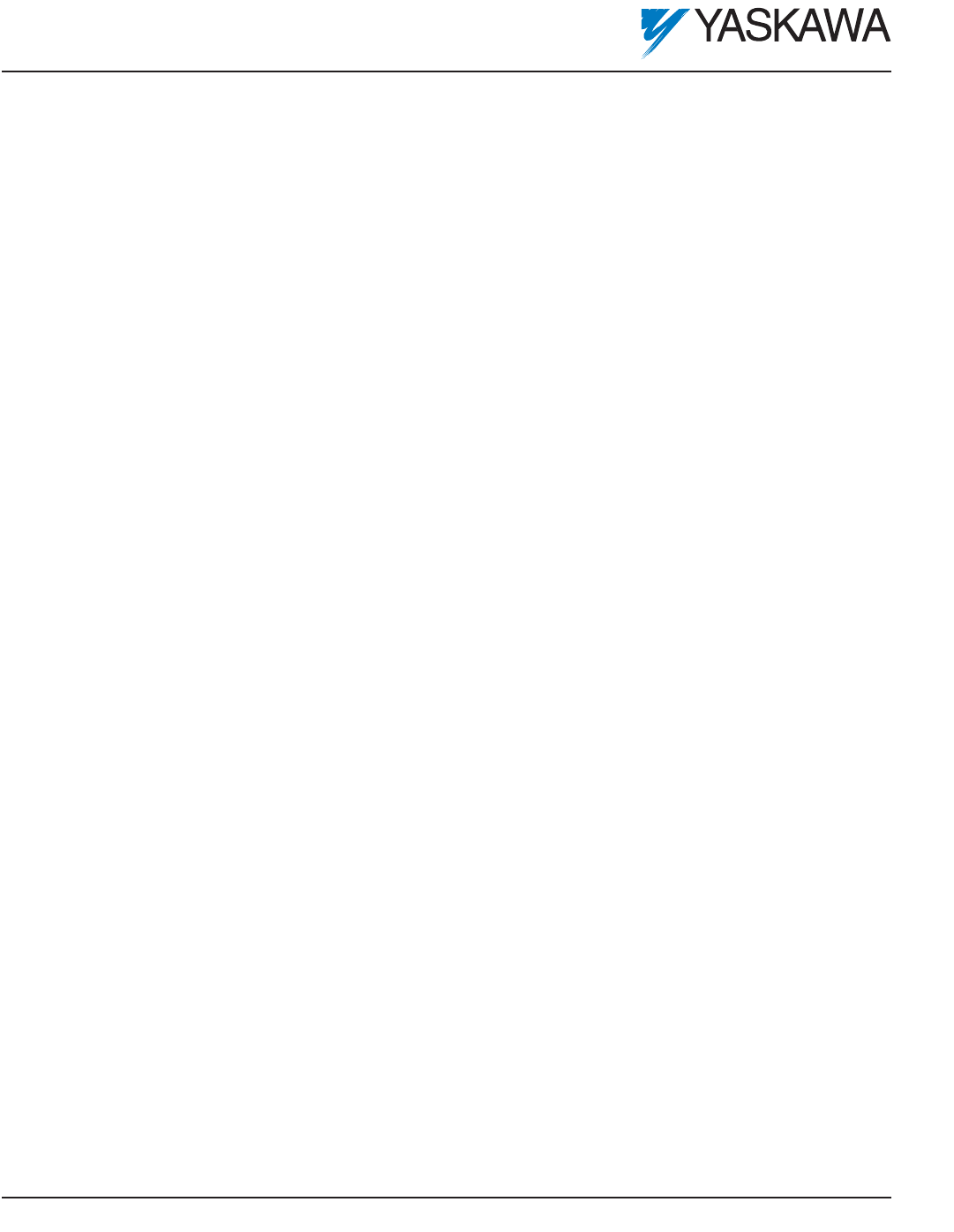
F7 Drive
YASKAWA ELECTRIC AMERICA, INC.
Drives Division
16555 W. Ryerson Rd., New Berlin, WI 53151, U.S.A.
Phone: (800) YASKAWA (800-927-5292) Fax: (847) 887-7310
Internet: http://www.yaskawa.com
YASKAWA ELECTRIC AMERICA, INC.
Chicago-Corporate Headquarters
2121 Norman Drive South, Waukegan, IL 60085, U.S.A.
Phone: (800) YASKAWA (800-927-5292) Fax: (847) 887-7310
Internet: http://www.yaskawa.com
MOTOMAN INC.
805 Liberty Lane, West Carrollton, OH 45449, U.S.A.
Phone: (937) 847-6200 Fax: (937) 847-6277
Internet: http://www.motoman.com
YASKAWA ELECTRIC CORPORATION
New Pier Takeshiba South Tower, 1-16-1, Kaigan, Minatoku, Tokyo, 105-0022, Japan
Phone: 81-3-5402-4511 Fax: 81-3-5402-4580
Internet: http://www.yaskawa.co.jp
YASKAWA ELETRICO DO BRASIL COMERCIO LTDA.
Avenida Fagundes Filho, 620 Bairro Saude Sao Paolo-SP, Brasil CEP: 04304-000
Phone: 55-11-5071-2552 Fax: 55-11-5581-8795
Internet: http://www.yaskawa.com.br
YASKAWA ELECTRIC EUROPE GmbH
Am Kronberger Hang 2, 65824 Schwalbach, Germany
Phone: 49-6196-569-300 Fax: 49-6196-888-301
MOTOMAN ROBOTICS AB
Box 504 S38525, Torsas, Sweden
Phone: 46-486-48800 Fax: 46-486-41410
MOTOMAN ROBOTEC GmbH
Kammerfeldstrabe 1, 85391 Allershausen, Germany
Phone: 49-8166-900 Fax: 49-8166-9039
YASKAWA ELECTRIC UK LTD.
1 Hunt Hill Orchardton Woods Cumbernauld, G68 9LF, Scotland, United Kingdom
Phone: 44-12-3673-5000 Fax: 44-12-3645-8182
YASKAWA ELECTRIC KOREA CORPORATION
Paik Nam Bldg. 901 188-3, 1-Ga Euljiro, Joong-Gu, Seoul, Korea
Phone: 82-2-776-7844 Fax: 82-2-753-2639
YASKAWA ELECTRIC (SINGAPORE) PTE. LTD.
Head Office: 151 Lorong Chuan, #04-01, New Tech Park Singapore 556741, Singapore
Phone: 65-282-3003 Fax: 65-289-3003
TAIPEI OFFICE (AND YATEC ENGINEERING CORPORATION)
10F 146 Sung Chiang Road, Taipei, Taiwan
Phone: 886-2-2563-0010 Fax: 886-2-2567-4677
YASKAWA JASON (HK) COMPANY LIMITED
Rm. 2909-10, Hong Kong Plaza, 186-191 Connaught Road West, Hong Kong
Phone: 852-2803-2385 Fax: 852-2547-5773
BEIJING OFFICE
Room No. 301 Office Building of Beijing International Club,
21 Jianguomanwai Avenue, Beijing 100020, China
Phone: 86-10-6532-1850 Fax: 86-10-6532-1851
SHANGHAI OFFICE
27 Hui He Road Shanghai 200437 China
Phone: 86-21-6553-6600 Fax: 86-21-6531-4242
SHANGHAI YASKAWA-TONJI M & E CO., LTD.
27 Hui He Road Shanghai 200437 China
Phone: 86-21-6533-2828 Fax: 86-21-6553-6677
BEIJING YASKAWA BEIKE AUTOMATION ENGINEERING CO., LTD.
30 Xue Yuan Road, Haidian, Beijing 100083 China
Phone: 86-10-6232-9943 Fax: 86-10-6234-5002
SHOUGANG MOTOMAN ROBOT CO., LTD.
7, Yongchang-North Street, Beijing Economic & Technological Development Area,
Beijing 100076 China
Phone: 86-10-6788-0551 Fax: 86-10-6788-2878
YEA, TAICHUNG OFFICE IN TAIWAIN
B1, 6F, No.51, Section 2, Kung-Yi Road, Taichung City, Taiwan, R.O.C.
Phone: 886-4-2320-2227 Fax:886-4-2320-2239
YEA Document Number: TM.F7.01 08/1/08 Rev: 08-08
Data subject to change without notice. Yaskawa Electric America, Inc.